2969 papers:
 DATE-2015-EgilmezMME #smarttech
DATE-2015-EgilmezMME #smarttech- User-specific skin temperature-aware DVFS for smartphones (BE, GM, SOM, OE), pp. 1217–1220.
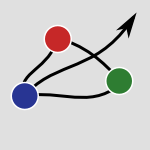 HT-2015-Baeza-YatesS #analysis #generative
HT-2015-Baeza-YatesS #analysis #generative- Wisdom of the Crowd or Wisdom of a Few?: An Analysis of Users’ Content Generation (RABY, DST), pp. 69–74.
 HT-2015-ChongDL #code review
HT-2015-ChongDL #code review- Did You Expect Your Users to Say This?: Distilling Unexpected Micro-reviews for Venue Owners (WHC, BTD, EPL), pp. 13–22.
 HT-2015-DimitrovSHS #design #user interface
HT-2015-DimitrovSHS #design #user interface- The Role of Structural Information for Designing Navigational User Interfaces (DD, PS, DH, MS), pp. 59–68.
 HT-2015-GutierrezP #microblog #sentiment
HT-2015-GutierrezP #microblog #sentiment- Sentiment-based User Profiles in Microblogging Platforms (FJG, BP), pp. 23–32.
 HT-2015-JainKJ #network #online #social
HT-2015-JainKJ #network #online #social- Other Times, Other Values: Leveraging Attribute History to Link User Profiles across Online Social Networks (PJ, PK, AJ), pp. 247–255.
 HT-2015-TorreC #adaptation #web
HT-2015-TorreC #adaptation #web- User-Adapted Web of Things for Accessibility (IT, IC), pp. 341–344.
 SIGMOD-2015-TerleckiXSKW #on the
SIGMOD-2015-TerleckiXSKW #on the- On Improving User Response Times in Tableau (PT, FX, MS, VK, RMGW), pp. 1695–1706.
 VLDB-2015-DiaoDLLPPP #automation #data analysis #interactive #named #navigation
VLDB-2015-DiaoDLLPPP #automation #data analysis #interactive #named #navigation- AIDE: An Automatic User Navigation System for Interactive Data Exploration (YD, KD, ZL, WL, OP, KP, LP), pp. 1964–1975.
 VLDB-2015-LiuDMM #named #realtime
VLDB-2015-LiuDMM #named #realtime- FLORIN — A System to Support (Near) Real-Time Applications on User Generated Content on Daily News (QL, ECD, AM, WM), pp. 1944–1955.
 VLDB-2015-QianGJ #adaptation #comparison #learning
VLDB-2015-QianGJ #adaptation #comparison #learning- Learning User Preferences By Adaptive Pairwise Comparison (LQ, JG, HVJ), pp. 1322–1333.
 ICPC-2015-BeckDVWP #feature model #user interface
ICPC-2015-BeckDVWP #feature model #user interface- Rethinking user interfaces for feature location (FB, BD, JVM, DW, DP), pp. 151–162.
 ICPC-2015-Roehm #comprehension #developer
ICPC-2015-Roehm #comprehension #developer- Two user perspectives in program comprehension: end users and developer users (TR), pp. 129–139.
 ICPC-2015-SohTAW #android #detection #user interface
ICPC-2015-SohTAW #android #detection #user interface- Detecting clones in Android applications through analyzing user interfaces (CS, HBKT, YLA, LW), pp. 163–173.
 ICSME-2015-DorningerPK #industrial #static analysis #user interface #using
ICSME-2015-DorningerPK #industrial #static analysis #user interface #using- Using static analysis for knowledge extraction from industrial User Interfaces (BD, JP, AK), pp. 497–500.
 ICSME-2015-PalombaVBOPPL #crowdsourcing #evolution #exclamation #matter
ICSME-2015-PalombaVBOPPL #crowdsourcing #evolution #exclamation #matter- User reviews matter! Tracking crowdsourced reviews to support evolution of successful apps (FP, MLV, GB, RO, MDP, DP, ADL), pp. 291–300.
 ICSME-2015-PanichellaSGVCG #evolution #how #maintenance
ICSME-2015-PanichellaSGVCG #evolution #how #maintenance- How can i improve my app? Classifying user reviews for software maintenance and evolution (SP, ADS, EG, CAV, GC, HCG), pp. 281–290.
 MSR-2015-BurletH #community #empirical #music
MSR-2015-BurletH #community #empirical #music- An Empirical Study of End-User Programmers in the Computer Music Community (GB, AH), pp. 292–302.
 MSR-2015-Marder #approach #behaviour #stack overflow
MSR-2015-Marder #approach #behaviour #stack overflow- Stack Overflow Badges and User Behavior: An Econometric Approach (AM), pp. 450–453.
 MSR-2015-SlagWB #stack overflow #why
MSR-2015-SlagWB #stack overflow #why- One-Day Flies on StackOverflow — Why the Vast Majority of StackOverflow Users Only Posts Once (RS, MdW, AB), pp. 458–461.
 SANER-2015-RoehmNB #automation #interactive
SANER-2015-RoehmNB #automation #interactive- Automated extraction of failure reproduction steps from user interaction traces (TR, SN, BB), pp. 121–130.
 CHI-2015-Al-AmeenWS #multi #random #towards
CHI-2015-Al-AmeenWS #multi #random #towards- Towards Making Random Passwords Memorable: Leveraging Users’ Cognitive Ability Through Multiple Cues (MNAA, MKW, SS), pp. 2315–2324.
 CHI-2015-BoyDF #question #visualisation
CHI-2015-BoyDF #question #visualisation- Storytelling in Information Visualizations: Does it Engage Users to Explore Data? (JB, FD, JDF), pp. 1449–1458.
 CHI-2015-ChangLKS #behaviour #comprehension #gesture #mobile #scalability
CHI-2015-ChangLKS #behaviour #comprehension #gesture #mobile #scalability- Understanding Users’ Touch Behavior on Large Mobile Touch-Screens and Assisted Targeting by Tilting Gesture (YC, SL, KK, JS), pp. 1499–1508.
 CHI-2015-ChilanaKW #case study #design #human-computer #research
CHI-2015-ChilanaKW #case study #design #human-computer #research- From User-Centered to Adoption-Centered Design: A Case Study of an HCI Research Innovation Becoming a Product (PKC, AJK, JOW), pp. 1749–1758.
 CHI-2015-ClarkSMK #comprehension #image #privacy #quote
CHI-2015-ClarkSMK #comprehension #image #privacy #quote- “I Saw Images I Didn’t Even Know I Had”: Understanding User Perceptions of Cloud Storage Privacy (JWC, PS, DM, CK), pp. 1641–1644.
 CHI-2015-DeberJFW #how #latency #performance
CHI-2015-DeberJFW #how #latency #performance- How Much Faster is Fast Enough?: User Perception of Latency & Latency Improvements in Direct and Indirect Touch (JD, RJ, CF, DW), pp. 1827–1836.
 CHI-2015-FaircloughKG #classification #interactive #realtime
CHI-2015-FaircloughKG #classification #interactive #realtime- Classification Accuracy from the Perspective of the User: Real-Time Interaction with Physiological Computing (SHF, AJK, KMG), pp. 3029–3038.
 CHI-2015-GunaratneN #behaviour #performance #user interface #using
CHI-2015-GunaratneN #behaviour #performance #user interface #using- Informing and Improving Retirement Saving Performance using Behavioral Economics Theory-driven User Interfaces (JG, ON), pp. 917–920.
 CHI-2015-HanrahanP #email #interactive
CHI-2015-HanrahanP #email #interactive- Lost in Email: Pulling Users Down a Path of Interaction (BVH, MAPQ), pp. 3981–3984.
 CHI-2015-HolzBK #identification #mobile #named #using
CHI-2015-HolzBK #identification #mobile #named #using- Bodyprint: Biometric User Identification on Mobile Devices Using the Capacitive Touchscreen to Scan Body Parts (CH, SB, MK), pp. 3011–3014.
 CHI-2015-HuangSHH #analysis #how
CHI-2015-HuangSHH #analysis #how- How Activists Are Both Born and Made: An Analysis of Users on Change.org (SWH, M(S, BMH, GH), pp. 211–220.
 CHI-2015-HuberLP #detection
CHI-2015-HuberLP #detection- Detecting User Intention at Public Displays from Foot Positions (BH, JHL, JHP), pp. 3899–3902.
 CHI-2015-IonWB #physics
CHI-2015-IonWB #physics- Skin Drag Displays: Dragging a Physical Tactor across the User’s Skin Produces a Stronger Tactile Stimulus than Vibrotactile (AI, EJW, PB), pp. 2501–2504.
 CHI-2015-KulshreshthL #3d #experience #game studies #user interface
CHI-2015-KulshreshthL #3d #experience #game studies #user interface- Exploring 3D User Interface Technologies for Improving the Gaming Experience (AK, JJLJ), pp. 125–134.
 CHI-2015-LaseckiKRSBB #crowdsourcing #named #sketching #user interface
CHI-2015-LaseckiKRSBB #crowdsourcing #named #sketching #user interface- Apparition: Crowdsourced User Interfaces that Come to Life as You Sketch Them (WSL, JK, NR, OS, JPB, MSB), pp. 1925–1934.
 CHI-2015-MaluF #artificial reality #personalisation #smarttech
CHI-2015-MaluF #artificial reality #personalisation #smarttech- Personalized, Wearable Control of a Head-mounted Display for Users with Upper Body Motor Impairments (MM, LF), pp. 221–230.
 CHI-2015-MariakakisGAPW #mobile #named #using
CHI-2015-MariakakisGAPW #mobile #named #using- SwitchBack: Using Focus and Saccade Tracking to Guide Users’ Attention for Mobile Task Resumption (AM, MG, MTIA, SNP, JOW), pp. 2953–2962.
 CHI-2015-NebelingGSN #multi #named
CHI-2015-NebelingGSN #multi #named- MUBox: Multi-User Aware Personal Cloud Storage (MN, MG, OS, MCN), pp. 1855–1864.
 CHI-2015-OttleyYC #how #predict #visualisation
CHI-2015-OttleyYC #how #predict #visualisation- Personality as a Predictor of User Strategy: How Locus of Control Affects Search Strategies on Tree Visualizations (AO, HY, RC), pp. 3251–3254.
 CHI-2015-ParkOSJC #behaviour #image #scalability #web
CHI-2015-ParkOSJC #behaviour #image #scalability #web- A Large-Scale Study of User Image Search Behavior on the Web (JYP, NO, RS, AJ, CWC), pp. 985–994.
 CHI-2015-RaderG #algorithm #comprehension #facebook
CHI-2015-RaderG #algorithm #comprehension #facebook- Understanding User Beliefs About Algorithmic Curation in the Facebook News Feed (ER, RG), pp. 173–182.
 CHI-2015-RadleJSLRR #elicitation #evaluation #interactive
CHI-2015-RadleJSLRR #elicitation #evaluation #interactive- Spatially-aware or Spatially-agnostic?: Elicitation and Evaluation of User-Defined Cross-Device Interactions (RR, HCJ, MS, ZL, HR, YR), pp. 3913–3922.
 CHI-2015-RedaJPL #behaviour #visual notation
CHI-2015-RedaJPL #behaviour #visual notation- Effects of Display Size and Resolution on User Behavior and Insight Acquisition in Visual Exploration (KR, AEJ, MEP, JL), pp. 2759–2768.
 CHI-2015-ReyalZK #experience #gesture #performance #user interface
CHI-2015-ReyalZK #experience #gesture #performance #user interface- Performance and User Experience of Touchscreen and Gesture Keyboards in a Lab Setting and in the Wild (SR, SZ, POK), pp. 679–688.
 CHI-2015-SchwarzMH #architecture #feedback #generative #interactive #probability #user interface
CHI-2015-SchwarzMH #architecture #feedback #generative #interactive #probability #user interface- An Architecture for Generating Interactive Feedback in Probabilistic User Interfaces (JS, JM, SEH), pp. 2545–2554.
 CHI-2015-SlegersRVD #elicitation #game studies #research #user interface #using
CHI-2015-SlegersRVD #elicitation #game studies #research #user interface #using- Using Game Principles in UX Research: A Board Game for Eliciting Future User Needs (KS, SR, JV, PD), pp. 1225–1228.
 CHI-2015-TetterooVGMKVM #development #framework #lessons learnt #physics
CHI-2015-TetterooVGMKVM #development #framework #lessons learnt #physics- Lessons Learnt from Deploying an End-User Development Platform for Physical Rehabilitation (DT, PV, IG, MM, EK, DV, PM), pp. 4133–4142.
 CHI-2015-TungHWCLWVC #game studies
CHI-2015-TungHWCLWVC #game studies- User-Defined Game Input for Smart Glasses in Public Space (YCT, CYH, HYW, SC, JWL, PJW, AV, MYC), pp. 3327–3336.
 CHI-2015-VissersG #case study #experience #functional #named #physics #prototype #user interface
CHI-2015-VissersG #case study #experience #functional #named #physics #prototype #user interface- TUIkit: Evaluating Physical and Functional Experiences of Tangible User Interface Prototypes (JV, DG), pp. 1267–1276.
 CHI-2015-ZhangTHM #empirical #ontology
CHI-2015-ZhangTHM #empirical #ontology- Helping Users Bootstrap Ontologies: An Empirical Investigation (YZ, TT, MH, MAM), pp. 3395–3398.
 CHI-2015-ZhongLBB #image #named
CHI-2015-ZhongLBB #image #named- RegionSpeak: Quick Comprehensive Spatial Descriptions of Complex Images for Blind Users (YZ, WSL, ELB, JPB), pp. 2353–2362.
 CSCW-2015-BraggRL #taxonomy
CSCW-2015-BraggRL #taxonomy- A User-Powered American Sign Language Dictionary (DB, KR, REL), pp. 1837–1848.
 CSCW-2015-ChangHT #recommendation #using
CSCW-2015-ChangHT #recommendation #using- Using Groups of Items to Bootstrap New Users in Recommender Systems (SC, FMH, LGT), pp. 1258–1269.
 CSCW-2015-CiampagliaT #lightweight #named #wiki
CSCW-2015-CiampagliaT #lightweight #named #wiki- MoodBar: Increasing New User Retention in Wikipedia through Lightweight Socialization (GLC, DT), pp. 734–742.
 CSCW-2015-MillerCT #exclamation #experience #quote #user interface
CSCW-2015-MillerCT #exclamation #experience #quote #user interface- “I LOVE THIS SITE!” vs. “It’s a little girly”: Perceptions of and Initial User Experience with Pinterest (HJM, SC, LGT), pp. 1728–1740.
 CSCW-2015-VenerandiQCQS
CSCW-2015-VenerandiQCQS- Measuring Urban Deprivation from User Generated Content (AV, GQ, LC, DQ, DST), pp. 254–264.
 CSCW-2015-WisniewskiIKP #network #privacy #social
CSCW-2015-WisniewskiIKP #network #privacy #social- Give Social Network Users the Privacy They Want (PJW, AKMNI, BPK, SP), pp. 1427–1441.
 DHM-EH-2015-LiuCKQF #data analysis #power management
DHM-EH-2015-LiuCKQF #data analysis #power management- Balancing Power Consumption and Data Analysis Accuracy Through Adjusting Sampling Rates: Seeking for the Optimal Configuration of Inertial Sensors for Power Wheelchair Users (TL, CC, MK, GQ, JF), pp. 184–192.
 DHM-HM-2015-KlugeKZ #energy #risk management
DHM-HM-2015-KlugeKZ #energy #risk management- Inside the User’s Mind — Perception of Risks and Benefits of Unknown Technologies, Exemplified by Geothermal Energy (JK, SK, MZ), pp. 324–334.
 DUXU-DD-2015-AsthanaS #modelling #named #testing #usability #using #xml
DUXU-DD-2015-AsthanaS #modelling #named #testing #usability #using #xml- Maareech: Usability Testing Tool for Voice Response System Using XML Based User Models (SA, PS), pp. 101–112.
 DUXU-DD-2015-GalaboN #design pattern #experience #human-computer #user interface
DUXU-DD-2015-GalaboN #design pattern #experience #human-computer #user interface- A Posture HCI Design Pattern for Television Commerce Based on User Experience (RJG, CdSSN), pp. 191–203.
 DUXU-DD-2015-HeidtKPR #community #human-computer
DUXU-DD-2015-HeidtKPR #community #human-computer- HCI and the Community of Non-users (MH, KK, LP, PR), pp. 44–52.
 DUXU-DD-2015-JacksonAFGM #case study #streaming
DUXU-DD-2015-JacksonAFGM #case study #streaming- A User Study of Netflix Streaming (FJ, RA, YF, JEG, JM), pp. 481–489.
 DUXU-DD-2015-KremerL #design #experience #learning #research #user interface
DUXU-DD-2015-KremerL #design #experience #learning #research #user interface- Learning from Experience Oriented Disciplines for User Experience Design — A Research Agenda (SK, UL), pp. 306–314.
 DUXU-DD-2015-MedeirosTF #design #gesture #how #question #user interface
DUXU-DD-2015-MedeirosTF #design #gesture #how #question #user interface- How to Design an User Interface Based on Gestures? (ACSM, TAT, IEdF), pp. 63–74.
 DUXU-DD-2015-PaelkeR #challenge #cyber-physical #user interface
DUXU-DD-2015-PaelkeR #challenge #cyber-physical #user interface- User Interfaces for Cyber-Physical Systems: Challenges and Possible Approaches (VP, CR), pp. 75–85.
 DUXU-DD-2015-RenziCAG #experience #user interface
DUXU-DD-2015-RenziCAG #experience #user interface- Startup Rio: User Experience and Startups (ABR, AC, LA, JG), pp. 339–347.
 DUXU-DD-2015-RusuRRAR #challenge #experience #user interface
DUXU-DD-2015-RusuRRAR #challenge #experience #user interface- User Experience Evaluations: Challenges for Newcomers (CR, VR, SR, JA, VZR), pp. 237–246.
 DUXU-DD-2015-WuLLL #design #experience #interface #morphism #navigation
DUXU-DD-2015-WuLLL #design #experience #interface #morphism #navigation- Skeuomorphism and Flat Design: Evaluating Users’ Emotion Experience in Car Navigation Interface Design (LW, TL, JL, BL), pp. 567–575.
 DUXU-DD-2015-Zhang #design #research #semantics
DUXU-DD-2015-Zhang #design #research #semantics- Research on the Correspondence Between Designer End Expressions of Product Semantics with the Cognition of User End (LZ), pp. 379–391.
 DUXU-IXD-2015-CaiLLH #case study #experience #research #speech #user interface
DUXU-IXD-2015-CaiLLH #case study #experience #research #speech #user interface- User Experience Research on the Rehabilitation System of Speech-Impaired Children — A Case Study on Speech Training Product (WC, JL, QL, TH), pp. 562–574.
 DUXU-IXD-2015-Celi #experience #learning #modelling #risk management #user interface
DUXU-IXD-2015-Celi #experience #learning #modelling #risk management #user interface- Application of Dashboards and Scorecards for Learning Models IT Risk Management: A User Experience (EC), pp. 153–165.
 DUXU-IXD-2015-Gasparini #approach #experience #interactive #library #user interface
DUXU-IXD-2015-Gasparini #approach #experience #interactive #library #user interface- A Holistic Approach to User Experience in the Context of an Academic Library Interactive System (AAG), pp. 173–184.
 DUXU-IXD-2015-GkouskosPKC #experience #user interface
DUXU-IXD-2015-GkouskosPKC #experience #user interface- Exploring User Experience in the Wild: Facets of the Modern Car (DG, IP, MK, FC), pp. 450–461.
 DUXU-IXD-2015-GuYWD #behaviour #design #interactive #network #social #visualisation
DUXU-IXD-2015-GuYWD #behaviour #design #interactive #network #social #visualisation- Visualizing Group User Behaviors for Social Network Interaction Design Iteration (ZG, JMY, ZW, ZD), pp. 36–45.
 DUXU-IXD-2015-KarbayR #case study
DUXU-IXD-2015-KarbayR #case study- The Turkish Central Doctor Rendezvous System Under Spotlight: A User Study with Turkish Senior Users (EBK, KR), pp. 628–637.
 DUXU-IXD-2015-LageiroLD #evaluation
DUXU-IXD-2015-LageiroLD #evaluation- Evaluation of Users Acceptance of a Digital Medicine Fact Sheet: Findings from a Focus Group (AL, CL, ED), pp. 638–647.
 DUXU-IXD-2015-LapasO #evaluation #experience #game studies #interactive #user interface
DUXU-IXD-2015-LapasO #evaluation #experience #game studies #interactive #user interface- Evaluation of User Experience in Interaction with Computer Games (TL, TO), pp. 271–282.
 DUXU-IXD-2015-LinC15a #what
DUXU-IXD-2015-LinC15a #what- What Travelers Want: An Investigation into User Needs and User Wants on Display (TSL, CNC), pp. 496–504.
 DUXU-IXD-2015-PoonLLLZCY #novel #smarttech
DUXU-IXD-2015-PoonLLLZCY #novel #smarttech- A Novel User-Specific Wearable Controller for Surgical Robots (CCYP, EYYL, KCL, BHKL, YZ, PWYC, YY), pp. 693–701.
 DUXU-IXD-2015-Posetti #comprehension #design #experience #user interface
DUXU-IXD-2015-Posetti #comprehension #design #experience #user interface- Clicking Through Endless Seas: Understanding User Experience in the Design of Journalistic Websites (BP), pp. 82–93.
 DUXU-IXD-2015-TorokPLTVCM #adaptation #game studies #interactive
DUXU-IXD-2015-TorokPLTVCM #adaptation #game studies #interactive- Evaluating and Customizing User Interaction in an Adaptive Game Controller (LT, MP, JL, DGT, CNV, EC, AAM), pp. 315–326.
 DUXU-IXD-2015-WalterKWAB #adaptation #question #recommendation #what
DUXU-IXD-2015-WalterKWAB #adaptation #question #recommendation #what- What Are the Expectations of Users of an Adaptive Recommendation Service Which Aims to Reduce Driver Distraction? (NW, BK, CW, TA, KB), pp. 517–528.
 DUXU-IXD-2015-WangWG #comparison #speech
DUXU-IXD-2015-WangWG #comparison #speech- Cross Cultural Comparison of Users’ Barge-in with the In-Vehicle Speech System (PW, UW, TJG), pp. 529–540.
 DUXU-UI-2015-Bahr #mobile #prototype #requirements #tool support #towards #user interface
DUXU-UI-2015-Bahr #mobile #prototype #requirements #tool support #towards #user interface- Towards a Requirements Catalogue for Prototyping Tools of Mobile User Interfaces (BB), pp. 495–507.
 DUXU-UI-2015-BeltranUPSSSPCA #design #game studies #learning
DUXU-UI-2015-BeltranUPSSSPCA #design #game studies #learning- Inclusive Gaming Creation by Design in Formal Learning Environments: “Girly-Girls” User Group in No One Left Behind (MEB, YU, AP, CS, WS, BS, SdlRP, MFCU, MTA), pp. 153–161.
 DUXU-UI-2015-ChngC #3d #case study #interactive #multi
DUXU-UI-2015-ChngC #3d #case study #interactive #multi- User Study on 3D Multitouch Interaction (3DMi) and Gaze on Surface Computing (EC, NC), pp. 425–433.
 DUXU-UI-2015-Crosby #user interface
DUXU-UI-2015-Crosby #user interface- Experiencing Early User Interfaces (MEC), pp. 184–195.
 DUXU-UI-2015-EshetB #design #development #mobile
DUXU-UI-2015-EshetB #design #development #mobile- Approaching Users and Context of Use in the Design and Development of Mobile Systems (EE, HB), pp. 508–519.
 DUXU-UI-2015-Gatsou #interactive #mobile
DUXU-UI-2015-Gatsou #interactive #mobile- The Importance of Metaphors for User Interaction with Mobile Devices (CG), pp. 520–529.
 DUXU-UI-2015-KaltenthalerLKM #data transformation #integration #user interface #visual notation
DUXU-UI-2015-KaltenthalerLKM #data transformation #integration #user interface #visual notation- Synchronized Data Management and Its Integration into a Graphical User Interface for Archaeological Related Disciplines (DK, JYL, PK, CHvdM, HO), pp. 317–329.
 DUXU-UI-2015-KangK #documentation #experience #framework #in the cloud #smarttech #user interface
DUXU-UI-2015-KangK #documentation #experience #framework #in the cloud #smarttech #user interface- Elements of Properties of User Experience in Cloud Computing Documentation Platform According to Smart Device Screen Size Changes: Focus on Google Docs and Naver Office (MKK, SWK), pp. 551–562.
 DUXU-UI-2015-KronbauerMS #analysis #evaluation #experience #interactive #mobile #user interface
DUXU-UI-2015-KronbauerMS #analysis #evaluation #experience #interactive #mobile #user interface- Capture and Analysis of Interaction Data for the Evaluation of User Experience with Mobile Devices (AHK, DM, CASS), pp. 54–65.
 DUXU-UI-2015-LeeKK #analysis #case study #experience #user interface
DUXU-UI-2015-LeeKK #analysis #case study #experience #user interface- A Study Customer Journey Map for User Experience Analysis of Information and Communications Technology Service (JHL, MJK, SWK), pp. 66–74.
 DUXU-UI-2015-LiHF #quality #requirements #scalability #user interface #using
DUXU-UI-2015-LiHF #quality #requirements #scalability #user interface #using- Scaling Preferences of Different Stakeholders — Using the Example of Prioritizing Quality Requirements on User Interface Texts (YL, TH, PF), pp. 75–86.
 DUXU-UI-2015-MaginMH #experience #user interface
DUXU-UI-2015-MaginMH #experience #user interface- Measuring Negative User Experience (DPM, AM, SH), pp. 95–106.
 DUXU-UI-2015-MarcusB #analysis #design
DUXU-UI-2015-MarcusB #analysis #design- Chinese User-Experience Design: An Initial Analysis (AM, SB), pp. 107–117.
 DUXU-UI-2015-Passera #contract #design #how
DUXU-UI-2015-Passera #contract #design #how- Beyond the Wall of Text: How Information Design Can Make Contracts User-Friendly (SP), pp. 341–352.
 DUXU-UI-2015-SahitoCHHS #tablet
DUXU-UI-2015-SahitoCHHS #tablet- Significance of Line Length for Tablet PC Users (WAS, HIC, ZH, SRH, FS), pp. 587–596.
 DUXU-UI-2015-SheikhA #women
DUXU-UI-2015-SheikhA #women- The Invisible User: Women in DUXU (JAS, AA), pp. 243–251.
 DUXU-UI-2015-WollnerLC #design #framework #modelling #process #user interface
DUXU-UI-2015-WollnerLC #design #framework #modelling #process #user interface- Integrating a Cognitive Modelling Framework into the Design Process of Touchscreen User Interfaces (PKAW, PML, PJC), pp. 473–484.
 HCI-DE-2015-BakkeB #developer #learning #proximity
HCI-DE-2015-BakkeB #developer #learning #proximity- The Closer the Better: Effects of Developer-User Proximity for Mutual Learning (SB, TB), pp. 14–26.
 HCI-DE-2015-BorzaM #assurance #design #process #usability
HCI-DE-2015-BorzaM #assurance #design #process #usability- Incorporating Marketing Strategies to Improve Usability Assurance in User-Centered Design Processes (ICB, JAM), pp. 152–162.
 HCI-DE-2015-ChamunZMOS #approach #design #documentation #what
HCI-DE-2015-ChamunZMOS #approach #design #documentation #what- What About Document Folding? User Impressions and a Design Approach (RC, AdCAZ, IHM, JBSdO, MSS), pp. 307–319.
 HCI-DE-2015-CrawfordAJRG #evaluation #experience #interactive #towards #user interface
HCI-DE-2015-CrawfordAJRG #evaluation #experience #interactive #towards #user interface- User Experience Evaluation Towards Cooperative Brain-Robot Interaction (CSC, MA, FJ, SR, JEG), pp. 184–193.
 HCI-DE-2015-GhoshP #approach #design #mobile
HCI-DE-2015-GhoshP #approach #design #mobile- Designing of a Natural Voice Assistants for Mobile Through User Centered Design Approach (SG, JP), pp. 320–331.
 HCI-DE-2015-JensenRB #collaboration #design #interactive
HCI-DE-2015-JensenRB #collaboration #design #interactive- An Interaction Design Method to Support the Expression of User Intentions in Collaborative Systems (CJJ, JCdR, RB), pp. 214–226.
 HCI-DE-2015-KobayashiTAF #email
HCI-DE-2015-KobayashiTAF #email- E-Mail Delivery Mediation System Based on User Interruptibility (YK, TT, KA, KF), pp. 370–380.
 HCI-DE-2015-Moallem #question #user interface
HCI-DE-2015-Moallem #question #user interface- Concrete or Abstract User Interface? (AM), pp. 390–395.
 HCI-DE-2015-StopkaPF #concept #requirements
HCI-DE-2015-StopkaPF #concept #requirements- User Requirements for Intermodal Mobility Applications and Acceptance of Operating Concepts (US, RP, KF), pp. 415–425.
 HCI-DE-2015-WatabeM #regular expression #user interface #visual notation
HCI-DE-2015-WatabeM #regular expression #user interface #visual notation- Graphical User Interface for Search of Mathematical Expressions with Regular Expressions (TW, YM), pp. 438–447.
 HCI-IT-2015-BakaevA #complexity #human-computer #optimisation #user interface
HCI-IT-2015-BakaevA #complexity #human-computer #optimisation #user interface- Defining and Optimizing User Interfaces Information Complexity for AI Methods Application in HCI (MB, TA), pp. 397–405.
 HCI-IT-2015-DibitontoM #automation #performance
HCI-IT-2015-DibitontoM #automation #performance- Improving User Performance in a Smart Surveillance Scenario through Different Levels of Automation (MD, CMM), pp. 706–716.
 HCI-IT-2015-EskerudSOH #approach #automation #design #interface
HCI-IT-2015-EskerudSOH #approach #automation #design #interface- Controlling the Home — A User Participatory Approach to Designing a Simple Interface for a Complex Home Automation System (ME, AS, CSO, HH), pp. 717–728.
 HCI-IT-2015-FukumotoTE #detection #using
HCI-IT-2015-FukumotoTE #detection #using- Improvement of Accuracy in Remote Gaze Detection for User Wearing Eyeglasses Using Relative Position Between Centers of Pupil and Corneal Sphere (KF, TT, YE), pp. 13–23.
 HCI-IT-2015-GobenaAGE #design #user interface
HCI-IT-2015-GobenaAGE #design #user interface- Delegation Theory in the Design of Cross-Platform User Interfaces (DLG, GNPA, AJPG, DE), pp. 519–530.
 HCI-IT-2015-HolsteinWWL #challenge #user interface
HCI-IT-2015-HolsteinWWL #challenge #user interface- Current Challenges in Compositing Heterogeneous User Interfaces for Automotive Purposes (TH, MW, JW, RL), pp. 531–542.
 HCI-IT-2015-HuhJIKKP #case study #comparison #interactive
HCI-IT-2015-HuhJIKKP #case study #comparison #interactive- Preliminary Study to Determine a “User-Friendly” Bending Method: Comparison Between Bending and Touch Interaction (BH, HJ, SI, HSK, GK, JP), pp. 175–183.
 HCI-IT-2015-JeongS #case study #how #smarttech #user interface #what
HCI-IT-2015-JeongS #case study #how #smarttech #user interface #what- It’s not What It Speaks, but It’s How It Speaks: A Study into Smartphone Voice-User Interfaces (VUI) (JJ, DHS), pp. 284–291.
 HCI-IT-2015-KromkerW #elicitation
HCI-IT-2015-KromkerW #elicitation- Context Elicitation for User-Centered Context-Aware Systems in Public Transport (HK, TW), pp. 429–439.
 HCI-IT-2015-MeleMR #communication #predict #type system #user interface
HCI-IT-2015-MeleMR #communication #predict #type system #user interface- Beyond Direct Gaze Typing: A Predictive Graphic User Interface for Writing and Communicating by Gaze (MLM, DM, CER), pp. 66–77.
 HCI-IT-2015-MezhoudiKV #towards #user interface
HCI-IT-2015-MezhoudiKV #towards #user interface- Toward Usable Intelligent User Interface (NM, IK, JV), pp. 459–471.
 HCI-IT-2015-PenalverNB #framework #migration #user interface #web
HCI-IT-2015-PenalverNB #framework #migration #user interface #web- A Framework for Distributing and Migrating the User Interface in Web Apps (AP, DN, FB), pp. 543–553.
 HCI-IT-2015-RemJ #design #user interface
HCI-IT-2015-RemJ #design #user interface- Implications for Design of Personal Mobility Devices with Balance-Based Natural User Interfaces (AR, SGJ), pp. 363–375.
 HCI-IT-2015-TakedaBSO #behaviour #coordination #named
HCI-IT-2015-TakedaBSO #behaviour #coordination #named- COLUMN: Discovering the User Invented Behaviors Through the Interpersonal Coordination (YT, SB, PRSDS, MO), pp. 787–796.
 HCI-IT-2015-Yigitbas0E #adaptation #framework #modelling #multi #user interface
HCI-IT-2015-Yigitbas0E #adaptation #framework #modelling #multi #user interface- A Model-Based Framework for Multi-Adaptive Migratory User Interfaces (EY, SS, GE), pp. 563–572.
 HCI-UC-2015-AzhariF #approach #experience #social #social media #user interface #using
HCI-UC-2015-AzhariF #approach #experience #social #social media #user interface #using- Using a Lexical Approach to Investigate User Experience of Social Media Applications (AA, XF), pp. 15–24.
 HCI-UC-2015-BorsciFMC #assessment #testing #usability
HCI-UC-2015-BorsciFMC #assessment #testing #usability- Short Scales of Satisfaction Assessment: A Proxy to Involve Disabled Users in the Usability Testing of Websites (SB, SF, MLM, MC), pp. 35–42.
 HCI-UC-2015-ChagasMFC #case study #challenge #community #experience #human-computer #optimisation #user interface
HCI-UC-2015-ChagasMFC #case study #challenge #community #experience #human-computer #optimisation #user interface- Prospecting HCI Challenges for Extreme Poverty Communities: Redefining and Optimizing User Experiences with Technology (DAC, CLBM, EF, CRMdC), pp. 281–290.
 HCI-UC-2015-Wittenberg #automation #industrial #question #requirements #user interface
HCI-UC-2015-Wittenberg #automation #industrial #question #requirements #user interface- Cause the Trend Industry 4.0 in the Automated Industry to New Requirements on User Interfaces? (CW), pp. 238–245.
 HIMI-IKC-2015-AhangamaP15a #empirical #what
HIMI-IKC-2015-AhangamaP15a #empirical #what- What Methodological Attributes Are Essential for Novice Users to Analytics? — An Empirical Study (SA, DCCP), pp. 77–88.
 HIMI-IKC-2015-BotegaFOOBNA #user interface
HIMI-IKC-2015-BotegaFOOBNA #user interface- SAW-Oriented User Interfaces for Emergency Dispatch Systems (LCB, LCF, NPO, AO, CBB, VPdAN, RBdA), pp. 537–548.
 HIMI-IKC-2015-ChangH15b
HIMI-IKC-2015-ChangH15b- Next Step of Cultural and Creative Products — Embracing Users Creativity (CLC, MHH), pp. 409–419.
 HIMI-IKC-2015-VerstocktSB #recommendation
HIMI-IKC-2015-VerstocktSB #recommendation- Map-Based Linking of Geographic User and Content Profiles for Hyperlocal Content Recommendation (SV, VS, KB), pp. 53–63.
 HIMI-IKC-2015-VorvoreanuMDM #comprehension #research
HIMI-IKC-2015-VorvoreanuMDM #comprehension #research- Dealing with Data Deluge at National Funding Agencies: An Investigation of User Needs for Understanding and Managing Research Investments (MV, AFM, ZD, KPCM), pp. 140–151.
 HIMI-IKD-2015-FischerOFIW #framework #interface #multi #named #prototype #testing
HIMI-IKD-2015-FischerOFIW #framework #interface #multi #named #prototype #testing- URU: A Platform for Prototyping and Testing Compatibility of Multifunction Interfaces with User Knowledge Schemata (SF, BO, MF, MI, EW), pp. 151–160.
 HIMI-IKD-2015-GonzalezCB #approach #design #modelling #sentiment
HIMI-IKD-2015-GonzalezCB #approach #design #modelling #sentiment- Modeling User’s Sentiment in User Segmentations: An Argumentation Approach for User Centered Design (MPG, CIC, RFB), pp. 595–606.
 HIMI-IKD-2015-MacielPS #interactive #internet #legacy
HIMI-IKD-2015-MacielPS #interactive #internet #legacy- Internet Users’ Legal and Technical Perspectives on Digital Legacy Management for Post-mortem Interaction (CM, VCP, MS), pp. 627–639.
 HIMI-IKD-2015-YamajiT #recognition
HIMI-IKD-2015-YamajiT #recognition- Recognition of Written Cues System for Users of General Paper Media (DY, JT), pp. 466–476.
 HIMI-IKD-2015-ZhangNZC #how #library #mobile
HIMI-IKD-2015-ZhangNZC #how #library #mobile- Search in One’s Hand: How Users Search a Mobile Library Catalog (TZ, XN, LZ, HlC), pp. 247–257.
 LCT-2015-DirinN #design #development #framework
LCT-2015-DirinN #design #development #framework- Assessments of User Centered Design Framework for M-learning Application Development (AD, MN), pp. 62–74.
 LCT-2015-FonsecaRVG #3d #education #learning
LCT-2015-FonsecaRVG #3d #education #learning- From Formal to Informal 3D Learning. Assesment of Users in the Education (DF, ER, FV, ODG), pp. 460–469.
 LCT-2015-KlemkeKLS #education #game studies #learning #mobile #multi
LCT-2015-KlemkeKLS #education #game studies #learning #mobile #multi- Transferring an Educational Board Game to a Multi-user Mobile Learning Game to Increase Shared Situational Awareness (RK, SK, HL, MS), pp. 583–594.
 LCT-2015-LaugassonM #usability #user interface
LCT-2015-LaugassonM #usability #user interface- Free Software User Interfaces: Usability and Aesthetics (EL, MM), pp. 676–686.
 LCT-2015-RobinMM #education
LCT-2015-RobinMM #education- Users and Technologies in Education: A Pending Course (CFR, SM, DYM), pp. 668–675.
 LCT-2015-SheenL #future of #perspective
LCT-2015-SheenL #future of #perspective- The Future of Electronic Textbooks from a User Perspective (KAS, YL), pp. 704–713.
 SCSM-2015-BeldadK #facebook #risk management
SCSM-2015-BeldadK #facebook #risk management- It’s Not About the Risks, I’m just Used to Doing It: Disclosure of Personal Information on Facebook Among Adolescent Dutch Users (ADB, RK), pp. 185–195.
 SCSM-2015-ChungM #data transfer #interactive
SCSM-2015-ChungM #data transfer #interactive- Interaction Study of Shuriken: User Grouping and Data Transfer Based on Inter-device Relative Positioning (JC, AM), pp. 196–206.
 SCSM-2015-HongK #interactive #online #social #social media
SCSM-2015-HongK #interactive #online #social #social media- Are Social Media Useful for Managing Reputation Online?: Comparing User Interactions Online with Reputation Indicators (JYJH, JHK), pp. 207–215.
 SCSM-2015-MendesFFC #experience #social #usability #user interface
SCSM-2015-MendesFFC #experience #social #usability #user interface- Investigating Usability and User Experience from the User Postings in Social Systems (MSM, EF, VF, MFdC), pp. 216–228.
 SCSM-2015-Sookhanaphibarn #modelling #social #social media
SCSM-2015-Sookhanaphibarn #modelling #social #social media- User Modeling on Social Media for Art Museums and Galleries (KS, UC, KNN), pp. 89–95.
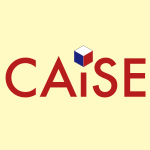 CAiSE-2015-TsuchiyaWFOM #configuration management #feedback #interactive #requirements #traceability #using
CAiSE-2015-TsuchiyaWFOM #configuration management #feedback #interactive #requirements #traceability #using- Interactive Recovery of Requirements Traceability Links Using User Feedback and Configuration Management Logs (RT, HW, YF, KO, RM), pp. 247–262.
 ICEIS-v1-2015-MendoncaMSS #approach #named #query
ICEIS-v1-2015-MendoncaMSS #approach #named #query- CORE — A Context-based Approach for Rewriting User Queries (AM, PM, DS, ACS), pp. 391–398.
 ICEIS-v1-2015-Staniszkis #information management #re-engineering
ICEIS-v1-2015-Staniszkis #information management #re-engineering- Empowering the Knowledge Worker — End-User Software Engineering in Knowledge Management (WS), p. VII.
 ICEIS-v2-2015-Brant-RibeiroAM #approach #interactive #modelling #petri net #using #web
ICEIS-v2-2015-Brant-RibeiroAM #approach #interactive #modelling #petri net #using #web- A User-centered Approach for Modeling Web Interactions Using Colored Petri Nets (TBR, RDA, IM, MSS, RGC), pp. 37–48.
 ICEIS-v2-2015-CanutMOPS #algorithm #case study #comparative #empirical #profiling
ICEIS-v2-2015-CanutMOPS #algorithm #case study #comparative #empirical #profiling- A Comparative Study of Two Egocentric-based User Profiling Algorithms — Experiment in Delicious (CMFC, MM, SOa, AP, FS), pp. 632–639.
 ICEIS-v2-2015-GalalE #modelling #twitter
ICEIS-v2-2015-GalalE #modelling #twitter- Dynamic Modeling of Twitter Users (AG, AEK), pp. 585–593.
 ICEIS-v2-2015-LucenaAAAJ #approach #modelling
ICEIS-v2-2015-LucenaAAAJ #approach #modelling- Integrating User Stories and i* Models — A Systematic Approach (ML, CA, FMRA, EA, AJ), pp. 428–438.
 ICEIS-v2-2015-MoraisS #interface #modelling #quality
ICEIS-v2-2015-MoraisS #interface #modelling #quality- Assessing the Quality of User-interface Modeling Languages (FM, ARdS), pp. 311–319.
 ICEIS-v3-2015-NetoMKBRG #recognition #smarttech #visual notation
ICEIS-v3-2015-NetoMKBRG #recognition #smarttech #visual notation- A Wearable Face Recognition System Built into a Smartwatch and the Visually Impaired User (LdSBN, VRMLM, FLK, MCCB, AdRR, SKG), pp. 5–12.
 ICEIS-v3-2015-RiveroC #case study #evaluation #experience #user interface #using
ICEIS-v3-2015-RiveroC #case study #evaluation #experience #user interface #using- Using a Study to Assess User eXperience Evaluation Methods from the Point of View of Users (LR, TC), pp. 88–95.
 ICEIS-v3-2015-VolpentestaF #interactive #modelling #smarttech
ICEIS-v3-2015-VolpentestaF #interactive #modelling #smarttech- Modeling NFC-triggered User Interactions with Simple Services in a Smart Environment (APV, NF), pp. 96–104.
 ECIR-2015-BotaZJ #perspective #retrieval
ECIR-2015-BotaZJ #perspective #retrieval- Exploring Composite Retrieval from the Users’ Perspective (HB, KZ, JMJ), pp. 13–24.
 ECIR-2015-BuitinckATR #detection #multi
ECIR-2015-BuitinckATR #detection #multi- Multi-emotion Detection in User-Generated Reviews (LB, JvA, ET, MdR), pp. 43–48.
 ECIR-2015-GossenKN #adaptation #towards #user interface
ECIR-2015-GossenKN #adaptation #towards #user interface- Knowledge Journey Exhibit: Towards Age-Adaptive Search User Interfaces (TG, MK, AN), pp. 781–784.
 ECIR-2015-Kelly #analysis #estimation #information retrieval #statistics
ECIR-2015-Kelly #analysis #estimation #information retrieval #statistics- Statistical Power Analysis for Sample Size Estimation in Information Retrieval Experiments with Users (DK), pp. 822–825.
 ECIR-2015-LeeL #sentiment
ECIR-2015-LeeL #sentiment- Measuring User Influence, Susceptibility and Cynicalness in Sentiment Diffusion (RKWL, EPL), pp. 411–422.
 ECIR-2015-MizzaroPS #similarity #twitter
ECIR-2015-MizzaroPS #similarity #twitter- Content-Based Similarity of Twitter Users (SM, MP, IS), pp. 507–512.
 ECIR-2015-RavariMGCR #behaviour #mobile
ECIR-2015-RavariMGCR #behaviour #mobile- User Behavior in Location Search on Mobile Devices (YNR, IM, AG, MC, MdR), pp. 728–733.
 ECIR-2015-SchedlHFT #algorithm #music #on the #recommendation
ECIR-2015-SchedlHFT #algorithm #music #on the #recommendation- On the Influence of User Characteristics on Music Recommendation Algorithms (MS, DH, KF, MT), pp. 339–345.
 ECIR-2015-UrbanoM #correlation #definite clause grammar #how #question #user satisfaction
ECIR-2015-UrbanoM #correlation #definite clause grammar #how #question #user satisfaction- How Do Gain and Discount Functions Affect the Correlation between DCG and User Satisfaction? (JU, MM), pp. 197–202.
 ECIR-2015-VerberneSJK #interactive #personalisation #query #simulation
ECIR-2015-VerberneSJK #interactive #personalisation #query #simulation- User Simulations for Interactive Search: Evaluating Personalized Query Suggestion (SV, MS, KJ, WK), pp. 678–690.
 ECIR-2015-VuWTS #personalisation #topic
ECIR-2015-VuWTS #personalisation #topic- Temporal Latent Topic User Profiles for Search Personalisation (TTV, AW, SNT, DS), pp. 605–616.
 KDD-2015-BeutelAF #behaviour #detection #graph #modelling #predict
KDD-2015-BeutelAF #behaviour #detection #graph #modelling #predict- Graph-Based User Behavior Modeling: From Prediction to Fraud Detection (AB, LA, CF), pp. 2309–2310.
 KDD-2015-DentonWPBF #hashtag #image #predict
KDD-2015-DentonWPBF #hashtag #image #predict- User Conditional Hashtag Prediction for Images (ED, JW, MP, LDB, RF), pp. 1731–1740.
 KDD-2015-HohnholdOT
KDD-2015-HohnholdOT- Focusing on the Long-term: It’s Good for Users and Business (HH, DO, DT), pp. 1849–1858.
 KDD-2015-LalmasLSST #experience
KDD-2015-LalmasLSST #experience- Promoting Positive Post-Click Experience for In-Stream Yahoo Gemini Users (ML, JL, GS, FS, GT), pp. 1929–1938.
 KDD-2015-Yang #industrial #internet #modelling
KDD-2015-Yang #industrial #internet #modelling- User Modeling in Telecommunications and Internet Industry (QY0), p. 1639.
 KDD-2015-ZhongLSR #recommendation #scalability
KDD-2015-ZhongLSR #recommendation #scalability- Building Discriminative User Profiles for Large-scale Content Recommendation (EZ, NL, YS, SR), pp. 2277–2286.
 KDD-2015-ZhuPCZZ #modelling #network #social
KDD-2015-ZhuPCZZ #modelling #network #social- Modeling User Mobility for Location Promotion in Location-based Social Networks (WYZ, WCP, LJC, KZ, XZ), pp. 1573–1582.
 RecSys-2015-AharonAADGS #named #recommendation
RecSys-2015-AharonAADGS #named #recommendation- ExcUseMe: Asking Users to Help in Item Cold-Start Recommendations (MA, OA, NAE, DDC, SG, OS), pp. 83–90.
 RecSys-2015-BansalDB #profiling #recommendation
RecSys-2015-BansalDB #profiling #recommendation- Content Driven User Profiling for Comment-Worthy Recommendations of News and Blog Articles (TB, MKD, CB), pp. 195–202.
 RecSys-2015-BarjastehFMER #recommendation
RecSys-2015-BarjastehFMER #recommendation- Cold-Start Item and User Recommendation with Decoupled Completion and Transduction (IB, RF, FM, AHE, HR), pp. 91–98.
 RecSys-2015-EkstrandKHK #algorithm #case study #recommendation
RecSys-2015-EkstrandKHK #algorithm #case study #recommendation- Letting Users Choose Recommender Algorithms: An Experimental Study (MDE, DK, FMH, JAK), pp. 11–18.
 RecSys-2015-GrausW #elicitation #experience #user interface
RecSys-2015-GrausW #elicitation #experience #user interface- Improving the User Experience during Cold Start through Choice-Based Preference Elicitation (MPG, MCW), pp. 273–276.
 RecSys-2015-Guy #personalisation #recommendation
RecSys-2015-Guy #personalisation #recommendation- The Role of User Location in Personalized Search and Recommendation (IG), p. 236.
 RecSys-2015-HarperXKCCT #recommendation
RecSys-2015-HarperXKCCT #recommendation- Putting Users in Control of their Recommendations (FMH, FX, HK, KC, SC, LGT), pp. 3–10.
 RecSys-2015-KapoorKTKS #adaptation #quote
RecSys-2015-KapoorKTKS #adaptation #quote- “I like to explore sometimes”: Adapting to Dynamic User Novelty Preferences (KK, VK, LGT, JAK, PRS), pp. 19–26.
 RecSys-2015-NovA #recommendation #social #symmetry
RecSys-2015-NovA #recommendation #social #symmetry- Asymmetric Recommendations: The Interacting Effects of Social Ratings? Direction and Strength on Users’ Ratings (ON, OA), pp. 249–252.
 RecSys-2015-SeminarioW #collaboration #recommendation
RecSys-2015-SeminarioW #collaboration #recommendation- Nuke ’Em Till They Go: Investigating Power User Attacks to Disparage Items in Collaborative Recommenders (CES, DCW), pp. 293–296.
 RecSys-2015-SifaOB #analysis #migration
RecSys-2015-SifaOB #analysis #migration- User Churn Migration Analysis with DEDICOM (RS, CO, CB), pp. 321–324.
 SEKE-2015-CavalcanteRC #experience #named #user interface
SEKE-2015-CavalcanteRC #experience #named #user interface- MAX: A Method for Evaluating the Post-use User eXperience through Cards and a Board (EC, LR, TC), pp. 495–500.
 SEKE-2015-LiuXC #learning #recommendation
SEKE-2015-LiuXC #learning #recommendation- Context-aware Recommendation System with Anonymous User Profile Learning (YL, YX, MC), pp. 93–98.
 SEKE-2015-LongoV #diagrams #interactive
SEKE-2015-LongoV #diagrams #interactive- Creating User Scenarios through User Interaction Diagrams by Non-Technical Customers (DHL, PV), pp. 330–335.
 SEKE-2015-OliveiraBFM #development #product line #user interface
SEKE-2015-OliveiraBFM #development #product line #user interface- Adoption of Software Product Line Development to an Environment of Voice User Interface (DRFO, BLDB, ELSXF, AMAM), pp. 705–708.
 SEKE-2015-YangL #classification #identification #requirements
SEKE-2015-YangL #classification #identification #requirements- Identification and Classification of Requirements from App User Reviews (HY, PL), pp. 7–12.
 SEKE-2015-ZouCH #impact analysis #mobile #topic #user interface
SEKE-2015-ZouCH #impact analysis #mobile #topic #user interface- Topic Matching Based Change Impact Analysis from Feature on User Interface of Mobile Apps (QZ, XC, YH), pp. 477–482.
 SIGIR-2015-Arora #learning
SIGIR-2015-Arora #learning- Promoting User Engagement and Learning in Amorphous Search Tasks (PA), p. 1051.
 SIGIR-2015-BahCC #documentation
SIGIR-2015-BahCC #documentation- Document Comprehensiveness and User Preferences in Novelty Search Tasks (AB, PC, BC), pp. 735–738.
 SIGIR-2015-BaileyMST #evaluation #information retrieval #variability
SIGIR-2015-BaileyMST #evaluation #information retrieval #variability- User Variability and IR System Evaluation (PB, AM, FS, PT), pp. 625–634.
 SIGIR-2015-Barreda-Angeles #behaviour #latency
SIGIR-2015-Barreda-Angeles #behaviour #latency- Unconscious Physiological Effects of Search Latency on Users and Their Click Behaviour (MBÁ, IA, XB, BBC, APB), pp. 203–212.
 SIGIR-2015-ClarkeSY #behaviour #effectiveness #evaluation #information retrieval #modelling
SIGIR-2015-ClarkeSY #behaviour #effectiveness #evaluation #information retrieval #modelling- IR Evaluation: Modeling User Behavior for Measuring Effectiveness (CLAC, MDS, EY), pp. 1117–1120.
 SIGIR-2015-Drutsa #evaluation #metric #online #quality
SIGIR-2015-Drutsa #evaluation #metric #online #quality- Sign-Aware Periodicity Metrics of User Engagement for Online Search Quality Evaluation (AD), pp. 779–782.
 SIGIR-2015-FangOHML #classification #topic #twitter
SIGIR-2015-FangOHML #classification #topic #twitter- Topic-centric Classification of Twitter User’s Political Orientation (AF, IO, PH, CM, NL), pp. 791–794.
 SIGIR-2015-GrotovWR #comparison #interactive
SIGIR-2015-GrotovWR #comparison #interactive- Bayesian Ranker Comparison Based on Historical User Interactions (AG, SW, MdR), pp. 273–282.
 SIGIR-2015-HarelY #clustering #identification #query
SIGIR-2015-HarelY #clustering #identification #query- Modularity-Based Query Clustering for Identifying Users Sharing a Common Condition (MGOH, EYT), pp. 819–822.
 SIGIR-2015-HarveyHE #learning #query
SIGIR-2015-HarveyHE #learning #query- Learning by Example: Training Users with High-quality Query Suggestions (MH, CH, DE), pp. 133–142.
 SIGIR-2015-KellyA #behaviour #case study #experience #how #user interface
SIGIR-2015-KellyA #behaviour #case study #experience #how #user interface- How many results per page?: A Study of SERP Size, Search Behavior and User Experience (DK, LA), pp. 183–192.
 SIGIR-2015-KiselevaMBDKEKT #optimisation
SIGIR-2015-KiselevaMBDKEKT #optimisation- Where to Go on Your Next Trip?: Optimizing Travel Destinations Based on User Preferences (JK, MJIM, LB, CD, IK, MSE, JK, AT, DH), pp. 1097–1100.
 SIGIR-2015-LagunA #interactive #modelling
SIGIR-2015-LagunA #interactive #modelling- Inferring Searcher Attention by Jointly Modeling User Interactions and Content Salience (DL, EA), pp. 483–492.
 SIGIR-2015-LiDDCZB #behaviour #markov #process #query
SIGIR-2015-LiDDCZB #behaviour #markov #process #query- Analyzing User’s Sequential Behavior in Query Auto-Completion via Markov Processes (LL, HD, AD, YC, HZ, RABY), pp. 123–132.
 SIGIR-2015-LiKF #behaviour #matrix #predict
SIGIR-2015-LiKF #behaviour #matrix #predict- Predicting User Behavior in Display Advertising via Dynamic Collective Matrix Factorization (SL, JK, YF), pp. 875–878.
 SIGIR-2015-LiuCTS0MZ #predict
SIGIR-2015-LiuCTS0MZ #predict- Different Users, Different Opinions: Predicting Search Satisfaction with Mouse Movement Information (YL, YC, JT, JS, MZ, SM, XZ), pp. 493–502.
 SIGIR-2015-LuZZW #personalisation #recommendation
SIGIR-2015-LuZZW #personalisation #recommendation- Exploiting User and Business Attributes for Personalized Business Recommendation (KL, YZ, LZ, SW), pp. 891–894.
 SIGIR-2015-ParkLZW #mobile #retrieval
SIGIR-2015-ParkLZW #mobile #retrieval- Leveraging User Reviews to Improve Accuracy for Mobile App Retrieval (DHP, ML, CZ, HW), pp. 533–542.
 SIGIR-2015-SchedlH #music #recommendation
SIGIR-2015-SchedlH #music #recommendation- Tailoring Music Recommendations to Users by Considering Diversity, Mainstreaminess, and Novelty (MS, DH), pp. 947–950.
 SIGIR-2015-WangSLE #difference #generative #timeline #twitter
SIGIR-2015-WangSLE #difference #generative #timeline #twitter- Assessor Differences and User Preferences in Tweet Timeline Generation (YW, GS, JL, ME), pp. 615–624.
 SIGIR-2015-YangKML #modelling #parametricity #sentiment #topic
SIGIR-2015-YangKML #modelling #parametricity #sentiment #topic- Parametric and Non-parametric User-aware Sentiment Topic Models (ZY, AK, AM, SL), pp. 413–422.
 SIGIR-2015-ZamaniMS #adaptation #evaluation #learning #multi
SIGIR-2015-ZamaniMS #adaptation #evaluation #learning #multi- Adaptive User Engagement Evaluation via Multi-task Learning (HZ, PM, AS), pp. 1011–1014.
 MoDELS-2015-LuddeckeSSS #modelling #network #using
MoDELS-2015-LuddeckeSSS #modelling #network #using- Modeling user intentions for in-car infotainment systems using Bayesian networks (DL, CS, JS, IS), pp. 378–385.
 Onward-2015-LorenzR #in the cloud
Onward-2015-LorenzR #in the cloud- Separation of powers in the cloud: where applications and users become peers (DHL, BR), pp. 76–89.
 GPCE-2015-FoustJP #constraints #data flow #generative #multi #source code #user interface #visual notation
GPCE-2015-FoustJP #constraints #data flow #generative #multi #source code #user interface #visual notation- Generating reactive programs for graphical user interfaces from multi-way dataflow constraint systems (GF, JJ, SP), pp. 121–130.
 REFSQ-2015-DuanDCM #clustering #online #requirements
REFSQ-2015-DuanDCM #clustering #online #requirements- User-Constrained Clustering in Online Requirements Forums (CD, HD, JCH, BM), pp. 284–299.
 SAC-2015-AlemerienM #metric #named #predict #usability #user interface #visual notation
SAC-2015-AlemerienM #metric #named #predict #usability #user interface #visual notation- SLC: a visual cohesion metric to predict the usability of graphical user interfaces (KA, KM), pp. 1526–1533.
 SAC-2015-BacikovaPCN #domain-specific language #user interface
SAC-2015-BacikovaPCN #domain-specific language #user interface- Bootstrapping DSLs from user interfaces (MB, JP, SC, MN), pp. 2115–2118.
 SAC-2015-DemuthRNHZE #framework #multi #named
SAC-2015-DemuthRNHZE #framework #multi #named- DesignSpace: an infrastructure for multi-user/multi-tool engineering (AD, MRE, AN, PH, KZ, AE), pp. 1486–1491.
 SAC-2015-LommatzschA #realtime #recommendation
SAC-2015-LommatzschA #realtime #recommendation- Real-time recommendations for user-item streams (AL, SA), pp. 1039–1046.
 SAC-2015-PreuveneersJ #authentication #named
SAC-2015-PreuveneersJ #authentication #named- SmartAuth: dynamic context fingerprinting for continuous user authentication (DP, WJ), pp. 2185–2191.
 ESEC-FSE-2015-BehrangCO #consistency #nondeterminism
ESEC-FSE-2015-BehrangCO #consistency #nondeterminism- Users beware: preference inconsistencies ahead (FB, MBC, AO), pp. 295–306.
 ESEC-FSE-2015-Feth #optimisation #security #trade-off
ESEC-FSE-2015-Feth #optimisation #security #trade-off- User-centric security: optimization of the security-usability trade-off (DF), pp. 1034–1037.
 ESEC-FSE-2015-MangalZNN #approach #program analysis
ESEC-FSE-2015-MangalZNN #approach #program analysis- A user-guided approach to program analysis (RM, XZ, AVN, MN), pp. 462–473.
 ICSE-v1-2015-GaoLCMW #interactive #question #testing #what
ICSE-v1-2015-GaoLCMW #interactive #question #testing #what- Making System User Interactive Tests Repeatable: When and What Should We Control? (ZG, YL, MBC, AMM, ZW), pp. 55–65.
 ICSE-v1-2015-YangYWWR #analysis #android #control flow
ICSE-v1-2015-YangYWWR #analysis #android #control flow- Static Control-Flow Analysis of User-Driven Callbacks in Android Applications (SY, DY, HW, YW, AR), pp. 89–99.
 PLEASE-2015-TzeremesG #approach #development #product line
PLEASE-2015-TzeremesG #approach #development #product line- A Software Product Line Approach for End User Development of Smart Spaces (VT, HG), pp. 23–26.
 SPLC-2015-SteffenLM #constraints #product line #synthesis
SPLC-2015-SteffenLM #constraints #product line #synthesis- User-level synthesis: treating product lines as systems of constraints (BS, ALL, TMS), pp. 427–431.
 SOSP-2015-RaychevMM #execution #symbolic computation #using
SOSP-2015-RaychevMM #execution #symbolic computation #using- Parallelizing user-defined aggregations using symbolic execution (VR, MM, TM), pp. 153–167.
 ASE-2014-PirzadehS #testing #user interface
ASE-2014-PirzadehS #testing #user interface- Resilient user interface level tests (HP, SS), pp. 683–688.
 ASE-2014-Reiss #user interface
ASE-2014-Reiss #user interface- Seeking the user interface (SPR), pp. 103–114.
 ASE-2014-WangLJ #code search #feedback
ASE-2014-WangLJ #code search #feedback- Active code search: incorporating user feedback to improve code search relevance (SW, DL, LJ), pp. 677–682.
 DAC-2014-TsengHPK #energy #manycore #mobile #scheduling
DAC-2014-TsengHPK #energy #manycore #mobile #scheduling- User-Centric Energy-Efficient Scheduling on Multi-Core Mobile Devices (PHT, PCH, CCP, TWK), p. 6.
 HT-2014-AbbasiTL #learning #scalability #using
HT-2014-AbbasiTL #learning #scalability #using- Scalable learning of users’ preferences using networked data (MAA, JT, HL), pp. 4–12.
 HT-2014-HuangWV #twitter
HT-2014-HuangWV #twitter- Inferring nationalities of Twitter users and studying inter-national linking (WH, IW, SV), pp. 237–242.
 HT-2014-KoidlCW #independence #personalisation
HT-2014-KoidlCW #independence #personalisation- Cross-site personalization: assisting users in addressing information needs that span independently hosted websites (KK, OC, VW), pp. 66–76.
 HT-2014-NagulendraV #case study #comprehension #interactive #visualisation
HT-2014-NagulendraV #case study #comprehension #interactive #visualisation- Understanding and controlling the filter bubble through interactive visualization: a user study (SN, JV), pp. 107–115.
 HT-2014-Saez-Trumper #identification #twitter
HT-2014-Saez-Trumper #identification #twitter- Fake tweet buster: a webtool to identify users promoting fake news ontwitter (DST), pp. 316–317.
 SIGMOD-2014-ChengMZK #flexibility #named
SIGMOD-2014-ChengMZK #flexibility #named- SerpentTI: flexible analytics of users, boards and domains for pinterest (AC, MM, CZ, NK), pp. 1075–1078.
 SIGMOD-2014-Dev #algorithm #community #detection #interactive #network #online #social
SIGMOD-2014-Dev #algorithm #community #detection #interactive #network #online #social- A user interaction based community detection algorithm for online social networks (HD), pp. 1607–1608.
 SIGMOD-2014-YangXWWSWY #graph #named #query
SIGMOD-2014-YangXWWSWY #graph #named #query- SLQ: a user-friendly graph querying system (SY, YX, YW, TW, HS, JW, XY), pp. 893–896.
 SIGMOD-2014-YinCCHH #behaviour #modelling #social #social media
SIGMOD-2014-YinCCHH #behaviour #modelling #social #social media- A temporal context-aware model for user behavior modeling in social media systems (HY, BC, LC, ZH, ZH), pp. 1543–1554.
 VLDB-2014-CaoCJY
VLDB-2014-CaoCJY- Retrieving Regions of Interest for User Exploration (XC, GC, CSJ, MLY), pp. 733–744.
 VLDB-2014-JayachandranTKN #execution #interactive #query
VLDB-2014-JayachandranTKN #execution #interactive #query- Combining User Interaction, Speculative Query Execution and Sampling in the DICE System (PJ, KT, NK, AN), pp. 1697–1700.
 VLDB-2014-KongLH #named #network #social #social media
VLDB-2014-KongLH #named #network #social #social media- SPOT: Locating Social Media Users Based on Social Network Context (LK, ZL, YH), pp. 1681–1684.
 TFPIE-2014-IshiiA #debugging
TFPIE-2014-IshiiA #debugging- Report on a User Test and Extension of a Type Debugger for Novice Programmers (YI, KA), pp. 1–18.
 FASE-2014-MasciZJCT #user interface #using #verification
FASE-2014-MasciZJCT #user interface #using #verification- Formal Verification of Medical Device User Interfaces Using PVS (PM, YZ, PLJ, PC, HWT), pp. 200–214.
 CSMR-WCRE-2014-HillRFM #case study #code search #query #refinement
CSMR-WCRE-2014-HillRFM #case study #code search #query #refinement- NL-based query refinement and contextualized code search results: A user study (EH, MRV, JAF, GM), pp. 34–43.
 ICPC-2014-DelimarschiSK #development #ide #interactive #user interface
ICPC-2014-DelimarschiSK #development #ide #interactive #user interface- Enabling integrated development environments with natural user interface interactions (DD, GS, HHK), pp. 126–129.
 ICSME-2014-EderFHJ #question
ICSME-2014-EderFHJ #question- Which Features Do My Users (Not) Use? (SE, HF, BH, MJ), pp. 446–450.
 PLDI-2014-SousaDVDG #query
PLDI-2014-SousaDVDG #query- Consolidation of queries with user-defined functions (MS, ID, DV, TD, CG), p. 56.
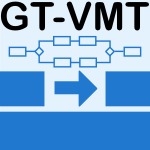 GT-VMT-2014-StuckrathW #adaptation #modelling #petri net #user interface
GT-VMT-2014-StuckrathW #adaptation #modelling #petri net #user interface- Lattice-extended Coloured Petri Net Rewriting for Adaptable User Interface Models (JS, BW).
 CHI-2014-AthukoralaLKJOTJ #behaviour #how #mobile
CHI-2014-AthukoralaLKJOTJ #behaviour #how #mobile- How carat affects user behavior: implications for mobile battery awareness applications (KA, EL, MvK, AJ, AJO, ST, GJ), pp. 1029–1038.
 CHI-2014-BensonK #how #web #what #why
CHI-2014-BensonK #how #web #what #why- End-users publishing structured information on the web: an observational study of what, why, and how (EB, DRK), pp. 1265–1274.
 CHI-2014-BohmerLGBK #design #smarttech
CHI-2014-BohmerLGBK #design #smarttech- Interrupted by a phone call: exploring designs for lowering the impact of call notifications for smartphone users (MB, CL, SG, DPB, AK), pp. 3045–3054.
 CHI-2014-BuntDLTC #named #online
CHI-2014-BuntDLTC #named #online- TaggedComments: promoting and integrating user comments in online application tutorials (AB, PD, BL, MAT, DTC), pp. 4037–4046.
 CHI-2014-CareniniCHSTE #adaptation #difference #visualisation
CHI-2014-CareniniCHSTE #adaptation #difference #visualisation- Highlighting interventions and user differences: informing adaptive information visualization support (GC, CC, EH, BS, DT, JE), pp. 1835–1844.
 CHI-2014-CarringtonHK #design #mobile #smarttech
CHI-2014-CarringtonHK #design #mobile #smarttech- Wearables and chairables: inclusive design of mobile input and output techniques for power wheelchair users (PC, AH, SKK), pp. 3103–3112.
 CHI-2014-DachteraRW #design #industrial #research
CHI-2014-DachteraRW #design #industrial #research- Research on research: design research at the margins: academia, industry and end-users (JD, DWR, VW), pp. 713–722.
 CHI-2014-FerreiraFK #visualisation
CHI-2014-FerreiraFK #visualisation- Sample-oriented task-driven visualizations: allowing users to make better, more confident decisions (NF, DF, ACK), pp. 571–580.
 CHI-2014-GouZY #automation #comprehension #social #social media
CHI-2014-GouZY #automation #comprehension #social #social media- KnowMe and ShareMe: understanding automatically discovered personality traits from social media and user sharing preferences (LG, MXZ, HY), pp. 955–964.
 CHI-2014-GreisAHM
CHI-2014-GreisAHM- I can wait a minute: uncovering the optimal delay time for pre-moderated user-generated content on public displays (MG, FA, NH, NM), pp. 1435–1438.
 CHI-2014-HayashiMH #gesture #identification #using
CHI-2014-HayashiMH #gesture #identification #using- Wave to me: user identification using body lengths and natural gestures (EH, MM, JIH), pp. 3453–3462.
 CHI-2014-HernandezPRC
CHI-2014-HernandezPRC- Under pressure: sensing stress of computer users (JH, PP, AR, MC), pp. 51–60.
 CHI-2014-HuangTTTYCHC #named #using
CHI-2014-HuangTTTYCHC #named #using- TouchSense: expanding touchscreen input vocabulary using different areas of users’ finger pads (DYH, MCT, YCT, MLT, YTY, LWC, YPH, MYC), pp. 189–192.
 CHI-2014-KriglsteinWP #case study #visualisation
CHI-2014-KriglsteinWP #case study #visualisation- A user study of different gameplay visualizations (SK, GW, MP), pp. 361–370.
 CHI-2014-LeeSS #analysis #bound #design #research
CHI-2014-LeeSS #analysis #bound #design #research- Stay on the boundary: artifact analysis exploring researcher and user framing of robot design (HRL, SS, ES), pp. 1471–1474.
 CHI-2014-MollerKDRHSKL #evaluation #navigation #user interface #visual notation
CHI-2014-MollerKDRHSKL #evaluation #navigation #user interface #visual notation- Experimental evaluation of user interfaces for visual indoor navigation (AM, MK, SD, LR, RH, TS, MK, PL), pp. 3607–3616.
 CHI-2014-NebelingMHN #development #interactive #user interface
CHI-2014-NebelingMHN #development #interactive #user interface- Interactive development of cross-device user interfaces (MN, TM, MH, MCN), pp. 2793–2802.
 CHI-2014-NicosiaOK #modelling #performance
CHI-2014-NicosiaOK #modelling #performance- Modeling the perception of user performance (MN, AO, POK), pp. 1747–1756.
 CHI-2014-PuciharCA #visual notation
CHI-2014-PuciharCA #visual notation- The use of surrounding visual context in handheld AR: device vs. user perspective rendering (KCP, PC, JA), pp. 197–206.
 CHI-2014-SampathRI #crowdsourcing #design #performance
CHI-2014-SampathRI #crowdsourcing #design #performance- Cognitively inspired task design to improve user performance on crowdsourcing platforms (HAS, RR, BI), pp. 3665–3674.
 CHI-2014-SeokWL #design #experience #user interface
CHI-2014-SeokWL #design #experience #user interface- Non-finito products: a new design space of user creativity for personal user experience (JS, JbW, YKL), pp. 693–702.
 CHI-2014-StawarzCB #design #effectiveness #exclamation
CHI-2014-StawarzCB #design #effectiveness #exclamation- Don’t forget your pill!: designing effective medication reminder apps that support users’ daily routines (KS, ALC, AB), pp. 2269–2278.
 CHI-2014-TanNTNTEW #behaviour #developer #smarttech
CHI-2014-TanNTNTEW #behaviour #developer #smarttech- The effect of developer-specified explanations for permission requests on smartphone user behavior (JT, KN, MT, HNA, CT, SE, DW), pp. 91–100.
 CHI-2014-ValdesEGTSMUK #design #gesture #interactive
CHI-2014-ValdesEGTSMUK #design #gesture #interactive- Exploring the design space of gestural interaction with active tokens through user-defined gestures (CV, DE, CG, ST, OS, AM, BU, MK), pp. 4107–4116.
 CHI-2014-WangCCHC #automation #interactive #named #smarttech
CHI-2014-WangCCHC #automation #interactive #named #smarttech- EverTutor: automatically creating interactive guided tutorials on smartphones by user demonstration (CYW, WCC, HRC, CYH, MYC), pp. 4027–4036.
 CHI-2014-WisniewskiXC #adaptation #comprehension #facebook #timeline
CHI-2014-WisniewskiXC #adaptation #comprehension #facebook #timeline- Understanding user adaptation strategies for the launching of facebook timeline (PJW, HX, YC), pp. 2421–2430.
 CHI-2014-WuA #network #online #social #visual notation
CHI-2014-WuA #network #online #social #visual notation- Visually impaired users on an online social network (SW, LAA), pp. 3133–3142.
 CHI-2014-ZadeAGDC #bisimulation #distance #edit distance #evolution #modelling
CHI-2014-ZadeAGDC #bisimulation #distance #edit distance #evolution #modelling- Edit distance modulo bisimulation: a quantitative measure to study evolution of user models (HZ, SAA, SG, AKD, VC), pp. 1757–1766.
 CSCW-2014-MasliT #feedback
CSCW-2014-MasliT #feedback- Leveraging the contributory potential of user feedback (MM, LGT), pp. 956–966.
 CSCW-2014-MatthewsWBS #collaboration #community #social #tool support
CSCW-2014-MatthewsWBS #collaboration #community #social #tool support- Beyond end user content to collaborative knowledge mapping: interrelations among community social tools (TM, SW, HB, BAS), pp. 900–910.
 CSCW-2014-Quinones
CSCW-2014-Quinones- Cultivating practice & shepherding technology use: supporting appropriation among unanticipated users (PAQ), pp. 305–318.
 DHM-2014-Harriehausen-Muhlabauter #mobile #navigation
DHM-2014-Harriehausen-Muhlabauter #mobile #navigation- Mobile Navigation for Limited Mobility Users (BHM), pp. 535–545.
 DUXU-DI-2014-AsciR #case study #comparative #mobile #user interface
DUXU-DI-2014-AsciR #case study #comparative #mobile #user interface- Left vs. Right-Handed UX: A Comparative User Study on a Mobile Application with Left and Right-Handed Users (SA, KR), pp. 173–183.
 DUXU-DI-2014-BillestrupS #case study
DUXU-DI-2014-BillestrupS #case study- E-government and the Digital Agenda for Europe — A Study of the User Involvement in the Digitalisation of Citizen Services in Denmark (JB, JS), pp. 71–80.
 DUXU-DI-2014-FernandesP #evaluation #experience #online #user interface
DUXU-DI-2014-FernandesP #evaluation #experience #online #user interface- Online Shopping Websites: An Evaluation of User Experience and Interface Ergonomic Criteria from the Perspective of Older Users (FRF, LCP), pp. 104–115.
 DUXU-DI-2014-FernandesP14a #evaluation #experience #named #online #user interface
DUXU-DI-2014-FernandesP14a #evaluation #experience #named #online #user interface- Erratum: Online Shopping Websites: An Evaluation of User Experience and Interface Ergonomic Criteria from the Perspective of Older Users (FRF, LCP).
 DUXU-DI-2014-GencerBZV #detection #machine learning #mobile
DUXU-DI-2014-GencerBZV #detection #machine learning #mobile- Detection of Churned and Retained Users with Machine Learning Methods for Mobile Applications (MG, GB, ÖZ, TV), pp. 234–245.
 DUXU-DI-2014-GomezF #experience #mobile #user interface
DUXU-DI-2014-GomezF #experience #mobile #user interface- Territorial Brand Graphic Interface Management in Mobile Applications Focused on User Experience (LSRG, VCF), pp. 323–333.
 DUXU-DI-2014-KurdiHK #towards #user interface
DUXU-DI-2014-KurdiHK #towards #user interface- Towards a Friendly User Interface on the Cloud (HAK, SH, AK), pp. 148–157.
 DUXU-DI-2014-LeiXCLCZLG #gesture #human-computer #mobile #named
DUXU-DI-2014-LeiXCLCZLG #gesture #human-computer #mobile #named- Gestures: The Reformer of the User’s Mental Model in Mobile HCI (TL, LX, KC, XL, YC, QZ, DL, SG), pp. 586–597.
 DUXU-DI-2014-Lin14a #effectiveness #interface #perspective #visual notation
DUXU-DI-2014-Lin14a #effectiveness #interface #perspective #visual notation- Interface as a Medium: Creating Effective Visual Services through a User-Experiences Perspective (TSL), pp. 455–462.
 DUXU-DI-2014-PaulaMA #design #experience #mobile #quality #usability #user interface
DUXU-DI-2014-PaulaMA #design #experience #mobile #quality #usability #user interface- Building a Quality Mobile Application: A User-Centered Study Focusing on Design Thinking, User Experience and Usability (DFOdP, BHXMM, CCA), pp. 313–322.
 DUXU-DI-2014-PaulinBA #case study #experience #user interface
DUXU-DI-2014-PaulinBA #case study #experience #user interface- The Study of the Relations between the BrainHex Player Profiles, MBTI Psychological Types and Emotions as Means to Enhance User Experience (REP, ALB, MMA), pp. 732–741.
 DUXU-DI-2014-RugenhagenH #design #development #game studies #research
DUXU-DI-2014-RugenhagenH #design #development #game studies #research- Game Design Techniques in User Research Methods — A New Way to Reach the High Score in Development Teams (ER, TH), pp. 754–762.
 DUXU-DI-2014-SchusterHBRJ #experience #how #using
DUXU-DI-2014-SchusterHBRJ #experience #how #using- Diving in? How Users Experience Virtual Environments Using the Virtual Theatre (KS, MH, UB, AR, SJ), pp. 636–646.
 DUXU-DI-2014-ShafiqICRAAR #analysis #case study #learning #smarttech #usability #user satisfaction #what
DUXU-DI-2014-ShafiqICRAAR #analysis #case study #learning #smarttech #usability #user satisfaction #what- To What Extent System Usability Effects User Satisfaction: A Case Study of Smart Phone Features Analysis for Learning of Novice (MS, MI, JGC, ZR, MA, WA, SR), pp. 346–357.
 DUXU-DI-2014-Souto #design #experience #interactive #learning #user interface #visualisation
DUXU-DI-2014-Souto #design #experience #interactive #learning #user interface #visualisation- Interactive Visualizations in Learning Mathematics: Implications for Information Design and User Experience (VTS), pp. 472–480.
 DUXU-DI-2014-StasoMA #experience #named #user interface
DUXU-DI-2014-StasoMA #experience #named #user interface- Smart-Islands: Enhancing User Experience for Mediterranean Islands for Tourism Support (UDS, DM, RdA), pp. 223–233.
 DUXU-DP-2014-CandelloCBP #validation #visual notation
DUXU-DP-2014-CandelloCBP #validation #visual notation- A Validation Study of a Visual Analytics Tool with End Users (HC, VFC, AB, RAdP), pp. 381–391.
 DUXU-DP-2014-ChunpirB0
DUXU-DP-2014-ChunpirB0- User Support System in the Complex Environment (HIC, AAB, TL), pp. 392–402.
 DUXU-DP-2014-Gatsou #generative
DUXU-DP-2014-Gatsou #generative- From Inexperienced Users to Co-creators: An Exploration of a Generative Method (CG), pp. 244–252.
 DUXU-DP-2014-GilgenF #interactive #smarttech #user interface
DUXU-DP-2014-GilgenF #interactive #smarttech #user interface- From Wearables to Soft-Wear: Developing Soft User Interfaces by Seamlessly Integrating Interactive Technology into Fashionable Apparel (DG, TRF), pp. 253–260.
 DUXU-DP-2014-KramerN #design
DUXU-DP-2014-KramerN #design- Designing with the User in Mind a Cognitive Category Based Design Methodology (JK, SN), pp. 152–163.
 DUXU-DP-2014-KremerMSL #development #experience #user interface
DUXU-DP-2014-KremerMSL #development #experience #user interface- User Experience Milestones — Structuring the Development of Experience Products (SK, IM, CvS, UL), pp. 308–318.
 DUXU-DP-2014-Kumar #enterprise #experience #user interface
DUXU-DP-2014-Kumar #enterprise #experience #user interface- Humanizing the Enterprise — Delivering Best in Class User Experience to Business Software Users (JK), pp. 61–70.
 DUXU-DP-2014-MieslerGHW #case study #experience #on-demand #user interface
DUXU-DP-2014-MieslerGHW #case study #experience #on-demand #user interface- User Experience of Video-on-Demand Applications for smart TVs: A Case Study (LM, BG, FH, AW), pp. 412–422.
 DUXU-DP-2014-OnalMMO #case study #challenge #experience #user interface
DUXU-DP-2014-OnalMMO #case study #challenge #experience #user interface- Enabling Better User Experiences across Domains: Challenges and Opportunities Facing a Human Factors Professional (EO, SM, CM, OO), pp. 81–89.
 DUXU-DP-2014-SauckenMKL #design #exclamation
DUXU-DP-2014-SauckenMKL #design #exclamation- Motive-Oriented Design — Helping Automobile Engineers to Take the User’s Perspective! (CvS, IM, SK, UL), pp. 370–377.
 DUXU-DP-2014-SpillersA #experience #health #mobile #motivation #social #user interface
DUXU-DP-2014-SpillersA #experience #health #mobile #motivation #social #user interface- Does Social User Experience Improve Motivation for Runners? — A Diary Study Comparing Mobile Health Applications (FS, SA), pp. 358–369.
 DUXU-DP-2014-ZhangZLH #experience #research #scalability #usability #user interface
DUXU-DP-2014-ZhangZLH #experience #research #scalability #usability #user interface- Cross-Platform Product Usability and Large Screen User Experience: A Teleconference System U&E Research (YZ, CZ, GL, TH), pp. 469–479.
 DUXU-ELAS-2014-AldazHSSL #experience #personalisation #user interface
DUXU-ELAS-2014-AldazHSSL #experience #personalisation #user interface- User Experience in Training a Personalized Hearing System (GA, TH, DS, MS, LJL), pp. 3–14.
 DUXU-ELAS-2014-BackhausBT #experience #user interface
DUXU-ELAS-2014-BackhausBT #experience #user interface- Positive Technology and User Experience for Human Needs in Developing Countries: Some Considerations (NB, SB, AT), pp. 400–410.
 DUXU-ELAS-2014-ChenDCY #comprehension #experience #user interface
DUXU-ELAS-2014-ChenDCY #comprehension #experience #user interface- Enhance User Experience Moving in Campus through Understanding Human Spatial Cognition (SMC, YSD, SFC, HCY), pp. 265–272.
 DUXU-ELAS-2014-Chunpir0B #comprehension #using
DUXU-ELAS-2014-Chunpir0B #comprehension #using- Using Soft Systems Methodology (SSM) in Understanding Current User-Support Scenario in the Climate Science Domain of Cyber-Infrastructures (HIC, TL, AAB), pp. 495–506.
 DUXU-ELAS-2014-DysonJ #interface #question #what
DUXU-ELAS-2014-DysonJ #interface #question #what- Examining the Interfaces to E-journal Articles: What Do Users Expect? (MCD, EMJ), pp. 164–172.
 DUXU-ELAS-2014-FordPLNCM #design #feedback
DUXU-ELAS-2014-FordPLNCM #design #feedback- User-Centred Design of an Audio Feedback System for Power Demand Management (RF, JP, YCL, KN, WC, MM), pp. 530–541.
 DUXU-ELAS-2014-FordSCT #energy #personalisation
DUXU-ELAS-2014-FordSCT #energy #personalisation- Personalized Energy Priorities: A User-Centric Application for Energy Advice (RF, OS, AC, PT), pp. 542–553.
 DUXU-ELAS-2014-HungS #case study #design #visual notation
DUXU-ELAS-2014-HungS #case study #design #visual notation- Visual Design in Healthcare for Low-Literate Users — A Case Study of Healthcare Leaflets for New Immigrants in Taiwan (YLH, CS), pp. 44–55.
 DUXU-ELAS-2014-KarlinPC #experience #learning #online #user interface
DUXU-ELAS-2014-KarlinPC #experience #learning #online #user interface- Pumping Up the Citizen Muscle Bootcamp: Improving User Experience in Online Learning (BK, BP, AC), pp. 562–573.
 DUXU-ELAS-2014-KhokharEBIMIMMAA #community #usability #user interface
DUXU-ELAS-2014-KhokharEBIMIMMAA #community #usability #user interface- Enhancement of Usability for Farmers: User Interface for Rural Community (MFK, HE, TAB, SI, UM, AI, FuM, AM, UA, UA), pp. 574–582.
 DUXU-ELAS-2014-KnollVS #comprehension #user interface
DUXU-ELAS-2014-KnollVS #comprehension #user interface- Developing the HMI of Electric Vehicles — On the Necessity of a Broader Understanding of Automotive User Interface Engineering (CK, RV, IS), pp. 293–304.
 DUXU-ELAS-2014-MahmoodST #content management #people #user interface
DUXU-ELAS-2014-MahmoodST #content management #people #user interface- Content Management and User Interface for Uneducated People (ZM, SSS, ST), pp. 432–441.
 DUXU-ELAS-2014-MarcusDW #design
DUXU-ELAS-2014-MarcusDW #design- User-Experience for Personal Sustainability Software: Applying Design Philosophy and Principles (AM, JD, LW), pp. 583–593.
 DUXU-ELAS-2014-Pelczarski14a
DUXU-ELAS-2014-Pelczarski14a- Ultralight Backpack System for Heavy Loaded Users (MP), pp. 699–709.
 DUXU-ELAS-2014-Portugal #design
DUXU-ELAS-2014-Portugal #design- Design, User-Experience and Teaching-Learning (CP), pp. 230–241.
 DUXU-ELAS-2014-Savage-KnepshieldTPDQM #design #experience #user interface
DUXU-ELAS-2014-Savage-KnepshieldTPDQM #design #experience #user interface- Designing the User Experience for C4ISR Systems in the U.S. Army (PASK, JT, CP, JD, DQ, DM), pp. 338–346.
 DUXU-ELAS-2014-WoldmariamGAG #design #mobile
DUXU-ELAS-2014-WoldmariamGAG #design #mobile- Mobile Money System Design for Illiterate Users in Rural Ethiopia (MFW, GG, SA, TMG), pp. 482–491.
 DUXU-ELAS-2014-ZiefleBKS
DUXU-ELAS-2014-ZiefleBKS- Public Perception and Acceptance of Electric Vehicles: Exploring Users’ Perceived Benefits and Drawbacks (MZ, SBL, KK, MS), pp. 628–639.
 DUXU-TMT-2014-Bergamo #experience #prototype #user interface
DUXU-TMT-2014-Bergamo #experience #prototype #user interface- User Experience Technique in Computer Digital Arts Production: Paper Prototyping Used as Material to Define Intentionality (MLB), pp. 613–621.
 DUXU-TMT-2014-BystrickyB #architecture #towards #user interface
DUXU-TMT-2014-BystrickyB #architecture #towards #user interface- Post Media: Towards a User Interface Architecture (JB, JB), pp. 519–526.
 DUXU-TMT-2014-GoodeLSGB #approach #research
DUXU-TMT-2014-GoodeLSGB #approach #research- A Mixed-Method Approach for In-Depth Contextual User Research (AWG, CL, AS, RG, VB), pp. 86–95.
 DUXU-TMT-2014-IioIM #database #design #user interface
DUXU-TMT-2014-IioIM #database #design #user interface- The Database on Near-Future Technologies for User Interface Design from SciFi Movies (JI, SI, HM), pp. 572–579.
 DUXU-TMT-2014-KeckLG #design #process #user interface
DUXU-TMT-2014-KeckLG #design #process #user interface- Revisiting Graspable User Interfaces — A Design Process for Developing User Interface Metaphors (MK, EL, RG), pp. 130–141.
 DUXU-TMT-2014-KulpaA #evaluation #interface #tablet #usability
DUXU-TMT-2014-KulpaA #evaluation #interface #tablet #usability- Evaluation of Tablet PC Application Interfaces with Low Vision Users: Focusing on Usability (CCK, FGA), pp. 273–284.
 DUXU-TMT-2014-Kurosu #user interface
DUXU-TMT-2014-Kurosu #user interface- User Interfaces That Appeared in SciFi Movies and Their Reality (MK), pp. 580–588.
 DUXU-TMT-2014-LeeL #3d #design #generative #research
DUXU-TMT-2014-LeeL #3d #design #generative #research- Experimental Research in Applying Generative Design and 3D Printers in User Participating Design (LCJL, MHL), pp. 296–307.
 DUXU-TMT-2014-MichailidouSKL #design #experience #tool support #user interface
DUXU-TMT-2014-MichailidouSKL #design #experience #tool support #user interface- A User Experience Design Toolkit (IM, CvS, SK, UL), pp. 163–172.
 DUXU-TMT-2014-SchreppHT #evaluation #experience #user interface
DUXU-TMT-2014-SchreppHT #evaluation #experience #user interface- Applying the User Experience Questionnaire (UEQ) in Different Evaluation Scenarios (MS, AH, JT), pp. 383–392.
 DUXU-TMT-2014-SilvaMLO #quality #usability #user interface
DUXU-TMT-2014-SilvaMLO #quality #usability #user interface- Evaluating Quality and Usability of the User Interface: A Practical Study on Comparing Methods with and without Users (CMS, VM, RL, MLLRO), pp. 318–328.
 DUXU-TMT-2014-Tao #analysis #identification #user interface
DUXU-TMT-2014-Tao #analysis #identification #user interface- Grammatical Analysis of User Interface Events for Task Identification (YT), pp. 197–205.
 DUXU-TMT-2014-WetzlingerAD #effectiveness #experience #performance #usability #user interface #using
DUXU-TMT-2014-WetzlingerAD #effectiveness #experience #performance #usability #user interface #using- Comparing Effectiveness, Efficiency, Ease of Use, Usability and User Experience When Using Tablets and Laptops (WW, AA, MD), pp. 402–412.
 DUXU-TMT-2014-YigitbasFS #adaptation #development #modelling #self #user interface
DUXU-TMT-2014-YigitbasFS #adaptation #development #modelling #self #user interface- Model-Based User Interface Development for Adaptive Self-Service Systems (EY, HF, SS), pp. 206–213.
 HCI-AIMT-2014-ErikssonLSSK #interface #question
HCI-AIMT-2014-ErikssonLSSK #interface #question- Can User-Paced, Menu-free Spoken Language Interfaces Improve Dual Task Handling While Driving? (AE, AL, AS, AS, KK), pp. 394–405.
 HCI-AIMT-2014-HottaHOK #detection #estimation #fault #multi
HCI-AIMT-2014-HottaHOK #detection #estimation #fault #multi- Detecting Address Estimation Errors from Users’ Reactions in Multi-user Agent Conversation (RH, HHH, SO, KK), pp. 245–253.
 HCI-AIMT-2014-JohnsonMV #corpus #user interface
HCI-AIMT-2014-JohnsonMV #corpus #user interface- Harmonic Navigator: An Innovative, Gesture-Driven User Interface for Exploring Harmonic Spaces in Musical Corpora (DJ, BZM, YV), pp. 58–68.
 HCI-AIMT-2014-LiapisKKX #approach #experience #human-computer
HCI-AIMT-2014-LiapisKKX #approach #experience #human-computer- Evaluating User’s Emotional Experience in HCI: The PhysiOBS Approach (AL, NK, CK, MNX), pp. 758–767.
 HCI-AIMT-2014-MiedaODTKK #multi
HCI-AIMT-2014-MiedaODTKK #multi- Expressing Observation Direction through Face and Body Rotation in a Multi-user Conversation Setting (SM, SO, MD, HT, YK, AK), pp. 273–280.
 HCI-AIMT-2014-PotidisS #composition #named #user interface
HCI-AIMT-2014-PotidisS #composition #named #user interface- Spyractable: A Tangible User Interface Modular Synthesizer (SP, TS), pp. 600–611.
 HCI-AIMT-2014-SiegertHPW #human-computer #interactive
HCI-AIMT-2014-SiegertHPW #human-computer #interactive- Discourse Particles and User Characteristics in Naturalistic Human-Computer Interaction (IS, MH, DP, AW), pp. 492–501.
 HCI-AS-2014-CharfiEK #evaluation #mobile #user interface #visual notation
HCI-AS-2014-CharfiEK #evaluation #mobile #user interface #visual notation- Evaluation Based Graphical Controls: A Contribution to Mobile User Interface Early Evaluation (SC, HE, CK), pp. 114–123.
 HCI-AS-2014-DiasDH #fuzzy #interactive #modelling #quality #using
HCI-AS-2014-DiasDH #fuzzy #interactive #modelling #quality #using- Exploring B-Learning Scenarios Using Fuzzy Logic-Based Modeling of Users’ LMS Quality of Interaction in Ergonomics and Psychomotor Rehabilitation Academic Courses (SBD, JAD, LJH), pp. 233–243.
 HCI-AS-2014-DutzHKGS #game studies #mobile #user interface
HCI-AS-2014-DutzHKGS #game studies #mobile #user interface- User Interfaces of Mobile Exergames (TD, SH, MK, SG, RS), pp. 244–255.
 HCI-AS-2014-KimC #what
HCI-AS-2014-KimC #what- The Gap between What a Service Provider Shows Off and What Users Really Watch (DK, JC), pp. 710–720.
 HCI-AS-2014-NakanoTA #case study #experience #html #induction #set #user interface
HCI-AS-2014-NakanoTA #case study #experience #html #induction #set #user interface- A Preliminary Study of Relation Induction between HTML Tag Set and User Experience (AN, AT, MA), pp. 49–56.
 HCI-AS-2014-Phillips #mobile
HCI-AS-2014-Phillips #mobile- Mobile Users Are More Vigilant Than Situated Users (MGP), pp. 166–177.
 HCI-AS-2014-SengulCOTE #3d #game studies #integration #user interface
HCI-AS-2014-SengulCOTE #3d #game studies #integration #user interface- Haptic User Interface Integration for 3D Game Engines (GS, NEÇ, EÖ, ET, BE), pp. 654–662.
 HCI-AS-2014-StelzerSO #novel #safety #user interface
HCI-AS-2014-StelzerSO #novel #safety #user interface- Evaluating Novel User Interfaces in (Safety Critical) Railway Environments (AS, IS, AO), pp. 502–512.
 HCI-AS-2014-Stopka #identification #mobile #requirements
HCI-AS-2014-Stopka #identification #mobile #requirements- Identification of User Requirements for Mobile Applications to Support Door-to-Door Mobility in Public Transport (US), pp. 513–524.
 HCI-AS-2014-TsengT #complexity #correlation #design #online #trust #visual notation
HCI-AS-2014-TsengT #complexity #correlation #design #online #trust #visual notation- The Correlation between Visual Complexity and User Trust in On-line Shopping: Implications for Design (KTT, YCT), pp. 90–99.
 HCI-AS-2014-ZiesemerBMOS #case study #difference #gender #matter
HCI-AS-2014-ZiesemerBMOS #case study #difference #gender #matter- Do Gender and Age Matter? A User Study on Differences in Photo Collection Management (AdCAZ, FBB, IHM, JBSdO, MSS), pp. 199–207.
 HCI-TMT-2014-AraujoJ #human-computer #interactive #modelling
HCI-TMT-2014-AraujoJ #human-computer #interactive #modelling- Psychological Personas for Universal User Modeling in Human-Computer Interaction (CFdA, PTAJ), pp. 3–13.
 HCI-TMT-2014-Bakke #approach #process #user interface
HCI-TMT-2014-Bakke #approach #process #user interface- Immediacy in User Interfaces: An Activity Theoretical Approach (SB), pp. 14–22.
 HCI-TMT-2014-BendinelliP #design #user interface
HCI-TMT-2014-BendinelliP #design #user interface- Design Criteria for Public Display User Interfaces (AB, FP), pp. 623–630.
 HCI-TMT-2014-EngelHM #development #evaluation #modelling #user interface
HCI-TMT-2014-EngelHM #development #evaluation #modelling #user interface- Evaluation of Model-Based User Interface Development Approaches (JE, CH, CM), pp. 295–307.
 HCI-TMT-2014-HenschenLSZL #design #documentation #mvc #user interface #using
HCI-TMT-2014-HenschenLSZL #design #documentation #mvc #user interface #using- Intelligent Document User Interface Design Using MVC and UIML (LJH, NL, YS, YZ, JCL), pp. 423–432.
 HCI-TMT-2014-LizanoS #comprehension #developer #towards #usability
HCI-TMT-2014-LizanoS #comprehension #developer #towards #usability- Improvement of Novice Software Developers’ Understanding about Usability: The Role of Empathy Toward Users as a Case of Emotional Contagion (FL, JS), pp. 207–218.
 HCI-TMT-2014-LizanoSS #agile #case study #testing #usability
HCI-TMT-2014-LizanoSS #agile #case study #testing #usability- Integrating Usability Evaluations into Scrum: A Case Study Based on Remote Synchronous User Testing (FL, MMS, JS), pp. 500–509.
 HCI-TMT-2014-MattosPP #identification #interactive
HCI-TMT-2014-MattosPP #identification #interactive- Can Users Speak for Themselves? Investigating Users Ability to Identify Their Own Interactive Breakdowns (BAMM, RLSP, ROP), pp. 521–532.
 HCI-TMT-2014-NguyenTD #development #multi #user interface
HCI-TMT-2014-NguyenTD #development #multi #user interface- Picture-Driven User Interface Development for Applications on Multi-platforms (VTN, MTT, ADD), pp. 350–360.
 HCI-TMT-2014-PhotiadisZ #3d #design #experience #user interface #visualisation
HCI-TMT-2014-PhotiadisZ #3d #design #experience #user interface #visualisation- The Formulation and Visualization of 3D Avatar Design, Including Three Basic Theoretical Elements: Aesthetic, User Experience and Psychology (TP, PZ), pp. 134–144.
 HCI-TMT-2014-SiliMMGP #automation #generative #question #user interface #what
HCI-TMT-2014-SiliMMGP #automation #generative #question #user interface #what- A Practical Solution for the Automatic Generation of User Interfaces — What Are the Benefits of a Practical Solution for the Automatic Generation of User Interfaces? (MS, CCM, MM, MG, MP), pp. 445–456.
 HIMI-AS-2014-KoyamaYN #design #development #evaluation #problem #research
HIMI-AS-2014-KoyamaYN #design #development #evaluation #problem #research- Research on User Involvement in Automobile Design Development — Focusing on the Problems of Design Evaluation (NK, MY, MN), pp. 184–192.
 HIMI-AS-2014-MeghiniB #experience #library #towards #user interface
HIMI-AS-2014-MeghiniB #experience #library #towards #user interface- Steps towards Enhancing the User Experience in Accessing Digital Libraries (CM, VB), pp. 555–566.
 HIMI-AS-2014-TanikawaA #analysis #bibliography
HIMI-AS-2014-TanikawaA #analysis #bibliography- User Analysis and Questionnaire Survey (MT, YA), pp. 489–497.
 HIMI-DE-2014-HottaOM #user interface #using
HIMI-DE-2014-HottaOM #user interface #using- Liquid Tangible User Interface: Using Liquid in TUI (MH, MO, HM), pp. 167–176.
 HIMI-DE-2014-KimH14a #embedded #interactive
HIMI-DE-2014-KimH14a #embedded #interactive- Label Embedded Treemapping: A Label Overlap Prevention Technique for Zoomable Treemaps and a User Interaction Technique (KK, JH), pp. 44–53.
 HIMI-DE-2014-LeeY14a #documentation
HIMI-DE-2014-LeeY14a #documentation- Types of Document Search Tasks and Users’ Cognitive Information Seeking Strategies (HEL, WCY), pp. 449–460.
 HIMI-DE-2014-Miki #design #evaluation #experience #framework #user interface
HIMI-DE-2014-Miki #design #evaluation #experience #framework #user interface- User Experience Evaluation Framework for Human-Centered Design (HM), pp. 602–612.
 HIMI-DE-2014-NazemiRKK #adaptation #analysis #similarity #visualisation
HIMI-DE-2014-NazemiRKK #adaptation #analysis #similarity #visualisation- User Similarity and Deviation Analysis for Adaptive Visualizations (KN, WR, JK, AK), pp. 64–75.
 HIMI-DE-2014-OkaTM #how
HIMI-DE-2014-OkaTM #how- Selecting a Function by How Characteristic Shapes Afford Users (MO, MT, HM), pp. 621–628.
 HIMI-DE-2014-PinheiroCM #network #social
HIMI-DE-2014-PinheiroCM #network #social- Increasing Information Auditability for Social Network Users (AP, CC, CM), pp. 536–547.
 HIMI-DE-2014-TakahashiA #comparison #comprehension #difference #mining #using
HIMI-DE-2014-TakahashiA #comparison #comprehension #difference #mining #using- User Needs Search Using the Text Mining — From Commodity Comparison, Understanding the Difference of Users Awareness (YT, YA), pp. 461–467.
 HIMI-DE-2014-TavaresB #interactive #user interface #visualisation
HIMI-DE-2014-TavaresB #interactive #user interface #visualisation- A Step Beyond Visualization: Applying User Interface Techniques to Improve Satellite Data Interaction (TAT, HB), pp. 98–107.
 HIMI-DE-2014-UedaA14a #twitter
HIMI-DE-2014-UedaA14a #twitter- Suggestion of Operation Method of the Interest Shift Model of the Twitter User (YU, YA), pp. 664–677.
 LCT-NLE-2014-Said #sorting
LCT-NLE-2014-Said #sorting- Card Sorting Assessing User Attitude in E-Learning (GRES), pp. 261–272.
 LCT-NLE-2014-SousaLD #human-computer #towards #trust
LCT-NLE-2014-SousaLD #human-computer #towards #trust- A Model for Human-Computer Trust — Contributions Towards Leveraging User Engagement (SCS, DRL, PD), pp. 128–137.
 LCT-TRE-2014-Garcia-PenalvoGO #development #mobile #people #repository
LCT-TRE-2014-Garcia-PenalvoGO #development #mobile #people #repository- Mobile Apps for Older Users — The Development of a Mobile Apps Repository for Older People (FJGP, MÁCG, VMO), pp. 117–126.
 LCT-TRE-2014-LambropoulosB #case study #evolution #experience #reasoning #weaving
LCT-TRE-2014-LambropoulosB #case study #evolution #experience #reasoning #weaving- Weaving User Immersive Experiences: Scientific Curiosity and Reasoning with Bodily Feelings Mapping and Evolution (NL, TB), pp. 62–71.
 LCT-TRE-2014-TzanavariMCP #experience #performance #user interface #using
LCT-TRE-2014-TzanavariMCP #experience #performance #user interface #using- User Experience Observations on Factors That Affect Performance in a Road-Crossing Training Application for Children Using the CAVE (AT, SM, CGC, CP), pp. 91–101.
 SCSM-2014-Biocca #behaviour
SCSM-2014-Biocca #behaviour- Connected to My Avatar: — Effects of Avatar Embodiments on User Cognitions, Behaviors, and Self Construal (FB), pp. 421–429.
 SCSM-2014-BoheemenH #case study #experience #interactive #social #user interface
SCSM-2014-BoheemenH #case study #experience #interactive #social #user interface- Influence of Interactivity on Social Connectedness — A Study on User Experience in an Interactive Public (TvB, JH), pp. 59–66.
 SCSM-2014-KumamotoSW #twitter #visualisation
SCSM-2014-KumamotoSW #twitter #visualisation- Visualizing Impression-Based Preferences of Twitter Users (TK, TS, HW), pp. 209–220.
 SCSM-2014-MendesFFC #analysis #classification #how #social #using
SCSM-2014-MendesFFC #analysis #classification #how #social #using- How Do Users Express Their Emotions Regarding the Social System in Use? A Classification of Their Postings by Using the Emotional Analysis of Norman (MSM, EF, VF, MFdC), pp. 229–241.
 SCSM-2014-SchaarVZELJ #motivation #network #social #using
SCSM-2014-SchaarVZELJ #motivation #network #social #using- Reasons for Using Social Networks Professionally — The Influence of User Diversity on Usage Motivation (AKS, ACV, MZ, DE, AKL, EMJ), pp. 385–396.
 SCSM-2014-SolingerHHFL #approach #facebook #multi #predict #social #social media
SCSM-2014-SolingerHHFL #approach #facebook #multi #predict #social #social media- Beyond Facebook Personality Prediction: — A Multidisciplinary Approach to Predicting Social Media Users’ Personality (CS, LMH, SHH, RF, CL), pp. 486–493.
 VISSOFT-2014-GuzmanBB #evolution #feedback #named #visualisation
VISSOFT-2014-GuzmanBB #evolution #feedback #named #visualisation- FAVe: Visualizing User Feedback for Software Evolution (EG, PB, BB), pp. 167–171.
 CAiSE-2014-BennacerJPQ #network #social
CAiSE-2014-BennacerJPQ #network #social- Matching User Profiles Across Social Networks (NB, CNJ, AP, GQ), pp. 424–438.
 CAiSE-2014-WauteletHKM #modelling
CAiSE-2014-WauteletHKM #modelling- Unifying and Extending User Story Models (YW, SH, MK, IM), pp. 211–225.
 ICEIS-v1-2014-SilvaSMMS #branch #design #heuristic #network #problem
ICEIS-v1-2014-SilvaSMMS #branch #design #heuristic #network #problem- A Heuristic Procedure with Local Branching for the Fixed Charge Network Design Problem with User-optimal Flow (PHGS, LGS, CAdJM, PYPM, ES), pp. 384–394.
 ICEIS-v1-2014-TitoRSFTS #information management #named #recommendation
ICEIS-v1-2014-TitoRSFTS #information management #named #recommendation- RecRoute — A Bus Route Recommendation System Based on Users’ Contextual Information (AdOT, ARRR, LMdS, LAVF, PRT, ACS), pp. 357–366.
 ICEIS-v2-2014-BalikJ #adaptation #api #rest
ICEIS-v2-2014-BalikJ #adaptation #api #rest- RESTful User Model API for the Exchange of User’s Preferences among Adaptive Systems (MB, IJ), pp. 627–634.
 ICEIS-v2-2014-BorattoC #clustering #collaboration #recommendation #using
ICEIS-v2-2014-BorattoC #clustering #collaboration #recommendation #using- Using Collaborative Filtering to Overcome the Curse of Dimensionality when Clustering Users in a Group Recommender System (LB, SC), pp. 564–572.
 ICEIS-v2-2014-ChangS #multi
ICEIS-v2-2014-ChangS #multi- Cooperation Strategies for Multi-user Transmission in Manhattan Environment (JC, WS), pp. 415–419.
 ICEIS-v3-2014-ObsivacBB #performance #privacy #student
ICEIS-v3-2014-ObsivacBB #performance #privacy #student- Do Desperate Students Trade Their Privacy for a Hope? — An Evidence of the Privacy Settings Influence on the User Performance (TO, HB, MB), pp. 156–161.
 ICEIS-v3-2014-PerezAA #adaptation
ICEIS-v3-2014-PerezAA #adaptation- Mintzatek, Text-to-Speech Conversion Tool Adapted to Users with Motor Impairments (JEP, MA, JA), pp. 112–119.
 ICEIS-v3-2014-ZouhaierHA #adaptation #approach #people #user interface
ICEIS-v3-2014-ZouhaierHA #adaptation #approach #people #user interface- A MDA-based Approach for Enabling Accessibility Adaptation of User Interface for Disabled People (LZ, YBH, LJBA), pp. 120–127.
 CIKM-2014-Deolalikar14a #behaviour #clustering #modelling #parametricity #retrieval
CIKM-2014-Deolalikar14a #behaviour #clustering #modelling #parametricity #retrieval- Parameter Tuning with User Models: Influencing Aggregate User Behavior in Cluster Based Retrieval Systems (VD), pp. 1823–1826.
 CIKM-2014-HofmannMRS #interactive #query
CIKM-2014-HofmannMRS #interactive #query- An Eye-tracking Study of User Interactions with Query Auto Completion (KH, BM, FR, MS), pp. 549–558.
 CIKM-2014-KiselevaCBD #detection #modelling #user satisfaction
CIKM-2014-KiselevaCBD #detection #modelling #user satisfaction- Modelling and Detecting Changes in User Satisfaction (JK, EC, RB, RD), pp. 1449–1458.
 CIKM-2014-MingYC #approach #re-engineering #summary #topic
CIKM-2014-MingYC #approach #re-engineering #summary #topic- A Dynamic Reconstruction Approach to Topic Summarization of User-Generated-Content (ZM, JY, TSC), pp. 311–320.
 CIKM-2014-OchiaiKT #case study
CIKM-2014-OchiaiKT #case study- Re-call and Re-cognition in Episode Re-retrieval: A User Study on News Re-finding a Fortnight Later (SO, MPK, KT), pp. 579–588.
 CIKM-2014-ShenJ #information management #multi #network #online #social
CIKM-2014-ShenJ #information management #multi #network #online #social- Controllable Information Sharing for User Accounts Linkage across Multiple Online Social Networks (YS, HJ), pp. 381–390.
 CIKM-2014-WangJDY #adaptation #recommendation #social
CIKM-2014-WangJDY #adaptation #recommendation #social- User Interests Imbalance Exploration in Social Recommendation: A Fitness Adaptation (TW, XJ, XD, XY), pp. 281–290.
 CIKM-2014-WangYHKAS #chat #interactive #named #twitter #web
CIKM-2014-WangYHKAS #chat #interactive #named #twitter #web- TwinChat: A Twitter and Web User Interactive Chat System (YW, GY, YH, YK, TA, KS), pp. 2045–2047.
 CIKM-2014-XuLL #bibliography #clustering #collaboration #community
CIKM-2014-XuLL #bibliography #clustering #collaboration #community- Collaborative Filtering Incorporating Review Text and Co-clusters of Hidden User Communities and Item Groups (YX, WL, TL), pp. 251–260.
 CIKM-2014-YamaguchiAKI #correlation #online #social
CIKM-2014-YamaguchiAKI #correlation #online #social- Online User Location Inference Exploiting Spatiotemporal Correlations in Social Streams (YY, TA, HK, YI), pp. 1139–1148.
 CIKM-2014-ZhouDNHT
CIKM-2014-ZhouDNHT- Aligning Vertical Collection Relevance with User Intent (KZ, TD, DN, DH, DT), pp. 1915–1918.
 ECIR-2014-BansalPGV #ambiguity #modelling #named
ECIR-2014-BansalPGV #ambiguity #modelling #named- EDIUM: Improving Entity Disambiguation via User Modeling (RB, SP, MG, VV), pp. 418–423.
 ECIR-2014-BreussT #interactive #learning #recommendation #social #social media
ECIR-2014-BreussT #interactive #learning #recommendation #social #social media- Learning from User Interactions for Recommending Content in Social Media (MB, MT), pp. 598–604.
 ECIR-2014-ChenWHY #modelling #personalisation #ranking #social #social media
ECIR-2014-ChenWHY #modelling #personalisation #ranking #social #social media- Facet-Based User Modeling in Social Media for Personalized Ranking (CC, DW, CH, XY), pp. 443–448.
 ECIR-2014-GossenNN #user interface
ECIR-2014-GossenNN #user interface- My First Search User Interface (TG, MN, AN), pp. 746–749.
 ECIR-2014-Koolen #exclamation #ll #quote
ECIR-2014-Koolen #exclamation #ll #quote- “User Reviews in the Search Index? That’ll Never Work!” (MK), pp. 323–334.
 ECIR-2014-MeguebliKDP #approach #identification
ECIR-2014-MeguebliKDP #approach #identification- Unsupervised Approach for Identifying Users’ Political Orientations (YM, MK, BLD, FP), pp. 507–512.
 ECIR-2014-ShariffZS #twitter
ECIR-2014-ShariffZS #twitter- User Perception of Information Credibility of News on Twitter (SMS, XZ, MS), pp. 513–518.
 ECIR-2014-TsikrikaD #image #multi
ECIR-2014-TsikrikaD #image #multi- Multi-evidence User Group Discovery in Professional Image Search (TT, CD), pp. 693–699.
 ECIR-2014-YounusOP #approach #behaviour #microblog #modelling #personalisation
ECIR-2014-YounusOP #approach #behaviour #microblog #modelling #personalisation- A Language Modeling Approach to Personalized Search Based on Users’ Microblog Behavior (AY, CO, GP), pp. 727–732.
 ICML-c2-2014-DasL #automation #interactive
ICML-c2-2014-DasL #automation #interactive- Automated inference of point of view from user interactions in collective intelligence venues (SD, AL), pp. 82–90.
 ICML-c2-2014-WuCLY #behaviour #consistency #learning #network #predict #social
ICML-c2-2014-WuCLY #behaviour #consistency #learning #network #predict #social- Learning the Consistent Behavior of Common Users for Target Node Prediction across Social Networks (SHW, HHC, KHL, PSY), pp. 298–306.
 ICPR-2014-AryafarLA #behaviour
ICPR-2014-AryafarLA #behaviour- Exploring User Behaviour on Etsy through Dominant Colors (KA, CL, JA), pp. 1437–1442.
 ICPR-2014-KimP14a #3d #interactive #physics #using
ICPR-2014-KimP14a #3d #interactive #physics #using- Sensor-Display Registration for 3D Physical User Interaction Using a Flat-Panel Display (JSK, JMP), pp. 1675–1680.
 ICPR-2014-KimPZGZB #bibliography #process #recognition #smarttech
ICPR-2014-KimPZGZB #bibliography #process #recognition #smarttech- Activity Recognition for a Smartphone Based Travel Survey Based on Cross-User History Data (YK, FCP, FZ, AG, PCZ, MEBA), pp. 432–437.
 ICPR-2014-NegiBC #topic
ICPR-2014-NegiBC #topic- Discovering User-Communities and Associated Topics from YouTube (SN, RB, SC), pp. 1958–1963.
 ICPR-2014-WangFH0KH #detection #image #performance
ICPR-2014-WangFH0KH #detection #image #performance- Fast and Accurate Text Detection in Natural Scene Images with User-Intention (LW, WF, YH, JS, YK, YH), pp. 2920–2925.
 KDD-2014-CharlinZL #collaboration #library
KDD-2014-CharlinZL #collaboration #library- Leveraging user libraries to bootstrap collaborative filtering (LC, RSZ, HL), pp. 173–182.
 KDD-2014-DongYTYC #mobile #network #social
KDD-2014-DongYTYC #mobile #network #social- Inferring user demographics and social strategies in mobile social networks (YD, YY, JT, YY, NVC), pp. 15–24.
 KDD-2014-HasanKHT #adaptation
KDD-2014-HasanKHT #adaptation- User effort minimization through adaptive diversification (MH, AK, VH, VJT), pp. 203–212.
 KDD-2014-KapoorSSY #approach #predict
KDD-2014-KapoorSSY #approach #predict- A hazard based approach to user return time prediction (KK, MS, JS, TY), pp. 1719–1728.
 KDD-2014-LiL #quality #recommendation
KDD-2014-LiL #quality #recommendation- Matching users and items across domains to improve the recommendation quality (CYL, SDL), pp. 801–810.
 KDD-2014-MukherjeeWD #community #health #people
KDD-2014-MukherjeeWD #community #health #people- People on drugs: credibility of user statements in health communities (SM, GW, CDNM), pp. 65–74.
 KDIR-2014-FakhfakhAA #fuzzy #information retrieval #modelling
KDIR-2014-FakhfakhAA #fuzzy #information retrieval #modelling- Fuzzy User Profile Modeling for Information Retrieval (RF, ABA, CBA), pp. 431–436.
 KDIR-2014-HafethAC #analysis #case study #classification
KDIR-2014-HafethAC #analysis #case study #classification- Text Analysis of User-Generated Contents for Health-care Applications — Case Study on Smoking Status Classification (DAH, AA, DC), pp. 242–249.
 KDIR-2014-SaiaBC #modelling #recommendation #semantics
KDIR-2014-SaiaBC #modelling #recommendation #semantics- Semantic Coherence-based User Profile Modeling in the Recommender Systems Context (RS, LB, SC), pp. 154–161.
 KEOD-2014-ChamekhTB #concept #multi #ontology
KEOD-2014-ChamekhTB #concept #multi #ontology- Ontology Modification in a Multi-User Concept — Conflict Resolution (FC, GT, DB), pp. 296–303.
 KEOD-2014-ParviziMDRP #ontology
KEOD-2014-ParviziMDRP #ontology- Selecting Ontology Entailments for Presentation to Users (AP, CM, KvD, YR, JZP), pp. 382–387.
 KEOD-2014-TarakciC #recommendation #using
KEOD-2014-TarakciC #recommendation #using- Using Hypergraph-based User Profile in a Recommendation System (HT, NKC), pp. 27–35.
 KMIS-2014-ToureMM #architecture #design #information management #towards
KMIS-2014-ToureMM #architecture #design #information management #towards- Re-Designing Knowledge Management Systems — Towards User-Centred Design Methods Integrating Information Architecture (CET, CM, JCM), pp. 298–305.
 KR-2014-BhattST #analysis #architecture #design #experience #industrial #user interface
KR-2014-BhattST #analysis #architecture #design #experience #industrial #user interface- Computing Narratives of Cognitive User Experience for Building Design Analysis: KR for Industry Scale Computer-Aided Architecture Design (MB, CPLS, MT).
 MLDM-2014-DzubaB #mining #music #recommendation
MLDM-2014-DzubaB #mining #music #recommendation- Mining Users Playbacks History for Music Recommendations (AD, DB), pp. 422–430.
 RecSys-2014-BhattacharyaZGGG #network #social #twitter
RecSys-2014-BhattacharyaZGGG #network #social #twitter- Inferring user interests in the Twitter social network (PB, MBZ, NG, SG, KPG), pp. 357–360.
 RecSys-2014-EkstrandHWK #algorithm #difference #recommendation
RecSys-2014-EkstrandHWK #algorithm #difference #recommendation- User perception of differences in recommender algorithms (MDE, FMH, MCW, JAK), pp. 161–168.
 RecSys-2014-KluverK #behaviour #recommendation
RecSys-2014-KluverK #behaviour #recommendation- Evaluating recommender behavior for new users (DK, JAK), pp. 121–128.
 RecSys-2014-Liu0L #recommendation
RecSys-2014-Liu0L #recommendation- Recommending user generated item lists (YL, MX, LVSL), pp. 185–192.
 RecSys-2014-NeidhardtSSW #elicitation
RecSys-2014-NeidhardtSSW #elicitation- Eliciting the users’ unknown preferences (JN, RS, LS, HW), pp. 309–312.
 RecSys-2014-Nguyen #lifecycle #recommendation
RecSys-2014-Nguyen #lifecycle #recommendation- Improving recommender systems: user roles and lifecycles (TTN), pp. 417–420.
 RecSys-2014-NoiaORTS #analysis #recommendation #towards
RecSys-2014-NoiaORTS #analysis #recommendation #towards- An analysis of users’ propensity toward diversity in recommendations (TDN, VCO, JR, PT, EDS), pp. 285–288.
 RecSys-2014-RafailidisN #modelling
RecSys-2014-RafailidisN #modelling- Modeling the dynamics of user preferences in coupled tensor factorization (DR, AN), pp. 321–324.
 RecSys-2014-Stettinger #independence #named #towards
RecSys-2014-Stettinger #independence #named #towards- Choicla: towards domain-independent decision support for groups of users (MS), pp. 425–428.
 RecSys-2014-TavakolB #detection #topic
RecSys-2014-TavakolB #detection #topic- Factored MDPs for detecting topics of user sessions (MT, UB), pp. 33–40.
 RecSys-2014-VargasC #recommendation
RecSys-2014-VargasC #recommendation- Improving sales diversity by recommending users to items (SV, PC), pp. 145–152.
 RecSys-2014-Zhang #recommendation
RecSys-2014-Zhang #recommendation- Browser-oriented universal cross-site recommendation and explanation based on user browsing logs (YZ), pp. 433–436.
 SEKE-2014-AlemerienM #complexity #named #user interface #visual notation
SEKE-2014-AlemerienM #complexity #named #user interface #visual notation- GUIEvaluator: A Metric-tool for Evaluating the Complexity of Graphical User Interfaces (KA, KM), pp. 13–18.
 SEKE-2014-WangC #analysis #approach #social #visualisation
SEKE-2014-WangC #analysis #approach #social #visualisation- User Profile Visualization to facilitate MSLIM-model-based Social Influence Analysis based on Slow Intelligence Approach (YW, SKC), pp. 653–658.
 SEKE-2014-WuCZX #c++ #empirical #library
SEKE-2014-WuCZX #c++ #empirical #library- An empirical study on the adoption of C++ templates: Library templates versus user defined templates (DW, LC, YZ, BX), pp. 144–149.
 SIGIR-2014-ArapakisBC #behaviour #latency #web
SIGIR-2014-ArapakisBC #behaviour #latency #web- Impact of response latency on user behavior in web search (IA, XB, BBC), pp. 103–112.
 SIGIR-2014-CarterCP #community #enterprise #modelling #query
SIGIR-2014-CarterCP #community #enterprise #modelling #query- Latent community discovery through enterprise user search query modeling (KMC, RSC, BP), pp. 871–874.
 SIGIR-2014-ChenGLH #topic #twitter
SIGIR-2014-ChenGLH #topic #twitter- Inferring topic-dependent influence roles of Twitter users (CC, DG, WL, YH), pp. 1203–1206.
 SIGIR-2014-ChengYWL #behaviour #multi #recommendation
SIGIR-2014-ChengYWL #behaviour #multi #recommendation- Group latent factor model for recommendation with multiple user behaviors (JC, TY, JW, HL), pp. 995–998.
 SIGIR-2014-ColeHBS #information management #process
SIGIR-2014-ColeHBS #information management #process- Discrimination between tasks with user activity patterns during information search (MJC, CH, NJB, CS), pp. 567–576.
 SIGIR-2014-FerranteFM #injection #markov #modelling #precise
SIGIR-2014-FerranteFM #injection #markov #modelling #precise- Injecting user models and time into precision via Markov chains (MF, NF, MM), pp. 597–606.
 SIGIR-2014-Hearst #user interface
SIGIR-2014-Hearst #user interface- Seeking simplicity in search user interfaces (MAH), pp. 333–334.
 SIGIR-2014-HeGKLS #predict #web
SIGIR-2014-HeGKLS #predict #web- Predicting the popularity of web 2.0 items based on user comments (XH, MG, MYK, YL, KS), pp. 233–242.
 SIGIR-2014-JiangHA #behaviour
SIGIR-2014-JiangHA #behaviour- Searching, browsing, and clicking in a search session: changes in user behavior by task and over time (JJ, DH, JA), pp. 607–616.
 SIGIR-2014-JiangKCC #behaviour #learning #query
SIGIR-2014-JiangKCC #behaviour #learning #query- Learning user reformulation behavior for query auto-completion (JYJ, YYK, PYC, PJC), pp. 445–454.
 SIGIR-2014-KatoYOT #query
SIGIR-2014-KatoYOT #query- Investigating users’ query formulations for cognitive search intents (MPK, TY, HO, KT), pp. 577–586.
 SIGIR-2014-Kharitonov #behaviour #evaluation #modelling #online #web
SIGIR-2014-Kharitonov #behaviour #evaluation #modelling #online #web- Improving offline and online web search evaluation by modelling the user behaviour (EK), p. 1278.
 SIGIR-2014-LuLMWXW #interactive #microblog #recommendation #topic
SIGIR-2014-LuLMWXW #interactive #microblog #recommendation #topic- Computing and applying topic-level user interactions in microblog recommendation (XL, PL, HM, SW, AX, BW), pp. 843–846.
 SIGIR-2014-MitraSRH #interactive #on the #query
SIGIR-2014-MitraSRH #interactive #on the #query- On user interactions with query auto-completion (BM, MS, FR, KH), pp. 1055–1058.
 SIGIR-2014-SchedlVF #microblog #music #recommendation
SIGIR-2014-SchedlVF #microblog #music #recommendation- User geospatial context for music recommendation in microblogs (MS, AV, KF), pp. 987–990.
 SIGIR-2014-SmuckerGT
SIGIR-2014-SmuckerGT- Mouse movement during relevance judging: implications for determining user attention (MDS, XSG, AT), pp. 979–982.
 SIGIR-2014-Song #enterprise #multi #network #online #social #volunteer
SIGIR-2014-Song #enterprise #multi #network #online #social #volunteer- Enrichment of user profiles across multiple online social networks for volunteerism matching for social enterprise (XS), p. 1282.
 SIGIR-2014-SoulierST #collaboration #information retrieval
SIGIR-2014-SoulierST #collaboration #information retrieval- User-driven system-mediated collaborative information retrieval (LS, CS, LT), pp. 485–494.
 SIGIR-2014-TsolmonL #analysis #modelling #timeline
SIGIR-2014-TsolmonL #analysis #modelling #timeline- An event extraction model based on timeline and user analysis in Latent Dirichlet allocation (BT, KSL), pp. 1187–1190.
 SIGIR-2014-ZhangZ0LM #bibliography #classification #sentiment
SIGIR-2014-ZhangZ0LM #bibliography #classification #sentiment- Do users rate or review?: boost phrase-level sentiment labeling with review-level sentiment classification (YZ, HZ, MZ, YL, SM), pp. 1027–1030.
 OOPSLA-2014-PradelSNS #generative #latency #named #testing #user interface
OOPSLA-2014-PradelSNS #generative #latency #named #testing #user interface- EventBreak: analyzing the responsiveness of user interfaces through performance-guided test generation (MP, PS, GCN, KS), pp. 33–47.
 PADL-2014-ElsmanS #evaluation #named #rule-based #static typing #user interface
PADL-2014-ElsmanS #evaluation #named #rule-based #static typing #user interface- Typelets — A Rule-Based Evaluation Model for Dynamic, Statically Typed User Interfaces (ME, ASN), pp. 184–199.
 RE-2014-Bano #feedback #requirements
RE-2014-Bano #feedback #requirements- Aligning services and requirements with user feedback (MB), pp. 473–478.
 RE-2014-GuzmanM #analysis #fine-grained #how #sentiment
RE-2014-GuzmanM #analysis #fine-grained #how #sentiment- How Do Users Like This Feature? A Fine Grained Sentiment Analysis of App Reviews (EG, WM), pp. 153–162.
 RE-2014-LiuSYM14a #feature model #reasoning #requirements
RE-2014-LiuSYM14a #feature model #reasoning #requirements- Combined goal and feature model reasoning with the User Requirements Notation and jUCMNav (YL, YS, XY, GM), pp. 321–322.
 RE-2014-PorterLS #case study #experience #feedback #framework #requirements #using
RE-2014-PorterLS #case study #experience #feedback #framework #requirements #using- Building a National E-Service using Sentire experience report on the use of Sentire: A volere-based requirements framework driven by calibrated personas and simulated user feedback (CP, EL, MAS), pp. 374–383.
 REFSQ-2014-AbeleinP #communication #developer #scalability
REFSQ-2014-AbeleinP #communication #developer #scalability- State of Practice of User-Developer Communication in Large-Scale IT Projects — Results of an Expert Interview Series (UA, BP), pp. 95–111.
 REFSQ-2014-Morales-RamirezP #perspective #research
REFSQ-2014-Morales-RamirezP #perspective #research- Argumentation-Based Discussion for User Forum: A Research Preview (IMR, AP), pp. 232–238.
 SAC-2014-Alonso-RiosRPKF #case study #smarttech #user interface
SAC-2014-Alonso-RiosRPKF #case study #smarttech #user interface- A user study on tailoring GUIs for smartphones (DAR, DR, RP, HK, JF), pp. 186–192.
 SAC-2014-BackesGLL
SAC-2014-BackesGLL- X-pire 2.0: a user-controlled expiration date and copy protection mechanism (MB, SG, SL, SL), pp. 1633–1640.
 SAC-2014-BasuCKVMM #named
SAC-2014-BasuCKVMM #named- PrefRank: fair aggregation of subjective user preferences (AB, JCC, SK, JV, SM, YM), pp. 287–288.
 SAC-2014-HuWZ #documentation #internet #topic
SAC-2014-HuWZ #documentation #internet #topic- The discovery of user related rare sequential patterns of topics in the internet document stream (ZH, HW, JZ), pp. 137–138.
 SAC-2014-LiWL #learning #mobile #online #recognition
SAC-2014-LiWL #learning #mobile #online #recognition- Online learning with mobile sensor data for user recognition (HGL, XW, ZL), pp. 64–70.
 SAC-2014-MengWK #adaptation #authentication #design #mobile
SAC-2014-MengWK #adaptation #authentication #design #mobile- Design of touch dynamics based user authentication with an adaptive mechanism on mobile phones (YM, DSW, LfK), pp. 1680–1687.
 SAC-2014-MoraCGZJEBAH #named
SAC-2014-MoraCGZJEBAH #named- MUSES: a corporate user-centric system which applies computational intelligence methods (AMM, PdlC, JJMG, SZ, MJ, AIEA, MB, HA, ZH), pp. 1719–1723.
 SAC-2014-PetroccoCPE #performance
SAC-2014-PetroccoCPE #performance- Hiding user content interest while preserving P2P performance (RP, MC, JAP, DHJE), pp. 501–508.
 SAC-2014-RanaKS #algorithm #evaluation #ranking #social
SAC-2014-RanaKS #algorithm #evaluation #ranking #social- The strength of social strength: an evaluation study of algorithmic versus user-defined ranking (JR, JK, KS), pp. 658–659.
 SAC-2014-TangKK #resource management #user satisfaction
SAC-2014-TangKK #resource management #user satisfaction- An optimal device selection for user satisfaction of content sharing (JT, PK, SK), pp. 1745–1746.
 ICSE-2014-AkikiBY #adaptation #enterprise #user interface
ICSE-2014-AkikiBY #adaptation #enterprise #user interface- Integrating adaptive user interface capabilities in enterprise applications (PAA, AKB, YY), pp. 712–723.
 ICSE-2014-GhezziPST #behaviour #mining #modelling #web
ICSE-2014-GhezziPST #behaviour #mining #modelling #web- Mining behavior models from user-intensive web applications (CG, MP, MS, GT), pp. 277–287.
 ICSE-2014-HuangZTWL #android #behaviour #detection #named #user interface
ICSE-2014-HuangZTWL #android #behaviour #detection #named #user interface- AsDroid: detecting stealthy behaviors in Android applications by user interface and program behavior contradiction (JH, XZ, LT, PW, BL), pp. 1036–1046.
 SLE-2014-VolterSBK #editing #projectional #towards
SLE-2014-VolterSBK #editing #projectional #towards- Towards User-Friendly Projectional Editors (MV, JS, TB, BK), pp. 41–61.
 HPCA-2014-KannanGS #cost analysis #persistent
HPCA-2014-KannanGS #cost analysis #persistent- Reducing the cost of persistence for nonvolatile heaps in end user devices (SK, AG, KS), pp. 512–523.
 OSDI-2014-RyzhykWKLRSV #synthesis
OSDI-2014-RyzhykWKLRSV #synthesis- User-Guided Device Driver Synthesis (LR, AW, JK, AL, AR, MS, MV), pp. 661–676.
 OSDI-2014-SeshadriGBBDJLS #named #programmable
OSDI-2014-SeshadriGBBDJLS #named #programmable- Willow: A User-Programmable SSD (SS, MG, MSB, TB, AD, YJ, YL, SS), pp. 67–80.
 OSDI-2014-StefanYMRHKM #javascript
OSDI-2014-StefanYMRHKM #javascript- Protecting Users by Confining JavaScript with COWL (DS, EZY, PM, AR, DH, BK, DM), pp. 131–146.
 ICST-2014-HuntBF #automation #testing #user interface
ICST-2014-HuntBF #automation #testing #user interface- Automatic Testing of Natural User Interfaces (CJH, GB, GF), pp. 123–132.
 ICST-2014-WiklundSEL #analysis #automation #empirical #testing
ICST-2014-WiklundSEL #analysis #automation #empirical #testing- Impediments for Automated Testing — An Empirical Analysis of a User Support Discussion Board (KW, DS, SE, KL), pp. 113–122.
 ICST-2014-ZaeemPK #automation #generative #mobile #testing
ICST-2014-ZaeemPK #automation #generative #mobile #testing- Automated Generation of Oracles for Testing User-Interaction Features of Mobile Apps (RNZ, MRP, SK), pp. 183–192.
 ISSTA-2014-SchurRZ #mining #modelling #multi #named #web
ISSTA-2014-SchurRZ #mining #modelling #multi #named #web- ProCrawl: mining test models from multi-user web applications (MS, AR, AZ), pp. 413–416.
 ASE-2013-AroraZRYJ #lightweight #named
ASE-2013-AroraZRYJ #lightweight #named- iProbe: A lightweight user-level dynamic instrumentation tool (NA, HZ, JR, KY, GJ), pp. 742–745.
 ASE-2013-Garcia-GalanTC #approach #game studies #multi #variability
ASE-2013-Garcia-GalanTC #approach #game studies #multi #variability- Multi-user variability configuration: A game theoretic approach (JGG, PT, ARC), pp. 574–579.
 DAC-2013-MercatiBPRB #manycore #reliability #user interface
DAC-2013-MercatiBPRB #manycore #reliability #user interface- Workload and user experience-aware dynamic reliability management in multicore processors (PM, AB, FP, TSR, LB), p. 6.
 DATE-2013-LiYHL #adaptation #named #smarttech #user interface
DATE-2013-LiYHL #adaptation #named #smarttech #user interface- SmartCap: user experience-oriented power adaptation for smartphone’s application processor (XL, GY, YH, XL), pp. 57–60.
 DATE-2013-ShenQ #energy #performance #smarttech #streaming #video
DATE-2013-ShenQ #energy #performance #smarttech #streaming #video- User-aware energy efficient streaming strategy for smartphone based video playback applications (HS, QQ), pp. 258–261.
 DocEng-2013-HarinekS
DocEng-2013-HarinekS- Improving term extraction by utilizing user annotations (JH, MS), pp. 185–188.
 DocEng-2013-SimkoFHV #metadata
DocEng-2013-SimkoFHV #metadata- Managing content, metadata and user-created annotations in web-based applications (MS, MF, MH, PV), pp. 201–204.
 HT-2013-BastosPT #topic #twitter
HT-2013-BastosPT #topic #twitter- Tweeting across hashtags: overlapping users and the importance of language, topics, and politics (MTB, CP, RT), pp. 164–168.
 HT-2013-DiazST #process #web
HT-2013-DiazST #process #web- Activity fragmentation in the web: empowering users to support their own webflows (OD, JDS, ST), pp. 69–78.
 HT-2013-KrestelS #generative #sentiment #topic
HT-2013-KrestelS #generative #sentiment #topic- Generating contextualized sentiment lexica based on latent topics and user ratings (RK, SS), pp. 129–138.
 HT-2013-KumarMZL #identification
HT-2013-KumarMZL #identification- Whom should I follow?: identifying relevant users during crises (SK, FM, RZ, HL), pp. 139–147.
 HT-2013-NasimIRN #behaviour #facebook #on the
HT-2013-NasimIRN #behaviour #facebook #on the- On commenting behavior of Facebook users (MN, MUI, AR, NN), pp. 179–183.
 HT-2013-RokhlenkoGLL #web
HT-2013-RokhlenkoGLL #web- Engagement-based user attention distribution on web article pages (OR, NG, RL, LL), pp. 196–201.
 HT-2013-RoutBPC #approach #classification #social
HT-2013-RoutBPC #approach #classification #social- Where’s @wally?: a classification approach to geolocating users based on their social ties (DPR, KB, DPP, TC), pp. 11–20.
 HT-2013-VigoH #information management
HT-2013-VigoH #information management- Challenging information foraging theory: screen reader users are not always driven by information scent (MV, SH), pp. 60–68.
 ICDAR-2013-BouillonLAR #gesture #learning #using
ICDAR-2013-BouillonLAR #gesture #learning #using- Using Confusion Reject to Improve (User and) System (Cross) Learning of Gesture Commands (MB, PL, ÉA, GR), pp. 1017–1021.
 ICDAR-2013-FleuryGLAJ #architecture #design #interactive #recognition
ICDAR-2013-FleuryGLAJ #architecture #design #interactive #recognition- User-Centered Design of an Interactive Off-Line Handwritten Architectural Floor Plan Recognition (SF, AG, AL, ÉA, EJ), pp. 1073–1077.
 ICDAR-2013-SchusterMESBWAH #documentation #information management #named
ICDAR-2013-SchusterMESBWAH #documentation #information management #named- Intellix — End-User Trained Information Extraction for Document Archiving (DS, KM, DE, AS, MB, CW, KA, AH), pp. 101–105.
 ICDAR-2013-SunH #approach #component #image
ICDAR-2013-SunH #approach #component #image- An Improved Component Tree Based Approach to User-Intention Guided Text Extraction from Natural Scene Images (LS, QH), pp. 383–387.
 VLDB-2013-AntonelliCCLT
VLDB-2013-AntonelliCCLT- Exploiting the Diversity, Mass and Speed of Territorial Data by TELCO Operator for Better User Services (FA, AC, CC, RL, GT), pp. 1164–1165.
 VLDB-2013-Hoppe #automation #big data #learning #ontology #web
VLDB-2013-Hoppe #automation #big data #learning #ontology #web- Automatic ontology-based User Profile Learning from heterogeneous Web Resources in a Big Data Context (AH), pp. 1428–1433.
 VLDB-2013-KoutrikaLL #web
VLDB-2013-KoutrikaLL #web- User Analytics with UbeOne: Insights into Web Printing (GK, QL, JL), pp. 1382–1385.
 VLDB-2013-TranDSL #nondeterminism
VLDB-2013-TranDSL #nondeterminism- Supporting User-Defined Functions on Uncertain Data (TTLT, YD, CAS, AL), pp. 469–480.
 CSEET-2013-ChimalakondaN #adaptation #education #learning #personalisation #re-engineering #what
CSEET-2013-ChimalakondaN #adaptation #education #learning #personalisation #re-engineering #what- What makes it hard to teach software engineering to end users? some directions from adaptive and personalized learning (SC, KVN), pp. 324–328.
 TACAS-2013-BackesGHMS #android #named #requirements
TACAS-2013-BackesGHMS #android #named #requirements- AppGuard — Enforcing User Requirements on Android Apps (MB, SG, CH, MM, PvSR), pp. 543–548.
 ICPC-2013-RoehmGBJM #interactive #monitoring
ICPC-2013-RoehmGBJM #interactive #monitoring- Monitoring user interactions for supporting failure reproduction (TR, NG, BB, CJ, WM), pp. 73–82.
 ICSM-2013-BazelliHS #on the #stack overflow
ICSM-2013-BazelliHS #on the #stack overflow- On the Personality Traits of StackOverflow Users (BB, AH, ES), pp. 460–463.
 ICSM-2013-RoehmBHP #behaviour #identification #specification #towards
ICSM-2013-RoehmBHP #behaviour #identification #specification #towards- Towards Identification of Software Improvements and Specification Updates by Comparing Monitored and Specified End-User Behavior (TR, BB, TMH, BP), pp. 464–467.
 MSR-2013-GrantB #behaviour #empirical
MSR-2013-GrantB #behaviour #empirical- Encouraging user behaviour with achievements: an empirical study (SG, BB), pp. 65–68.
 MSR-2013-SinhaMG
MSR-2013-SinhaMG- Exploring activeness of users in QA forums (VSS, SM, MG), pp. 77–80.
 IFM-2013-RuksenasCH #behaviour #evaluation #interactive #predict
IFM-2013-RuksenasCH #behaviour #evaluation #interactive #predict- Integrating Formal Predictions of Interactive System Behaviour with User Evaluation (RR, PC, MDH), pp. 238–252.
 IFL-2013-DenuziereRG #declarative #modelling #specification #user interface
IFL-2013-DenuziereRG #declarative #modelling #specification #user interface- Piglets to the rescue: Declarative User Interface Specification with Pluggable View Models (LD, ER, AG), p. 105.
 CHI-2013-AnthonyKF #people
CHI-2013-AnthonyKF #people- Analyzing user-generated youtube videos to understand touchscreen use by people with motor impairments (LA, YK, LF), pp. 1223–1232.
 CHI-2013-BeyerKSHB #behaviour #how
CHI-2013-BeyerKSHB #behaviour #how- Squaring the circle: how framing influences user behavior around a seamless cylindrical display (GB, FK, MS, IH, AB), pp. 1729–1738.
 CHI-2013-BohmerK #case study #smarttech
CHI-2013-BohmerK #case study #smarttech- A study on icon arrangement by smartphone users (MB, AK), pp. 2137–2146.
 CHI-2013-BranzelHHSKLM0B13a #named #smarttech #using
CHI-2013-BranzelHHSKLM0B13a #named #smarttech #using- GravitySpace: tracking users and their poses in a smart room using a pressure-sensing floor (AB, CH, DH, DS, MK, PL, RM, SR, PB), pp. 725–734.
 CHI-2013-ChilanaKWG #case study #crowdsourcing #multi
CHI-2013-ChilanaKWG #case study #crowdsourcing #multi- A multi-site field study of crowdsourced contextual help: usage and perspectives of end users and software teams (PKC, AJK, JOW, TG), pp. 217–226.
 CHI-2013-ChongG #how
CHI-2013-ChongG #how- How groups of users associate wireless devices (MKC, HWG), pp. 1559–1568.
 CHI-2013-CuendetMBC #named #video
CHI-2013-CuendetMBC #named #video- VideoKheti: making video content accessible to low-literate and novice users (SC, IM, KB, EC), pp. 2833–2842.
 CHI-2013-DoornSG #design #experience #research #user interface #using
CHI-2013-DoornSG #design #experience #research #user interface #using- Design research by proxy: using children as researchers to gain contextual knowledge about user experience (FvD, PJS, MG), pp. 2883–2892.
 CHI-2013-HartSA #exclamation
CHI-2013-HartSA #exclamation- Love it or hate it!: interactivity and user types (JH, AGS, ADA), pp. 2059–2068.
 CHI-2013-HedegaardS #experience #online #usability #user interface
CHI-2013-HedegaardS #experience #online #usability #user interface- Extracting usability and user experience information from online user reviews (SH, JGS), pp. 2089–2098.
 CHI-2013-HillmanNPO #network #quote #social
CHI-2013-HillmanNPO #network #quote #social- “Shared joy is double joy”: the social practices of user networks within group shopping sites (SH, CN, CP, EO), pp. 2417–2426.
 CHI-2013-IchinoIHU #behaviour
CHI-2013-IchinoIHU #behaviour- Effects of the display angle in museums on user’s cognition, behavior, and subjective responses (JI, KI, AH, TU), pp. 2979–2988.
 CHI-2013-KomarovRG #crowdsourcing #performance #user interface
CHI-2013-KomarovRG #crowdsourcing #performance #user interface- Crowdsourcing performance evaluations of user interfaces (SK, KR, KZG), pp. 207–216.
 CHI-2013-KuksenokBM #online
CHI-2013-KuksenokBM #online- Accessible online content creation by end users (KK, MB, JM), pp. 59–68.
 CHI-2013-KuttalSR #debugging #programming
CHI-2013-KuttalSR #debugging #programming- Debugging support for end user mashup programming (SKK, AS, GR), pp. 1609–1618.
 CHI-2013-MacveanR #behaviour #comprehension #game studies #motivation #physics #process
CHI-2013-MacveanR #behaviour #comprehension #game studies #motivation #physics #process- Understanding exergame users’ physical activity, motivation and behavior over time (APM, JR), pp. 1251–1260.
 CHI-2013-MedhiLTC #education #navigation #user interface
CHI-2013-MedhiLTC #education #navigation #user interface- Some evidence for the impact of limited education on hierarchical user interface navigation (IM, ML, KT, EC), pp. 2813–2822.
 CHI-2013-Mirza-BabaeiNGCF #game studies #how #research #testing
CHI-2013-Mirza-BabaeiNGCF #game studies #how #research #testing- How does it play better?: exploring user testing and biometric storyboards in games user research (PMB, LEN, JG, NC, GF), pp. 1499–1508.
 CHI-2013-NacentaKQK #gesture #set
CHI-2013-NacentaKQK #gesture #set- Memorability of pre-designed and user-defined gesture sets (MAN, YK, YQ, POK), pp. 1099–1108.
 CHI-2013-OgonowskiLHWW #design
CHI-2013-OgonowskiLHWW #design- Designing for the living room: long-term user involvement in a living lab (CO, BL, JH, LW, VW), pp. 1539–1548.
 CHI-2013-OhF #challenge #gesture
CHI-2013-OhF #challenge #gesture- The challenges and potential of end-user gesture customization (UO, LF), pp. 1129–1138.
 CHI-2013-PanjwaniSSJ #comprehension #perspective #privacy #web
CHI-2013-PanjwaniSSJ #comprehension #perspective #privacy #web- Understanding the privacy-personalization dilemma for web search: a user perspective (SP, NS, SS, SJ), pp. 3427–3430.
 CHI-2013-PohlM #interactive
CHI-2013-PohlM #interactive- Focused and casual interactions: allowing users to vary their level of engagement (HP, RMS), pp. 2223–2232.
 CHI-2013-RazaHTPRSR #speech
CHI-2013-RazaHTPRSR #speech- Job opportunities through entertainment: virally spread speech-based services for low-literate users (AAR, FuH, ZT, MP, SR, US, RR), pp. 2803–2812.
 CHI-2013-ReineckeYMMZLG #complexity #predict #quantifier #visual notation
CHI-2013-ReineckeYMMZLG #complexity #predict #quantifier #visual notation- Predicting users’ first impressions of website aesthetics with a quantification of perceived visual complexity and colorfulness (KR, TY, LM, RM, YZ, JL, KZG), pp. 2049–2058.
 CHI-2013-SaNC #animation #mobile
CHI-2013-SaNC #animation #mobile- Mobile advertising: evaluating the effects of animation, user and content relevance (MdS, VN, EFC), pp. 2487–2496.
 CHI-2013-SchildBLM #3d #game studies #user interface #visual notation
CHI-2013-SchildBLM #3d #game studies #user interface #visual notation- Creating and analyzing stereoscopic 3D graphical user interfaces in digital games (JS, LB, JJLJ, MM), pp. 169–178.
 CHI-2013-SchmidtSG #multi
CHI-2013-SchmidtSG #multi- Personal clipboards for individual copy-and-paste on shared multi-user surfaces (DS, CS, HG), pp. 3335–3344.
 CHI-2013-TockerCSC #eye tracking #visualisation
CHI-2013-TockerCSC #eye tracking #visualisation- Individual user characteristics and information visualization: connecting the dots through eye tracking (DT, CC, BS, GC), pp. 295–304.
 CHI-2013-TuchTH #experience #interactive
CHI-2013-TuchTH #experience #interactive- Analyzing users’ narratives to understand experience with interactive products (ANT, RT, KH), pp. 2079–2088.
 CHI-2013-VatavuCG #gesture #scalability
CHI-2013-VatavuCG #gesture #scalability- Small, medium, or large?: estimating the user-perceived scale of stroke gestures (RDV, GC, LG), pp. 277–280.
 CHI-2013-WangBK #analysis #facebook #gender #topic
CHI-2013-WangBK #analysis #facebook #gender #topic- Gender, topic, and audience response: an analysis of user-generated content on facebook (YCW, MB, REK), pp. 31–34.
 CHI-2013-WarnockMB #multi
CHI-2013-WarnockMB #multi- Multiple notification modalities and older users (DW, MRML, SAB), pp. 1091–1094.
 CSCW-2013-BradyZMB #network #social
CSCW-2013-BradyZMB #network #social- Investigating the appropriateness of social network question asking as a resource for blind users (ELB, YZ, MRM, JPB), pp. 1225–1236.
 CSCW-2013-GrayEVL #facebook
CSCW-2013-GrayEVL #facebook- Who wants to know?: question-asking and answering practices among facebook users (RG, NBE, JV, CL), pp. 1213–1224.
 CSCW-2013-LampeVE #interactive #social
CSCW-2013-LampeVE #interactive #social- Users and nonusers: interactions between levels of adoption and social capital (CL, JV, NBE), pp. 809–820.
 CSCW-2013-MahelaquaBRSST #web
CSCW-2013-MahelaquaBRSST #web- Community-oriented spoken web browser for low iiterate users (M, SB, NR, KS, SS, JCT), pp. 503–514.
 CSCW-2013-MorganBWS #case study #experience #user interface #wiki
CSCW-2013-MorganBWS #case study #experience #user interface #wiki- Tea and sympathy: crafting positive new user experiences on wikipedia (JTM, SB, HW, SS), pp. 839–848.
 CSCW-2013-QuinonesTL #design
CSCW-2013-QuinonesTL #design- Appropriation by unanticipated users: looking beyond design intent and expected use (PAQ, SDT, SL), pp. 1515–1526.
 CSCW-2013-SaidFJA #algorithm #collaboration #evaluation #recommendation
CSCW-2013-SaidFJA #algorithm #collaboration #evaluation #recommendation- User-centric evaluation of a K-furthest neighbor collaborative filtering recommender algorithm (AS, BF, BJJ, SA), pp. 1399–1408.
 DHM-HB-2013-GuoCWDL #design #e-commerce #interface
DHM-HB-2013-GuoCWDL #design #e-commerce #interface- An Interface Design Method for E-commerce Sites’ Homepage Considering Users’ Emotions (FG, YC, MW, YD, LWL), pp. 30–39.
 DHM-SET-2013-SunNHMDJMQ #adaptation #design #interactive #physics #safety
DHM-SET-2013-SunNHMDJMQ #adaptation #design #interactive #physics #safety- Adaptive User-Centered Design for Safety and Comfort of Physical Human Nursing — Care Robot Interaction (MS, HN, SH, KM, MD, CaJ, TM, GQ), pp. 365–372.
 DUXU-CXC-2013-Fei #design #interface #mobile
DUXU-CXC-2013-Fei #design #interface #mobile- Designing for a Thumb: An Ideal Mobile Touchscreen Interface for Chinese Users (QF), pp. 44–53.
 DUXU-CXC-2013-Heimgartner #design #human-computer #question #user interface
DUXU-CXC-2013-Heimgartner #design #human-computer #question #user interface- Intercultural User Interface Design — Culture-Centered HCI Design — Cross-Cultural User Interface Design: Different Terminology or Different Approaches? (RH), pp. 62–71.
 DUXU-CXC-2013-LeraAVG #experience #user interface
DUXU-CXC-2013-LeraAVG #experience #user interface- Improving User Experience in e-Learning, the Case of the Open University of Catalonia (EdL, MA, LV, MG), pp. 180–188.
 DUXU-CXC-2013-Marcus
DUXU-CXC-2013-Marcus- User-Experience and Science-Fiction in Chinese, Indian, and Japanese Films (AM), pp. 72–78.
 DUXU-CXC-2013-SturmSG #locality #performance
DUXU-CXC-2013-SturmSG #locality #performance- Localization beyond National Characteristics: The Impact of Language on Users’ Performance with Different Menu Structures (CS, GS, SG), pp. 105–114.
 DUXU-CXC-2013-Sun #approach #experience #locality #social #social media #user interface
DUXU-CXC-2013-Sun #approach #experience #locality #social #social media #user interface- Tracing Technology Diffusion of Social Media with Culturally Localized User Experience Approach (HS), pp. 115–120.
 DUXU-NTE-2013-ArningZM #design #exclamation #framework #guidelines #interface #requirements
DUXU-NTE-2013-ArningZM #design #exclamation #framework #guidelines #interface #requirements- Join the Ride! User Requirements and Interface Design Guidelines for a Commuter Carpooling Platform (KA, MZ, HM), pp. 10–19.
 DUXU-NTE-2013-CaladoSCC #artificial reality #bibliography #case study #interactive #perspective
DUXU-NTE-2013-CaladoSCC #artificial reality #bibliography #case study #interactive #perspective- Virtual Reality Applied to the Study of the Interaction between the User and the Built Space: A Literature Review (AVSC, MMS, FC, WC), pp. 345–351.
 DUXU-NTE-2013-GokturkP #navigation
DUXU-NTE-2013-GokturkP #navigation- Effects of In-Car Navigation Systems on User Perception of the Spatial Environment (MG, AP), pp. 57–64.
 DUXU-NTE-2013-ShinAH #case study #interface #smarttech
DUXU-NTE-2013-ShinAH #case study #interface #smarttech- A Pilot Study of the Intuitiveness of Smartphone Camera Interface for Elderly Users (HS, DA, JH), pp. 316–323.
 DUXU-PMT-2013-AdikariMC #agile #design #experience #user interface
DUXU-PMT-2013-AdikariMC #agile #design #experience #user interface- Reframed Contexts: Design Thinking for Agile User Experience Design (SA, CM, JAC), pp. 3–12.
 DUXU-PMT-2013-ArningTZJ #architecture #elicitation #mobile #requirements
DUXU-PMT-2013-ArningTZJ #architecture #elicitation #mobile #requirements- Eliciting User Requirements and Acceptance for Customizing Mobile Device System Architecture (KA, BT, MZ, EMJ), pp. 439–448.
 DUXU-PMT-2013-BrandenburgVD #experience #user interface
DUXU-PMT-2013-BrandenburgVD #experience #user interface- User Experience Starts at the Keystroke Level: The Model of User Experience (MUX) (SB, MV, UD), pp. 449–458.
 DUXU-PMT-2013-Breiner #detection #forensics #interactive
DUXU-PMT-2013-Breiner #detection #forensics #interactive- User Interaction Forensics — Detecting and Interpreting the User’s Footprints during Touch Interaction (KB), pp. 193–202.
 DUXU-PMT-2013-CamposLNCS #process
DUXU-PMT-2013-CamposLNCS #process- The Conjunction Fallacy and Its Impacts in the User’s Data Acquisition Process (FC, DL, MN, WC, MMS), pp. 203–211.
 DUXU-PMT-2013-ChangL #design #modelling #process
DUXU-PMT-2013-ChangL #design #modelling #process- Design Process and Knowledge Searching Model Based on User Creativity (CLC, DBL), pp. 469–478.
 DUXU-PMT-2013-ChiuT #design #effectiveness #idea #network #process #social
DUXU-PMT-2013-ChiuT #design #effectiveness #idea #network #process #social- User Involvement in Idea Brainstorming of Design Process: Finding the Effective Strategy in Social Network Service (SCC, KT), pp. 593–598.
 DUXU-PMT-2013-GockelGPPE #approach #evaluation #experience #named #user interface
DUXU-PMT-2013-GockelGPPE #approach #evaluation #experience #named #user interface- VMUXE — An Approach to User Experience Evaluation for Virtual Museums (BG, HG, AP, SP, JE), pp. 262–272.
 DUXU-PMT-2013-Islam13a #interface #towards #web
DUXU-PMT-2013-Islam13a #interface #towards #web- Towards Determinants of User-Intuitive Web Interface Signs (MNI), pp. 84–93.
 DUXU-PMT-2013-KarahasanovicF #2d #approach #behaviour #experience #modelling #network
DUXU-PMT-2013-KarahasanovicF #2d #approach #behaviour #experience #modelling #network- Modelling User Behaviour and Experience — The R2D2 Networks Approach (AK, AF), pp. 506–515.
 DUXU-PMT-2013-KimKK #experience #usability #user interface
DUXU-PMT-2013-KimKK #experience #usability #user interface- System for Evaluating Usability and User Experience by Analyzing Repeated Patterns (YBK, SJK, CHK), pp. 322–329.
 DUXU-PMT-2013-KohnoYSN #analysis #approach #design
DUXU-PMT-2013-KohnoYSN #analysis #approach #design- Pragmatic Approach to Cost Benefit Analysis of User Centered Design (IK, HY, SS, MN), pp. 525–534.
 DUXU-PMT-2013-KulpaTS #interface #usability
DUXU-PMT-2013-KulpaTS #interface #usability- A Color Model in the Usability of Computer Interface Applied to Users with Low Vision (CCK, FGT, RPdS), pp. 330–339.
 DUXU-PMT-2013-MichailidouSL #experience #how #user interface
DUXU-PMT-2013-MichailidouSL #experience #how #user interface- How to Create a User Experience Story (IM, CvS, UL), pp. 554–563.
 DUXU-PMT-2013-PenhaCSCB #evaluation #usability
DUXU-PMT-2013-PenhaCSCB #evaluation #usability- Ergonomic Evaluation of Usability with Users — Application of the Technique of Cooperative Evaluation (MP, WC, MMS, FC, MB), pp. 379–388.
 DUXU-PMT-2013-ProvostR #case study #experience #interactive #user interface
DUXU-PMT-2013-ProvostR #case study #experience #interactive #user interface- The Dimensions of Positive and Negative User Experiences with Interactive Products (GP, JMR), pp. 399–408.
 DUXU-PMT-2013-RaisonS #agile #approach #design
DUXU-PMT-2013-RaisonS #agile #approach #design- Keeping User Centred Design (UCD) Alive and Well in Your Organisation: Taking an Agile Approach (CR, SS), pp. 573–582.
 DUXU-PMT-2013-VinagreN #design #named
DUXU-PMT-2013-VinagreN #design #named- Usagame — A New Methodology to Support User Centered Design of Touchscreen Applications (PV, ILN), pp. 620–629.
 DUXU-PMT-2013-Yantac #design #education #experience #interactive #user interface
DUXU-PMT-2013-Yantac #design #education #experience #interactive #user interface- A Method for Teaching Affordance for User Experience Design in Interactive Media Design Education (AEY), pp. 630–638.
 DUXU-PMT-2013-ZhangD #analysis #interactive
DUXU-PMT-2013-ZhangD #analysis #interactive- User-Mobile Phone Interactions: A Postphenomenology Analysis (BZ, HD), pp. 171–180.
 DUXU-WM-2013-AdukaiteIC #experience #online #user interface
DUXU-WM-2013-AdukaiteIC #experience #online #user interface- Examining User Experience of Cruise Online Search Funnel (AA, AI, LC), pp. 163–172.
 DUXU-WM-2013-AlpkayaS #experience #user interface
DUXU-WM-2013-AlpkayaS #experience #user interface- User Experience Transformation in Telco Companies: Turkcell Case (SA, CS), pp. 84–93.
 DUXU-WM-2013-BohmS #design #energy #mobile #performance #smarttech
DUXU-WM-2013-BohmS #design #energy #mobile #performance #smarttech- Smart Metering with Smartphones: User-Centered Design of a Mobile Application in the Context of Energy Efficiency (SB, LS), pp. 631–640.
 DUXU-WM-2013-BreuerWU
DUXU-WM-2013-BreuerWU- User-Centered Soft Innovation in Established Business Fields (HB, ZW, EU), pp. 3–12.
 DUXU-WM-2013-CappielloMP #development #mobile
DUXU-WM-2013-CappielloMP #development #mobile- End-User Development of Mobile Mashups (CC, MM, MP), pp. 641–650.
 DUXU-WM-2013-DamasioTHD #case study #experience #industrial #internet #mobile
DUXU-WM-2013-DamasioTHD #case study #experience #industrial #internet #mobile- The Adoption of Mobile Internet: Industry and Users Experiences (MJD, ITB, SH, PD), pp. 13–22.
 DUXU-WM-2013-EksiogluKCGKY #experience #user interface
DUXU-WM-2013-EksiogluKCGKY #experience #user interface- A User Experience Study of Airline Websites (ME, EK, TÇ, MG, EDK, MY), pp. 173–182.
 DUXU-WM-2013-GaoZGZ #experience #user interface
DUXU-WM-2013-GaoZGZ #experience #user interface- User Experience on Product Display Page: At Tmall.com (JG, YZ, XG, ZZ), pp. 352–358.
 DUXU-WM-2013-GencerBZV #framework #machine learning #mobile #using
DUXU-WM-2013-GencerBZV #framework #machine learning #mobile #using- A New Framework for Increasing User Engagement in Mobile Applications Using Machine Learning Techniques (MG, GB, ÖZ, TV), pp. 651–659.
 DUXU-WM-2013-HeikkilaJR #mobile
DUXU-WM-2013-HeikkilaJR #mobile- User-Originated Innovation of Mobile Financial Services (PH, HJA, SR), pp. 660–665.
 DUXU-WM-2013-KimJ13a #case study #difference #experience #user interface
DUXU-WM-2013-KimJ13a #case study #difference #experience #user interface- A Study of the Satisfaction Level of User Experience in Digital Media Space Accordance with Differences in Flow Characteristic (YK, ECJ), pp. 515–524.
 DUXU-WM-2013-PhillipsFSSB #case study #design
DUXU-WM-2013-PhillipsFSSB #case study #design- Open Design: Non-professional User-Designers Creating Products for Citizen Science: A Case Study of Beekeepers (RDP, YF, KS, SS, SB), pp. 424–431.
 DUXU-WM-2013-ShinJ #online #social #social media
DUXU-WM-2013-ShinJ #online #social #social media- Online Advertising as a New Story: Effects of User-Driven Photo Advertisement in Social Media (MS, DYJ), pp. 103–112.
 DUXU-WM-2013-SoaresCCNCM #interactive #scalability
DUXU-WM-2013-SoaresCCNCM #interactive #scalability- An Applied Ergonomics Study on IT User Interaction in a Large Hydroelectric Company in the Northeast of Brazil (MMS, FC, WC, AN, JC, SM), pp. 113–120.
 DUXU-WM-2013-SpinilloS #comprehension #usability
DUXU-WM-2013-SpinilloS #comprehension #usability- Beyond Comprehension: A Usability Study on User Instruction Manual for Stove with Steam Function (CGS, KCASS), pp. 441–449.
 DUXU-WM-2013-WilliamsGMW #approach #enterprise #performance
DUXU-WM-2013-WilliamsGMW #approach #enterprise #performance- A User Centred Approach to Determining the Impact of Faster Broadband on Small and Medium Sized Enterprises (DW, AG, JM, JW), pp. 140–149.
 DUXU-WM-2013-WilliamsGMW13a #approach
DUXU-WM-2013-WilliamsGMW13a #approach- A User Centred Approach to Evaluating the Future Demand for Bandwidth from Consumers (DW, AG, JM, JW), pp. 150–159.
 DUXU-WM-2013-Yuan13a #information management #performance #visualisation
DUXU-WM-2013-Yuan13a #information management #performance #visualisation- Investigating the Effect of Visualization on User Performance of Information Systems (XY), pp. 591–600.
 DUXU-WM-2013-YuanCZAX #performance #visualisation
DUXU-WM-2013-YuanCZAX #performance #visualisation- Effects of Domain Knowledge on User Performance and Perception in a Knowledge Domain Visualization System (XJY, CC, XZ, JMA, TX), pp. 601–610.
 DUXU-WM-2013-Zhang #evaluation
DUXU-WM-2013-Zhang #evaluation- User-Centered Evaluation of a Discovery Layer System with Google Scholar (TZ), pp. 313–322.
 HCI-AMTE-2013-AkiyoshiT #estimation #eye tracking #framework #interface #learning #using
HCI-AMTE-2013-AkiyoshiT #estimation #eye tracking #framework #interface #learning #using- An Estimation Framework of a User Learning Curve on Web-Based Interface Using Eye Tracking Equipment (MA, HT), pp. 159–165.
 HCI-AMTE-2013-EngelMHF #automation #generative #specification #user interface
HCI-AMTE-2013-EngelMHF #automation #generative #specification #user interface- Formal Pattern Specifications to Facilitate Semi-automated User Interface Generation (JE, CM, CH, PF), pp. 300–309.
 HCI-AMTE-2013-GabillonLO #case study #composition #towards #user interface
HCI-AMTE-2013-GabillonLO #case study #composition #towards #user interface- Towards Ergonomic User Interface Composition: A Study about Information Density Criterion (YG, SL, KMdO), pp. 211–220.
 HCI-AMTE-2013-HashizumeK #approach #comprehension #design #development #experience #user interface
HCI-AMTE-2013-HashizumeK #approach #comprehension #design #development #experience #user interface- Understanding User Experience and Artifact Development through Qualitative Investigation: Ethnographic Approach for Human-Centered Design (AH, MK), pp. 68–76.
 HCI-AMTE-2013-HayakawaUGTYY #experience #research
HCI-AMTE-2013-HayakawaUGTYY #experience #research- User Research for Experience Vision (SH, YU, KG, KT, KY, KY), pp. 77–84.
 HCI-AMTE-2013-HirataY #design pattern #logic #user interface #using
HCI-AMTE-2013-HirataY #design pattern #logic #user interface #using- A Logical Design Method for User Interface Using GUI Design Patterns (IH, TY), pp. 361–370.
 HCI-AMTE-2013-MartinHE #automation #modelling #user interface
HCI-AMTE-2013-MartinHE #automation #modelling #user interface- Patterns and Models for Automated User Interface Construction — In Search of the Missing Links (CM, CH, JE), pp. 401–410.
 HCI-AMTE-2013-MayasHK #classification #diagrams #process
HCI-AMTE-2013-MayasHK #classification #diagrams #process- Extending the Information of Activity Diagrams with a User Input Classification (CM, SH, HK), pp. 391–400.
 HCI-AMTE-2013-MeixnerOK #development #evaluation #industrial #modelling #user interface
HCI-AMTE-2013-MeixnerOK #development #evaluation #industrial #modelling #user interface- Evaluation of User Interface Description Languages for Model-Based User Interface Development in the German Automotive Industry (GM, MO, MK), pp. 411–420.
 HCI-AMTE-2013-OhKHJ #design #perspective #process
HCI-AMTE-2013-OhKHJ #design #perspective #process- User Centered Inclusive Design Process: A “Situationally-Induced Impairments and Disabilities” Perspective (HJO, HCK, HH, YGJ), pp. 103–108.
 HCI-AMTE-2013-SchullerGH #research #self
HCI-AMTE-2013-SchullerGH #research #self- A Self-Evaluation Tool for Quantitative User Research within the digital.me Project (AS, RG, FH), pp. 256–264.
 HCI-AMTE-2013-WendlerP #generative #requirements #user interface
HCI-AMTE-2013-WendlerP #generative #requirements #user interface- Requirements for a Definition of Generative User Interface Patterns (SW, IP), pp. 510–520.
 HCI-AMTE-2013-YasuIK #collaboration #design #enterprise #experience #user interface
HCI-AMTE-2013-YasuIK #collaboration #design #enterprise #experience #user interface- Collaborative User Experience Design Methods for Enterprise System (HY, NI, IK), pp. 146–155.
 HCI-AS-2013-CravenSMSMVRC #development #requirements #self #smarttech
HCI-AS-2013-CravenSMSMVRC #development #requirements #self #smarttech- User Requirements for the Development of Smartphone Self-reporting Applications in Healthcare (MPC, KS, RSKM, HS, AM, KV, NRF, JC), pp. 36–45.
 HCI-AS-2013-GadahadTCP #health #web
HCI-AS-2013-GadahadTCP #health #web- Web Searching for Health Information: An Observational Study to Explore Users’ Emotions (PRG, YLT, JSSC, NP), pp. 181–188.
 HCI-AS-2013-WuWT #design #experience #information management #user interface
HCI-AS-2013-WuWT #design #experience #information management #user interface- User Experience in Public Information Service Design for Smart Life (QW, GW, XT), pp. 207–215.
 HCI-III-2013-DavidCD #collaboration #mobile #user interface
HCI-III-2013-DavidCD #collaboration #mobile #user interface- Supportive User Interfaces for MOCOCO (Mobile, Contextualized and Collaborative) Applications (BD, RC, FD), pp. 29–38.
 HCI-III-2013-GronliGH #adaptation #android #user interface
HCI-III-2013-GronliGH #adaptation #android #user interface- Sensor-Based Adaptation of User Interface on Android Phones (TMG, GG, JH), pp. 56–61.
 HCI-III-2013-SatoWYR #coordination #named
HCI-III-2013-SatoWYR #coordination #named- suGATALOG: Fashion Coordination System That Supports Users to Choose Everyday Fashion with Clothed Pictures (AS, KW, MY, JR), pp. 112–121.
 HCI-IMT-2013-AnastasiouJW #evaluation #interactive
HCI-IMT-2013-AnastasiouJW #evaluation #interactive- Evaluation of WikiTalk — User Studies of Human-Robot Interaction (DA, KJ, GW), pp. 32–42.
 HCI-IMT-2013-DavaasurenT #gesture #interactive #mobile #multi #named #smarttech
HCI-IMT-2013-DavaasurenT #gesture #interactive #mobile #multi #named #smarttech- MOBAJES: Multi-user Gesture Interaction System with Wearable Mobile Device (ED, JT), pp. 196–204.
 HCI-IMT-2013-GotohKTK #interactive #multi
HCI-IMT-2013-GotohKTK #interactive #multi- Multi-User Interaction with Shadows (TG, TK, MT, YK), pp. 235–242.
 HCI-IMT-2013-HwangK #design
HCI-IMT-2013-HwangK #design- Preliminary Design of Haptic Icons from Users (WH, DK), pp. 587–593.
 HCI-IMT-2013-JeonL #design #evaluation #smarttech #user interface
HCI-IMT-2013-JeonL #design #evaluation #smarttech #user interface- The Ecological AUI (Auditory User Interface) Design and Evaluation of User Acceptance for Various Tasks on Smartphones (MJ, JHL), pp. 49–58.
 HCI-IMT-2013-LeeBN #visual notation
HCI-IMT-2013-LeeBN #visual notation- Use of Reference Frame in Haptic Virtual Environments: Implications for Users with Visual Impairments (JYL, SB, CSN), pp. 610–617.
 HCI-IMT-2013-LeeT #gesture #interactive #using
HCI-IMT-2013-LeeT #gesture #interactive #using- Finger Controller: Natural User Interaction Using Finger Gestures (UL, JT), pp. 281–290.
 HCI-IMT-2013-LiuBCN #behaviour #visual notation
HCI-IMT-2013-LiuBCN #behaviour #visual notation- Behavioral Characteristics of Users with Visual Impairment in Haptically Enhanced Virtual Environments (SL, SB, HC, CSN), pp. 618–625.
 HCI-IMT-2013-MurataHS #interface #video
HCI-IMT-2013-MurataHS #interface #video- Effect of Unresponsive Time for User’s Touch Action of Selecting an Icon on the Video Mirror Interface (KM, MH, YS), pp. 462–468.
 HCI-IMT-2013-TingTHZL #3d #research #user interface
HCI-IMT-2013-TingTHZL #3d #research #user interface- Human Factor Research of User Interface for 3D Display (CHT, TYT, YPH, WJZ, MHL), pp. 506–512.
 HCI-UC-2013-BergmannMSO #automation #case study #generative #layout
HCI-UC-2013-BergmannMSO #automation #case study #generative #layout- Automatic Layout Generation for Digital Photo Albums: A User Study (FBB, IHM, MSS, JBSdO), pp. 117–126.
 HCI-UC-2013-BrohlBJS #design #project management
HCI-UC-2013-BrohlBJS #design #project management- Icon Design for Older Users of Project Management Software (CB, JB, NJ, CMS), pp. 127–135.
 HCI-UC-2013-EumanA #case study #experience #user interface #visualisation
HCI-UC-2013-EumanA #case study #experience #user interface #visualisation- Data Visualisation, User Experience and Context: A Case Study from Fantasy Sport (RE, JLAN), pp. 146–155.
 HCI-UC-2013-FurukawaN #navigation
HCI-UC-2013-FurukawaN #navigation- A Pedestrian Navigation Method for User’s Safe and Easy Wayfinding (HF, YN), pp. 156–165.
 HCI-UC-2013-HermannSTKS #concept #distributed #multi #network #social #user interface
HCI-UC-2013-HermannSTKS #concept #distributed #multi #network #social #user interface- The di.me User Interface: Concepts for Sharing Personal Information via Multiple Identities in a Decentralized Social Network (FH, AS, ST, CK, SS), pp. 29–38.
 HCI-UC-2013-KellenCF #diagrams #performance #probability #problem
HCI-UC-2013-KellenCF #diagrams #performance #probability #problem- Improving User Performance in Conditional Probability Problems with Computer-Generated Diagrams (VK, SSC, XF), pp. 183–192.
 HCI-UC-2013-ModestoFA
HCI-UC-2013-ModestoFA- Search Engine Accessibility for Low-Literate Users (DMM, SBLF, AdSA), pp. 324–331.
 HIMI-D-2013-EbbessonE #approach #design #industrial
HIMI-D-2013-EbbessonE #approach #design #industrial- A User Driven Design Approach to Creating UGC Services — Challenging the Newspaper Industry (EE, CIE), pp. 187–196.
 HIMI-D-2013-HsiaoLW #design #evaluation #usability #user interface
HIMI-D-2013-HsiaoLW #design #evaluation #usability #user interface- Usability Evaluation of the Touch Screen User Interface Design (CYH, YJL, MJJW), pp. 48–54.
 HIMI-D-2013-IsogaiN #modelling #motivation #music #recommendation
HIMI-D-2013-IsogaiN #modelling #motivation #music #recommendation- Modeling of Music Recommendation Methods to Promote the User’s Singing Motivation — For Next-Generation Japanese Karaoke Systems (SI, MN), pp. 439–448.
 HIMI-D-2013-KastlerS #experience #image #interactive #question #user interface
HIMI-D-2013-KastlerS #experience #image #interactive #question #user interface- Can a Clipboard Improve User Interaction and User Experience in Web-Based Image Search? (LK, AS), pp. 203–212.
 HIMI-D-2013-Miki #design #experience #user interface
HIMI-D-2013-Miki #design #experience #user interface- Reconsidering the Notion of User Experience for Human-Centered Design (HM), pp. 329–337.
 HIMI-D-2013-NakatsuG #case study #crowdsourcing #design #effectiveness #user interface
HIMI-D-2013-NakatsuG #case study #crowdsourcing #design #effectiveness #user interface- Designing Effective User Interfaces for Crowdsourcing: An Exploratory Study (RTN, EBG), pp. 221–229.
 HIMI-D-2013-NitscheN #user interface
HIMI-D-2013-NitscheN #user interface- Trailblazing Information: An Exploratory Search User Interface (MN, AN), pp. 230–239.
 HIMI-D-2013-PetersSHKSJLJ #bibliography #locality #user interface
HIMI-D-2013-PetersSHKSJLJ #bibliography #locality #user interface- Overview of Global User Interfaces for Localization (CP, MS, MH, JK, SKS, DHJ, SL, HJ), pp. 357–364.
 HIMI-D-2013-ShengLD #comprehension #eye tracking #using
HIMI-D-2013-ShengLD #comprehension #eye tracking #using- Eyes Don’t Lie: Understanding Users’ First Impressions on Websites Using Eye Tracking (HS, NSL, SD), pp. 635–641.
 HIMI-HSM-2013-AhramKAF #approach #energy
HIMI-HSM-2013-AhramKAF #approach #energy- Power and Energy Management: A User-Centered System-of-Systems Engineering Approach (TZA, WK, BA, PF), pp. 3–12.
 HIMI-HSM-2013-AndersenKM
HIMI-HSM-2013-AndersenKM- NFC Provided User Friendliness for Technologically Advanced Services (AA, RK, AME), pp. 337–346.
 HIMI-HSM-2013-HirayamaKK #speech #user interface #visual notation
HIMI-HSM-2013-HirayamaKK #speech #user interface #visual notation- A Dialog Based Speech User Interface of a Makeup Support System for Visually Impaired Persons (MJH, NK, YK), pp. 261–268.
 HIMI-HSM-2013-JangOKK
HIMI-HSM-2013-JangOKK- User Guiding Information Supporting Application for Clinical Procedure in Traditional Medicine (HJ, YTO, AK, SKK), pp. 100–109.
 HIMI-LCCB-2013-Eschenbrenner #information management #self
HIMI-LCCB-2013-Eschenbrenner #information management #self- Enhancing Information Systems Users’ Knowledge and Skills Transference through Self-regulation Techniques (BE), pp. 16–24.
 HIMI-LCCB-2013-KimLNP #interactive #user interface
HIMI-LCCB-2013-KimLNP #interactive #user interface- User Interface of Interactive Media Art in a Stereoscopic Environment (YK, ML, SN, JWP), pp. 219–227.
 HIMI-LCCB-2013-TakahashiA #mining #using
HIMI-LCCB-2013-TakahashiA #mining #using- User Needs Search Using Text Mining (YT, YA), pp. 607–615.
 HIMI-LCCB-2013-TanikawaA #case study
HIMI-LCCB-2013-TanikawaA #case study- The Study to Clarify the Type of “Otome-Game” User (MT, YA), pp. 625–631.
 HIMI-LCCB-2013-YuL #approach #feedback #mining
HIMI-LCCB-2013-YuL #approach #feedback #mining- Exploring User Feedback of a E-Learning System: A Text Mining Approach (WBY, RL), pp. 182–191.
 OCSC-2013-Abascal-MenaLZ #analysis #behaviour #mining #twitter
OCSC-2013-Abascal-MenaLZ #analysis #behaviour #mining #twitter- User Generated Content: An Analysis of User Behavior by Mining Political Tweets (RAM, ÉLO, JSZH), pp. 3–12.
 OCSC-2013-AdnanHAT #analysis #behaviour #eye tracking #network #online #social
OCSC-2013-AdnanHAT #analysis #behaviour #eye tracking #network #online #social- Eye Tracking Analysis of User Behavior in Online Social Networks (WAWA, WNHH, NA, JT), pp. 113–119.
 OCSC-2013-Huang13a #community #facebook
OCSC-2013-Huang13a #community #facebook- Motivations of Facebook Users for Responding to Posts on a Community Page (FHH), pp. 33–39.
 OCSC-2013-HuangB #design #social
OCSC-2013-HuangB #design #social- User-Centered Investigation of Social Commerce Design (ZH, MB), pp. 287–295.
 OCSC-2013-LeeKCC #case study #facebook #network #online #social
OCSC-2013-LeeKCC #case study #facebook #network #online #social- Exploratory Study on Online Social Networks User from SASANG Constitution-Focused on Korean Facebook Users (JYL, HSK, EJC, SJC), pp. 58–66.
 OCSC-2013-RichterBKF #contest #idea #identification #online
OCSC-2013-RichterBKF #contest #idea #identification #online- Online Idea Contests: Identifying Factors for User Retention (SR, SPB, GK, JF), pp. 76–85.
 ICEIS-J-2013-HarbuschP13a #exclamation #optimisation #smarttech #usability #user interface
ICEIS-J-2013-HarbuschP13a #exclamation #optimisation #smarttech #usability #user interface- Optimizing the User Interface of a First-Aid App: A “Realistic” Usability Study with the Smartphone Application “Defi Now!” (KH, JP), pp. 421–437.
 ICEIS-v1-2013-BentayebK #adaptation #analysis #constraints #semantics
ICEIS-v1-2013-BentayebK #adaptation #analysis #constraints #semantics- Adapting OLAP Analysis to User’s Constraints through Semantic Hierarchies (FB, RK), pp. 193–200.
 ICEIS-v2-2013-BenhaddiBA #approach #evaluation #formal method #implementation #user satisfaction
ICEIS-v2-2013-BenhaddiBA #approach #evaluation #formal method #implementation #user satisfaction- Formalization of the User Centric SOA Approach — Implementation and End User Satisfaction Evaluation (MB, KB, EHA), pp. 481–488.
 ICEIS-v3-2013-BittencourtBDPB #adaptation #multi #user interface
ICEIS-v3-2013-BittencourtBDPB #adaptation #multi #user interface- Exploring Twofold Adaptability to the User Interface — Different Users and Multiple Devices (IIB, MCCB, DD, RP, JB), pp. 38–45.
 ICEIS-v3-2013-GoncalvesSNU #flexibility #framework #mobile #named #user interface
ICEIS-v3-2013-GoncalvesSNU #flexibility #framework #mobile #named #user interface- Flexinterface: A Framework to Provide Flexible Mobile Phone User Interfaces — Addressing the Elderly Diversity (VPG, SS, VPdAN, JU), pp. 143–150.
 ICEIS-v3-2013-HarbuschP #exclamation #smarttech #usability #user interface
ICEIS-v3-2013-HarbuschP #exclamation #smarttech #usability #user interface- The User Interface of a Medical First Aid Application — A Close-to-Realistic Usability Study with the Smartphone Application “Defi Now!” (KH, JP), pp. 91–98.
 ICEIS-v3-2013-LambeckG #complexity #concept #enterprise #scalability #user interface
ICEIS-v3-2013-LambeckG #complexity #concept #enterprise #scalability #user interface- Mastering ERP Interface Complexity — A Scalable User Interface Concept for ERP Systems (CL, RG), pp. 170–178.
 ICEIS-v3-2013-Plechawska-WojcikLW #assessment #case study #experience #user interface #using #web
ICEIS-v3-2013-Plechawska-WojcikLW #assessment #case study #experience #user interface #using #web- Assessment of User Experience with Responsive Web Applications using Expert Method and Cognitive Walkthrough — A Case Study (MPW, SLM, LW), pp. 111–118.
 ICEIS-v3-2013-SilvaSH #design
ICEIS-v3-2013-SilvaSH #design- Co-authoring Proto-patterns to Support on Designing Systems to Be Adequate for Users´ Diversity (JCAS, MARS, ECMH), pp. 164–169.
 CIKM-2013-BordinoML
CIKM-2013-BordinoML- Penguins in sweaters, or serendipitous entity search on user-generated content (IB, YM, ML), pp. 109–118.
 CIKM-2013-FerenceYL #network #recommendation #social
CIKM-2013-FerenceYL #network #recommendation #social- Location recommendation for out-of-town users in location-based social networks (GF, MY, WCL), pp. 721–726.
 CIKM-2013-HanHJY #case study #people
CIKM-2013-HanHJY #case study #people- Supporting exploratory people search: a study of factor transparency and user control (SH, DH, JJ, ZY), pp. 449–458.
 CIKM-2013-KazaiYCT #evaluation #web
CIKM-2013-KazaiYCT #evaluation #web- User intent and assessor disagreement in web search evaluation (GK, EY, NC, SMMT), pp. 699–708.
 CIKM-2013-LehmannLDB #multi #online
CIKM-2013-LehmannLDB #multi #online- Online multitasking and user engagement (JL, ML, GD, RABY), pp. 519–528.
 CIKM-2013-LiuLAM #mining #personalisation #recommendation
CIKM-2013-LiuLAM #mining #personalisation #recommendation- Personalized point-of-interest recommendation by mining users’ preference transition (XL, YL, KA, CM), pp. 733–738.
 CIKM-2013-MishraRT #network #predict #process
CIKM-2013-MishraRT #network #predict #process- Estimating the relative utility of networks for predicting user activities (NM, DMR, PT), pp. 1047–1056.
 CIKM-2013-MoffatTS #effectiveness #metric #modelling #what
CIKM-2013-MoffatTS #effectiveness #metric #modelling #what- Users versus models: what observation tells us about effectiveness metrics (AM, PT, FS), pp. 659–668.
 CIKM-2013-XingLNZMZ #modelling
CIKM-2013-XingLNZMZ #modelling- Incorporating user preferences into click models (QX, YL, JYN, MZ, SM, KZ), pp. 1301–1310.
 CIKM-2013-ZhaoLHCH #network #recommendation #social
CIKM-2013-ZhaoLHCH #network #recommendation #social- Community-based user recommendation in uni-directional social networks (GZ, MLL, WH, WC, HH), pp. 189–198.
 CIKM-2013-ZhuZPWZY #network #predict #process #social
CIKM-2013-ZhuZPWZY #network #predict #process #social- Predicting user activity level in social networks (YZ, EZ, SJP, XW, MZ, QY), pp. 159–168.
 ECIR-2013-ChuklinSR #behaviour #using
ECIR-2013-ChuklinSR #behaviour #using- Using Intent Information to Model User Behavior in Diversified Search (AC, PS, MdR), pp. 1–13.
 ECIR-2013-DadvarTOJ #detection
ECIR-2013-DadvarTOJ #detection- Improving Cyberbullying Detection with User Context (MD, DT, RO, FdJ), pp. 693–696.
 ECIR-2013-EickhoffCBD #design #evaluation
ECIR-2013-EickhoffCBD #design #evaluation- Designing Human-Readable User Profiles for Search Evaluation (CE, KCT, PNB, STD), pp. 701–705.
 ECIR-2013-EickhoffLV #retrieval
ECIR-2013-EickhoffLV #retrieval- Exploiting User Comments for Audio-Visual Content Indexing and Retrieval (CE, WL, APdV), pp. 38–49.
 ECIR-2013-GuoDY
ECIR-2013-GuoDY- Updating Users about Time Critical Events (QG, FD, EYT), pp. 483–494.
 ECIR-2013-HegdePH #network #online #semantics #social
ECIR-2013-HegdePH #network #online #semantics #social- Semantic Tagging of Places Based on User Interest Profiles from Online Social Networks (VH, JXP, MH), pp. 218–229.
 ECIR-2013-KonishiKM #adaptation #topic
ECIR-2013-KonishiKM #adaptation #topic- Topic Model for User Reviews with Adaptive Windows (TK, FK, AM), pp. 730–733.
 ECIR-2013-LagnierDGG #information management #network #predict #social #using
ECIR-2013-LagnierDGG #information management #network #predict #social #using- Predicting Information Diffusion in Social Networks Using Content and User’s Profiles (CL, LD, ÉG, PG), pp. 74–85.
 ECIR-2013-MoshfeghiMBJ #component #timeline
ECIR-2013-MoshfeghiMBJ #component #timeline- Influence of Timeline and Named-Entity Components on User Engagement (YM, MM, RB, JMJ), pp. 305–317.
 ECIR-2013-YatesG #detection #named #social #social media
ECIR-2013-YatesG #detection #named #social #social media- ADRTrace: Detecting Expected and Unexpected Adverse Drug Reactions from User Reviews on Social Media Sites (AY, NG), pp. 816–819.
 ICML-c3-2013-AhmedHS #documentation #modelling #process
ICML-c3-2013-AhmedHS #documentation #modelling #process- Nested Chinese Restaurant Franchise Process: Applications to User Tracking and Document Modeling (AA, LH, AJS), pp. 1426–1434.
 KDD-2013-BaiJS #automation #generative #set
KDD-2013-BaiJS #automation #generative #set- Exploiting user clicks for automatic seed set generation for entity matching (XB, FPJ, SHS), pp. 980–988.
 KDD-2013-CaoTCJ #named #online #paradigm #social
KDD-2013-CaoTCJ #named #online #paradigm #social- WiseMarket: a new paradigm for managing wisdom of online social users (CCC, YT, LC, HVJ), pp. 455–463.
 KDD-2013-DasMGW #learning
KDD-2013-DasMGW #learning- Learning to question: leveraging user preferences for shopping advice (MD, GDFM, AG, IW), pp. 203–211.
 KDD-2013-FuLLFHS #feedback #mobile #people #why
KDD-2013-FuLLFHS #feedback #mobile #people #why- Why people hate your app: making sense of user feedback in a mobile app store (BF, JL, LL, CF, JIH, NMS), pp. 1276–1284.
 KDD-2013-JieLSHSC #feedback #online
KDD-2013-JieLSHSC #feedback #online- A unified search federation system based on online user feedback (LJ, SL, RS, EH, HS, YC), pp. 1195–1203.
 KDD-2013-KapoorSSS
KDD-2013-KapoorSSS- Measuring spontaneous devaluations in user preferences (KK, NS, JS, PRS), pp. 1061–1069.
 KDD-2013-RautiainenSHYK #concept #mining #online
KDD-2013-RautiainenSHYK #concept #mining #online- An online system with end-user services: mining novelty concepts from tv broadcast subtitles (MR, JS, AH, MY, VK), pp. 1486–1489.
 KDD-2013-ShenWLW #knowledge base #modelling #twitter
KDD-2013-ShenWLW #knowledge base #modelling #twitter- Linking named entities in Tweets with knowledge base via user interest modeling (WS, JW, PL, MW), pp. 68–76.
 KDD-2013-WangBLZL #predict
KDD-2013-WangBLZL #predict- Psychological advertising: exploring user psychology for click prediction in sponsored search (TW, JB, SL, YZ, TYL), pp. 563–571.
 KDD-2013-YuanCMSM #topic #twitter #what
KDD-2013-YuanCMSM #topic #twitter #what- Who, where, when and what: discover spatio-temporal topics for twitter users (QY, GC, ZM, AS, NMT), pp. 605–613.
 KDD-2013-ZafaraniL #approach #behaviour #social #social media
KDD-2013-ZafaraniL #approach #behaviour #social #social media- Connecting users across social media sites: a behavioral-modeling approach (RZ, HL), pp. 41–49.
 KDD-2013-ZengJZLLLSZLDLW #data mining #distributed #mining #named #performance
KDD-2013-ZengJZLLLSZLDLW #data mining #distributed #mining #named #performance- FIU-Miner: a fast, integrated, and user-friendly system for data mining in distributed environment (CZ, YJ, LZ, JL, LL, HL, CS, WZ, TL, BD, ML, PW), pp. 1506–1509.
 KEOD-2013-BouiadjraB #approach #ontology
KEOD-2013-BouiadjraB #approach #ontology- User-centered Approach for Evaluating Ontologies (ABB, SMB), pp. 192–198.
 KEOD-2013-JoironFKJBML #collaboration #design #framework #interactive #multi #ontology
KEOD-2013-JoironFKJBML #collaboration #design #framework #interactive #multi #ontology- An Ontology for Designing a Collaborative Platform Involving a Multi-touch and Multi-user Interactive Table (CJ, FF, GK, AJ, JPAB, CM, DL), pp. 156–163.
 KEOD-2013-Surynek #bibliography #collaboration #web
KEOD-2013-Surynek #bibliography #collaboration #web- A Survey of Collaborative Web Search — Through Collaboration among Search Engine Users to More Relevant Results (PS), pp. 331–336.
 KEOD-2013-ZouhaierDA #automation #generative #reasoning #using
KEOD-2013-ZouhaierDA #automation #generative #reasoning #using- Automatic Generation of UIs for Disabled Users using Context-aware Techniques and Reasoning (LZ, YBH, LJBA), pp. 413–418.
 RecSys-2013-BlancoR #feedback #recommendation
RecSys-2013-BlancoR #feedback #recommendation- Acquiring user profiles from implicit feedback in a conversational recommender system (HB, FR), pp. 307–310.
 RecSys-2013-GaoHBLLZ #predict #social #social media
RecSys-2013-GaoHBLLZ #predict #social #social media- Improving user profile with personality traits predicted from social media content (RG, BH, SB, LL, AL, TZ), pp. 355–358.
 RecSys-2013-KhroufT #hybrid #linked data #open data #recommendation #using
RecSys-2013-KhroufT #hybrid #linked data #open data #recommendation #using- Hybrid event recommendation using linked data and user diversity (HK, RT), pp. 185–192.
 RecSys-2013-KucharK #case study #learning #named #web #web service
RecSys-2013-KucharK #case study #learning #named #web #web service- GAIN: web service for user tracking and preference learning — a smart TV use case (JK, TK), pp. 467–468.
 RecSys-2013-NguyenKWHEWR #experience #rating #recommendation #user interface
RecSys-2013-NguyenKWHEWR #experience #rating #recommendation #user interface- Rating support interfaces to improve user experience and recommender accuracy (TTN, DK, TYW, PMH, MDE, MCW, JR), pp. 149–156.
 RecSys-2013-PeraN #personalisation #recommendation #what
RecSys-2013-PeraN #personalisation #recommendation #what- What to read next?: making personalized book recommendations for K-12 users (MSP, YKN), pp. 113–120.
 RecSys-2013-Seminario #collaboration #recommendation #robust
RecSys-2013-Seminario #collaboration #recommendation #robust- Accuracy and robustness impacts of power user attacks on collaborative recommender systems (CES), pp. 447–450.
 RecSys-2013-WestonWY #multi
RecSys-2013-WestonWY #multi- Nonlinear latent factorization by embedding multiple user interests (JW, RJW, HY), pp. 65–68.
 RecSys-2013-WilsonS #collaboration #recommendation
RecSys-2013-WilsonS #collaboration #recommendation- When power users attack: assessing impacts in collaborative recommender systems (DCW, CES), pp. 427–430.
 RecSys-2013-YuRSSKGNH #feedback #network #recommendation
RecSys-2013-YuRSSKGNH #feedback #network #recommendation- Recommendation in heterogeneous information networks with implicit user feedback (XY, XR, YS, BS, UK, QG, BN, JH), pp. 347–350.
 SEKE-2013-HeDWCL #collaboration #topic
SEKE-2013-HeDWCL #collaboration #topic- Comparing Collaborative Filtering Methods Based on User-Topic Ratings (TH, XD, WW, ZC, JL), pp. 312–317.
 SEKE-2013-MachadoMIB #education #ontology #personalisation
SEKE-2013-MachadoMIB #education #ontology #personalisation- An ontology-based user model for personalization of educational content (S) (JBM, GLM, SI, EFB), pp. 737–740.
 SEKE-2013-Perez-CastilloGGFP #android #migration #user interface #visual notation
SEKE-2013-Perez-CastilloGGFP #android #migration #user interface #visual notation- ANDRIU. A Technique for Migrating Graphical User Interfaces to Android (S) (RPC, IGRdG, RGC, MFR, MP), pp. 516–519.
 SIGIR-2013-ChenHL #modelling #recommendation
SIGIR-2013-ChenHL #modelling #recommendation- Modeling user’s receptiveness over time for recommendation (WC, WH, MLL), pp. 373–382.
 SIGIR-2013-ChenZL #retrieval
SIGIR-2013-ChenZL #retrieval- Question retrieval with user intent (LC, DZ, ML), pp. 973–976.
 SIGIR-2013-DalipGCC #case study #feedback #rank #stack overflow
SIGIR-2013-DalipGCC #case study #feedback #rank #stack overflow- Exploiting user feedback to learn to rank answers in q&a forums: a case study with stack overflow (DHD, MAG, MC, PC), pp. 543–552.
 SIGIR-2013-GaoCLC #comprehension #query #towards
SIGIR-2013-GaoCLC #comprehension #query #towards- Mapping queries to questions: towards understanding users’ information needs (YG, LC, RL, GC), pp. 977–980.
 SIGIR-2013-JiangJH #fault #how #query
SIGIR-2013-JiangJH #fault #how #query- How do users respond to voice input errors?: lexical and phonetic query reformulation in voice search (JJ, WJ, DH), pp. 143–152.
 SIGIR-2013-KharitonovMSO #evaluation #metric #modelling #query
SIGIR-2013-KharitonovMSO #evaluation #metric #modelling #query- User model-based metrics for offline query suggestion evaluation (EK, CM, PS, IO), pp. 633–642.
 SIGIR-2013-LinSKC #modelling #recommendation #twitter
SIGIR-2013-LinSKC #modelling #recommendation #twitter- Addressing cold-start in app recommendation: latent user models constructed from twitter followers (JL, KS, MYK, TSC), pp. 283–292.
 SIGIR-2013-McCreadieMO #what
SIGIR-2013-McCreadieMO #what- News vertical search: when and what to display to users (RM, CM, IO), pp. 253–262.
 SIGIR-2013-PappasP #analysis #collaboration #sentiment
SIGIR-2013-PappasP #analysis #collaboration #sentiment- Sentiment analysis of user comments for one-class collaborative filtering over ted talks (NP, APB), pp. 773–776.
 SIGIR-2013-RoitmanCME #modelling #recommendation
SIGIR-2013-RoitmanCME #modelling #recommendation- Modeling the uniqueness of the user preferences for recommendation systems (HR, DC, YM, IE), pp. 777–780.
 SIGIR-2013-SavenkovLL #behaviour #detection
SIGIR-2013-SavenkovLL #behaviour #detection- Search engine switching detection based on user personal preferences and behavior patterns (DS, DL, QL), pp. 33–42.
 SIGIR-2013-ZhuMZC #multi #topic
SIGIR-2013-ZhuMZC #multi #topic- Topic hierarchy construction for the organization of multi-source user generated contents (XZ, ZM, XZ, TSC), pp. 233–242.
 ECMFA-2013-0002G #debugging #execution #model transformation
ECMFA-2013-0002G #debugging #execution #model transformation- End-User Support for Debugging Demonstration-Based Model Transformation Execution (YS, JG), pp. 86–100.
 ECMFA-2013-KholkarYTDS #experience #industrial #modelling #process #testing
ECMFA-2013-KholkarYTDS #experience #industrial #modelling #process #testing- Experience with Industrial Adoption of Business Process Models for User Acceptance Testing (DK, PY, HT, AD, AS), pp. 192–206.
 MoDELS-2013-SongBCC #adaptation #constraints #modelling #runtime #self #theorem proving #using
MoDELS-2013-SongBCC #adaptation #constraints #modelling #runtime #self #theorem proving #using- Self-adaptation with End-User Preferences: Using Run-Time Models and Constraint Solving (HS, SB, AC, SC), pp. 555–571.
 MoDELS-2013-SongBCC #adaptation #constraints #modelling #runtime #self #theorem proving #using
MoDELS-2013-SongBCC #adaptation #constraints #modelling #runtime #self #theorem proving #using- Self-adaptation with End-User Preferences: Using Run-Time Models and Constraint Solving (HS, SB, AC, SC), pp. 555–571.
 Onward-2013-ValleeWZFK #modelling #problem #reasoning #security
Onward-2013-ValleeWZFK #modelling #problem #reasoning #security- Usable security as a static-analysis problem: modeling and reasoning about user permissions in social-sharing systems (HQdlV, JMW, WZ, KF, SK), pp. 1–16.
 Onward-2013-XuCBD #development
Onward-2013-XuCBD #development- User model and system model: the yin and yang in user-centered software development (HX, OC, NB, RD), pp. 91–100.
 RE-2013-CaireGHM #design #requirements #towards #visual notation
RE-2013-CaireGHM #design #requirements #towards #visual notation- Visual notation design 2.0: Towards user comprehensible requirements engineering notations (PC, NG, PH, DLM), pp. 115–124.
 RE-2013-PaganoM #empirical #feedback
RE-2013-PaganoM #empirical #feedback- User feedback in the appstore: An empirical study (DP, WM), pp. 125–134.
 REFSQ-2013-ProynovaP #feedback #predict
REFSQ-2013-ProynovaP #feedback #predict- Factors Influencing User Feedback on Predicted Satisfaction with Software Systems (RP, BP), pp. 96–111.
 SAC-2013-BlancoR #query #recommendation
SAC-2013-BlancoR #query #recommendation- Inferring user utility for query revision recommendation (HB, FR), pp. 245–252.
 SAC-2013-CataldiMA #network #social
SAC-2013-CataldiMA #network #social- Estimating domain-based user influence in social networks (MC, NM, MAA), pp. 1957–1962.
 SAC-2013-ChenNKX #recommendation
SAC-2013-ChenNKX #recommendation- Users segmentations for recommendation (LC, RN, SK, YX), pp. 279–280.
 SAC-2013-ChenPX
SAC-2013-ChenPX- Constructing and comparing user mobility profiles for location-based services (XC, JP, RX), pp. 261–266.
 SAC-2013-FranzMN #3d #assessment #interface
SAC-2013-FranzMN #3d #assessment #interface- Assessment of a user centered interface for teleoperation and 3D environments (JF, AM, LPN), pp. 953–960.
 SAC-2013-GaoB #architecture
SAC-2013-GaoB #architecture- User centric complex event processing based on service oriented architectures (FG, SB), pp. 1933–1934.
 SAC-2013-HippMMR #framework #process #visualisation
SAC-2013-HippMMR #framework #process #visualisation- A framework for the intelligent delivery and user-adequate visualization of process information (MH, BM, BM, MR), pp. 1383–1390.
 SAC-2013-Pena-OrtizGSP #interactive #performance #web
SAC-2013-Pena-OrtizGSP #interactive #performance #web- The impact of user-browser interaction on web performance (RPO, JAG, JS, AP), pp. 695–702.
 SAC-2013-UmemotoYNT #behaviour #predict #query
SAC-2013-UmemotoYNT #behaviour #predict #query- Predicting query reformulation type from user behavior (KU, TY, SN, KT), pp. 894–901.
 ICSE-2013-CarrenoW #analysis #approach #evolution #requirements
ICSE-2013-CarrenoW #analysis #approach #evolution #requirements- Analysis of user comments: an approach for software requirements evolution (LVGC, KW), pp. 582–591.
 ICSE-2013-GivensCSY #grammar inference #user interface
ICSE-2013-GivensCSY #grammar inference #user interface- Exploring the internal state of user interfaces by combining computer vision techniques with grammatical inference (PG, AC, SS, TY), pp. 1165–1168.
 ICSE-2013-Khalid #identification #on the
ICSE-2013-Khalid #identification #on the- On identifying user complaints of iOS apps (HK), pp. 1474–1476.
 ICSE-2013-PaganoB #case study #evolution
ICSE-2013-PaganoB #case study #evolution- User involvement in software evolution practice: a case study (DP, BB), pp. 953–962.
 ICSE-2013-SayyadMA #case study #on the #product line #re-engineering #search-based
ICSE-2013-SayyadMA #case study #on the #product line #re-engineering #search-based- On the value of user preferences in search-based software engineering: a case study in software product lines (ASS, TM, HA), pp. 492–501.
 PLEASE-2013-KramerOKC #product line #user interface #visual notation
PLEASE-2013-KramerOKC #product line #user interface #visual notation- Graphical user interfaces in dynamic software product lines (DK, SO, PK, TC), pp. 25–28.
 SOSP-2013-RavindranathPMB #mobile #named
SOSP-2013-RavindranathPMB #mobile #named- Timecard: controlling user-perceived delays in server-based mobile applications (LR, JP, RM, HB), pp. 85–100.
 SOSP-2013-XuZHZSYZP
SOSP-2013-XuZHZSYZP- Do not blame users for misconfigurations (TX, JZ, PH, JZ, TS, DY, YZ, SP), pp. 244–259.
 ICST-2013-Bauersfeld #named #testing #user interface #visual notation
ICST-2013-Bauersfeld #named #testing #user interface #visual notation- GUIdiff — A Regression Testing Tool for Graphical User Interfaces (SB), pp. 499–500.
 ICST-2013-CanforaMVDFM #automation #case study #performance #smarttech #testing #user interface
ICST-2013-CanforaMVDFM #automation #case study #performance #smarttech #testing #user interface- A Case Study of Automating User Experience-Oriented Performance Testing on Smartphones (GC, FM, CAV, MD, AF, CM), pp. 66–69.
 CBSE-2012-MaurelBKA #adaptation #monitoring
CBSE-2012-MaurelBKA #adaptation #monitoring- Adaptive monitoring of end-user OSGi-based home boxes (YM, AB, RK, KA), pp. 157–166.
 ASE-2012-LiT #api #automation #erlang #migration #refactoring #source code
ASE-2012-LiT #api #automation #erlang #migration #refactoring #source code- Automated API migration in a user-extensible refactoring tool for Erlang programs (HL, SJT), pp. 294–297.
 ASE-2012-RabiserGL #tool support
ASE-2012-RabiserGL #tool support- A qualitative study on user guidance capabilities in product configuration tools (RR, PG, ML), pp. 110–119.
 ASE-2012-XiaoTFHM #analysis #privacy
ASE-2012-XiaoTFHM #analysis #privacy- User-aware privacy control via extended static-information-flow analysis (XX, NT, MF, JdH, MM), pp. 80–89.
 CASE-2012-HoSY #data mining #mining #modelling
CASE-2012-HoSY #data mining #mining #modelling- Data Mining of Life Log for Developing a User model-based Service Application (YH, ESS, TY), pp. 757–760.
 CASE-2012-YamamotoD #interface #learning
CASE-2012-YamamotoD #interface #learning- Robot interface learning user-defined voice instructions (DY, MD), pp. 926–929.
 DocEng-2012-GeelCN #named #web
DocEng-2012-GeelCN #named #web- Sift: an end-user tool for gathering web content on the go (MG, TC, MCN), pp. 181–190.
 HT-2012-SchofeggerKSG #behaviour #learning #social
HT-2012-SchofeggerKSG #behaviour #learning #social- Learning user characteristics from social tagging behavior (KS, CK, PS, MG), pp. 207–212.
 HT-2012-WalshOW #approach #evaluation
HT-2012-WalshOW #approach #evaluation- Evaluation of a domain-aware approach to user model interoperability (EW, AO, VW), pp. 197–206.
 SIGMOD-2012-GotzNG #mobile #named #personalisation
SIGMOD-2012-GotzNG #mobile #named #personalisation- MaskIt: privately releasing user context streams for personalized mobile applications (MG, SN, JG), pp. 289–300.
 SIGMOD-2012-Hanrahan #database
SIGMOD-2012-Hanrahan #database- Analytic database technologies for a new kind of user: the data enthusiast (PH), pp. 577–578.
 VLDB-2012-BlunschiJKMS #generative #named #sql
VLDB-2012-BlunschiJKMS #generative #named #sql- SODA: Generating SQL for Business Users (LB, CJ, DK, MM, KS), pp. 932–943.
 VLDB-2012-Jacques-SilvaGWWK #adaptation #runtime
VLDB-2012-Jacques-SilvaGWWK #adaptation #runtime- Building User-defined Runtime Adaptation Routines for Stream Processing Applications (GJS, BG, RW, KLW, VK), pp. 1826–1837.
 VLDB-2012-KanagalAPJYP #behaviour #learning #recommendation #taxonomy #using
VLDB-2012-KanagalAPJYP #behaviour #learning #recommendation #taxonomy #using- Supercharging Recommender Systems using Taxonomies for Learning User Purchase Behavior (BK, AA, SP, VJ, JY, LGP), pp. 956–967.
 VLDB-2012-LiWC #multi #network #profiling #social
VLDB-2012-LiWC #multi #network #profiling #social- Multiple Location Profiling for Users and Relationships from Social Network and Content (RL, SW, KCCC), pp. 1603–1614.
 VLDB-2012-WenzelEMK #query
VLDB-2012-WenzelEMK #query- Complex Preference Queries Supporting Spatial Applications for User Groups (FW, ME, SM, WK), pp. 1946–1949.
 ITiCSE-2012-BouvierCLMSV #evaluation #user interface
ITiCSE-2012-BouvierCLMSV #evaluation #user interface- User interface evaluation by novices (DJB, TYC, GL, RM, KS, TV), pp. 327–332.
 ITiCSE-2012-BoyceCPCB #behaviour #game studies #learning
ITiCSE-2012-BoyceCPCB #behaviour #game studies #learning- Maximizing learning and guiding behavior in free play user generated content environments (AKB, AC, SP, DC, TB), pp. 10–15.
 CSMR-2012-MurtazaSHC #comparison #identification #kernel #on the
CSMR-2012-MurtazaSHC #comparison #identification #kernel #on the- On the Comparison of User Space and Kernel Space Traces in Identification of Software Anomalies (SSM, AS, AHL, MC), pp. 127–136.
 ICPC-2012-NunezK #abstraction #case study #comprehension
ICPC-2012-NunezK #abstraction #case study #comprehension- Understanding registration-based abstractions: A quantitative user study (JJN, GK), pp. 93–102.
 ICSM-2012-GongLJZ #fault #feedback #interactive #locality
ICSM-2012-GongLJZ #fault #feedback #interactive #locality- Interactive fault localization leveraging simple user feedback (LG, DL, LJ, HZ), pp. 67–76.
 SFM-2012-Selic #uml
SFM-2012-Selic #uml- The Less Well Known UML — A Short User Guide (BS), pp. 1–20.
 CHI-2012-CoyleMKFB #exclamation #experience
CHI-2012-CoyleMKFB #exclamation #experience- I did that!: measuring users’ experience of agency in their own actions (DC, JWM, POK, PF, AB), pp. 2025–2034.
 CHI-2012-FallahABF #navigation #using #visual notation
CHI-2012-FallahABF #navigation #using #visual notation- The user as a sensor: navigating users with visual impairments in indoor spaces using tactile landmarks (NF, IA, KEB, EF), pp. 425–432.
 CHI-2012-FisherCK #distributed
CHI-2012-FisherCK #distributed- Distributed sensemaking: improving sensemaking by leveraging the efforts of previous users (KF, SC, AK), pp. 247–256.
 CHI-2012-FitchettC #named #predict #what
CHI-2012-FitchettC #named #predict #what- AccessRank: predicting what users will do next (SF, AC), pp. 2239–2242.
 CHI-2012-GomezL #interactive #modelling #performance
CHI-2012-GomezL #interactive #modelling #performance- Modeling task performance for a crowd of users from interaction histories (SRG, DHL), pp. 2465–2468.
 CHI-2012-HolzGFA #user interface
CHI-2012-HolzGFA #user interface- Implanted user interfaces (CH, TG, GWF, AMA), pp. 503–512.
 CHI-2012-HuangWB #web
CHI-2012-HuangWB #web- User see, user point: gaze and cursor alignment in web search (JH, RW, GB), pp. 1341–1350.
 CHI-2012-JainB #learning #performance
CHI-2012-JainB #learning #performance- User learning and performance with bezel menus (MJ, RB), pp. 2221–2230.
 CHI-2012-JianuL #evaluation #how #user interface
CHI-2012-JianuL #evaluation #how #user interface- An evaluation of how small user interface changes can improve scientists’ analytic strategies (RJ, DHL), pp. 2953–2962.
 CHI-2012-KarnikMS #multi #named
CHI-2012-KarnikMS #multi #named- MUSTARD: a multi user see through AR display (AK, WWMC, SS), pp. 2541–2550.
 CHI-2012-KodagodaWRK #design #interactive #lessons learnt #visualisation
CHI-2012-KodagodaWRK #design #interactive #lessons learnt #visualisation- Interactive visualization for low literacy users: from lessons learnt to design (NK, BLWW, CR, NK), pp. 1159–1168.
 CHI-2012-LazarFBMWHOE #approach #interactive #proving
CHI-2012-LazarFBMWHOE #approach #interactive #proving- The SoundsRight CAPTCHA: an improved approach to audio human interaction proofs for blind users (JL, JF, TB, GM, BW, JH, AO, NE), pp. 2267–2276.
 CHI-2012-LiaoWPF #comprehension #twitter
CHI-2012-LiaoWPF #comprehension #twitter- Understanding experts’ and novices’ expertise judgment of twitter users (QVL, CW, PP, WTF), pp. 2461–2464.
 CHI-2012-LichtschlagHKB #comprehension #experience #named #user interface
CHI-2012-LichtschlagHKB #comprehension #experience #named #user interface- Fly: studying recall, macrostructure understanding, and user experience of canvas presentations (LL, TH, TK, JOB), pp. 1307–1310.
 CHI-2012-MatthewsJW #design #experience #how #question #user interface
CHI-2012-MatthewsJW #design #experience #how #question #user interface- How do designers and user experience professionals actually perceive and use personas? (TM, TKJ, SW), pp. 1219–1228.
 CHI-2012-MetoyerLRC #comprehension #visualisation
CHI-2012-MetoyerLRC #comprehension #visualisation- Understanding the verbal language and structure of end-user descriptions of data visualizations (RAM, BL, NHR, MC), pp. 1659–1662.
 CHI-2012-MoghaddamBF #design #open source #user interface
CHI-2012-MoghaddamBF #design #open source #user interface- Consensus building in open source user interface design discussions (RZM, BPB, WTF), pp. 1491–1500.
 CHI-2012-NakagawaKK #mobile #named #user interface
CHI-2012-NakagawaKK #mobile #named #user interface- MimicTile: a variable stiffness deformable user interface for mobile devices (YN, AK, YK), pp. 745–748.
 CHI-2012-NavalpakkamC #experience #predict
CHI-2012-NavalpakkamC #experience #predict- Mouse tracking: measuring and predicting users’ experience of web-based content (VN, EFC), pp. 2963–2972.
 CHI-2012-PetrieP #comparison #interactive #problem #usability #what
CHI-2012-PetrieP #comparison #interactive #problem #usability #what- What do users really care about?: a comparison of usability problems found by users and experts on highly interactive websites (HP, CP), pp. 2107–2116.
 CHI-2012-PiperWH #authoring #game studies #interactive #process #tool support
CHI-2012-PiperWH #authoring #game studies #interactive #process #tool support- TAP & PLAY: an end-user toolkit for authoring interactive pen and paper language activities (AMP, NW, JDH), pp. 149–158.
 CHI-2012-PowerFPS #guidelines #problem #web
CHI-2012-PowerFPS #guidelines #problem #web- Guidelines are only half of the story: accessibility problems encountered by blind users on the web (CP, APF, HP, DS), pp. 433–442.
 CHI-2012-RichterHB #named
CHI-2012-RichterHB #named- Bootstrapper: recognizing tabletop users by their shoes (SR, CH, PB), pp. 1249–1252.
 CHI-2012-RofoueiWBT #interactive #multi
CHI-2012-RofoueiWBT #interactive #multi- Your phone or mine?: fusing body, touch and device sensing for multi-user device-display interaction (MR, ADW, AJBB, ST), pp. 1915–1918.
 CHI-2012-SchildLM #3d #comprehension #experience #game studies #user interface
CHI-2012-SchildLM #3d #comprehension #experience #game studies #user interface- Understanding user experience in stereoscopic 3D games (JS, JJLJ, MM), pp. 89–98.
 CHI-2012-SzafirM #adaptation #design #exclamation #monitoring
CHI-2012-SzafirM #adaptation #design #exclamation #monitoring- Pay attention!: designing adaptive agents that monitor and improve user engagement (DS, BM), pp. 11–20.
 CHI-2012-TeoJB #layout #named
CHI-2012-TeoJB #layout #named- CogTool-Explorer: a model of goal-directed user exploration that considers information layout (LT, BEJ, MHB), pp. 2479–2488.
 CHI-2012-UriuNTKIO #named
CHI-2012-UriuNTKIO #named- panavi: recipe medium with a sensors-embedded pan for domestic users to master professional culinary arts (DU, MN, ST, RK, MI, NO), pp. 129–138.
 CHI-2012-VihavainenMLC #automation #collaboration #mobile #video
CHI-2012-VihavainenMLC #automation #collaboration #mobile #video- Video as memorabilia: user needs for collaborative automatic mobile video production (SV, SM, LAL, IDDC), pp. 651–654.
 CHI-2012-WilliamsonM
CHI-2012-WilliamsonM- Rewarding the original: explorations in joint user-sensor motion spaces (JW, RMS), pp. 1717–1726.
 CHI-2012-YiCFZ #interactive #mobile
CHI-2012-YiCFZ #interactive #mobile- Exploring user motivations for eyes-free interaction on mobile devices (BY, XC, MF, SZ), pp. 2789–2792.
 CHI-2012-ZhangYELBI #lightweight
CHI-2012-ZhangYELBI #lightweight- See me, see you: a lightweight method for discriminating user touches on tabletop displays (HZ, XDY, BE, HNL, PB, PI), pp. 2327–2336.
 CHI-2012-ZiemkiewiczGL #analysis #graph #visualisation
CHI-2012-ZiemkiewiczGL #analysis #graph #visualisation- Analysis within and between graphs: observed user strategies in immunobiology visualization (CZ, SRG, DHL), pp. 1655–1658.
 CSCW-2012-ChoudhuryDN #category theory #classification #twitter
CSCW-2012-ChoudhuryDN #category theory #classification #twitter- Unfolding the event landscape on twitter: classification and exploration of user categories (MDC, ND, MN), pp. 241–244.
 CSCW-2012-FugelstadDMKMTS #community #online #predict #what
CSCW-2012-FugelstadDMKMTS #community #online #predict #what- What makes users rate (share, tag, edit...)?: predicting patterns of participation in online communities (PF, PD, JFM, JK, CAM, LGT, MS), pp. 969–978.
 CSCW-2012-LiaoPZG #community
CSCW-2012-LiaoPZG #community- Your space or mine?: community management and user participation in a chinese corporate blogging community (QL, YP, MXZ, TG), pp. 315–324.
 CSCW-2012-QuerciaLSKC #facebook
CSCW-2012-QuerciaLSKC #facebook- The personality of popular facebook users (DQ, RL, DS, MK, JC), pp. 955–964.
 CSCW-2012-YamauchiONKM #collaboration #experience #user interface
CSCW-2012-YamauchiONKM #collaboration #experience #user interface- Psychology of user experience in a collaborative video-conference system (TY, TO, MN, YK, ABM), pp. 187–196.
 CAiSE-2012-GronerAMGPB #modelling #process #validation
CAiSE-2012-GronerAMGPB #modelling #process #validation- Validation of User Intentions in Process Models (GG, MA, BM, DG, FSP, MB), pp. 366–381.
 EDOC-2012-MohebiDC #performance #requirements
EDOC-2012-MohebiDC #performance #requirements- Efficient QoS-based Service Selection with Consideration of User Requirements (AM, C(D, CHC), pp. 183–190.
 EDOC-2012-SilvaPS #composition #flexibility #framework #named
EDOC-2012-SilvaPS #composition #flexibility #framework #named- A-DynamiCoS: A Flexible Framework for User-centric Service Composition (EGdS, LFP, MvS), pp. 81–92.
 ICEIS-J-2012-StuckenschmidtNF12a #integration
ICEIS-J-2012-StuckenschmidtNF12a #integration- User-Centric Data Integration with the MappingAssistant (HS, JN, FF), pp. 323–339.
 ICEIS-J-2012-XavierN12a #approach #component
ICEIS-J-2012-XavierN12a #approach #component- Measuring Users’ Emotions with a Component-Based Approach (RACX, VPdAN), pp. 393–409.
 ICEIS-v2-2012-Bourougaa-TriaSM #adaptation #ubiquitous
ICEIS-v2-2012-Bourougaa-TriaSM #adaptation #ubiquitous- Management of User Preferences and Conflicts to Ubiquitous Applications Adaptation (SBT, HSB, FM), pp. 271–276.
 ICEIS-v3-2012-AkikiBY #adaptation #enterprise #modelling #runtime #user interface #using
ICEIS-v3-2012-AkikiBY #adaptation #enterprise #modelling #runtime #user interface #using- Using Interpreted Runtime Models for Devising Adaptive User Interfaces of Enterprise Applications (PAA, AKB, YY), pp. 72–77.
 ICEIS-v3-2012-BabaianL #enterprise
ICEIS-v3-2012-BabaianL #enterprise- Leveraging Usage History to Support Enterprise System Users (TB, WTL), pp. 35–44.
 ICEIS-v3-2012-CarofiglioGA #adaptation #design #evaluation #realtime
ICEIS-v3-2012-CarofiglioGA #adaptation #design #evaluation #realtime- A Pilot Panel Study in User-centered Design and Evaluation of Real-time Adaptable Emotional Virtual Environments (VC, NG, FA), pp. 67–71.
 ICEIS-v3-2012-GoncalvesNUS #approach #flexibility #mobile #user interface
ICEIS-v3-2012-GoncalvesNUS #approach #flexibility #mobile #user interface- An Analitic Approach to Evaluate Flexible Mobile User Interfaces for the Elderly (VPG, VPdAN, JU, SS), pp. 91–96.
 ICEIS-v3-2012-SantanaB #summary #user interface #visualisation
ICEIS-v3-2012-SantanaB #summary #user interface #visualisation- Visualizing User Interface Events — Event Stream Summarization through Signs (VFdS, MCCB), pp. 78–85.
 ICEIS-v3-2012-StuckenschmidtNF #case study #integration
ICEIS-v3-2012-StuckenschmidtNF #case study #integration- A Study in User-centric Data Integration (HS, JN, FF), pp. 5–14.
 ICEIS-v3-2012-XavierN #approach #evaluation #hybrid #information management
ICEIS-v3-2012-XavierN #approach #evaluation #hybrid #information management- A Hybrid Evaluation Approach for the Emotional State of Information Systems Users (RACX, VPdAN), pp. 45–53.
 CIKM-2012-Baeza-YatesL #exclamation #matter #network
CIKM-2012-Baeza-YatesL #exclamation #matter #network- User engagement: the network effect matters! (RABY, ML), pp. 1–2.
 CIKM-2012-BlancoCLPS #exclamation #recommendation #why
CIKM-2012-BlancoCLPS #exclamation #recommendation #why- You should read this! let me explain you why: explaining news recommendations to users (RB, DC, CL, RP, FS), pp. 1995–1999.
 CIKM-2012-CarteretteKY #behaviour #evaluation #variability
CIKM-2012-CarteretteKY #behaviour #evaluation #variability- Incorporating variability in user behavior into systems based evaluation (BC, EK, EY), pp. 135–144.
 CIKM-2012-Chung #using
CIKM-2012-Chung #using- Finding food entity relationships using user-generated data in recipe service (YjC), pp. 2611–2614.
 CIKM-2012-GaoZLH #clustering #recommendation #twitter
CIKM-2012-GaoZLH #clustering #recommendation #twitter- Twitter hyperlink recommendation with user-tweet-hyperlink three-way clustering (DG, RZ, WL, YH), pp. 2535–2538.
 CIKM-2012-HassanW
CIKM-2012-HassanW- Task tours: helping users tackle complex search tasks (AHA, RWW), pp. 1885–1889.
 CIKM-2012-JiangHHYN #evaluation #query #simulation
CIKM-2012-JiangHHYN #evaluation #query #simulation- Contextual evaluation of query reformulations in a search session by user simulation (JJ, DH, SH, ZY, CN), pp. 2635–2638.
 CIKM-2012-Jin #analysis #multi #process #profiling
CIKM-2012-Jin #analysis #multi #process #profiling- User activity profiling with multi-layer analysis (HJ), pp. 2030–2034.
 CIKM-2012-KongJYXZ #ranking
CIKM-2012-KongJYXZ #ranking- Ranking news events by influence decay and information fusion for media and users (LK, SJ, RY, SX, YZ), pp. 1849–1853.
 CIKM-2012-LiuSJL #web
CIKM-2012-LiuSJL #web- An unsupervised method for author extraction from web pages containing user-generated content (JL, XS, JJ, CYL), pp. 2387–2390.
 CIKM-2012-MetzgerSHS #interactive #learning
CIKM-2012-MetzgerSHS #interactive #learning- LUKe and MIKe: learning from user knowledge and managing interactive knowledge extraction (SM, MS, KH, RS), pp. 2671–2673.
 CIKM-2012-OhY #framework #named
CIKM-2012-OhY #framework #named- iSampling: framework for developing sampling methods considering user’s interest (JO, HY), pp. 1667–1671.
 CIKM-2012-SongKNCXB #network #social
CIKM-2012-SongKNCXB #network #social- Discretionary social network data revelation with a user-centric utility guarantee (YS, PK, SN, GC, MX, SB), pp. 1572–1576.
 CIKM-2012-TangY #detection #named #roadmap #social #social media #statistics #topic
CIKM-2012-TangY #detection #named #roadmap #social #social media #statistics #topic- TUT: a statistical model for detecting trends, topics and user interests in social media (XT, CCY), pp. 972–981.
 CIKM-2012-TanLZ #mining
CIKM-2012-TanLZ #mining- Mining long-lasting exploratory user interests from search history (BT, YL, CZ), pp. 1477–1481.
 CIKM-2012-VydiswaranZRP #education #named #topic
CIKM-2012-VydiswaranZRP #education #named #topic- BiasTrust: teaching biased users about controversial topics (VGVV, CZ, DR, PP), pp. 1905–1909.
 CIKM-2012-YuSNMH #network #similarity #using
CIKM-2012-YuSNMH #network #similarity #using- User guided entity similarity search using meta-path selection in heterogeneous information networks (XY, YS, BN, TM, JH), pp. 2025–2029.
 CIKM-2012-ZhuGCL #behaviour #mining #query #recommendation
CIKM-2012-ZhuGCL #behaviour #mining #query #recommendation- More than relevance: high utility query recommendation by mining users’ search behaviors (XZ, JG, XC, YL), pp. 1814–1818.
 ECIR-2012-DoR #design #visual notation
ECIR-2012-DoR #design #visual notation- The Design of a Visual History Tool to Help Users Refind Information within a Website (TVD, RAR), pp. 459–462.
 ECIR-2012-GiangrecoSKS #image #retrieval #sketching #user interface
ECIR-2012-GiangrecoSKS #image #retrieval #sketching #user interface- A User Interface for Query-by-Sketch Based Image Retrieval with Color Sketches (IG, MS, IAK, HS), pp. 571–572.
 ICPR-2012-BorghesaniGC #2d #image #interactive
ICPR-2012-BorghesaniGC #2d #image #interactive- 2D images map warping for improved user interaction (DB, CG, RC), pp. 1096–1099.
 ICPR-2012-HagiyaK #adaptation #probability
ICPR-2012-HagiyaK #adaptation #probability- Probabilistic keyboard adaptable to user and operating style based on syllable HMMs (TH, TK), pp. 65–68.
 ICPR-2012-NegiBC #approach
ICPR-2012-NegiBC #approach- Characterizing user-subgroups in Flickr Group: A block LDA based approach (SN, RB, SC), pp. 2262–2265.
 ICPR-2012-SunH #component
ICPR-2012-SunH #component- A component-tree based method for user-intention guided text extraction (LS, QH), pp. 633–636.
 KDD-2012-El-AriniPHGA #modelling #personalisation
KDD-2012-El-AriniPHGA #modelling #personalisation- Transparent user models for personalization (KEA, UP, RH, JVG, BAyA), pp. 678–686.
 KDD-2012-LiWDWC #profiling #social #towards
KDD-2012-LiWDWC #profiling #social #towards- Towards social user profiling: unified and discriminative influence model for inferring home locations (RL, SW, HD, RW, KCCC), pp. 1023–1031.
 KDD-2012-Sun #comprehension #evaluation
KDD-2012-Sun #comprehension #evaluation- Understanding users’ satisfaction for search engine evaluation (GS), p. 1404.
 KDD-2012-SunNHYYY #clustering #network
KDD-2012-SunNHYYY #clustering #network- Integrating meta-path selection with user-guided object clustering in heterogeneous information networks (YS, BN, JH, XY, PSY, XY), pp. 1348–1356.
 KDD-2012-WangYH #online
KDD-2012-WangYH #online- From user comments to on-line conversations (CW, MY, BAH), pp. 244–252.
 KDD-2012-ZhongFWXL #adaptation #behaviour #named #network #social
KDD-2012-ZhongFWXL #adaptation #behaviour #named #network #social- ComSoc: adaptive transfer of user behaviors over composite social network (EZ, WF, JW, LX, YL), pp. 696–704.
 KDIR-2012-ArbelaitzGLMPP #adaptation #clustering #mining #navigation #profiling #using
KDIR-2012-ArbelaitzGLMPP #adaptation #clustering #mining #navigation #profiling #using- Adaptation of the User Navigation Scheme using Clustering and Frequent Pattern Mining Techiques for Profiling (OA, IG, AL, JM, JMP, IP), pp. 187–192.
 KDIR-2012-DesarkarS #collaboration
KDIR-2012-DesarkarS #collaboration- User based Collaborative Filtering with Temporal Information for Purchase Data (MSD, SS), pp. 55–64.
 KEOD-2012-FreibergP #interface #named
KEOD-2012-FreibergP #interface #named- iTree: Skill-building User-centered Clarification Consultation Interfaces (MF, FP), pp. 137–142.
 KEOD-2012-Martinez-VillasenorG #modelling #ontology #towards #ubiquitous
KEOD-2012-Martinez-VillasenorG #modelling #ontology #towards #ubiquitous- Towards an Ontology for Ubiquitous User Modeling Interoperability (MdLMV, MGM), pp. 239–244.
 KEOD-2012-ReinosoOML #wiki
KEOD-2012-ReinosoOML #wiki- Most Popular Contents Requested by Users in Different Wikipedia Editions (AJR, JOV, RMM, CL), pp. 415–418.
 KEOD-2012-TarakciC #fuzzy #modelling #named #semantics #ubiquitous
KEOD-2012-TarakciC #fuzzy #modelling #named #semantics #ubiquitous- UCASFUM: A Ubiquitous Context-aware Semantic Fuzzy User Modeling System (HT, NKC), pp. 278–283.
 KMIS-2012-OtsukiAS #using
KMIS-2012-OtsukiAS #using- An Improvement Method of User Operations using Decision Tree on Project Manager Skill-up Simulator (MO, MA, MS), pp. 158–163.
 MLDM-2012-Herrera-YagueZ #network #predict
MLDM-2012-Herrera-YagueZ #network #predict- Prediction of Telephone User Attributes Based on Network Neighborhood Information (CHY, PJZ), pp. 645–659.
 MLDM-2012-SiLQD #web
MLDM-2012-SiLQD #web- Discovering K Web User Groups with Specific Aspect Interests (JS, QL, TQ, XD), pp. 321–335.
 RecSys-2012-BelloginP #clustering #collaboration #graph #using
RecSys-2012-BelloginP #clustering #collaboration #graph #using- Using graph partitioning techniques for neighbour selection in user-based collaborative filtering (AB, JP), pp. 213–216.
 RecSys-2012-BrigadirGC #twitter
RecSys-2012-BrigadirGC #twitter- A system for twitter user list curation (IB, DG, PC), pp. 293–294.
 RecSys-2012-CremonesiGT #elicitation
RecSys-2012-CremonesiGT #elicitation- User effort vs. accuracy in rating-based elicitation (PC, FG, RT), pp. 27–34.
 RecSys-2012-JiangJFZ #recommendation
RecSys-2012-JiangJFZ #recommendation- Recommending academic papers via users’ reading purposes (YJ, AJ, YF, DZ), pp. 241–244.
 RecSys-2012-Knijnenburg #recommendation
RecSys-2012-Knijnenburg #recommendation- Conducting user experiments in recommender systems (BPK), pp. 3–4.
 RecSys-2012-Wakeling #design #library #recommendation
RecSys-2012-Wakeling #design #library #recommendation- The user-centered design of a recommender system for a universal library catalogue (SW), pp. 337–340.
 RecSys-2012-WeinsbergBIT #gender #named #obfuscation
RecSys-2012-WeinsbergBIT #gender #named #obfuscation- BlurMe: inferring and obfuscating user gender based on ratings (UW, SB, SI, NT), pp. 195–202.
 RecSys-2012-WuGRR #microblog #recommendation
RecSys-2012-WuGRR #microblog #recommendation- Making recommendations in a microblog to improve the impact of a focal user (SW, LG, WR, LR), pp. 265–268.
 RecSys-2012-Zanker #information management #recommendation
RecSys-2012-Zanker #information management #recommendation- The influence of knowledgeable explanations on users’ perception of a recommender system (MZ), pp. 269–272.
 SEKE-2012-DamianiV #automation #diagrams #generative #interactive #interface #web
SEKE-2012-DamianiV #automation #diagrams #generative #interactive #interface #web- Automatic Generation of Web Interfaces from User Interaction Diagrams (FBD, PV), pp. 605–610.
 SEKE-2012-MCRM #effectiveness #performance #usability
SEKE-2012-MCRM #effectiveness #performance #usability- Measuring the Effect Of Usability Mechanisms On User Efficiency, Effectiveness and Satisfaction (MA, DMC, ADlR, AMM), pp. 599–604.
 SEKE-2012-Pelto-PiriMT #evaluation #industrial
SEKE-2012-Pelto-PiriMT #evaluation #industrial- A Unified Model for Server Usage and Operational Costs Based on User Profiles: An Industrial Evaluation (JPP, PM, RT), pp. 205–210.
 SEKE-2012-WangXC #linear #mining #network #social
SEKE-2012-WangXC #linear #mining #network #social- Sparse Linear Influence Model for Hot User Selection on Mining a Social Network (YW, GX, SKC), pp. 1–6.
 SIGIR-2012-AnderkaSL #predict #quality #wiki
SIGIR-2012-AnderkaSL #predict #quality #wiki- Predicting quality flaws in user-generated content: the case of wikipedia (MA, BS, NL), pp. 981–990.
 SIGIR-2012-ArguelloWKE #complexity #interactive
SIGIR-2012-ArguelloWKE #complexity #interactive- Task complexity, vertical display and user interaction in aggregated search (JA, WCW, DK, AE), pp. 435–444.
 SIGIR-2012-AzzopardiDG #interactive #named #web
SIGIR-2012-AzzopardiDG #interactive #named #web- ALF: a client side logger and server for capturing user interactions in web applications (LA, MD, RG), p. 1003.
 SIGIR-2012-ChandarC12a #rank #using
SIGIR-2012-ChandarC12a #rank #using- Using PageRank to infer user preferences (PC, BC), pp. 1167–1168.
 SIGIR-2012-ChenLYYN #network #social #web
SIGIR-2012-ChenLYYN #network #social #web- Finding web appearances of social network users via latent factor model (KC, ZL, XY, YY, ZN), pp. 1077–1078.
 SIGIR-2012-KoumpouriS #effectiveness #feedback #query #retrieval
SIGIR-2012-KoumpouriS #effectiveness #feedback #query #retrieval- Queries without clicks: evaluating retrieval effectiveness based on user feedback (AK, VS), pp. 1133–1134.
 SIGIR-2012-LiEV #predict
SIGIR-2012-LiEV #predict- Want a coffee?: predicting users’ trails (WL, CE, APdV), pp. 1171–1172.
 SIGIR-2012-MaW #query #web
SIGIR-2012-MaW #query #web- User-aware caching and prefetching query results in web search engines (HM, BW), pp. 1163–1164.
 SIGIR-2012-PeraN #named #recommendation
SIGIR-2012-PeraN #named #recommendation- BReK12: a book recommender for K-12 users (MSP, YKN), pp. 1037–1038.
 SIGIR-2012-SaidJNPAS #case study #recommendation
SIGIR-2012-SaidJNPAS #case study #recommendation- Estimating the magic barrier of recommender systems: a user study (AS, BJJ, SN, TP, SA, CS), pp. 1061–1062.
 SIGIR-2012-TrevisiolCAJ #behaviour #image #ranking
SIGIR-2012-TrevisiolCAJ #behaviour #image #ranking- Image ranking based on user browsing behavior (MT, LC, LMA, AJ), pp. 445–454.
 SIGIR-2012-TsagkiasB #behaviour #modelling
SIGIR-2012-TsagkiasB #behaviour #modelling- Language intent models for inferring user browsing behavior (MT, RB), pp. 335–344.
 SIGIR-2012-WuKH #evaluation #quality #query
SIGIR-2012-WuKH #evaluation #quality #query- User evaluation of query quality (WCW, DK, KH), pp. 215–224.
 SIGIR-2012-XuZWY #behaviour #modelling #social #social media
SIGIR-2012-XuZWY #behaviour #modelling #social #social media- Modeling user posting behavior on social media (ZX, YZ, YW, QY), pp. 545–554.
 GPCE-2012-FreemanJF #library #named #user interface #web
GPCE-2012-FreemanJF #library #named #user interface #web- HotDrink: a library for web user interfaces (JF, JJ, GF), pp. 80–83.
 POPL-2012-StampoulisS #proving
POPL-2012-StampoulisS #proving- Static and user-extensible proof checking (AS, ZS), pp. 273–284.
 RE-2012-Knauss #ecosystem #elicitation #on the #requirements
RE-2012-Knauss #ecosystem #elicitation #on the #requirements- On the usage of context for requirements elicitation: End-user involvement in IT ecosystems (AK), pp. 345–348.
 SAC-2012-AhmadiJR #evaluation #game studies #performance
SAC-2012-AhmadiJR #evaluation #game studies #performance- Performance evaluation of user-created open-web games (NA, MJ, AR), pp. 730–732.
 SAC-2012-GriffithOS #collaboration #predict #rating
SAC-2012-GriffithOS #collaboration #predict #rating- Investigations into user rating information and predictive accuracy in a collaborative filtering domain (JG, CO, HS), pp. 937–942.
 SAC-2012-HijikataKN #recommendation #user satisfaction
SAC-2012-HijikataKN #recommendation #user satisfaction- The relation between user intervention and user satisfaction for information recommendation (YH, YK, SN), pp. 2002–2007.
 SAC-2012-LageDD #effectiveness #microblog #recommendation #towards
SAC-2012-LageDD #effectiveness #microblog #recommendation #towards- Towards effective group recommendations for microblogging users (RL, FAD, PD), pp. 923–928.
 SAC-2012-ManzatoG #multi #recommendation
SAC-2012-ManzatoG #multi #recommendation- A multimedia recommender system based on enriched user profiles (MGM, RG), pp. 975–980.
 SAC-2012-NunesCM #learning #network #similarity #social
SAC-2012-NunesCM #learning #network #similarity #social- Resolving user identities over social networks through supervised learning and rich similarity features (AN, PC, BM), pp. 728–729.
 SAC-2012-QiCLHW #collaboration #using
SAC-2012-QiCLHW #collaboration #using- Using inferred tag ratings to improve user-based collaborative filtering (QQ, ZC, JL, CH, QW), pp. 2008–2013.
 SAC-2012-SaidJA #collaboration
SAC-2012-SaidJA #collaboration- Analyzing weighting schemes in collaborative filtering: cold start, post cold start and power users (AS, BJJ, SA), pp. 2035–2040.
 SAC-2012-ShinC #comparative #evaluation #feedback #requirements #retrieval
SAC-2012-ShinC #comparative #evaluation #feedback #requirements #retrieval- A comparative evaluation of two user feedback techniques for requirements trace retrieval (YS, JCH), pp. 1069–1074.
 SAC-2012-SoLJHL
SAC-2012-SoLJHL- Extending Open Directory Project to represent user interests (SS, JHL, DJ, JH, SL), pp. 354–359.
 SAC-2012-TangJ #analysis #precise
SAC-2012-TangJ #analysis #precise- Exploiting regularity of user-defined types to improve precision of program analyses (XT, JJ), pp. 1743–1750.
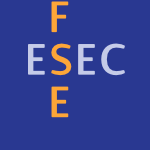 FSE-2012-AthanasopoulosZV #abstraction #quality
FSE-2012-AthanasopoulosZV #abstraction #quality- Service selection for happy users: making user-intuitive quality abstractions (DA, AZ, PV), p. 32.
 ICSE-2012-Chowdhury #development #tool support
ICSE-2012-Chowdhury #development #tool support- Assisting end-user development in browser-based mashup tools (SRC), pp. 1625–1627.
 ICSE-2012-MarianiP #composition #named #plugin
ICSE-2012-MarianiP #composition #named #plugin- MASH: A tool for end-user plug-in composition (LM, FP), pp. 1387–1390.
 SPLC-2012-LettnerVRG
SPLC-2012-LettnerVRG- Supporting end users with business calculations in product configuration (DL, MV, RR, PG), pp. 171–180.
 SPLC-2012-PleussHKB #case study #user interface #variability
SPLC-2012-PleussHKB #case study #user interface #variability- A case study on variability in user interfaces (AP, BH, MK, GB), pp. 6–10.
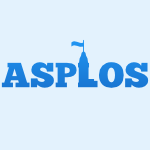 ASPLOS-2012-CaulfieldMEDCS #performance
ASPLOS-2012-CaulfieldMEDCS #performance- Providing safe, user space access to fast, solid state disks (AMC, TIM, LAE, AD, JC, SS), pp. 387–400.
 OSDI-2012-BelayBMTMK #cpu #named
OSDI-2012-BelayBMTMK #cpu #named- Dune: Safe User-level Access to Privileged CPU Features (AB, AB, AJM, DT, DM, CK), pp. 335–348.
 ICST-2012-BlancoTS #approach #evaluation #interactive #test coverage #testing
ICST-2012-BlancoTS #approach #evaluation #interactive #test coverage #testing- Test Adequacy Evaluation for the User-database Interaction: A Specification-Based Approach (RB, JT, RVS), pp. 71–80.
 ICST-2012-SprenkleCP #classification #modelling #statistics #web
ICST-2012-SprenkleCP #classification #modelling #statistics #web- Leveraging User-Privilege Classification to Customize Usage-based Statistical Models of Web Applications (SS, CC, LLP), pp. 161–170.
 ICST-2012-ZamanAH #analysis #empirical #performance #scalability
ICST-2012-ZamanAH #analysis #empirical #performance #scalability- A Large Scale Empirical Study on User-Centric Performance Analysis (SZ, BA, AEH), pp. 410–419.
 ISSTA-2012-StaatsHKR #comprehension #correctness #invariant
ISSTA-2012-StaatsHKR #comprehension #correctness #invariant- Understanding user understanding: determining correctness of generated program invariants (MS, SH, MK, GR), pp. 188–198.
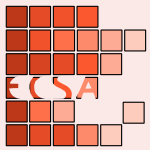 ECSA-2011-DwivediEFGS #approach #architecture
ECSA-2011-DwivediEFGS #approach #architecture- An Architectural Approach to End User Orchestrations (VD, PVE, JMF, DG, BRS), pp. 370–378.
 ASE-2011-KamalrudinG #generative #prototype #requirements #user interface #validation
ASE-2011-KamalrudinG #generative #prototype #requirements #user interface #validation- Generating essential user interface prototypes to validate requirements (MK, JCG), pp. 564–567.
 ASE-2011-WinbladhR #testing
ASE-2011-WinbladhR #testing- Evaluating test selection strategies for end-user specified flow-based applications (KW, AR), pp. 400–403.
 HT-2011-ChoudhuryCC #identification #social #social media
HT-2011-ChoudhuryCC #identification #social #social media- Identifying relevant social media content: leveraging information diversity and user cognition (MDC, SC, MC), pp. 161–170.
 HT-2011-Hearst #roadmap #user interface
HT-2011-Hearst #roadmap #user interface- Emerging trends in search user interfaces (MAH), pp. 5–6.
 HT-2011-SeroussiBZ #modelling #personalisation #predict #rating #using
HT-2011-SeroussiBZ #modelling #personalisation #predict #rating #using- Personalised rating prediction for new users using latent factor models (YS, FB, IZ), pp. 47–56.
 ICDAR-2011-ChazalonCL #analysis #documentation #interactive #performance
ICDAR-2011-ChazalonCL #analysis #documentation #interactive #performance- Iterative Analysis of Pages in Document Collections for Efficient User Interaction (JC, BC, AL), pp. 503–507.
 ICDAR-2011-HadjarI #generative #layout
ICDAR-2011-HadjarI #generative #layout- Minimizing User Annotations in the Generation of Layout Ground-Truthed Data (KH, RI), pp. 703–707.
 ICSM-2011-SampathBJM #reduction #testing
ICSM-2011-SampathBJM #reduction #testing- A tool for combination-based prioritization and reduction of user-session-based test suites (SS, RCB, SJ, SM), pp. 574–577.
 WCRE-2011-Raber #debugging #kernel #profiling
WCRE-2011-Raber #debugging #kernel #profiling- Stealthy Profiling and Debugging of Malware Trampolining from User to Kernel Space (JR), pp. 431–432.
 AFL-2011-LoeligerN #design #graph #user interface
AFL-2011-LoeligerN #design #graph #user interface- Affordance Graphs for User Interface Design: Application of Category-theoretic Constructs (EAL, CLN), pp. 392–394.
 SEFM-2011-MoriLDID #adaptation #configuration management #self
SEFM-2011-MoriLDID #adaptation #configuration management #self- Leveraging State-Based User Preferences in Context-Aware Reconfigurations for Self-Adaptive Systems (MM, FL, CD, PI, SD), pp. 286–301.
 CEFP-2011-PlasmeijerALM #multi #web
CEFP-2011-PlasmeijerALM #multi #web- Defining Multi-user Web Applications with iTasks (RP, PA, BL, SM), pp. 46–92.
 ICFP-2011-KrishnaswamiB #semantics #user interface #visual notation
ICFP-2011-KrishnaswamiB #semantics #user interface #visual notation- A semantic model for graphical user interfaces (NRK, NB), pp. 45–57.
 CHI-2011-AyyavuJ #feedback #heuristic #privacy #security
CHI-2011-AyyavuJ #feedback #heuristic #privacy #security- Integrating user feedback with heuristic security and privacy management systems (PA, CJ), pp. 2305–2314.
 CHI-2011-BakkeKM #user interface
CHI-2011-BakkeKM #user interface- A spreadsheet-based user interface for managing plural relationships in structured data (EB, DRK, RM), pp. 2541–2550.
 CHI-2011-Bargas-AvilaH #analysis #challenge #empirical #experience #novel #user interface
CHI-2011-Bargas-AvilaH #analysis #challenge #empirical #experience #novel #user interface- Old wine in new bottles or novel challenges: a critical analysis of empirical studies of user experience (JABA, KH), pp. 2689–2698.
 CHI-2011-BogunovichS #behaviour #constraints
CHI-2011-BogunovichS #behaviour #constraints- The effects of time constraints on user behavior for deferrable interruptions (PB, DDS), pp. 3123–3126.
 CHI-2011-BoringGWBSB #interactive #mobile #multi #video
CHI-2011-BoringGWBSB #interactive #mobile #multi #video- Multi-user interaction on media facades through live video on mobile devices (SB, SG, AW, AMB, JS, AB), pp. 2721–2724.
 CHI-2011-BurkeKM #facebook #social
CHI-2011-BurkeKM #facebook #social- Social capital on facebook: differentiating uses and users (MB, RK, CM), pp. 571–580.
 CHI-2011-ChauKHF #interactive #machine learning #named #network #scalability
CHI-2011-ChauKHF #interactive #machine learning #named #network #scalability- Apolo: making sense of large network data by combining rich user interaction and machine learning (DHC, AK, JIH, CF), pp. 167–176.
 CHI-2011-ChongG #how
CHI-2011-ChongG #how- How users associate wireless devices (MKC, HG), pp. 1909–1918.
 CHI-2011-DeckersWAO #design
CHI-2011-DeckersWAO #design- Designing for perceptual crossing to improve user involvement (ED, SW, RA, KO), pp. 1929–1938.
 CHI-2011-DongHK #interface #performance
CHI-2011-DongHK #interface #performance- Entity-linking interfaces in user-contributed content: preference and performance (XD, FMH, JAK), pp. 2187–2196.
 CHI-2011-FidasVA #on the
CHI-2011-FidasVA #on the- On the necessity of user-friendly CAPTCHA (CF, AGV, NMA), pp. 2623–2626.
 CHI-2011-GormanRYBK #adaptation #testing #usability
CHI-2011-GormanRYBK #adaptation #testing #usability- Adapting usability testing for oral, rural users (TG, EJR, JY, AB, BEK), pp. 1437–1440.
 CHI-2011-HarrisonHWFH #design #named #user interface #using #visual notation
CHI-2011-HarrisonHWFH #design #named #user interface #using #visual notation- Kineticons: using iconographic motion in graphical user interface design (CH, GH, KDDW, JF, SEH), pp. 1999–2008.
 CHI-2011-HechtHSC #twitter
CHI-2011-HechtHSC #twitter- Tweets from Justin Bieber’s heart: the dynamics of the location field in user profiles (BH, LH, BS, EHC), pp. 237–246.
 CHI-2011-HillDAGM #experience #eye tracking #web
CHI-2011-HillDAGM #experience #eye tracking #web- Older web users’ eye movements: experience counts (RLH, AD, JLA, PG, LM), pp. 1151–1160.
 CHI-2011-KelleyBCS #question
CHI-2011-KelleyBCS #question- When are users comfortable sharing locations with advertisers? (PGK, MB, LFC, NMS), pp. 2449–2452.
 CHI-2011-KimR
CHI-2011-KimR- User perceptions of the role and value of tags (YMK, SYR), pp. 671–674.
 CHI-2011-KimS #community #health #interface #online #using
CHI-2011-KimS #community #health #interface #online #using- Using interface cues in online health community boards to change impressions and encourage user contribution (HSK, SSS), pp. 599–608.
 CHI-2011-LaquaSGG #case study #information management
CHI-2011-LaquaSGG #case study #information management- Do you know dis?: a user study of a knowledge discovery tool for organizations (SL, MAS, SG, CG), pp. 2887–2896.
 CHI-2011-LarsonCGRHFP #interactive #named
CHI-2011-LarsonCGRHFP #interactive #named- HeatWave: thermal imaging for surface user interaction (ECL, GC, SG, XR, BLH, DF, SP), pp. 2565–2574.
 CHI-2011-LuL #gesture #mobile #user interface #using
CHI-2011-LuL #gesture #mobile #user interface #using- Gesture avatar: a technique for operating mobile user interfaces using gestures (HL, YL), pp. 207–216.
 CHI-2011-MarshallMRKD #approach #how #interface #multi
CHI-2011-MarshallMRKD #approach #how #interface #multi- Rethinking “multi-user”: an in-the-wild study of how groups approach a walk-up-and-use tabletop interface (PM, RM, YR, SK, MD), pp. 3033–3042.
 CHI-2011-McGee-LennonWB #multimodal
CHI-2011-McGee-LennonWB #multimodal- User-centred multimodal reminders for assistive living (MRML, MKW, SAB), pp. 2105–2114.
 CHI-2011-OregliaLZ #case study #design #experience
CHI-2011-OregliaLZ #case study #design #experience- Designing for emerging rural users: experiences from China (EO, YL, WZ), pp. 1433–1436.
 CHI-2011-RuizLL #gesture #interactive #mobile
CHI-2011-RuizLL #gesture #interactive #mobile- User-defined motion gestures for mobile interaction (JR, YL, EL), pp. 197–206.
 CHI-2011-ScarrCGQ #comprehension #user interface
CHI-2011-ScarrCGQ #comprehension #user interface- Dips and ceilings: understanding and supporting transitions to expertise in user interfaces (JS, AC, CG, PQ), pp. 2741–2750.
 CHI-2011-SchwindBH #recommendation
CHI-2011-SchwindBH #recommendation- I will do it, but i don’t like it: user reactions to preference-inconsistent recommendations (CS, JB, FWH), pp. 349–352.
 CHI-2011-SearsH #representation #research
CHI-2011-SearsH #representation #research- Representing users in accessibility research (AS, VLH), pp. 2235–2238.
 CHI-2011-SoloveyLCWPSSFSGJ #adaptation #multi #user interface
CHI-2011-SoloveyLCWPSSFSGJ #adaptation #multi #user interface- Sensing cognitive multitasking for a brain-based adaptive user interface (ETS, FL, KC, DW, MP, MS, AS, SF, PWS, AG, RJKJ), pp. 383–392.
 CHI-2011-TausczikP #online #predict #quality
CHI-2011-TausczikP #online #predict #quality- Predicting the perceived quality of online mathematics contributions from users’ reputations (YRT, JWP), pp. 1885–1888.
 CHI-2011-WacharamanothamHMKSB
CHI-2011-WacharamanothamHMKSB- Evaluating swabbing: a touchscreen input method for elderly users with tremor (CW, JH, AM, MK, CMS, JOB), pp. 623–626.
 CHI-2011-YataniNTT #bibliography #user interface #using #word
CHI-2011-YataniNTT #bibliography #user interface #using #word- Review spotlight: a user interface for summarizing user-generated reviews using adjective-noun word pairs (KY, MN, AT, KNT), pp. 1541–1550.
 CHI-2011-YeeDYN
CHI-2011-YeeDYN- Do men heal more when in drag?: conflicting identity cues between user and avatar (NY, ND, MY, LN), pp. 773–776.
 CSCW-2011-AlvesF #adaptation #chat #consistency #multi #named #performance #requirements #scalability
CSCW-2011-AlvesF #adaptation #chat #consistency #multi #named #performance #requirements #scalability- ReConMUC: adaptable consistency requirements for efficient large-scale multi-user chat (PA, PF), pp. 553–562.
 CSCW-2011-BrubakerH11a #framework #representation
CSCW-2011-BrubakerH11a #framework #representation- SELECT * FROM USER: infrastructure and socio-technical representation (JRB, GRH), pp. 369–378.
 CSCW-2011-InkpenS #communication
CSCW-2011-InkpenS #communication- Me and my avatar: exploring users’ comfort with avatars for workplace communication (KMI, MS), pp. 383–386.
 CSCW-2011-KamranC #collaboration #ontology #social #social media #using
CSCW-2011-KamranC #collaboration #ontology #social #social media #using- Defining ontology by using users collaboration on social media (SK, FC), pp. 657–660.
 CSCW-2011-TanakaF #estimation
CSCW-2011-TanakaF #estimation- Study of user interruptibility estimation based on focused application switching (TT, KF), pp. 721–724.
 DHM-2011-LinMC
DHM-2011-LinMC- Dynamic Power Tool Operation Model: Experienced Users vs. Novice Users (JHL, RWM, CCC), pp. 394–398.
 DHM-2011-SchmuntzschR #multimodal #user interface
DHM-2011-SchmuntzschR #multimodal #user interface- Multimodal User Interfaces in IPS2 (US, MR), pp. 347–356.
 DUXU-v1-2011-AndersonDG #latency
DUXU-v1-2011-AndersonDG #latency- User Perception of Touch Screen Latency (GJA, RD, SG), pp. 195–202.
 DUXU-v1-2011-AuingerAKH #design #difference #question #web
DUXU-v1-2011-AuingerAKH #design #difference #question #web- Conformity with User Expectations on the Web: Are There Cultural Differences for Design Principles? (AA, AMA, HK, AH), pp. 3–12.
 DUXU-v1-2011-BaltrunasLPR #mobile #recommendation
DUXU-v1-2011-BaltrunasLPR #mobile #recommendation- Context-Aware Places of Interest Recommendations for Mobile Users (LB, BL, SP, FR), pp. 531–540.
 DUXU-v1-2011-BeccariO #approach #experience #user interface
DUXU-v1-2011-BeccariO #approach #experience #user interface- A Philosophical Approach about User Experience Methodology (MNB, TLO), pp. 13–22.
 DUXU-v1-2011-ChampneyKS #design #performance #process
DUXU-v1-2011-ChampneyKS #design #performance #process- Making the Design Process More Usable: Aligning Design with User Performance (RKC, CK, KMS), pp. 33–42.
 DUXU-v1-2011-HungYVK #mobile #research
DUXU-v1-2011-HungYVK #mobile #research- Mobile QWERTY User Research (YSH, SY, SV, NEK), pp. 583–592.
 DUXU-v1-2011-KisoKKYJF #mobile #usability
DUXU-v1-2011-KisoKKYJF #mobile #usability- Clarification of Kansei Elements of Attractiveness Related to Usability for Long Term Mobile Phone Users (HK, NK, KK, MY, HJ, SF), pp. 602–610.
 DUXU-v1-2011-Liem #approach #concept #design #development #user interface
DUXU-v1-2011-Liem #approach #concept #design #development #user interface- A Culturally Driven Approach for the Development of Innovative User Interface Design Concepts (AL), pp. 84–93.
 DUXU-v1-2011-Loi #design #experience #industrial #user interface
DUXU-v1-2011-Loi #design #experience #industrial #user interface- Changing the TV Industry through User Experience Design (DL), pp. 465–474.
 DUXU-v1-2011-MarcusDW #design
DUXU-v1-2011-MarcusDW #design- User-Experience for Personal Sustainability Software: Determining Design Philosophy and Principles (AM, JD, LW), pp. 172–177.
 DUXU-v1-2011-OzturkR #experience #how #mobile #network #social #user interface
DUXU-v1-2011-OzturkR #experience #how #mobile #network #social #user interface- How to Improve User Experience in Mobile Social Networking: A User-Centered Study with Turkish Mobile Social Network Site Users (ÖÖ, KR), pp. 521–530.
 DUXU-v1-2011-RamanenRES #mobile
DUXU-v1-2011-RamanenRES #mobile- User Studies on Mobile Ticketing (JR, SR, ME, AS), pp. 630–639.
 DUXU-v1-2011-SimpsonP #exclamation #experience #user interface
DUXU-v1-2011-SimpsonP #exclamation #experience #user interface- Approaching Warp Speed!: Examining the User Experience in the Age of 4G (QS, SP), pp. 658–667.
 DUXU-v1-2011-SirotkinM #difference #experience #in the cloud #user interface #why
DUXU-v1-2011-SirotkinM #difference #experience #in the cloud #user interface #why- The New Experience for Business: Why User Experience Is the Differentiation Strategy in the Cloud Context (AS, BM), pp. 491–499.
 DUXU-v1-2011-SpyridonisG #2d #3d #visualisation
DUXU-v1-2011-SpyridonisG #2d #3d #visualisation- 2D vs. 3D Pain Visualization: User Preferences in a Spinal Cord Injury Cohort (FS, GG), pp. 315–322.
 DUXU-v1-2011-TomskyM #experience #performance #perspective #user interface
DUXU-v1-2011-TomskyM #experience #performance #perspective #user interface- Managing a Green Giant: Sustainability Performance Management, a User Experience Perspective (BT, AM), pp. 500–508.
 DUXU-v1-2011-WebbOMPC #mobile #testing
DUXU-v1-2011-WebbOMPC #mobile #testing- Oracle Mobile User Assistance Testing (ENW, UO, RM, LP, MC), pp. 687–695.
 DUXU-v1-2011-Zhu #design
DUXU-v1-2011-Zhu #design- Make User-Centered Design Sustainable in China (JZ), pp. 509–518.
 DUXU-v1-2011-ZilzF #composition
DUXU-v1-2011-ZilzF #composition- Smart User Assistance Based on Dynamic Model Composition (RZ, PF), pp. 706–714.
 DUXU-v2-2011-BaughD #design #experience #locality #user interface
DUXU-v2-2011-BaughD #design #experience #locality #user interface- Designing Notebook Computers to Ensure a Comfortable User Experience: Effects of Surface Temperature, Material, Locality, and Ambient Temperature (EB, RD), pp. 539–547.
 DUXU-v2-2011-DahlS #case study #composition #interface #smarttech #usability
DUXU-v2-2011-DahlS #case study #composition #interface #smarttech #usability- End-User Composition Interfaces for Smart Environments: A Preliminary Study of Usability Factors (YD, RMS), pp. 118–127.
 DUXU-v2-2011-ErC #evaluation #internet
DUXU-v2-2011-ErC #evaluation #internet- User Evaluation of Internet Kiosks in University Setting (EE, KÇ), pp. 394–403.
 DUXU-v2-2011-GaoZ #user satisfaction
DUXU-v2-2011-GaoZ #user satisfaction- User Satisfaction of Ali Wangwang, an Instant Messenger Tool (JG, ZZ), pp. 414–420.
 DUXU-v2-2011-InversiniCB #analysis #assessment #case study #experience #risk management #usability #user interface
DUXU-v2-2011-InversiniCB #analysis #assessment #case study #experience #risk management #usability #user interface- Connecting Usages with Usability Analysis through the User Experience Risk Assessment Model: A Case Study in the Tourism Domain (AI, LC, DB), pp. 283–293.
 DUXU-v2-2011-KimJH #concept #design #experience #implementation #user interface
DUXU-v2-2011-KimJH #concept #design #experience #implementation #user interface- Different UI, Same UX: A Design Concept for Implementing a Locally-Optimized and Globally-Unified User Experience (SWK, HKJ, DYH), pp. 440–448.
 DUXU-v2-2011-KimL11a #behaviour #mobile #research
DUXU-v2-2011-KimL11a #behaviour #mobile #research- Ethnographic Research of User Behavior of Mobile Devices of China, Korea, India, and The Netherlands (DK, KPL), pp. 294–302.
 DUXU-v2-2011-KimLD #collaboration
DUXU-v2-2011-KimLD #collaboration- DraWiing Together: Exploring Collaborative User Engagement in Art Exhibitions (HK, HJL, EYLD), pp. 142–151.
 DUXU-v2-2011-KimMLJAS #experience #metric #user interface
DUXU-v2-2011-KimMLJAS #experience #metric #user interface- Measurement of User Experience to Select a Comfortable Mattress (JYK, SNM, MHL, JHJ, JHA, YSS), pp. 449–458.
 DUXU-v2-2011-NakataniOKNH #case study #internet #layout
DUXU-v2-2011-NakataniOKNH #case study #internet #layout- The Layout for the User-Friendly Manual: Case Study on an Internet Set-Up Manual (MN, TO, YK, AN, SH), pp. 40–45.
 DUXU-v2-2011-NemeryBK #design #persuasion #social #user interface #validation
DUXU-v2-2011-NemeryBK #design #persuasion #social #user interface #validation- First Validation of Persuasive Criteria for Designing and Evaluating the Social Influence of User Interfaces: Justification of a Guideline (AN, EB, SK), pp. 616–624.
 DUXU-v2-2011-WatanabeYHA #user interface #web
DUXU-v2-2011-WatanabeYHA #user interface #web- Study of User Interface for Browsing Web Contents That Considers the Cognitive Features of Older Users (MW, SY, RH, YA), pp. 60–67.
 DUXU-v2-2011-YasumaN #artificial reality #question
DUXU-v2-2011-YasumaN #artificial reality #question- User Characteristic-Based Information-Providing Service for Museum with Optical See-Through Head-Mounted Display: Does It Evoke Enthusiasm? (YY, MN), pp. 234–242.
 DUXU-v2-2011-ZhangCV #case study #experience #modelling
DUXU-v2-2011-ZhangCV #case study #experience #modelling- Modeling Users’ Data Usage Experiences from Scientific Literature (JZ, CC, MSEV), pp. 337–346.
 HCD-2011-AryanaBN #communication #mobile
HCD-2011-AryanaBN #communication #mobile- Possibilities for Cultural Customization of Mobile Communication Devices: The Case of Iranian Mobile Users (BA, CB, AN), pp. 177–186.
 HCD-2011-BohmSW #design #experience #interactive #user interface
HCD-2011-BohmSW #design #experience #interactive #user interface- Smart Sol — Bringing User Experience to Facility Management: Designing the User Interaction of a Solar Control Unit (PB, TS, CW), pp. 187–196.
 HCD-2011-ChoiS #approach #design #implementation #process
HCD-2011-ChoiS #approach #design #implementation #process- A Design-Supporting Tool for Implementing the Learning-Based Approach: Accommodating Users’ Domain Knowledge into Design Processes (JMC, KS), pp. 369–378.
 HCD-2011-ChouC #interactive #physics
HCD-2011-ChouC #interactive #physics- Investigating Users’ Interaction with Physical Products Applying Qualitative and Quantitative Methods (CJC, CC), pp. 3–12.
 HCD-2011-HashizumeYK #experience #people #user interface
HCD-2011-HashizumeYK #experience #people #user interface- Real User Experience of ICT Devices among Elderly People (AH, TY, MK), pp. 227–234.
 HCD-2011-Hazlett-KnudsenSB #design #knowledge base #user interface
HCD-2011-Hazlett-KnudsenSB #design #knowledge base #user interface- Knowledge Based Design of User Interface for Operating an Assistive Robot (RHK, MAS, AB), pp. 304–312.
 HCD-2011-HumayounDC #agile #design #development #framework #integration
HCD-2011-HumayounDC #agile #design #development #framework #integration- A Three-Fold Integration Framework to Incorporate User-Centered Design into Agile Software Development (SRH, YD, TC), pp. 55–64.
 HCD-2011-Kurosu #experience #user interface #word
HCD-2011-Kurosu #experience #user interface #word- Descriptive Words for Expressing the User Experience (MK), pp. 81–90.
 HCD-2011-MirandaHB #empirical #interactive
HCD-2011-MirandaHB #empirical #interactive- Adjustable Interactive Rings for iDTV: First Results of an Experiment with End-Users (LCdM, HHH, MCCB), pp. 262–271.
 HCD-2011-NazemiBK #graph #taxonomy #visual notation #visualisation
HCD-2011-NazemiBK #graph #taxonomy #visual notation #visualisation- User-Oriented Graph Visualization Taxonomy: A Data-Oriented Examination of Visual Features (KN, MB, AK), pp. 576–585.
 HCD-2011-NazemiBPBK #adaptation #user interface #visualisation
HCD-2011-NazemiBPBK #adaptation #user interface #visualisation- Adapting User Interfaces by Analyzing Data Characteristics for Determining Adequate Visualizations (KN, DB, AP, MB, AK), pp. 566–575.
 HCD-2011-YamadaNM #interactive #web
HCD-2011-YamadaNM #interactive #web- Extraction of User Interaction Patterns for Low-Usability Web Pages (TY, NN, TM), pp. 144–152.
 HCI-DDA-2011-AbdullahAN #design #development #framework #towards #user interface
HCI-DDA-2011-AbdullahAN #design #development #framework #towards #user interface- Towards a Cognitive-Based User Interface Design Framework Development (NA, WAWA, NLMN), pp. 17–24.
 HCI-DDA-2011-AdikariMC #design #experience #framework #user interface
HCI-DDA-2011-AdikariMC #design #experience #framework #user interface- A Design Science Framework for Designing and Assessing User Experience (SA, CM, JAC), pp. 25–34.
 HCI-DDA-2011-BreinerBRSMD #adaptation #automation #generative #modelling #runtime #user interface #workflow
HCI-DDA-2011-BreinerBRSMD #adaptation #automation #generative #modelling #runtime #user interface #workflow- Automatic Adaptation of User Workflows within Model-Based User Interface Generation during Runtime on the Example of the SmartMote (KB, KB, TR, MS, GM, PD), pp. 165–174.
 HCI-DDA-2011-EngelMF #human-computer #interactive #user interface
HCI-DDA-2011-EngelMF #human-computer #interactive #user interface- HCI Patterns as a Means to Transform Interactive User Interfaces to Diverse Contexts of Use (JE, CM, PF), pp. 204–213.
 HCI-DDA-2011-GodonFRT #design pattern #interactive #internet #library
HCI-DDA-2011-GodonFRT #design pattern #interactive #internet #library- The First Interaction Design Pattern Library for Internet of Things User Created Applications (MG, MAF, MR, LT), pp. 229–237.
 HCI-DDA-2011-IglesiasT #component #representation #user interface #using
HCI-DDA-2011-IglesiasT #component #representation #user interface #using- User Interface Representation Using Simple Components (JRI, PMTF), pp. 278–287.
 HCI-DDA-2011-KogaT #recommendation #topic #twitter #using
HCI-DDA-2011-KogaT #recommendation #topic #twitter #using- Developing a User Recommendation Engine on Twitter Using Estimated Latent Topics (HK, TT), pp. 461–470.
 HCI-DDA-2011-Komischke #design #experience #framework #user interface
HCI-DDA-2011-Komischke #design #experience #framework #user interface- The Impact of Rich Application Frameworks on User Experience Design (TK), pp. 92–97.
 HCI-DDA-2011-LekkasTGMS
HCI-DDA-2011-LekkasTGMS- The Effects of Personality Type in User-Centered Appraisal Systems (ZL, NT, PG, CM, GS), pp. 388–396.
 HCI-DDA-2011-PeissnerSS #adaptation #approach #design pattern #user interface
HCI-DDA-2011-PeissnerSS #adaptation #approach #design pattern #user interface- A Design Patterns Approach to Adaptive User Interfaces for Users with Special Needs (MP, AS, DS), pp. 268–277.
 HCI-DDA-2011-SeisslerBM #adaptation #runtime #smarttech #towards #user interface
HCI-DDA-2011-SeisslerBM #adaptation #runtime #smarttech #towards #user interface- Towards Pattern-Driven Engineering of Run-Time Adaptive User Interfaces for Smart Production Environments (MS, KB, GM), pp. 299–308.
 HCI-DDA-2011-TakacsSP #adaptation #modelling #recognition #user interface
HCI-DDA-2011-TakacsSP #adaptation #modelling #recognition #user interface- Sensing User Needs: Recognition Technologies and User Models for Adaptive User Interfaces (BT, LS, MP), pp. 498–506.
 HCI-DDA-2011-Teixeira-FariaI #abstraction #component #user interface #visual notation
HCI-DDA-2011-Teixeira-FariaI #abstraction #component #user interface #visual notation- Complex Components Abstraction in Graphical User Interfaces (PMTF, JRI), pp. 309–318.
 HCI-DDA-2011-WuSYSQ #interactive #multi #named
HCI-DDA-2011-WuSYSQ #interactive #multi #named- uPlatform: A Customizable Multi-user Windowing System for Interactive Tabletop (CW, YS, CY, YS, YQ), pp. 507–516.
 HCI-DDA-2011-ZakiF #smarttech
HCI-DDA-2011-ZakiF #smarttech- User-Oriented Accessibility Patterns for Smart Environments (MZ, PF), pp. 319–327.
 HCI-DDA-2011-ZaragozaRBBMCR #detection
HCI-DDA-2011-ZaragozaRBBMCR #detection- A User-Friendly Tool for Detecting the Stress Level in a Person’s Daily Life (IZ, BR, CB, RMB, IM, DC, MAR), pp. 423–431.
 HCI-DDA-2011-ZhengWMZ #design #development #experience #user interface #workflow
HCI-DDA-2011-ZhengWMZ #design #development #experience #user interface #workflow- Streamlining User Experience Design and Development: Roles, Tasks and Workflow of Applying Rich Application Technologies (XSZ, MW, GM, SZ), pp. 142–151.
 HCI-ITE-2011-AngeliniCCKM #gesture #interactive #multi #scalability #using
HCI-ITE-2011-AngeliniCCKM #gesture #interactive #multi #scalability #using- Multi-user Pointing and Gesture Interaction for Large Screen Using Infrared Emitters and Accelerometers (LA, MC, SC, OAK, EM), pp. 185–193.
 HCI-ITE-2011-BarbuceanuADR #analysis #artificial reality #interactive #user interface
HCI-ITE-2011-BarbuceanuADR #analysis #artificial reality #interactive #user interface- Attentive User Interface for Interaction within Virtual Reality Environments Based on Gaze Analysis (FB, CA, MD, ZR), pp. 204–213.
 HCI-ITE-2011-BoulabiarBPC #interactive #low cost
HCI-ITE-2011-BoulabiarBPC #interactive #low cost- A Low-Cost Natural User Interaction Based on a Camera Hand-Gestures Recognizer (MIB, TB, FP, GC), pp. 214–221.
 HCI-ITE-2011-HsiaoJ #analysis #named #user interface
HCI-ITE-2011-HsiaoJ #analysis #named #user interface- TiMBA — Tangible User Interface for Model Building and Analysis (CPH, BRJ), pp. 43–52.
 HCI-ITE-2011-IkeYYMSYS #evaluation #user interface
HCI-ITE-2011-IkeYYMSYS #evaluation #user interface- Evaluation of User Support of a Hemispherical Sub-display with GUI Pointing Functions (SI, SY, YY, NM, KS, TY, HS), pp. 436–445.
 HCI-ITE-2011-JohnsonLNY #behaviour
HCI-ITE-2011-JohnsonLNY #behaviour- Analyzing User Behavior within a Haptic System (SLJ, YL, CSN, TY), pp. 62–70.
 HCI-ITE-2011-KarpovRK #multi #recognition #speech #user interface
HCI-ITE-2011-KarpovRK #multi #recognition #speech #user interface- An Assistive Bi-modal User Interface Integrating Multi-channel Speech Recognition and Computer Vision (AK, AR, ISK), pp. 454–463.
 HCI-ITE-2011-KuramotoYMT #interactive #multi #recommendation
HCI-ITE-2011-KuramotoYMT #interactive #multi #recommendation- Recommendation System Based on Interaction with Multiple Agents for Users with Vague Intention (IK, AY, MM, YT), pp. 351–357.
 HCI-ITE-2011-KwonCSAG #how #interactive #internet
HCI-ITE-2011-KwonCSAG #how #interactive #internet- Older User-Computer Interaction on the Internet: How Conversational Agents Can Help (WSK, VC, SIS, HA, JEG), pp. 533–536.
 HCI-ITE-2011-RiedenklauHR #user interface
HCI-ITE-2011-RiedenklauHR #user interface- Saving and Restoring Mechanisms for Tangible User Interfaces through Tangible Active Objects (ER, TH, HJR), pp. 110–118.
 HCI-ITE-2011-ZhouDC #smarttech #user interface
HCI-ITE-2011-ZhouDC #smarttech #user interface- Innovative User Interfaces for Wearable Computers in Real Augmented Environment (YZ, BD, RC), pp. 500–509.
 HCI-MIIE-2011-Abril-JimenezVWAG #framework #user interface
HCI-MIIE-2011-Abril-JimenezVWAG #framework #user interface- User Interface Framework for Ambient Intelligence Platforms (PAJ, CVM, MTAW, HA, JRBG), pp. 129–136.
 HCI-MIIE-2011-AshBCJLLMQUZ #programming
HCI-MIIE-2011-AshBCJLLMQUZ #programming- Scratchable Devices: User-Friendly Programming for Household Appliances (JA, MB, GC, SJ, SL, MLL, VNM, PQ, BU, EZ), pp. 137–146.
 HCI-MIIE-2011-BlazicaVM #named
HCI-MIIE-2011-BlazicaVM #named- ShoeBox: A Natural Way of Organizing Pictures According to User’s Affinities (BB, DV, DM), pp. 519–524.
 HCI-MIIE-2011-CearretaG #adaptation #interactive #towards
HCI-MIIE-2011-CearretaG #adaptation #interactive #towards- Toward Adapting Interactions by Considering User Emotions and Capabilities (IC, NGV), pp. 525–534.
 HCI-MIIE-2011-Dees #usability #user interface
HCI-MIIE-2011-Dees #usability #user interface- Usability of Nomadic User Interfaces (WD), pp. 195–204.
 HCI-MIIE-2011-Edlin-WhiteCDFLR #adaptation #challenge #interface
HCI-MIIE-2011-Edlin-WhiteCDFLR #adaptation #challenge #interface- Accessibility for Older Users through Adaptive Interfaces: Opportunities, Challenges and Achievements (REW, SC, MD, AF, SL, JckhR), pp. 483–489.
 HCI-MIIE-2011-EL-QiremC #development #experience #user interface
HCI-MIIE-2011-EL-QiremC #development #experience #user interface- Computer Usage and User Experience in Jordan: Development and Application of the Diamond Model of Territorial Factors (FAEQ, GC), pp. 490–499.
 HCI-MIIE-2011-MorFDF #experience #social #tool support #user interface
HCI-MIIE-2011-MorFDF #experience #social #tool support #user interface- User Experience of Social Bookmarking Tools (EM, NF, MGD, JAMF), pp. 510–516.
 HCI-MIIE-2011-TsaiSL #flexibility #mobile
HCI-MIIE-2011-TsaiSL #flexibility #mobile- Mobile Reminder for Flexible and Safe Medication Schedule for Home Users (PHT, CSS, JWSL), pp. 107–116.
 HCI-MIIE-2011-WalterSSGHSBLTS #behaviour #classification #multimodal
HCI-MIIE-2011-WalterSSGHSBLTS #behaviour #classification #multimodal- Multimodal Emotion Classification in Naturalistic User Behavior (SW, SS, MS, MG, DH, MS, RB, KL, HCT, FS), pp. 603–611.
 HCI-UA-2011-ChuangHH #design #interactive #web
HCI-UA-2011-ChuangHH #design #interactive #web- User Interactive Design for Digital TV Web Surfing (CFC, NH, SLH), pp. 439–442.
 HCI-UA-2011-FiddianBMFCKML #case study #design
HCI-UA-2011-FiddianBMFCKML #case study #design- An End User and Environment Field Study for an Inclusive Design of Consumer Products (TF, CB, MM, AF, JOC, PTK, YM, ML), pp. 443–452.
 HCI-UA-2011-HopeOHL #design #multi
HCI-UA-2011-HopeOHL #design #multi- Spatial Design, Designers and Users: Exploring the Meaning of Multi-party Service Cognition (TH, MO, YH, MHL), pp. 328–335.
 HCI-UA-2011-HuangB #perspective #usability
HCI-UA-2011-HuangB #perspective #usability- Evaluating Usability of Web-Based Electronic Government: Users’ Perspective (ZH, LB), pp. 456–465.
 HCI-UA-2011-KallinenKR #case study #experience #multi #tablet #user interface
HCI-UA-2011-KallinenKR #case study #experience #multi #tablet #user interface- The Effects of Content Type and Presentation Style on User Experiences of Multimedia Content on a Tablet PC (KK, JK, NR), pp. 466–475.
 HCI-UA-2011-LiJN #learning #user interface #visual notation
HCI-UA-2011-LiJN #learning #user interface #visual notation- Haptically Enhanced User Interface to Support Science Learning of Visually Impaired (YL, SLJ, CSN), pp. 68–76.
 HCI-UA-2011-Lu #experience #user interface
HCI-UA-2011-Lu #experience #user interface- Enhanced User Experience in Managing Personal Finance (CL), pp. 375–383.
 HCI-UA-2011-NisimuraMKKI #automation #development #identification #interface #recognition #speech
HCI-UA-2011-NisimuraMKKI #automation #development #identification #interface #recognition #speech- Development of Web-Based Voice Interface to Identify Child Users Based on Automatic Speech Recognition System (RN, SM, LK, HK, TI), pp. 607–616.
 HCI-UA-2011-OctaviaBCQL #3d #adaptation #collaboration #game studies #interactive #modelling #towards
HCI-UA-2011-OctaviaBCQL #3d #adaptation #collaboration #game studies #interactive #modelling #towards- User Modeling Approaches towards Adaptation of Users’ Roles to Improve Group Interaction in Collaborative 3D Games (JRO, AB, KC, PQ, KL), pp. 668–677.
 HCI-UA-2011-OlivierWP #game studies #music #named #recommendation
HCI-UA-2011-OlivierWP #game studies #music #named #recommendation- MusicTagger: Exploiting User Generated Game Data for Music Recommendation (HO, MW, NP), pp. 678–687.
 HIMI-v1-2011-HirasawaOY #design #process #user interface
HIMI-v1-2011-HirasawaOY #design #process #user interface- Connecting Envisioning Process to User Interface Design Process (NH, SO, KYK), pp. 13–19.
 HIMI-v1-2011-LeeKW #authentication #multi #smarttech #using
HIMI-v1-2011-LeeKW #authentication #multi #smarttech #using- Cryptanalysis to a Remote User Authentication Scheme Using Smart Cards for Multi-server Environment (YL, JK, DW), pp. 321–329.
 HIMI-v1-2011-LoudenFMDS #information management #user interface
HIMI-v1-2011-LoudenFMDS #information management #user interface- User Interface and Information Management of Scenarios (RL, MF, GAM, JD, SLS), pp. 30–39.
 HIMI-v1-2011-NasozBPR #metadata
HIMI-v1-2011-NasozBPR #metadata- A User-Centric Metadata Creation Tool for Preserving the Nation’s Ecological Data (FN, RCB, CJP, DJR), pp. 122–131.
 HIMI-v1-2011-NazemiBFBK #adaptation #semantics #visualisation
HIMI-v1-2011-NazemiBFBK #adaptation #semantics #visualisation- Interacting with Semantics: A User-Centered Visualization Adaptation Based on Semantics Data (KN, MB, JF, DB, AK), pp. 239–248.
 HIMI-v1-2011-NguyenV #behaviour #online #privacy #question
HIMI-v1-2011-NguyenV #behaviour #online #privacy #question- Does Privacy Information Influence Users’ Online Purchasing Behavior? (JHN, KPLV), pp. 349–358.
 HIMI-v1-2011-PlumbaumSKA #approach #semantics #user interface
HIMI-v1-2011-PlumbaumSKA #approach #semantics #user interface- My Personal User Interface: A Semantic User-Centric Approach to Manage and Share User Information (TP, KS, MK, SA), pp. 585–593.
 HIMI-v1-2011-TanakaF #estimation #interactive
HIMI-v1-2011-TanakaF #estimation #interactive- Interaction Mediate Agent Based on User Interruptibility Estimation (TT, KF), pp. 152–160.
 HIMI-v1-2011-TanakaYSN #comparison #using
HIMI-v1-2011-TanakaYSN #comparison #using- Characteristics of Comfortable Sheet Switches on Control Panels of Electrical Appliances: Comparison Using Older and Younger Users (YT, YY, MS, MN), pp. 498–507.
 HIMI-v2-2011-FukadaKKH #evaluation #information management #user interface #using
HIMI-v2-2011-FukadaKKH #evaluation #information management #user interface #using- Evaluation of Disaster Information Management System Using Tabletop User Interfaces (HF, KK, AK, NH), pp. 373–380.
 HIMI-v2-2011-Najjar #design #e-commerce #roadmap #user interface
HIMI-v2-2011-Najjar #design #e-commerce #roadmap #user interface- Advances in E-commerce User Interface Design (LJN), pp. 292–300.
 HIMI-v2-2011-ProctorV #bibliography #design #interactive #interface #perspective #web
HIMI-v2-2011-ProctorV #bibliography #design #interactive #interface #perspective #web- Designing Web Sites and Interfaces to Optimize Successful User Interactions: Symposium Overview (RWP, KPLV), pp. 62–65.
 HIMI-v2-2011-SakamotoNI #collaboration #multi #off the shelf
HIMI-v2-2011-SakamotoNI #collaboration #multi #off the shelf- Dodging Window Interference to Freely Share Any Off-the-Shelf Application among Multiple Users in Co-located Collaboration (SS, MN, TI), pp. 305–314.
 HIMI-v2-2011-SwierengaADP #design
HIMI-v2-2011-SwierengaADP #design- Real-World User-Centered Design: The Michigan Workforce Background Check System (SJS, FA, TAD, LAP), pp. 325–334.
 IDGD-2011-ChenCC11b #identification #user interface
IDGD-2011-ChenCC11b #identification #user interface- Identifying the Features of Friendly User Interfaces from Emotional Perspectives (LCC, PYC, YMC), pp. 293–301.
 IDGD-2011-HwangY #interface #multi
IDGD-2011-HwangY #interface #multi- Accommodating Both Expert Users and Novice Users in One Interface by Utilizing Multi-layer Interface in Complex Function Products (TKPH, HYY), pp. 159–165.
 IDGD-2011-LiuLGCWL #design #experience #research #user interface
IDGD-2011-LiuLGCWL #design #experience #research #user interface- Exhibition User Experience Research and Design for Applications of Context Awareness Technologies (JL, XL, BG, JC, JW, QL), pp. 533–542.
 IDGD-2011-OzturkRPKB #case study #interactive #network #smarttech #social
IDGD-2011-OzturkRPKB #case study #interactive #network #smarttech #social- The Impact of “Device” in Social Networking: An Explorative Study with Turkish Social Network Site Users on the Nature of Interactions through Personal Computers and Smartphones (ÖÖ, KR, SP, FK, OB), pp. 473–482.
 IDGD-2011-WangG #development #experience #mobile #network #research #user interface
IDGD-2011-WangG #development #experience #mobile #network #research #user interface- The User’s Emotional Elements Research of Mobile Network Products Development Guided by User Experience (YW, QG), pp. 332–340.
 IDGD-2011-WelkerGS #design #evaluation #web
IDGD-2011-WelkerGS #design #evaluation #web- Designing Web Marketing that Works for Users: Finding Best Practices through Evaluation and Conversation (KW, FYG, SS), pp. 407–416.
 IDGD-2011-WuCCL #design #evaluation #novel
IDGD-2011-WuCCL #design #evaluation #novel- Design and Evaluation of a Novel Trackball Input Device for Middle-Aged Users (FGW, JC, CHC, LRL), pp. 228–237.
 IDGD-2011-YangLD #behaviour #case study #internet #mobile
IDGD-2011-YangLD #behaviour #case study #internet #mobile- A Case Study: Behavior Study of Chinese Users on the Internet and Mobile Internet (YY, HL, GD), pp. 585–593.
 IDGD-2011-YuehLLC #design
IDGD-2011-YuehLLC #design- Menu Design of Digital Photo Frame for Older Users (HPY, WJL, TYL, YLC), pp. 265–272.
 OCSC-2011-AhmadL11a #question #what
OCSC-2011-AhmadL11a #question #what- Interpreting User-Generated Content: What Makes a Blog Believeable? (RA, WGL), pp. 81–89.
 OCSC-2011-HanCJ #case study #network #social #visualisation
OCSC-2011-HanCJ #case study #network #social #visualisation- A Study on Social Network Services Visualization Based on User Needs (YSH, JKC, YGJ), pp. 319–325.
 OCSC-2011-YongpisanpopOM #collaboration #community #ranking #web
OCSC-2011-YongpisanpopOM #collaboration #community #ranking #web- Community Search: A Collaborative Searching Web Application with a User Ranking System (PY, MO, KiM), pp. 378–386.
 CAiSE-2011-MateT #architecture #framework #metamodelling #modelling #requirements #traceability
CAiSE-2011-MateT #architecture #framework #metamodelling #modelling #requirements #traceability- A Trace Metamodel Proposal Based on the Model Driven Architecture Framework for the Traceability of User Requirements in Data Warehouses (AM, JT), pp. 123–137.
 CAiSE-2011-MohanA #comprehension #what
CAiSE-2011-MohanA #comprehension #what- What Methodology Attributes Are Critical for Potential Users? Understanding the Effect of Human Needs (KM, FA), pp. 314–328.
 CAiSE-2011-SunLZLY #comprehension
CAiSE-2011-SunLZLY #comprehension- Understanding the Diversity of Services Based on Users’ Identities (JS, FL, HZ, LL, ESKY), pp. 612–626.
 ICEIS-J-2011-Shen #comparison #comprehension #social #trust
ICEIS-J-2011-Shen #comparison #comprehension #social #trust- Understanding User’s Acceptance of Social Shopping Websites: Effects of Social Comparison and Trust (JS), pp. 365–373.
 ICEIS-v2-2011-WangJ #analysis #empirical
ICEIS-v2-2011-WangJ #analysis #empirical- An Empirical Analysis of Beijing Public Transport Users’ Satisfaction Level (HW, LJ), pp. 384–388.
 ICEIS-v4-2011-BenhaddiBA #approach #modelling
ICEIS-v4-2011-BenhaddiBA #approach #modelling- Model-driven Approach for User-centric Mashuped SOA (MB, KB, EHA), pp. 116–123.
 ICEIS-v4-2011-DavisC11a #data transformation #logic #metadata #modelling
ICEIS-v4-2011-DavisC11a #data transformation #logic #metadata #modelling- Variant Logic Meta-data Management for Model Driven Applications — Allows Unlimited End User Configuration and Customisation of All Meta-data EIS Application Features (JD, EC), pp. 395–400.
 ICEIS-v4-2011-MartinsP #implementation #visual notation
ICEIS-v4-2011-MartinsP #implementation #visual notation- A Method Proposal for Implementing Accessibility in Desktop Applications for Visually Impaired Users (LCGM, BEP), pp. 287–290.
 ICEIS-v4-2011-ShenE #comparison #social #trust
ICEIS-v4-2011-ShenE #comparison #social #trust- User Acceptance of Social Shopping Sites — Social Comparison and Trust (JS, LBE), pp. 219–224.
 ICEIS-v4-2011-WangS11a
ICEIS-v4-2011-WangS11a- Accessibility of Group Support for Blind Users (YW, JS), pp. 297–303.
 CIKM-2011-BaiCJ #feedback
CIKM-2011-BaiCJ #feedback- Discovering URLs through user feedback (XB, BBC, FPJ), pp. 77–86.
 CIKM-2011-CarteretteKY #behaviour #effectiveness #evaluation #simulation
CIKM-2011-CarteretteKY #behaviour #effectiveness #evaluation #simulation- Simulating simple user behavior for system effectiveness evaluation (BC, EK, EY), pp. 611–620.
 CIKM-2011-ChenCC #framework #hybrid #network #query
CIKM-2011-ChenCC #framework #hybrid #network #query- Coupling or decoupling for KNN search on road networks?: a hybrid framework on user query patterns (YJC, KTC, MSC), pp. 795–804.
 CIKM-2011-ChenHAXHP #image #modelling #process
CIKM-2011-ChenHAXHP #image #modelling #process- Perspective hierarchical dirichlet process for user-tagged image modeling (XC, XH, YA, ZX, TH, EKP), pp. 1341–1346.
 CIKM-2011-DongBHRC #optimisation #personalisation #recommendation
CIKM-2011-DongBHRC #optimisation #personalisation #recommendation- User action interpretation for personalized content optimization in recommender systems (AD, JB, XH, SR, YC), pp. 2129–2132.
 CIKM-2011-GiannopoulosBDS #learning #rank
CIKM-2011-GiannopoulosBDS #learning #rank- Learning to rank user intent (GG, UB, TD, TKS), pp. 195–200.
 CIKM-2011-JonesHTS #documentation #interactive
CIKM-2011-JonesHTS #documentation #interactive- Relative effect of spam and irrelevant documents on user interaction with search engines (TJ, DH, PT, RS), pp. 2113–2116.
 CIKM-2011-Karger #people #user interface
CIKM-2011-Karger #people #user interface- Creating user interfaces that entice people to manage better information (DRK), pp. 1–2.
 CIKM-2011-KimQYL #approach #behaviour
CIKM-2011-KimQYL #approach #behaviour- Advertiser-centric approach to understand user click behavior in sponsored search (SK, TQ, HY, TYL), pp. 2121–2124.
 CIKM-2011-LeeJL #reachability #web
CIKM-2011-LeeJL #reachability #web- Assisting web search users by destination reachability (CHL, AJ, LL), pp. 719–728.
 CIKM-2011-LiCHLJ #collaboration #learning #online
CIKM-2011-LiCHLJ #collaboration #learning #online- Collaborative online learning of user generated content (GL, KC, SCHH, WL, RJ), pp. 285–290.
 CIKM-2011-LiuCZZ #behaviour #crawling #web
CIKM-2011-LiuCZZ #behaviour #crawling #web- User browsing behavior-driven web crawling (ML, RC, MZ, LZ), pp. 87–92.
 CIKM-2011-UysalC #approach #microblog #ranking #twitter
CIKM-2011-UysalC #approach #microblog #ranking #twitter- User oriented tweet ranking: a filtering approach to microblogs (IU, WBC), pp. 2261–2264.
 CIKM-2011-WangLF #network
CIKM-2011-WangLF #network- Connecting users with similar interests via tag network inference (XW, HL, WF), pp. 1019–1024.
 CIKM-2011-WenL #social
CIKM-2011-WenL #social- Improving user interest inference from social neighbors (ZW, CYL), pp. 1001–1006.
 ECIR-2011-ChilukaAP #approach #predict #recommendation #scalability
ECIR-2011-ChilukaAP #approach #predict #recommendation #scalability- A Link Prediction Approach to Recommendations in Large-Scale User-Generated Content Systems (NC, NA, JAP), pp. 189–200.
 ECIR-2011-HannonMS #recommendation #twitter
ECIR-2011-HannonMS #recommendation #twitter- Finding Useful Users on Twitter: Twittomender the Followee Recommender (JH, KM, BS), pp. 784–787.
 ECIR-2011-HefnyDA #exclamation #query
ECIR-2011-HefnyDA #exclamation #query- Is a Query Worth Translating: Ask the Users! (AH, KD, AA), pp. 238–250.
 ECIR-2011-Joachims #feedback
ECIR-2011-Joachims #feedback- The Value of User Feedback (TJ), p. 6.
 ECIR-2011-KoflerLH #internet #video
ECIR-2011-KoflerLH #internet #video- To Seek, Perchance to Fail: Expressions of User Needs in Internet Video Search (CK, ML, AH), pp. 611–616.
 ECIR-2011-LiWJC #clustering #documentation #web
ECIR-2011-LiWJC #clustering #documentation #web- User-Related Tag Expansion for Web Document Clustering (PL, BW, WJ, YC), pp. 19–31.
 ECIR-2011-SmirnovaB
ECIR-2011-SmirnovaB- A User-Oriented Model for Expert Finding (ES, KB), pp. 580–592.
 ECIR-2011-SteinH #ranking
ECIR-2011-SteinH #ranking- Introducing the User-over-Ranking Hypothesis (BS, MH), pp. 503–509.
 KDD-2011-AhmedLAJS #behaviour #distributed #scalability
KDD-2011-AhmedLAJS #behaviour #distributed #scalability- Scalable distributed inference of dynamic user interests for behavioral targeting (AA, YL, MA, VJ, AJS), pp. 114–122.
 KDD-2011-ChenGTY #rating
KDD-2011-ChenGTY #rating- User reputation in a comment rating environment (BCC, JG, BLT, JY), pp. 159–167.
 KDD-2011-ChoML #network #social
KDD-2011-ChoML #network #social- Friendship and mobility: user movement in location-based social networks (EC, SAM, JL), pp. 1082–1090.
 KDD-2011-GundechaBL #network #privacy #social
KDD-2011-GundechaBL #network #privacy #social- Exploiting vulnerability to secure user privacy on a social networking site (PG, GB, HL), pp. 511–519.
 KDD-2011-KorenLMS #automation #email
KDD-2011-KorenLMS #automation #email- Automatically tagging email by leveraging other users’ folders (YK, EL, YM, RS), pp. 913–921.
 KDD-2011-LowAS #multi #personalisation
KDD-2011-LowAS #multi #personalisation- Multiple domain user personalization (YL, DA, AJS), pp. 123–131.
 KDD-2011-MetwallyP
KDD-2011-MetwallyP- Estimating the number of users behind ip addresses for combating abusive traffic (AM, MP), pp. 249–257.
 KDD-2011-PennacchiottiP #classification #twitter
KDD-2011-PennacchiottiP #classification #twitter- Democrats, republicans and starbucks afficionados: user classification in twitter (MP, AMP), pp. 430–438.
 KDD-2011-TanLTJZL #analysis #network #sentiment #social
KDD-2011-TanLTJZL #analysis #network #sentiment #social- User-level sentiment analysis incorporating social networks (CT, LL, JT, LJ, MZ, PL), pp. 1397–1405.
 KDD-2011-TrasartiPNG #mining
KDD-2011-TrasartiPNG #mining- Mining mobility user profiles for car pooling (RT, FP, MN, FG), pp. 1190–1198.
 KDD-2011-ZhangCWY #behaviour #comprehension #modelling #predict
KDD-2011-ZhangCWY #behaviour #comprehension #modelling #predict- User-click modeling for understanding and predicting search-behavior (YZ, WC, DW, QY), pp. 1388–1396.
 KDIR-2011-ConroyGO #similarity #twitter
KDIR-2011-ConroyGO #similarity #twitter- Measuring Twitter user Similarity as a Function of Strength of Ties (JC, JG, CO), pp. 262–270.
 KDIR-2011-OzakiE #difference #empirical #estimation
KDIR-2011-OzakiE #difference #empirical #estimation- Estimation of Implicit user Influence from Proxy Logs — An Empirical Study on the Effects of Time Difference and Popularity (TO, ME), pp. 250–255.
 KDIR-2011-RenC #markov #modelling #predict #transaction
KDIR-2011-RenC #markov #modelling #predict #transaction- Users Interest Prediction Model — Based on 2nd Markov Model and Inter-transaction Association Rules (YR, ALC), pp. 244–249.
 KEOD-2011-KotowskiHGHS #design #user interface #workflow
KEOD-2011-KotowskiHGHS #design #user interface #workflow- Leveraging user Knowledge — Design Principles for an Intuitive User Interface for Building Workflows (DK, GH, MGG, HH, DAS), pp. 176–182.
 KEOD-2011-OngenaeBSVGJZVAT #design #ontology #towards
KEOD-2011-OngenaeBSVGJZVAT #design #ontology #towards- Participatory Design of a Continuous Care Ontology — Towards a User-driven Ontology Engineering Methodology (FO, LB, NS, MV, MvG, AJ, SDZ, PV, AA, FDT), pp. 81–90.
 KMIS-2011-WeberL #approach #assessment #quality #social
KMIS-2011-WeberL #approach #assessment #quality #social- A User Centered Approach for Quality Assessment in Social Systems (NW, SNL), pp. 211–216.
 RecSys-2011-IsaacmanICM #distributed #predict #rating
RecSys-2011-IsaacmanICM #distributed #predict #rating- Distributed rating prediction in user generated content streams (SI, SI, AC, MM), pp. 69–76.
 RecSys-2011-KnijnenburgRW #how #interactive #recommendation
RecSys-2011-KnijnenburgRW #how #interactive #recommendation- Each to his own: how different users call for different interaction methods in recommender systems (BPK, NJMR, MCW), pp. 141–148.
 RecSys-2011-KnijnenburgWK #evaluation #recommendation
RecSys-2011-KnijnenburgWK #evaluation #recommendation- A pragmatic procedure to support the user-centric evaluation of recommender systems (BPK, MCW, AK), pp. 321–324.
 RecSys-2011-LiuMX #multi #recommendation
RecSys-2011-LiuMX #multi #recommendation- Multi-criteria service recommendation based on user criteria preferences (LL, NM, DLX), pp. 77–84.
 RecSys-2011-LiZL #integration #named #personalisation #recommendation
RecSys-2011-LiZL #integration #named #personalisation #recommendation- LOGO: a long-short user interest integration in personalized news recommendation (LL, LZ, TL), pp. 317–320.
 RecSys-2011-LopsGSNM #network #social
RecSys-2011-LopsGSNM #network #social- Leveraging the linkedin social network data for extracting content-based user profiles (PL, MdG, GS, FN, CM), pp. 293–296.
 RecSys-2011-PuCH #evaluation #framework #recommendation
RecSys-2011-PuCH #evaluation #framework #recommendation- A user-centric evaluation framework for recommender systems (PP, LC, RH), pp. 157–164.
 RecSys-2011-Tunkelang #recommendation
RecSys-2011-Tunkelang #recommendation- Recommendations as a conversation with the user (DT), pp. 11–12.
 SEKE-2011-AllisonAYC #approach #re-engineering
SEKE-2011-AllisonAYC #approach #re-engineering- A Software Engineering Approach to User-Driven Control of the Microgrid (MA, AAA, ZY, PJC), pp. 59–64.
 SEKE-2011-FaureFHUV #execution #ubiquitous
SEKE-2011-FaureFHUV #execution #ubiquitous- User-defined Scenarios in Ubiquitous Environments: Creation, Execution Control and Sharing (MF, LF, MH, CU, SV), pp. 302–307.
 SEKE-2011-Satoh #multi
SEKE-2011-Satoh #multi- Context-aware Services for Multiple-Users (IS), pp. 315–318.
 SIGIR-2011-Baeza-YatesM #retrieval #web
SIGIR-2011-Baeza-YatesM #retrieval #web- Web retrieval: the role of users (RABY, YM), pp. 1303–1304.
 SIGIR-2011-Bhatia #multi
SIGIR-2011-Bhatia #multi- Multidimensional search result diversification: diverse search results for diverse users (SB), pp. 1331–1332.
 SIGIR-2011-Carterette #concept #effectiveness #framework #modelling
SIGIR-2011-Carterette #concept #effectiveness #framework #modelling- System effectiveness, user models, and user utility: a conceptual framework for investigation (BC), pp. 903–912.
 SIGIR-2011-CetintasCSSD #modelling #online #probability
SIGIR-2011-CetintasCSSD #modelling #online #probability- Forecasting counts of user visits for online display advertising with probabilistic latent class models (SC, DC, LS, BS, ZD), pp. 1217–1218.
 SIGIR-2011-CuiWLOYS #predict #ranking #social #what
SIGIR-2011-CuiWLOYS #predict #ranking #social #what- Who should share what?: item-level social influence prediction for users and posts ranking (PC, FW, SL, MO, SY, LS), pp. 185–194.
 SIGIR-2011-ElsweilerLTF #evaluation #query
SIGIR-2011-ElsweilerLTF #evaluation #query- Seeding simulated queries with user-study data forpersonal search evaluation (DE, DEL, JCT, RTF), pp. 25–34.
 SIGIR-2011-FilippovaH #categorisation #metadata #video
SIGIR-2011-FilippovaH #categorisation #metadata #video- Improved video categorization from text metadata and user comments (KF, KBH), pp. 835–842.
 SIGIR-2011-JethavaCBBD #identification #multi #scalability #using
SIGIR-2011-JethavaCBBD #identification #multi #scalability #using- Scalable multi-dimensional user intent identification using tree structured distributions (VJ, LCB, RABY, CB, DPD), pp. 395–404.
 SIGIR-2011-LagunA #interactive #named #scalability #web
SIGIR-2011-LagunA #interactive #named #scalability #web- ViewSer: enabling large-scale remote user studies of web search examination and interaction (DL, EA), pp. 365–374.
 SIGIR-2011-LiuSL #estimation
SIGIR-2011-LiuSL #estimation- Competition-based user expertise score estimation (JL, YIS, CYL), pp. 425–434.
 SIGIR-2011-MoravejiRBM #performance
SIGIR-2011-MoravejiRBM #performance- Measuring improvement in user search performance resulting from optimal search tips (NM, DMR, JB, DM), pp. 355–364.
 SIGIR-2011-SinghPS #behaviour #query
SIGIR-2011-SinghPS #behaviour #query- User behavior in zero-recall ecommerce queries (GS, NP, NS), pp. 75–84.
 SIGIR-2011-SmuckerJ #case study #comparison
SIGIR-2011-SmuckerJ #case study #comparison- Measuring assessor accuracy: a comparison of nist assessors and user study participants (MDS, CPJ), pp. 1231–1232.
 SIGIR-2011-YangLSZZ #collaboration #learning #recommendation #using
SIGIR-2011-YangLSZZ #collaboration #learning #recommendation #using- Collaborative competitive filtering: learning recommender using context of user choice (SHY, BL, AJS, HZ, ZZ), pp. 295–304.
 SIGIR-2011-ZhangCB #behaviour #predict
SIGIR-2011-ZhangCB #behaviour #predict- Predicting users’ domain knowledge from search behaviors (XZ, MJC, NJB), pp. 1225–1226.
 SIGIR-2011-ZhangMLM #approach #how #information retrieval #ranking
SIGIR-2011-ZhangMLM #approach #how #information retrieval #ranking- How to count thumb-ups and thumb-downs?: an information retrieval approach to user-rating based ranking of items (DZ, RM, HL, JM), pp. 1223–1224.
 ECOOP-2011-Chambers
ECOOP-2011-Chambers- Expressiveness, Simplicity, and Users (CC), p. 229.
 OOPSLA-2011-BuseSW #evaluation #re-engineering #research
OOPSLA-2011-BuseSW #evaluation #re-engineering #research- Benefits and barriers of user evaluation in software engineering research (RPLB, CS, WW), pp. 643–656.
 GPCE-2011-FreemanJKMP
GPCE-2011-FreemanJKMP- Helping programmers help users (JF, JJ, WK, MM, SP), pp. 177–184.
 RE-2011-BrillK #elicitation #requirements
RE-2011-BrillK #elicitation #requirements- Structured and unobtrusive observation of anonymous users and their context for requirements elicitation (OB, EK), pp. 175–184.
 RE-2011-SeyffOB #named #requirements
RE-2011-SeyffOB #named #requirements- iRequire: Gathering end-user requirements for new apps (NS, GO, MB), pp. 347–348.
 REFSQ-2011-DhunganaSG #elicitation #modelling #product line #requirements #research #using #variability
REFSQ-2011-DhunganaSG #elicitation #modelling #product line #requirements #research #using #variability- Research Preview: Supporting End-User Requirements Elicitation Using Product Line Variability Models (DD, NS, FG), pp. 66–71.
 REFSQ-2011-QureshiSP #perspective #research
REFSQ-2011-QureshiSP #perspective #research- Satisfying User Needs at the Right Time and in the Right Place: A Research Preview (NAQ, NS, AP), pp. 94–99.
 SAC-2011-BouidghaghenTB #approach #mobile #reasoning
SAC-2011-BouidghaghenTB #approach #mobile #reasoning- Inferring situation-based interests for mobile users: a case based reasoning approach (OB, LT, MB), pp. 1166–1167.
 SAC-2011-DabringerE #performance #query #retrieval
SAC-2011-DabringerE #performance #query #retrieval- Efficient top-k retrieval for user preference queries (CD, JE), pp. 1045–1052.
 SAC-2011-KusamaI #music #named #user interface
SAC-2011-KusamaI #music #named #user interface- MusCat: a music browser featuring abstract pictures and zooming user interface (KK, TI), pp. 1222–1228.
 SAC-2011-RyuKPC #assessment #quality #scalability
SAC-2011-RyuKPC #assessment #quality #scalability- A web-based photo management system for large photo collections with user-customizable quality assessment (DSR, KK, SYP, HGC), pp. 1229–1236.
 SAC-2011-SasakiOWKIH #web
SAC-2011-SasakiOWKIH #web- Extracting preference terms from web browsing histories excluding pages unrelated to users’ interests (KS, MO, NW, MK, TI, MH), pp. 823–824.
 ESEC-FSE-2011-AliSSONM #monitoring #social
ESEC-FSE-2011-AliSSONM #monitoring #social- Social sensing: when users become monitors (RA, CS, MS, IO, BN, WM), pp. 476–479.
 ICSE-2011-HermansPD #data flow #diagrams #generative #spreadsheet
ICSE-2011-HermansPD #data flow #diagrams #generative #spreadsheet- Supporting professional spreadsheet users by generating leveled dataflow diagrams (FH, MP, AvD), pp. 451–460.
 ICSE-2011-Salah #agile #design #development #framework #integration #process
ICSE-2011-Salah #agile #design #development #framework #integration #process- A framework for the integration of user centered design and agile software development processes (DS), pp. 1132–1133.
 ICSE-2011-StoleeE #refactoring
ICSE-2011-StoleeE #refactoring- Refactoring pipe-like mashups for end-user programmers (KTS, SGE), pp. 81–90.
 ICSE-2011-Sun #approach #aspect-oriented #modelling
ICSE-2011-Sun #approach #aspect-oriented #modelling- An end-user demonstration approach to support aspect-oriented modeling (YS), pp. 1176–1178.
 ICSE-2011-SunGW #approach #evolution #named
ICSE-2011-SunGW #approach #evolution #named- MT-Scribe: an end-user approach to automate software model evolution (YS, JG, JW), pp. 980–982.
 SPLC-2011-NohrerE #optimisation
SPLC-2011-NohrerE #optimisation- Optimizing User Guidance during Decision-Making (AN, AE), pp. 25–34.
 PPoPP-2011-DingWZ #multi #named #optimisation #performance
PPoPP-2011-DingWZ #multi #named #optimisation #performance- ULCC: a user-level facility for optimizing shared cache performance on multicores (XD, KW, XZ), pp. 103–112.
 ICST-2011-NavarroPR #quality #towards #user interface #user satisfaction
ICST-2011-NavarroPR #quality #towards #user interface #user satisfaction- Towards Software Quality and User Satisfaction through User Interfaces (PLMN, GMP, DSR), pp. 415–418.
 QoSA-2010-BirkmeierO #architecture #development #diagrams #empirical #process #uml #usability
QoSA-2010-BirkmeierO #architecture #development #diagrams #empirical #process #uml #usability- Is BPMN Really First Choice in Joint Architecture Development? An Empirical Study on the Usability of BPMN and UML Activity Diagrams for Business Users (DB, SO), pp. 119–134.
 QoSA-2010-Wirsing #adaptation #approach #component #pervasive
QoSA-2010-Wirsing #adaptation #approach #component #pervasive- A Component-Based Approach to Adaptive User-Centric Pervasive Applications (MW), p. 2.
 ASE-2010-AliHGH #specification #tool support #visual notation
ASE-2010-AliHGH #specification #tool support #visual notation- End-user oriented critic specification for domain-specific visual language tools (NMA, JGH, JCG, JH), pp. 297–300.
 ASE-2010-GabrysiakGS #behaviour #interactive #multi #process #requirements #validation
ASE-2010-GabrysiakGS #behaviour #interactive #multi #process #requirements #validation- Deriving behavior of multi-user processes from interactive requirements validation (GG, HG, AS), pp. 355–356.
 ASE-2010-HirschHG #generative #named #specification #visual notation #wiki
ASE-2010-HirschHG #generative #named #specification #visual notation #wiki- VikiBuilder: end-user specification and generation of visual wikis (CH, JGH, JCG), pp. 13–22.
 ASE-2010-LiHG #ajax #behaviour #detection #interactive #web
ASE-2010-LiHG #ajax #behaviour #detection #interactive #web- Detecting user-visible failures in AJAX web applications by analyzing users’ interaction behaviors (WL, MJH, CG), pp. 155–158.
 ASE-2010-LiuZHJM #named #programming #web
ASE-2010-LiuZHJM #named #programming #web- iMashup: assisting end-user programming for the service-oriented web (XL, QZ, GH, ZJ, HM), pp. 285–288.
 ASE-2010-Paulheim #component #user interface
ASE-2010-Paulheim #component #user interface- Seamlessly integrated, but loosely coupled: building user interfaces from heterogeneous components (HP), pp. 123–126.
 ASE-2010-RamonCM #legacy #modelling #reverse engineering #user interface #visual notation
ASE-2010-RamonCM #legacy #modelling #reverse engineering #user interface #visual notation- Model-driven reverse engineering of legacy graphical user interfaces (ÓSR, JSC, JGM), pp. 147–150.
 ASE-2010-TanejaLMXT #multi #named #testing #validation #web
ASE-2010-TanejaLMXT #multi #named #testing #validation #web- MiTV: multiple-implementation testing of user-input validators for web applications (KT, NL, MRM, TX, NT), pp. 131–134.
 DocEng-2010-TsengKLC #named #user interface #xml
DocEng-2010-TsengKLC #named #user interface #xml- XUIB: XML to user interface binding (LT, YSK, HHL, CLC), pp. 51–60.
 HT-2010-HallerA #approach #information management #named #semantics #user interface
HT-2010-HallerA #approach #information management #named #semantics #user interface- iMapping: a zooming user interface approach for personal and semantic knowledge management (HH, AA), pp. 119–128.
 HT-2010-KimS #hypermedia #visualisation
HT-2010-KimS #hypermedia #visualisation- Interpretation and visualization of user history in a spatial hypertext system (DK, FMSI), pp. 255–264.
 HT-2010-LeivaV #approach #clustering #documentation #interactive #web
HT-2010-LeivaV #approach #clustering #documentation #interactive #web- Assessing users’ interactions for clustering web documents: a pragmatic approach (LAL, EV), pp. 277–278.
 HT-2010-LiangXLNT #personalisation #recommendation
HT-2010-LiangXLNT #personalisation #recommendation- Connecting users and items with weighted tags for personalized item recommendations (HL, YX, YL, RN, XT), pp. 51–60.
 HT-2010-MitzlaffBSH #analysis #network
HT-2010-MitzlaffBSH #analysis #network- Visit me, click me, be my friend: an analysis of evidence networks of user relationships in BibSonomy (FM, DB, GS, AH), pp. 265–270.
 HT-2010-WolffMZ #approach #feedback #hypermedia #summary #visual notation
HT-2010-WolffMZ #approach #feedback #hypermedia #summary #visual notation- Visual summaries of data: a spatial hypertext approach to user feedback (AW, PM, ZZ), pp. 287–288.
 HT-2010-YeungI #online #social
HT-2010-YeungI #online #social- Capturing implicit user influence in online social sharing (CmAY, TI), pp. 245–254.
 SIGMOD-2010-SilbersteinTCR
SIGMOD-2010-SilbersteinTCR- Feeding frenzy: selectively materializing users’ event feeds (AS, JT, BFC, RR), pp. 831–842.
 SIGMOD-2010-ZhaoDTT #approach #elicitation #order
SIGMOD-2010-ZhaoDTT #approach #elicitation #order- Call to order: a hierarchical browsing approach to eliciting users’ preference (FZ, GD, KLT, AKHT), pp. 27–38.
 VLDB-2010-PangDX #privacy #query
VLDB-2010-PangDX #privacy #query- Embellishing Text Search Queries To Protect User Privacy (HP, XD, XX), pp. 598–607.
 VLDB-2010-YiuUST #detection #mobile #performance #policy #proximity #self
VLDB-2010-YiuUST #detection #mobile #performance #policy #proximity #self- Efficient Proximity Detection among Mobile Users via Self-Tuning Policies (MLY, LHU, SS, KT), pp. 985–996.
 VLDB-2011-QianLJ10 #database #design #named
VLDB-2011-QianLJ10 #database #design #named- CRIUS: User-Friendly Database Design (LQ, KL, HVJ), pp. 81–92.
 CSEET-2010-LiuKC #education #testing
CSEET-2010-LiuKC #education #testing- Teaching an End-User Testing Methodology (HL, FCK, TYC), pp. 81–88.
 ITiCSE-2010-SaeedYS
ITiCSE-2010-SaeedYS- Effect of media richness on user acceptance of blogs and podcasts (NS, YY, SS), pp. 137–141.
 ICSM-2010-NagyVFGKK #assurance #developer #named #quality
ICSM-2010-NagyVFGKK #assurance #developer #named #quality- MAGISTER: Quality assurance of Magic applications for software developers and end users (CN, LV, RF, TG, FK, IK), pp. 1–6.
 SEFM-2010-KatzK #query #refinement #specification
SEFM-2010-KatzK #query #refinement #specification- User Queries for Specification Refinement Treating Shared Aspect Join Points (EK, SK), pp. 73–82.
 CHI-2010-AmershiFKT #concept #interactive #learning #modelling #multi
CHI-2010-AmershiFKT #concept #interactive #learning #modelling #multi- Examining multiple potential models in end-user interactive concept learning (SA, JF, AK, DST), pp. 1357–1360.
 CHI-2010-BachT #design
CHI-2010-BachT #design- Involving reflective users in design (PMB, MT), pp. 2037–2040.
 CHI-2010-CaoRWBG #design #lens #programming
CHI-2010-CaoRWBG #design #lens #programming- End-user mashup programming: through the design lens (JC, YR, SW, MMB, VG), pp. 1009–1018.
 CHI-2010-CaoVI #hybrid #performance
CHI-2010-CaoVI #hybrid #performance- Comparing user performance with single-finger, whole-hand, and hybrid pointing devices (XC, NV, SI), pp. 1643–1646.
 CHI-2010-CherubiniGOO #persuasion #self #social
CHI-2010-CherubiniGOO #persuasion #self #social- Social tagging revamped: supporting the users’ need of self-promotion through persuasive techniques (MC, AG, RdO, NO), pp. 985–994.
 CHI-2010-Civan-HartzlerMPSMP #design
CHI-2010-Civan-HartzlerMPSMP #design- Bringing the field into focus: user-centered design of a patient expertise locator (ACH, DWM, CP, MMS, MM, WP), pp. 1675–1684.
 CHI-2010-DearmanT #exclamation #why
CHI-2010-DearmanT #exclamation #why- Why users of yahoo!: answers do not answer questions (DD, KNT), pp. 329–332.
 CHI-2010-DixonPH #feedback #named #recognition #sketching #using
CHI-2010-DixonPH #feedback #named #recognition #sketching #using- iCanDraw: using sketch recognition and corrective feedback to assist a user in drawing human faces (DD, MP, TH), pp. 897–906.
 CHI-2010-DubroyB #case study
CHI-2010-DubroyB #case study- A study of tabbed browsing among mozilla firefox users (PD, RB), pp. 673–682.
 CHI-2010-GitauMD #challenge #internet
CHI-2010-GitauMD #challenge #internet- After access: challenges facing mobile-only internet users in the developing world (SG, GM, JD), pp. 2603–2606.
 CHI-2010-GrigoreanuBR #approach #debugging #design #tool support
CHI-2010-GrigoreanuBR #approach #debugging #design #tool support- A strategy-centric approach to the design of end-user debugging tools (VG, MMB, GGR), pp. 713–722.
 CHI-2010-HartmannFRCK #user interface
CHI-2010-HartmannFRCK #user interface- d.note: revising user interfaces through change tracking, annotations, and alternatives (BH, SF, AR, TC, SRK), pp. 493–502.
 CHI-2010-HechtG #multi #web
CHI-2010-HechtG #multi #web- The tower of Babel meets web 2.0: user-generated content and its applications in a multilingual context (BH, DG), pp. 291–300.
 CHI-2010-HuhtalaSMIH #case study #mobile #user interface
CHI-2010-HuhtalaSMIH #case study #mobile #user interface- Animated UI transitions and perception of time: a user study on animated effects on a mobile screen (JH, AHS, JM, MI, JH), pp. 1339–1342.
 CHI-2010-IlinkinK #case study #evaluation #mobile
CHI-2010-IlinkinK #case study #evaluation #mobile- Evaluation of text entry methods for Korean mobile phones, a user study (II, SK), pp. 2023–2026.
 CHI-2010-KoC #debugging #how
CHI-2010-KoC #debugging #how- How power users help and hinder open bug reporting (AJK, PKC), pp. 1665–1674.
 CHI-2010-LeeKJCKJKL #how
CHI-2010-LeeKJCKJKL #how- How users manipulate deformable displays as input devices (SSL, SK, BJ, EC, BK, XJ, DK, KPL), pp. 1647–1656.
 CHI-2010-LiuLRLWL #how #mobile
CHI-2010-LiuLRLWL #how #mobile- How socio-economic structure influences rural users’ acceptance of mobile entertainment (JL, YL, PLPR, HL, XW, DL), pp. 2203–2212.
 CHI-2010-ManciniRBCJJPTN #named
CHI-2010-ManciniRBCJJPTN #named- Contravision: exploring users’ reactions to futuristic technology (CM, YR, AKB, TC, LJ, ANJ, BAP, KT, BN), pp. 153–162.
 CHI-2010-PancieraPET #analysis #behaviour #lifecycle
CHI-2010-PancieraPET #analysis #behaviour #lifecycle- Lurking? cyclopaths?: a quantitative lifecycle analysis of user behavior in a geowiki (KAP, RP, TE, LGT), pp. 1917–1926.
 CHI-2010-PatelGR #design #evaluation #power management
CHI-2010-PatelGR #design #evaluation #power management- The design and evaluation of an end-user-deployable, whole house, contactless power consumption sensor (SNP, SG, MSR), pp. 2471–2480.
 CHI-2010-RoddenHF #experience #metric #scalability #user interface #web
CHI-2010-RoddenHF #experience #metric #scalability #user interface #web- Measuring the user experience on a large scale: user-centered metrics for web applications (KR, HH, XF), pp. 2395–2398.
 CHI-2010-Vaananen-Vainio-MattilaWOS #experience #identification #social #user interface #web #web service
CHI-2010-Vaananen-Vainio-MattilaWOS #experience #identification #social #user interface #web #web service- Identifying drivers and hindrances of social user experience in web services (KVVM, MW, JO, KS), pp. 2499–2502.
 CHI-2010-Villamarin-SalomonB #behaviour #using
CHI-2010-Villamarin-SalomonB #behaviour #using- Using reinforcement to strengthen users’ secure behaviors (RVS, JCB), pp. 363–372.
 CSCW-2010-BreuPSZ #debugging #developer
CSCW-2010-BreuPSZ #debugging #developer- Information needs in bug reports: improving cooperation between developers and users (SB, RP, JS, TZ), pp. 301–310.
 CSCW-2010-GuyJPRU #mining #people #similarity #social #social media
CSCW-2010-GuyJPRU #mining #people #similarity #social #social media- Same places, same things, same people?: mining user similarity on social media (IG, MJ, AP, IR, EU), pp. 41–50.
 CSCW-2010-HechtG #locality #on the
CSCW-2010-HechtG #locality #on the- On the “localness” of user-generated content (BH, DG), pp. 229–232.
 CSCW-2010-SetlockF #cost analysis #tool support #what
CSCW-2010-SetlockF #cost analysis #tool support #what- What’s it worth to you?: the costs and affordances of CMC tools to asian and american users (LDS, SRF), pp. 341–350.
 SOFTVIS-2010-AnslowMNTB #evaluation #scalability #using #visualisation
SOFTVIS-2010-AnslowMNTB #evaluation #scalability #using #visualisation- User evaluation of polymetric views using a large visualization wall (CA, SM, JN, EDT, RB), pp. 25–34.
 CAiSE-2010-LeonardiSSZ #communication #requirements
CAiSE-2010-LeonardiSSZ #communication #requirements- Ahab’s Leg: Exploring the Issues of Communicating Semi-formal Requirements to the Final Users (CL, LS, AS, MZ), pp. 455–469.
 CAiSE-2010-RamdoyalCH #analysis #concept #database #interactive #reverse engineering #user interface
CAiSE-2010-RamdoyalCH #analysis #concept #database #interactive #reverse engineering #user interface- Reverse Engineering User Interfaces for Interactive Database Conceptual Analysis (RR, AC, JLH), pp. 332–347.
 CAiSE-2010-SerralVP #adaptation #behaviour #evolution #runtime
CAiSE-2010-SerralVP #adaptation #behaviour #evolution #runtime- Supporting Runtime System Evolution to Adapt to User Behaviour (ES, PV, VP), pp. 378–392.
 ICEIS-HCI-2010-LeiteGPSCBS #education #interface
ICEIS-HCI-2010-LeiteGPSCBS #education #interface- A User-interface Environment as a Support in Maths Teaching for Deaf Children (MDL, LSG, ARP, MSS, MAC, LCEB, FS), pp. 79–85.
 ICEIS-HCI-2010-MuranoH #evaluation #user interface
ICEIS-HCI-2010-MuranoH #evaluation #user interface- Evaluation of an Anthropomorphic user Interface in a Telephone Bidding Context and Affordances (PM, POH), pp. 38–44.
 ICEIS-HCI-2010-SuadamaraWH #design #interactive #towards
ICEIS-HCI-2010-SuadamaraWH #design #interactive #towards- Culture Influence on Human Computer Interaction — Cultural Factors Toward User’s Preference on Groupware Application Design (RS, SW, AH), pp. 186–191.
 ICEIS-HCI-2010-TranKVW #declarative #generative #modelling #user interface #using
ICEIS-HCI-2010-TranKVW #declarative #generative #modelling #user interface #using- Using Task and Data Models for user Interface Declarative Generation (VT, MK, JV, YW), pp. 155–160.
 ICEIS-HCI-2010-VinhasOR #assessment #automation #interface #multi #named #realtime
ICEIS-HCI-2010-VinhasOR #assessment #automation #interface #multi #named #realtime- BioStories — Dynamic Multimedia Interfaces based on Automatic Real-time User Emotion Assessment (VV, ECO, LPR), pp. 21–29.
 ICEIS-ISAS-2010-RajiD #framework #modelling
ICEIS-ISAS-2010-RajiD #framework #modelling- User Context Models — A Framework to Ease Software Formal Verifications (AR, PD), pp. 380–383.
 ICEIS-J-2010-FortunaBB10a #ajax #flexibility #framework #user interface
ICEIS-J-2010-FortunaBB10a #ajax #flexibility #framework #user interface- A Framework Based on Ajax and Semiotics to Build Flexible User Interfaces (FJF, RB, MCCB), pp. 526–540.
 CIKM-2010-AlgarniLX #documentation
CIKM-2010-AlgarniLX #documentation- Selected new training documents to update user profile (AA, YL, YX), pp. 799–808.
 CIKM-2010-CaiL #collaboration #personalisation
CIKM-2010-CaiL #collaboration #personalisation- Personalized search by tag-based user profile and resource profile in collaborative tagging systems (YC, QL), pp. 969–978.
 CIKM-2010-CaoBYCT #approach #effectiveness #mining #mobile
CIKM-2010-CaoBYCT #approach #effectiveness #mining #mobile- An effective approach for mining mobile user habits (HC, TB, QY, EC, JT), pp. 1677–1680.
 CIKM-2010-CarmelRY #on the
CIKM-2010-CarmelRY #on the- On the relationship between novelty and popularity of user-generated content (DC, HR, EYT), pp. 1509–1512.
 CIKM-2010-ChengCL #approach #twitter
CIKM-2010-ChengCL #approach #twitter- You are where you tweet: a content-based approach to geo-locating twitter users (ZC, JC, KL), pp. 759–768.
 CIKM-2010-ChongQSBNZ #evaluation #query #rdf #streaming
CIKM-2010-ChongQSBNZ #evaluation #query #rdf #streaming- Open user schema guided evaluation of streaming RDF queries (ZC, GQ, HS, JB, WN, AZ), pp. 1281–1284.
 CIKM-2010-DondioB #comparison
CIKM-2010-DondioB #comparison- Comparison of six aggregation strategies to compute users’ trustworthiness (PD, SB), pp. 1773–1776.
 CIKM-2010-HaLSL #comprehension #embedded #mobile #named
CIKM-2010-HaLSL #comprehension #embedded #mobile #named- EUI: an embedded engine for understanding user intents from mobile devices (JH, JHL, KSS, SL), pp. 1935–1936.
 CIKM-2010-HauffKA #comparison #performance #predict #query
CIKM-2010-HauffKA #comparison #performance #predict #query- A comparison of user and system query performance predictions (CH, DK, LA), pp. 979–988.
 CIKM-2010-LadY #documentation #feedback #learning #novel #rank
CIKM-2010-LadY #documentation #feedback #learning #novel #rank- Learning to rank relevant and novel documents through user feedback (AL, YY), pp. 469–478.
 CIKM-2010-LiHZC #collaboration
CIKM-2010-LiHZC #collaboration- Improving one-class collaborative filtering by incorporating rich user information (YL, JH, CZ, YC), pp. 959–968.
 CIKM-2010-LiuCXD #collaboration #personalisation #ranking
CIKM-2010-LiuCXD #collaboration #personalisation #ranking- Exploiting user interests for collaborative filtering: interests expansion via personalized ranking (QL, EC, HX, CHQD), pp. 1697–1700.
 CIKM-2010-MoonDJLZ #behaviour #ranking
CIKM-2010-MoonDJLZ #behaviour #ranking- User behavior driven ranking without editorial judgments (TM, GD, SJ, CL, ZZ), pp. 1473–1476.
 CIKM-2010-MoonLCLZC #feedback #learning #online #ranking #realtime #using
CIKM-2010-MoonLCLZC #feedback #learning #online #ranking #realtime #using- Online learning for recency search ranking using real-time user feedback (TM, LL, WC, CL, ZZ, YC), pp. 1501–1504.
 CIKM-2010-NakatsujiFTUFI #music #novel #recommendation
CIKM-2010-NakatsujiFTUFI #music #novel #recommendation- Classical music for rock fans?: novel recommendations for expanding user interests (MN, YF, AT, TU, KF, TI), pp. 949–958.
 CIKM-2010-PuneraM #behaviour #information management #modelling #web
CIKM-2010-PuneraM #behaviour #information management #modelling #web- The anatomy of a click: modeling user behavior on web information systems (KP, SM), pp. 989–998.
 CIKM-2010-SongLCLH #automation #web
CIKM-2010-SongLCLH #automation #web- Automatic extraction of web data records containing user-generated content (XS, JL, YC, CYL, HWH), pp. 39–48.
 CIKM-2010-SpringmannKS #image #memory management #retrieval #sketching
CIKM-2010-SpringmannKS #image #memory management #retrieval #sketching- Image retrieval at memory’s edge: known image search based on user-drawn sketches (MS, IAK, HS), pp. 1465–1468.
 CIKM-2010-ZhaoBCGWZ #concurrent #learning #online #recommendation #thread
CIKM-2010-ZhaoBCGWZ #concurrent #learning #online #recommendation #thread- Learning a user-thread alignment manifold for thread recommendation in online forum (JZ, JB, CC, ZG, CW, CZ), pp. 559–568.
 ECIR-2010-HuLW #collaboration
ECIR-2010-HuLW #collaboration- User’s Latent Interest-Based Collaborative Filtering (BH, ZL, JW), pp. 619–622.
 ECIR-2010-InchesCC #documentation #online #statistics
ECIR-2010-InchesCC #documentation #online #statistics- Statistics of Online User-Generated Short Documents (GI, MJC, FC), pp. 649–652.
 ECIR-2010-RedpathGMC #collaboration #recommendation
ECIR-2010-RedpathGMC #collaboration #recommendation- Collaborative Filtering: The Aim of Recommender Systems and the Significance of User Ratings (JR, DHG, SIM, LC), pp. 394–406.
 ECIR-2010-StamouE
ECIR-2010-StamouE- Interpreting User Inactivity on Search Results (SS, ENE), pp. 100–113.
 ECIR-2010-TangS #evaluation
ECIR-2010-TangS #evaluation- Evaluation and User Preference Study on Spatial Diversity (JT, MS), pp. 179–190.
 ECIR-2010-ValletCJ #documentation #personalisation #web
ECIR-2010-ValletCJ #documentation #personalisation #web- Personalizing Web Search with Folksonomy-Based User and Document Profiles (DV, IC, JMJ), pp. 420–431.
 ICPR-2010-CheongL #case study #clustering #detection #topic #twitter
ICPR-2010-CheongL #case study #clustering #detection #topic #twitter- A Study on Detecting Patterns in Twitter Intra-topic User and Message Clustering (MC, VCSL), pp. 3125–3128.
 ICPR-2010-GudkovU #approach
ICPR-2010-GudkovU #approach- A Topologic Approach to User-Dependent Key Extraction from Fingerprints (VYG, OU), pp. 1281–1284.
 ICPR-2010-KanetoNB #estimation #realtime #using
ICPR-2010-KanetoNB #estimation #realtime #using- Real-Time User Position Estimation in Indoor Environments Using Digital Watermarking for Audio Signals (RK, YN, NB), pp. 97–100.
 ICPR-2010-SaboorianJR #adaptation #clustering #database #image #scalability
ICPR-2010-SaboorianJR #adaptation #clustering #database #image #scalability- User Adaptive Clustering for Large Image Databases (MMS, MJ, HRR), pp. 4271–4274.
 KDD-2010-SrikantBWP #modelling
KDD-2010-SrikantBWP #modelling- User browsing models: relevance versus examination (RS, SB, NW, DP), pp. 223–232.
 KDIR-2010-Codina-FilbaN #analysis #behaviour #internet #query #web
KDIR-2010-Codina-FilbaN #analysis #behaviour #internet #query #web- Collective Behaviour in Internet — Tendency Analysis of the Frequency of User Web Queries (JCF, DFN), pp. 168–175.
 KDIR-2010-GabrielSN #clustering #folksonomy #named #process
KDIR-2010-GabrielSN #clustering #folksonomy #named #process- Crosssense — Sensemaking in a Folksonomy with Cross-modal Clustering over Content and User Activities (HHG, MS, AN), pp. 100–111.
 KDIR-2010-SinghMG #feedback #query #realtime
KDIR-2010-SinghMG #feedback #query #realtime- Dynamic Query Expansion based on User’s Real Time Implicit Feedback (SRS, HAM, TAG), pp. 112–121.
 KEOD-2010-ChatterjeeKRD #automation #classification #email #ontology #using
KEOD-2010-ChatterjeeKRD #automation #classification #email #ontology #using- Automatic Email Classification using user Preference Ontology (NC, SK, SR, VD), pp. 165–170.
 KEOD-2010-GillespieSC #case study #composition #modelling
KEOD-2010-GillespieSC #case study #composition #modelling- Satisfying user Expectations in Ontology-driven Compositional Systems — A Case Study in Fish Population Modeling (MGG, DAS, SSC), pp. 133–143.
 KEOD-2010-KehagiasT #ontology
KEOD-2010-KehagiasT #ontology- An Ontology for Mobility Impaired user Needs and Services (DK, DT), pp. 408–411.
 KEOD-2010-ZakraouiZ #interactive #programming #set #using #web
KEOD-2010-ZakraouiZ #interactive #programming #set #using #web- Integrating Context Knowledge in user Interaction using Answer Set Programming for Enhancing Web Accessibility (JZ, WLZ), pp. 459–466.
 KMIS-2010-AlonsoBL #behaviour #incremental #modelling
KMIS-2010-AlonsoBL #behaviour #incremental #modelling- Incremental user Modeling with Heterogeneous user Behaviors (RA, PB, HL), pp. 129–134.
 KMIS-2010-FogliP #collaboration #development #web
KMIS-2010-FogliP #collaboration #development #web- End-user Development for Knowledge Sharing — A Collaborative Web Mapping Application in the First Aid Domain (DF, LPP), pp. 5–14.
 KMIS-2010-Muller #adaptation #documentation #generative #metadata
KMIS-2010-Muller #adaptation #documentation #generative #metadata- Adaptation of Mathematical Documents — Exploring Document Structures, Metadata, and Context for the Generation of User-specific Documents (CM), pp. 143–148.
 RecSys-2010-BaglioniBBCFVP #lightweight #mobile #privacy #recommendation
RecSys-2010-BaglioniBBCFVP #lightweight #mobile #privacy #recommendation- A lightweight privacy preserving SMS-based recommendation system for mobile users (EB, LB, LB, UMC, LF, AV, GP), pp. 191–198.
 RecSys-2010-HannonBS #collaboration #recommendation #twitter #using
RecSys-2010-HannonBS #collaboration #recommendation #twitter #using- Recommending twitter users to follow using content and collaborative filtering approaches (JH, MB, BS), pp. 199–206.
 RecSys-2010-Hu #design #recommendation
RecSys-2010-Hu #design #recommendation- Design and user issues in personality-based recommender systems (RH), pp. 357–360.
 RecSys-2010-ZhengWZLY #case study #empirical #recommendation
RecSys-2010-ZhengWZLY #case study #empirical #recommendation- Do clicks measure recommendation relevancy?: an empirical user study (HZ, DW, QZ, HL, TY), pp. 249–252.
 SEKE-2010-NunesBL #adaptation
SEKE-2010-NunesBL #adaptation- An End-user Domain-specific Model to Drive Dynamic User Agents Adaptations (IN, SDJB, CJPdL), pp. 509–514.
 SEKE-2010-SilvaS #classification #data mining #knowledge base #mining #modelling #relational #testing
SEKE-2010-SilvaS #classification #data mining #knowledge base #mining #modelling #relational #testing- Modeling and Testing a Knowledge Base for Instructing Users to Choose the Classification Task in Relational Data Mining (LMdS, AEAdS), pp. 608–613.
 SEKE-2010-TsaiZECB #composition #ontology
SEKE-2010-TsaiZECB #composition #ontology- Ontology-Based Dependency-Guided Service Composition for User-Centric SOA (WTT, PZ, JE, YC, XB), pp. 462–467.
 SIGIR-2010-Baeza-YatesM #retrieval #web
SIGIR-2010-Baeza-YatesM #retrieval #web- Web retrieval: the role of users (RABY, YSM), p. 907.
 SIGIR-2010-ClementsSVR #behaviour #predict #using
SIGIR-2010-ClementsSVR #behaviour #predict #using- Using flickr geotags to predict user travel behaviour (MC, PS, APdV, MJTR), pp. 851–852.
 SIGIR-2010-CondeVC #social #web
SIGIR-2010-CondeVC #social #web- Inferring user intent in web search by exploiting social annotations (JMC, DV, PC), pp. 827–828.
 SIGIR-2010-DupretP #behaviour #precise
SIGIR-2010-DupretP #behaviour #precise- A user behavior model for average precision and its generalization to graded judgments (GD, BP), pp. 531–538.
 SIGIR-2010-HauffJKA #predict #quality #query
SIGIR-2010-HauffJKA #predict #quality #query- Query quality: user ratings and system predictions (CH, FdJ, DK, LA), pp. 743–744.
 SIGIR-2010-KardanGB #automation
SIGIR-2010-KardanGB #automation- A method to automatically construct a user knowledge model in a forum environment (AK, MG, BB), pp. 717–718.
 SIGIR-2010-LevelingJ #query
SIGIR-2010-LevelingJ #query- Query recovery of short user queries: on query expansion with stopwords (JL, GJFJ), pp. 733–734.
 SIGIR-2010-LiuLGB #behaviour #detection
SIGIR-2010-LiuLGB #behaviour #detection- Can search systems detect users’ task difficulty?: some behavioral signals (JL, CL, JG, NJB), pp. 845–846.
 SIGIR-2010-LiZM #analysis #process
SIGIR-2010-LiZM #analysis #process- Exploring desktop resources based on user activity analysis (YL, XZ, XM), p. 700.
 SIGIR-2010-LuPWD #personalisation #web
SIGIR-2010-LuPWD #personalisation #web- Personalize web search results with user’s location (YL, FP, XW, BD), pp. 763–764.
 SIGIR-2010-McCreadie
SIGIR-2010-McCreadie- Leveraging user-generated content for news search (RM), p. 919.
 SIGIR-2010-Moraveji #design #social #user interface #web
SIGIR-2010-Moraveji #design #social #user interface #web- User interface designs to support the social transfer of web search expertise (NM), p. 915.
 SIGIR-2010-SandersonPCK #evaluation #metric #question
SIGIR-2010-SandersonPCK #evaluation #metric #question- Do user preferences and evaluation measures line up? (MS, MLP, PDC, EK), pp. 555–562.
 SIGIR-2010-SluisDB #experience #information retrieval #towards #user interface
SIGIR-2010-SluisDB #experience #information retrieval #towards #user interface- Aiming for user experience in information retrieval: towards user-centered relevance (UCR) (FvdS, BvD, ELvdB), p. 924.
 SIGIR-2010-Stiller #collaboration #information management #interactive #library #multi
SIGIR-2010-Stiller #collaboration #information management #interactive #library #multi- Leveraging user interaction and collaboration for improving multilingual information access in digital libraries (JS), p. 916.
 SIGIR-2010-Subasic
SIGIR-2010-Subasic- User centered story tracking (IS), p. 920.
 SIGIR-2010-WangLC10a #recommendation #social #social media
SIGIR-2010-WangLC10a #recommendation #social #social media- User comments for news recommendation in social media (JW, QL, YPC), pp. 881–882.
 SIGIR-2010-YanZJLYC #framework #learning
SIGIR-2010-YanZJLYC #framework #learning- A co-learning framework for learning user search intents from rule-generated training data (JY, ZZ, LJ, YL, SY, ZC), pp. 895–896.
 MoDELS-v1-2010-AmbroziewiczS #interactive #logic #reuse
MoDELS-v1-2010-AmbroziewiczS #interactive #logic #reuse- Application Logic Patterns — Reusable Elements of User-System Interaction (AA, MS), pp. 241–255.
 MoDELS-v1-2010-CruzF #approach #automation #generative #metamodelling #user interface
MoDELS-v1-2010-CruzF #approach #automation #generative #metamodelling #user interface- A Metamodel-Based Approach for Automatic User Interface Generation (AMRdC, JPF), pp. 256–270.
 RE-2010-Gervasi #design #interactive #problem
RE-2010-Gervasi #design #interactive #problem- Who Framed Roger User? Problem Frames as a User Interaction Design Tool (VG), pp. 377–378.
 RE-2010-Primrose #category theory #experience #user interface
RE-2010-Primrose #category theory #experience #user interface- User Experience Grading Via Kano Categories (MCP), pp. 331–336.
 RE-2010-RyanMG
RE-2010-RyanMG- If You Want Innovative RE, Never Ask the Users; A Formal Debate (KR, NAMM, MG), p. 388.
 RE-2010-SeyffGM #mobile #tool support #using
RE-2010-SeyffGM #mobile #tool support #using- Using Mobile RE Tools to Give End-Users Their Own Voice (NS, FG, NAMM), pp. 37–46.
 SAC-2010-AquinoVP #flexibility #modelling #user interface
SAC-2010-AquinoVP #flexibility #modelling #user interface- Transformation templates: adding flexibility to model-driven engineering of user interfaces (NA, JV, OP), pp. 1195–1202.
 SAC-2010-CampanTC #bound
SAC-2010-CampanTC #bound- User-controlled generalization boundaries for p-sensitive k-anonymity (AC, TMT, NC), pp. 1103–1104.
 SAC-2010-LarcherBM #embedded #recognition
SAC-2010-LarcherBM #embedded #recognition- Constrained Viterbi decoding for embedded user-customised password speaker recognition (AL, JFB, JSDM), pp. 1501–1502.
 SAC-2010-NingYPM #mining #named #visualisation
SAC-2010-NingYPM #mining #named #visualisation- OncoViz: a user-centric mining and visualization tool for cancer-related literature (ZN, JSY, MJP, AMM), pp. 1827–1828.
 SAC-2010-RajgarhiaG #file system #performance
SAC-2010-RajgarhiaG #file system #performance- Performance and extension of user space file systems (AR, AG), pp. 206–213.
 SAC-2010-RodriguesNPM #parallel #thread
SAC-2010-RodriguesNPM #parallel #thread- A new technique for data privatization in user-level threads and its use in parallel applications (ERR, POAN, JP, CLM), pp. 2149–2154.
 SAC-2010-ShinLH #community #online
SAC-2010-ShinLH #community #online- Separating the reputation and the sociability of online community users (HS, JL, KH), pp. 1807–1814.
 FSE-2010-MyersS #dynamic analysis #ide #user interface #using
FSE-2010-MyersS #dynamic analysis #ide #user interface #using- Using dynamic analysis to create trace-focused user interfaces for IDEs (DM, MADS), pp. 367–368.
 ICSE-2010-BragdonRZKCKCAL #development #ide #paradigm #user interface
ICSE-2010-BragdonRZKCKCAL #development #ide #paradigm #user interface- Code bubbles: rethinking the user interface paradigm of integrated development environments (AB, SPR, RCZ, SK, WC, JK, CC, FA, JJLJ), pp. 455–464.
 ICSE-2010-Roy #towards #web #web service
ICSE-2010-Roy #towards #web #web service- Towards end-user enabled web service consumption for Mashups (MR), pp. 413–416.
 ICSE-2010-SeyffGM #requirements
ICSE-2010-SeyffGM #requirements- End-user requirements blogging with iRequire (NS, FG, NAMM), pp. 285–288.
 ICSE-2010-ShonleY #composition
ICSE-2010-ShonleY #composition- Compose & conquer: modularity for end-users (MS, TTY), pp. 191–194.
 HPDC-2010-PlossMMGG #evaluation #multi #named #performance
HPDC-2010-PlossMMGG #evaluation #multi #named #performance- Netlag: a performance evaluation tool for massively multi-user networked applications (AP, DM, PM, FG, SG), pp. 573–580.
 OSDI-2010-KushmanK #automation #independence
OSDI-2010-KushmanK #automation #independence- Enabling Configuration-Independent Automation by Non-Expert Users (NK, DK), pp. 223–236.
 ICST-2010-SinnigKC #formal method #functional #generative #testing #user interface
ICST-2010-SinnigKC #formal method #functional #generative #testing #user interface- A Formal Model for Generating Integrated Functional and User Interface Test Cases (DS, FK, PC), pp. 255–264.
 WICSA-ECSA-2009-HoylandA #development
WICSA-ECSA-2009-HoylandA #development- RQ-Tech method for user-involved software development (CAH, KMA), pp. 257–260.
 ASE-2009-BookBGH #interface #internet #specification
ASE-2009-BookBGH #interface #internet #specification- Specification and Control of Interface Responses to User Input in Rich Internet Applications (MB, TB, VG, MH), pp. 321–331.
 DAC-2009-DongCZ #modelling #user interface #visual notation
DAC-2009-DongCZ #modelling #user interface #visual notation- Power modeling of graphical user interfaces on OLED displays (MD, YSKC, LZ), pp. 652–657.
 DATE-2009-ChouM #design
DATE-2009-ChouM #design- User-centric design space exploration for heterogeneous Network-on-Chip platforms (CLC, RM), pp. 15–20.
 DocEng-2009-BoyerW #documentation #experience #interactive #user interface
DocEng-2009-BoyerW #documentation #experience #interactive #user interface- Enriching the interactive user experience of open document format (JMB, CW), pp. 153–156.
 HT-2009-ChinS #case study #mobile #web #web service
HT-2009-ChinS #case study #mobile #web #web service- A user study of mobile web services and applications from the 2008 Beijing Oympics (AC, JPS), pp. 343–344.
 HT-2009-KuflikP
HT-2009-KuflikP- User model on a key (TK, KP), pp. 371–372.
 ICDAR-2009-Hassan #documentation #graph #using
ICDAR-2009-Hassan #documentation #graph #using- User-Guided Wrapping of PDF Documents Using Graph Matching Techniques (TH), pp. 631–635.
 ICDAR-2009-SaundLS #documentation #image #named #user interface
ICDAR-2009-SaundLS #documentation #image #named #user interface- PixLabeler: User Interface for Pixel-Level Labeling of Elements in Document Images (ES, JL, PS), pp. 646–650.
 SIGMOD-2009-ChaiVDN #feedback #information management #integration #source code
SIGMOD-2009-ChaiVDN #feedback #information management #integration #source code- Efficiently incorporating user feedback into information extraction and integration programs (XC, BQV, AD, JFN), pp. 87–100.
 VLDB-2009-FriedmanPC #approach #named #pipes and filters #polymorphism #self #sql
VLDB-2009-FriedmanPC #approach #named #pipes and filters #polymorphism #self #sql- SQL/MapReduce: A practical approach to self-describing, polymorphic, and parallelizable user-defined functions (EF, PMP, JC), pp. 1402–1413.
 ITiCSE-2009-AltinBEKOSSSMPR09a #experience #learning #student #tool support #user interface
ITiCSE-2009-AltinBEKOSSSMPR09a #experience #learning #student #tool support #user interface- Use of intuitive tools to enhance student learning and user experience (RA, MB, NE, CK, ÖCÖ, MS, HS, DS, CCM, CP, CRR), p. 365.
 ITiCSE-2009-KulturA #design #user interface
ITiCSE-2009-KulturA #design #user interface- Fine arts perspective in user interface design (CK, IVA), p. 386.
 ICSM-2009-HouW #case study #eclipse #evolution
ICSM-2009-HouW #case study #eclipse #evolution- Analyzing the evolution of user-visible features: A case study with Eclipse (DH, YW), pp. 479–482.
 ICSM-2009-HuangSWSW #industrial #legacy #mining #preprocessor
ICSM-2009-HuangSWSW #industrial #legacy #mining #preprocessor- Preprocessing the noise in legacy user permission assignment data for role mining — An industrial practice (CH, JS, XW, YS, DW), pp. 403–406.
 ICSM-2009-YoonSMP #component #testing
ICSM-2009-YoonSMP #component #testing- Prioritizing component compatibility tests via user preferences (ICY, AS, AMM, AAP), pp. 29–38.
 SAS-2009-XiaFL #data flow
SAS-2009-XiaFL #data flow- Inferring Dataflow Properties of User Defined Table Processors (SX, MF, FL), pp. 19–35.
 CHI-2009-BachDC #design #development #experience #open source #user interface
CHI-2009-BachDC #design #development #experience #open source #user interface- Designers wanted: participation and the user experience in open source software development (PMB, RD, JMC), pp. 985–994.
 CHI-2009-BenfordGKR #case study #design #experience #interactive #user interface
CHI-2009-BenfordGKR #case study #design #experience #interactive #user interface- From interaction to trajectories: designing coherent journeys through user experiences (SB, GG, BK, TR), pp. 709–718.
 CHI-2009-BlytheC
CHI-2009-BlytheC- Critical methods and user generated content: the iPhone on YouTube (MB, PAC), pp. 1467–1476.
 CHI-2009-BruunGHS #comparison #testing #usability
CHI-2009-BruunGHS #comparison #testing #usability- Let your users do the testing: a comparison of three remote asynchronous usability testing methods (AB, PG, LH, JS), pp. 1619–1628.
 CHI-2009-ChengLCC #named #video
CHI-2009-ChengLCC #named #video- SmartPlayer: user-centric video fast-forwarding (KYC, SJL, BYC, HHC), pp. 789–798.
 CHI-2009-ChungS
CHI-2009-ChungS- Going my way: a user-aware route planner (JC, CS), pp. 1899–1902.
 CHI-2009-FindlaterBT #interactive #text-to-text
CHI-2009-FindlaterBT #interactive #text-to-text- Comparing semiliterate and illiterate users’ ability to transition from audio+text to text-only interaction (LF, RB, KT), pp. 1751–1760.
 CHI-2009-Frandsen-ThorlaciusHHC #bibliography #how #usability
CHI-2009-Frandsen-ThorlaciusHHC #bibliography #how #usability- Non-universal usability?: a survey of how usability is understood by Chinese and Danish users (OFT, KH, MH, TC), pp. 41–50.
 CHI-2009-HackerA #elicitation #game studies #named #online
CHI-2009-HackerA #elicitation #game studies #named #online- Matchin: eliciting user preferences with an online game (SH, LvA), pp. 1207–1216.
 CHI-2009-HoltenW #case study #graph #visualisation
CHI-2009-HoltenW #case study #graph #visualisation- A user study on visualizing directed edges in graphs (DH, JJvW), pp. 2299–2308.
 CHI-2009-Hudson #challenge #design
CHI-2009-Hudson #challenge #design- Reduced empathizing skills increase challenges for user-centered design (WH), pp. 1327–1330.
 CHI-2009-KarapanosZFM #experience #framework #user interface
CHI-2009-KarapanosZFM #experience #framework #user interface- User experience over time: an initial framework (EK, JZ, JF, JBM), pp. 729–738.
 CHI-2009-KristenssonD #case study #performance #recognition #state of the art
CHI-2009-KristenssonD #case study #performance #recognition #state of the art- Text entry performance of state of the art unconstrained handwriting recognition: a longitudinal user study (POK, LCD), pp. 567–570.
 CHI-2009-LawRHVK #approach #bibliography #comprehension #experience #user interface
CHI-2009-LawRHVK #approach #bibliography #comprehension #experience #user interface- Understanding, scoping and defining user experience: a survey approach (ELCL, VR, MH, APOSV, JK), pp. 719–728.
 CHI-2009-MankowskiBSS #behaviour #canonical #protocol
CHI-2009-MankowskiBSS #behaviour #canonical #protocol- Finding canonical behaviors in user protocols (WCM, PB, AS, DDS), pp. 1323–1326.
 CHI-2009-MedhiGT #comparison #mobile
CHI-2009-MedhiGT #comparison #mobile- A comparison of mobile money-transfer UIs for non-literate and semi-literate users (IM, SNNG, KT), pp. 1741–1750.
 CHI-2009-SellenMLTB #comprehension #interactive #problem #prototype
CHI-2009-SellenMLTB #comprehension #interactive #problem #prototype- The people-prototype problem: understanding the interaction between prototype format and user group (KMS, MM, DML, KNT, SAB), pp. 635–638.
 CHI-2009-SnibbeR #interactive #multi #social
CHI-2009-SnibbeR #interactive #multi #social- Social immersive media: pursuing best practices for multi-user interactive camera/projector exhibits (SSS, HR), pp. 1447–1456.
 CHI-2009-TalbotC #distance #on the #representation
CHI-2009-TalbotC #distance #on the #representation- On the audio representation of distance for blind users (MT, WC), pp. 1839–1848.
 CHI-2009-TaylorB #named #user interface
CHI-2009-TaylorB #named #user interface- Graspables: grasp-recognition as a user interface (BTT, VMBJ), pp. 917–926.
 CHI-2009-ToomimDDRTL #user interface
CHI-2009-ToomimDDRTL #user interface- Attaching UI enhancements to websites with end users (MT, SMD, MD, AR, BT, JAL), pp. 1859–1868.
 CHI-2009-WobbrockMW #gesture
CHI-2009-WobbrockMW #gesture- User-defined gestures for surface computing (JOW, MRM, ADW), pp. 1083–1092.
 CHI-2009-YunSPD #experience #game studies
CHI-2009-YunSPD #experience #game studies- O’ game, can you feel my frustration?: improving user’s gaming experience via stresscam (CY, DS, IP, ZD), pp. 2195–2204.
 CHI-2009-ZhengCLR #agile #correlation #image #low level #statistics #web
CHI-2009-ZhengCLR #agile #correlation #image #low level #statistics #web- Correlating low-level image statistics with users — rapid aesthetic and affective judgments of web pages (XSZ, IC, JJWL, RR), pp. 1–10.
 CHI-2009-ZimmermanRHTM #communication #effectiveness
CHI-2009-ZimmermanRHTM #communication #effectiveness- User-created forms as an effective method of human-agent communication (JZ, KR, IH, AT, KM), pp. 1869–1878.
 DHM-2009-PanCL #adaptation #behaviour #mining #online #user interface
DHM-2009-PanCL #adaptation #behaviour #mining #online #user interface- User Behavior Mining for On-Line GUI Adaptation (WP, YC, JL), pp. 275–284.
 DHM-2009-SchwartzeFA #behaviour #smarttech #user interface
DHM-2009-SchwartzeFA #behaviour #smarttech #user interface- Behavior-Sensitive User Interfaces for Smart Environments (VS, SF, SA), pp. 305–314.
 DHM-2009-TremouletCRWBSGC #assessment #design #user interface
DHM-2009-TremouletCRWBSGC #assessment #design #user interface- Workload-Based Assessment of a User Interface Design (PDT, PLC, SHR, SW, JB, KS, AG, MC), pp. 333–342.
 DHM-2009-ZhuangSBLV
DHM-2009-ZhuangSBLV- Facial Shape Variation of U.S. Respirator Users (ZZ, DES, SB, DL, DJV), pp. 578–587.
 HCD-2009-AnastassovaM #case study #elicitation #interactive #mobile #prototype #requirements #visual notation
HCD-2009-AnastassovaM #case study #elicitation #interactive #mobile #prototype #requirements #visual notation- Elicitation of User Requirements for Mobile Interaction with Visual and RFID Tags: A Prototype-Based Exploratory Study (MA, OMI), pp. 159–166.
 HCD-2009-BlumK #challenge #e-commerce #lessons learnt #user interface
HCD-2009-BlumK #challenge #e-commerce #lessons learnt #user interface- Evaluating E-Commerce User Interfaces: Challenges and Lessons Learned (RB, KK), pp. 653–660.
 HCD-2009-BowersCH #evaluation #usability
HCD-2009-BowersCH #evaluation #usability- Considering User Knowledge in the Evaluation of Training System Usability (CAB, JACB, TSH), pp. 27–30.
 HCD-2009-BoyR #design
HCD-2009-BoyR #design- Participatory Human-Centered Design: User Involvement and Design Cross-Fertilization (GAB, NR), pp. 835–843.
 HCD-2009-CausseH #effectiveness #visual notation
HCD-2009-CausseH #effectiveness #visual notation- The Physiological User’s Response as a Clue to Assess Visual Variables Effectiveness (MC, CH), pp. 167–176.
 HCD-2009-ChouC #experience #physics #user interface
HCD-2009-ChouC #experience #physics #user interface- Engaging Experience: A New Perspective of User Experience with Physical Products (CJC, CC), pp. 31–40.
 HCD-2009-Chu #design #evaluation #simulation
HCD-2009-Chu #design #evaluation #simulation- User-Centered Mouse Access Evaluation Design: Windows-Based Simulation Technology (CNC), pp. 41–45.
 HCD-2009-FerranGMM #design #learning #repository
HCD-2009-FerranGMM #design #learning #repository- User Centered Design of a Learning Object Repository (NF, AEGR, EM, JM), pp. 679–688.
 HCD-2009-GonzalezPST #development #interface #process
HCD-2009-GonzalezPST #development #interface #process- Development of CSCW Interfaces from a User-Centered Viewpoint: Extending the TOUCHE Process Model through Defeasible Argumentation (MPG, VMRP, GRS, RT), pp. 955–964.
 HCD-2009-HashizumeKY #communication #difference
HCD-2009-HashizumeKY #communication #difference- Regional Difference in the Use of Cell Phone and Other Communication Media among Senior Users (AH, MK, TY), pp. 426–435.
 HCD-2009-Hong #design #mobile #research
HCD-2009-Hong #design #mobile #research- User Research and User Centered Design; Designing, Developing, and Commercializing Widget Service on Mobile Handset (SMH), pp. 854–861.
 HCD-2009-HuY #modelling
HCD-2009-HuY #modelling- An Investigation of User’s Mental Models on Website (HJH, JY), pp. 722–728.
 HCD-2009-KimJK #mobile
HCD-2009-KimJK #mobile- User Needs of Mobile Phone Wireless Search: Focusing on Search Result Pages (YJK, SJJ, MJK), pp. 446–451.
 HCD-2009-KimY #consistency #design #interactive #multi
HCD-2009-KimY #consistency #design #interactive #multi- A Method for Consistent Design of User Interaction with Multifunction Devices (DSK, WCY), pp. 202–211.
 HCD-2009-KobayashiN #guidelines #matrix #usability
HCD-2009-KobayashiN #guidelines #matrix #usability- Mapping of Usability Guidelines onto User’s Temporal Viewpoint Matrix (TK, HN), pp. 75–83.
 HCD-2009-Komischke #case study #development #experience #user interface
HCD-2009-Komischke #case study #development #experience #user interface- Integrating User Experience into a Software Development Company — A Case Study (TK), pp. 221–229.
 HCD-2009-KrohnKH #approach #design #development #web
HCD-2009-KrohnKH #approach #design #development #web- User-Centered Design Meets Feature-Driven Development: An Integrating Approach for Developing the Web Application myPIM (TK, MCK, MH), pp. 739–748.
 HCD-2009-LeeI #case study #evaluation #framework #game studies
HCD-2009-LeeI #case study #evaluation #framework #game studies- A Study on User Centered Game Evaluation Guideline Based on the MIPA Framework (JL, CYI), pp. 84–93.
 HCD-2009-LinO #analysis #information management
HCD-2009-LinO #analysis #information management- The Method of User’s Requirement Analysis by Participation of the User: Constructing an Information System for Travelers (CYL, MO), pp. 862–868.
 HCD-2009-LiuL #adaptation #mobile #people
HCD-2009-LiuL #adaptation #mobile #people- User Value Based Product Adaptation: A Case of Mobile Products for Chinese Urban Elderly People (JL, XL), pp. 492–500.
 HCD-2009-LiuLCLW #concept #design #development #mobile #research
HCD-2009-LiuLCLW #concept #design #development #mobile #research- Design for China Migrant Workers: A Case of User Research and Mobile Product Concepts Development (XL, JL, JC, YL, XW), pp. 482–491.
 HCD-2009-LoveHA #case study #design #industrial #mobile #process #requirements
HCD-2009-LoveHA #case study #design #industrial #mobile #process #requirements- Accommodating Real User and Organisational Requirements in the Human Centered Design Process: A Case Study from the Mobile Phone Industry (SL, PH, MA), pp. 758–764.
 HCD-2009-LuhC #design
HCD-2009-LuhC #design- From Novice to Expert — User’s Search Approaches for Design Knowledge (DBL, CLC), pp. 501–510.
 HCD-2009-MahouiJZA #behaviour #design #interface #personalisation #web
HCD-2009-MahouiJZA #behaviour #design #interface #personalisation #web- Leveraging User Search Behavior to Design Personalized Browsing Interfaces for Healthcare Web Sites (MM, JFJ, DZ, KA), pp. 511–520.
 HCD-2009-Marcus #development
HCD-2009-Marcus #development- User-Experience Development (AM), pp. 611–617.
 HCD-2009-MarcusAKLRV #bibliography #development #enterprise
HCD-2009-MarcusAKLRV #bibliography #development #enterprise- A Survey of User-Experience Development at Enterprise Software Companies (AM, JA, CK, AL, DR, KV), pp. 601–610.
 HCD-2009-MarcusGS #maturity #standard #usability #validation
HCD-2009-MarcusGS #maturity #standard #usability #validation- Validating a Standardized Usability/User-Experience Maturity Model: A Progress Report (AM, RG, RS), pp. 104–109.
 HCD-2009-MisawaF #case study #experience #generative #idea #user interface #using
HCD-2009-MisawaF #case study #experience #generative #idea #user interface #using- A Proposal of XB-Method, an Idea Generation System for New Services Using User Experiences (NM, MF), pp. 276–283.
 HCD-2009-NasozB #user interface
HCD-2009-NasozB #user interface- Affectively Intelligent User Interfaces for Enhanced E-Learning Applications (FN, MB), pp. 765–774.
 HCD-2009-NaumannWS #concept #difference #experience #industrial #metric #usability #user interface
HCD-2009-NaumannWS #concept #difference #experience #industrial #metric #usability #user interface- Measurements and Concepts of Usability and User Experience: Differences between Industry and Academia (AN, IW, RS), pp. 618–626.
 HCD-2009-NieminenT #concept #development #problem
HCD-2009-NieminenT #concept #development #problem- Concept Development with Real Users: Involving Customers in Creative Problem Solving (MPN, MT), pp. 869–878.
 HCD-2009-PalviainenV #automation #concept #design #experience #user interface
HCD-2009-PalviainenV #automation #concept #design #experience #user interface- User Experience in Machinery Automation: From Concepts and Context to Design Implications (JP, KVVM), pp. 1042–1051.
 HCD-2009-Park09b #case study #design #information management
HCD-2009-Park09b #case study #design #information management- A Study of Design That Understands the Influences on the Changes of Information Processing Ability of Users (JHP), pp. 538–547.
 HCD-2009-PohlmeyerBWM #approach #experience #user interface
HCD-2009-PohlmeyerBWM #approach #experience #user interface- The Value of Answers without Question[s]: A Qualitative Approach to User Experience and Aging (AEP, LTMB, HW, JM), pp. 894–903.
 HCD-2009-RunonenM #concept #development #research #tool support
HCD-2009-RunonenM #concept #development #research #tool support- Shaping the Future with Users — Futures Research Methods as Tools for User-Centered Concept Development (MR, PM), pp. 904–911.
 HCD-2009-Seland #design #game studies #mobile #using
HCD-2009-Seland #design #game studies #mobile #using- Empowering End Users in Design of Mobile Technology Using Role Play as a Method: Reflections on the Role-Play Conduction (GS), pp. 912–921.
 HCD-2009-Stephane #analysis #behaviour #predict #simulation
HCD-2009-Stephane #analysis #behaviour #predict #simulation- User Behavior Patterns: Gathering, Analysis, Simulation and Prediction (LS), pp. 322–331.
 HCD-2009-TeixeiraSFS #development #information management #process
HCD-2009-TeixeiraSFS #development #information management #process- The User’s Role in the Development Process of a Clinical Information System: An Example in Hemophilia Care (LT, VS, CF, BSS), pp. 922–931.
 HCD-2009-Tyne #maturity
HCD-2009-Tyne #maturity- Corporate User-Experience Maturity Model (SVT), pp. 635–639.
 HCD-2009-Wang09b #interface
HCD-2009-Wang09b #interface- Influence and Impact Relationship between GIS Users and GIS Interfaces (HW), pp. 815–824.
 HCD-2009-YambalM #experience #user interface
HCD-2009-YambalM #experience #user interface- Plugging the Holes: Increasing the Impact of User Experience Evaluations (SSY, SM), pp. 147–156.
 HCI-AUII-2009-AraseHN #biology #profiling #web
HCI-AUII-2009-AraseHN #biology #profiling #web- User Profiling for Web Search Based on Biological Fluctuation (YA, TH, SN), pp. 239–247.
 HCI-AUII-2009-Dai #design #research
HCI-AUII-2009-Dai #design #research- Nine Assistant Guiding Methods in Subway Design — A Research of Shanghai Subway Users (LD), pp. 125–132.
 HCI-AUII-2009-FanS #3d #navigation #user interface #using
HCI-AUII-2009-FanS #3d #navigation #user interface #using- Pull and Push: Proximity-Aware User Interface for Navigating in 3D Space Using a Handheld Camera (MF, YS), pp. 133–140.
 HCI-AUII-2009-Fukuda #experience #user interface
HCI-AUII-2009-Fukuda #experience #user interface- Influence of User Experience on Affectiveness (RF), pp. 615–620.
 HCI-AUII-2009-HamaguchiKDI #framework
HCI-AUII-2009-HamaguchiKDI #framework- User-Definable Rule Description Framework for Autonomous Actor Agents (NH, HK, MD, SI), pp. 257–266.
 HCI-AUII-2009-Heimgartner #identification #interactive
HCI-AUII-2009-Heimgartner #identification #interactive- Identification of the User by Analyzing Human Computer Interaction (RH), pp. 275–283.
 HCI-AUII-2009-HermannBJKSS #challenge #smarttech
HCI-AUII-2009-HermannBJKSS #challenge #smarttech- Challenges for User Centered Smart Environments (FH, RB, DJ, TK, AS, DS), pp. 407–415.
 HCI-AUII-2009-KawazuMOMM #web
HCI-AUII-2009-KawazuMOMM #web- A System to Construct an Interest Model of User Based on Information in Browsed Web Page by User (KK, MM, TO, MM, TM), pp. 304–313.
 HCI-AUII-2009-KhakzarGB #adaptation #user interface
HCI-AUII-2009-KhakzarGB #adaptation #user interface- Adaptive User Interfaces for the Clothing Retail (KK, JG, RB), pp. 314–319.
 HCI-AUII-2009-LeeSW #architecture #user interface
HCI-AUII-2009-LeeSW #architecture #user interface- Context-Aware Cognitive Agent Architecture for Ambient User Interfaces (YL, CS, WW), pp. 456–463.
 HCI-AUII-2009-Moreno-LlorenaRP #collaboration #information management #interactive #modelling
HCI-AUII-2009-Moreno-LlorenaRP #collaboration #information management #interactive #modelling- Modeling of User Interest Based on Its Interaction with a Collaborative Knowledge Management System (JML, XAR, RCP), pp. 330–339.
 HCI-AUII-2009-NestlerTK #interactive #interface
HCI-AUII-2009-NestlerTK #interactive #interface- Common Interaction Schemes for In-Vehicle User-Interfaces (SN, MT, GK), pp. 159–168.
 HCI-AUII-2009-PaelkeN #agile #concept #design #navigation #user interface
HCI-AUII-2009-PaelkeN #agile #concept #design #navigation #user interface- Dynamic Maps for Future Navigation Systems: Agile Design Exploration of User Interface Concepts (VP, KN), pp. 169–178.
 HCI-AUII-2009-PirhonenK #comparison #design #interface
HCI-AUII-2009-PirhonenK #comparison #design #interface- Flight Searching — A Comparison of Two User-Interface Design Strategies (AP, NK), pp. 179–188.
 HCI-AUII-2009-PylaTHP #migration #user interface
HCI-AUII-2009-PylaTHP #migration #user interface- Continuous User Interfaces for Seamless Task Migration (PSP, MT, JH, MAPQ), pp. 77–85.
 HCI-AUII-2009-Sixsmith #comprehension
HCI-AUII-2009-Sixsmith #comprehension- Understanding the Older User of Ambient Technologies (AS), pp. 511–519.
 HCI-NIMT-2009-Alexandris #approach #editing #process
HCI-NIMT-2009-Alexandris #approach #editing #process- A Speech-Act Oriented Approach for User-Interactive Editing and Regulation Processes Applied in Written and Spoken Technical Texts (CA), pp. 645–653.
 HCI-NIMT-2009-Allison #adaptation #generative #human-computer #interface
HCI-NIMT-2009-Allison #adaptation #generative #human-computer #interface- The I of BCIs: Next Generation Interfaces for Brain-Computer Interface Systems That Adapt to Individual Users (BZA), pp. 558–568.
 HCI-NIMT-2009-AmftASST #gesture
HCI-NIMT-2009-AmftASST #gesture- Gesture-Controlled User Input to Complete Questionnaires on Wrist-Worn Watches (OA, RA, AS, DPS, GT), pp. 131–140.
 HCI-NIMT-2009-GeigerRDKB #diagrams #scalability #user interface
HCI-NIMT-2009-GeigerRDKB #diagrams #scalability #user interface- A Zoomable User Interface for Presenting Hierarchical Diagrams on Large Screens (CG, HR, RD, SK, JB), pp. 791–800.
 HCI-NIMT-2009-KitamuraSYFIK #interface #multi
HCI-NIMT-2009-KitamuraSYFIK #interface #multi- Multi-modal Interface in Multi-Display Environment for Multi-users (YK, SS, TY, RF, YI, FK), pp. 66–74.
 HCI-NIMT-2009-NumaoNSKL #adaptation #user interface
HCI-NIMT-2009-NumaoNSKL #adaptation #user interface- Constructive Adaptive User Interfaces Based on Brain Waves (MN, TN, TS, SK, RSL), pp. 596–605.
 HCI-NIMT-2009-QueirozFBF #approach #evaluation #multimodal #towards #user interface
HCI-NIMT-2009-QueirozFBF #approach #evaluation #multimodal #towards #user interface- Towards a Multidimensional Approach for the Evaluation of Multimodal Application User Interfaces (JERdQ, JMF, AEVB, DdSF), pp. 29–38.
 HCI-NIMT-2009-YamamotoXIS #named #user interface
HCI-NIMT-2009-YamamotoXIS #named #user interface- PALMbit-Silhouette: A User Interface by Superimposing Palm-Silhouette to Access Wall Displays (GY, HX, KI, KS), pp. 281–290.
 HCI-NT-2009-AsteriadisKK #feature model #human-computer
HCI-NT-2009-AsteriadisKK #feature model #human-computer- Feature Extraction and Selection for Inferring User Engagement in an HCI Environment (SA, KK, SDK), pp. 22–29.
 HCI-NT-2009-Balagtas-FernandezH #development #evaluation #interface #mobile
HCI-NT-2009-Balagtas-FernandezH #development #evaluation #interface #mobile- Evaluation of User-Interfaces for Mobile Application Development Environments (FTBF, HH), pp. 204–213.
 HCI-NT-2009-BeeldersBMD #interface #performance #prototype #using #word
HCI-NT-2009-BeeldersBMD #interface #performance #prototype #using #word- Measuring User Performance for Different Interfaces Using a Word Processor Prototype (TRB, PJB, TM, ED), pp. 395–404.
 HCI-NT-2009-BellottiFAS #design #evaluation
HCI-NT-2009-BellottiFAS #design #evaluation- User-Centered Design and Evaluation — The Big Picture (VB, SF, TA, SS), pp. 214–223.
 HCI-NT-2009-BomsdorfS #modelling #requirements #specification #user interface #validation
HCI-NT-2009-BomsdorfS #modelling #requirements #specification #user interface #validation- Model-Based Specification and Validation of User Interface Requirements (BB, DS), pp. 587–596.
 HCI-NT-2009-DubeBV #agile #development #user interface
HCI-NT-2009-DubeBV #agile #development #user interface- Rapid Development of Scoped User Interfaces (DD, JB, HV), pp. 816–825.
 HCI-NT-2009-EfeO #effectiveness #interface
HCI-NT-2009-EfeO #effectiveness #interface- Evaluating User Effectiveness in Exploratory Search with TouchGraph Google Interface (KE, SO), pp. 405–412.
 HCI-NT-2009-GaoBA #assessment #monitoring
HCI-NT-2009-GaoBA #assessment #monitoring- Monitoring and Processing of the Pupil Diameter Signal for Affective Assessment of a Computer User (YG, AB, MA), pp. 49–58.
 HCI-NT-2009-GuoPS #what
HCI-NT-2009-GuoPS #what- What Do Users Want to See? A Content Preparation Study for Consumer Electronics (YG, RWP, GS), pp. 413–420.
 HCI-NT-2009-HermannJSS #internet #using
HCI-NT-2009-HermannJSS #internet #using- Acceptance of Future Technologies Using Personal Data: A Focus Group with Young Internet Users (FH, DJ, DS, AS), pp. 431–437.
 HCI-NT-2009-HuangLH #behaviour #interactive
HCI-NT-2009-HuangLH #behaviour #interactive- E-Shopping Behavior and User-Web Interaction for Developing a Useful Green Website (FHH, YLL, SLH), pp. 446–454.
 HCI-NT-2009-KiuraOM #automation #evaluation #named #usability
HCI-NT-2009-KiuraOM #automation #evaluation #named #usability- Webjig: An Automated User Data Collection System for Website Usability Evaluation (MK, MO, KiM), pp. 277–286.
 HCI-NT-2009-LeeP #evaluation #speech #synthesis
HCI-NT-2009-LeeP #evaluation #speech #synthesis- Interpretation of User Evaluation for Emotional Speech Synthesis System (HJL, JCP), pp. 295–303.
 HCI-NT-2009-Lew #experience #what
HCI-NT-2009-Lew #experience #what- What Do Users Really Do? Experience Sampling in the 21st Century (GSL), pp. 314–319.
 HCI-NT-2009-QueirozF #approach #evaluation #mobile #multi #user interface
HCI-NT-2009-QueirozF #approach #evaluation #mobile #multi #user interface- A Multidimensional Approach for the Evaluation of Mobile Application User Interfaces (JERdQ, DdSF), pp. 242–251.
 HCI-NT-2009-Sikorski #design #online #towards #user interface
HCI-NT-2009-Sikorski #design #online #towards #user interface- Beyond the User Interface: Towards User-Centred Design of Online Services (MS), pp. 706–714.
 HCI-NT-2009-SilvaBB #adaptation #design #interactive
HCI-NT-2009-SilvaBB #adaptation #design #interactive- Designing for Change: Engineering Adaptable and Adaptive User Interaction by Focusing on User Goals (BSdS, AMB, SDJB), pp. 715–724.
 HCI-NT-2009-TaslimAB #design #user interface
HCI-NT-2009-TaslimAB #design #user interface- Investigating Children Preferences of a User Interface Design (JT, WAWA, NAAB), pp. 510–513.
 HCI-NT-2009-TharangieMMY #design #interactive #user interface
HCI-NT-2009-TharangieMMY #design #interactive #user interface- Insight into Kansei Color Combinations in Interactive User Interface Designing (KGDT, SM, AM, KY), pp. 735–744.
 HCI-NT-2009-Williams #case study #framework #research
HCI-NT-2009-Williams #case study #framework #research- Leveraging a User Research Framework to Guide Research Investments: Windows Vista Case Study (GW), pp. 530–539.
 HCI-VAD-2009-BreinerGMMZ #adaptation #runtime #user interface
HCI-VAD-2009-BreinerGMMZ #adaptation #runtime #user interface- Run-Time Adaptation of a Universal User Interface for Ambient Intelligent Production Environments (KB, DG, OM, GM, DZ), pp. 663–672.
 HCI-VAD-2009-Nam #development #user interface
HCI-VAD-2009-Nam #development #user interface- Development of an Expert System as a User Interface for an RFID Application (DHN), pp. 751–759.
 HCI-VAD-2009-OHearB #enterprise #process #user interface #using
HCI-VAD-2009-OHearB #enterprise #process #user interface #using- Using Activity Descriptions to Generate User Interfaces for ERP Software (TO, YB), pp. 577–586.
 HCI-VAD-2009-SaC #development #learning #mobile #personalisation #tool support
HCI-VAD-2009-SaC #development #learning #mobile #personalisation #tool support- Supporting End-User Development of Personalized Mobile Learning Tools (MdS, LC), pp. 217–225.
 HCI-VAD-2009-TamaokiTM #user interface
HCI-VAD-2009-TamaokiTM #user interface- Developing Some User Interfaces of TV under Enormous Channels Environment (ST, TT, HM), pp. 624–631.
 HIMI-DIE-2009-AshleyV #case study #enterprise #experience #user interface
HIMI-DIE-2009-AshleyV #case study #enterprise #experience #user interface- Crafting Contemporary Enterprise Application User Experiences (JA, MWV), pp. 3–12.
 HIMI-DIE-2009-DavcevAI #information management #mobile #user interface
HIMI-DIE-2009-DavcevAI #information management #mobile #user interface- A Mobile User Interface for Business Knowledge Management (BKM) (DD, MA, DI), pp. 22–30.
 HIMI-DIE-2009-Eden #experience #user interface
HIMI-DIE-2009-Eden #experience #user interface- Improving the User Experience of Our Own UX Ideas (JE), pp. 659–664.
 HIMI-DIE-2009-FederoffC #agile #enterprise #experience #user interface
HIMI-DIE-2009-FederoffC #agile #enterprise #experience #user interface- Successful User Experience in an Agile Enterprise Environment (MF, CC), pp. 233–242.
 HIMI-DIE-2009-KawataO #behaviour #information retrieval #named
HIMI-DIE-2009-KawataO #behaviour #information retrieval #named- InfoScape: A Browser for User Behavior-Based Information Retrieval System (MK, KO), pp. 419–428.
 HIMI-DIE-2009-KimP #metric #mobile #performance #user interface
HIMI-DIE-2009-KimP #metric #mobile #performance #user interface- A Business Performance Measurement Model for Mobile User Interface (MJK, JP), pp. 87–93.
 HIMI-DIE-2009-LaquaiAPR #3d #interactive #multimodal #user interface #using
HIMI-DIE-2009-LaquaiAPR #3d #interactive #multimodal #user interface #using- Using 3D Touch Interaction for a Multimodal Zoomable User Interface (FL, MA, TP, GR), pp. 543–552.
 HIMI-DIE-2009-LiJCY #experience #metadata #research #user interface
HIMI-DIE-2009-LiJCY #experience #metadata #research #user interface- Data Pattern for Allocating User Experience Meta-Data to User Experience Research Data (LL, HJ, XC, XY), pp. 675–684.
 HIMI-DIE-2009-Soderston #experience #tool support #user interface
HIMI-DIE-2009-Soderston #experience #tool support #user interface- A Retrospective and Prospective View of Information Technology Professionals’ Use of Tools: Maturing the User Experience (CS), pp. 306–315.
 HIMI-DIE-2009-Wichansky #enterprise #experience #user interface
HIMI-DIE-2009-Wichansky #enterprise #experience #user interface- Customer Boards as Vehicles of Change in Enterprise Software User Experience (AMW), pp. 316–322.
 HIMI-II-2009-AnseT #development #web
HIMI-II-2009-AnseT #development #web- Development of a Coloration Support Tool for Making Web Page Screens User-Friendly for Color Blind (MA, TT), pp. 3–9.
 HIMI-II-2009-ChanLLH #mobile #requirements #user interface
HIMI-II-2009-ChanLLH #mobile #requirements #user interface- Discovering User Interface Requirements of Search Results for Mobile Clients by Contextual Inquiry (DLC, RWPL, HVL, EKSH), pp. 365–374.
 HIMI-II-2009-FujiokaAO #evaluation #performance #user interface
HIMI-II-2009-FujiokaAO #evaluation #performance #user interface- Evaluation of Pointing Efficiency on Small Screen Touch User Interfaces (RF, TA, HO), pp. 375–384.
 HIMI-II-2009-GiakoumisTKBH #approach #mobile #towards
HIMI-II-2009-GiakoumisTKBH #approach #mobile #towards- An Integrated Approach towards the Homogeneous Provision of Geographically Dispersed Info-Mobility Services to Mobile Users (DG, DT, DK, EB, GH), pp. 385–394.
 HIMI-II-2009-HuangBC #assessment #perspective
HIMI-II-2009-HuangBC #assessment #perspective- The Assessment of Credibility of e-Government: Users’ Perspective (ZH, LB, SYC), pp. 26–35.
 HIMI-II-2009-KukulaP #interactive #performance
HIMI-II-2009-KukulaP #interactive #performance- Human-Biometric Sensor Interaction: Impact of Training on Biometric System and User Performance (EPK, RWP), pp. 168–177.
 HIMI-II-2009-MarusterFH #design #learning #personalisation
HIMI-II-2009-MarusterFH #design #learning #personalisation- Personalization for Specific Users: Designing Decision Support Systems to Support Stimulating Learning Environments (LM, NRF, RJFvH), pp. 660–668.
 HIMI-II-2009-RupprechtBK #evaluation #online #user interface #web
HIMI-II-2009-RupprechtBK #evaluation #online #user interface #web- Evaluation of Web User Interfaces for the Online Retail of Apparel (DR, RB, KK), pp. 74–83.
 IDGD-2009-AlostathAA #design #difference #identification #interface
IDGD-2009-AlostathAA #design #difference #identification #interface- Identifying and Measuring Cultural Differences in Cross-Cultural User-Interface Design (JMA, SA, ABA), pp. 3–12.
 IDGD-2009-EuneL #behaviour #difference #mobile
IDGD-2009-EuneL #behaviour #difference #mobile- Cultural Dimensions in User Preferences and Behaviors of Mobile Phones and Interpretation of National Cultural Differences (JE, KPL), pp. 29–38.
 IDGD-2009-Guo #experience #online #research #user interface
IDGD-2009-Guo #experience #online #research #user interface- User Experience Research and Management of Online Advertising and Merchandising (FYG), pp. 457–466.
 IDGD-2009-Kang #design #e-commerce #web
IDGD-2009-Kang #design #e-commerce #web- Supportive Web Design for Users from Different Culture Origins in E-Commerce (KK), pp. 467–474.
 IDGD-2009-Lee #design #experience #interactive #social #user interface
IDGD-2009-Lee #design #experience #interactive #social #user interface- Culture and Co-experience: Cultural Variation of User Experience in Social Interaction and Its Implications for Interaction Design (JJL), pp. 39–48.
 IDGD-2009-McCollough #case study #configuration management #quote
IDGD-2009-McCollough #case study #configuration management #quote- “Whose Rule Is It Anyway?” — A Case Study in the Internationalization of User-Configurable Business Rules (MM), pp. 274–282.
 IDGD-2009-MedhiRT
IDGD-2009-MedhiRT- Mobile-Banking Adoption and Usage by Low-Literate, Low-Income Users in the Developing World (IM, AR, KT), pp. 485–494.
 IDGD-2009-RizvanogluO #case study #comprehension
IDGD-2009-RizvanogluO #case study #comprehension- Cross-Cultural Understanding of the Dual Structure of Metaphorical Icons: An Explorative Study with French and Turkish Users on an E-Learning Site (KR, ÖÖ), pp. 89–98.
 IDGD-2009-TranL #interface #question #research
IDGD-2009-TranL #interface #question #research- Attention to Effects of Different Cross-Cultural Levels in User Research Method’s Interface: Discipline or Nationality — Which Has Stronger Force? (TTT, KPL), pp. 127–134.
 OCSC-2009-ChakrabortyHDN #usability #user interface
OCSC-2009-ChakrabortyHDN #usability #user interface- Preliminary Findings from a Cross Cultural Usability Study on the Internationalization of User Interfaces (JC, LH, DAD, AFN), pp. 162–171.
 OCSC-2009-ChaLHK #evaluation #using
OCSC-2009-ChaLHK #evaluation #using- User Reputation Evaluation Using Co-occurrence Feature and Collective Intelligence (JWC, HwL, YSH, LK), pp. 305–311.
 OCSC-2009-HanKC #evaluation
OCSC-2009-HanKC #evaluation- Evaluation of User Reputation on YouTube (YSH, LK, JWC), pp. 346–353.
 OCSC-2009-IsaNM09a #architecture #case study #online
OCSC-2009-IsaNM09a #architecture #case study #online- Cultural Prescription vs. User Perception of Information Architecture for Culture Centred Website: A Case Study on Muslim Online User (WARWMI, NLMN, SM), pp. 535–544.
 OCSC-2009-LambropoulosKB #challenge #network #research
OCSC-2009-LambropoulosKB #challenge #network #research- User Innovation Networks and Research Challenges (NL, PK, AB), pp. 364–373.
 OCSC-2009-OlssonTWVL #case study #community #interactive
OCSC-2009-OlssonTWVL #case study #community #interactive- Collective Content as a Facilitator of Community Interaction: A User Study of Four Close-Knit Communities (TO, HT, MW, KVVM, JL), pp. 246–255.
 OCSC-2009-OzokGWNMW #health #usability
OCSC-2009-OzokGWNMW #health #usability- Usability and User Acceptance for Personal Health Records: A Perspective from Healthcare Citizens (AAO, APG, HW, MN, DM, JW), pp. 690–699.
 OCSC-2009-TanakaMF #communication #estimation #multi #online
OCSC-2009-TanakaMF #communication #estimation #multi #online- Supporting Acceptable Dialogue Start Based on User Uninterruptibility Estimation for Avatar-Mediated Multi-tasking Online Communication (TT, KM, KF), pp. 272–281.
 OCSC-2009-WangWLWC #case study #concept #design #network #social
OCSC-2009-WangWLWC #case study #concept #design #network #social- Ethnographic User Study and Concept Design for Chinese Migrant Workers’ Social Networks (JW, WW, YL, XW, QC), pp. 710–718.
 ICEIS-AIDSS-2009-MarinicaOG #algorithm #mining #using
ICEIS-AIDSS-2009-MarinicaOG #algorithm #mining #using- User-driven Association Rule Mining using a Local Algorithm (CM, AO, FG), pp. 200–205.
 ICEIS-DISI-2009-KudagbaBB #query #semantics #xml
ICEIS-DISI-2009-KudagbaBB #query #semantics #xml- An User-centric and Semantic-driven Query Rewriting over Proteomics XML Sources (KK, OEB, HB), pp. 123–130.
 ICEIS-DISI-2009-MartinsS #approach #evolution #ontology #semantics
ICEIS-DISI-2009-MartinsS #approach #evolution #ontology #semantics- A User-driven and a Semantic-based Ontology Mapping Evolution Approach (HM, NS), pp. 214–221.
 ICEIS-HCI-2009-AuerPB #development #user interface #visual notation
ICEIS-HCI-2009-AuerPB #development #user interface #visual notation- End-user Development in a Graphical user Interface Setting (MA, JP, SB), pp. 5–14.
 ICEIS-HCI-2009-MuranoMH #email #evaluation #feedback #user interface
ICEIS-HCI-2009-MuranoMH #email #evaluation #feedback #user interface- Evaluation of Anthropomorphic User Interface Feedback in an Email Client Context and Affordances (PM, AM, POH), pp. 15–20.
 ICEIS-HCI-2009-OnoratiMDA #collaboration #information management
ICEIS-HCI-2009-OnoratiMDA #collaboration #information management- Users Needs for Collaborative Management in Emergency Information Systems (TO, AM, PD, IA), pp. 48–54.
 ICEIS-HCI-2009-VinhasSOR #assessment #multi #realtime #towards
ICEIS-HCI-2009-VinhasSOR #assessment #multi #realtime #towards- Dynamic Multimedia Environment based on Realtime user Emotion Assessment — Biometric User Data towards Affective Immersive Environments (VV, DCS, ECO, LPR), pp. 42–47.
 ICEIS-ISAS-2009-Petrusel #mining #modelling #process #workflow
ICEIS-ISAS-2009-Petrusel #mining #modelling #process #workflow- Mining and Modeling Decision Workflows from DSS User Activity Logs (RP), pp. 144–149.
 ICEIS-J-2009-AsriKNKB #component #multi #web #web service
ICEIS-J-2009-AsriKNKB #component #multi #web #web service- Multiview Components for User-Aware Web Services (BEA, AK, MN, AK, AB), pp. 196–207.
 ICEIS-J-2009-Islam #tool support #user satisfaction
ICEIS-J-2009-Islam #tool support #user satisfaction- Developing a Model to Measure User Satisfaction and Success of Virtual Meeting Tools in an Organization (AKMNI), pp. 975–987.
 ICEIS-J-2009-SpahnW #analysis #development #information management #problem
ICEIS-J-2009-SpahnW #analysis #development #information management #problem- End-User Development for Individualized Information Management: Analysis of Problem Domains and Solution Approaches (MS, VW), pp. 843–857.
 ICEIS-SAIC-2009-SinghW #adaptation #enterprise #usability #user interface
ICEIS-SAIC-2009-SinghW #adaptation #enterprise #usability #user interface- Improving the Usability of ERP Systems through the Application of Adaptive User Interfaces (AS, JW), pp. 208–214.
 CIKM-2009-BanerjeeCDMJNRM #social #social media
CIKM-2009-BanerjeeCDMJNRM #social #social media- User interests in social media sites: an exploration with micro-blogs (NB, DC, KD, SM, AJ, SN, AR, SM), pp. 1823–1826.
 CIKM-2009-CarmelZGOHRUYC #network #personalisation #social
CIKM-2009-CarmelZGOHRUYC #network #personalisation #social- Personalized social search based on the user’s social network (DC, NZ, IG, SOK, NH, IR, EU, SY, SC), pp. 1227–1236.
 CIKM-2009-Jarvelin #feedback #interactive
CIKM-2009-Jarvelin #feedback #interactive- Interactive relevance feedback with graded relevance and sentence extraction: simulated user experiments (KJ), pp. 2053–2056.
 CIKM-2009-KanungoGKW #algorithm #summary #user satisfaction #web
CIKM-2009-KanungoGKW #algorithm #summary #user satisfaction #web- Web search result summarization: title selection algorithms and user satisfaction (TK, NG, KYK, LW), pp. 1581–1584.
 CIKM-2009-LiuLW #order
CIKM-2009-LiuLW #order- Post-rank reordering: resolving preference misalignments between search engines and end users (CL, ML, YMW), pp. 641–650.
 CIKM-2009-Paranjpe #documentation #feedback #learning
CIKM-2009-Paranjpe #documentation #feedback #learning- Learning document aboutness from implicit user feedback and document structure (DP), pp. 365–374.
 CIKM-2009-PopescuGM #mining
CIKM-2009-PopescuGM #mining- Mining tourist information from user-supplied collections (AP, GG, PAM), pp. 1713–1716.
 CIKM-2009-SunCSSWL #learning #recommendation
CIKM-2009-SunCSSWL #learning #recommendation- Learning to recommend questions based on user ratings (KS, YC, XS, YIS, XW, CYL), pp. 751–758.
 CIKM-2009-YeungGS #collaboration
CIKM-2009-YeungGS #collaboration- User-induced links in collaborative tagging systems (CmAY, NG, NS), pp. 787–796.
 ECIR-2009-AliCL #navigation #representation #retrieval #summary #xml
ECIR-2009-AliCL #navigation #representation #retrieval #summary #xml- Representing User Navigation in XML Retrieval with Structural Summaries (MSA, MPC, BL), pp. 719–723.
 ECIR-2009-Rijke #question #what
ECIR-2009-Rijke #question #what- Searching User Generated Content: What’s Next? (MdR), p. 2.
 KDD-2009-AttenbergPS #behaviour #modelling #predict
KDD-2009-AttenbergPS #behaviour #modelling #predict- Modeling and predicting user behavior in sponsored search (JA, SP, TS), pp. 1067–1076.
 KDD-2009-GuoTCZZ #generative #network #online #social
KDD-2009-GuoTCZZ #generative #network #online #social- Analyzing patterns of user content generation in online social networks (LG, ET, SC, XZ, YEZ), pp. 369–378.
 KDD-2009-ShiZCZ #behaviour #online
KDD-2009-ShiZCZ #behaviour #online- User grouping behavior in online forums (XS, JZ, RC, LZ), pp. 777–786.
 KDIR-2009-FujimotoHM #modelling #visualisation
KDIR-2009-FujimotoHM #modelling #visualisation- Item-user Preference Mapping with Mixture Models — Data Visualization for Item Preference (YF, HH, NM), pp. 105–111.
 KDIR-2009-NettletonMM #case study #evaluation #image #internet
KDIR-2009-NettletonMM #case study #evaluation #image #internet- User Study of the Assignment of Objective and Subjective Type Tags to Images in Internet — Evaluation for Native and non Native English Language Taggers (DFN, MCM, BML), pp. 99–104.
 KDIR-2009-ValiatiTGGBT #multi #taxonomy #visualisation
KDIR-2009-ValiatiTGGBT #multi #taxonomy #visualisation- Multidimensional Information Visualization Techniques — Evaluating a Taxonomy of Tasks with the Participation of the Users (ERdAV, JT, AFG, MAG, LLB, JRT), pp. 311–314.
 KMIS-2009-MottaPR #case study #documentation #elicitation #requirements
KMIS-2009-MottaPR #case study #documentation #elicitation #requirements- User Goal-oriented Requirements Elicitation to Improve Acceptance and Use — A Case Study on Document Management (GM, GP, PR), pp. 153–160.
 MLDM-2009-StrumbeljRK #learning
MLDM-2009-StrumbeljRK #learning- Learning Betting Tips from Users’ Bet Selections (ES, MRS, IK), pp. 678–688.
 RecSys-2009-AmatriainPTO #recommendation
RecSys-2009-AmatriainPTO #recommendation- Rate it again: increasing recommendation accuracy by user re-rating (XA, JMP, NT, NO), pp. 173–180.
 RecSys-2009-KnijnenburgW #adaptation #comprehension #elicitation #recommendation #user satisfaction
RecSys-2009-KnijnenburgW #adaptation #comprehension #elicitation #recommendation #user satisfaction- Understanding the effect of adaptive preference elicitation methods on user satisfaction of a recommender system (BPK, MCW), pp. 381–384.
 RecSys-2009-ShiLH #collaboration #similarity
RecSys-2009-ShiLH #collaboration #similarity- Exploiting user similarity based on rated-item pools for improved user-based collaborative filtering (YS, ML, AH), pp. 125–132.
 SEKE-2009-DAgostiniF #semantics
SEKE-2009-DAgostiniF #semantics- Capturing Users’ Preferences and Intentions in a Semantic Search System (CSD, RF), pp. 587–591.
 SEKE-2009-HamouiHUV #component #specification
SEKE-2009-HamouiHUV #component #specification- Specification of a Component-based Domotic System to Support User-defined Scenarios (FH, MH, CU, SV), pp. 597–602.
 SEKE-2009-NovielliG #modelling
SEKE-2009-NovielliG #modelling- Modeling User Interpersonal Stances in Affective Dialogues with an ECA (NN, EG), pp. 581–586.
 SEKE-2009-ZhaoWX #optimisation #web #web service
SEKE-2009-ZhaoWX #optimisation #web #web service- User Perceived Response-time Optimization Method for Composite Web Services (JZ, YW, BX), pp. 356–363.
 SIGIR-2009-DiazA #adaptation #feedback #predict
SIGIR-2009-DiazA #adaptation #feedback #predict- Adaptation of offline vertical selection predictions in the presence of user feedback (FD, JA), pp. 323–330.
 SIGIR-2009-DostertK #behaviour
SIGIR-2009-DostertK #behaviour- Users’ stopping behaviors and estimates of recall (MD, DK), pp. 820–821.
 SIGIR-2009-GrinevGBNSL
SIGIR-2009-GrinevGBNSL- Sifting micro-blogging stream for events of user interest (MNG, MPG, AB, LN, AS, DL), p. 837.
 SIGIR-2009-GuoA #interactive #predict #segmentation
SIGIR-2009-GuoA #interactive #predict #segmentation- Beyond session segmentation: predicting changes in search intent with client-side user interactions (QG, EA), pp. 636–637.
 SIGIR-2009-JiZLZXCSZ #ranking
SIGIR-2009-JiZLZXCSZ #ranking- Global ranking by exploiting user clicks (SJ, KZ, CL, ZZ, GRX, OC, GS, HZ), pp. 35–42.
 SIGIR-2009-LiWA #query #random
SIGIR-2009-LiWA #query #random- Extracting structured information from user queries with semi-supervised conditional random fields (XL, YYW, AA), pp. 572–579.
 SIGIR-2009-WangLYH #image
SIGIR-2009-WangLYH #image- Accommodating colorblind users in image search (MW, BL, LY, XSH), p. 839.
 SIGIR-2009-WhiteBC #information management #predict
SIGIR-2009-WhiteBC #information management #predict- Predicting user interests from contextual information (RWW, PB, LC), pp. 363–370.
 SIGIR-2009-WolfeZ #information retrieval #multi
SIGIR-2009-WolfeZ #information retrieval #multi- User-centric multi-criteria information retrieval (SRW, YZ), pp. 818–819.
 SIGIR-2009-ZhangACEH
SIGIR-2009-ZhangACEH- Improving user confidence in cultural heritage aggregated results (JZ, AA, HSMC, VE, LH), pp. 702–703.
 MoDELS-2009-HermansPD #case study #domain-specific language
MoDELS-2009-HermansPD #case study #domain-specific language- Domain-Specific Languages in Practice: A User Study on the Success Factors (FH, MP, AvD), pp. 423–437.
 MoDELS-2009-MohanK #development #enterprise #experience #lessons learnt #modelling #user interface #visual notation
MoDELS-2009-MohanK #development #enterprise #experience #lessons learnt #modelling #user interface #visual notation- Model Driven Development of Graphical User Interfaces for Enterprise Business Applications — Experience, Lessons Learnt and a Way Forward (RM, VK), pp. 307–321.
 MoDELS-2009-HermansPD #case study #domain-specific language
MoDELS-2009-HermansPD #case study #domain-specific language- Domain-Specific Languages in Practice: A User Study on the Success Factors (FH, MP, AvD), pp. 423–437.
 MoDELS-2009-MohanK #development #enterprise #experience #lessons learnt #modelling #user interface #visual notation
MoDELS-2009-MohanK #development #enterprise #experience #lessons learnt #modelling #user interface #visual notation- Model Driven Development of Graphical User Interfaces for Enterprise Business Applications — Experience, Lessons Learnt and a Way Forward (RM, VK), pp. 307–321.
 GPCE-2009-JarviMPFS #algorithm #user interface
GPCE-2009-JarviMPFS #algorithm #user interface- Algorithms for user interfaces (JJ, MM, SP, JF, JNS), pp. 147–156.
 PADL-2009-HanusK #declarative #programming #user interface
PADL-2009-HanusK #declarative #programming #user interface- Declarative Programming of User Interfaces (MH, CK), pp. 16–30.
 REFSQ-2009-MarholdRSD #experience #non-functional #requirements
REFSQ-2009-MarholdRSD #experience #non-functional #requirements- Clarifying Non-functional Requirements to Improve User Acceptance — Experience at Siemens (CM, CR, CS, JD), pp. 139–146.
 SAC-2009-BoscPS #query
SAC-2009-BoscPS #query- Stratified division queries involving ordinal user preferences (PB, OP, OS), pp. 1748–1749.
 SAC-2009-DaoudTBC #ontology #personalisation #using
SAC-2009-DaoudTBC #ontology #personalisation #using- A session based personalized search using an ontological user profile (MD, LTL, MB, BC), pp. 1732–1736.
 SAC-2009-HohfeldGBBSS #collaboration #multi #self
SAC-2009-HohfeldGBBSS #collaboration #multi #self- Self-organizing collaborative filtering in global-scale massive multi-user virtual environments (AH, PG, AB, JB, HS, IS), pp. 1719–1723.
 SAC-2009-Ries #modelling #representation #trust
SAC-2009-Ries #modelling #representation #trust- Extending Bayesian trust models regarding context-dependence and user friendly representation (SR), pp. 1294–1301.
 SAC-2009-SinghB #identification #multi #web
SAC-2009-SinghB #identification #multi #web- Information-theoretic identification of content pages for analyzing user information needs and actions on the multimedia web (RS, BDB), pp. 1806–1810.
 SAC-2009-TeixeiraMCP #interactive
SAC-2009-TeixeiraMCP #interactive- User-media interaction with interactive TV (CACT, ELM, RGC, MdGCP), pp. 1829–1833.
 ICSE-2009-HumayounDC #development #evaluation #named
ICSE-2009-HumayounDC #development #evaluation #named- UEMan: A tool to manage user evaluation in development environments (SRH, YD, TC), pp. 551–554.
 ICSE-2009-MesbahD #ajax #automation #invariant #testing #user interface
ICSE-2009-MesbahD #ajax #automation #invariant #testing #user interface- Invariant-based automatic testing of AJAX user interfaces (AM, AvD), pp. 210–220.
 SLE-2009-GroenewegenV #domain-specific language #integration #user interface #validation #web
SLE-2009-GroenewegenV #domain-specific language #integration #user interface #validation #web- Integration of Data Validation and User Interface Concerns in a DSL for Web Applications (DMG, EV), pp. 164–173.
 HPDC-2009-DickensL #file system #library #named #performance
HPDC-2009-DickensL #file system #library #named #performance- Y-lib: a user level library to increase the performance of MPI-IO in a lustre file system environment (PMD, JL), pp. 31–38.
 HPDC-2009-LingrandMG #modelling
HPDC-2009-LingrandMG #modelling- Modeling user submission strategies on production grids (DL, JM, TG), pp. 121–130.
 ICLP-2009-VazCF
ICLP-2009-VazCF- User Defined Indexing (DV, VSC, MF), pp. 372–386.
 ICST-2009-BrooksRM #industrial #user interface #visual notation
ICST-2009-BrooksRM #industrial #user interface #visual notation- An Initial Characterization of Industrial Graphical User Interface Systems (PAB, BPR, AMM), pp. 11–20.
 ICST-2009-LuoPC #clustering #testing #web
ICST-2009-LuoPC #clustering #testing #web- Clustering and Tailoring User Session Data for Testing Web Applications (XL, FP, MHC), pp. 336–345.
 CBSE-2008-VarekovaC #component #model checking
CBSE-2008-VarekovaC #component #model checking- Model Checking of Control-User Component-Based Parametrised Systems (PV, IC), pp. 146–162.
 WICSA-2008-SousaSPB #design #monitoring #named
WICSA-2008-SousaSPB #design #monitoring #named- uDesign: End-User Design Applied to Monitoring and Control Applications for Smart Spaces (JPS, BRS, VP, AB), pp. 71–80.
 CASE-2008-NummelaUSK #case study #industrial
CASE-2008-NummelaUSK #case study #industrial- Exploiting passive UHF RFID in paper industry — Case study: End user (JN, LU, LS, MK), pp. 436–441.
 CASE-2008-SunEHMMMBLM #analysis #automation #biology #integration #multi #user interface
CASE-2008-SunEHMMMBLM #analysis #automation #biology #integration #multi #user interface- Integration of user interface, device control, data acquisition and analysis for automated multi-spectral imaging of single biological cells (CSS, JRE, MH, TWM, SKM, SM, LWB, MEL, DRM), pp. 1013–1018.
 DATE-2008-ChouM
DATE-2008-ChouM- User-Aware Dynamic Task Allocation in Networks-on-Chip (CLC, RM), pp. 1232–1237.
 DocEng-2008-BaldwinRC #named #web
DocEng-2008-BaldwinRC #named #web- PrintMonkey: giving users a grip on printing the web (JB, JAR, YC), pp. 230–239.
 DocEng-2008-PimentelCMT #documentation #editing #interactive #multi
DocEng-2008-PimentelCMT #documentation #editing #interactive #multi- End-user editing of interactive multimedia documents (MdGCP, RGC, ELM, CACT), pp. 298–301.
 HT-2008-AlbertsenB
HT-2008-AlbertsenB- User defined structural searches in mediawiki (JA, NOB), pp. 15–20.
 HT-2008-SzomszorCA #correlation #folksonomy #multi
HT-2008-SzomszorCA #correlation #folksonomy #multi- Correlating user profiles from multiple folksonomies (MS, IC, HA), pp. 33–42.
 SIGMOD-2008-JefferyFH #feedback
SIGMOD-2008-JefferyFH #feedback- Pay-as-you-go user feedback for dataspace systems (SRJ, MJF, AYH), pp. 847–860.
 SIGMOD-2008-MishraK #query
SIGMOD-2008-MishraK #query- Stretch’n’shrink: resizing queries to user preferences (CM, NK), pp. 1227–1230.
 VLDB-2008-WongFPHWL #performance #query
VLDB-2008-WongFPHWL #performance #query- Efficient skyline querying with variable user preferences on nominal attributes (RCWW, AWCF, JP, YSH, TW, YL), pp. 1032–1043.
 PASTE-2008-KhooFHS #static analysis #tool support
PASTE-2008-KhooFHS #static analysis #tool support- Path projection for user-centered static analysis tools (YPK, JSF, MH, VS), pp. 57–63.
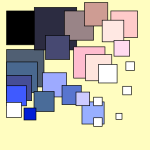 SCAM-2008-ScholzZC #analysis #dependence #graph #reachability
SCAM-2008-ScholzZC #analysis #dependence #graph #reachability- User-Input Dependence Analysis via Graph Reachability (BS, CZ, CC), pp. 25–34.
 PEPM-2008-VolanschiR #tool support
PEPM-2008-VolanschiR #tool support- Unparsed patterns: easy user-extensibility of program manipulation tools (NV, CR), pp. 111–121.
 SEFM-2008-RuksenasCB #behaviour #game studies #modelling
SEFM-2008-RuksenasCB #behaviour #game studies #modelling- Modelling Rational User Behaviour as Games between an Angel and a Demon (RR, PC, AB), pp. 355–364.
 GT-VMT-2006-AutiliP08 #requirements #towards #visual notation
GT-VMT-2006-AutiliP08 #requirements #towards #visual notation- Towards a Graphical Tool for Refining User to System Requirements (MA, PP), pp. 147–157.
 GT-VMT-2006-Lanese08 #graph transformation
GT-VMT-2006-Lanese08 #graph transformation- Exploiting User-definable Synchronizations in Graph Transformation (IL), pp. 27–38.
 CHI-2008-BauerCRRV #case study #flexibility #policy
CHI-2008-BauerCRRV #case study #flexibility #policy- A user study of policy creation in a flexible access-control system (LB, LFC, RWR, MKR, KV), pp. 543–552.
 CHI-2008-EaganS
CHI-2008-EaganS- The buzz: supporting user tailorability in awareness applications (JRE, JTS), pp. 1729–1738.
 CHI-2008-FindlaterM #adaptation #performance #user interface #user satisfaction #visual notation
CHI-2008-FindlaterM #adaptation #performance #user interface #user satisfaction #visual notation- Impact of screen size on performance, awareness, and user satisfaction with adaptive graphical user interfaces (LF, JM), pp. 1247–1256.
 CHI-2008-GajosETCW #adaptation #predict #user interface
CHI-2008-GajosETCW #adaptation #predict #user interface- Predictability and accuracy in adaptive user interfaces (KZG, KE, DST, MC, DSW), pp. 1271–1274.
 CHI-2008-GajosWW #interface #performance
CHI-2008-GajosWW #interface #performance- Improving the performance of motor-impaired users with automatically-generated, ability-based interfaces (KZG, JOW, DSW), pp. 1257–1266.
 CHI-2008-GrafSSWR #interactive #search-based #user interface #using
CHI-2008-GrafSSWR #interactive #search-based #user interface #using- In-car interaction using search-based user interfaces (SG, WS, AS, AW, GR), pp. 1685–1688.
 CHI-2008-GuoS #case study #comparative #interactive #user interface
CHI-2008-GuoS #case study #comparative #interactive #user interface- Exploring the use of tangible user interfaces for human-robot interaction: a comparative study (CG, ES), pp. 121–130.
 CHI-2008-HarrisonD #agile #user interface
CHI-2008-HarrisonD #agile #user interface- Lean and zoom: proximity-aware user interface and content magnification (CH, AKD), pp. 507–510.
 CHI-2008-HartmannAS #bias #experience #quality #user interface
CHI-2008-HartmannAS #bias #experience #quality #user interface- Framing the user experience: information biases on website quality judgement (JH, ADA, AGS), pp. 855–864.
 CHI-2008-IqbalB
CHI-2008-IqbalB- Effects of intelligent notification management on users and their tasks (STI, BPB), pp. 93–102.
 CHI-2008-KapoorH #case study #comparative #experience #modelling #predict
CHI-2008-KapoorH #case study #comparative #experience #modelling #predict- Experience sampling for building predictive user models: a comparative study (AK, EH), pp. 657–666.
 CHI-2008-KimGSPPW #experience #realtime #user interface
CHI-2008-KimGSPPW #experience #realtime #user interface- Tracking real-time user experience (TRUE): a comprehensive instrumentation solution for complex systems (JHK, DVG, ES, BP, RJP, DRW), pp. 443–452.
 CHI-2008-KitturCS #crowdsourcing
CHI-2008-KitturCS #crowdsourcing- Crowdsourcing user studies with Mechanical Turk (AK, EHC, BS), pp. 453–456.
 CHI-2008-LinL #design #prototype #user interface
CHI-2008-LinL #design #prototype #user interface- Employing patterns and layers for early-stage design and prototyping of cross-device user interfaces (JL, JAL), pp. 1313–1322.
 CHI-2008-LohrB #interactive #speech #user interface #visual notation
CHI-2008-LohrB #interactive #speech #user interface #visual notation- Mixed-initiative dialog management for speech-based interaction with graphical user interfaces (AL, BB), pp. 979–988.
 CHI-2008-OviattSA #adaptation #interface #speech
CHI-2008-OviattSA #adaptation #interface #speech- Implicit user-adaptive system engagement in speech and pen interfaces (SLO, CS, AMA), pp. 969–978.
 CHI-2008-StollTES #named #security #visualisation
CHI-2008-StollTES #named #security #visualisation- Sesame: informing user security decisions with system visualization (JS, CST, WKE, KS), pp. 1045–1054.
 CHI-2008-SubrahmaniyanBGBWNBDF #debugging #testing #what
CHI-2008-SubrahmaniyanBGBWNBDF #debugging #testing #what- Testing vs. code inspection vs. what else?: male and female end users’ debugging strategies (NS, LB, VG, MMB, SW, VN, KB, RD, XZF), pp. 617–626.
 CHI-2008-TerryKVSP #named #open source
CHI-2008-TerryKVSP #named #open source- Ingimp: introducing instrumentation to an end-user open source application (MAT, MK, BVV, BS, TP), pp. 607–616.
 CHI-2008-TianXWZLSD #3d #user interface #using
CHI-2008-TianXWZLSD #3d #user interface #using- Tilt menu: using the 3D orientation information of pen devices to extend the selection capability of pen-based user interfaces (FT, LX, HW, XZ, YL, VS, GD), pp. 1371–1380.
 CSCW-2008-EgelmanBI #paradigm #product line
CSCW-2008-EgelmanBI #paradigm #product line- Family accounts: a new paradigm for user accounts within the home environment (SE, AJBB, KMI), pp. 669–678.
 CSCW-2008-LiaoL #design #effectiveness #network #user interface
CSCW-2008-LiaoL #design #effectiveness #network #user interface- Network patterns: designing effective user interfaces for connections management at work (QL, QL), pp. 707–710.
 CSCW-2008-RibesF #community #representation
CSCW-2008-RibesF #community #representation- Representing community: knowing users in the face of changing constituencies (DR, TAF), pp. 107–116.
 SOFTVIS-2008-SubrahmaniyanBB #visualisation
SOFTVIS-2008-SubrahmaniyanBB #visualisation- Software visualization for end-user programmers: trial period obstacles (NS, MMB, CB), pp. 135–144.
 EDOC-2008-StoitsevS #architecture #process
EDOC-2008-StoitsevS #architecture #process- An Architecture for End-User Driven Business Process Management (TS, SS), pp. 53–62.
 ICEIS-AIDSS-2008-EsminLYC #information management #interactive #named #web
ICEIS-AIDSS-2008-EsminLYC #information management #interactive #named #web- ArchCollect — A Tool for WEB Usage Knowledge Acquisition from User’s Interactions (AAAE, JdCL, ETY, TGdSC), pp. 375–380.
 ICEIS-DISI-2008-StoitsevSFM #architecture #composition #process
ICEIS-DISI-2008-StoitsevSFM #architecture #composition #process- Architecture for End User-Driven Composition of Underspecified, Human-Centric Business Processes (TS, SS, FF, MM), pp. 165–172.
 ICEIS-HCI-2008-AngioniDDT #3d #navigation #semantics #user interface
ICEIS-HCI-2008-AngioniDDT #3d #navigation #semantics #user interface- A 3D User Interface for the Semantic Navigation of WWW Information (MA, RD, MD, FT), pp. 256–261.
 ICEIS-HCI-2008-DamaseviciusT #design #learning #re-engineering #user interface
ICEIS-HCI-2008-DamaseviciusT #design #learning #re-engineering #user interface- Learning Object Reengineering Based on Principles for Usable User Interface Design (RD, LT), pp. 124–129.
 ICEIS-HCI-2008-GeczyIAH #behaviour #enterprise #information management #network
ICEIS-HCI-2008-GeczyIAH #behaviour #enterprise #information management #network- Complex User Behavioral Networks at Enterprise Information Systems (PG, NI, SA, KH), pp. 233–239.
 ICEIS-HCI-2008-MuranoEH #effectiveness #feedback #user interface
ICEIS-HCI-2008-MuranoEH #effectiveness #feedback #user interface- Effectiveness and Preferences of Anthropomorphic User Interface Feedback in a PC Building Context and Cognitive Load (PM, CE, POH), pp. 181–188.
 ICEIS-HCI-2008-PicussaGBFDBSCS #education #interface #online #web
ICEIS-HCI-2008-PicussaGBFDBSCS #education #interface #online #web- A User-Interface Environment Solution as an Educational Tool for an Online Chess Server on the Web (JP, LSG, JB, MVRF, AID, LCEDB, FS, MAC, MSS), pp. 262–267.
 ICEIS-HCI-2008-SchmitzMW #challenge #difference #testing #web
ICEIS-HCI-2008-SchmitzMW #challenge #difference #testing #web- Cultural Differences between Taiwanese and German Web User — Challenges for Intercultural User Testing (AKS, TM, CWH), pp. 62–69.
 ICEIS-HCI-2008-StoitsevSFM08a #modelling #process #programming
ICEIS-HCI-2008-StoitsevSFM08a #modelling #process #programming- Enabling end Users to Proactively Tailor Underspecified, Human-Centric Business Processes — “Programming by Example” of Weakly-Structured Process Models (TS, SS, FF, MM), pp. 38–46.
 ICEIS-ISAS1-2008-WuH #development #empirical #process #requirements
ICEIS-ISAS1-2008-WuH #development #empirical #process #requirements- A Process for Determining User Requirements in eCRM Development — A Strategic Aspect and Empirical Examination (ILW, CYH), pp. 5–12.
 ICEIS-J-2008-LucaB08a #experience #recommendation #user interface #web
ICEIS-J-2008-LucaB08a #experience #recommendation #user interface #web- Enhancing User Experience on the Web via Microformats-Based Recommendations (APL, SCB), pp. 321–333.
 ICEIS-J-2008-StoitsevSFM08b #modelling #process #programming
ICEIS-J-2008-StoitsevSFM08b #modelling #process #programming- Enabling End Users to Proactively Tailor Underspecified, Human-Centric Business Processes: “Programming by Example” of Weakly-Structured Process Models (TS, SS, FF, MM), pp. 307–320.
 ICEIS-SAIC-2008-BrockeTW #e-commerce #mobile
ICEIS-SAIC-2008-BrockeTW #e-commerce #mobile- Making Use of Mobile Devices in E-Commerce — Overcoming Organizational Barriers through User Participation (JvB, BT, DW), pp. 168–173.
 ICEIS-SAIC-2008-DAgostiniFDG #semantics #using
ICEIS-SAIC-2008-DAgostiniFDG #semantics #using- Contextual Semantic Search — Capturing, using the User’s Context to Direct Semantic Search (CSD, RF, MARD, FAOG), pp. 154–159.
 ICEIS-SAIC-2008-VladoiuC #community #framework
ICEIS-SAIC-2008-VladoiuC #community #framework- Framework for Building of a Dynamic User Community (EPH) — Sharing of Context-Aware, Public Interest Information or Knowledge through Always-on Services (MV, ZC), pp. 73–87.
 CIKM-2008-AnnexsteinS #clustering #collaboration #user satisfaction
CIKM-2008-AnnexsteinS #clustering #collaboration #user satisfaction- Collaborative partitioning with maximum user satisfaction (FSA, SS), pp. 1445–1446.
 CIKM-2008-DaoudTB #graph #ontology #personalisation #using
CIKM-2008-DaoudTB #graph #ontology #personalisation #using- Using a graph-based ontological user profile for personalizing search (MD, LTL, MB), pp. 1495–1496.
 CIKM-2008-LuxenburgerEW #personalisation #web
CIKM-2008-LuxenburgerEW #personalisation #web- Matching task profiles and user needs in personalized web search (JL, SE, GW), pp. 689–698.
 CIKM-2008-ParikhS #behaviour #query #semantics
CIKM-2008-ParikhS #behaviour #query #semantics- Inferring semantic query relations from collective user behavior (NP, NS), pp. 349–358.
 CIKM-2008-SunLCLG #library
CIKM-2008-SunLCLG #library- Measuring user preference changes in digital libraries (YS, HL, IGC, WCL, CLG), pp. 1497–1498.
 CIKM-2008-WangZRM #automation #online #ranking #topic #using
CIKM-2008-WangZRM #automation #online #ranking #topic #using- Automatic online news topic ranking using media focus and user attention based on aging theory (CW, MZ, LR, SM), pp. 1033–1042.
 CIKM-2008-WijayaB #random #rank #rating
CIKM-2008-WijayaB #random #rank #rating- A random walk on the red carpet: rating movies with user reviews and pagerank (DTW, SB), pp. 951–960.
 CIKM-2008-YatesJPCS #named #recommendation #smarttech #specification
CIKM-2008-YatesJPCS #named #recommendation #smarttech #specification- SHOPSMART: product recommendations through technical specifications and user reviews (AY, JJ, AMP, ADC, NS), pp. 1501–1502.
 ECIR-2008-CarvalhoC #ranking
ECIR-2008-CarvalhoC #ranking- Ranking Users for Intelligent Message Addressing (VRC, WWC), pp. 321–333.
 ECIR-2008-MohdCR #analysis #comparison
ECIR-2008-MohdCR #analysis #comparison- A Comparison of Named Entity Patterns from a User Analysis and a System Analysis (MM, FC, IR), pp. 679–683.
 ICPR-2008-Arevalillo-HerraezFD #image #learning #metric #retrieval #similarity
ICPR-2008-Arevalillo-HerraezFD #image #learning #metric #retrieval #similarity- Learning combined similarity measures from user data for image retrieval (MAH, FJF, JD), pp. 1–4.
 ICPR-2008-SugimotoO #array #image #synthesis #using
ICPR-2008-SugimotoO #array #image #synthesis #using- Virtual focusing image synthesis for user-specified image region using camera array (SS, MO), pp. 1–4.
 KDD-2008-Christen08a #open source #user interface #visual notation
KDD-2008-Christen08a #open source #user interface #visual notation- Febrl -: an open source data cleaning, deduplication and record linkage system with a graphical user interface (PC), pp. 1065–1068.
 KDD-2008-WuLCC #learning #symmetry
KDD-2008-WuLCC #learning #symmetry- Asymmetric support vector machines: low false-positive learning under the user tolerance (SHW, KPL, CMC, MSC), pp. 749–757.
 RecSys-2008-ChenP #evaluation #interface #recommendation
RecSys-2008-ChenP #evaluation #interface #recommendation- A cross-cultural user evaluation of product recommender interfaces (LC, PP), pp. 75–82.
 RecSys-2008-DrennerST #community #experience #user interface
RecSys-2008-DrennerST #community #experience #user interface- Crafting the initial user experience to achieve community goals (SD, SS, LGT), pp. 187–194.
 RecSys-2008-GeyerDMMF #online #recommendation #self #topic
RecSys-2008-GeyerDMMF #online #recommendation #self #topic- Recommending topics for self-descriptions in online user profiles (WG, CD, DRM, MJM, JF), pp. 59–66.
 RecSys-2008-Sampaio #internet #network #performance #process #recommendation
RecSys-2008-Sampaio #internet #network #performance #process #recommendation- A network performance recommendation process for advanced internet applications users (LNS), pp. 315–318.
 SEKE-2008-HittleG #fault #file system #injection #testing #using
SEKE-2008-HittleG #fault #file system #injection #testing #using- Fault Injection Testing of User-space File Systems Using Traditional and Aspect-based Techniques (JH, SG), pp. 873–876.
 SIGIR-2008-Al-MaskariSCA #effectiveness #predict #question
SIGIR-2008-Al-MaskariSCA #effectiveness #predict #question- The good and the bad system: does the test collection predict users’ effectiveness? (AAM, MS, PDC, EA), pp. 59–66.
 SIGIR-2008-BerlocherLK #named #topic
SIGIR-2008-BerlocherLK #named #topic- TopicRank: bringing insight to users (IB, KIL, KK), pp. 703–704.
 SIGIR-2008-DupretP #predict
SIGIR-2008-DupretP #predict- A user browsing model to predict search engine click data from past observations (GD, BP), pp. 331–338.
 SIGIR-2008-HueteCFR #modelling #naive bayes #representation
SIGIR-2008-HueteCFR #modelling #naive bayes #representation- Hierarchical naive bayes models for representing user profiles (JFH, LMdC, JMFL, MARM), pp. 711–712.
 SIGIR-2008-KeskustaloJPK #higher-order #performance #visualisation
SIGIR-2008-KeskustaloJPK #higher-order #performance #visualisation- Intuition-supporting visualization of user’s performance based on explicit negative higher-order relevance (HK, KJ, AP, JK), pp. 675–682.
 SIGIR-2008-KumaranA #effectiveness #interactive #performance #query
SIGIR-2008-KumaranA #effectiveness #interactive #performance #query- Effective and efficient user interaction for long queries (GK, JA), pp. 11–18.
 SIGIR-2008-Lee #experience
SIGIR-2008-Lee #experience- Delighting Chinese users: the Google China experience (KFL), p. 1.
 SIGIR-2008-LinS #automation #evaluation #how #simulation #towards
SIGIR-2008-LinS #automation #evaluation #how #simulation #towards- How do users find things with PubMed?: towards automatic utility evaluation with user simulations (JJL, MDS), pp. 19–26.
 SIGIR-2008-LiuGLZMHL #named #rank #web
SIGIR-2008-LiuGLZMHL #named #rank #web- BrowseRank: letting web users vote for page importance (YL, BG, TYL, YZ, ZM, SH, HL), pp. 451–458.
 SIGIR-2008-Shah #behaviour #collaboration #comprehension #implementation
SIGIR-2008-Shah #behaviour #collaboration #comprehension #implementation- Understanding system implementation and user behavior in a collaborative information seeking environment (CS), p. 896.
 SIGIR-2008-SmithK #adaptation
SIGIR-2008-SmithK #adaptation- User adaptation: good results from poor systems (CLS, PBK), pp. 147–154.
 SIGIR-2008-TeevanDL #modelling #personalisation #query
SIGIR-2008-TeevanDL #modelling #personalisation #query- To personalize or not to personalize: modeling queries with variation in user intent (JT, STD, DJL), pp. 163–170.
 SIGIR-2008-TsagiasLR #speech
SIGIR-2008-TsagiasLR #speech- Term clouds as surrogates for user generated speech (MT, ML, MdR), pp. 773–774.
 SIGIR-2008-WuST
SIGIR-2008-WuST- User preference choices for complex question answering (MW, FS, AT), pp. 717–718.
 SIGIR-2008-WuTZ #community
SIGIR-2008-WuTZ #community- Aggregated click-through data in a homogeneous user community (MW, AT, JZ), pp. 731–732.
 BX-2008-Terwilliger1 #user interface #visual notation
BX-2008-Terwilliger1 #user interface #visual notation- Graphical User Interfaces as Updatable Views (JT), p. 32.
 RE-2008-MukasaK #integration #requirements #specification #user interface
RE-2008-MukasaK #integration #requirements #specification #user interface- An Integration of Requirements and User Interface Specifications (KSM, HK), pp. 327–328.
 SAC-2008-CollignonVC #editing #multi #user interface
SAC-2008-CollignonVC #editing #multi #user interface- An intelligent editor for multi-presentation user interfaces (BC, JV, GC), pp. 1634–1641.
 SAC-2008-LohLSWO #keyword #recommendation #representation #taxonomy
SAC-2008-LohLSWO #keyword #recommendation #representation #taxonomy- Comparing keywords and taxonomies in the representation of users profiles in a content-based recommender system (SL, FL, GS, LKW, JPMdO), pp. 2030–2034.
 SAC-2008-SousaFVRV #approach #modelling #process #user interface
SAC-2008-SousaFVRV #approach #modelling #process #user interface- User interface derivation from business processes: a model-driven approach for organizational engineering (KSS, HMF, JV, ER, JV), pp. 553–560.
 SAC-2008-YamamotoOR #information management #interactive
SAC-2008-YamamotoOR #information management #interactive- Including the user in the knowledge discovery loop: interactive itemset-driven rule extraction (CHY, MCFO, SOR), pp. 1212–1217.
 FSE-2008-KoesnandarERHSS #metaprogramming #using #web
FSE-2008-KoesnandarERHSS #metaprogramming #using #web- Using assertions to help end-user programmers create dependable web macros (AK, SGE, GR, LH, CS, KTS), pp. 124–134.
 ICSE-2008-DorrKLGDH #quality #requirements
ICSE-2008-DorrKLGDH #quality #requirements- Supporting requirements engineering for medical products: early consideration of user-perceived quality (JD, DK, DL, CG, CD, AH), pp. 639–648.
 ICSE-2008-ScaffidiMS08a #tool support #validation
ICSE-2008-ScaffidiMS08a #tool support #validation- Tool support for data validation by end-user programmers (CS, BAM, MS), pp. 867–870.
 ASPLOS-2008-MallikCDMD #named #performance #scalability
ASPLOS-2008-MallikCDMD #named #performance #scalability- PICSEL: measuring user-perceived performance to control dynamic frequency scaling (AM, JC, RPD, GM, PAD), pp. 70–79.
 CAV-2008-MeikleF #approach #proving #verification
CAV-2008-MeikleF #approach #proving #verification- Prover’s Palette: A User-Centric Approach to Verification with Isabelle and QEPCAD-B (LIM, JDF), pp. 309–313.
 ICST-2008-El-FakihKPY #fault #finite #state machine
ICST-2008-El-FakihKPY #fault #finite #state machine- Extended Finite State Machine Based Test Derivation Driven by User Defined Faults (KEF, AK, SP, NY), pp. 308–317.
 ICST-2008-PichlerR #how #question #user interface #visual notation
ICST-2008-PichlerR #how #question #user interface #visual notation- How to Test the Intangible Properties of Graphical User Interfaces? (JP, RR), pp. 494–497.
 ICST-2008-SampathBVKK #testing #web
ICST-2008-SampathBVKK #testing #web- Prioritizing User-Session-Based Test Cases for Web Applications Testing (SS, RCB, GV, VK, AGK), pp. 141–150.
 ECSA-2007-CamaraCCM #adaptation #user interface
ECSA-2007-CamaraCCM #adaptation #user interface- Enabling Adaptivity in User Interfaces (JC, CC, JC, JMM), pp. 106–114.
 CASE-2007-LinF #multi #smarttech
CASE-2007-LinF #multi #smarttech- Multi-user Preference Model and Service Provision in a Smart Home Environment (ZHL, LCF), pp. 759–764.
 CASE-2007-ShibataZHSF #scheduling #self
CASE-2007-ShibataZHSF #scheduling #self- Generalization of Scheduling Information Acquired Through User Manipulation for Self-construction Production Scheduling System (TS, XZ, XH, YS, SF), pp. 33–38.
 DATE-2007-LisselGG #design #industrial #perspective #verification
DATE-2007-LisselGG #design #industrial #perspective #verification- Introducing new verification methods into a company’s design flow: an industrial user’s point of view (RL, JG), pp. 689–694.
 HT-2007-BrownBFE #behaviour
HT-2007-BrownBFE #behaviour- Revealing the hidden rationality of user browsing behaviour (EJB, TJB, TF, CvdE), pp. 85–94.
 HT-2007-BrownFB #learning
HT-2007-BrownFB #learning- Real users, real results: examining the limitations of learning styles within AEH (EJB, TF, TJB), pp. 57–66.
 HT-2007-HishamE #case study #interface
HT-2007-HishamE #case study #interface- Incorporating culture in user-interface: a case study of older adults in malaysia (SH, ADNE), pp. 145–146.
 HT-2007-LiYSK #estimation #similarity #web
HT-2007-LiYSK #estimation #similarity #web- User-assisted similarity estimation for searching related web pages (LL, ZY, KS, MK), pp. 11–20.
 HT-2007-MoganW #case study #information management #trust
HT-2007-MoganW #case study #information management #trust- A study into user perceptions of information sharing and trust in virtual teams (SM, WW), pp. 43–44.
 HT-2007-VigoKAA #web
HT-2007-VigoKAA #web- User-tailored web accessibility evaluations (MV, AK, MA, JA), pp. 95–104.
 SIGMOD-2007-ChenL #navigation
SIGMOD-2007-ChenL #navigation- Addressing diverse user preferences in SQL-query-result navigation (ZC, TL), pp. 641–652.
 SIGMOD-2007-GuptaYDGS #data-driven #personalisation #web
SIGMOD-2007-GuptaYDGS #data-driven #personalisation #web- User-centric personalized extensibility for data-driven web applications (NG, FY, AJD, JG, JS), pp. 1125–1127.
 SIGMOD-2007-QuXL #quality #towards
SIGMOD-2007-QuXL #quality #towards- Quality is in the eye of the beholder: towards user-centric web-databases (HQ, JX, AL), pp. 1106–1108.
 VLDB-2007-BitonBD #query #workflow
VLDB-2007-BitonBD #query #workflow- Zoom*UserViews: Querying Relevant Provenance in Workflow Systems (OB, SCB, SBD), pp. 1366–1369.
 VLDB-2007-Minock #towards
VLDB-2007-Minock #towards- A STEP Towards Realizing Codd’s Vision of Rendezvous with the Casual User (MM), pp. 1358–1361.
 CSMR-2007-Staiger #source code #static analysis #user interface #visual notation
CSMR-2007-Staiger #source code #static analysis #user interface #visual notation- Static Analysis of Programs with Graphical User Interface (SS), pp. 252–264.
 ICPC-2007-JermakovicsSSS #development #named #requirements #visualisation
ICPC-2007-JermakovicsSSS #development #named #requirements #visualisation- Lagrein: Visualizing User Requirements and Development Effort (AJ, MS, AS, GS), pp. 293–296.
 PASTE-2007-ChinMMM #programming #validation
PASTE-2007-ChinMMM #programming #validation- Enforcing and validating user-defined programming disciplines (BC, DM, SM, TDM), pp. 85–86.
 WCRE-2007-Staiger #analysis #reverse engineering #user interface #using #visual notation
WCRE-2007-Staiger #analysis #reverse engineering #user interface #using #visual notation- Reverse Engineering of Graphical User Interfaces Using Static Analyses (SS), pp. 189–198.
 ICFP-2007-EnnalsG #functional #programming #web
ICFP-2007-EnnalsG #functional #programming #web- User-friendly functional programming for web mashups (RE, DG), pp. 223–234.
 ILC-2007-Herth #lisp #user interface #visual notation
ILC-2007-Herth #lisp #user interface #visual notation- Portable Common Lisp graphical user interfaces with LTk (PH), p. 19.
 ILC-2007-Rhodes #lisp #sequence
ILC-2007-Rhodes #lisp #sequence- User-extensible sequences in common Lisp (CR), p. 13.
 CHI-2007-AttererS #ajax #interactive #testing #usability
CHI-2007-AttererS #ajax #interactive #testing #usability- Tracking the interaction of users with ajax applications for usability testing (RA, AS), pp. 1347–1350.
 CHI-2007-BallNB #navigation #performance #physics #scalability
CHI-2007-BallNB #navigation #performance #physics #scalability- Move to improve: promoting physical navigation to increase user performance with large displays (RB, CN, DAB), pp. 191–200.
 CHI-2007-FjeldFEDBVJ #comparative #education #evaluation #user interface
CHI-2007-FjeldFEDBVJ #comparative #education #evaluation #user interface- Tangible user interface for chemistry education: comparative evaluation and re-design (MF, JF, ME, FD, KB, BMV, PJ), pp. 805–808.
 CHI-2007-GaverSKKB #health #testing #ubiquitous
CHI-2007-GaverSKKB #health #testing #ubiquitous- Enhancing ubiquitous computing with user interpretation: field testing the home health horoscope (WWG, PS, TK, JK, JB), pp. 537–546.
 CHI-2007-HartmannSA #user interface #web
CHI-2007-HartmannSA #user interface #web- Investigating attractiveness in web user interfaces (JH, AGS, ADA), pp. 387–396.
 CHI-2007-HuWNMI #testing #usability
CHI-2007-HuWNMI #testing #usability- Context & usability testing: user-modeled information presentation in easy and difficult driving conditions (JH, AW, CN, JDM, RI), pp. 1343–1346.
 CHI-2007-JeffersonH #interface
CHI-2007-JeffersonH #interface- An interface to support color blind computer users (LJ, RH), pp. 1535–1538.
 CHI-2007-KuberYM #feedback #internet #towards #visual notation
CHI-2007-KuberYM #feedback #internet #towards #visual notation- Towards developing assistive haptic feedback for visually impaired internet users (RK, WY, GM), pp. 1525–1534.
 CHI-2007-MakelaBGH #case study #interactive #mobile #visual notation
CHI-2007-MakelaBGH #case study #interactive #mobile #visual notation- Mobile interaction with visual and RFID tags: a field study on user perceptions (KM, SB, DG, JH), pp. 991–994.
 CHI-2007-NicholsCM #automation #user interface
CHI-2007-NicholsCM #automation #user interface- Demonstrating the viability of automatically generated user interfaces (JN, DHC, BAM), pp. 1283–1292.
 CHI-2007-TullioDCF #case study #how
CHI-2007-TullioDCF #case study #how- How it works: a field study of non-technical users interacting with an intelligent system (JT, AKD, JC, JF), pp. 31–40.
 CHI-2007-WhiteMF #automation #design #identification #mobile #user interface
CHI-2007-WhiteMF #automation #design #identification #mobile #user interface- Designing a mobile user interface for automated species identification (SW, DM, SF), pp. 291–294.
 CHI-2007-WongH #programming #towards #web
CHI-2007-WongH #programming #towards #web- Making mashups with marmite: towards end-user programming for the web (JW, JIH), pp. 1435–1444.
 CHI-2007-XiaoSC #interactive #performance
CHI-2007-XiaoSC #interactive #performance- The role of choice and customization on users’ interaction with embodied conversational agents: effects on perception and performance (JX, JTS, RC), pp. 1293–1302.
 CHI-2007-YeeBR #case study #experience #user interface
CHI-2007-YeeBR #case study #experience #user interface- A meta-analysis of the impact of the inclusion and realism of human-like faces on user experiences in interfaces (NY, JNB, KR), pp. 1–10.
 DHM-2007-BeauregardC #concept #experience #framework #metric #quality #user interface
DHM-2007-BeauregardC #concept #experience #framework #metric #quality #user interface- User Experience Quality: A Conceptual Framework for Goal Setting and Measurement (RB, PC), pp. 325–332.
 DHM-2007-EstevesKZW #case study #industrial #modelling #performance
DHM-2007-EstevesKZW #case study #industrial #modelling #performance- Applied User Performance Modeling in Industry — A Case Study from Medical Imaging (ME, TK, SZ, AW), pp. 576–585.
 DHM-2007-GaoABPM #experience #requirements #user interface
DHM-2007-GaoABPM #experience #requirements #user interface- Translating User Experience to Requirements (JG, GJA, BWB, RP, DM), pp. 392–398.
 DHM-2007-HuangH #design #experience #research #user interface
DHM-2007-HuangH #design #experience #research #user interface- Involving Engineers in User Research and User Experience Design of ICT for China (CH, HH), pp. 399–408.
 DHM-2007-LinP #experience #modelling #user interface
DHM-2007-LinP #experience #modelling #user interface- User Experience Modeling and Enhancement for Virtual Environments That Employ Wide-Field Displays (JJWL, DEP), pp. 423–433.
 DHM-2007-ZhengLZK #assessment #concurrent #experience #usability #user interface #visualisation
DHM-2007-ZhengLZK #assessment #concurrent #experience #usability #user interface #visualisation- Visualizing User Experience Through “Perceptual Maps”: Concurrent Assessment of Perceived Usability and Subjective Appearance in Car Infotainment Systems (XSZ, JJWL, SZ, CK), pp. 536–545.
 HCI-AS-2007-AlTaboliA #consistency #design #interface #performance #physics #web
HCI-AS-2007-AlTaboliA #consistency #design #interface #performance #physics #web- Effect of Physical Consistency of Web Interface Design on Users’ Performance and Satisfaction (AA, MRAZ), pp. 849–858.
 HCI-AS-2007-BorgesRPC #development #documentation #usability #user interface
HCI-AS-2007-BorgesRPC #development #documentation #usability #user interface- Usability Issues in the Development of a User Interface for an Alerts and Reminders System for a Nursing Documentation Application (JAB, NJR, CP, GC), pp. 418–426.
 HCI-AS-2007-ChoiLU #analysis #internet #user interface
HCI-AS-2007-ChoiLU #analysis #internet #user interface- Analysis of Internet Users’ Interests Based on Windows GUI Messages (JC, GL, YU), pp. 881–888.
 HCI-AS-2007-ErikssonA #mobile #multi
HCI-AS-2007-ErikssonA #mobile #multi- Multi-users and Multi-contextuality — A Mobile Tourism Setting (CIE, MÅ), pp. 48–57.
 HCI-AS-2007-Ficarra #case study #game studies
HCI-AS-2007-Ficarra #case study #game studies- A Study of Acteme on Users Unexpert of Videogames (FVCF), pp. 215–224.
 HCI-AS-2007-HeLCJ #3d #collaboration #design #framework #interactive #multi
HCI-AS-2007-HeLCJ #3d #collaboration #design #framework #interactive #multi- A Replicated CSCW Framework for Multi-user Interaction in 3D Collaborative Design (FH, HL, XC, SJ), pp. 1065–1074.
 HCI-AS-2007-JeenHKLP #interactive #persuasion
HCI-AS-2007-JeenHKLP #interactive #persuasion- Persuasive Interaction Strategy for Self Diet System: Exploring the Relation of User Attitude and Intervention by Computerized Systematic Methods (YJ, JH, HK, KL, PP), pp. 450–458.
 HCI-AS-2007-Kilic #problem #user interface
HCI-AS-2007-Kilic #problem #user interface- “My Money in E-Purse” Searching Problems in Self Service User Interface (EK), pp. 58–66.
 HCI-AS-2007-KoJK #behaviour #comprehension #internet #mobile
HCI-AS-2007-KoJK #behaviour #comprehension #internet #mobile- Understanding Influence of Mobile Internet Services on Life Behavior of Mobile Users (SMK, YGJ, DK), pp. 944–953.
 HCI-AS-2007-MaY #experience #user interface
HCI-AS-2007-MaY #experience #user interface- UX Office. A New Software Application for User Experience Services (LM, XY), pp. 649–653.
 HCI-AS-2007-MorDML #approach #behaviour
HCI-AS-2007-MorDML #approach #behaviour- A Three-Level Approach for Analyzing User Behavior in Ongoing Relationships (EM, MGD, JM, SL), pp. 971–980.
 HCI-AS-2007-PoitschkeARR #evaluation #framework #multi #user interface
HCI-AS-2007-PoitschkeARR #evaluation #framework #multi #user interface- A Multifunctional VR-Simulator Platform for the Evaluation of Automotive User Interfaces (TP, MA, SR, GR), pp. 1120–1129.
 HCI-AS-2007-Rodriguez-AscasoNBS #design #experience #guidelines #user interface
HCI-AS-2007-Rodriguez-AscasoNBS #design #experience #guidelines #user interface- Human Factors: User Experience Design Guidelines for Telecare Services (ARA, BvN, SB, TS), pp. 413–417.
 HCI-AS-2007-TanC #mobile #quality
HCI-AS-2007-TanC #mobile #quality- The Effects of Mobile Service Quality and Technology Compatibility on Users’ Perceived Playfulness (FBT, JPCC), pp. 1029–1038.
 HCI-AS-2007-TanW #workflow
HCI-AS-2007-TanW #workflow- Process-Oriented User Support for Workflow Applications (DT, HW), pp. 752–761.
 HCI-AS-2007-Tao #aspect-oriented #user interface
HCI-AS-2007-Tao #aspect-oriented #user interface- Capturing User Interface Events with Aspects (YT), pp. 1170–1179.
 HCI-AS-2007-Toussaint #design #generative #user interface
HCI-AS-2007-Toussaint #design #generative #user interface- With User Interface Design from Socio-Cultural Trend to a Innovative Office Phone Generation (CT), pp. 771–777.
 HCI-AS-2007-UflackerB #complexity #enterprise #experience #user interface
HCI-AS-2007-UflackerB #complexity #enterprise #experience #user interface- Complexity in Enterprise Applications vs. Simplicity in User Experience (MU, DKB), pp. 778–787.
 HCI-AS-2007-VanackenRLC #collaboration #user interface
HCI-AS-2007-VanackenRLC #collaboration #user interface- Focus+Roles: Socio-Organizational Conflict Resolution in Collaborative User Interfaces (DV, CR, KL, KC), pp. 788–796.
 HCI-AS-2007-YuCL #assessment #enterprise #information management
HCI-AS-2007-YuCL #assessment #enterprise #information management- A User-Oriented Assessment of Enterprise Information Systems (EJY, YC, CSL), pp. 825–834.
 HCI-IDU-2007-AnastassovaMB #analysis #design #evaluation #prototype
HCI-IDU-2007-AnastassovaMB #analysis #design #evaluation #prototype- Prototype Evaluation and User-Needs Analysis in the Early Design of Emerging Technologies (MA, CM, JMB), pp. 383–392.
 HCI-IDU-2007-BaranauskasN #design #flexibility #interactive #using
HCI-IDU-2007-BaranauskasN #design #flexibility #interactive #using- Using Patterns to Support the Design of Flexible User Interaction (MCCB, VPdAN), pp. 1033–1042.
 HCI-IDU-2007-ChenHLLWX #consistency #user interface
HCI-IDU-2007-ChenHLLWX #consistency #user interface- The Experimental Approaches of Assessing the Consistency of User Interface (YC, LH, LL, QL, YW, JX), pp. 420–427.
 HCI-IDU-2007-CortierdA #java #user interface #validation
HCI-IDU-2007-CortierdA #java #user interface #validation- Formal Validation of Java/Swing User Interfaces with the Event B Method (AC, Bd, YAA), pp. 1062–1071.
 HCI-IDU-2007-DaimotoAMK #case study #research #safety
HCI-IDU-2007-DaimotoAMK #case study #research #safety- Application of Micro-Scenario Method (MSM) to User Research for the Motorcycle’s Informatization — A Case Study for the Information Support System for Safety (HD, SA, MM, MK), pp. 49–57.
 HCI-IDU-2007-DuchtingZN #agile #development
HCI-IDU-2007-DuchtingZN #agile #development- Incorporating User Centered Requirement Engineering into Agile Software Development (MD, DZ, KN), pp. 58–67.
 HCI-IDU-2007-EschenbrennerN #identification #information management #what
HCI-IDU-2007-EschenbrennerN #identification #information management #what- What Makes Them So Special?: Identifying Attributes of Highly Competent Information System Users (BE, FFHN), pp. 736–745.
 HCI-IDU-2007-EvjemoAS #lessons learnt
HCI-IDU-2007-EvjemoAS #lessons learnt- User Acceptance of Digital Tourist Guides Lessons Learnt from Two Field Studies (BE, SA, AS), pp. 746–755.
 HCI-IDU-2007-GaoSRA #design #effectiveness #navigation #tool support #web
HCI-IDU-2007-GaoSRA #design #effectiveness #navigation #tool support #web- Design Effective Navigation Tools for Older Web Users (QG, HS, PLPR, YA), pp. 765–773.
 HCI-IDU-2007-Gomez-CarneroI #representation #using
HCI-IDU-2007-Gomez-CarneroI #representation #using- Evaluator of User’s Actions (Eua) Using the Model of Abstract Representation Dgaui (SGC, JRI), pp. 463–471.
 HCI-IDU-2007-HermannNPHN #taxonomy #towards
HCI-IDU-2007-HermannNPHN #taxonomy #towards- Users Interact Differently: Towards a Usability-Oriented User Taxonomy (FH, IN, MP, KH, AN), pp. 812–817.
 HCI-IDU-2007-HoferZJ #design #process
HCI-IDU-2007-HoferZJ #design #process- Alignment of Product Portfolio Definition and User Centered Design Activities (RH, DZ, MJ), pp. 98–107.
 HCI-IDU-2007-HongX #experience #user interface
HCI-IDU-2007-HongX #experience #user interface- An Ignored Factor of User Experience: FEEDBACK-QUALITY (JH, JX), pp. 127–132.
 HCI-IDU-2007-HwangP #experience #social
HCI-IDU-2007-HwangP #experience #social- Being Together: User’s Subjective Experience of Social Presence in CMC Environments (HSH, SP), pp. 844–853.
 HCI-IDU-2007-ItohHTK #design #process
HCI-IDU-2007-ItohHTK #design #process- A New User-Centered Design Process for Creating New Value and Future (YI, YH, HT, MK), pp. 108–116.
 HCI-IDU-2007-Jounila #design #how #user interface
HCI-IDU-2007-Jounila #design #how #user interface- How to Make Tailored User Interface Guideline for Software Designers (IJ), pp. 527–535.
 HCI-IDU-2007-Knapp #case study #experience #modelling #navigation
HCI-IDU-2007-Knapp #case study #experience #modelling #navigation- Mental Models of Chinese and German Users and Their Implications for MMI: Experiences from the Case Study Navigation System (BK), pp. 882–890.
 HCI-IDU-2007-KowalskiG #collaboration #design #heuristic #user interface
HCI-IDU-2007-KowalskiG #collaboration #design #heuristic #user interface- 10 Heuristics for Designing Administrative User Interfaces — A Collaboration Between Ethnography, Design, and Engineering (LK, KG), pp. 133–139.
 HCI-IDU-2007-LiangHC #approach #design #experience
HCI-IDU-2007-LiangHC #approach #design #experience- User Oriented Design to the Chinese Industries Scenario and Experience Innovation Design Approach for the Industrializing Countries in the Digital Technology Era (YZL, DHH, WKC), pp. 156–163.
 HCI-IDU-2007-MemmelGR #lifecycle #named #re-engineering #user interface
HCI-IDU-2007-MemmelGR #lifecycle #named #re-engineering #user interface- CRUISER: A Cross-Discipline User Interface and Software Engineering Lifecycle (TM, FG, HR), pp. 174–183.
 HCI-IDU-2007-NebeZ #aspect-oriented #design #process #re-engineering
HCI-IDU-2007-NebeZ #aspect-oriented #design #process #re-engineering- Aspects of Integrating User Centered Design into Software Engineering Processes (KN, DZ), pp. 194–203.
 HCI-IDU-2007-NingT #functional #how #order #usability
HCI-IDU-2007-NingT #functional #how #order #usability- How to Use Emotional Usability to Make the Product Serves a Need Beyond the Traditional Functional Objective to Satisfy the Emotion Needs of the User in Order to Improve the Product Differentiator — Focus on Home Appliance Product (LN, ST), pp. 587–593.
 HCI-IDU-2007-SatoFWJAWR #performance #web
HCI-IDU-2007-SatoFWJAWR #performance #web- The Impact of Moving Around and Zooming of Objects on Users’ Performance in Web Pages: A Cross-Generation Study (HS, KF, LW, LJ, YA, MW, PLPR), pp. 921–928.
 HCI-IDU-2007-Schaefer #bibliography #development #modelling #tool support #user interface
HCI-IDU-2007-Schaefer #bibliography #development #modelling #tool support #user interface- A Survey on Transformation Tools for Model Based User Interface Development (RS), pp. 1178–1187.
 HCI-IDU-2007-VogiazouFL #design #process
HCI-IDU-2007-VogiazouFL #design #process- The Use of Improvisational Role-Play in User Centered Design Processes (YV, JF, JL), pp. 262–272.
 HCI-IDU-2007-Wen-KoBMY #design
HCI-IDU-2007-Wen-KoBMY #design- User-Oriented Design (UOD) Patterns for Innovation Design at Digital Products (WKC, BHC, MHW, YZL), pp. 1053–1061.
 HCI-IDU-2007-YamazakiF #design #experience #tool support #user interface
HCI-IDU-2007-YamazakiF #design #experience #tool support #user interface- Design Tools for User Experience Design (KY, KF), pp. 298–307.
 HCI-IDU-2007-YangLZ #case study #representation
HCI-IDU-2007-YangLZ #case study #representation- A Study on the Form of Representation of the User’s Mental Model-Oriented Ancient Map of China (RY, DL, WZ), pp. 1001–1010.
 HCI-IDU-2007-YangTT #perspective #strict
HCI-IDU-2007-YangTT #perspective #strict- User Response to Free Trial Restrictions: A Coping Perspective (XY, CHT, HHT), pp. 991–1000.
 HCI-IDU-2007-ZhouF #comprehension #design #experience #quality #user interface
HCI-IDU-2007-ZhouF #comprehension #design #experience #quality #user interface- Understanding, Measuring, and Designing User Experience: The Causal Relationship Between the Aesthetic Quality of Products and User Affect (HZ, XF), pp. 340–349.
 HCI-IDU-2007-ZhouHG #design
HCI-IDU-2007-ZhouHG #design- Enhancing User-Centered Design by Adopting the Taguchi Philosophy (WZ, DH, PG), pp. 350–359.
 HCI-IDU-2007-ZimmermannG #approach #design
HCI-IDU-2007-ZimmermannG #approach #design- A Requirement Engineering Approach to User Centered Design (DZ, LG), pp. 360–369.
 HCI-IPT-2007-BasapurXAL #mobile
HCI-IPT-2007-BasapurXAL #mobile- User Expectations from Dictation on Mobile Devices (SB, SX, MA, YSL), pp. 217–225.
 HCI-IPT-2007-BlumK #design #guidelines #user interface
HCI-IPT-2007-BlumK #design #guidelines #user interface- Design Guidelines for PDA User Interfaces in the Context of Retail Sales Support (RB, KK), pp. 226–235.
 HCI-IPT-2007-KimL07a #comprehension #development #interactive #mobile
HCI-IPT-2007-KimL07a #comprehension #development #interactive #mobile- Development of Interactive Logger for Understanding User’s Interaction with Mobile Phone (DK, KPL), pp. 394–400.
 HCI-IPT-2007-KyoungLJ #3d #user interface
HCI-IPT-2007-KyoungLJ #3d #user interface- Immersive Viewer System for 3D User Interface (DK, YL, KJ), pp. 624–633.
 HCI-IPT-2007-MavrommatiD #bibliography #perspective #tool support
HCI-IPT-2007-MavrommatiD #bibliography #perspective #tool support- End User Tools for Ambient Intelligence Environments: An Overview (IM, JD), pp. 864–872.
 HCI-IPT-2007-ParkSKPJ #composition #modelling #user interface
HCI-IPT-2007-ParkSKPJ #composition #modelling #user interface- User Customization Methods Based on Mental Models: Modular UI Optimized for Customizing in Handheld Device (BP, SS, JK, WP, HJ), pp. 445–451.
 HCI-IPT-2007-SongKPPJ #design
HCI-IPT-2007-SongKPPJ #design- Designing Input Method of Hand-Held Device with International User Studies (SS, JK, WP, BP, HJ), pp. 480–485.
 HCI-IPT-2007-VastenburgKR #case study #experience #prototype #user interface
HCI-IPT-2007-VastenburgKR #case study #experience #prototype #user interface- Measuring User Experiences of Prototypical Autonomous Products in a Simulated Home Environment (MHV, DVK, HdR), pp. 998–1007.
 HCI-IPT-2007-VillalbaPA #design #interactive #smarttech
HCI-IPT-2007-VillalbaPA #design #interactive #smarttech- User Interaction Design for a Wearable and IT Based Heart Failure System (EV, IP, MTA), pp. 1230–1239.
 HCI-IPT-2007-WuH #visualisation
HCI-IPT-2007-WuH #visualisation- The Perceptual Eye View: A User-Defined Method for Information Visualization (LHW, PYH), pp. 181–190.
 HCI-IPT-2007-WuZS #user interface
HCI-IPT-2007-WuZS #user interface- Pen-Based User Interface Based on Handwriting Force Information (ZW, LZ, FS), pp. 496–503.
 HCI-IPT-2007-XuRMMB #challenge #evaluation #user interface
HCI-IPT-2007-XuRMMB #challenge #evaluation #user interface- Evaluation of Tangible User Interfaces (TUIs) for and with Children — Methods and Challenges (DYX, JCR, EM, SM, MB), pp. 1008–1017.
 HCI-IPT-2007-ZamanV #design #exclamation #process
HCI-IPT-2007-ZamanV #design #exclamation #process- Getting Lost? Touch and You Will Find! The User-Centered Design Process of a Touch Screen (BZ, RV), pp. 197–206.
 HCI-IPT-2007-ZimmermannV #framework #user interface
HCI-IPT-2007-ZimmermannV #framework #user interface- The Universal Control Hub: An Open Platform for Remote User Interfaces in the Digital Home (GZ, GCV), pp. 1040–1049.
 HCI-MIE-2007-ChenC07a #algorithm #design #fault #feedback
HCI-MIE-2007-ChenC07a #algorithm #design #fault #feedback- An Improved H.264 Error Concealment Algorithm with User Feedback Design (XC, YYC), pp. 815–820.
 HCI-MIE-2007-ChevrinC #interactive #mining #multi
HCI-MIE-2007-ChevrinC #interactive #mining #multi- Dynamic Association Rules Mining to Improve Intermediation Between User Multi-channel Interactions and Interactive e-Services (VC, OC), pp. 265–274.
 HCI-MIE-2007-DongLH #complexity #segmentation #user interface
HCI-MIE-2007-DongLH #complexity #segmentation #user interface- Effect of Glance Duration on Perceived Complexity and Segmentation of User Interfaces (YD, CL, LH), pp. 605–614.
 HCI-MIE-2007-EusticeRWSNR #named
HCI-MIE-2007-EusticeRWSNR #named- nan0sphere: Location-Driven Fiction for Groups of Users (KE, VR, AW, MS, NTN, PLR), pp. 852–861.
 HCI-MIE-2007-HanCW #modelling
HCI-MIE-2007-HanCW #modelling- History Based User Interest Modeling in WWW Access (SH, WC, HW), pp. 308–312.
 HCI-MIE-2007-JenkinsCCS #analysis #interactive
HCI-MIE-2007-JenkinsCCS #analysis #interactive- Analysis of User Interaction with Service Oriented Chatbot Systems (MCJ, RC, SJC, DS), pp. 76–83.
 HCI-MIE-2007-JungS #adaptation #email #multi
HCI-MIE-2007-JungS #adaptation #email #multi- A Location-Adaptive Human-Centered Audio Email Notification Service for Multi-user Environments (RJ, TS), pp. 340–348.
 HCI-MIE-2007-KimCPH #feedback #multimodal #user interface
HCI-MIE-2007-KimCPH #feedback #multimodal #user interface- A Tangible User Interface with Multimodal Feedback (LK, HC, SHP, MH), pp. 94–103.
 HCI-MIE-2007-KimL07c #design #user interface
HCI-MIE-2007-KimL07c #design #user interface- Recognizing Cultural Diversity in Digital Television User Interface Design (JK, SL), pp. 902–908.
 HCI-MIE-2007-KirakowskiOY
HCI-MIE-2007-KirakowskiOY- The Perception of Artificial Intelligence as “Human” by Computer Users (JK, PO, AY), pp. 376–384.
 HCI-MIE-2007-KoLKJL #case study #evaluation #personalisation #recommendation #user satisfaction
HCI-MIE-2007-KoLKJL #case study #evaluation #personalisation #recommendation #user satisfaction- A Study on User Satisfaction Evaluation About the Recommendation Techniques of a Personalized EPG System on Digital TV (SMK, YJL, MHK, YGJ, SWL), pp. 909–917.
 HCI-MIE-2007-LepreuxHRTTK #composition #multimodal #towards #user interface
HCI-MIE-2007-LepreuxHRTTK #composition #multimodal #towards #user interface- Towards Multimodal User Interfaces Composition Based on UsiXML and MBD Principles (SL, AH, JR, DT, JCT, CK), pp. 134–143.
 HCI-MIE-2007-NasozL #adaptation #modelling #user interface
HCI-MIE-2007-NasozL #adaptation #modelling #user interface- Affective User Modeling for Adaptive Intelligent User Interfaces (FN, CLL), pp. 421–430.
 HCI-MIE-2007-RoibasS #comprehension #how #interactive #mobile
HCI-MIE-2007-RoibasS #comprehension #how #interactive #mobile- Beyond Mobile TV: Understanding How Mobile Interactive Systems Enable Users to Become Digital Producers (ACR, RS), pp. 801–810.
 HCI-MIE-2007-SerbanTM #behaviour #interface #learning #predict
HCI-MIE-2007-SerbanTM #behaviour #interface #learning #predict- A Learning Interface Agent for User Behavior Prediction (GS, AT, GSM), pp. 508–517.
 HCI-MIE-2007-Wheatley #communication #concurrent #design #evaluation
HCI-MIE-2007-Wheatley #communication #concurrent #design #evaluation- User-Centered Design and Evaluation of a Concurrent Voice Communication and Media Sharing Application (DW), pp. 990–999.
 HCI-MIE-2007-XuBAM #empirical #fault #recognition #speech
HCI-MIE-2007-XuBAM #empirical #fault #recognition #speech- An Empirical Study on Users’ Acceptance of Speech Recognition Errors in Text-Messaging (SX, SB, MA, DM), pp. 232–242.
 HCI-MIE-2007-YamaguchiSS #reliability #streaming #video
HCI-MIE-2007-YamaguchiSS #reliability #streaming #video- Reliable Partner System Always Providing Users with Companionship Through Video Streaming (TY, KS, HS), pp. 1010–1018.
 HCI-MIE-2007-YangCZJ #flexibility #interactive #multi #user interface
HCI-MIE-2007-YangCZJ #flexibility #interactive #multi #user interface- Flexible Multi-modal Interaction Technologies and User Interface Specially Designed for Chinese Car Infotainment System (CY, NC, PfZ, ZJ), pp. 243–252.
 HCI-MIE-2007-YecanSBC #behaviour #multimodal
HCI-MIE-2007-YecanSBC #behaviour #multimodal- Tracing Users’ Behaviors in a Multimodal Instructional Material: An Eye-Tracking Study (EY, ES, BB, KÇ), pp. 755–762.
 HIMI-IIE-2007-HarunN #user interface #using
HIMI-IIE-2007-HarunN #user interface #using- User Interface for Knowledge Sharing Using Knowledge Gardening Metaphor (AFH, NLMN), pp. 319–327.
 HIMI-IIE-2007-HiyamaHTH #case study #user interface
HIMI-IIE-2007-HiyamaHTH #case study #user interface- Study on Public User Interface (AH, KH, TT, MH), pp. 518–525.
 HIMI-IIE-2007-HoriguchiASTNHK #interface #multi #performance
HIMI-IIE-2007-HoriguchiASTNHK #interface #multi #performance- Ecological Interface to Enhance User Performance in Adjusting Computer-Controlled Multihead Weigher (YH, RA, TS, YT, KN, NH, HK), pp. 883–892.
 HIMI-IIE-2007-Kani-ZabihiG #design #interface
HIMI-IIE-2007-Kani-ZabihiG #design #interface- Involving Users in OPAC Interface Design: Perspective from a UK Study (EKZ, GG), pp. 374–383.
 HIMI-IIE-2007-KomischkeH #concept #industrial #process #user interface
HIMI-IIE-2007-KomischkeH #concept #industrial #process #user interface- Coping with Information Input Overload: User Interface Concepts for Industrial Process Control (TK, LEH), pp. 918–928.
 HIMI-IIE-2007-ProctorVA #privacy #specification #usability
HIMI-IIE-2007-ProctorVA #privacy #specification #usability- Usability of User Agents for Privacy-Preference Specification (RWP, KPLV, MAA), pp. 766–776.
 HIMI-IIE-2007-VuCGCSNPP #how #policy #privacy
HIMI-IIE-2007-VuCGCSNPP #how #policy #privacy- How Users Read and Comprehend Privacy Policies (KPLV, VC, FPG, BC, JS, DN, RP, RWP), pp. 802–811.
 HIMI-IIE-2007-VuGNSCCP #online #privacy #question #what
HIMI-IIE-2007-VuGNSCCP #online #privacy #question #what- Examining User Privacy Practices While Shopping Online: What Are Users Looking for? (KPLV, FPG, DN, JS, BC, VC, RWP), pp. 792–801.
 HIMI-MTT-2007-AgarwalP #human-computer #information management
HIMI-MTT-2007-AgarwalP #human-computer #information management- HCI and Information Search: Capturing Task and Searcher Characteristics Through “User Ability to Specify Information Need” (NKA, DCCP), pp. 373–382.
 HIMI-MTT-2007-ChuCWCR #interface
HIMI-MTT-2007-ChuCWCR #interface- A Treemap-Based Result Interface for Search Engine Users (SC, JC, ZW, CHHC, VVR), pp. 401–410.
 HIMI-MTT-2007-GundelsweilerMR #named #user interface
HIMI-MTT-2007-GundelsweilerMR #named #user interface- ZEUS — Zoomable Explorative User Interface for Searching and Object Presentation (FG, TM, HR), pp. 288–297.
 HIMI-MTT-2007-HungOHN #evaluation
HIMI-MTT-2007-HungOHN #evaluation- Extraction of Anchor-Related Text and Its Evaluation by User Studies (BQH, MO, YH, SN), pp. 446–455.
 HIMI-MTT-2007-Jeong #comprehension #using
HIMI-MTT-2007-Jeong #comprehension #using- Suggestion of Methods for Understanding User’s Emotional Changes While Using a Product (SHJ), pp. 59–67.
 HIMI-MTT-2007-KatagiriK #design
HIMI-MTT-2007-KatagiriK #design- Information Design for User’s Reassurance in Public Space (YK, MK), pp. 84–89.
 HIMI-MTT-2007-KimCE #adaptation #implementation #migration #mobile #ubiquitous #user interface
HIMI-MTT-2007-KimCE #adaptation #implementation #migration #mobile #ubiquitous #user interface- The Implementation of Adaptive User Interface Migration Based on Ubiquitous Mobile Agents (GSK, HjC, YIE), pp. 659–668.
 HIMI-MTT-2007-NgomoS #semantics
HIMI-MTT-2007-NgomoS #semantics- Involving the User in Semantic Search (ACNN, FS), pp. 507–516.
 HIMI-MTT-2007-OkaMS #information management
HIMI-MTT-2007-OkaMS #information management- An Information Filtering Method Based on User’s Moods, Situations, and Preferences (MO, HM, MS), pp. 715–719.
 HIMI-MTT-2007-ParkB07a #design #mobile #user interface
HIMI-MTT-2007-ParkB07a #design #mobile #user interface- An Experimental Examination of Customer Preferences on User Interface Design of Mobile Services (HP, SB), pp. 171–179.
 HIMI-MTT-2007-ParkKXKHJ #mobile #user interface
HIMI-MTT-2007-ParkKXKHJ #mobile #user interface- A Mobile Terminal User Interface for Intelligent Robots (JHP, GOK, XDP, KHK, SHH, JWJ), pp. 903–911.
 HIMI-MTT-2007-ParkSKJ #composition #user interface
HIMI-MTT-2007-ParkSKJ #composition #user interface- A Modular User Interface of Robots (JHP, THS, KHK, JWJ), pp. 912–921.
 HIMI-MTT-2007-SpathPHR #user interface
HIMI-MTT-2007-SpathPHR #user interface- New Approaches to Intuitive Auditory User Interfaces (DS, MP, LH, BR), pp. 975–984.
 HIMI-MTT-2007-SutoKH #case study #data flow #design
HIMI-MTT-2007-SutoKH #case study #data flow #design- A Study of Information Flow Between Designers and Users Via Website Focused on Property of Hyper Links (HS, HK, HH), pp. 189–198.
 OCSC-2007-Bakx #approach #community #design #social
OCSC-2007-Bakx #approach #community #design #social- User-Centred Design Approach for a Community Website with Social Software (IB), pp. 3–11.
 OCSC-2007-ChenKH #development #modelling #multi #requirements
OCSC-2007-ChenKH #development #modelling #multi #requirements- Modelling and Matching: A Methodology for ePlanning System Development to Address the Requirements of Multiple User Groups (YC, MK, AH), pp. 41–49.
 OCSC-2007-FaiolaV #experience #multi
OCSC-2007-FaiolaV #experience #multi- Flow Experience of MUD Players: Investigating Multi-User Dimension Gamers from the USA (AF, AEV), pp. 324–333.
 AdaEurope-2007-SinghoffP #ada #empirical #library #towards
AdaEurope-2007-SinghoffP #ada #empirical #library #towards- Towards User-Level Extensibility of an Ada Library: An Experiment with Cheddar (FS, AP), pp. 180–191.
 ICEIS-DISI-2007-FavreBB #approach
ICEIS-DISI-2007-FavreBB #approach- Dimension hierarchies updates in data warehouses — a user-driven approach (CF, FB, OB), pp. 206–211.
 ICEIS-HCI-2007-BabaianLT #approach #graph #process #visualisation
ICEIS-HCI-2007-BabaianLT #approach #graph #process #visualisation- Visualizing the Process — A Graph-Based Approach to Enhancing System-User Knowledge Sharing (TB, WTL, HT), pp. 123–128.
 ICEIS-HCI-2007-CamposSPPF #enterprise #user interface
ICEIS-HCI-2007-CamposSPPF #enterprise #user interface- Cross-Media User Interfaces for Controlling the Enterprise — The EAGLE Integrated System (PC, FS, LP, CP, DF), pp. 129–135.
 ICEIS-HCI-2007-MartinsS #modelling #uml #user interface
ICEIS-HCI-2007-MartinsS #modelling #uml #user interface- Modeling User Interfaces with the XIS UML Profile (CM, ARdS), pp. 98–104.
 ICEIS-HCI-2007-MuranoGH #feedback #online #user interface
ICEIS-HCI-2007-MuranoGH #feedback #online #user interface- Anthropomorphic vs Non-Anthropomorphic User Interface Feedback for Online Hotel Bookings (PM, AG, POH), pp. 157–163.
 ICEIS-HCI-2007-NaderiR #adaptation #documentation #physics
ICEIS-HCI-2007-NaderiR #adaptation #documentation #physics- Physical Document Adaptation to User’s Context and User’s Profile (HN, BR), pp. 92–97.
 ICEIS-HCI-2007-Pahnila #personalisation #towards
ICEIS-HCI-2007-Pahnila #personalisation #towards- Assessing the User Attitude Toward Personalized Services (SP), pp. 198–206.
 ICEIS-HCI-2007-UchyigitCC #2d #named #recommendation #user interface
ICEIS-HCI-2007-UchyigitCC #2d #named #recommendation #user interface- KEXPLORATOR — A 2D Map Exploration User Interface for Recommender Systems (GU, KLC, DC), pp. 223–228.
 ICEIS-J-2007-ShishkovS07a
ICEIS-J-2007-ShishkovS07a- From User Context States to Context-Aware Applications (BS, MvS), pp. 225–239.
 ICEIS-SAIC-2007-Gerlicher #approach #aspect-oriented #collaboration #framework #integration #multi #realtime
ICEIS-SAIC-2007-Gerlicher #approach #aspect-oriented #collaboration #framework #integration #multi #realtime- Transparent Extension of Single-User Applications to Multi-User Real-Time Collaborative Systems — An Aspect Oriented Approach to Framework Integration (ARSG), pp. 327–334.
 ICEIS-SAIC-2007-YangP #agile #process #user interface
ICEIS-SAIC-2007-YangP #agile #process #user interface- Developing Agile User Interfaces for Heterogeneous Devices in Business Processes (YY, LP), pp. 179–184.
 CIKM-2007-BrzeskiIK #detection
CIKM-2007-BrzeskiIK #detection- Leveraging context in user-centric entity detection systems (VvB, UI, RK), pp. 691–700.
 CIKM-2007-JonesKPT #privacy #query #quote #what
CIKM-2007-JonesKPT #privacy #query #quote #what- “I know what you did last summer”: query logs and user privacy (RJ, RK, BP, AT), pp. 909–914.
 CIKM-2007-KumaranA #interactive
CIKM-2007-KumaranA #interactive- Selective user interaction (GK, JA), pp. 923–926.
 CIKM-2007-PiwowarskiZ #modelling #predict
CIKM-2007-PiwowarskiZ #modelling #predict- Predictive user click models based on click-through history (BP, HZ), pp. 175–182.
 CIKM-2007-SiegMB #ontology #personalisation #web
CIKM-2007-SiegMB #ontology #personalisation #web- Web search personalization with ontological user profiles (AS, BM, RDB), pp. 525–534.
 ECIR-2007-SandersonD #behaviour
ECIR-2007-SandersonD #behaviour- Examining Repetition in User Search Behavior (MS, STD), pp. 597–604.
 ECIR-2007-VildjiounaiteK #approach #modelling
ECIR-2007-VildjiounaiteK #approach #modelling- A Layered Approach to Context-Dependent User Modelling (EV, SK), pp. 749–752.
 MLDM-2007-Jain #clustering
MLDM-2007-Jain #clustering- Data Clustering: User’s Dilemma (AKJ), p. 1.
 RecSys-2007-NguyenDB #induction #recommendation #rule-based
RecSys-2007-NguyenDB #induction #recommendation #rule-based- Improving new user recommendations with rule-based induction on cold user data (ATN, ND, CB), pp. 121–128.
 RecSys-2007-NguyenR #evaluation #game studies #interactive #mobile #recommendation
RecSys-2007-NguyenR #evaluation #game studies #interactive #mobile #recommendation- Replaying live-user interactions in the off-line evaluation of critique-based mobile recommendations (QNN, FR), pp. 81–88.
 RecSys-2007-PronkVPT #classification #naive bayes #recommendation
RecSys-2007-PronkVPT #classification #naive bayes #recommendation- Incorporating user control into recommender systems based on naive bayesian classification (VP, WFJV, AP, MT), pp. 73–80.
 RecSys-2007-TintarevM #design #effectiveness #recommendation
RecSys-2007-TintarevM #design #effectiveness #recommendation- Effective explanations of recommendations: user-centered design (NT, JM), pp. 153–156.
 SEKE-2007-CostantiniMTT #deduction #named
SEKE-2007-CostantiniMTT #deduction #named- DALICA: Intelligent Agents for User Profile Deduction (SC, LM, AT, PT), p. 660–?.
 SEKE-2007-LarssonIS #development #distributed #framework #user interface
SEKE-2007-LarssonIS #development #distributed #framework #user interface- A Development Platform for Distributed User Interfaces (AL, MI, BS), p. 704–?.
 SIGIR-2007-Al-MaskariSC #effectiveness #information retrieval #metric #user satisfaction
SIGIR-2007-Al-MaskariSC #effectiveness #information retrieval #metric #user satisfaction- The relationship between IR effectiveness measures and user satisfaction (AAM, MS, PDC), pp. 773–774.
 SIGIR-2007-CucerzanW #query
SIGIR-2007-CucerzanW #query- Query suggestion based on user landing pages (SC, RWW), pp. 875–876.
 SIGIR-2007-FranzMX #evaluation #segmentation
SIGIR-2007-FranzMX #evaluation #segmentation- User-oriented text segmentation evaluation measure (MF, JSM, JMX), pp. 701–702.
 SIGIR-2007-GnasaCO #modelling #named
SIGIR-2007-GnasaCO #modelling #named- ISKODOR: unified user modeling for integrated searching (MG, ABC, DWO), p. 898.
 SIGIR-2007-WhiteM #behaviour #query
SIGIR-2007-WhiteM #behaviour #query- Investigating the querying and browsing behavior of advanced search engine users (RWW, DM), pp. 255–262.
 SIGIR-2007-ZhangK #modelling #performance #recommendation
SIGIR-2007-ZhangK #modelling #performance #recommendation- Efficient bayesian hierarchical user modeling for recommendation system (YZ, JK), pp. 47–54.
 MoDELS-2007-RenggliDK #approach #developer #named
MoDELS-2007-RenggliDK #approach #developer #named- Magritte — A Meta-driven Approach to Empower Developers and End Users (LR, SD, AK), pp. 106–120.
 MoDELS-2007-ZhaoZHM #approach #e-commerce #generative #user interface
MoDELS-2007-ZhaoZHM #approach #e-commerce #generative #user interface- A Business-Process-Driven Approach for Generating E-Commerce User Interfaces (XZ, YZ, JH, BM), pp. 256–270.
 MoDELS-2007-RenggliDK #approach #developer #named
MoDELS-2007-RenggliDK #approach #developer #named- Magritte — A Meta-driven Approach to Empower Developers and End Users (LR, SD, AK), pp. 106–120.
 MoDELS-2007-ZhaoZHM #approach #e-commerce #generative #user interface
MoDELS-2007-ZhaoZHM #approach #e-commerce #generative #user interface- A Business-Process-Driven Approach for Generating E-Commerce User Interfaces (XZ, YZ, JH, BM), pp. 256–270.
 ECOOP-2007-Cardelli
ECOOP-2007-Cardelli- An Accidental Simula User (LC), p. 201.
 OOPSLA-2007-DucasseWBN
OOPSLA-2007-DucasseWBN- User-changeable visibility: resolving unanticipated name clashes in traits (SD, RW, AB, ON), pp. 171–190.
 TOOLS-EUROPE-2007-GoderisDPD #declarative #framework #user interface
TOOLS-EUROPE-2007-GoderisDPD #declarative #framework #user interface- DEUCE : A Declarative Framework for Extricating User Interface Concerns (SG, DD, EVP, TD), pp. 87–104.
 PPDP-2007-KoninckSD
PPDP-2007-KoninckSD- User-definable rule priorities for CHR (LDK, TS, BD), pp. 25–36.
 RE-2007-Aoyama #requirements
RE-2007-Aoyama #requirements- Persona-Scenario-Goal Methodology for User-Centered Requirements Engineering (MA), pp. 185–194.
 RE-2007-DorrHKLA #user satisfaction
RE-2007-DorrHKLA #user satisfaction- Built-in User Satisfaction — Feature Appraisal and Prioritization with AMUSE (JD, SH, DK, DL, PA), pp. 101–110.
 RE-2007-HeblerTP #mobile #requirements
RE-2007-HeblerTP #mobile #requirements- Blind User Requirements Engineering for Mobile Services (SH, TT, KP), pp. 205–208.
 RE-2007-LaskarisPN #information management #requirements
RE-2007-LaskarisPN #information management #requirements- Developing User Requirements for an Airport Flight Information System (AKL, NP, EN), pp. 385–386.
 RE-2007-Rashid #collaboration #named #requirements #specification #towards #visual notation
RE-2007-Rashid #collaboration #named #requirements #specification #towards #visual notation- OpenProposal: Towards Collaborative End-User Participation in Requirements Management By Usage of Visual Requirement Specifications (AR), pp. 371–374.
 SAC-2007-AchananuparpHNJ #modelling #semantics
SAC-2007-AchananuparpHNJ #modelling #semantics- Semantically enhanced user modeling (PA, HH, ON, RJ), pp. 1335–1339.
 SAC-2007-AcharyaKY #mobile
SAC-2007-AcharyaKY #mobile- DAYS mobile: a location based data broadcast service for mobile users (DA, VK, GCY), pp. 901–905.
 SAC-2007-KassabL #analysis #effectiveness #personalisation #towards
SAC-2007-KassabL #analysis #effectiveness #personalisation #towards- Towards a synthetic analysis of user’s information need for more effective personalized filtering services (RK, JCL), pp. 852–859.
 SAC-2007-PlattGM #detection #on the #query #sequence #topic #using
SAC-2007-PlattGM #detection #on the #query #sequence #topic #using- On using user query sequence to detect off-topic search (AP, NG, SSRM), pp. 882–883.
 SAC-2007-Ries #trust
SAC-2007-Ries #trust- Certain trust: a trust model for users and agents (SR), pp. 1599–1604.
 SAC-2007-TengC #community #mining #mobile
SAC-2007-TengC #community #mining #mobile- Mining communities of acquainted mobile users on call detail records (WGT, MCC), pp. 957–958.
 SAC-2007-YangP #process #towards #user interface
SAC-2007-YangP #process #towards #user interface- Towards supporting user interface agility in developing heterogeneous device enabled business processes (YY, LP), pp. 1691–1692.
 ESEC-FSE-2007-Kavaldjian #approach #generative #modelling #user interface
ESEC-FSE-2007-Kavaldjian #approach #generative #modelling #user interface- A model-driven approach to generating user interfaces (SK), pp. 603–606.
 ICSE-2007-AbrahamE #debugging #named #spreadsheet
ICSE-2007-AbrahamE #debugging #named #spreadsheet- GoalDebug: A Spreadsheet Debugger for End Users (RA, ME), pp. 251–260.
 HPDC-2007-LeeS #analysis #performance #precise
HPDC-2007-LeeS #analysis #performance #precise- Precise and realistic utility functions for user-centric performance analysis of schedulers (CBL, AS), pp. 107–116.
 SOSP-2007-TucekLHXZ #named
SOSP-2007-TucekLHXZ #named- Triage: diagnosing production run failures at the user’s site (JT, SL, CH, SX, YZ), pp. 131–144.
 ICLP-2007-NavasMLH #analysis #bound #logic programming #source code
ICLP-2007-NavasMLH #analysis #bound #logic programming #source code- User-Definable Resource Bounds Analysis for Logic Programs (JAN, EM, PLG, MVH), pp. 348–363.
 ASE-2006-BookGM #framework #user interface
ASE-2006-BookGM #framework #user interface- An Instant Message-Driven User Interface Framework for Thin Client Applications (MB, VG, GM), pp. 257–260.
 ASE-2006-FalbRA #automation #design #interactive #specification #synthesis #user interface #using
ASE-2006-FalbRA #automation #design #interactive #specification #synthesis #user interface #using- Using communicative acts in interaction design specifications for automated synthesis of user interfaces (JF, TR, EA), pp. 261–264.
 DocEng-2006-CesarBJ #documentation #multi
DocEng-2006-CesarBJ #documentation #multi- Benefits of structured multimedia documents in IDTV: the end-user enrichment system (PC, DCAB, AJJ), pp. 176–178.
 SIGMOD-2006-Cohen #theory and practice
SIGMOD-2006-Cohen #theory and practice- User-defined aggregate functions: bridging theory and practice (SC), pp. 49–60.
 SIGMOD-2006-DeshpandeM #database #modelling #named
SIGMOD-2006-DeshpandeM #database #modelling #named- MauveDB: supporting model-based user views in database systems (AD, SM), pp. 73–84.
 SIGMOD-2006-LometVB #transaction
SIGMOD-2006-LometVB #transaction- Recovery from “bad” user transactions (DBL, ZV, RSB), pp. 337–346.
 VLDB-2006-MissierEGPJ #quality
VLDB-2006-MissierEGPJ #quality- Quality Views: Capturing and Exploiting the User Perspective on Data Quality (PM, SME, RMG, ADP, BJ), pp. 977–988.
 VLDB-2006-WangPZQWYD #database #keyword #named #novel #performance #user interface
VLDB-2006-WangPZQWYD #database #keyword #named #novel #performance #user interface- NUITS: A Novel User Interface for Efficient Keyword Search over Databases (SW, ZP, JZ, LQ, SW, JXY, BD), pp. 1143–1146.
 ITiCSE-2006-GrayH #approach #user interface #visual notation
ITiCSE-2006-GrayH #approach #user interface #visual notation- An introspective approach to marking graphical user interfaces (GRG, CAH), pp. 43–47.
 ITiCSE-2006-RobilaR #education
ITiCSE-2006-RobilaR #education- Don’t be a phish: steps in user education (SAR, JWR), pp. 237–241.
 ESOP-2006-ChinMMP
ESOP-2006-ChinMMP- Inference of User-Defined Type Qualifiers and Qualifier Rules (BC, SM, TDM, JP), pp. 264–278.
 ICSM-2006-LuciaOS #approach #incremental #traceability
ICSM-2006-LuciaOS #approach #incremental #traceability- Incremental Approach and User Feedbacks: a Silver Bullet for Traceability Recovery (ADL, RO, PS), pp. 299–309.
 ICSM-2006-ZhangCZ #e-commerce #process #re-engineering #user interface #using
ICSM-2006-ZhangCZ #e-commerce #process #re-engineering #user interface #using- Reengineering User Interfaces of E-Commerce Applications Using Business Processes (QZ, RC, YZ), pp. 428–437.
 CHI-2006-BeckwithKBWLBC #debugging #gender
CHI-2006-BeckwithKBWLBC #debugging #gender- Tinkering and gender in end-user programmers’ debugging (LB, CK, MMB, SW, JL, AFB, CRC), pp. 231–240.
 CHI-2006-MorrisHPW #gesture #interactive #multi
CHI-2006-MorrisHPW #gesture #interactive #multi- Cooperative gestures: multi-user gestural interactions for co-located groupware (MRM, AH, AP, TW), pp. 1201–1210.
 CHI-2006-MyersWKC #user interface #why
CHI-2006-MyersWKC #user interface #why- Answering why and why not questions in user interfaces (BAM, DAW, AJK, DHC), pp. 397–406.
 CHI-2006-NicholsMR #automation #consistency #generative #named #user interface
CHI-2006-NicholsMR #automation #consistency #generative #named #user interface- UNIFORM: automatically generating consistent remote control user interfaces (JN, BAM, BR), pp. 611–620.
 CHI-2006-NimwegenBOS #effectiveness
CHI-2006-NimwegenBOS #effectiveness- The paradox of the assisted user: guidance can be counterproductive (CvN, DDB, HvO, HS), pp. 917–926.
 CHI-2006-PearsonHBPN #adaptation #behaviour #how #human-computer #word
CHI-2006-PearsonHBPN #adaptation #behaviour #how #human-computer #word- Adaptive language behavior in HCI: how expectations and beliefs about a system affect users’ word choice (JP, JH, HPB, MJP, CN), pp. 1177–1180.
 CHI-2006-PuVF #using
CHI-2006-PuVF #using- Increasing user decision accuracy using suggestions (PP, PV, BF), pp. 121–130.
 CHI-2006-VoidaENGD #user interface
CHI-2006-VoidaENGD #user interface- Share and share alike: exploring the user interface affordances of file sharing (SV, WKE, MWN, REG, ND), pp. 221–230.
 CHI-2006-WigdorSFB #performance
CHI-2006-WigdorSFB #performance- Effects of display position and control space orientation on user preference and performance (DW, CS, CF, RB), pp. 309–318.
 CSCW-2006-JunuzovicD #architecture #collaboration #hybrid
CSCW-2006-JunuzovicD #architecture #collaboration #hybrid- Response times in N-user replicated, centralized, and proximity-based hybrid collaboration architectures (SJ, PD), pp. 129–138.
 CSCW-2006-KelloggEWLCSB #communication #experience #user interface
CSCW-2006-KelloggEWLCSB #communication #experience #user interface- Leveraging digital backchannels to enhance user experience in electronically mediated communication (WAK, TE, TVW, SL, JC, JBS, WEB), pp. 451–454.
 CSCW-2006-LiL #approach #editing #lightweight
CSCW-2006-LiL #approach #editing #lightweight- A lightweight approach to transparent sharing of familiar single-user editors (DL, JL), pp. 139–148.
 SOFTVIS-2006-Reiss #abstraction #execution #using #visualisation
SOFTVIS-2006-Reiss #abstraction #execution #using #visualisation- Visualizing program execution using user abstractions (SPR), pp. 125–134.
 CAiSE-2006-Constantine #design #information management #interactive
CAiSE-2006-Constantine #design #information management #interactive- Trusted Interaction: User Control and System Responsibilities in Interaction Design for Information Systems (LLC), pp. 20–30.
 CAiSE-2006-ValderasPP #approach #development #towards #web
CAiSE-2006-ValderasPP #approach #development #towards #web- Towards an End-User Development Approach for Web Engineering Methods (PV, VP, OP), pp. 528–543.
 EDOC-2006-HaiLG #web #web service
EDOC-2006-HaiLG #web #web service- Quantifying Contexts for User-Centered Web Service Discovery (HL, QL, NG), pp. 399–404.
 EDOC-2006-Wu #web
EDOC-2006-Wu #web- User-Centered Agents for Structured Information Location on the Web (XW).
 ICEIS-AIDSS-2006-KafkasBY #algebra #equation #implementation
ICEIS-AIDSS-2006-KafkasBY #algebra #equation #implementation- Implementation Strategies for “Equation Guru” — A User Friendly Intelligent Algebra Tutor (SK, ZB, HY), pp. 58–65.
 ICEIS-HCI-2006-MazieroSGE #case study #evaluation #information management #user interface
ICEIS-HCI-2006-MazieroSGE #case study #evaluation #information management #user interface- Evaluation of User Interfaces for Geographic Information Systems: A Case Study (LPM, CRS, LSG, CdPE), pp. 79–86.
 ICEIS-HCI-2006-MeloB #approach #evaluation #user interface #web
ICEIS-HCI-2006-MeloB #approach #evaluation #user interface #web- An Inclusive Approach to Cooperative Evaluation of Web User Interfaces (AMM, MCCB), pp. 65–70.
 ICEIS-ISAS-2006-BurmesterG #modelling
ICEIS-ISAS-2006-BurmesterG #modelling- Method for User Oriented Modelling of Data Warehouse Systems (LB, MG), pp. 366–374.
 ICEIS-ISAS-2006-EinigTP #editing #ontology #visual notation
ICEIS-ISAS-2006-EinigTP #editing #ontology #visual notation- Managing the Knowledge Needed to Support an Electronic Personal Assistant — An End-User Friendly Graphical Ontology Editing Tool (ME, RT, GP), pp. 304–309.
 CIKM-2006-ZigorisZ #adaptation #feedback #profiling
CIKM-2006-ZigorisZ #adaptation #feedback #profiling- Bayesian adaptive user profiling with explicit & implicit feedback (PZ, YZ), pp. 397–404.
 ECIR-2006-KeskustaloJP #feedback #interactive #modelling #quality #simulation
ECIR-2006-KeskustaloJP #feedback #interactive #modelling #quality #simulation- The Effects of Relevance Feedback Quality and Quantity in Interactive Relevance Feedback: A Simulation Based on User Modeling (HK, KJ, AP), pp. 191–204.
 ECIR-2006-VildjiounaiteK #learning
ECIR-2006-VildjiounaiteK #learning- Learning Links Between a User’s Calendar and Information Needs (EV, VK), pp. 557–560.
 ECIR-2006-WangVR #collaboration
ECIR-2006-WangVR #collaboration- A User-Item Relevance Model for Log-Based Collaborative Filtering (JW, APdV, MJTR), pp. 37–48.
 ICML-2006-desJardinsEW #learning #set
ICML-2006-desJardinsEW #learning #set- Learning user preferences for sets of objects (Md, EE, KW), pp. 273–280.
 ICPR-v2-2006-RomeuLSL #automation #generative #sketching
ICPR-v2-2006-RomeuLSL #automation #generative #sketching- Automatic Adjacency Grammar Generation from User Drawn Sketches (JMR, BL, GS, JL), pp. 1026–1029.
 ICPR-v3-2006-BimboLV #gesture #interactive #multi #realtime #recognition
ICPR-v3-2006-BimboLV #gesture #interactive #multi #realtime #recognition- Multi-User Natural Interaction System based on Real-Time Hand Tracking and Gesture Recognition (ADB, LL, AV), pp. 55–58.
 ICPR-v4-2006-HocquetRC #estimation #parametricity #problem
ICPR-v4-2006-HocquetRC #estimation #parametricity #problem- Estimation of User Specific Parameters in One-class Problems (SH, JYR, HC), pp. 449–452.
 ICPR-v4-2006-KumarZ #authentication
ICPR-v4-2006-KumarZ #authentication- Combining Fingerprint, Palmprint and Hand-Shape for User Authentication (AK, DZ), pp. 549–552.
 KDD-2006-AgichteinZ #behaviour #identification #mining #web
KDD-2006-AgichteinZ #behaviour #identification #mining #web- Identifying “best bet” web search results by mining past user behavior (EA, ZZ), pp. 902–908.
 KDD-2006-XinSMH #feedback #interactive
KDD-2006-XinSMH #feedback #interactive- Discovering interesting patterns through user’s interactive feedback (DX, XS, QM, JH), pp. 773–778.
 KR-2006-Rector #information management #representation
KR-2006-Rector #information management #representation- Users Are Always Right ... Even When They Are Wrong: Making Knowledge Representation Useful and Usable (ALR), p. 4.
 SEKE-2006-LiC #profiling
SEKE-2006-LiC #profiling- User Profiling in the Chronobot/Virtual Classroom System (XL, SKC), pp. 432–439.
 SEKE-2006-LiPZXS #component #ranking #retrieval
SEKE-2006-LiPZXS #component #ranking #retrieval- Ranking Component Retrieval Results by Leveraging User History Information (YL, YP, LZ, BX, JS), pp. 284–289.
 SIGIR-2006-AgichteinBD #behaviour #ranking #web
SIGIR-2006-AgichteinBD #behaviour #ranking #web- Improving web search ranking by incorporating user behavior information (EA, EB, STD), pp. 19–26.
 SIGIR-2006-AgichteinBDR #interactive #learning #modelling #predict #web
SIGIR-2006-AgichteinBDR #interactive #learning #modelling #predict #web- Learning user interaction models for predicting web search result preferences (EA, EB, STD, RR), pp. 3–10.
 SIGIR-2006-BetsiLTT #retrieval #xml
SIGIR-2006-BetsiLTT #retrieval #xml- User expectations from XML element retrieval (SB, ML, AT, TT), pp. 611–612.
 SIGIR-2006-HuangM #clustering #feedback
SIGIR-2006-HuangM #clustering #feedback- Text clustering with extended user feedback (YH, TMM), pp. 413–420.
 SIGIR-2006-LarsenTM #documentation #retrieval #xml
SIGIR-2006-LarsenTM #documentation #retrieval #xml- Is XML retrieval meaningful to users?: searcher preferences for full documents vs. elements (BL, AT, SM), pp. 663–664.
 SIGIR-2006-LiZZL #case study #comparative #design #experience #library #user interface
SIGIR-2006-LiZZL #case study #comparative #design #experience #library #user interface- A comparative study of the effect of search feature design on user experience in digital libraries (DLs) (YL, XZ, YZ, JL), pp. 669–670.
 SIGIR-2006-LuC #modelling #network #peer-to-peer
SIGIR-2006-LuC #modelling #network #peer-to-peer- User modeling for full-text federated search in peer-to-peer networks (JL, JPC), pp. 332–339.
 SIGIR-2006-ParikhK #feedback #named #query #using
SIGIR-2006-ParikhK #feedback #named #query #using- Unity: relevance feedback using user query logs (JP, SK), pp. 689–690.
 SIGIR-2006-PiwowarskiD #evaluation #information retrieval #modelling #xml
SIGIR-2006-PiwowarskiD #evaluation #information retrieval #modelling #xml- Evaluation in (XML) information retrieval: expected precision-recall with user modelling (EPRUM) (BP, GD), pp. 260–267.
 SIGIR-2006-TurpinS #metric #performance #precise
SIGIR-2006-TurpinS #metric #performance #precise- User performance versus precision measures for simple search tasks (AT, FS), pp. 11–18.
 SIGIR-2006-WangVR #collaboration #similarity
SIGIR-2006-WangVR #collaboration #similarity- Unifying user-based and item-based collaborative filtering approaches by similarity fusion (JW, APdV, MJTR), pp. 501–508.
 PPDP-2006-Hanus #type system #user interface #web
PPDP-2006-Hanus #type system #user interface #web- Type-oriented construction of web user interfaces (MH), pp. 27–38.
 RE-2006-Rosson #requirements
RE-2006-Rosson #requirements- End Users Who Meet Their Own Requirements (MBR), p. 2.
 SAC-2006-AgiusA #case study #experience #user interface
SAC-2006-AgiusA #case study #experience #user interface- MPEG-7 in action: end user experiences with COSMOS-7 front end systems (HWA, MCA), pp. 1348–1355.
 SAC-2006-HijikataIN #music
SAC-2006-HijikataIN #music- Content-based music filtering system with editable user profile (YH, KI, SN), pp. 1050–1057.
 SAC-2006-Rowlands #development #social
SAC-2006-Rowlands #development #social- The user as social actor: a focus on systems development methodology enactment (BHR), pp. 1540–1545.
 SAC-2006-ShapiraTM
SAC-2006-ShapiraTM- Study of the usefulness of known and new implicit indicators and their optimal combination for accurate inference of users interests (BS, MTM, AM), pp. 1118–1119.
 FSE-2006-CobleighAC #precise #specification
FSE-2006-CobleighAC #precise #specification- User guidance for creating precise and accessible property specifications (RLC, GSA, LAC), pp. 208–218.
 ICSE-2006-Bishop #challenge #multi #re-engineering #user interface
ICSE-2006-Bishop #challenge #multi #re-engineering #user interface- Multi-platform user interface construction: a challenge for software engineering-in-the-small (JB), pp. 751–760.
 ICSE-2006-BriandLS #automation #component #contract #testing
ICSE-2006-BriandLS #automation #component #contract #testing- Automated, contract-based user testing of commercial-off-the-shelf components (LCB, YL, MMS), pp. 92–101.
 ICSE-2006-NakamichiSSM #behaviour #detection #usability #using #web
ICSE-2006-NakamichiSSM #behaviour #detection #usability #using #web- Detecting low usability web pages using quantitative data of users’ behavior (NN, KS, MS, KiM), pp. 569–576.
 SPL-BOOK-2006-John #documentation #legacy #product line
SPL-BOOK-2006-John #documentation #legacy #product line- Capturing Product Line Information from Legacy User Documentation (IJ), pp. 127–159.
 PPoPP-2006-DeitzCCS #abstraction #reduction
PPoPP-2006-DeitzCCS #abstraction #reduction- Global-view abstractions for user-defined reductions and scans (SJD, DC, BLC, LS), pp. 40–47.
 ASE-2005-Dolstra #deployment
ASE-2005-Dolstra #deployment- Secure sharing between untrusted users in a transparent source/binary deployment model (ED), pp. 154–163.
 ASE-2005-FalbPRJAK #automation #specification #synthesis #user interface #using
ASE-2005-FalbPRJAK #automation #specification #synthesis #user interface #using- Using communicative acts in high-level specifications of user interfaces for their automated synthesis (JF, RP, TR, HJ, EA, HK), pp. 429–430.
 DAC-2005-GuptaRRJ #authentication #embedded #performance
DAC-2005-GuptaRRJ #authentication #embedded #performance- Efficient fingerprint-based user authentication for embedded systems (PG, SR, AR, NKJ), pp. 244–247.
 DAC-2005-NedevschiPB #hardware #low cost #power management #recognition #speech #user interface
DAC-2005-NedevschiPB #hardware #low cost #power management #recognition #speech #user interface- Hardware speech recognition for user interfaces in low cost, low power devices (SN, RKP, EAB), pp. 684–689.
 DAC-2005-YanZJ #interactive #latency #scalability
DAC-2005-YanZJ #interactive #latency #scalability- User-perceived latency driven voltage scaling for interactive applications (LY, LZ, NKJ), pp. 624–627.
 DocEng-2005-KuoSTH #generative #user interface #xml
DocEng-2005-KuoSTH #generative #user interface #xml- Generating form-based user interfaces for XML vocabularies (YSK, NCS, LT, HCH), pp. 58–60.
 HT-2005-RubartW #modelling
HT-2005-RubartW #modelling- Supporting joint modeling by end users (JR, WW), pp. 270–272.
 ICDAR-2005-AblameykoBP #what
ICDAR-2005-AblameykoBP #what- . What Should the User Do? Inference Structures and Line Drawing Interpretation (SA, VB, TPP), pp. 760–764.
 ICDAR-2005-HeD #evaluation #online
ICDAR-2005-HeD #evaluation #online- Evaluation of a User-Assisted Archive Construction System for Online Natural History Archives (JH, ACD), pp. 442–446.
 ICDAR-2005-MaD #adaptation #feedback
ICDAR-2005-MaD #adaptation #feedback- Adaptive OCR with Limited User Feedback (HM, DSD), pp. 814–818.
 ITiCSE-2005-GouldS #user interface
ITiCSE-2005-GouldS #user interface- User interface considerations for older users (JG, MS), p. 408.
 ITiCSE-2005-Larkworthy #evolution #flexibility #research
ITiCSE-2005-Larkworthy #evolution #flexibility #research- Evolution lab: the flexible user friendly robot research tool (TL), p. 409.
 CSMR-2005-Canfora #testing #web #web service
CSMR-2005-Canfora #testing #web #web service- User-Side Testing of Web Services (GC), p. 301.
 ICSM-2005-SprenkleSGPS #comparison #empirical #reduction #testing #web
ICSM-2005-SprenkleSGPS #comparison #empirical #reduction #testing #web- An Empirical Comparison of Test Suite Reduction Techniques for User-Session-Based Testing of Web Applications (SS, SS, EG, LLP, ALS), pp. 587–596.
 CHI-2005-BaudischCHE #named
CHI-2005-BaudischCHE #named- Snap-and-go: helping users align objects without the modality of traditional snapping (PB, EC, KH, AE), pp. 301–310.
 CHI-2005-BeckwithBWCSH #debugging #effectiveness #gender #question
CHI-2005-BeckwithBWCSH #debugging #effectiveness #gender #question- Effectiveness of end-user debugging software features: are there gender issues? (LB, MMB, SW, CRC, SS, MH), pp. 869–878.
 CHI-2005-Kaki #category theory #documentation #named #ranking
CHI-2005-Kaki #category theory #documentation #named #ranking- Findex: search result categories help users when document ranking fails (MK), pp. 131–140.
 CHI-2005-KaurH #behaviour #comparison #predict
CHI-2005-KaurH #behaviour #comparison #predict- A comparison of LSA, wordNet and PMI-IR for predicting user click behavior (IK, AJH), pp. 51–60.
 CHI-2005-KhanMFK #named #scalability
CHI-2005-KhanMFK #named #scalability- Spotlight: directing users’ attention on large displays (AK, JM, GWF, GK), pp. 791–798.
 CHI-2005-LiHGL #analysis #user interface
CHI-2005-LiHGL #analysis #user interface- Experimental analysis of mode switching techniques in pen-based user interfaces (YL, KH, ZG, JAL), pp. 461–470.
 CHI-2005-QvarfordtZ
CHI-2005-QvarfordtZ- Conversing with the user based on eye-gaze patterns (PQ, SZ), pp. 221–230.
 CHI-2005-WangN #performance
CHI-2005-WangN #performance- Less visible and wireless: two experiments on the effects of microphone type on users’ performance and perception (QW, CN), pp. 809–818.
 CHI-2005-XieLGM #image #learning
CHI-2005-XieLGM #image #learning- Learning user interest for image browsing on small-form-factor devices (XX, HL, SG, WYM), pp. 671–680.
 SOFTVIS-2005-BerghC #interactive #modelling #towards #user interface
SOFTVIS-2005-BerghC #interactive #modelling #towards #user interface- Towards modeling context-sensitive interactive applications: the context-sensitive user interface profile (CUP) (JVdB, KC), pp. 87–94.
 VISSOFT-2005-CoxFM #comprehension #visual notation
VISSOFT-2005-CoxFM #comprehension #visual notation- User Perspectives on a Visual Aid to Program Comprehension (AC, MF, JM), pp. 70–75.
 CAiSE-2005-Vanderdonckt #information management #user interface
CAiSE-2005-Vanderdonckt #information management #user interface- A MDA-Compliant Environment for Developing User Interfaces of Information Systems (JV), pp. 16–31.
 ICEIS-v1-2005-ChaariL #adaptation #generative #named #user interface #visual notation
ICEIS-v1-2005-ChaariL #adaptation #generative #named #user interface #visual notation- SEFAGI: Simple Environment for Adaptable Graphical Interfaces — Generating User Interfaces for Different Kinds of Terminals (TC, FL), pp. 232–237.
 ICEIS-v1-2005-OuziriVF #approach #integration #logic #modelling #topic
ICEIS-v1-2005-OuziriVF #approach #integration #logic #modelling #topic- Data Integration and User Modelling: An Approach Based on Topic Maps and Description Logics (MO, CV, AF), pp. 171–175.
 ICEIS-v1-2005-RamachandranSR #data access
ICEIS-v1-2005-RamachandranSR #data access- Dynamic Pre-fetching of Views Based on User-Access Patterns in an OLAP System (KR, BS, VVR), pp. 60–67.
 ICEIS-v2-2005-BardisMP #evaluation
ICEIS-v2-2005-BardisMP #evaluation- Intelligent Solution Evaluation Based on Alternative User Profiles (GB, GM, DP), pp. 74–82.
 ICEIS-v2-2005-Hakansson #comprehension #problem
ICEIS-v2-2005-Hakansson #comprehension #problem- Transferring Problem Solving Strategies from the Expert to the End Users — Supporting Understanding (AH), pp. 3–10.
 ICEIS-v3-2005-WhiteJM #adaptation #data access #ubiquitous
ICEIS-v3-2005-WhiteJM #adaptation #data access #ubiquitous- User-Centric Adaptive Access Control and Resource Configuration for Ubiquitous Computing Environments (MW, BJ, SvdM), pp. 349–354.
 ICEIS-v5-2005-BourguinL #framework
ICEIS-v5-2005-BourguinL #framework- Managing Inter-Activities in CSCW: Supporting Users Emerging Needs in the COOLDA Platform (GB, AL), pp. 134–139.
 ICEIS-v5-2005-Fernandez-CaballeroGBL #adaptation #architecture #distance #learning
ICEIS-v5-2005-Fernandez-CaballeroGBL #adaptation #architecture #distance #learning- Distance Learning by Intelligent Tutoring System. Part I: Agent-Based Architecture for User-Centred Adaptivity (AFC, JMG, FB, EL), pp. 75–82.
 ICEIS-v5-2005-HansonNKF #user interface
ICEIS-v5-2005-HansonNKF #user interface- Dynamic User Interfaces for Semi-Structured Conversations (JEH, PN, SK, PF), pp. 48–58.
 ICEIS-v5-2005-JaklicV #algorithm #documentation #image #preprocessor
ICEIS-v5-2005-JaklicV #algorithm #documentation #image #preprocessor- Two Simple Algorithms for Document Image Preprocessing — Making a Document Scanning Application More User-Friendly (AJ, BV), pp. 116–121.
 ICEIS-v5-2005-Murano #effectiveness #feedback #user interface #why
ICEIS-v5-2005-Murano #effectiveness #feedback #user interface #why- Why Anthropomorphic User Interface Feedback can be Effective and Preferred by Users (PM), pp. 12–19.
 ICEIS-v5-2005-TyynelaJIKM #3d #design #user interface
ICEIS-v5-2005-TyynelaJIKM #3d #design #user interface- Design Principles for Desktop 3D User Interfaces — Case Movie Plaza (MT, TJ, MI, PK, OM), pp. 85–90.
 CIKM-2005-KangHLM #feedback #modelling #statistics #using
CIKM-2005-KangHLM #feedback #modelling #statistics #using- Establishing value mappings using statistical models and user feedback (JK, TSH, DL, PM), pp. 68–75.
 CIKM-2005-ShenTZ #modelling #personalisation
CIKM-2005-ShenTZ #modelling #personalisation- Implicit user modeling for personalized search (XS, BT, CZ), pp. 824–831.
 ECIR-2005-SuomelaK #case study #concept #ontology #query
ECIR-2005-SuomelaK #case study #concept #ontology #query- Ontology as a Search-Tool: A Study of Real Users’ Query Formulation With and Without Conceptual Support (SS, JK), pp. 315–329.
 KDD-2005-YinHY #clustering
KDD-2005-YinHY #clustering- Cross-relational clustering with user’s guidance (XY, JH, PSY), pp. 344–353.
 SEKE-2005-CoyetteVFK #design #generative #user interface
SEKE-2005-CoyetteVFK #design #generative #user interface- Generating Abstract User Interfaces from an Informal Design (AC, JV, SF, MK), pp. 348–353.
 SIGIR-2005-KellyDF #independence #query
SIGIR-2005-KellyDF #independence #query- The loquacious user: a document-independent source of terms for query expansion (DK, VDD, XF), pp. 457–464.
 SIGIR-2005-SharmaJ #automation #evaluation #feedback #performance
SIGIR-2005-SharmaJ #automation #evaluation #feedback #performance- Automated evaluation of search engine performance via implicit user feedback (HS, BJJ), pp. 649–650.
 SIGIR-2005-ZhangCJ #feedback #image #interactive #retrieval
SIGIR-2005-ZhangCJ #feedback #image #interactive #retrieval- User term feedback in interactive text-based image retrieval (CZ, JYC, RJ), pp. 51–58.
 MoDELS-2005-Pleuss #modelling #multi #user interface
MoDELS-2005-Pleuss #modelling #multi #user interface- Modeling the User Interface of Multimedia Applications (AP), pp. 676–690.
 MoDELS-2005-Pleuss #modelling #multi #user interface
MoDELS-2005-Pleuss #modelling #multi #user interface- Modeling the User Interface of Multimedia Applications (AP), pp. 676–690.
 RE-2005-IvanovicMSW #case study #elicitation #requirements
RE-2005-IvanovicMSW #case study #elicitation #requirements- Eliciting User Requirements for Ambient Intelligent Systems: A Case Study (AI, AM, KS, RW), pp. 477–478.
 RE-2005-KujalaKLK #quality #requirements
RE-2005-KujalaKLK #quality #requirements- The Role of User Involvement in Requirements Quality and Project Success (SK, MK, LL, TK), pp. 75–84.
 SAC-2005-BellettiniMT #named #testing #web
SAC-2005-BellettiniMT #named #testing #web- TestUml: user-metrics driven web applications testing (CB, AM, AT), pp. 1694–1698.
 SAC-2005-EgidiT #approach #database #flexibility
SAC-2005-EgidiT #approach #database #flexibility- A flexible approach to user-defined symbolic granularities in temporal databases (LE, PT), pp. 592–597.
 SAC-2005-Kirsch-PinheiroVGM #adaptation #collaboration #web
SAC-2005-Kirsch-PinheiroVGM #adaptation #collaboration #web- Context-aware filtering for collaborative web systems: adapting the awareness information to the user’s context (MKP, MVO, JG, HM), pp. 1668–1673.
 SAC-2005-RobinsonRHD #automation #database
SAC-2005-RobinsonRHD #automation #database- User-defined view automation of genomic databases (AJR, JWR, SH, TSD), pp. 671–675.
 ESEC-FSE-2005-ErfurthR #named
ESEC-FSE-2005-ErfurthR #named- UPEX: user participation by example (IE, WR), pp. 374–376.
 ICSE-2005-MichailX #debugging #user interface
ICSE-2005-MichailX #debugging #user interface- Helping users avoid bugs in GUI applications (AM, TX), pp. 107–116.
 ICSE-2005-RuthruffBR #empirical #fault #locality
ICSE-2005-RuthruffBR #empirical #fault #locality- An empirical study of fault localization for end-user programmers (JRR, MMB, GR), pp. 352–361.
 HPDC-2005-Thain #grid
HPDC-2005-Thain #grid- Identity boxing: secure user-level containment for the grid (DT), pp. 299–300.
 AMOST-2005-SchillingMDSFF #design #testing #user interface
AMOST-2005-SchillingMDSFF #design #testing #user interface- An integrated method for designing user interfaces based on tests (AS, KM, PD, KSS, EF, VF).
 ASE-2004-BossungSGAH #automation #heuristic #interactive #specification
ASE-2004-BossungSGAH #automation #heuristic #interactive #specification- Automated Data Mapping Specification via Schema Heuristics and User Interaction (SB, HS, JCG, RA, JGH), pp. 208–217.
 ASE-2004-SampathMSP #approach #concept analysis #scalability #testing #web
ASE-2004-SampathMSP #approach #concept analysis #scalability #testing #web- Scalable Approach to User-Session based Testing of Web Applications through Concept Analysis (SS, VM, ALS, LLP), pp. 132–141.
 DATE-DF-2004-HollevoetDDCL #memory management
DATE-DF-2004-HollevoetDDCL #memory management- A Power Optimized Display Memory Organization for Handheld User Terminal (LH, AD, KD, FC, FL), pp. 294–299.
 DATE-v2-2004-Fitzpatric
DATE-v2-2004-Fitzpatric- System Verilog for VHDL Users (TF), pp. 1334–1341.
 ITiCSE-2004-Davoli #education #linux #operating system
ITiCSE-2004-Davoli #education #linux #operating system- Teaching operating systems administration with user mode linux (RD), pp. 112–116.
 FASE-2004-BreuP #modelling
FASE-2004-BreuP #modelling- Actor-Centric Modeling of User Rights (RB, GP), pp. 165–179.
 CSMR-2004-AntoniolP #analysis #architecture #distributed
CSMR-2004-AntoniolP #analysis #architecture #distributed- A Distributed Architecture for Dynamic Analyses on User-Profile Data (GA, MDP), pp. 319–328.
 IWPC-2004-DistantePT #perspective #reverse engineering #towards #transaction #web
IWPC-2004-DistantePT #perspective #reverse engineering #towards #transaction #web- Towards a Technique for Reverse Engineering Web Transactions from a User’s Perspective (DD, TP, SRT), pp. 142–150.
 SCAM-2004-Rothermel #analysis #source code #using
SCAM-2004-Rothermel #analysis #source code #using- Using Source-Code Analysis to Help End-User Programmers Create Dependable Software (GR), p. 3.
 IFM-2004-CurzonB #case study #design #fault
IFM-2004-CurzonB #case study #design #fault- Formally Justifying User-Centred Design Rules: A Case Study on Post-completion Errors (PC, AB), pp. 461–480.
 IFL-2004-EversAK #functional #programming #user interface #visual notation
IFL-2004-EversAK #functional #programming #user interface #visual notation- A Functional Programming Technique for Forms in Graphical User Interfaces (SE, PA, JK), pp. 35–51.
 CHI-2004-BaudischPB #usability #user interface
CHI-2004-BaudischPB #usability #user interface- Flat volume control: improving usability by hiding the volume control hierarchy in the user interface (PB, JP, SB), pp. 255–262.
 CHI-2004-Cornett #design #game studies #multi #online #usability
CHI-2004-Cornett #design #game studies #multi #online #usability- The usability of massively multiplayer online roleplaying games: designing for new users (SC), pp. 703–710.
 CHI-2004-EverettB #visual notation
CHI-2004-EverettB #visual notation- Unintended effects: varying icon spacing changes users’ visual search strategy (SPE, MDB), pp. 695–702.
 CHI-2004-HarterVGMR #energy #evaluation #user interface
CHI-2004-HarterVGMR #energy #evaluation #user interface- Energy-aware user interfaces: an evaluation of user acceptance (TH, SV, EG, MM, PR), pp. 199–206.
 CHI-2004-LawH #analysis #combinator #testing #usability
CHI-2004-LawH #analysis #combinator #testing #usability- Analysis of combinatorial user effect in international usability tests (ELCL, EÞH), pp. 9–16.
 CHI-2004-RobertsonPBCRBP #debugging
CHI-2004-RobertsonPBCRBP #debugging- Impact of interruption style on end-user debugging (TJR, SP, MMB, CRC, JRR, LB, AP), pp. 287–294.
 CHI-2004-SvanaesS #design #game studies #mobile #prototype
CHI-2004-SvanaesS #design #game studies #mobile #prototype- Putting the users center stage: role playing and low-fi prototyping enable end users to design mobile systems (DS, GS), pp. 479–486.
 CHI-2004-VronayW #design #user interface
CHI-2004-VronayW #design #user interface- Designing a compelling user interface for morphing (DV, SW), pp. 143–149.
 CSCW-2004-AvrahamiH #latency #named #performance
CSCW-2004-AvrahamiH #latency #named #performance- QnA: augmenting an instant messaging client to balance user responsiveness and performance (DA, SEH), pp. 515–518.
 CSCW-2004-HaakeHSBL
CSCW-2004-HaakeHSBL- End-user controlled group formation and access rights management in a shared workspace system (JMH, AH, TS, MB, BL), pp. 554–563.
 CSCW-2004-MorrisRSFV #coordination #multi #policy #protocol #social
CSCW-2004-MorrisRSFV #coordination #multi #policy #protocol #social- Beyond “social protocols”: multi-user coordination policies for co-located groupware (MRM, KR, CS, CF, FV), pp. 262–265.
 CSCW-2004-WinbergB #design #interface #towards #visual notation
CSCW-2004-WinbergB #design #interface #towards #visual notation- Assembling the senses: towards the design of cooperative interfaces for visually impaired users (FW, JB), pp. 332–341.
 CSCW-2004-XiaSSCS #approach #collaboration #multi
CSCW-2004-XiaSSCS #approach #collaboration #multi- Leveraging single-user applications for multi-user collaboration: the coword approach (SX, DS, CS, DC, HS), pp. 162–171.
 ICEIS-v1-2004-PaparoZL #automation #generative #process
ICEIS-v1-2004-PaparoZL #automation #generative #process- Proposal for Automating the Generation Process of Questionnaires to Measure the Satisfaction Level of Software Users (MP, SZ, MIL), pp. 113–118.
 ICEIS-v2-2004-LesslerERK #using
ICEIS-v2-2004-LesslerERK #using- Dynamic Interest Profiles: Tracking User Interests Using Personal Information (JL, SE, JR, VK), pp. 281–288.
 ICEIS-v3-2004-CostagliolaDFG #modelling #visual notation
ICEIS-v3-2004-CostagliolaDFG #modelling #visual notation- A User-Centered Methodology to Generate Visual Modeling Environments (GC, VD, FF, CG), pp. 147–154.
 ICEIS-v3-2004-MontanerLR #evaluation #recommendation
ICEIS-v3-2004-MontanerLR #evaluation #recommendation- Evaluation of Recommender Systems Through Simulated Users (MM, BL, JLdlR), pp. 303–308.
 ICEIS-v4-2004-CaoSUV #case study #game studies
ICEIS-v4-2004-CaoSUV #case study #game studies- A Study of User Attitude Dynamics in a Computer Game (YC, GS, YU, JV), pp. 222–229.
 ICEIS-v4-2004-DegemmisLSCLG #collaboration #hybrid #recommendation
ICEIS-v4-2004-DegemmisLSCLG #collaboration #hybrid #recommendation- A Hybrid Collaborative Recommender System Based on User Profiles (MD, PL, GS, MFC, OL, SG), pp. 162–169.
 ICEIS-v4-2004-MazhelisP #classification #detection
ICEIS-v4-2004-MazhelisP #classification #detection- Combining One-Class Classifiers for Mobile-User Substitution Detection (OM, SP), pp. 130–137.
 ICEIS-v4-2004-SharifiVD #communication #mobile
ICEIS-v4-2004-SharifiVD #communication #mobile- Seamless Communication and Access to Information for Mobile Users in a Wireless Environment (GS, JV, RD), pp. 122–129.
 ICEIS-v5-2004-AlahakoonLZ #e-commerce
ICEIS-v5-2004-AlahakoonLZ #e-commerce- Unobtrusive Acqusition of User Information for E-Commerce Applications (OA, SWL, ABZ), pp. 3–8.
 ICEIS-v5-2004-FernandesPC #visual notation
ICEIS-v5-2004-FernandesPC #visual notation- Accessibility and Visually Impaired Users (ARF, JRP, JCC), pp. 75–80.
 ICEIS-v5-2004-GonzalezLR #modelling #recommendation
ICEIS-v5-2004-GonzalezLR #modelling #recommendation- Managing Emotions in Smart User Models for Recommender Systems (GG, BL, JLdlR), pp. 187–194.
 ICEIS-v5-2004-GuilletRP #adaptation
ICEIS-v5-2004-GuilletRP #adaptation- User Adaptation in a Pedestrian Guidance System for the Blind (VG, BR, JMP), pp. 69–74.
 ICEIS-v5-2004-Pahnila #information management #personalisation #predict
ICEIS-v5-2004-Pahnila #information management #personalisation #predict- Predicting the User Acceptance of Personalized Information Systems: Case Medical Portal (SP), pp. 195–202.
 ICEIS-v5-2004-RibeiroRC #communication #personalisation #towards
ICEIS-v5-2004-RibeiroRC #communication #personalisation #towards- Towards a Model for Personalized Communication Services Based on User Perception (CMFAR, NSR, PRFC), pp. 211–215.
 ICEIS-v5-2004-RousseauBMFM #multi #personalisation #profiling #repository #resource management #using
ICEIS-v5-2004-RousseauBMFM #multi #personalisation #profiling #repository #resource management #using- Personalised Resource Discovery Searching over Multiple Repository Types: Using User and Information Provider Profiling (BR, PB, PM, PF, VM), pp. 35–43.
 ICEIS-v5-2004-Tschirk #design #user interface
ICEIS-v5-2004-Tschirk #design #user interface- User Interface Design for Voice Control Systems (WT), pp. 21–26.
 ECIR-2004-JohoSB #case study #concept #interactive #query
ECIR-2004-JohoSB #case study #concept #interactive #query- A Study of User Interaction with a Concept-Based Interactive Query Expansion Support Tool (HJ, MS, MB), pp. 42–56.
 ECIR-2004-KellyDBA #approach #modelling #topic
ECIR-2004-KellyDBA #approach #modelling #topic- A User-Centered Approach to Evaluating Topic Models (DK, FD, NJB, JA), pp. 27–41.
 ICPR-v3-2004-Chen04a #framework #robust
ICPR-v3-2004-Chen04a #framework #robust- An Application of Robust Template Matching to User Location on Wireless Infrastructure (JHC), pp. 687–690.
 ICPR-v4-2004-HeidemannBBS #clustering #gesture #recognition #scalability #self #set #user interface #visual notation
ICPR-v4-2004-HeidemannBBS #clustering #gesture #recognition #scalability #self #set #user interface #visual notation- Hand Gesture Recognition: Self-Organising Maps as a Graphical User Interface for the Partitioning of Large Training Data Sets (GH, HB, IB, AS), pp. 487–490.
 KDD-2004-Haseltine #design
KDD-2004-Haseltine #design- User-centered design for KDD (EH), p. 1.
 SEKE-2004-LarssonB #distributed #programming #requirements #ubiquitous #user interface
SEKE-2004-LarssonB #distributed #programming #requirements #ubiquitous #user interface- Programming ubiquitous software applications: requirements for distributed user interface (AL, EB), pp. 246–251.
 SEKE-2004-RazBSKF #automation #elicitation
SEKE-2004-RazBSKF #automation #elicitation- Automated Assistance for Eliciting User Expectations (OR, RBB, MS, PK, CF), pp. 80–85.
 SIGIR-2004-AzzopardiGR #documentation #modelling
SIGIR-2004-AzzopardiGR #documentation #modelling- User biased document language modelling (LA, MG, CJvR), pp. 542–543.
 SIGIR-2004-GrankaJG #analysis #behaviour
SIGIR-2004-GrankaJG #analysis #behaviour- Eye-tracking analysis of user behavior in WWW search (LAG, TJ, GG), pp. 478–479.
 SIGIR-2004-JinS #case study #collaboration #normalisation
SIGIR-2004-JinS #case study #collaboration #normalisation- A study of methods for normalizing user ratings in collaborative filtering (RJ, LS), pp. 568–569.
 SIGIR-2004-LiuCOH #automation #query #recognition
SIGIR-2004-LiuCOH #automation #query #recognition- Automatic recognition of reading levels from user queries (XL, WBC, PO, DMH), pp. 548–549.
 SIGIR-2004-McLaughlinH #algorithm #collaboration #evaluation #experience #metric #user interface
SIGIR-2004-McLaughlinH #algorithm #collaboration #evaluation #experience #metric #user interface- A collaborative filtering algorithm and evaluation metric that accurately model the user experience (MRM, JLH), pp. 329–336.
 SIGIR-2004-SunHW #comprehension #design #user interface #visualisation
SIGIR-2004-SunHW #comprehension #design #user interface #visualisation- Design of an e-book user interface and visualizations to support reading for comprehension (YS, DJH, SNKW), pp. 510–511.
 PADL-2004-AchtenEP #composition #user interface #visual notation
PADL-2004-AchtenEP #composition #user interface #visual notation- Compositional Model-Views with Generic Graphical User Interfaces (PA, MCJDvE, MJP), pp. 39–55.
 RE-2004-PatricioFCN #elicitation #experience #interactive #multi #requirements
RE-2004-PatricioFCN #elicitation #experience #interactive #multi #requirements- Customer Experience Requirements for Multi-platform Service Interaction: Bringing Services Marketing to the Elicitation of User Requirements (LP, RPF, JFeC, NJN), pp. 26–35.
 SAC-2004-DivitiniFS #collaboration #mobile #named
SAC-2004-DivitiniFS #collaboration #mobile #named- UbiCollab: collaboration support for mobile users (MD, BAF, HS), pp. 1191–1195.
 SAC-2004-MitsosAK #case study
SAC-2004-MitsosAK #case study- A study for provisioning of QoS web-based services to the end-user (YM, FA, DK), pp. 318–321.
 SAC-2004-PrigourisPMHM #independence #network
SAC-2004-PrigourisPMHM #independence #network- A network independent broker for obtaining the position of nomadic users (NP, GP, GFM, SH, LFM), pp. 1206–1207.
 SAC-2004-WaldmannSE #authentication
SAC-2004-WaldmannSE #authentication- Protected transmission of biometric user authentication data for oncard-matching (UW, DS, CE), pp. 425–430.
 LDTA-2004-Tavernier #automaton #named #tool support #user interface #visual notation
LDTA-2004-Tavernier #automaton #named #tool support #user interface #visual notation- Calife: A Generic Graphical User Interface for Automata Tools (BT), pp. 169–172.
 HPDC-2004-GuptaLD #comprehension
HPDC-2004-GuptaLD #comprehension- Measuring and Understanding User Comfort With Resource Borrowing (AG, BL, PAD), pp. 214–224.
 OSDI-2004-GunawiAA #network
OSDI-2004-GunawiAA #network- Deploying Safe User-Level Network Services with icTCP (HSG, ACAD, RHAD), pp. 317–332.
 ASE-2003-Moore #communication #requirements #user interface #using
ASE-2003-Moore #communication #requirements #user interface #using- Communicating Requirements Using End-User GUI Constructions with Argumentation (JMM), pp. 360–363.
 ASE-2003-StrelzoffP #requirements #user interface
ASE-2003-StrelzoffP #requirements #user interface- Deriving User Interface Requirements from Densely Interleaved Scientific Computing Applications (AS, LRP), pp. 22–29.
 DocEng-2003-SimskeA #analysis #image
DocEng-2003-SimskeA #analysis #image- User-directed analysis of scanned images (SJS, JA), pp. 212–221.
 HT-2003-GarzottoP #hypermedia #multi
HT-2003-GarzottoP #hypermedia #multi- Integrating user operations in multichannel hypermedia (FG, VP), pp. 77–78.
 HT-2003-HongPRH #adaptation #mobile
HT-2003-HongPRH #adaptation #mobile- Pocket News: news contents adaptation for mobile user (YSH, ISP, JTR, HSH), pp. 79–80.
 HT-2003-TsandilasS #adaptation
HT-2003-TsandilasS #adaptation- User-controlled link adaptation (TT, MMCS), pp. 152–160.
 HT-2003-ZakariaMSB #adaptation #education #hypermedia #modelling
HT-2003-ZakariaMSB #adaptation #education #hypermedia #modelling- “Pluggable” user models for adaptive hypermedia in education (MRZ, AM, CDS, TJB), pp. 170–171.
 ICDAR-2003-HeD #analysis #documentation #image #library
ICDAR-2003-HeD #analysis #documentation #image #library- User-Assisted Archive Document Image Analysis for Digital Library Construction (JH, ACD), pp. 498–502.
 WCRE-2003-MemonBN #reverse engineering #testing #user interface #visual notation
WCRE-2003-MemonBN #reverse engineering #testing #user interface #visual notation- GUI Ripping: Reverse Engineering of Graphical User Interfaces for Testing (AMM, IB, AN), pp. 260–269.
 STOC-2003-ColeDR #network
STOC-2003-ColeDR #network- Pricing network edges for heterogeneous selfish users (RC, YD, TR), pp. 521–530.
 ICFP-2003-JonesBB #approach
ICFP-2003-JonesBB #approach- A user-centred approach to functions in Excel (SLPJ, AFB, MMB), pp. 165–176.
 IFL-2003-AchtenD #user interface #visual notation
IFL-2003-AchtenD #user interface #visual notation- Generic Graphical User Interfaces (PA, MCJDvE, RP), pp. 152–167.
 AGTIVE-2003-GalaQT #graph transformation #navigation
AGTIVE-2003-GalaQT #graph transformation #navigation- Graph Transformation for Merging User Navigation Histories (MMG, EQ, LT), pp. 1–14.
 AGTIVE-2003-Gatzemeier #authoring #graph transformation
AGTIVE-2003-Gatzemeier #authoring #graph transformation- Authoring Support Based on User-Serviceable Graph Transformation (FHG), pp. 170–185.
 CHI-2003-BallagasRSB #named #physics #tool support #ubiquitous #user interface
CHI-2003-BallagasRSB #named #physics #tool support #ubiquitous #user interface- iStuff: a physical user interface toolkit for ubiquitous computing environments (RB, MR, MCS, JOB), pp. 537–544.
 CHI-2003-BeierV #design #framework #guidelines #user interface #web
CHI-2003-BeierV #design #framework #guidelines #user interface #web- The bull’s-eye: a framework for web application user interface design guidelines (BB, MWV), pp. 489–496.
 CHI-2003-CosleyLAKR #how #interface #recommendation
CHI-2003-CosleyLAKR #how #interface #recommendation- Is seeing believing?: how recommender system interfaces affect users’ opinions (DC, SKL, IA, JAK, JR), pp. 585–592.
 CHI-2003-EdwardsBDN #challenge #design #evaluation #framework
CHI-2003-EdwardsBDN #challenge #design #evaluation #framework- The challenges of user-centered design and evaluation for infrastructure (WKE, VB, AKD, MWN), pp. 297–304.
 CHI-2003-HwangKLC #multi
CHI-2003-HwangKLC #multi- Multiple haptic targets for motion-impaired computer users (FH, SK, PL, PJC), pp. 41–48.
 CHI-2003-KurniawanKEB #design #evaluation
CHI-2003-KurniawanKEB #design #evaluation- Design and user evaluation of a joystick-operated full-screen magnifier (SHK, AK, DGE, PB), pp. 25–32.
 CHI-2003-WilsonBBGCCDR #correctness #programming
CHI-2003-WilsonBBGCCDR #correctness #programming- Harnessing curiosity to increase correctness in end-user programming (AW, MMB, LB, OG, LC, CRC, MD, GR), pp. 305–312.
 SOFTVIS-2003-RuthruffCBCPFM #fault #locality #visualisation
SOFTVIS-2003-RuthruffCBCPFM #fault #locality #visualisation- End-User Software Visualizations for Fault Localization (JRR, EC, MMB, CRC, SP, MFI, MM), pp. 123–132.
 SOFTVIS-2003-Tudoreanu #design #effectiveness #tool support #visualisation
SOFTVIS-2003-Tudoreanu #design #effectiveness #tool support #visualisation- Designing Effective Program Visualization Tools for Reducing User’s Cognitive Effort (MET), pp. 105–114.
 CAiSE-2003-SpiekermannDGR #e-commerce #industrial
CAiSE-2003-SpiekermannDGR #e-commerce #industrial- User Agents in E-commerce Environments: Industry vs. Consumer Perspectives on Data Exchange (SS, ID, OG, DR), pp. 696–710.
 ICEIS-v1-2003-BadrLF #database #documentation #named
ICEIS-v1-2003-BadrLF #database #documentation #named- DRUID: Coupling User Written Documents and Databases (YB, FL, AF), pp. 191–196.
 ICEIS-v1-2003-MonteroLLG #evaluation #modelling #quality #testing #usability #web
ICEIS-v1-2003-MonteroLLG #evaluation #modelling #quality #testing #usability #web- Usability and Web Site Evaluation: Quality Models and User Testing Evaluations (FMS, VLJ, MDL, PG), pp. 525–528.
 ICEIS-v2-2003-CaleroDSSSM
ICEIS-v2-2003-CaleroDSSSM- Helping User to Discover Association Rules: A Case in Soil Color as Aggregation of Other Soil Properties (JC, GD, MSM, DS, JMS, MAVM), pp. 533–540.
 ICEIS-v3-2003-ColletDHP #collaboration #design #distributed
ICEIS-v3-2003-ColletDHP #collaboration #design #distributed- A New User-Centered Design of Distributed Collaboration Environments: The Réciprocité Project (LC, AD, FH, XLP), pp. 544–546.
 ICEIS-v3-2003-DooKK #authentication
ICEIS-v3-2003-DooKK #authentication- Trusted Authentication Between User and Machine (SD, JK, EK), pp. 577–581.
 ICEIS-v3-2003-Heng
ICEIS-v3-2003-Heng- Beyond End Users Computing (MSHH), pp. 594–598.
 ICEIS-v3-2003-LiLWWL #adaptation #elicitation #process #requirements
ICEIS-v3-2003-LiLWWL #adaptation #elicitation #process #requirements- A Context-Aware User-Adaptive Supporting System for Goal-Oriented Requirements Elicitation Process (CL, HL, JW, QW, ML), pp. 347–356.
 ICEIS-v3-2003-LopezMFL #adaptation #generative #people #towards #user interface
ICEIS-v3-2003-LopezMFL #adaptation #generative #people #towards #user interface- Towards Adaptive User Interface Generation: One Step Closer to People (VLJ, FMS, AFC, MDL), pp. 97–103.
 ICEIS-v3-2003-PrikladnickiAE #comprehension #development #distributed #towards
ICEIS-v3-2003-PrikladnickiAE #comprehension #development #distributed #towards- Distributed Software Development: Toward an Understanding of the Relationship Between Project Team, Users and Customers (RP, JLNA, JRE), pp. 417–423.
 ICEIS-v3-2003-SutharshanMK #design #difference #implementation
ICEIS-v3-2003-SutharshanMK #design #difference #implementation- Implementing User Centred Partnership Design — Change in Attitude Made a Difference (AS, SPM, GK), pp. 456–461.
 ICEIS-v4-2003-Coleman #authentication
ICEIS-v4-2003-Coleman #authentication- User Authentication for E-Business (JC), pp. 413–417.
 ICEIS-v4-2003-CostaOS #multi
ICEIS-v4-2003-CostaOS #multi- A New User-Oriented Model to Manage Multiple Digital Credentials (CMAC, JLO, AS), pp. 190–196.
 ICEIS-v4-2003-Cox #communication #design #what
ICEIS-v4-2003-Cox #communication #design #what- What Is the Value of Emotion in Communication? Implications for User Centred Design (RC), pp. 418–425.
 ICEIS-v4-2003-EspinosaRGG #modelling #personalisation
ICEIS-v4-2003-EspinosaRGG #modelling #personalisation- Users-Tailored E-Bussines Through a Three-Layer Personalization Model Based on Agents (ELE, ILR, GCG, MÁGN), pp. 444–447.
 ICEIS-v4-2003-LimaCPFSY #component #interactive #named #set #towards #web
ICEIS-v4-2003-LimaCPFSY #component #interactive #named #set #towards #web- Archcollect: A Set of Components Towards Web Users’ Interactions (JdCL, TGdSC, RMP, JCF, JBMS, ETY), pp. 308–316.
 ICEIS-v4-2003-PierozziGAC #analysis #towards #web
ICEIS-v4-2003-PierozziGAC #analysis #towards #web- Towards Web Site User’s Profile: Log File Analysis (IPJ, EGG, MdCFA, CAdC), pp. 395–398.
 ICEIS-v4-2003-Roth #collaboration #framework #mobile
ICEIS-v4-2003-Roth #collaboration #framework #mobile- The Resource Framework for Mobile Applications: Enabling Collaboration Between Mobile Users (JR), pp. 87–94.
 ICEIS-v4-2003-SemeraroLDL #learning
ICEIS-v4-2003-SemeraroLDL #learning- Learning User Profiles for Intelligent Search (GS, PL, MD, OL), pp. 426–429.
 CIKM-2003-ChengC #image #topic #web
CIKM-2003-ChengC #image #topic #web- Auto-generation of topic hierarchies for web images from users’ perspectives (PJC, LFC), pp. 544–547.
 CIKM-2003-GilbertZ #information retrieval #speech #user interface
CIKM-2003-GilbertZ #information retrieval #speech #user interface- Speech user interfaces for information retrieval (JEG, YZ), pp. 77–82.
 CIKM-2003-KaoQPW #classification #information management
CIKM-2003-KaoQPW #classification #information management- User assisted text classification and knowledge management (AK, LQ, SP, SW), pp. 524–527.
 CIKM-2003-WidyantoroIY
CIKM-2003-WidyantoroIY- Tracking changes in user interests with a few relevance judgments (DHW, TRI, JY), pp. 548–551.
 ECIR-2003-FinesilverR #behaviour #documentation
ECIR-2003-FinesilverR #behaviour #documentation- User Behaviour in the Context of Structured Documents (KF, JR), pp. 104–119.
 ECIR-2003-HarperKY #documentation #evaluation #profiling
ECIR-2003-HarperKY #documentation #evaluation #profiling- Query-Based Document Skimming: A User-Centred Evaluation of Relevance Profiling (DJH, IK, SY), pp. 377–392.
 ECIR-2003-SemeraroDLTL #information management #personalisation #process #profiling
ECIR-2003-SemeraroDLTL #information management #personalisation #process #profiling- A Personalized Information Search Process Based on Dialoguing Agents and User Profiling (GS, MD, PL, UT, ML), pp. 613–621.
 ECIR-2003-TianC #collaboration #learning #rating #recommendation #similarity
ECIR-2003-TianC #collaboration #learning #rating #recommendation #similarity- Learning User Similarity and Rating Style for Collaborative Recommendation (LFT, KWC), pp. 135–145.
 KDD-2003-GunduzO #behaviour #modelling #predict #representation #web
KDD-2003-GunduzO #behaviour #modelling #predict #representation #web- A Web page prediction model based on click-stream tree representation of user behavior (SG, MTÖ), pp. 535–540.
 KDD-2003-WangJL #mining
KDD-2003-WangJL #mining- Mining unexpected rules by pushing user dynamics (KW, YJ, LVSL), pp. 246–255.
 SEKE-2003-CostagliolaMF #3d #developer #evaluation #perspective #web
SEKE-2003-CostagliolaMF #3d #developer #evaluation #perspective #web- An Evaluation of Web3d Technologies from Developer’s and End-User’s Point of View (GC, SDM, FF), pp. 25–32.
 SEKE-2003-JeenickeGK #prototype #requirements #web
SEKE-2003-JeenickeGK #prototype #requirements #web- Revealing Web User Requirements through e-Prototyping (MJ, WGB, RK), pp. 9–16.
 SEKE-2003-SariniS #coordination #design
SEKE-2003-SariniS #coordination #design- From Actors to Applications: Interpreting User Centered Design of Coordination Supports (MS, CS), pp. 95–102.
 SIGIR-2003-BohnackerR #documentation #retrieval #web
SIGIR-2003-BohnackerR #documentation #retrieval #web- Document retrieval from user-selected web sites (UB, IR), p. 467.
 SIGIR-2003-HeWON #interactive #query
SIGIR-2003-HeWON #interactive #query- User-assisted query translation for interactive CLIR (DH, JW, DWO, MN), p. 461.
 SIGIR-2003-LinNNNSTNA #multimodal #using #video
SIGIR-2003-LinNNNSTNA #multimodal #using #video- User-trainable video annotation using multimodal cues (CYL, MRN, AN, CN, JRS, BLT, HJN, WHA), pp. 403–404.
 SIGIR-2003-NanasUR #concept #representation
SIGIR-2003-NanasUR #concept #representation- Building and applying a concept hierarchy representation of a user profile (NN, VSU, ANDR), pp. 198–204.
 RE-2003-DeraitusM #requirements #why
RE-2003-DeraitusM #requirements #why- Customer Requirements and User Requirements: Why the Discrepancies (MD, AM), p. 279.
 SAC-2003-BodorikJ #architecture #privacy
SAC-2003-BodorikJ #architecture #privacy- Architecture for User-Controlled e-Privacy (PB, DNJ), pp. 609–616.
 SAC-2003-EgidiM #authentication
SAC-2003-EgidiM #authentication- Authentication and Access Delegation with User-Released Certificates (LE, MM), pp. 288–293.
 SAC-2003-ShapiroT #natural language #query #web
SAC-2003-ShapiroT #natural language #query #web- Constructing Web Search Queries from the User’s Information Need Expressed in a Natural Language (JS, IT), pp. 1157–1162.
 ICSE-2003-BurnettCPRSW #paradigm #re-engineering #spreadsheet
ICSE-2003-BurnettCPRSW #paradigm #re-engineering #spreadsheet- End-User Software Engineering with Assertions in the Spreadsheet Paradigm (MMB, CRC, OP, GR, JS, CSW), pp. 93–105.
 ICSE-2003-ConstantineL #agile #approach #re-engineering #usability #user interface
ICSE-2003-ConstantineL #agile #approach #re-engineering #usability #user interface- Usage-Centered Software Engineering: An Agile Approach to Integrating Users, User Interfaces, and Usability into Software Engineering Practice (LLC, LADL), pp. 746–747.
 ICSE-2003-ElbaumKR #testing #web
ICSE-2003-ElbaumKR #testing #web- Improving Web Application Testing with User Session Data (SGE, SK, GR), pp. 49–59.
 PPoPP-2003-McCurdyF #memory management #multi #performance
PPoPP-2003-McCurdyF #memory management #multi #performance- User-controllable coherence for high performance shared memory multiprocessors (CM, CNF), pp. 73–82.
 SOSP-2003-KaminskySMK #authentication #distributed #file system
SOSP-2003-KaminskySMK #authentication #distributed #file system- Decentralized user authentication in a global file system (MK, GS, DM, MFK), pp. 60–73.
 SOSP-2003-MahajanSWA #internet
SOSP-2003-MahajanSWA #internet- User-level internet path diagnosis (RM, NTS, DW, TEA), pp. 106–119.
 WICSA-2002-SousaG #architecture #framework #named #ubiquitous
WICSA-2002-SousaG #architecture #framework #named #ubiquitous- Aura: an Architectural Framework for User Mobility in Ubiquitous Computing Environments (JPS, DG), pp. 29–43.
 ASE-2002-MartinezESP #approach #prototype #requirements #user interface
ASE-2002-MartinezESP #approach #prototype #requirements #user interface- From Early Requirements to User Interface Prototyping: A Methodological Approach (AM, HE, JS, OP), pp. 257–260.
 DAC-2002-KahngCGLNRH #question #tool support
DAC-2002-KahngCGLNRH #question #tool support- Tools or users: which is the bigger bottleneck? (ABK, RC, PG, LL, NN, PKR, LvdH), pp. 76–77.
 DocEng-2002-LehtonenPHL #assembly #documentation #user interface
DocEng-2002-LehtonenPHL #assembly #documentation #user interface- A dynamic user interface for document assembly (ML, RP, OH, GL), pp. 134–141.
 IWPC-2002-El-RamlySS #case study #interactive #mining #modelling
IWPC-2002-El-RamlySS #case study #interactive #mining #modelling- Mining System-User Interaction Traces for Use Case Models (MER, ES, PGS), pp. 21–29.
 WCRE-2002-TanT #fault #program analysis #transaction #verification
WCRE-2002-TanT #fault #program analysis #transaction #verification- Verifying Provisions for Post-Transaction User Input Error Correction through Static Program Analysis (HBKT, NLT), p. 233–?.
 CHI-2002-Ehret #learning #user interface #visual notation
CHI-2002-Ehret #learning #user interface #visual notation- Learning where to look: location learning in graphical user interfaces (BDE), pp. 211–218.
 CHI-2002-HeerC #categorisation #web
CHI-2002-HeerC #categorisation #web- Separating the swarm: categorization methods for user sessions on the web (JH, EHhC), pp. 243–250.
 CHI-2002-JettmarN #adaptation #performance #testing
CHI-2002-JettmarN #adaptation #performance #testing- Adaptive testing: effects on user performance (EJ, CN), pp. 129–134.
 CHI-2002-KellySF #community #design #online #social
CHI-2002-KellySF #community #design #online #social- Designing for improved social responsibility, user participation and content in on-line communities (SUK, CS, SF), pp. 391–398.
 CHI-2002-SharlinIWKSL #assessment #user interface
CHI-2002-SharlinIWKSL #assessment #user interface- Cognitive cubes: a tangible user interface for cognitive assessment (ES, YI, BW, YK, SS, LL), pp. 347–354.
 CHI-2002-TaylorH #case study #mobile
CHI-2002-TaylorH #case study #mobile- Age-old practices in the “new world”: a study of gift-giving between teenage mobile phone users (AST, RHRH), pp. 439–446.
 CHI-2002-TerveenMAH #specification
CHI-2002-TerveenMAH #specification- Specifying preferences based on user history (LGT, JM, BA, WCH), pp. 315–322.
 CHI-2002-VredenburgMSC #bibliography #design
CHI-2002-VredenburgMSC #bibliography #design- A survey of user-centered design practice (KV, JYM, PWS, TC), pp. 471–478.
 CSCW-2002-LiL
CSCW-2002-LiL- Transparent sharing and interoperation of heterogeneous single-user applications (DL, RL), pp. 246–255.
 CAiSE-2002-GrundyZ #architecture #multi #user interface #web
CAiSE-2002-GrundyZ #architecture #multi #user interface #web- An Architecture for Building Multi-device Thin-Client Web User Interfaces (JCG, WZ), pp. 728–732.
 CAiSE-2002-PapadopoulosP #community #recommendation #semantics
CAiSE-2002-PapadopoulosP #community #recommendation #semantics- The Role of Semantic Relevance in Dynamic User Community Management and the Formulation of Recommendations (NP, DP), pp. 200–215.
 ICEIS-2002-Chandramouli #approach #design #user interface
ICEIS-2002-Chandramouli #approach #design #user interface- SRIUI Model: A Design Centric Approach to User Interfaces for Shopping Carts with Emphasis on Intelligence (CC), pp. 1099–1102.
 ICEIS-2002-EstebanGJ #enterprise #information management #information retrieval #modelling #multi
ICEIS-2002-EstebanGJ #enterprise #information management #information retrieval #modelling #multi- Improving Access to Multilingual Enterprise Information Systems with User Modelling Context Enriched Cross-Language IR (ADE, PG, AGJ), pp. 482–487.
 ICEIS-2002-Petit
ICEIS-2002-Petit- A Method for WIS Centered on Users Goals (NP), pp. 975–980.
 CIKM-2002-ChenLS #categorisation #data access
CIKM-2002-ChenLS #categorisation #data access- Categorizing information objects from user access patterns (MC, ASL, JPS), pp. 365–372.
 CIKM-2002-LiuYM #category theory #personalisation #query #web
CIKM-2002-LiuYM #category theory #personalisation #query #web- Personalized web search by mapping user queries to categories (FL, CTY, WM), pp. 558–565.
 CIKM-2002-SchaferKR #integration #recommendation
CIKM-2002-SchaferKR #integration #recommendation- Meta-recommendation systems: user-controlled integration of diverse recommendations (JBS, JAK, JR), pp. 43–51.
 ECIR-2002-VegasFC #documentation #retrieval #user interface #visual notation
ECIR-2002-VegasFC #documentation #retrieval #user interface #visual notation- A Graphical User Interface for Structured Document Retrieval (JV, PdlF, FC), pp. 268–283.
 ICPR-v2-2002-ChiuLY #learning #personalisation
ICPR-v2-2002-ChiuLY #learning #personalisation- Learning User Preference in a Personalized CBIR Systeml (CYC, HCL, SNY), p. 532–?.
 ICPR-v3-2002-MakiharaTSMS #interactive #recognition
ICPR-v3-2002-MakiharaTSMS #interactive #recognition- Object Recognition Supported by User Interaction for Service Robots (YM, MT, YS, JM, NS), pp. 561–564.
 KDD-2002-Aggarwal02a #case study #collaboration #crawling #experience #mining #resource management #topic #user interface
KDD-2002-Aggarwal02a #case study #collaboration #crawling #experience #mining #resource management #topic #user interface- Collaborative crawling: mining user experiences for topical resource discovery (CCA), pp. 423–428.
 KDD-2002-HoNN #process #visualisation
KDD-2002-HoNN #process #visualisation- Visualization support for a user-centered KDD process (TBH, TDN, DN), pp. 519–524.
 SEKE-2002-El-RamlySS #interactive #requirements
SEKE-2002-El-RamlySS #interactive #requirements- Recovering software requirements from system-user interaction traces (MER, ES, PGS), pp. 447–454.
 SIGIR-2002-ChenLS #predict
SIGIR-2002-ChenLS #predict- Predicting category accesses for a user in a structured information space (MC, ASL, JPS), pp. 65–72.
 SIGIR-2002-CrestaniFV #documentation #retrieval #user interface #visual notation
SIGIR-2002-CrestaniFV #documentation #retrieval #user interface #visual notation- Experimenting with graphical user interfaces for structured document retrieval (FC, PdlF, JV), pp. 373–374.
 SIGIR-2002-DziadoszC #question #web
SIGIR-2002-DziadoszC #question #web- Do thumbnail previews help users make better relevance decisions about web search results? (SD, RC), pp. 365–366.
 SIGIR-2002-HansenPKBS #design #information retrieval #interface
SIGIR-2002-HansenPKBS #design #information retrieval #interface- User-centered interface design for cross-language information retrieval (PH, DP, JK, MB, MS), pp. 383–384.
 SIGIR-2002-HoashiZI #feedback #implementation #music #retrieval
SIGIR-2002-HoashiZI #feedback #implementation #music #retrieval- Implementation of relevance feedback for content-based music retrieval based on user prefences (KH, EZ, NI), pp. 385–386.
 SIGIR-2002-TurpinH #user interface
SIGIR-2002-TurpinH #user interface- User interface effects in past batch versus user experiments (AT, WRH), pp. 431–432.
 SIGIR-2002-WhiteJR #documentation #feedback #ranking #using #web
SIGIR-2002-WhiteJR #documentation #feedback #ranking #using #web- A system using implicit feedback and top ranking sentences to help users find relevant web documents (RW, JMJ, IR), p. 446.
 SAC-2002-GurrH #modelling #requirements
SAC-2002-GurrH #modelling #requirements- Modelling organisational practice in user requirements (CAG, GH), pp. 716–720.
 SAC-2002-KimL #adaptation #clustering #distance #documentation #effectiveness #metric #using
SAC-2002-KimL #adaptation #clustering #distance #documentation #effectiveness #metric #using- An effective document clustering method using user-adaptable distance metrics (HjK, SgL), pp. 16–20.
 SAC-2002-NakanoHSN #adaptation #web
SAC-2002-NakanoHSN #adaptation #web- User adaptive content delivery mechanism on the world wide web (TN, KH, SS, SN), pp. 1140–1146.
 ICSE-2002-GraunkeK #control flow #flexibility #user interface #visual notation
ICSE-2002-GraunkeK #control flow #flexibility #user interface #visual notation- Advanced control flows for flexible graphical user interfaces: or, growing GUIs on trees or, bookmarking GUIs (PTG, SK), pp. 277–287.
 HPCA-2002-CarreraRIB #clustering #communication
HPCA-2002-CarreraRIB #clustering #communication- User-Level Communication in Cluster-Based Servers (EVC, SR, LI, RB), pp. 275–286.
 HPDC-2002-GardnerFF #grid #performance
HPDC-2002-GardnerFF #grid #performance- Dynamic Right-Sizing in FTP (drsFTP): Enhancing Grid Performance in User-Space (MKG, WcF, MF), pp. 42–49.
 ISSTA-2002-Peciola #industrial #question #research
ISSTA-2002-Peciola #industrial #question #research- Ericsson lab Italy: is ISSTA research relevant to industrial users? (EP), p. 207.
 HT-2001-WeinreichOL #concept #user interface
HT-2001-WeinreichOL #concept #user interface- The look of the link — concepts for the user interface of extended hyperlinks (HW, HO, WL), pp. 19–28.
 HT-2001-ZhouCSZW #evaluation
HT-2001-ZhouCSZW #evaluation- Website link structure evaluation and improvement based on user visiting patterns (BZ, JC, JS, HZ, QW), pp. 241–244.
 HT-2001-ZhuHH #named #web
HT-2001-ZhuHH #named #web- PageRate: counting Web users’ votes (JZ, JH, JGH), pp. 131–132.
 VLDB-2001-AndreiV #communication #using
VLDB-2001-AndreiV #communication #using- User-Optimizer Communication using Abstract Plans in Sybase ASE (MA, PV), pp. 29–38.
 VLDB-2001-MorishimaKKT #approach #data-driven #repository #xml
VLDB-2001-MorishimaKKT #approach #data-driven #repository #xml- Enabling End-users to Construct Data-intensive Web-sites from XML Repositories: An Example-based Approach (AM, SK, HK, ST), pp. 703–704.
 WCRE-2001-El-RamlyISSM #interactive #modelling #using
WCRE-2001-El-RamlyISSM #interactive #modelling #using- Modeling the System-User Dialog Using Interaction Traces (MER, PI, ES, PGS, BM), p. 208–?.
 WCRE-2001-Rilling #comprehension #functional
WCRE-2001-Rilling #comprehension #functional- Maximizing Functional Cohesion of Comprehension Environments by Integrating User and Task Knowledge (JR), pp. 157–165.
 CHI-2001-AbergS #empirical #information management #web
CHI-2001-AbergS #empirical #information management #web- An empirical study of human Web assistants: implications for user support in Web information systems (JÅ, NS), pp. 404–411.
 CHI-2001-BickmoreC #implementation #relational #trust
CHI-2001-BickmoreC #implementation #relational #trust- Relational agents: a model and implementation of building user trust (TWB, JC), pp. 396–403.
 CHI-2001-ChiPCP #using #web
CHI-2001-ChiPCP #using #web- Using information scent to model user information needs and actions and the Web (EHhC, PP, KC, JEP), pp. 490–497.
 CHI-2001-GongL #performance #speech
CHI-2001-GongL #performance #speech- Shall we mix synthetic speech and human speech?: impact on users’ performance, perception, and attitude (LG, JL), pp. 158–165.
 CHI-2001-PattenIHP #framework #named #user interface
CHI-2001-PattenIHP #framework #named #user interface- Sensetable: a wireless object tracking platform for tangible user interfaces (JP, HI, JH, GP), pp. 253–260.
 CHI-2001-TangYBKLB #mobile
CHI-2001-TangYBKLB #mobile- ConNexus to awarenex: extending awareness to mobile users (JCT, NY, JB, MVK, FCL, JRB), pp. 221–228.
 CHI-2001-TsukaharaW
CHI-2001-TsukaharaW- Responding to subtle, fleeting changes in the user’s internal state (WT, NW), pp. 77–84.
 CAiSE-2001-DiazPF #approach #requirements #user interface
CAiSE-2001-DiazPF #approach #requirements #user interface- From User Requirements to User Interfaces: A Methodological Approach (JSD, OP, JJF), pp. 60–75.
 ICEIS-v1-2001-CounsellLSTM #data analysis #email #optimisation #using
ICEIS-v1-2001-CounsellLSTM #data analysis #email #optimisation #using- Optimising the Grouping of Email Users to Servers Using Intelligent Data Analysis (SC, XL, SS, AT, JM), pp. 489–496.
 ICEIS-v1-2001-SilvaVR
ICEIS-v1-2001-SilvaVR- User Model Issues in Wide Scope I.T.S (AS, ZAV, CR), pp. 526–529.
 ICEIS-v1-2001-WongC #optimisation #scheduling
ICEIS-v1-2001-WongC #optimisation #scheduling- Optimizing User Preferences While Scheduling Meetings (RYMW, AHWC), pp. 459–465.
 ICEIS-v2-2001-HarroudAK #mobile #personalisation
ICEIS-v2-2001-HarroudAK #mobile #personalisation- Agent-Based Personalized Services for Mobile Users over a VPN (HH, MA, AK), pp. 1110–1117.
 CIKM-2001-BauerL #information retrieval #modelling #realtime
CIKM-2001-BauerL #information retrieval #modelling #realtime- Real Time User Context Modeling for Information Retrieval Agents (TB, DBL), pp. 568–570.
 CIKM-2001-ChenC #music #recommendation
CIKM-2001-ChenC #music #recommendation- A Music Recommendation System Based on Music Data Grouping and User Interests (HCC, ALPC), pp. 231–238.
 CIKM-2001-FuCJ #data access #web
CIKM-2001-FuCJ #data access #web- Reorganizing Web Sites Based on User Access Patterns (YF, MC, CJ), pp. 583–585.
 KDD-2001-WarnerRDB #interactive #knowledge base #mining #web
KDD-2001-WarnerRDB #interactive #knowledge base #mining #web- Mining user session data to facilitate user interaction with a customer service knowledge base in RightNow Web (DW, JNR, SDD, BB), pp. 467–472.
 SIGIR-2001-KellyB #feedback #interactive
SIGIR-2001-KellyB #feedback #interactive- Reading Time, Scrolling and Interaction: Exploring Implicit Sources of User Preferences for Relevant Feedback (DK, NJB), pp. 408–409.
 SIGIR-2001-Milic-FraylingS #modelling #web
SIGIR-2001-Milic-FraylingS #modelling #web- MS Read: User Modeling in the Web Environment (NMF, RS), p. 458.
 SIGIR-2001-MuramatsuP #modelling #query
SIGIR-2001-MuramatsuP #modelling #query- Transparent Queries: Investigating Users’ Mental Models of Search Engines (JM, WP), pp. 217–224.
 SIGIR-2001-TurpinH #why
SIGIR-2001-TurpinH #why- Why Batch and User Evaluations Do Not Give the Same Results (AT, WRH), pp. 225–231.
 SIGIR-2001-WenZN #clustering #feedback #query #using #word
SIGIR-2001-WenZN #clustering #feedback #query #using #word- Query Clustering Using Content Words and User Feedback (JRW, HZ, JYN), pp. 442–443.
 ECOOP-2001-HaradaYP #c #named
ECOOP-2001-HaradaYP #c #named- CCC: User-Defined Object Structure in C (YH, KY, RP), pp. 118–129.
 RE-2001-Schraefel #design
RE-2001-Schraefel #design- Designing for the User (MMCS), p. 280.
 SAC-2001-ChenW #specification #user interface #visual notation
SAC-2001-ChenW #specification #user interface #visual notation- A graphical user interface for executing formal specifications (XC, TW), pp. 648–652.
 SAC-2001-MinhA #communication #distributed #mobile #network #replication
SAC-2001-MinhA #communication #distributed #mobile #network #replication- User profile replication with caching for distributed location management in mobile communication networks (HNM, HRvA), pp. 381–386.
 SAC-2001-MunteanuR #behaviour #image #modelling
SAC-2001-MunteanuR #behaviour #image #modelling- Evolutionary image enhancement with user behaviour modeling (CM, ACR), pp. 316–320.
 ESEC-FSE-2001-SliskiBCO #architecture #evolution #flexibility
ESEC-FSE-2001-SliskiBCO #architecture #evolution #flexibility- An architecture for flexible, evolvable process-driven user-guidance environments (TJS, MPB, LAC, LJO), pp. 33–43.
 ICSE-2001-AntonP #evolution #functional
ICSE-2001-AntonP #evolution #functional- Functional Paleontology: System Evolution as the User Sees It (AIA, CP), pp. 421–430.
 ICSE-2001-BerstelCRP #automation #design #formal method #scalability #user interface
ICSE-2001-BerstelCRP #automation #design #formal method #scalability #user interface- A Scalable Formal Method for Design and Automatic Checking of User Interfaces (JB, SCR, GR, PSP), pp. 453–462.
 CC-2001-SchuppGML #generative #type system
CC-2001-SchuppGML #generative #type system- User-Extensible Simplification — Type-Based Optimizer Generators (SS, DG, DRM, SML), pp. 86–101.
 DAC-2000-BlaauwPD #graph
DAC-2000-BlaauwPD #graph- Removing user specified false paths from timing graphs (DB, RP, AD), pp. 270–273.
 DATE-2000-Perez-MontesMDFR #named
DATE-2000-Perez-MontesMDFR #named- XFridge: A SPICE-Based, Portable, User-Friendly Cell-Level Sizing Tool (FMPM, FM, RDC, FVF, ÁRV), p. 739.
 HT-2000-Bouvin #collaboration #design #hypermedia #user interface
HT-2000-Bouvin #collaboration #design #hypermedia #user interface- Designing user interfaces for collaborative web-based open hypermedia (NOB), pp. 230–231.
 HT-2000-Hascoet #navigation #user interface
HT-2000-Hascoet #navigation #user interface- A user interface combining navigation aids (MH), pp. 224–225.
 VLDB-2000-Sarawagi #adaptation #multi
VLDB-2000-Sarawagi #adaptation #multi- User-Adaptive Exploration of Multidimensional Data (SS), pp. 307–316.
 VLDB-2000-ShahabiFKF #interactive #named #web
VLDB-2000-ShahabiFKF #interactive #named #web- INSITE: A Tool for Interpreting Users? Interaction with a Web Space (CS, AF, FBK, JF), pp. 635–638.
 ICSM-2000-Chan #maintenance
ICSM-2000-Chan #maintenance- Beyond Productivity in Software Maintenance: Factors Affecting Lead Time in Servicing Users’ Requests (TC), pp. 228–235.
 WCRE-2000-MooreM #internet #legacy #migration #user interface
WCRE-2000-MooreM #internet #legacy #migration #user interface- Migrating Legacy User Interfaces to the Internet: Shifting Dialogue Initiative (MMM, LVM), pp. 52–58.
 CIAA-2000-LodayaR #automaton #navigation #web
CIAA-2000-LodayaR #automaton #navigation #web- An Automaton Model of User-Controlled Navigation on the Web (KL, RR), pp. 208–216.
 CHI-2000-Beaudouin-Lafon #design #interactive #user interface
CHI-2000-Beaudouin-Lafon #design #interactive #user interface- Instrumental interaction: an interaction model for designing post-WIMP user interfaces (MBL), pp. 446–453.
 CHI-2000-BouchKB #internet #quality #requirements
CHI-2000-BouchKB #internet #quality #requirements- Quality is in the eye of the beholder: meeting users’ requirements for Internet quality of service (AB, AK, NTB), pp. 297–304.
 CHI-2000-LeeKM #design #internet #what
CHI-2000-LeeKM #design #internet #what- What makes Internet users visit cyber stores again? key design factors for customer loyalty (JL, JK, JYM), pp. 305–312.
 CHI-2000-RickenbergR #performance #user interface
CHI-2000-RickenbergR #performance #user interface- The effects of animated characters on anxiety, task performance, and evaluations of user interfaces (RR, BR), pp. 49–56.
 CSCW-2000-DaijavadFFFLTW #experience #user interface
CSCW-2000-DaijavadFFFLTW #experience #user interface- User experience of CLIVE/mbanx solution (SD, THF, TF, TF, AL, MT, CGW), p. 352.
 CSCW-2000-MamykinaW #case study #evolution
CSCW-2000-MamykinaW #case study #evolution- Evolution of Contact Point: a case study of a help desk and its users (LM, CGW), pp. 41–48.
 CSCW-2000-MilewskiS
CSCW-2000-MilewskiS- Providing presence cues to telephone users (AEM, TMS), pp. 89–96.
 CSCW-2000-PalenSY #behaviour #mobile
CSCW-2000-PalenSY #behaviour #mobile- Going wireless: behavior & practice of new mobile phone users (LP, MCS, EY), pp. 201–210.
 CSCW-2000-TangBRI
CSCW-2000-TangBRI- Instant messaging: products meet workplace users (JCT, AdB, MBR, EI), p. 363.
 ICEIS-2000-Alderson
ICEIS-2000-Alderson- Placing the User in Systems Engineering (AA), pp. 235–241.
 ICEIS-2000-ChesneyF #modelling #requirements
ICEIS-2000-ChesneyF #modelling #requirements- Increasing End User Involvement in Requirements Modelling in Small Organisations (TC, HF), pp. 248–252.
 ICEIS-2000-DawsonA #case study #requirements
ICEIS-2000-DawsonA #case study #requirements- Facilitating a User Performed Requirements Analysis-A Case Study (RD, AAZ), pp. 525–526.
 ICEIS-2000-MilhoF #development #network
ICEIS-2000-MilhoF #development #network- A User-Friendly Development Tool for Medical Diagnosis Based on Bayesian Networks (IM, ALNF), pp. 176–180.
 ICEIS-2000-RodriguesRH #how #process
ICEIS-2000-RodriguesRH #how #process- How to Make KDD Process More Accessible to Users (MdFR, CR, PRH), pp. 209–216.
 ICML-2000-PaliourasPKS #clustering #community #scalability #web
ICML-2000-PaliourasPKS #clustering #community #scalability #web- Clustering the Users of Large Web Sites into Communities (GP, CP, VK, CDS), pp. 719–726.
 ICPR-v4-2000-Uchida #authentication #interface #mobile
ICPR-v4-2000-Uchida #authentication #interface #mobile- Fingerprint-Based User-Friendly Interface and Pocket-PID for Mobile Authentication (KU), pp. 4205–4209.
 KDD-2000-AnkerstEK #classification #effectiveness #towards
KDD-2000-AnkerstEK #classification #effectiveness #towards- Towards an effective cooperation of the user and the computer for classification (MA, ME, HPK), pp. 179–188.
 SIGIR-2000-BelhassenAG #approach #information retrieval
SIGIR-2000-BelhassenAG #approach #information retrieval- Captive approach for building user model in an information retrieval context (ASB, NBA, HHBG), pp. 337–338.
 SIGIR-2000-HershTPCKSO #evaluation #question
SIGIR-2000-HershTPCKSO #evaluation #question- Do batch and user evaluation give the same results? (WRH, AT, SP, BC, DK, LS, DO), pp. 17–24.
 SIGIR-2000-KuflikS #generative #information management #research
SIGIR-2000-KuflikS #generative #information management #research- Generation of user profiles for information filtering — research agenda (TK, PS), pp. 313–315.
 SIGIR-2000-PremingerD #documentation #interactive #named #retrieval #user interface #visual notation
SIGIR-2000-PremingerD #documentation #interactive #named #retrieval #user interface #visual notation- Uexküll: an interactive visual user interface for document retrieval in vector space (MP, SD), p. 392.
 SIGIR-2000-WuFW #empirical #retrieval
SIGIR-2000-WuFW #empirical #retrieval- The role of a judge in a user based retrieval experiment (MW, MF, RW), pp. 331–333.
 UML-2000-VilainSS #diagrams #interactive #representation #uml
UML-2000-VilainSS #diagrams #interactive #representation #uml- A Diagrammatic Tool for Representing User Interaction in UML (PV, DS, CSdS), pp. 133–147.
 TOOLS-ASIA-2000-LiuJC #approach #graph
TOOLS-ASIA-2000-LiuJC #approach #graph- A Graph-Theoretic Approach for Recognizing the User Interpretation without Conflicts (GL, WJ, ZC), pp. 291–298.
 TOOLS-USA-2000-LozanoGR #automation #development #modelling #object-oriented #specification #user interface
TOOLS-USA-2000-LozanoGR #automation #development #modelling #object-oriented #specification #user interface- User Interface Specification and Modeling in an Object Oriented Environment for Automatic Software Development (MDL, PG, IR), p. 373–?.
 PADL-2000-Hanus #approach #functional #logic programming #user interface #visual notation
PADL-2000-Hanus #approach #functional #logic programming #user interface #visual notation- A Functional Logic Programming Approach to Graphical User Interfaces (MH), pp. 47–62.
 SAC-2000-FontanaF #adaptation #modelling #similarity
SAC-2000-FontanaF #adaptation #modelling #similarity- User Adaptive Models Based on Similarity (FAF, FF), pp. 501–504.
 ICSE-2000-BirbilisKKTV #architecture #named #programming
ICSE-2000-BirbilisKKTV #architecture #named #programming- E-Slate: a software architectural style for end-user programming (GB, MK, KK, GT, GV), pp. 684–687.
 ASE-1999-Michail #data mining #library #mining #reuse
ASE-1999-Michail #data mining #library #mining #reuse- Data Mining Library Reuse Patterns in User-Selected Applications (AM), p. 24–?.
 ASE-1999-Stirewalt #user interface
ASE-1999-Stirewalt #user interface- Separating Concerns in Direct Manipulation User Interfaces (KS), p. 199–?.
 DAC-1999-HuGRQ #design #framework
DAC-1999-HuGRQ #design #framework- A Framework for User Assisted Design Space Exploration (XH, GWG, SR, GQ), pp. 414–419.
 ICDAR-1999-KochiS #documentation #identification
ICDAR-1999-KochiS #documentation #identification- User-defined Template for Identifying Document Type and Extracting Information from Documents (TK, TS), pp. 127–130.
 ICDAR-1999-MullerR #database
ICDAR-1999-MullerR #database- Searching an Engineering Drawing Database for User-specified Shapes (SM, GR), pp. 697–700.
 SIGMOD-1999-CruzJ #database #distributed #interface #multi #query
SIGMOD-1999-CruzJ #database #distributed #interface #multi #query- A User-Centered Interface for Querying Distributed Multimedia Databases (IFC, KMJ), pp. 590–592.
 VLDB-1999-ChenCFGJMTW
VLDB-1999-ChenCFGJMTW- High Level Indexing of User-Defined Types (WC, JHC, YCF, JG, MJ, NMM, BTT, YW), pp. 554–564.
 VLDB-1999-JaedickeM
VLDB-1999-JaedickeM- User-Defined Table Operators: Enhancing Extensibility for ORDBMS (MJ, BM), pp. 494–505.
 CSMR-1999-BrunekreefD #legacy #towards
CSMR-1999-BrunekreefD #legacy #towards- Towards a User-Controlled Software Renovation Factory (JB, BD), pp. 83–90.
 WCRE-1999-TuckerS #interface #modelling #re-engineering
WCRE-1999-TuckerS #interface #modelling #re-engineering- Model Based User-Interface Reengineering (KT, KS), p. 56–?.
 CHI-1999-AmentoHTHJ #empirical #evaluation #topic #user interface #web
CHI-1999-AmentoHTHJ #empirical #evaluation #topic #user interface #web- An Empirical Evaluation of User Interfaces for Topic Management of Web Sites (BA, WCH, LGT, DH, PJ), pp. 552–559.
 CHI-1999-BruckmanE #analysis #fault #programming language
CHI-1999-BruckmanE #analysis #fault #programming language- Should we Leverage Natural-Language Knowledge? An Analysis of User Errors in a Natural-Language-Style Programming Language (AB, EE), pp. 207–214.
 CHI-1999-DouglasKM #assessment #performance #standard #testing
CHI-1999-DouglasKM #assessment #performance #standard #testing- Testing Pointing Device Performance and User Assessment with the ISO 9241, Part 9 Standard (SAD, AEK, ISM), pp. 215–222.
 CHI-1999-FitzmauriceBKB #user interface
CHI-1999-FitzmauriceBKB #user interface- An Exploration into Supporting Artwork Orientation in the User Interface (GWF, RB, GK, WB), pp. 167–174.
 CHI-1999-GoldsteinBAT #interface #mobile #type system
CHI-1999-GoldsteinBAT #interface #mobile #type system- Non-Keyboard QWERTY Touch Typing: A Portable Input Interface for The Mobile User (MG, RB, GA, ST), pp. 32–39.
 CHI-1999-Horvitz #user interface
CHI-1999-Horvitz #user interface- Principles of Mixed-Initiative User Interfaces (EH), pp. 159–166.
 CHI-1999-LindemanSH #empirical #towards #user interface
CHI-1999-LindemanSH #empirical #towards #user interface- Towards Usable VR: An Empirical Study of User Interfaces for Immersive Virtual Environments (RWL, JLS, JKH), pp. 64–71.
 CHI-1999-PuertaCOM #interface #mobile #named
CHI-1999-PuertaCOM #interface #mobile #named- MOBILE: User-Centered Interface Building (ARP, EC, TO, JM), pp. 426–433.
 HCI-CCAD-1999-Beigl #named #ubiquitous
HCI-CCAD-1999-Beigl #named #ubiquitous- ElectronicManual: helping users with ubiquitous access (MB), pp. 246–250.
 HCI-CCAD-1999-Burmester #design #people #requirements #user interface
HCI-CCAD-1999-Burmester #design #people #requirements #user interface- Consumer electronics user interfaces for all. Design on the basis of the special requirements of elderly people (MB), pp. 942–946.
 HCI-CCAD-1999-Dachselt #3d #challenge #component #flexibility #user interface
HCI-CCAD-1999-Dachselt #3d #challenge #component #flexibility #user interface- The challenge to build flexible user interface components for non-immersive 3D environments (RD), pp. 1055–1059.
 HCI-CCAD-1999-Englmeier #challenge #design #information retrieval #user interface
HCI-CCAD-1999-Englmeier #challenge #design #information retrieval #user interface- The link between data and tasks — the crucial challenge in designing user interfaces for information retrieval systems (KE), pp. 97–101.
 HCI-CCAD-1999-GrundelS #communication #process #user interface
HCI-CCAD-1999-GrundelS #communication #process #user interface- A direct manipulation user interface for the control of communication processes — making call handling manageable (CG, MSH), pp. 8–13.
 HCI-CCAD-1999-Honold #elicitation #requirements
HCI-CCAD-1999-Honold #elicitation #requirements- Focus groups: A qualitative method to elicit culture-specific user requirements (PH), pp. 3–7.
 HCI-CCAD-1999-Iakovidis #health #human-computer #perspective
HCI-CCAD-1999-Iakovidis #health #human-computer #perspective- User acceptance in health telematics: an HCI perspective (II), pp. 863–867.
 HCI-CCAD-1999-IshiiTY #design #interface
HCI-CCAD-1999-IshiiTY #design #interface- User-interface design of the support system for constructing virtual environment (HI, TT, HY), pp. 1182–1186.
 HCI-CCAD-1999-Jacko #performance #predict
HCI-CCAD-1999-Jacko #performance #predict- The importance of clinical diagnoses in the prediction of performance on computer-based tasks for low vision users (JAJ), pp. 787–791.
 HCI-CCAD-1999-JackoRSPD #performance #visual notation
HCI-CCAD-1999-JackoRSPD #performance #visual notation- Linking visual capabilities of partially sighted computer users to psychomotor task performance (JAJ, RHRJ, IUS, CJP, MAD), pp. 975–979.
 HCI-CCAD-1999-Jones #community #development #user interface #using
HCI-CCAD-1999-Jones #community #development #user interface #using- Using the paper user interface to support community involvement in urban development (RMJ), pp. 427–431.
 HCI-CCAD-1999-KaasinenAL #requirements
HCI-CCAD-1999-KaasinenAL #requirements- Defining user requirements for WAP services (EK, MA, TL), pp. 33–37.
 HCI-CCAD-1999-KochRGS #community #interface
HCI-CCAD-1999-KochRGS #community #interface- Paper user-interfaces for local community support (MK, AR, AG, DS), pp. 417–421.
 HCI-CCAD-1999-Lee #case study #user interface #visual notation
HCI-CCAD-1999-Lee #case study #user interface #visual notation- A study on perceptual responses to electrocutaneous stimulation for blind access to computers with graphical user interfaces (SL), pp. 1009–1013.
 HCI-CCAD-1999-MarcusFAG #design #interface
HCI-CCAD-1999-MarcusFAG #design #interface- Global User-Interface Design (AM, VF, JA, EG), pp. 772–776.
 HCI-CCAD-1999-MasoodianC #design #people
HCI-CCAD-1999-MasoodianC #design #people- User-centred design of a virtual meeting environment for ordinary people (MM, BC), pp. 528–532.
 HCI-CCAD-1999-MayburyBL #user interface
HCI-CCAD-1999-MayburyBL #user interface- Corpus-based user interfaces (MTM, SB, FL), pp. 922–926.
 HCI-CCAD-1999-MeleES #case study #user interface
HCI-CCAD-1999-MeleES #case study #user interface- The impact of mobility on user interfaces for subjects who are motor impaired: case study in a wireless LAN environment (IVM, KE, AS), pp. 1018–1022.
 HCI-CCAD-1999-PetrucciRAP #visual notation #web
HCI-CCAD-1999-PetrucciRAP #visual notation #web- An audio browser for increasing access to world wide web sites for blind and visually impaired computer users (LP, PR, AA, TP), pp. 995–998.
 HCI-CCAD-1999-RauS #bibliography #email
HCI-CCAD-1999-RauS #bibliography #email- Likes and dislikes of electronic mail addresses: a users’ survey (PLPR, GS), pp. 58–61.
 HCI-CCAD-1999-RuuskaV #communication #design #mobile #research
HCI-CCAD-1999-RuuskaV #communication #design #mobile #research- Contextual research for technological innovation — satisfying user needs in the design of mobile communication devices (SR, KVVM), pp. 28–32.
 HCI-CCAD-1999-SavidisAS #design #implementation #user interface
HCI-CCAD-1999-SavidisAS #design #implementation #user interface- Unified user interfaces: from design to implementation (AS, DA, CS), pp. 782–786.
 HCI-CCAD-1999-SchmidtBG #adaptation #mobile #user interface
HCI-CCAD-1999-SchmidtBG #adaptation #mobile #user interface- Sensor-based adaptive mobile user interfaces (AS, MB, HWG), pp. 251–255.
 HCI-CCAD-1999-Schneider-Hufschmidt #communication #design #integration #user interface
HCI-CCAD-1999-Schneider-Hufschmidt #communication #design #integration #user interface- User interface design — the driving force for the integration of information and communication (MSH), pp. 14–17.
 HCI-CCAD-1999-StaryF #visualisation
HCI-CCAD-1999-StaryF #visualisation- Visualization and open user groups (CS, BF), pp. 888–892.
 HCI-CCAD-1999-Stempfhuber #layout #user interface #visual notation
HCI-CCAD-1999-Stempfhuber #layout #user interface #visual notation- Dynamic spatial layout in graphical user interfaces (MS), pp. 137–141.
 HCI-CCAD-1999-TrousseJK #approach #behaviour #recommendation #similarity #using
HCI-CCAD-1999-TrousseJK #approach #behaviour #recommendation #similarity #using- Using user behaviour similarity for recommendation computation: the broadway approach (BT, MJ, RK), pp. 85–89.
 HCI-CCAD-1999-Weber99a #user interface #visualisation
HCI-CCAD-1999-Weber99a #user interface #visualisation- Visualisation of nonvisual user interfaces (GW0), pp. 797–801.
 HCI-CCAD-1999-Womser-HackerM #adaptation #documentation #information retrieval
HCI-CCAD-1999-Womser-HackerM #adaptation #documentation #information retrieval- Adapting meta information retrieval to user preferences and document features (CWH, TM), pp. 604–608.
 HCI-CCAD-1999-ZajicekPR #evaluation #interface #visual notation #web
HCI-CCAD-1999-ZajicekPR #evaluation #interface #visual notation #web- Evaluation of a world wide web scanning interface for blind and visually impaired users (MZ, CP, CR), pp. 980–984.
 HCI-CCAD-1999-Ziegler99a #multi #standard #user interface
HCI-CCAD-1999-Ziegler99a #multi #standard #user interface- Standards for multimedia user interfaces — opportunities and issues (JZ0), pp. 858–862.
 HCI-EI-1999-AokiN #web
HCI-EI-1999-AokiN #web- User-Side Web Page Customization (YA, AN), pp. 580–584.
 HCI-EI-1999-Arnold #approach #evaluation #interface
HCI-EI-1999-Arnold #approach #evaluation #interface- Mental effort and evaluation of user-interfaces: a questionnaire approach (AGA), pp. 1003–1007.
 HCI-EI-1999-BergB #enterprise #multi #question #user interface #why
HCI-EI-1999-BergB #enterprise #multi #question #user interface #why- Why extending ERP software with multi-user interfaces? (RJvdB, IMBS), pp. 1083–1087.
 HCI-EI-1999-Breedvelt-Schouten #architecture #multi #user interface
HCI-EI-1999-Breedvelt-Schouten #architecture #multi #user interface- Architecture for Multi-User Interfaces (IMBS), pp. 1093–1097.
 HCI-EI-1999-Burov #approach #detection
HCI-EI-1999-Burov #approach #detection- Psychophysiological effect of the information technologies on users and a psychophysiological approach for its detection (AB), pp. 120–123.
 HCI-EI-1999-ChenH #case study #data transformation #user interface
HCI-EI-1999-ChenH #case study #data transformation #user interface- An Experimental Study of User Interface in a Data Management System (JC, SLH), pp. 646–650.
 HCI-EI-1999-ChenMRK #empirical #evaluation #metric
HCI-EI-1999-ChenMRK #empirical #evaluation #metric- The Physiological Measurement of User Comfort Levels: An Evaluation Experiment for Comparing Three Types of CRTs (SC, YM, XR, HK), pp. 193–196.
 HCI-EI-1999-CrosbyC #comprehension #multi #user interface
HCI-EI-1999-CrosbyC #comprehension #multi #user interface- Investigating User Comprehension of Complex Multi-user Interfaces (MEC, DNC), pp. 856–860.
 HCI-EI-1999-DaudeHW #user interface
HCI-EI-1999-DaudeHW #user interface- Task-Oriented and Speech-Supported User Interfaces in Production Technology (RD, HH, MW), pp. 566–570.
 HCI-EI-1999-ElzerFB #internet #user interface
HCI-EI-1999-ElzerFB #internet #user interface- A Direct Manipulation User Interface for a Telerobot on the Internet (PFE, HF, RB), pp. 585–589.
 HCI-EI-1999-Furtado #approach #design #usability #user interface #using
HCI-EI-1999-Furtado #approach #design #usability #user interface #using- An Approach to Improve Design and Usability of User Interfaces for Supervision Systems by Using Human Factors (EF), pp. 993–997.
 HCI-EI-1999-Gulliksen #design #social
HCI-EI-1999-Gulliksen #design #social- Bringing the Social Perspective: User Centred Design (JG), pp. 1327–1331.
 HCI-EI-1999-HartsonAWR #classification #framework #problem #usability
HCI-EI-1999-HartsonAWR #classification #framework #problem #usability- The User Action Framework: A Theory-Based Foundation for Inspection and Classification of Usability Problems (HRH, TSA, RCW, LvR), pp. 1058–1062.
 HCI-EI-1999-Hollemans #metric #user satisfaction
HCI-EI-1999-Hollemans #metric #user satisfaction- User Satisfaction Measurement Methodolgies: Extending the User Satisfaction Questionnaire (GH), pp. 1008–1012.
 HCI-EI-1999-HudlickaB #adaptation #user interface
HCI-EI-1999-HudlickaB #adaptation #user interface- Affect-Adaptive User Interface (EH, JB), pp. 681–685.
 HCI-EI-1999-MaedaN #documentation #editing #user interface
HCI-EI-1999-MaedaN #documentation #editing #user interface- A Paper Based User Interface for Editing Documents (YM, MN), pp. 243–246.
 HCI-EI-1999-MaggioniR #case study #experience #novel #user interface
HCI-EI-1999-MaggioniR #case study #experience #novel #user interface- Virtual Touchscreen — a novel User Interface made of Light — Principles, metaphors and experiences (CM, HR), pp. 301–305.
 HCI-EI-1999-MarcusAFG99a #design #interface #online #transaction
HCI-EI-1999-MarcusAFG99a #design #interface #online #transaction- User-Interface Design for Online Transactions: Planet SABRE Air-Travel Booking (AM, JA, VF, EG), pp. 656–660.
 HCI-EI-1999-MarcusAFG99b #design #interface
HCI-EI-1999-MarcusAFG99b #design #interface- Good Things in Small Packages: User-Interface Design for Baby Faces in Devices and Appliances for Y2K and Beyond (AM, JA, VF, EG), pp. 715–719.
 HCI-EI-1999-MarcusAFG99c #design #interface
HCI-EI-1999-MarcusAFG99c #design #interface- Vehicle-Navigation User-Interface Design: Lessons for Consumer Devices (AM, JA, VF, EG), pp. 1143–1147.
 HCI-EI-1999-MarcusAFG99d #development #interface
HCI-EI-1999-MarcusAFG99d #development #interface- User-Interface Development: Lessons for the Future from two Past Projects (AM, JA, VF, EG), pp. 1227–1231.
 HCI-EI-1999-MasuiOT #evaluation #user interface
HCI-EI-1999-MasuiOT #evaluation #user interface- Proposal and Evaluation of User Interface for Personal Digital Assistants (NM, TO, YT), pp. 968–972.
 HCI-EI-1999-MillardHC #motivation #user interface
HCI-EI-1999-MillardHC #motivation #user interface- Smiling Through: Motivation At The User Interface (NM, LH, SC), pp. 824–828.
 HCI-EI-1999-Mohageg #design #user interface
HCI-EI-1999-Mohageg #design #user interface- User Interface Design in the Post-PC Era (MFM), pp. 1137–1142.
 HCI-EI-1999-MoussaRMK #automation #generative #petri net #specification #user interface
HCI-EI-1999-MoussaRMK #automation #generative #petri net #specification #user interface- A Petri Nets based Method for Specification and Automatic Generation of User Interface (FM, MR, MM, CK), pp. 988–992.
 HCI-EI-1999-MyrhaugMW #design #information management
HCI-EI-1999-MyrhaugMW #design #information management- Combining Knowledge Acquisition with User Centred Design (HIM, NBM, OMW), pp. 666–670.
 HCI-EI-1999-NikovP #adaptation #modelling
HCI-EI-1999-NikovP #adaptation #modelling- Combining User and Usage Modelling for User-Adaptivity Systems (AN, WP), pp. 336–340.
 HCI-EI-1999-OkaN #user interface #visual notation
HCI-EI-1999-OkaN #user interface #visual notation- A graphical user interface shifting from novice to expert (MO, MN), pp. 341–345.
 HCI-EI-1999-PaternoBM #modelling #multi
HCI-EI-1999-PaternoBM #modelling #multi- Modelling Multi-User Tasks (FP, GB, CM), pp. 1088–1092.
 HCI-EI-1999-PeninouSK #adaptation #design #interactive #multi #research
HCI-EI-1999-PeninouSK #adaptation #design #interactive #multi #research- Multi-Agent Systems for adaptive Multi-User Interactive System Design: Some Issues of Research (AP, EGLS, CK), pp. 326–330.
 HCI-EI-1999-PlachW #feedback #usability #user interface
HCI-EI-1999-PlachW #feedback #usability #user interface- Improving the Usability of User Interfaces by Supporting the Anticipation Feedback Loop (MP, DW), pp. 256–260.
 HCI-EI-1999-PlocherGC #design #user interface
HCI-EI-1999-PlocherGC #design #user interface- Connecting Culture, User Characteristics and User Interface Design (TAP, CG, JC), pp. 803–807.
 HCI-EI-1999-PoC #case study #challenge #communication #design #user interface
HCI-EI-1999-PoC #case study #challenge #communication #design #user interface- Challenges in Designing User Interfaces for Handheld Communication Devices: — A Case Study (TMP, TKC), pp. 808–812.
 HCI-EI-1999-RavidB #prototype #requirements #user interface
HCI-EI-1999-RavidB #prototype #requirements #user interface- A Method for Extracting Requirements that a User Interface Prototype Contains (AR, DMB), pp. 900–904.
 HCI-EI-1999-Richardson
HCI-EI-1999-Richardson- Prosody and User Acceptance of TTS (KHR), pp. 1332–1336.
 HCI-EI-1999-SiebraR #adaptation #interface #named
HCI-EI-1999-SiebraR #adaptation #interface #named- Athena: An User-Centered Adaptive Interface (SdAS, GR), pp. 346–350.
 HCI-EI-1999-SmithD #design #evaluation #metric #user interface
HCI-EI-1999-SmithD #design #evaluation #metric #user interface- Combined Metric for User Interface Design and Evaluation (AS, LD), pp. 651–655.
 HCI-EI-1999-Stelovsky #architecture #eye tracking #integration #interactive #java #source code #user interface
HCI-EI-1999-Stelovsky #architecture #eye tracking #integration #interactive #java #source code #user interface- An Extendible Architecture for the Integration of Eye Tracking and User Interaction Events of Java Programs with Complex User Interfaces (JS), pp. 861–865.
 HCI-EI-1999-StephanidisGA #development #human-computer #user interface
HCI-EI-1999-StephanidisGA #development #human-computer #user interface- Embedding HCI guideline input to iterative user interface development (CS, DG, DA), pp. 978–982.
 HCI-EI-1999-Strauss #specification #state of the art #user interface
HCI-EI-1999-Strauss #specification #state of the art #user interface- Specification of the User Interface: State of the Art in Real Projects (FS), pp. 913–917.
 HCI-EI-1999-TakahashiKMFK #adaptation #design #interface
HCI-EI-1999-TakahashiKMFK #adaptation #design #interface- Design of Interface for Operational Support of an Experimental Accelerator with adaptability to User Preference and Skill Level (MT, YK, SM, MF, MK), pp. 251–255.
 HCI-EI-1999-TanoT #adaptation #learning #user interface
HCI-EI-1999-TanoT #adaptation #learning #user interface- User Adaptation of the Pen-based User Interface by Reinforcement Learning (ST, MT), pp. 233–237.
 HCI-EI-1999-TokudaMTL #analysis #development #requirements #user interface
HCI-EI-1999-TokudaMTL #analysis #development #requirements #user interface- A New Integrated Support Environment for Requirements Analysis of User Interface Development (YT, TM, YT, ESL), pp. 895–899.
 HCI-EI-1999-Urokohara #analysis #design #usability #user interface #using
HCI-EI-1999-Urokohara #analysis #design #usability #user interface #using- Method to Build Good Usability: Task Analysis and User Interface Design Using Operation Flowcharts (HU), pp. 928–932.
 HCI-EI-1999-VirvouS #modelling #user interface
HCI-EI-1999-VirvouS #modelling #user interface- User Modelling in a GUI (MV, AS), pp. 261–265.
 HCI-EI-1999-VoorhorstK #interface
HCI-EI-1999-VoorhorstK #interface- User-friendly by making the interface graspable (FV, HK), pp. 416–420.
 HCI-EI-1999-WangFJL #design #lessons learnt #user interface
HCI-EI-1999-WangFJL #design #lessons learnt #user interface- Design Methodology of Chinese User Interface Lessons from Windows 95/98 (JW, DF, ZJ, SL), pp. 813–817.
 HCI-EI-1999-Wolff #design #html #user interface
HCI-EI-1999-Wolff #design #html #user interface- Design strategy for an HTML administration and management user interface (TW), pp. 595–599.
 ACIR-1999-ChennawasinCC #empirical #information retrieval #memory management #user interface
ACIR-1999-ChennawasinCC #empirical #information retrieval #memory management #user interface- An Empirical Study of Memory and Information Retrieval with a Spatial User Interface (CC, JC, CC).
 ACIR-1999-LeeSF #user interface #video
ACIR-1999-LeeSF #user interface #video- User Interface Issues for Browsing Digital Video (HL, AFS, JF).
 CIKM-1999-AdarKS #named
CIKM-1999-AdarKS #named- Haystack: Per-User Information Environments (EA, DRK, LAS), pp. 413–422.
 CIKM-1999-GloverLBG #architecture
CIKM-1999-GloverLBG #architecture- Architecture of a Metasearch Engine That Supports User Information Needs (EJG, SL, WPB, CLG), pp. 210–216.
 CIKM-1999-WidyantoroIY #adaptation #algorithm #learning
CIKM-1999-WidyantoroIY #adaptation #algorithm #learning- An Adaptive Algorithm for Learning Changes in User Interests (DHW, TRI, JY), pp. 405–412.
 ICML-1999-GervasioIL #adaptation #evaluation #learning #scheduling
ICML-1999-GervasioIL #adaptation #evaluation #learning #scheduling- Learning User Evaluation Functions for Adaptive Scheduling Assistance (MTG, WI, PL), pp. 152–161.
 KDD-1999-AdomaviciusT #personalisation #profiling #validation
KDD-1999-AdomaviciusT #personalisation #profiling #validation- User Profiling in Personalization Applications Through Rule Discovery and Validation (GA, AT), pp. 377–381.
 KDD-T-1999-Holsheimer #data mining #mining #process
KDD-T-1999-Holsheimer #data mining #mining #process- Data Mining by Business Users: Integrating Data Mining in Business Processes (MH), pp. 266–291.
 SIGIR-1999-Nordlie #comparison #development #interactive #online #query #quote
SIGIR-1999-Nordlie #comparison #development #interactive #online #query #quote- “User Revealment” — a Comparison of Initial Queries and Ensuing Question Development in Online Searching and in Human Reference Interactions (RN), pp. 11–18.
 SIGIR-1999-WhittakerHCHPS #design #named #retrieval #speech #user interface
SIGIR-1999-WhittakerHCHPS #design #named #retrieval #speech #user interface- SCAN: Designing and Evaluating User Interfaces to Support Retrieval From Speech Archives (SW, JH, JC, DH, FCNP, AS), pp. 26–33.
 TOOLS-ASIA-1999-AnLWJCWC #corba #framework #ide #java
TOOLS-ASIA-1999-AnLWJCWC #corba #framework #ide #java- A Java/CORBA Based Universal Framework for Super Server User-End Integrated Environments (HA, HL, MW, YJ, ZC, FW, GC), pp. 336–341.
 TOOLS-PACIFIC-1999-ClarkN #user interface
TOOLS-PACIFIC-1999-ClarkN #user interface- Application Level User Interfaces for Various Media (DIC, JN), pp. 16–27.
 TOOLS-USA-1999-Fowler #user interface
TOOLS-USA-1999-Fowler #user interface- Direct Mapping and User Interface (RF), pp. 574–583.
 TOOLS-USA-1999-MacgregorTW #programming #smalltalk
TOOLS-USA-1999-MacgregorTW #programming #smalltalk- Recording User Actions in a Smalltalk Programming Environment (MM, PT, MW), pp. 280–289.
 RE-1999-ElkoutbiKK #generative #prototype #user interface
RE-1999-ElkoutbiKK #generative #prototype #user interface- Generating User Interface Prototypes from Scenarios (ME, IK, RKK), p. 150–?.
 SAC-1999-MottR #architecture #community #multi
SAC-1999-MottR #architecture #community #multi- A Multi-Broker Architecture for Sharing Information Amongst Diverse User Communities (PLM, SAR), pp. 194–196.
 SAC-1999-SauderL #development #standard #user interface #web
SAC-1999-SauderL #development #standard #user interface #web- The Express Web Server: A User Interface for Standards Development (DAS, JL), pp. 610–615.
 HPDC-1999-KoussihAS #clustering #memory management #named
HPDC-1999-KoussihAS #clustering #memory management #named- Dodo: A User-level System for Exploiting Idle Memory in Workstation Clusters (SK, AA, SS), pp. 301–308.
 IWTCS-1999-KoufarevaPY #fault #generative #modelling #testing
IWTCS-1999-KoufarevaPY #fault #generative #modelling #testing- Test Generation Driven by User-defined Fault Models (IK, AP, NY), pp. 215–236.
 DAC-1998-GrinwaldHOUZ #design #tool support #verification
DAC-1998-GrinwaldHOUZ #design #tool support #verification- User Defined Coverage — A Tool Supported Methodology for Design Verification (RG, EH, MO, SU, AZ), pp. 158–163.
 HT-1998-MilsavljevicO #hypermedia
HT-1998-MilsavljevicO #hypermedia- Dynamic Hypertext Catalogues: Helping Users to Help Themselves (MM, JO), pp. 123–131.
 SIGMOD-1998-LacroixSC #exclamation #web #what
SIGMOD-1998-LacroixSC #exclamation #web #what- User-oriented smart-cache for the Web: What You Seek is What You Get! (ZL, AS, RC), pp. 572–574.
 SIGMOD-1998-LahiriJJC #database
SIGMOD-1998-LahiriJJC #database- 50,000 Users on an Oracle8 Universal Server Database (TL, AJ, AJ, SC), pp. 528–530.
 VLDB-1998-CarinoO #execution #optimisation #parallel
VLDB-1998-CarinoO #execution #optimisation #parallel- Plan-Per-Tuple Optimization Solution — Parallel Execution of Expensive User-Defined Functions (FC, WO), pp. 690–695.
 ITiCSE-1998-LewisM #comparison #compilation #learning
ITiCSE-1998-LewisM #comparison #compilation #learning- A comparison between novice and experienced compiler users in a learning environment (SL, GM), pp. 157–161.
 CHI-1998-AaltonenHR #how #question
CHI-1998-AaltonenHR #how #question- 101 Spots, or How Do Users Read Menus? (AA, AH, KJR), pp. 132–139.
 CHI-1998-AltyR #communication #music #using #visual notation
CHI-1998-AltyR #communication #music #using #visual notation- Communicating Graphical Information to Blind Users Using Music: The Role of Context (JLA, DIR), pp. 574–581.
 CHI-1998-BrownGW #design #user interface
CHI-1998-BrownGW #design #user interface- The Vista Environment for the Coevolutionary Design of User Interfaces (JB, TCNG, TNW), pp. 376–383.
 CHI-1998-CareyMPL #design #evolution #multi #tutorial
CHI-1998-CareyMPL #design #evolution #multi #tutorial- Design Evolution in a Multimedia Tutorial on User-Centered Design (TC, SM, DP, ML), pp. 109–116.
 CHI-1998-HarrisonFGMW #exclamation #user interface
CHI-1998-HarrisonFGMW #exclamation #user interface- Squeeze Me, Hold Me, Tilt Me! An Exploration of Manipulative User Interfaces (BLH, KPF, AG, CM, RW), pp. 17–24.
 CHI-1998-LewisBCR #adaptation #design #education #process #user interface
CHI-1998-LewisBCR #adaptation #design #education #process #user interface- Adapting User Interface Design Methods to the Design of Educational Activities (CHL, CB, GC, CR), pp. 619–626.
 CHI-1998-LohseS #design #user interface
CHI-1998-LohseS #design #user interface- Quantifying the Effect of User Interface Design Features on Cyberstore Traffic and Sales (GLL, PS), pp. 211–218.
 CHI-1998-RoweSI #human-computer #interactive #variability
CHI-1998-RoweSI #human-computer #interactive #variability- Hear Rate Variability: Indicator of User State as an Aid to Human-Computer Interaction (DWR, JLS, DI), pp. 480–487.
 CSCW-1998-SmithO #user interface
CSCW-1998-SmithO #user interface- Re-coupling Tailored User Interfaces (GS, JO), pp. 237–246.
 CAiSE-1998-LacroixSC #approach #database #information management #query #web
CAiSE-1998-LacroixSC #approach #database #information management #query #web- Information Extraction and Database Techniques: A User-Oriented Approach to Querying the Web (ZL, AS, RC), pp. 289–304.
 ACIR-1998-ManglanoBR #behaviour #evaluation #interface #modelling
ACIR-1998-ManglanoBR #behaviour #evaluation #interface #modelling- Evaluation of Interfaces for IRS: Modelling End-User Searching Behaviour (VM, MB, SER).
 ACIR-1998-SmeatonK #information retrieval #interactive #query
ACIR-1998-SmeatonK #information retrieval #interactive #query- User-Chosen Phrases in Interactive Query Formulation for Information Retrieval (AFS, FK).
 CIKM-1998-PitouraF #mobile #performance
CIKM-1998-PitouraF #mobile #performance- An Efficient Hierarchical Scheme for Locating Highly Mobile Users (EP, IF), pp. 218–225.
 CIKM-1998-Sanderson #tool support
CIKM-1998-Sanderson #tool support- Accurate User Directed Summarizatiion from Existing Tools (MS), pp. 45–51.
 KDD-1998-KohaviS #classification
KDD-1998-KohaviS #classification- Targeting Business Users with Decision Table Classifiers (RK, DS), pp. 249–253.
 KDD-1998-LaneB #concept #identification #learning #online #security
KDD-1998-LaneB #concept #identification #learning #online #security- Approaches to Online Learning and Concept Drift for User Identification in Computer Security (TL, CEB), pp. 259–263.
 SIGIR-1998-HascoetS #library #user interface #using
SIGIR-1998-HascoetS #library #user interface #using- Using Maps as a User Interface to a Digital Library (MH, XS), pp. 339–340.
 SIGIR-1998-JoseFH #evaluation #image #query #retrieval
SIGIR-1998-JoseFH #evaluation #image #query #retrieval- Spatial Querying for Image Retrieval: A User-Oriented Evaluation (JMJ, JF, DJH), pp. 232–240.
 SIGIR-1998-SaitoO #user satisfaction #web
SIGIR-1998-SaitoO #user satisfaction #web- A Cognitive Model for Searching for Ill-Defined Targets on the Web: The Relationship Between Search Strategies and User Satisfaction (MS, KO), pp. 155–163.
 UML-1998-Kovacevic #modelling #uml #user interface
UML-1998-Kovacevic #modelling #uml #user interface- UML and User Interface Modeling (SK), pp. 253–266.
 UML-1998-Paech #development #diagrams #on the #process #uml
UML-1998-Paech #development #diagrams #on the #process #uml- On the Role of Activity Diagrams in UML — A User Task Centered Development Process for UML (BP), pp. 267–277.
 TOOLS-PACIFIC-1998-GrundyAMH #architecture #collaboration #component #integration #interactive #tool support
TOOLS-PACIFIC-1998-GrundyAMH #architecture #collaboration #component #integration #interactive #tool support- Tool Integration, Collaboration and User Interaction Issues in Component-Based Software Architectures (JCG, MDA, RM, JGH), pp. 299–312.
 TOOLS-PACIFIC-1998-PhillipsAPM #automation #design #object-oriented #user interface
TOOLS-PACIFIC-1998-PhillipsAPM #automation #design #object-oriented #user interface- The Design of the Client User Interface for a Meta Object-Oriented CASE Tool (CP, SA, DP, DM), pp. 156–167.
 SAC-1998-StanskiGZ #documentation #migration #mobile #replication #web
SAC-1998-StanskiGZ #documentation #migration #mobile #replication #web- Document archiving, replication and migration container for mobile Web users (PS, SG, ABZ), pp. 400–404.
 ICSE-1998-dAusbourgSDR #automation #process #user interface #validation
ICSE-1998-dAusbourgSDR #automation #process #user interface #validation- Helping the Automated Validation Process of User Interfaces Systems (Bd, CS, GD, PR), pp. 219–228.
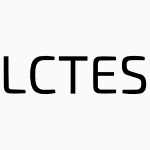 LCTES-1998-SeoPH #operating system #performance #realtime
LCTES-1998-SeoPH #operating system #performance #realtime- Efficient User-Level I/O in the ARX Real-Time Operating System (YS, JP, SH), pp. 166–175.
 HT-1997-HillHJLHH #hypermedia #navigation
HT-1997-HillHJLHH #hypermedia #navigation- Exploiting Serendipity Amongst Users To Provide Support For Hypertext Navigation (GH, GH, RJ, SL, JH, MH), pp. 212–213.
 HT-1997-HusemannPKKH #adaptation #navigation
HT-1997-HusemannPKKH #adaptation #navigation- An User Adaptive Navigation Metaphor to Connect and Rate the Coherence of Terms and Complex Objects (HH, JP, CK, HDK, PH), pp. 214–215.
 HT-1997-Neves
HT-1997-Neves- The Aleph: A Tool to Spatially Represent User Knowledge About the WWW Docuverse (FDN), pp. 197–207.
 HT-1997-PetrieMMOM #design #evaluation #hypermedia #interface
HT-1997-PetrieMMOM #design #evaluation #hypermedia #interface- Initial Design and Evaluation of an Interface to Hypermedia Systems for Blind Users (HP, SM, PM, AMO, DM), pp. 48–56.
 HT-1997-WangH #process
HT-1997-WangH #process- Supporting User-defined Activity Spaces (WW, JMH), pp. 112–123.
 ICDAR-1997-BapstZI #adaptation #documentation #recognition
ICDAR-1997-BapstZI #adaptation #documentation #recognition- A Scenario Model Advocating User-Driven Adaptive Document Recognition Systems (FB, AWZ, RI), pp. 745–748.
 ICDAR-1997-BunkeGM #documentation
ICDAR-1997-BunkeGM #documentation- A Tool for Versatile and User-friendly Document Correction (HB, RG, DM), pp. 433–438.
 ICDAR-1997-MiyamotoISNT #analysis #documentation #requirements
ICDAR-1997-MiyamotoISNT #analysis #documentation #requirements- Analysis of required elements for next-generation document reader on the basis of user requirements (TM, YI, KS, TN, YT), pp. 428–432.
 VLDB-1997-SeidlK #adaptation #database #multi #performance #scalability #similarity
VLDB-1997-SeidlK #adaptation #database #multi #performance #scalability #similarity- Efficient User-Adaptable Similarity Search in Large Multimedia Databases (TS, HPK), pp. 506–515.
 CSMR-1997-Csaba #experience #re-engineering #user interface
CSMR-1997-Csaba #experience #re-engineering #user interface- Experience with User Interface Reengineering Transferring DOS Panels to Windows (LC), pp. 150–156.
 CHI-1997-BaldonadoW #evolution #interface #named
CHI-1997-BaldonadoW #evolution #interface #named- SenseMaker: An Information-Exploration Interface Supporting the Contextual Evolution of a User’s Interests (MQWB, TW), pp. 11–18.
 CHI-1997-CalvaryCN #architecture #design
CHI-1997-CalvaryCN #architecture #design- From Single-User Architectural Design to PAC*: a Generic Software Architecture Model for CSCW (GC, JC, LN), pp. 242–249.
 CHI-1997-CobleKK #development #maintenance #requirements
CHI-1997-CobleKK #development #maintenance #requirements- Maintaining a Focus on User Requirements Throughout the Development of Clinical Workstation Software (JMC, JK, MGK), pp. 170–177.
 CHI-1997-FitzmauriceB #empirical #evaluation #multi #towards #user interface
CHI-1997-FitzmauriceB #empirical #evaluation #multi #towards #user interface- An Empirical Evaluation of Graspable User Interfaces: Towards Specialized, Space-Multiplexed Input (GWF, WB), pp. 43–50.
 CHI-1997-GrisedaleGG #design #user interface #visual notation
CHI-1997-GrisedaleGG #design #user interface #visual notation- Designing a Graphical User Interface for Healthcare Workers in Rural India (SG, MG, AG), pp. 471–478.
 CHI-1997-Hansen #design #user interface
CHI-1997-Hansen #design #user interface- Reflections on I/Design: User Interface Design at a Startup (ALH), pp. 487–493.
 CHI-1997-KnutsonAH #design #evolution #user interface
CHI-1997-KnutsonAH #design #evolution #user interface- Evolution of a User Interface Design: NCR’s Management Discovery Tool (JFK, TA, RLH), pp. 526–533.
 CHI-1997-Ramsay #analysis
CHI-1997-Ramsay #analysis- A Factor Analysis of User Cognition and Emotion (JR), pp. 546–547.
 CHI-1997-TerwilligerP #interface
CHI-1997-TerwilligerP #interface- Relationships Between Users’ and Interfaces’ Task Representations (RBT, PGP), pp. 99–106.
 CHI-1997-WilsonBJJ #design
CHI-1997-WilsonBJJ #design- Helping and Hindering User Involvement — A Tale of Everyday Design (SW, MMB, PJ, HJ), pp. 178–185.
 HCI-CC-1997-AkoumianakisSS #constraints #design #elicitation #interface #people
HCI-CC-1997-AkoumianakisSS #constraints #design #elicitation #interface #people- Interface Design for Disabled People: Eliciting User-Centred Design Constraints (DA, CS, GS), pp. 437–440.
 HCI-CC-1997-Bondarovskaia #interactive
HCI-CC-1997-Bondarovskaia #interactive- Psychological and Ergonomics Peculiarities of Cross-Cultural Interaction of Computer Users (VMB), pp. 105–108.
 HCI-CC-1997-Caldwell
HCI-CC-1997-Caldwell- User Needs and Support for Community-Based Information Technology Services (BSC), pp. 117–120.
 HCI-CC-1997-Carayon #quality
HCI-CC-1997-Carayon #quality- Longitudinal Studies of Quality of Working Life and Stress Among Computer Users (PC), pp. 361–364.
 HCI-CC-1997-IkedaOM #adaptation #evolution #multi #ontology
HCI-CC-1997-IkedaOM #adaptation #evolution #multi #ontology- Adaptable Information Clipping Service Supported by Evolving User Profile and Multiple Ontologies (TI, AO, KM), pp. 23–26.
 HCI-CC-1997-ItohSY #using #visual notation
HCI-CC-1997-ItohSY #using #visual notation- A Drawing Support System for the Visually Impaired Computer User Using a Virtual Sound Screen (KI, MS, YY), pp. 401–404.
 HCI-CC-1997-Jones
HCI-CC-1997-Jones- Computer Assistive Remote Control for the Motor-Impaired User (PEJ), pp. 393–396.
 HCI-CC-1997-Komatsubara
HCI-CC-1997-Komatsubara- Psychological Upper and Lower Limits of System Response Time and User’s Preference on Skill Level (AK), pp. 829–832.
 HCI-CC-1997-LeungC #design #user interface
HCI-CC-1997-LeungC #design #user interface- Cross Cultural Issues in User Interface Design (YKL, KC), pp. 181–184.
 HCI-CC-1997-Marcus #design #user interface
HCI-CC-1997-Marcus #design #user interface- Cultural Diversity for User Interface Design: A Progress Report (AM), pp. 145–148.
 HCI-CC-1997-Marcus97a #design #interface #standard
HCI-CC-1997-Marcus97a #design #interface #standard- International User-Interface Standards for Information Superhighways: Some Design Issues (AM), pp. 189–192.
 HCI-CC-1997-MetakidesGW #user interface
HCI-CC-1997-MetakidesGW #user interface- User Interface Software & Technology (UIST) Under ESPRIT: Current Work and Future Directions (GM, AG, JW), pp. 485–488.
 HCI-CC-1997-SainfortZK #industrial #multi #quality
HCI-CC-1997-SainfortZK #industrial #multi #quality- Assessing, Computing and Providing Quality of Care Information to Multiple Users: The Nursing Home Industry in the U.S. (FS, DZ, SK), pp. 765–768.
 HCI-CC-1997-SavidisAS #adaptation #architecture #implementation #interactive #interface
HCI-CC-1997-SavidisAS #adaptation #architecture #implementation #interactive #interface- Software Architecture for Transformable Interface Implementations: Building User-Adapted Interactions (AS, DA, CS), pp. 453–456.
 HCI-CC-1997-SavidisVS #library
HCI-CC-1997-SavidisVS #library- Embedding Scanning Techniques Accessible to Motor-Impaired Users in the WINDOWS Object Library (AS, GV, CS), pp. 429–432.
 HCI-CC-1997-SiauN #case study
HCI-CC-1997-SiauN #case study- An Experimental Study on User Interpretation of Icons (KS, FFHN), pp. 721–724.
 HCI-CC-1997-SkybergSEVG #health #problem
HCI-CC-1997-SkybergSEVG #health #problem- Electric Fields, Dust and Health Problems Among VDU-Users in an Office Environment: An Intervention Program (KS, KS, EW, AIV, LOG), pp. 655–657.
 HCI-CC-1997-SoongB #visual notation
HCI-CC-1997-SoongB #visual notation- Some Experimental Suggestions to Assist the Visually Handicapped End-Users to Navigate the Information Space (NLS, GB), pp. 433–436.
 HCI-CC-1997-Stary #design #evaluation #user interface
HCI-CC-1997-Stary #design #evaluation #user interface- The Role of Design and Evaluation Principles for User Interfaces for All (CS), pp. 477–480.
 HCI-CC-1997-SteeleOS #approach #development
HCI-CC-1997-SteeleOS #approach #development- A User-Centred Approach to Groupwork Systems Development (RAS, GO, JIAS), pp. 77–80.
 HCI-CC-1997-Stephanidis #generative #towards
HCI-CC-1997-Stephanidis #generative #towards- Towards the Next Generation of UIST: Developing for all Users (CS), pp. 473–476.
 HCI-CC-1997-StephanidisAZF #standard #user interface
HCI-CC-1997-StephanidisAZF #standard #user interface- User Interface Accessibility: A Retrospective of Current Standardisation Efforts (CS, DA, JZ, KPF), pp. 469–472.
 HCI-CC-1997-Weber #design #education #user interface
HCI-CC-1997-Weber #design #education #user interface- Design of Nonvisual User Interfaces for Use in Education (GW), pp. 413–416.
 HCI-SEC-1997-AnkerA #approach #communication #development #mobile #multi
HCI-SEC-1997-AnkerA #approach #communication #development #mobile #multi- Mobile Multimedia Communication: A Task- and User-Centered Approach to Future Systems Development (FWGvdA, AGA), pp. 651–654.
 HCI-SEC-1997-BlachSR #case study #experience #interactive
HCI-SEC-1997-BlachSR #case study #experience #interactive- Experiences with User Interactions in a CAVETM-Like Projection Environment (RB, AS, OR), pp. 977–980.
 HCI-SEC-1997-BlanchonF #what
HCI-SEC-1997-BlanchonF #what- Asking Users About What They Mean: Two Experiments & Results (HB, LF), pp. 609–612.
 HCI-SEC-1997-Boyce #design #user interface
HCI-SEC-1997-Boyce #design #user interface- Designing the User Interface for a Natural Spoken Dialogue System (SJB), pp. 367–370.
 HCI-SEC-1997-Chiu #effectiveness #modelling #problem
HCI-SEC-1997-Chiu #effectiveness #modelling #problem- Modeling the User’s Problem-Solving Expertise for Effective Decision Support (CC), pp. 99–102.
 HCI-SEC-1997-CrosbyC #multi #user interface
HCI-SEC-1997-CrosbyC #multi #user interface- Evaluating Multi-User Interfaces (EMI) (MEC, DNC), pp. 675–678.
 HCI-SEC-1997-Dooling #design
HCI-SEC-1997-Dooling #design- User-Centered Design at AT&T Labs (DJD), pp. 539–542.
 HCI-SEC-1997-FahnrichK #design #multi #standard #user interface
HCI-SEC-1997-FahnrichK #design #multi #standard #user interface- ISO 14915: A Standard on Multimedia User Interface Design (KPF, FK), pp. 691–694.
 HCI-SEC-1997-FariasA #design #interactive
HCI-SEC-1997-FariasA #design #interactive- Design Principles for a Training Software Agent: Issues Concerning Agent-User Interaction (AF, TNA), pp. 181–184.
 HCI-SEC-1997-FavelaC #navigation
HCI-SEC-1997-FavelaC #navigation- Estimating User Interests from their Navigation Patterns in the WWW (JF, AC), pp. 831–834.
 HCI-SEC-1997-KnizhnikHMG #design #interface #navigation #semantics #web
HCI-SEC-1997-KnizhnikHMG #design #interface #navigation #semantics #web- Semantic Stimulus Structure in World Wide Web Interface Design for Navigation by Novice Users (SZK, PEVH, MM, GG), pp. 823–826.
 HCI-SEC-1997-Lif #design #information management #modelling #user interface
HCI-SEC-1997-Lif #design #information management #modelling #user interface- User Interface Modeling for the Design of Administrative Information Systems (ML), pp. 383–386.
 HCI-SEC-1997-Marcus97b #design #user interface #web
HCI-SEC-1997-Marcus97b #design #user interface #web- History Lesson: The Web Discovers User Interface Design (AM), pp. 535–538.
 HCI-SEC-1997-MonclarJK #adaptation #framework #interactive #named
HCI-SEC-1997-MonclarJK #adaptation #framework #interactive #named- ELICO: A Platform for Dynamic Adaptation of User-System Interaction (FRM, IJ, JPK), pp. 11–14.
 HCI-SEC-1997-MorimotoKHKI #design #evaluation #usability
HCI-SEC-1997-MorimotoKHKI #design #evaluation #usability- Design and Usability Evaluation of a Novice User-Oriented Control Panel for Lighting and Air Conditioning (KM, TK, MH, NK, MI), pp. 617–620.
 HCI-SEC-1997-NordbottenC #comprehension #difference
HCI-SEC-1997-NordbottenC #comprehension #difference- Individual User Differences in Data Model Comprehension (JCN, MEC), pp. 663–666.
 HCI-SEC-1997-Pohl #machine learning #modelling #named
HCI-SEC-1997-Pohl #machine learning #modelling #named- LaboUr — Machine Learning for User Modeling (WP), pp. 27–30.
 HCI-SEC-1997-PosnerBM #using
HCI-SEC-1997-PosnerBM #using- Evaluating REAL Users, Using REAL Software, Performing REAL Tasks, in REAL Contexts (IP, RB, AM), pp. 597–600.
 HCI-SEC-1997-PridunP #information management #user interface
HCI-SEC-1997-PridunP #information management #user interface- User Interface Agents in a Public Information System (NP, PP), pp. 271–274.
 HCI-SEC-1997-Rauterberg #case study #game studies #interactive #user interface #video
HCI-SEC-1997-Rauterberg #case study #game studies #interactive #user interface #video- Natural User Interface (NUI): A Case Study of a Video Based Interaction Technique for a Computer Game (MR), pp. 253–256.
 HCI-SEC-1997-RauterbergBKM #case study #interactive #user interface #video
HCI-SEC-1997-RauterbergBKM #case study #interactive #user interface #video- Natural User Interfaces (NUI): A Case Study of a Video Based Interaction Technique for CAD Systems (MR, MB, HK, MM), pp. 929–932.
 HCI-SEC-1997-SmithD #design #interface
HCI-SEC-1997-SmithD #design #interface- User Centred Design: The Application of the LUCID Interface Design Method (AS, LD), pp. 563–568.
 HCI-SEC-1997-StelovskyC #interactive #java #visualisation
HCI-SEC-1997-StelovskyC #interactive #java #visualisation- A WWW Environment for Visualizing User Interactions with Java Applets (JS, MEC), pp. 755–758.
 HCI-SEC-1997-Sugiyama #development #user interface #visual notation
HCI-SEC-1997-Sugiyama #development #user interface #visual notation- A Highly Extensible Graphical User Interface in a Software Development Environment (YS), pp. 327–330.
 HCI-SEC-1997-TanoNSTA #architecture #concept #design #user interface
HCI-SEC-1997-TanoNSTA #architecture #concept #design #user interface- Design Concept Based on Real-Virtual-Intelligent User Interface and its Software Architecture (ST, YN, HS, TT, HA), pp. 901–904.
 HCI-SEC-1997-Vaananen-Vainio-MattilaH #communication #mobile #user interface
HCI-SEC-1997-Vaananen-Vainio-MattilaH #communication #mobile #user interface- Mobile Communication User Interfaces for Everyone (KVVM, SH), pp. 815–818.
 HCI-SEC-1997-Yoshida #graph #induction #modelling
HCI-SEC-1997-Yoshida #graph #induction #modelling- User Modeling by Graph-Based Induction (KY), pp. 23–26.
 HCI-SEC-1997-ZieglerM #user interface
HCI-SEC-1997-ZieglerM #user interface- Integrated User Interfaces for the Home Environment (JZ, JM), pp. 807–810.
 ACIR-1997-StewartD #bibliography #perspective #profiling
ACIR-1997-StewartD #bibliography #perspective #profiling- User Profiling Techniques: A Critical Review (SS, JD).
 ACIR-1997-VentersEH #image #retrieval #user interface
ACIR-1997-VentersEH #image #retrieval #user interface- The User Interface and Content-Based Image Retrieval Systems (CCV, JPE, RJH).
 SIGIR-1997-FidelC #performance
SIGIR-1997-FidelC #performance- Users’ Perception of the Performance of a Filtering System (RF, MC), pp. 198–205.
 SIGIR-1997-Saracevic #summary
SIGIR-1997-Saracevic #summary- Users Lost: Reflections on the Past, Future, and Limits of Information Science (Summary) (TS), pp. 1–2.
 ECOOP-1997-MeuselCK #documentation #framework #hypermedia #object-oriented #using
ECOOP-1997-MeuselCK #documentation #framework #hypermedia #object-oriented #using- A Model for Structuring User Documentation of Object-Oriented Frameworks Using Patterns and Hypertext (MM, KC, WK), pp. 496–510.
 TOOLS-USA-1997-BencomoLMM #framework #implementation #interface #java
TOOLS-USA-1997-BencomoLMM #framework #implementation #interface #java- Java Implementations of User-Interface Frameworks (NB, FL, FM, AM), pp. 232–246.
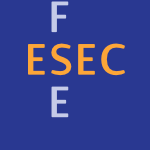 ESEC-FSE-1997-DwyerCH #abstraction #model checking #user interface #using #visual notation
ESEC-FSE-1997-DwyerCH #abstraction #model checking #user interface #using #visual notation- Model Checking Graphical User Interfaces Using Abstractions (MBD, VC, LH), pp. 244–261.
 ICSE-1997-GrahamU #architecture #user interface #visual notation
ICSE-1997-GrahamU #architecture #user interface #visual notation- Integrating Support for Temporal Media into an Architecture for Graphical User Interfaces (TCNG, TU), pp. 172–182.
 ICSE-1997-JacquotQ #approach #formal method #interface #specification #towards
ICSE-1997-JacquotQ #approach #formal method #interface #specification #towards- Early Specification of User-Interfaces: Toward a Formal Approach (JPJ, DQ), pp. 150–160.
 ICSE-1997-Sullivan #design #problem #user interface
ICSE-1997-Sullivan #design #problem #user interface- The Windows 95 User Interface: Iterative Design and Problem Tracking in Action (KS), pp. 562–563.
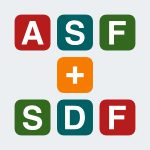 ASF+SDF-1997-Mosses #asf+sdf
ASF+SDF-1997-Mosses #asf+sdf- CASL for ASF+SDF users (PDM), p. 12.
 HPCA-1997-MarkatosK #kernel #operating system
HPCA-1997-MarkatosK #kernel #operating system- User-Level DMA without Operating System Kernel Modification (EPM, MK), pp. 322–331.
 HPCA-1997-WelshBE #communication #interface #network #performance
HPCA-1997-WelshBE #communication #interface #network #performance- ATM and Fast Ethernet Network Interfaces for User-Level Communication (MW, AB, TvE), pp. 332–342.
 HPDC-1997-EvenskyGCA #distributed #execution #named #scalability
HPDC-1997-EvenskyGCA #distributed #execution #named #scalability- Lilith: Scalable Execution of User Code for Distributed Computing (DAE, ACG, LJC, RCA), pp. 305–314.
 VLDB-1996-ChaudhuriS #optimisation #query
VLDB-1996-ChaudhuriS #optimisation #query- Optimization of Queries with User-defined Predicates (SC, KS), pp. 87–98.
 CSEE-1996-Ceberio-Verghese #perspective #process
CSEE-1996-Ceberio-Verghese #perspective #process- Personal Software Process: A User’s Perspective (ACCV), pp. 52–67.
 ITiCSE-1996-WoodmanH #object-oriented
ITiCSE-1996-WoodmanH #object-oriented- From software user to software author: an initial pedagogy for introductory object-oriented computing (MW, SH), pp. 60–62.
 WCRE-1996-Moore #detection #reverse engineering #rule-based #user interface
WCRE-1996-Moore #detection #reverse engineering #rule-based #user interface- Rule-Based Detection for Reverse Engineering User Interfaces (MMM), p. 42–?.
 FME-1996-KolyangSW #implementation
FME-1996-KolyangSW #implementation- Correct and User-Friendly Implementations of Transformation Systems (K, TS, BW), pp. 629–648.
 AFP-1996-FinneJ96 #user interface
AFP-1996-FinneJ96 #user interface- Composing the User Interface with Haggis (SF, SLPJ), pp. 1–37.
 CHI-1996-ComstockD #architecture #usability
CHI-1996-ComstockD #architecture #usability- Embed User Values in System Architecture: The Declaration of System Usability (EMC, WMD), pp. 420–427.
 CHI-1996-Gonzalez #animation #question #user interface
CHI-1996-Gonzalez #animation #question #user interface- Does Animation in User Interfaces Improve Decision Making? (CG), pp. 27–34.
 CHI-1996-KasikG #automation #generative #testing #towards
CHI-1996-KasikG #automation #generative #testing #towards- Toward Automatic Generation of Novice User Test Scripts (DJK, HGG), pp. 244–251.
 CHI-1996-MereuK #3d #interface #visual notation
CHI-1996-MereuK #3d #interface #visual notation- Audio Enhanced 3D Interfaces for Visually Impaired Users (SWM, RK), pp. 72–78.
 CHI-1996-MohagegMMKMI #3d #user interface #web
CHI-1996-MohagegMMKMI #3d #user interface #web- A User Interface for Accessing 3D Content on the World Wide Web (MFM, RM, CM, JK, DM, PI), p. 466–?.
 CHI-1996-PageJAA #word
CHI-1996-PageJAA #word- User Customization of a Word Processor (SRP, TJJ, UA, CDA), pp. 340–346.
 CHI-1996-RobertsonWAF #design #interactive #user interface
CHI-1996-RobertsonWAF #design #interactive #user interface- Dual Device User Interface Design: PDAs and Interactive Television (SPR, CW, CA, MF), pp. 79–86.
 CHI-1996-Sullivan #case study #usability #user interface
CHI-1996-Sullivan #case study #usability #user interface- The Windows 95 User Interface: A Case Study in Usability Engineering (KS), pp. 473–480.
 CHI-1996-TerveenM
CHI-1996-TerveenM- Helping Users Program Their Personal Agents (LGT, LTM), pp. 355–361.
 CHI-1996-WagnerC #user interface
CHI-1996-WagnerC #user interface- Demo or Die: User Interface as Marketing Theatre (AW, MC), pp. 458–465.
 CSCW-1996-LeePJW #multi
CSCW-1996-LeePJW #multi- Supporting Multi-User, Multi-Applet Workspaces in CBE (JHL, AP, TJ, GW), pp. 344–353.
 CSCW-1996-PalfreymanR #protocol #web
CSCW-1996-PalfreymanR #protocol #web- A Protocol for User Awareness on the World Wide Web (KP, TR), pp. 130–139.
 CSCW-1996-Smith #2d #lessons learnt #multi #user interface
CSCW-1996-Smith #2d #lessons learnt #multi #user interface- Cooperative Virtual Environments: Lessons from 2D Multi User Interfaces (GS), pp. 390–398.
 TRI-Ada-1996-Westley #ada #development #independence #named #tool support #user interface #visual notation
TRI-Ada-1996-Westley #ada #development #independence #named #tool support #user interface #visual notation- TASH: A Free Platform-Independent Graphical User Interface Development Toolkit for Ada (TJW), pp. 165–178.
 CAiSE-1996-KellyLR #automation #configuration management #multi
CAiSE-1996-KellyLR #automation #configuration management #multi- MetaEdit+: A Fully Configurable Multi-User and Multi-Tool CASE and CAME Environment (SK, KL, MR), pp. 1–21.
 CAiSE-1996-MehandjievB #information management #programming #visual notation
CAiSE-1996-MehandjievB #information management #programming #visual notation- User-Enhanceability for Organizational Information Systems through Visual Programming (NM, LB), pp. 432–456.
 CIKM-1996-Huffman #learning
CIKM-1996-Huffman #learning- Learning to Extract Information From Text Based on User-Provided Examples (SBH), pp. 154–163.
 KDD-1996-Engels #database #information management
KDD-1996-Engels #database #information management- Planning Tasks for Knowledge Discovery in Databases; Performing Task-Oriented User-Guidance (RE), pp. 170–175.
 KDD-1996-FawcettP #data mining #effectiveness #machine learning #mining #profiling
KDD-1996-FawcettP #data mining #effectiveness #machine learning #mining #profiling- Combining Data Mining and Machine Learning for Effective User Profiling (TF, FJP), pp. 8–13.
 SEKE-1996-KnollSS #assurance #perspective #quality #specification
SEKE-1996-KnollSS #assurance #perspective #quality #specification- Quality Assurance of Specification — The Users Point of View (HDK, TS, WS), pp. 450–456.
 SIGIR-1996-BrajnikMT #case study #information retrieval #user interface
SIGIR-1996-BrajnikMT #case study #information retrieval #user interface- Evaluating User Interfaces to Information Retrieval Systems: A Case Study on User Support (GB, SM, CT), pp. 128–136.
 SIGIR-1996-LamMMP #detection #information management #personalisation
SIGIR-1996-LamMMP #detection #information management #personalisation- Detection of Shifts in User Interests for Personalized Information Filtering (WL, SM, JM, MJP), pp. 317–325.
 SIGIR-1996-MulhemN #design #information retrieval #interactive #interface
SIGIR-1996-MulhemN #design #information retrieval #interactive #interface- Interactive Information Retrieval Systems: From User Centred Interface Design to Software Design (PM, LN), pp. 326–334.
 ECOOP-1996-EngelsonFF #automation #data type #generative #modelling #object-oriented #specification #user interface
ECOOP-1996-EngelsonFF #automation #data type #generative #modelling #object-oriented #specification #user interface- Automatic Generation of User Interfaces From Data Structure Specifications and Object-Oriented Application Models (VE, DF, PF), pp. 114–141.
 ICRE-1996-HsiaHKH #clustering #composition #requirements
ICRE-1996-HsiaHKH #clustering #composition #requirements- User-Centered System Decomposition: Z-Based Requirements Clustering (PH, CTH, DCK, LBH), pp. 126–135.
 ICRE-1996-KostersSV #analysis #requirements #user interface
ICRE-1996-KostersSV #analysis #requirements #user interface- Combined Analysis of User Interface and Domain Requirements (GK, HWS, JV), pp. 199–207.
 SAC-1996-ZadroznyK #consistency #query #towards #user interface
SAC-1996-ZadroznyK #consistency #query #towards #user interface- FQUERY for Access: towards human consistent querying user interface (SZ, JK), pp. 532–536.
 ICSE-1996-BaumerBLZ #concept #experience #prototype #tool support #user interface
ICSE-1996-BaumerBLZ #concept #experience #prototype #tool support #user interface- User Interface Prototyping — Concepts, Tools, and Experience (DB, WRB, HL, HZ), pp. 532–541.
 ICSE-1996-PaoliS #architecture #interactive #multi #requirements
ICSE-1996-PaoliS #architecture #interactive #multi #requirements- Requirements for a Layered Software Architecture Supporting Cooperative Multi-User Interaction (FDP, AS), pp. 408–417.
 HPCA-1996-BlumrichDFL #interface #network
HPCA-1996-BlumrichDFL #interface #network- Protected, User-Level DMA for the SHRIMP Network Interface (MAB, CD, EWF, KL), pp. 154–165.
 HPDC-1996-VandevoordeK #parallel #user interface
HPDC-1996-VandevoordeK #parallel #user interface- Parallel User Interfaces for Parallel Applications (MTV, DK), pp. 161–170.
 ICDAR-v2-1995-TakahashiM #clustering
ICDAR-v2-1995-TakahashiM #clustering- A clustering method and radius tuning by end users (HT, KMM), pp. 698–701.
 SIGMOD-1995-DavisonG #execution #multi #query
SIGMOD-1995-DavisonG #execution #multi #query- Dynamic Resource Brokering for Multi-User Query Execution (DLD, GG), pp. 281–292.
 TACAS-1995-HenzingerHW
TACAS-1995-HenzingerHW- A User Guide to HyTech (TAH, PHH, HWT), pp. 41–71.
 ICSM-1995-AntoniolFMT #c++ #migration #user interface #visual notation
ICSM-1995-AntoniolFMT #c++ #migration #user interface #visual notation- Application and user interface migration from BASIC to Visual C++ (GA, RF, EM, PT), p. 76–?.
 CHI-1995-AalstCM #analysis #design #framework #learning #user interface
CHI-1995-AalstCM #analysis #design #framework #learning #user interface- Design Space Analysis as “Training Wheels” in a Framework for Learning User Interface Design (JWvA, TTC, DLM), pp. 154–161.
 CHI-1995-BenfordBFGS #collaboration
CHI-1995-BenfordBFGS #collaboration- User Embodiment in Collaborative Virtual Environments (SB, JB, LEF, CG, DS), pp. 242–249.
 CHI-1995-CypherS #named #programming #simulation
CHI-1995-CypherS #named #programming #simulation- KidSim: End User Programming of Simulations (AC, DCS), pp. 27–34.
 CHI-1995-FitzmauriceIB #named #user interface
CHI-1995-FitzmauriceIB #named #user interface- Bricks: Laying the Foundations for Graspable User Interfaces (GWF, HI, WB), pp. 442–449.
 CHI-1995-FrankishHM #interface #recognition
CHI-1995-FrankishHM #interface #recognition- Recognition Accuracy and User Acceptance of Pen Interfaces (CF, RH, PM), pp. 503–510.
 CHI-1995-Harrison #comparison #online #user interface #visual notation
CHI-1995-Harrison #comparison #online #user interface #visual notation- A Comparison of Still, Animated, or Nonillustrated On-Line Help with Written or Spoken Instructions in a Graphical User Interface (SMH), pp. 82–89.
 CHI-1995-HarrisonIVB #design #evaluation #user interface
CHI-1995-HarrisonIVB #design #evaluation #user interface- Transparent Layered User Interfaces: An Evaluation of a Display Design to Enhance Focused and Divided Attention (BLH, HI, KJV, WB), pp. 317–324.
 CHI-1995-Hershmann #constraints #design #user interface
CHI-1995-Hershmann #constraints #design #user interface- The Effects of Practical Business Constraints on User Interface Design (DH), pp. 531–537.
 CHI-1995-Johnson #comparison #user interface
CHI-1995-Johnson #comparison #user interface- A Comparison of User Interfaces for Panning on a Touch-Controlled Display (JAJ), pp. 218–225.
 CHI-1995-LandayM #design #interactive #sketching #user interface
CHI-1995-LandayM #design #interactive #sketching #user interface- Interactive Sketching for the Early Stages of User Interface Design (JAL, BAM), pp. 43–50.
 CHI-1995-MackinlayRC #user interface
CHI-1995-MackinlayRC #user interface- An Organic User Interface for Searching Citation Links (JDM, RR, SKC), pp. 67–73.
 CHI-1995-MalinowskiN #collaboration #design #user interface #using
CHI-1995-MalinowskiN #collaboration #design #user interface #using- Using Computational Critics to Facilitate Long-Term Collaboration in User Interface Design (UM, KN), pp. 385–392.
 CHI-1995-MastaglioW #development #scalability
CHI-1995-MastaglioW #development #scalability- User-Centered Development of a Large-Scale Complex Networked Virtual Environment (TWM, JW), pp. 546–552.
 CHI-1995-Moll-CarrilloSMSS #design
CHI-1995-Moll-CarrilloSMSS #design- Articulating a Metaphor through User-Centered Design (HJMC, GS, MM, JFS, PS), pp. 566–572.
 CHI-1995-PiernotFSMY #design #hardware #interface
CHI-1995-PiernotFSMY #design #hardware #interface- Designing the PenPal: Blending Hardware and Software in a User-Interface for Children (PP, RMF, RS, JM, MPY), pp. 511–518.
 CHI-1995-RoeslerM #data access #online #taxonomy #what
CHI-1995-RoeslerM #data access #online #taxonomy #what- What Help Do Users Need?: Taxonomies for On-Line Information Needs and Access Methods (AWR, SGM), pp. 437–441.
 CHI-1995-SavidisS #interface
CHI-1995-SavidisS #interface- Developing Dual Interfaces for Integrating Blind and Sighted Users: The HOMER UIMS (AS, CS), pp. 106–113.
 CHI-1995-WiedenbeckZM #empirical #online
CHI-1995-WiedenbeckZM #empirical #online- End-User Training: An Empirical Study Comparing On-Line Practice Methods (SW, PLZ, DSM), pp. 74–81.
 CHI-1995-YamaashiKTM #image #video
CHI-1995-YamaashiKTM #image #video- User-Centered Video: Transmitting Video Images Based on the User’s Interest (KY, YK, MT, HM), pp. 325–330.
 CHI-1995-YankelovichLM #design #speech #user interface
CHI-1995-YankelovichLM #design #speech #user interface- Designing SpeechActs: Issues in Speech User Interfaces (NY, GAL, MM), pp. 369–376.
 CAiSE-1995-Pettersson #concept #design #user interface
CAiSE-1995-Pettersson #concept #design #user interface- Designing the User Interface on Top of a Conceptual Model (MP), pp. 231–242.
 SEKE-1995-Al-SaadoonTE #approach #composition #named #object-oriented
SEKE-1995-Al-SaadoonTE #approach #composition #named #object-oriented- AURA-CFG/E: An Object-Oriented approach for Acquisition and Decomposition of DFDs from End users (OAAS, WTT, HEb), pp. 1–7.
 SEKE-1995-BernardeschiFP #architecture #correctness #interactive #specification #user interface
SEKE-1995-BernardeschiFP #architecture #correctness #interactive #specification #user interface- Application of Correctness Preserving Transformations for Deriving Architectural Descriptions of Interactive Systems from User Interface Specifications (CB, AF, FP), pp. 234–243.
 SIGIR-1995-Ornager #analysis #clustering #database #empirical #image #word
SIGIR-1995-Ornager #analysis #clustering #database #empirical #image #word- The Newspaper Image Database: Empirical Supported Analysis of Users’ Typology and Word Association Clusters (SO), pp. 212–218.
 OOPSLA-1995-Smith #experience #prototype #user interface #using
OOPSLA-1995-Smith #experience #prototype #user interface #using- Using a Prototype-based Language for User Interface: The Newton Project’s Experience (WRS), pp. 61–72.
 OOPSLA-1995-SmithMU #flexibility #self #user interface
OOPSLA-1995-SmithMU #flexibility #self #user interface- The Self-4.0 User Interface: Manifesting a System-wide Vision of Concreteness, Uniformity and Flexibility (RBS, JM, DU), pp. 47–60.
 PLILP-1995-NobleR #component #functional #lazy evaluation #named #user interface #visual notation
PLILP-1995-NobleR #component #functional #lazy evaluation #named #user interface #visual notation- Gadgets: Lazy Functional Components for Graphical User Interfaces (RN, CR), pp. 321–340.
 RE-1995-ForsgrenR #industrial #requirements #specification
RE-1995-ForsgrenR #industrial #requirements #specification- Specification of customer and user requirements in industrial control system procurement projects (PF, TR), pp. 81–88.
 SAC-1995-Obaidat #verification
SAC-1995-Obaidat #verification- A verification methodology for computer systems users (MSO), pp. 258–262.
 FSE-1995-CheungK #analysis #composition #constraints #distributed #finite #reachability
FSE-1995-CheungK #analysis #composition #constraints #distributed #finite #reachability- Compositional Reachability Analysis of Finite-State Distributed Systems with User-Specified Constraints (SCC, JK), pp. 140–150.
 HPDC-1995-KohliAS #abstraction #distributed #named
HPDC-1995-KohliAS #abstraction #distributed #named- Indigo: User-Level Support for Building Distributed Shared Abstractions (PK, MA, KS), pp. 130–137.
 LCT-RTS-1995-KoWH #analysis #constraints
LCT-RTS-1995-KoWH #analysis #constraints- Supporting User-Friendly Analysis of Timing Constraints (LK, DBW, MGH), pp. 99–107.
 SOSP-1995-EickenBBV #distributed #interface #named #network #parallel
SOSP-1995-EickenBBV #distributed #interface #named #network #parallel- U-Net: A User-Level Network Interface for Parallel and Distributed Computing (TvE, AB, VB, WV), pp. 40–53.
 KBSE-1994-Bolcer #design #development #scalability #user interface
KBSE-1994-Bolcer #design #development #scalability #user interface- User Interface Design Assistance For Large-Scale Software Development (GAB), pp. 142–149.
 KBSE-1994-GirgensohnRS #communication #design #developer
KBSE-1994-GirgensohnRS #communication #design #developer- Agent-Based Support for Communication Between Developers and Users in Software Design (AG, DFR, FMSI), pp. 22–29.
 VLDB-1994-GaasterlandL
VLDB-1994-GaasterlandL- Qualified Answers That Reflect User Needs and Preferences (TG, JL), pp. 309–320.
 VLDB-1994-Spaccapietra #question #user interface
VLDB-1994-Spaccapietra #question #user interface- User Interfaces; Who Cares? (SS), p. 751.
 CSEE-1994-BralickR #distance #education #multi #re-engineering #using
CSEE-1994-BralickR #distance #education #multi #re-engineering #using- Using a Multi-User Dialogue System to Support Software Engineering Distance Education (WABJ, JSR), pp. 565–582.
 ICSM-1994-MerloGT #reverse engineering #specification #user interface #visual notation
ICSM-1994-MerloGT #reverse engineering #specification #user interface #visual notation- Inference of Graphical AUIDL Specifications for the Reverse Engineering of User Interfaces (EM, PYG, AT), pp. 80–88.
 ICSM-1994-MooreRS #knowledge-based #migration #user interface
ICSM-1994-MooreRS #knowledge-based #migration #user interface- Knowledge-Based User Interface Migration (MMM, SR, PS), pp. 72–79.
 ICSM-1994-Tilley #personalisation #reverse engineering #user interface
ICSM-1994-Tilley #personalisation #reverse engineering #user interface- Domain-Retargetable Reverse Engineering II: Personalized User Interfaces (SRT), pp. 336–342.
 CHI-1994-EisenbergF94a #design #programmable #programming
CHI-1994-EisenbergF94a #design #programmable #programming- Programmable design environments: integrating end-user programming with domain-oriented assistance (ME, GF), pp. 431–437.
 CHI-1994-KurtenbachB94a #learning #performance
CHI-1994-KurtenbachB94a #learning #performance- User learning and performance with marking menus (GK, WB), pp. 258–264.
 CHI-1994-Kyng94a #design #development
CHI-1994-Kyng94a #design #development- Scandinavian design: users in product development (MK), pp. 3–9.
 CHI-1994-LawrenceAD94a #interactive #social
CHI-1994-LawrenceAD94a #interactive #social- Surrogate users: mediating between social and technical interaction (DL, MEA, SD), pp. 399–404.
 CHI-1994-MynattW94a #user interface #visual notation
CHI-1994-MynattW94a #user interface #visual notation- Nonvisual presentation of graphical user interfaces: contrasting two approaches (EDM, GW), pp. 166–172.
 CHI-1994-NardiJ94a
CHI-1994-NardiJ94a- User preferences for task-specific vs. generic application software (BAN, JAJ), pp. 392–398.
 CHI-1994-Rowley94b #testing #usability
CHI-1994-Rowley94b #testing #usability- Usability testing in the field: bringing the laboratory to the user (DER), pp. 252–257.
 CHI-1994-StoneFB94a #user interface
CHI-1994-StoneFB94a #user interface- The movable filter as a user interface tool (MCS, KPF, EAB), pp. 306–312.
 CHI-1994-TaniHYTF94a #bibliography #named #scalability
CHI-1994-TaniHYTF94a #bibliography #named #scalability- Courtyard: integrating shared overview on a large screen and per-user detail on individual screens (MT, MH, KY, KT, MF), pp. 44–50.
 TRI-Ada-1994-Moody #architecture #execution #multi #process
TRI-Ada-1994-Moody #architecture #execution #multi #process- The STARS Process Engine: Language and Architecture to Support Process Capture and Multi-User Execution (SAM), pp. 4–15.
 CAiSE-1994-AbererKF #database #design #object-oriented #query
CAiSE-1994-AbererKF #database #design #object-oriented #query- Designing a User-Oriented Query Modification Facility in Object-Oriented Database Systems (KA, WK, ALF), pp. 380–393.
 SEKE-1994-Hurley #user interface
SEKE-1994-Hurley #user interface- Deducing structure in systems with separable user interfaces (WDH), pp. 193–200.
 SIGIR-1994-HemmjeKW #named #retrieval #user interface #visualisation
SIGIR-1994-HemmjeKW #named #retrieval #user interface #visualisation- LyberWorld — A Visualization User Interface Supporting Fulltext Retrieval (MH, CK, AW), pp. 249–259.
 SIGIR-1994-MoritaS #analysis #behaviour #information management #retrieval
SIGIR-1994-MoritaS #analysis #behaviour #information management #retrieval- Information Filtering Based on User Behaviour Analysis and Best Match Text Retrieval (MM, YS), pp. 272–281.
 ECOOP-1994-FreemanM #object-oriented #tool support #user interface #video
ECOOP-1994-FreemanM #object-oriented #tool support #user interface #video- Adding Digital Video to an Object-Oriented User Interface Toolkit (SMGF, MSM), pp. 493–512.
 SAC-1994-El-Said #automation #design #user interface #visual notation
SAC-1994-El-Said #automation #design #user interface #visual notation- Automated design of visual user interfaces (MES), pp. 545–550.
 SAC-1994-MayrhauserP #requirements #user interface
SAC-1994-MayrhauserP #requirements #user interface- Developing requirements for a user interface (AvM, LP), pp. 10–14.
 ASPLOS-1994-ArgadeCT #monitoring #operating system #runtime
ASPLOS-1994-ArgadeCT #monitoring #operating system #runtime- A Technique for Monitoring Run-Time Dynamics of an Operating System and a Microprocessor Executing User Applications (PVA, DKC, CT), pp. 122–131.
 ASPLOS-1994-MaynardDO #multi #performance
ASPLOS-1994-MaynardDO #multi #performance- Contrasting Characteristics and Cache Performance of Technical and Multi-User Commercial Workloads (AMGM, CMD, BRO), pp. 145–156.
 KBSE-1993-DrummondHI #automation
KBSE-1993-DrummondHI #automation- Accelerating Browsing By Automatically Inferring A User’s Search Goal (CD, RH, DI), p. 23.
 HT-1993-Chang #approach #automation #generative #named
HT-1993-Chang #approach #automation #generative #named- HieNet: A User-Centered Approach for Automatic Link Generation (DTC), pp. 145–158.
 VLDB-1993-Fitzgerald #challenge #database #industrial #problem
VLDB-1993-Fitzgerald #challenge #database #industrial #problem- Problems/Challenges facing Industry Data Base Users (KF), p. 707.
 CSM-1993-MerloGHM #constant #multi #re-engineering #user interface
CSM-1993-MerloGHM #constant #multi #re-engineering #user interface- Multi-Valued Constant Propagation for the Reengineering of User Interfaces (EM, JFG, LJH, RdM), pp. 120–129.
 WCRE-1993-MerloGKPM #reverse engineering #user interface
WCRE-1993-MerloGKPM #reverse engineering #user interface- Reverse Engineering of User Interfaces (EM, JFG, KK, PP, RdM), pp. 171–179.
 FPCA-1993-CarlssonH #functional #lazy evaluation #named #user interface #visual notation
FPCA-1993-CarlssonH #functional #lazy evaluation #named #user interface #visual notation- FUDGETS: A Graphical User Interface in a Lazy Functional Language (MC, TH), pp. 321–330.
 HCI-ACS-1993-AhmadHRHHHKM #case study #development
HCI-ACS-1993-AhmadHRHHHKM #case study #development- User-driven Software Development: Translator’s Workbench — An Exemplar Case Study (KA, PHH, MR, MH, KLH, CH, RK, RM), pp. 319–324.
 HCI-ACS-1993-Ala-Siuru #case study #experience #specification #user interface #using
HCI-ACS-1993-Ala-Siuru #case study #experience #specification #user interface #using- Using QFD Techniques in User Interface Specification: First Experiences (PAS), pp. 456–461.
 HCI-ACS-1993-Badham #design #implementation
HCI-ACS-1993-Badham #design #implementation- Implementing Smart Manufacturing: Some Techniques for Designer/User Cooperation (RJB), pp. 62–67.
 HCI-ACS-1993-Barnard #design #modelling #research
HCI-ACS-1993-Barnard #design #modelling #research- Modelling Users, Systems and Design Spaces (Esprit Basic Research Action 3066) (PJB), pp. 331–336.
 HCI-ACS-1993-Beck #case study #design
HCI-ACS-1993-Beck #case study #design- User Participation in systems Design — Results of a Field Study (AB), pp. 534–539.
 HCI-ACS-1993-BollenS #automation #case study #how #process
HCI-ACS-1993-BollenS #automation #case study #how #process- How to Survive Process Control Automation: A Case Study of Integral User Participation (LAAB, TWvdS), pp. 121–126.
 HCI-ACS-1993-BrazierR #modelling #user satisfaction
HCI-ACS-1993-BrazierR #modelling #user satisfaction- Modelling Collective User Satisfaction (FMTB, ZR), pp. 672–677.
 HCI-ACS-1993-CakirC #documentation #evaluation #image #user interface
HCI-ACS-1993-CakirC #documentation #evaluation #image #user interface- Image Processing of Office Documents — Ergonomic Evaluation of the User Interface of a New System (GÇ, AÇ), pp. 797–802.
 HCI-ACS-1993-CarayonJH #design
HCI-ACS-1993-CarayonJH #design- Effect of Job Control on the Design of Jobs and Stress Among Computer Users (PC, EJ, CH), pp. 863–868.
 HCI-ACS-1993-ChasePHH #case study #documentation #using
HCI-ACS-1993-ChasePHH #case study #documentation #using- Task-Oriented User Documentation Using the User Action Notation: A Case Study (JDC, MP, HRH, DH), pp. 421–426.
 HCI-ACS-1993-EikeFD
HCI-ACS-1993-EikeFD- User-Centered Guidance for Environmental Mangagement (DRE, JAF, RD), pp. 564–569.
 HCI-ACS-1993-FerraraLPP #development #user interface
HCI-ACS-1993-FerraraLPP #development #user interface- The Hyperface/Interactors User Interface Development Environment (PF, CL, EP, RP), pp. 325–330.
 HCI-ACS-1993-Friedrich #development
HCI-ACS-1993-Friedrich #development- Production Deviations: Opportunities for User-Based Technological Development (PF), pp. 815–820.
 HCI-ACS-1993-Hayanhjelm #design #evolution #problem #process
HCI-ACS-1993-Hayanhjelm #design #evolution #problem #process- The Ergonomic Deisgn Process — The User Involved in Problem Solving and the Design Evolution (HIJH), pp. 966–969.
 HCI-ACS-1993-HouwingWA #evaluation #metric #usability
HCI-ACS-1993-HouwingWA #evaluation #metric #usability- Usability Evaluation From Users’ Point of View: Three Complementary Measures (EMH, MW, AGA), pp. 475–480.
 HCI-ACS-1993-JarvenpaaCHLY #case study #comparison #framework
HCI-ACS-1993-JarvenpaaCHLY #case study #comparison #framework- A Cross-Cultural Framework for the Study of Stres Among Computer Users: Comparison of the USA and Finland (EJ, PC, CH, SYL, CLY), pp. 874–879.
 HCI-ACS-1993-Kirsch #communication #evaluation #modelling
HCI-ACS-1993-Kirsch #communication #evaluation #modelling- Evaluation of Communication Methods for User Participation in Data Modelling (CK), pp. 558–563.
 HCI-ACS-1993-MacGregorHL #interface
HCI-ACS-1993-MacGregorHL #interface- The Effect of User Characteristics on Interface Choice (RCM, HH, HTL), pp. 570–574.
 HCI-ACS-1993-Mainguenaud #database #information management #user interface
HCI-ACS-1993-Mainguenaud #database #information management #user interface- From User Interface to the Database Management System: Application to a Geographical Information System (MM), pp. 684–689.
 HCI-ACS-1993-Marcus #design #user interface
HCI-ACS-1993-Marcus #design #user interface- Metaphor Design and Cultural Diversity in Advanced User Interfaces (AM), pp. 469–474.
 HCI-ACS-1993-WangG #framework
HCI-ACS-1993-WangG #framework- A Framework for User Customization (HW, MG), pp. 552–557.
 HCI-ACS-1993-YuLGWL #named #user interface
HCI-ACS-1993-YuLGWL #named #user interface- Elecpapen: An Integrated and Intelligent User Interface System for CAD (ZZY, EWL, RKLG, JW, DYL), pp. 261–266.
 HCI-SHI-1993-CakmakovD #multi #retrieval #user interface
HCI-SHI-1993-CakmakovD #multi #retrieval #user interface- An Intelligent User Interface for Multimedia Mineral Retrieval System (DC, DD), pp. 202–207.
 HCI-SHI-1993-CarlsonH #design #interface #performance
HCI-SHI-1993-CarlsonH #design #interface #performance- The Impact of the Design of the Software Control Interface on User Performance (JRC, LLH), pp. 116–121.
 HCI-SHI-1993-ChaseHHSB #behaviour #design #representation #user interface
HCI-SHI-1993-ChaseHHSB #behaviour #design #representation #user interface- A Model of Behavioral Techniques for Representing User Interface Designs (JDC, HRH, DH, RSS, JLB), pp. 861–866.
 HCI-SHI-1993-ChenN #approach #modelling
HCI-SHI-1993-ChenN #approach #modelling- An Associative Approach in Dynamic User Modeling (QC, AFN), pp. 909–914.
 HCI-SHI-1993-DielUW #architecture #user interface
HCI-SHI-1993-DielUW #architecture #user interface- An Information-Based User Interface Architecture (HD, JU, HMW), pp. 110–115.
 HCI-SHI-1993-DijkstraHD #editing
HCI-SHI-1993-DijkstraHD #editing- User Responses to an Editor Supporting Syntactic Selection Method (AD, CH, HD), pp. 627–632.
 HCI-SHI-1993-DillonND #experience #interactive #performance
HCI-SHI-1993-DillonND #experience #interactive #performance- Spoken Language Interaction: Effects of Vocabulary Size and Experience on User Efficiency and Acceptability (TWD, AFN, MJD), pp. 140–145.
 HCI-SHI-1993-FelixK #prototype #user interface
HCI-SHI-1993-FelixK #prototype #user interface- Iterative Prototyping of User Interfaces (DF, HK), pp. 158–162.
 HCI-SHI-1993-FullertonH #education
HCI-SHI-1993-FullertonH #education- A User-Oriented Test of Icons in an Educational Software Product (SF, AJH), pp. 44–49.
 HCI-SHI-1993-Gillies #information management
HCI-SHI-1993-Gillies #information management- Making Information Systems Fit Users Needs (ACG), pp. 391–396.
 HCI-SHI-1993-HerczegHR #approach #design #programming #user interface #visual notation
HCI-SHI-1993-HerczegHR #approach #design #programming #user interface #visual notation- A New Approach to Visual Programming in User Interface Design (JH, HH, MR), pp. 74–79.
 HCI-SHI-1993-HobbsS #3d #user interface
HCI-SHI-1993-HobbsS #3d #user interface- A User Interface to a True 3-D Display Device (BAH, MRS), pp. 579–584.
 HCI-SHI-1993-IwaiM #development #tool support #user interface
HCI-SHI-1993-IwaiM #development #tool support #user interface- User Interface Development Tools for Pen Computer Applications (II, YM), pp. 1016–1021.
 HCI-SHI-1993-Kaddah #development #interactive #prototype #user interface
HCI-SHI-1993-Kaddah #development #interactive #prototype #user interface- Interactive Scenarios for the Development of a User Interface Prototype (MMK), pp. 128–133.
 HCI-SHI-1993-KinoeMH #process #user interface
HCI-SHI-1993-KinoeMH #process #user interface- Integrating Analytical and Creative Processes for User Interface Re-Design (YK, HM, YH), pp. 163–168.
 HCI-SHI-1993-KirbyH #analysis #design
HCI-SHI-1993-KirbyH #analysis #design- An Analysis Technique for User Centered Design (JK, HH), pp. 991–996.
 HCI-SHI-1993-KobayashiN #generative #online
HCI-SHI-1993-KobayashiN #generative #online- A Method for Generating Messages of the On-Line Help System Based on a User Model and a Situational Model (YK, MN), pp. 621–626.
 HCI-SHI-1993-MalinowskiKDS #adaptation #user interface
HCI-SHI-1993-MalinowskiKDS #adaptation #user interface- Computer-Aided Adaptation of User Interfaces with Menus and Dialog Boxes (UM, TK, HD, MSH), pp. 122–127.
 HCI-SHI-1993-MartialD #design #named #people #user interface #visual notation
HCI-SHI-1993-MartialD #design #named #people #user interface #visual notation- Audicon: Easy Access to Graphical User Interfaces for Blind Persons — Designing for and with People (OM, AD), pp. 808–813.
 HCI-SHI-1993-MoriH #multi #visual notation
HCI-SHI-1993-MoriH #multi #visual notation- Visual Interference with User’s Tasks on Multi-Window System (HM, YH), pp. 80–85.
 HCI-SHI-1993-MouzakisH #design #multi #process #user interface
HCI-SHI-1993-MouzakisH #design #multi #process #user interface- Multi-Media Support for Up-Stream User Interface Design Activities (KM, SH), pp. 458–463.
 HCI-SHI-1993-NowellH #database #development #user interface #visualisation
HCI-SHI-1993-NowellH #database #development #user interface #visualisation- Visualizing Search Results: User Interface Development for the Project Envision Database of Computer Science Literature (LTN, DH), pp. 56–61.
 HCI-SHI-1993-PinoF #collaboration #design #user interface
HCI-SHI-1993-PinoF #collaboration #design #user interface- Design of the User Interface of a Collaborative Text Writing System (JAP, EF), pp. 50–55.
 HCI-SHI-1993-ReimersC #database #relational #scalability #user interface
HCI-SHI-1993-ReimersC #database #relational #scalability #user interface- Intelligent User Interface for Very Large Relational Databases (PER, SMC), pp. 134–139.
 HCI-SHI-1993-ResselHH #approach #multi
HCI-SHI-1993-ResselHH #approach #multi- An Eventful Approach to Multi-Media, Multi-User Applications (MR, HH, JH), pp. 428–433.
 HCI-SHI-1993-Sato #collaboration #design #development
HCI-SHI-1993-Sato #collaboration #design #development- Human Centred Collaborative Design in System Development — Intelligent Back Scratcher to be Attentive to User’s Needs (YS), pp. 949–954.
 HCI-SHI-1993-SchumacherL #design #development #user interface #visual notation
HCI-SHI-1993-SchumacherL #design #development #user interface #visual notation- Development of a Usable Graphical User Interface Design Guide (RMSJ, AML), pp. 21–26.
 HCI-SHI-1993-TrabelsiKN #database #generative #heuristic #interface #natural language #query
HCI-SHI-1993-TrabelsiKN #database #generative #heuristic #interface #natural language #query- Heuristics for Generating Informative Responses to Failing User’s Queries in Natural Language Database Interfaces (ZT, YK, HN), pp. 362–367.
 HCI-SHI-1993-Tullis #design #question #user interface
HCI-SHI-1993-Tullis #design #question #user interface- Is User Interface Design Just Common Sense? (TST), pp. 9–14.
 HCI-SHI-1993-Wang #adaptation
HCI-SHI-1993-Wang #adaptation- An Adaptive User-Oriented Message Prioritization Scheme (WPW), pp. 784–789.
 HCI-SHI-1993-YeS #design #interface #problem
HCI-SHI-1993-YeS #design #interface #problem- Introducing Problem Solving Strategies of Users into the Interface Design (NY, GS), pp. 873–878.
 INTERCHI-1993-AllenBBMMNS #design #how #process #question #why
INTERCHI-1993-AllenBBMMNS #design #how #process #question #why- User involvement in the design process: why, when & how? (CDA, DB, VB, HHMJ, MM, JN, JMS), pp. 251–254.
 INTERCHI-1993-BaeckerNPM #collaboration #design
INTERCHI-1993-BaeckerNPM #collaboration #design- The user-centered iterative design of collaborative writing software (RMB, DN, IP, KLM), pp. 399–405.
 INTERCHI-1993-BuchananZP #documentation #multi #user interface
INTERCHI-1993-BuchananZP #documentation #multi #user interface- Multimedia documents as user interfaces (MCB, PZ, KP), pp. 527–528.
 INTERCHI-1993-DesmaraisL #assessment #interface
INTERCHI-1993-DesmaraisL #assessment #interface- Exploring the applications of user-expertise assessment for intelligent interfaces (MD, JL), pp. 308–313.
 INTERCHI-1993-FahlenBSC #interactive
INTERCHI-1993-FahlenBSC #interactive- A space based model for user interaction in shared synthetic environments (LEF, CGB, OS, CC), pp. 43–48.
 INTERCHI-1993-Farrand #user interface #visual notation
INTERCHI-1993-Farrand #user interface #visual notation- Common elements in today’s graphical user interfaces: the good, the bad, and the ugly (ABF), pp. 470–473.
 INTERCHI-1993-JanssenWZ #generative #modelling #specification #user interface
INTERCHI-1993-JanssenWZ #generative #modelling #specification #user interface- Generating user interfaces from data models and dialogue net specifications (CJ, AW, JZ), pp. 418–423.
 INTERCHI-1993-JohnsonJKRC #user interface
INTERCHI-1993-JohnsonJKRC #user interface- Bridging the paper and electronic worlds: the paper user interface (WJ, HDJ, LK, RR, SKC), pp. 507–512.
 INTERCHI-1993-KimF #design #user interface
INTERCHI-1993-KimF #design #user interface- Providing high-level control and expert assistance in the user interface presentation design (WCK, JDF), pp. 430–437.
 INTERCHI-1993-MyersMK #named #user interface
INTERCHI-1993-MyersMK #named #user interface- Marquise: creating complete user interfaces by demonstration (BAM, RGM, DSK), pp. 293–300.
 INTERCHI-1993-MyersWPG #heuristic #user interface
INTERCHI-1993-MyersWPG #heuristic #user interface- Heuristics in real user interfaces (BAM, RW, KP, CG), pp. 304–307.
 INTERCHI-1993-NechesABHHLMS
INTERCHI-1993-NechesABHHLMS- The Integrated User-Support Environment (IN-USE) Group at USC/ISI (RN, PA, DB, BH, LH, PL, RM, PAS), pp. 53–54.
 INTERCHI-1993-Potter #automation #programming #user interface
INTERCHI-1993-Potter #automation #programming #user interface- Guiding automation with pixels (abstract): a technique for programming in the user interface (RP), p. 530.
 INTERCHI-1993-RussoB #design #how #interface
INTERCHI-1993-RussoB #design #how #interface- How fluent is your interface?: designing for international users (PR, SB), pp. 342–347.
 INTERCHI-1993-Spenke #multi #undo
INTERCHI-1993-Spenke #multi #undo- From undo to multi-user applications: the demo (MS), pp. 468–469.
 INTERCHI-1993-Staples #representation #user interface #visual notation
INTERCHI-1993-Staples #representation #user interface #visual notation- Representation in virtual space: visual convention in the graphical user interface (LS), pp. 348–354.
 INTERCHI-1993-SukaviriyaFG #architecture #design #generative #runtime #user interface
INTERCHI-1993-SukaviriyaFG #architecture #design #generative #runtime #user interface- A second generation user interface design environment: the model and the runtime architecture (PNS, JDF, TG), pp. 375–382.
 INTERCHI-1993-TaylorJ #development #user interface
INTERCHI-1993-TaylorJ #development #user interface- Separations of concerns in the Chiron-1 user interface development and management system (RNT, GFJ), pp. 367–374.
 TRI-Ada-1993-Brett #ada #compilation #implementation #what
TRI-Ada-1993-Brett #ada #compilation #implementation #what- Smart Recompilation: What Is It?, Its Benefits for the User, and Its Implementation in the DEC Ada Compilation System (BRB), pp. 277–287.
 CAiSE-1993-PalanqueBDS #design #interface #petri net #using
CAiSE-1993-PalanqueBDS #design #interface #petri net #using- Design of User-Driven Interfaces Using Petri Nets and Objects (PAP, RB, LD, CSB), pp. 569–585.
 CIKM-1993-PizanoSI #automation #database #generative #interactive #user interface #visual notation
CIKM-1993-PizanoSI #automation #database #generative #interactive #user interface #visual notation- Automatic Generation of Graphical User Interfaces for Interactive Database Applications (AP, YS, AI), pp. 344–355.
 SEKE-1993-HurleyC #design #towards #user interface
SEKE-1993-HurleyC #design #towards #user interface- Towards a Formalized Context for Designing User Interface Management Systems (WDH, NVC), pp. 406–413.
 SEKE-1993-Paterno #logic #user interface #using
SEKE-1993-Paterno #logic #user interface #using- Definition of Properties of User Interfaces Using Action-Based Temporal Logic (FP), pp. 314–318.
 SEKE-1993-StaesTV #agile #prototype #user interface
SEKE-1993-StaesTV #agile #prototype #user interface- Rapid Prototyping of User Interfaces in the KIWIS System (FS, LT, DV), pp. 355–359.
 SIGIR-1993-Efthimiadis #evaluation #interactive #query #ranking
SIGIR-1993-Efthimiadis #evaluation #interactive #query #ranking- A User-Centered Evaluation of Ranking Algorithims for Interactive Query Expansion (ENE), pp. 146–159.
 TOOLS-EUROPE-1993-Jeffcoate #experience #user interface
TOOLS-EUROPE-1993-Jeffcoate #experience #user interface- Associated Paper: User Experience of Object Technology (JJ), pp. 283–285.
 TOOLS-PACIFIC-1993-MenziesS #black box #constraints #framework #how
TOOLS-PACIFIC-1993-MenziesS #black box #constraints #framework #how- How to Edit “It”; or: A “Black-box” Constraint-Based Framework for User-Interaction with Arbitrary Structures (TM, RS), pp. 213–224.
 TOOLS-USA-1993-AckermannE #2d #3d #component #interactive #user interface
TOOLS-USA-1993-AckermannE #2d #3d #component #interactive #user interface- Combining 2D User Interface Components and Interactive 3D Graphics in ET++ (PA, DE), pp. 291–302.
 TOOLS-USA-1993-MinouraC #user interface
TOOLS-USA-1993-MinouraC #user interface- Active-Object User Interface Management System (TM, SC), pp. 303–319.
 ICRE-1993-GornyVQD #prototype #user interface
ICRE-1993-GornyVQD #prototype #user interface- Slow and Principled Prototyping of Usage Surfaces: A Mehtd For User Interface Engineering (PG, AV, LQ, UD), pp. 125–133.
 SAC-1993-CorcoranW #algorithm #named #research #search-based
SAC-1993-CorcoranW #algorithm #named #research #search-based- LibGA: A User-Friendly Workbench for Order-Based Genetic Algorithm Research (ALC, RLW), pp. 111–117.
 ICSE-1993-DrakeXTZ #analysis #approach #case study
ICSE-1993-DrakeXTZ #analysis #approach #case study- Approach and Case Study of Requirement Analysis Where End Users Take an Active Role (JMD, WWX, WTT, IAZ), pp. 177–186.
 SOSP-1993-Jones #interface
SOSP-1993-Jones #interface- Interposition Agents: Transparently Interposing User Code at the System Interface (MBJ), pp. 80–93.
 ICLP-1993-Fruhwirth #constraints
ICLP-1993-Fruhwirth #constraints- User-Defined Constraint Handling (TWF), pp. 837–838.
 ILPS-1993-Kaiser #development #multi
ILPS-1993-Kaiser #development #multi- MARVEL 3: 1: A Multi-User Software Development Environment (GEK), pp. 36–39.
 DAC-1992-Scallan #framework #perspective
DAC-1992-Scallan #framework #perspective- CAD Framework Initiative — A User Perspective (TJS), pp. 672–675.
 CHI-1992-BaarFM #design #user interface
CHI-1992-BaarFM #design #user interface- Coupling Application Design and User Interface Design (DJMJdB, JDF, KEM), pp. 259–266.
 CHI-1992-BierFP #multi #named
CHI-1992-BierFP #multi #named- MMM: The Multi-Device Multi-User Multi-Editor (EAB, SF, KAP), pp. 645–646.
 CHI-1992-FrankGGF #user interface #using
CHI-1992-FrankGGF #user interface #using- Building User Interfaces Interactively Using Pre- and Postconditions (MRF, JJdG, DFG, JDF), pp. 641–642.
 CHI-1992-GanttN
CHI-1992-GanttN- Gardeners and Gurus: Patterns of Cooperation Among CAD Users (MG, BAN), pp. 107–117.
 CHI-1992-GieskensF #user interface
CHI-1992-GieskensF #user interface- Controlling User Interface Objects Through Pre- and Postconditions (DFG, JDF), pp. 189–194.
 CHI-1992-HammontreeHH #analysis #research #testing #tool support #user interface #visual notation
CHI-1992-HammontreeHH #analysis #research #testing #tool support #user interface #visual notation- Integrated data capture and analysis tools for research and testing on graphical user interfaces (MLH, JJH, BWH), pp. 431–432.
 CHI-1992-Hill #constraints #paradigm #user interface #using
CHI-1992-Hill #constraints #paradigm #user interface #using- The abstraction-link-view paradigm: using constraints to connect user interfaces to applications (RDH), pp. 335–342.
 CHI-1992-Johnson #interface #named
CHI-1992-Johnson #interface #named- Selectors: Going Beyond User-Interface Widgets (JAJ), pp. 273–279.
 CHI-1992-KaratCF #comparison #empirical #evaluation #testing #user interface
CHI-1992-KaratCF #comparison #empirical #evaluation #testing #user interface- Comparison of empirical testing and walkthrough methods in user interface evaluation (CMK, RC, TF), pp. 397–404.
 CHI-1992-KitajimaP #user interface #visual notation
CHI-1992-KitajimaP #user interface #visual notation- A Computational Model of Skilled Use of a Graphical User Interface (MK, PGP), pp. 241–249.
 CHI-1992-LowgrenN #design #evaluation #knowledge-based #user interface #visual notation
CHI-1992-LowgrenN #design #evaluation #knowledge-based #user interface #visual notation- Knowledge-Based Evaluation as Design Support for Graphical User Interfaces (JL, TN), pp. 181–188.
 CHI-1992-MarcusNRSV #predict #user interface
CHI-1992-MarcusNRSV #predict #user interface- Sci-fi at CHI: Cyberpunk novelists predict future user interfaces (AM, DAN, RR, BS, VV), pp. 435–437.
 CHI-1992-McMillan #human-computer #interactive #modelling
CHI-1992-McMillan #human-computer #interactive #modelling- Computing for Users with Special Needs and Models of Computer-Human Interaction (WWM), pp. 143–148.
 CHI-1992-MyersR #bibliography #programming #user interface
CHI-1992-MyersR #bibliography #programming #user interface- Survey on User Interface Programming (BAM, MBR), pp. 195–202.
 CHI-1992-NielsenBDMMR #design #developer #education #user interface #visual notation
CHI-1992-NielsenBDMMR #design #developer #education #user interface #visual notation- Teaching Experienced Developers to Design Graphical User Interfaces (JN, RMB, TD, NEM, MJM, RWR), pp. 557–564.
 CHI-1992-Pausch #user interface
CHI-1992-Pausch #user interface- The Virginia User Interface Laboratory (RFP), pp. 63–64.
 CHI-1992-PauschVC #case study
CHI-1992-PauschVC #case study- One dimensional motion tailoring for the disabled: a user study (RFP, LV, MC), pp. 405–411.
 CHI-1992-RectorHFKNNRW #development #experience
CHI-1992-RectorHFKNNRW #development #experience- User centered development of a general practice medical workstation: the PEN&PAD experience (ALR, BH, MF, SK, PDN, WAN, DR, AW), pp. 447–453.
 CHI-1992-RotellaBW #set #user interface
CHI-1992-RotellaBW #set #user interface- The AT&T Display Construction Set User Interface Management System (UIMS) (JPR, ALB, CAW), pp. 73–74.
 CHI-1992-RowleyR #evaluation #user interface
CHI-1992-RowleyR #evaluation #user interface- The cognitive jogthrough: a fast-paced user interface evaluation procedure (DER, DGR), pp. 389–395.
 CHI-1992-SatzingerO #research
CHI-1992-SatzingerO #research- A Research Program to Assess User Perceptions of Group Work Support (JWS, LO), pp. 99–106.
 CHI-1992-Szczur #design #user interface
CHI-1992-Szczur #design #user interface- Transportable Applications Environment (TAE) Plus User Interface Designer WorkBench (MRS), pp. 231–232.
 CHI-1992-TealR #performance
CHI-1992-TealR #performance- A performance model of system delay and user strategy selection (SLT, AIR), pp. 295–305.
 CHI-1992-WhartonBJF #case study #experience #recommendation #user interface
CHI-1992-WhartonBJF #case study #experience #recommendation #user interface- Applying cognitive walkthroughs to more complex user interfaces: experiences, issues, and recommendations (CW, JB, RJ, MF), pp. 381–388.
 CSCW-1992-BentleyRSS #architecture #multi
CSCW-1992-BentleyRSS #architecture #multi- An Architecture for Tailoring Cooperative Multi-User Displays (RB, TR, PS, IS), pp. 187–194.
 CSCW-1992-GrahamU #automation #distributed #implementation #multi
CSCW-1992-GrahamU #automation #distributed #implementation #multi- Rational Views as a Model for Automatic Distributed Implementation of Multi-User Applications (TCNG, TU), pp. 59–66.
 TRI-Ada-C-1992-Gordon #ada #library #reuse #user interface #visual notation
TRI-Ada-C-1992-Gordon #ada #library #reuse #user interface #visual notation- A Graphical User Interface in Ada for Domain-Specific Reuse Libraries (DG), pp. 309–320.
 TRI-Ada-C-1992-KlabundeR #ada #object-oriented #user interface
TRI-Ada-C-1992-KlabundeR #ada #object-oriented #user interface- Developing Object-Oriented User Interfaces in Ada with the X Window System (GWK, MAR), pp. 300–308.
 TRI-Ada-C-1992-Stallman #user interface
TRI-Ada-C-1992-Stallman #user interface- Against User Interface Copyright (RMS), pp. 9–13.
 SEKE-1992-JacquesSGL #knowledge-based #user interface
SEKE-1992-JacquesSGL #knowledge-based #user interface- A Knowledge-Based Method for Engineering Navigational Capability into User Interface Software (MSJ, DS, JG, LL), pp. 26–31.
 SIGIR-1992-Allen #difference
SIGIR-1992-Allen #difference- Cognitive Differences in End User Searching of a CD-ROM Index (BA), pp. 298–309.
 ECOOP-1992-NormandC #design #implementation #paradigm #user interface
ECOOP-1992-NormandC #design #implementation #paradigm #user interface- Unifying the Design and Implementation of User Interfaces through the Object Paradigm (VN, JC), pp. 153–169.
 TOOLS-EUROPE-1992-BreuningA #set #user interface #visual notation
TOOLS-EUROPE-1992-BreuningA #set #user interface #visual notation- Hierarchic Views — a Construction Set for Complex Graphical User Interfaces (RB, WA), pp. 325–332.
 TOOLS-USA-1992-Gourdol #design #object-oriented #user interface
TOOLS-USA-1992-Gourdol #design #object-oriented #user interface- Object-Oriented Design for User Interfaces (APJG), p. 267.
 SOSP-WIP-1991-Jones92 #interface #tool support
SOSP-WIP-1991-Jones92 #interface #tool support- A Toolkit for Interposing User Code at the System Interface (Abstract) (MBJ), p. 21.
 CHI-1991-BarfieldBP #interface
CHI-1991-BarfieldBP #interface- The views user-interface system (LB, EB, SP), pp. 415–416.
 CHI-1991-BauersfeldS #design #interface
CHI-1991-BauersfeldS #design #interface- User-oriented color interface design: direct manipulation of color in context (PB, JLS), pp. 417–418.
 CHI-1991-BierP #documentation #user interface
CHI-1991-BierP #documentation #user interface- Documents as user interfaces (EAB, KP), pp. 443–444.
 CHI-1991-ChienFRH #named #prototype #user interface
CHI-1991-ChienFRH #named #prototype #user interface- RPP: a system for prototyping user interfaces (JHC, STF, CR, EH), pp. 419–420.
 CHI-1991-CoutazB #named #user interface
CHI-1991-CoutazB #named #user interface- Applications: a dimension space for user interface management systems (JC, SB), pp. 27–32.
 CHI-1991-DewanC #collaboration #flexibility #user interface
CHI-1991-DewanC #collaboration #flexibility #user interface- Flexible user interface coupling in a collaborative system (PD, RC), pp. 41–48.
 CHI-1991-HammondBCHMY #design #matrix #modelling
CHI-1991-HammondBCHMY #design #matrix #modelling- Modelling user, system design: results of a scenarios matrix exercise (NH, PJB, JC, MDH, AM, RMY), pp. 377–380.
 CHI-1991-JeffriesMWU #comparison #evaluation #user interface
CHI-1991-JeffriesMWU #comparison #evaluation #user interface- User interface evaluation in the real world: a comparison of four techniques (RJ, JRM, CW, KU), pp. 119–124.
 CHI-1991-LaiM #lens
CHI-1991-LaiM #lens- Object lens: letting end-users create cooperative work applications (KYL, TWM), pp. 425–426.
 CHI-1991-MinnemanB #case study #design #distributed #multi
CHI-1991-MinnemanB #case study #design #distributed #multi- Managing a trois: a study of a multi-user drawing tool in distributed design work (SLM, SAB), pp. 217–224.
 CHI-1991-MulliganAS #design #user interface
CHI-1991-MulliganAS #design #user interface- User interface design in the trenches: some tips on shooting from the hip (RMM, MWA, DKS), pp. 232–236.
 CHI-1991-Myers #specification #spreadsheet #user interface #visual notation
CHI-1991-Myers #specification #spreadsheet #user interface #visual notation- Graphical techniques in a spreadsheet for specifying user interfaces (BAM), pp. 243–249.
 CHI-1991-Richards #human-computer #research #usability #user interface
CHI-1991-Richards #human-computer #research #usability #user interface- Research in HCI and usability at IBM’s User Interface Institute (JTR), pp. 479–480.
 CHI-1991-SiochiH #analysis #case study #evaluation #user interface #using
CHI-1991-SiochiH #analysis #case study #evaluation #user interface #using- A study of computer-supported user interface evaluation using maximal repeating pattern analysis (ACS, DH), pp. 301–305.
 CHI-1991-Tatsukawa #approach #interactive #tool support #visual notation
CHI-1991-Tatsukawa #approach #interactive #tool support #visual notation- Graphical toolkit approach to user interaction description (KT), pp. 323–328.
 CHI-1991-ThovtrupN #standard #usability #user interface
CHI-1991-ThovtrupN #standard #usability #user interface- Assessing the usability of a user interface standard (HT, JN), pp. 335–341.
 OOPSLA-1991-Guimaraes #experience #inheritance #multi #tool support #user interface
OOPSLA-1991-Guimaraes #experience #inheritance #multi #tool support #user interface- Building Generic User Interface Tools: an Experience with Multiple Inheritance (NG), pp. 89–96.
 TOOLS-USA-1991-StaryM #declarative #specification #user interface
TOOLS-USA-1991-StaryM #declarative #specification #user interface- MERCY-High Level Control for Declarative User Interface Specification (CS, KJM), pp. 281–290.
 ESEC-1991-Coutaz #architecture #design #user interface
ESEC-1991-Coutaz #architecture #design #user interface- Architectural Design for User Interfaces (JC), pp. 7–22.
 ICSE-1991-KellerCTT #development #user interface
ICSE-1991-KellerCTT #development #user interface- User Interface Development and Software Environments: The Chiron-1 System (RKK, MC, RNT, DBT), pp. 208–218.
 ASPLOS-1991-AppelL #memory management #source code
ASPLOS-1991-AppelL #memory management #source code- Virtual Memory Primitives for User Programs (AWA, KL), pp. 96–107.
 SOSP-1991-AndersonBLL #effectiveness #kernel #parallel
SOSP-1991-AndersonBLL #effectiveness #kernel #parallel- Scheduler Activations: Effective Kernel Support for the User-Level Management of Parallelism (TEA, BNB, EDL, HML), pp. 95–109.
 SOSP-1991-MarshSLM
SOSP-1991-MarshSLM- First-Class User-Level Theads (BDM, MLS, TJL, EPM), pp. 110–121.
 SIGMOD-1990-AgrawalGS90a #interface #named #visual notation
SIGMOD-1990-AgrawalGS90a #interface #named #visual notation- OdeView: A User-Friendly Graphical Interface to Ode (RA, NHG, JS), p. 389.
 SIGMOD-1990-GyssensPG #database #user interface
SIGMOD-1990-GyssensPG #database #user interface- A Graph-Oriented Object Model for Database End-User Interfaces (MG, JP, DVG), pp. 24–33.
 CHI-1990-Dertouzos #user interface
CHI-1990-Dertouzos #user interface- Redefining tomorrow’s user interface (plenary address) (MLD), p. 1.
 CHI-1990-Elwart-KeysHHKS #requirements #user interface
CHI-1990-Elwart-KeysHHKS #requirements #user interface- User interface requirements for face to face groupware (MEK, DH, MH, RK, PS), pp. 295–301.
 CHI-1990-FetzD #bibliography #quality #user interface
CHI-1990-FetzD #bibliography #quality #user interface- User interface and quality planning department (lab review) (BHF, MCD), pp. 83–84.
 CHI-1990-FischerG #design
CHI-1990-FischerG #design- End-user modifiability in design environments (GF, AG), pp. 183–192.
 CHI-1990-FischerLMM #using
CHI-1990-FischerLMM #using- Using critics to empower users (GF, ACL, TWM, AIM), pp. 337–347.
 CHI-1990-JellinekC #performance
CHI-1990-JellinekC #performance- Powermice and user performance (HDJ, SKC), pp. 213–220.
 CHI-1990-MacLeanCLM
CHI-1990-MacLeanCLM- User-tailorable systems: pressing the issues with buttons (AM, KC, LL, TPM), pp. 175–182.
 CHI-1990-NielsenM #evaluation #heuristic #user interface
CHI-1990-NielsenM #evaluation #heuristic #user interface- Heuristic evaluation of user interfaces (JN, RM), pp. 249–256.
 CHI-1990-Salomon #design #hypermedia
CHI-1990-Salomon #design #hypermedia- Designing casual-user hypertext: the CHI 1989 InfoBooth (GS), pp. 451–458.
 CHI-1990-ZandenM #automation #independence #user interface #visual notation
CHI-1990-ZandenM #automation #independence #user interface #visual notation- Automatic, look-and-feel independent dialog creation for graphical user interfaces (BTVZ, BAM), pp. 27–34.
 CSCW-1990-BullenB #experience #learning #user interface
CSCW-1990-BullenB #experience #learning #user interface- Learning from User Experience with Groupware (CVB, JLB), pp. 291–302.
 CSCW-1990-Clement #social
CSCW-1990-Clement #social- Cooperative Support for Computer Work: A Social Perspective on the Empowering of End Users (AC), pp. 223–236.
 CSCW-1990-Hellman #collaboration
CSCW-1990-Hellman #collaboration- User Support: Illustrating Computer Use in Collaborative Work Contexts (RH), pp. 255–267.
 CSCW-1990-PattersonHRM #architecture #multi #named
CSCW-1990-PattersonHRM #architecture #multi #named- Rendezvous: An Architecture for Synchronous Multi-User Applications (JFP, RDH, SLR, SWM), pp. 317–328.
 NACLP-1990-OhwadaM #approach #consistency #constraints #design #interface #logic programming #maintenance
NACLP-1990-OhwadaM #approach #consistency #constraints #design #interface #logic programming #maintenance- A Constraint Logic Programming Approach for Maintaining Consistency in User-Interface Design (HO, FM), pp. 139–153.
 DAC-1989-DragomireckyGJDSd #synthesis #user interface #visual notation
DAC-1989-DragomireckyGJDSd #synthesis #user interface #visual notation- High-Level Graphical User Interface Management in the FACE Synthesis Environment (MD, EPG, JRJ, DAD, WDS, MAd), pp. 549–554.
 HT-1989-Parunak #hypermedia #navigation
HT-1989-Parunak #hypermedia #navigation- Hypermedia Topologies and User Navigation (HVDP), pp. 43–50.
 SIGMOD-1989-Anderson #user interface
SIGMOD-1989-Anderson #user interface- User Interfaces (LA), p. 4.
 VLDB-1989-Wiederhold #database
VLDB-1989-Wiederhold #database- Knowledge to Mediate from User’s Workstations to Databases (GW), p. 2.
 SEI-1989-Miles #education #re-engineering
SEI-1989-Miles #education #re-engineering- Improving User Manuals in Software Engineering Education (GM), pp. 189–202.
 FPCA-1989-Dwelly #user interface
FPCA-1989-Dwelly #user interface- Functions and Dynamic User Interfaces (AD), pp. 371–381.
 CHI-1989-ColluraJBK #design #interface #monitoring
CHI-1989-ColluraJBK #design #interface #monitoring- User-interface design for a clinical neurophysiological intensive monitoring system (TFC, ECJ, RCB, GHK), pp. 363–368.
 CHI-1989-DeSoiLS #abstraction #behaviour #specification #user interface #visual notation
CHI-1989-DeSoiLS #abstraction #behaviour #specification #user interface #visual notation- Graphical specification of user interfaces with behavior abstraction (JFD, WML, SVS), pp. 139–144.
 CHI-1989-FarrandEHPW #user interface
CHI-1989-FarrandEHPW #user interface- My user interface is the best because.. (ABF, TE, TH, BP, TW), pp. 223–225.
 CHI-1989-GillanLR #interactive #interface #modelling #statistics #visual notation
CHI-1989-GillanLR #interactive #interface #modelling #statistics #visual notation- Models of user interactions with graphical interfaces: 1. statistical (DJG, RL, MR), pp. 375–380.
 CHI-1989-GrudinP #communication #coordination #design #scalability #user interface
CHI-1989-GrudinP #communication #coordination #design #scalability #user interface- User interface design in large corporations: coordination and communication across disciplines (JG, SEP), pp. 197–203.
 CHI-1989-HoppeKST #user interface
CHI-1989-HoppeKST #user interface- Cognitive user interface laboratory, GMD-IPSI (HUH, RTK, FS, AT), pp. 307–308.
 CHI-1989-KnoxBL #design #protocol #user interface
CHI-1989-KnoxBL #design #protocol #user interface- Directed dialogue protocols: verbal data for user interface design (STK, WAB, EFL), pp. 283–287.
 CHI-1989-MackayMCRRC #how #lens #question
CHI-1989-MackayMCRRC #how #lens #question- How do experienced information lens users use rules? (WEM, TWM, KC, RR, DR, SKC), pp. 211–216.
 CHI-1989-ManheimerBW #case study #development #user interface
CHI-1989-ManheimerBW #case study #development #user interface- A case study of user interface management system development and application (JMM, RCB, JAW), pp. 127–132.
 CHI-1989-MarcusCS #design #user interface
CHI-1989-MarcusCS #design #user interface- Color in user interface design: functionally and aesthetics (AM, WBC, WS), pp. 25–27.
 CHI-1989-MountfordBKLV #design #user interface
CHI-1989-MountfordBKLV #design #user interface- Drama and personality in user interface design (SJM, BB, MK, BL, LV), pp. 105–108.
 CHI-1989-Olsen #programming language #user interface
CHI-1989-Olsen #programming language #user interface- A programming language basis for user interface (DROJ), pp. 171–176.
 CHI-1989-Poltrock #development #user interface
CHI-1989-Poltrock #development #user interface- Innovation in user interface development: obstacles and opportunities (SEP), pp. 191–195.
 CHI-1989-Samuelson #user interface
CHI-1989-Samuelson #user interface- Protecting user interfaces through copyright: the debate (PS), pp. 97–104.
 CHI-1989-SinghG #user interface
CHI-1989-SinghG #user interface- A high-level user interface management system (GS, MG), pp. 133–138.
 CHI-1989-SiochiH #representation #user interface
CHI-1989-SiochiH #representation #user interface- Task-oriented representation of asynchronous user interfaces (ACS, HRH), pp. 183–188.
 CHI-1989-WiechaBBG #generative #interactive #user interface
CHI-1989-WiechaBBG #generative #interactive #user interface- Generating highly interactive user interfaces (CW, WEB, SJB, JDG), pp. 277–282.
 CHI-1989-YoungGS #design #evaluation #interface #modelling #predict #programmable
CHI-1989-YoungGS #design #evaluation #interface #modelling #predict #programmable- Programmable user models for predictive evaluation of interface designs (RMY, TRGG, TJS), pp. 15–19.
 CAiSE-1989-Medri #development #information management #knowledge base #process
CAiSE-1989-Medri #development #information management #knowledge base #process- The Role of Knowledge Based Systems to Enhance User Participation in the System Development Process (GMM).
 CAiSE-1989-StenstromS #data-driven #development #named
CAiSE-1989-StenstromS #data-driven #development #named- SVEA — A User Driven and Data Driven System Development Method (IMS, ES).
 ML-1989-LeviSP #behaviour #identification #knowledge base
ML-1989-LeviSP #behaviour #identification #knowledge base- Identifying Knowledge Base Deficiencies by Observing User Behavior (KRL, VLS, DLP), pp. 296–301.
 OOPSLA-1989-MaloneyBF #constraints #interface
OOPSLA-1989-MaloneyBF #constraints #interface- Constraint Technology fur User-Interface Construction in ThingLab II (JM, AB, BNFB), pp. 381–388.
 ESEC-1989-FloydRS #development
ESEC-1989-FloydRS #development- STEPS to Software Development with Users (CF, FMR, GS), pp. 48–64.
 VLDB-1988-EgenhoferF #query #towards #user interface
VLDB-1988-EgenhoferF #query #towards #user interface- Towards a Spatial Query Language: User Interface Considerations (MJE, AUF), pp. 124–133.
 VLDB-1988-LinnemannKDPEKSWW #data type #database #design #implementation
VLDB-1988-LinnemannKDPEKSWW #data type #database #design #implementation- Design and Implementation of an Extensible Database Management System Supporting User Defined Data Types and Functions (VL, KK, PD, PP, RE, AK, NS, GW, MW), pp. 294–305.
 VLDB-1988-LynchS #database
VLDB-1988-LynchS #database- Extended User-Defined Indexing with Application to Textual Databases (CAL, MS), pp. 306–317.
 SEI-1988-LeventhalM #design #re-engineering #user interface
SEI-1988-LeventhalM #design #re-engineering #user interface- A Scarce Resource in Undergraduate Software Engineering Courses: User Interface Design Materials (LML, BTM), pp. 187–198.
 VDME-1988-JonesM #design #empirical #named #proving #theorem proving #user interface
VDME-1988-JonesM #design #empirical #named #proving #theorem proving #user interface- MUFFIN: A User Interface Design Experiment for a Theorem Proving Assistant (CBJ, RCM), pp. 337–375.
 SIGIR-1988-KokB #behaviour #retrieval
SIGIR-1988-KokB #behaviour #retrieval- Retrieval Based on User Behaviour (AJK, AMB), pp. 343–357.
 SIGIR-1988-SmeatonR #documentation #empirical #query #retrieval
SIGIR-1988-SmeatonR #documentation #empirical #query #retrieval- Experiment on Incorporation Syntactic Processing of User Queries into a Document Retrieval Strategy (AFS, CJvR), pp. 31–51.
 SIGIR-1988-TagueS #evaluation #information retrieval #metric #user interface
SIGIR-1988-TagueS #evaluation #information retrieval #metric #user interface- Some Measures and Procedures for Evaluation of the User Interface in an Information Retrieval System (JT, RS), pp. 371–385.
 OOPSLA-1988-SzczurM #case study #experience #user interface
OOPSLA-1988-SzczurM #case study #experience #user interface- Transportable Applications Environment (TAE) Plus Experiences in “Object”-ively Modernizing a User Interface Environment (MRS, PM), pp. 58–70.
 OOPSLA-1988-SzekelyM #constraints #tool support #user interface #visual notation
OOPSLA-1988-SzekelyM #constraints #tool support #user interface #visual notation- A User Interface Toolkit Based on Graphical Objects and Constraints (PAS, BAM), pp. 36–45.
 DAC-1987-Pachter #automation #design #standard
DAC-1987-Pachter #automation #design #standard- Design Automation Standards — Perspectives from a Down-the-Road End User (RJP), pp. 563–564.
 HT-1987-Shneiderman #design #user interface
HT-1987-Shneiderman #design #user interface- User Interface Design for the Hyperties Electronic Encyclopedia (BS), pp. 189–194.
 SIGMOD-1987-Ingenthron #database #perspective #research
SIGMOD-1987-Ingenthron #database #perspective #research- Thoughts on Database Research: A User Perspective (KI), p. 2.
 VLDB-1987-KingN #adaptation #named
VLDB-1987-KingN #adaptation #named- Freeform: A User-Adaptable Form Management System (RK, MN), pp. 331–338.
 HCI-CE-1987-Bergmano #design #user interface
HCI-CE-1987-Bergmano #design #user interface- Design for the Future: A User Interface for Telecommunications Operator Services (HB, KO), pp. 383–390.
 HCI-CE-1987-Gregory #design #normalisation #user interface
HCI-CE-1987-Gregory #design #normalisation #user interface- Methodology for Designing a Normalized User Interface (KG), pp. 139–146.
 HCI-CE-1987-Gutierrez #elicitation #requirements #simulation
HCI-CE-1987-Gutierrez #elicitation #requirements #simulation- A System Simulation System to Support the Elicitation of Information Requirements by End-Users (OG), pp. 529–536.
 HCI-CE-1987-Harker #agile #design #prototype
HCI-CE-1987-Harker #agile #design #prototype- Rapid Prototyping as a Tool for User Centered Design (SH), pp. 365–372.
 HCI-CE-1987-LuekePB #analysis #protocol #requirements
HCI-CE-1987-LuekePB #analysis #protocol #requirements- User Requirements Gathering Through Verbal Protocol Analysis (EEL, PDP, CRB), pp. 523–528.
 HCI-CE-1987-Motro #database #design #user interface
HCI-CE-1987-Motro #database #design #user interface- The Design of FLEX: A Tolerant and Cooperative User Interface to Databases (AM), pp. 583–591.
 HCI-CE-1987-Nielsen #case study #user interface
HCI-CE-1987-Nielsen #case study #user interface- A User Interface Case Study of the Macintosh (JN), pp. 241–248.
 HCI-CE-1987-Seeley #collaboration #design #hypermedia #object-oriented #user interface
HCI-CE-1987-Seeley #collaboration #design #hypermedia #object-oriented #user interface- An Object-oriented Reference Model for User Interface Design, Hypertext and Collaboration (DAS), pp. 575–582.
 HCI-CE-1987-Shneiderman #design #evaluation #user interface
HCI-CE-1987-Shneiderman #design #evaluation #user interface- User Interface Design and Evaluation for an Electronic Encyclopedia (BS), pp. 207–223.
 HCI-CE-1987-TaladoireMTL #interface #named #relational
HCI-CE-1987-TaladoireMTL #interface #named #relational- SQL-U: A Casual-User Oriented Interface for a Relational DBMS on Micro-Computers (GT, SM, NLT, LL), pp. 155–166.
 HCI-CE-1987-Williges #adaptation #human-computer #interface
HCI-CE-1987-Williges #adaptation #human-computer #interface- Adapting Human-Computer Interfaces for Inexperienced Users (RCW), pp. 21–28.
 HCI-CE-1987-YoshikawaMNUW #flexibility #interface #simulation
HCI-CE-1987-YoshikawaMNUW #flexibility #interface #simulation- Realization of Flexible User-Interface System for Module-Based Simulation System of Nuclear Power Plant (HY, NM, NN, NU, JW), pp. 249–256.
 HCI-CE-1987-ZhangCW #data-driven #design #implementation #user interface
HCI-CE-1987-ZhangCW #data-driven #design #implementation #user interface- The Design and Implementation of a Data-Driven User Interface (FZ, SC, SW), pp. 183–190.
 HCI-SES-1987-RuthG #predict
HCI-SES-1987-RuthG #predict- Examining the Silent Majority: A Current Perspective on Predictive Variables Associated with Managerial and Clerical ADP Users (SRR, EPG), pp. 311–318.
 SIGIR-1987-RaghavanD #clustering
SIGIR-1987-RaghavanD #clustering- Optimal Determination of User-Oriented Clusters (VVR, JSD), pp. 140–146.
 SIGIR-1987-Tague #generative #user interface
SIGIR-1987-Tague #generative #user interface- Generating an Individualized User Interface: From Novice to Expert (JT), pp. 57–60.
 ECOOP-1987-Coutaz #paradigm #user interface
ECOOP-1987-Coutaz #paradigm #user interface- The Construction of User Interfaces and the Object Paradigm (JC), pp. 121–130.
 OOPSLA-1987-CallCM #named #user interface #visual notation
OOPSLA-1987-CallCM #named #user interface #visual notation- CLAM — an Open System for Graphical User Interfaces (LAC, DLC, BPM), pp. 277–286.
 ESEC-1987-England #design #user interface
ESEC-1987-England #design #user interface- A User Interface Design Tool (DE), pp. 110–117.
 ESEC-1987-Szwillus #data flow #editing #interactive #operating system #specification #user interface #using
ESEC-1987-Szwillus #data flow #editing #interactive #operating system #specification #user interface #using- Using Data Flow Specifications and Interactive Editing in the Operating System User Interface (GS), pp. 149–157.
 SOSP-1987-MogulRA #network #performance
SOSP-1987-MogulRA #network #performance- The Packet Filter: An Efficient Mechanism for User-level Network Code (JCM, RFR, MJA), pp. 39–51.
 SIGMOD-1986-AndersonA #database #user interface
SIGMOD-1986-AndersonA #database #user interface- User Interfaces and Database Management Systems (TLA, GA), pp. 293–294.
 CSCW-1986-StefikBLTF #case study #experience #multi #user interface
CSCW-1986-StefikBLTF #case study #experience #multi #user interface- WYSIWIS revised: early experiences with multi-user interfaces (MS, DGB, SL, DGT, GF), pp. 276–290.
 SIGIR-1986-BoscCR #named #natural language #user interface
SIGIR-1986-BoscCR #named #natural language #user interface- CALIN — A User Interface Based on a Simple Natural Language (PB, MC, SR), pp. 114–122.
 SIGIR-1986-Croft #documentation #retrieval
SIGIR-1986-Croft #documentation #retrieval- User-Specified Domain Knowledge for Document Retrieval (WBC), pp. 201–206.
 SIGIR-1986-DeogunR #clustering #documentation #framework #information retrieval #learning
SIGIR-1986-DeogunR #clustering #documentation #framework #information retrieval #learning- User-Oriented Document Clustering: A Framework for Learning in Information Retrieval (JSD, VVR), pp. 157–163.
 SIGIR-1986-Doszkocs #information retrieval #natural language #online #problem
SIGIR-1986-Doszkocs #information retrieval #natural language #online #problem- IR, NLP, AI and UFOS: Or IR-Relevance, Natural Language Problems, Artful Intelligence and User-Friendly Online Systems (TED), pp. 49–57.
 OOPSLA-1986-Anderson #distributed #experience #object-oriented #user interface
OOPSLA-1986-Anderson #distributed #experience #object-oriented #user interface- Experience with Flamingo: A Distributed, Object-Oriented User Interface System (DBA), pp. 177–185.
 ICLP-1986-MahlerSS86 #approach #prolog
ICLP-1986-MahlerSS86 #approach #prolog- A New Approach for Intruducing Prolog to Naive Users (OM, ZS, EYS), pp. 544–551.
 DAC-1985-Frome #tutorial #video
DAC-1985-Frome #tutorial #video- Course, video, and manual dexterity (tutorial): tailoring training to CAD users (FSF), pp. 226–231.
 DAC-1985-GoatesHSH #design
DAC-1985-GoatesHSH #design- Star’s envoling design environment: a user’s perspective on CAE (GBG, PMH, RJSI, RH), pp. 584–590.
 DAC-1985-JanniI #user interface
DAC-1985-JanniI #user interface- Unified user interface for a CAD system (ADJ, MI), pp. 9–15.
 DAC-1985-SchefferS #abstraction #analysis
DAC-1985-SchefferS #abstraction #analysis- Hierarchical analysis of IC artwork with user defined abstraction rules (LS, RS), pp. 293–298.
 SIGMOD-1985-VossenB #aspect-oriented #database #relational #retrieval #user interface
SIGMOD-1985-VossenB #aspect-oriented #database #relational #retrieval #user interface- A High-Level User Interface for Update and Retrieval in Relational Databases — Language Aspects (GV, VB), pp. 343–353.
 VLDB-1985-BrovermanC #approach #data transformation #knowledge-based #user interface
VLDB-1985-BrovermanC #approach #data transformation #knowledge-based #user interface- A Knowledge-Based Approach to Data Management for Intelligent User Interfaces (CAB, WBC), pp. 96–104.
 SIGIR-1985-Borgman #information retrieval
SIGIR-1985-Borgman #information retrieval- The User’s Mental Model of an Information Retrieval System (CLB), pp. 268–273.
 SIGIR-1985-BorgmanCM #design #information retrieval #interface
SIGIR-1985-BorgmanCM #design #information retrieval #interface- Designing an Information Retrieval Interface Based on User Characteristics (CLB, DOC, CTM), pp. 139–146.
 SIGIR-1985-ShepherdLP #case study #query
SIGIR-1985-ShepherdLP #case study #query- A Study of the Relationship between User Profiles and User Queries (MAS, AL, WJP), pp. 274–281.
 SIGIR-1985-Stubbs #taxonomy
SIGIR-1985-Stubbs #taxonomy- The New English Oxford English Dictionary and its Potential Users: Some Preliminary Comments (JOS), pp. 78–81.
 SLP-1985-GlasgowJM85 #parallel
SLP-1985-GlasgowJM85 #parallel- User Defined Parallel Control Strategies in Nial (JIG, MAJ, CM), pp. 22–28.
 DAC-1984-ColtonSE #perspective
DAC-1984-ColtonSE #perspective- Users view (JC, FES, DHE), p. 384.
 VLDB-1984-Tagg #automation #database #scalability
VLDB-1984-Tagg #automation #database #scalability- End User Access to Very Large Databases in an Automated Office/Workstation Environment (RMT), pp. 272–279.
 SIGIR-1984-Korfhage #query
SIGIR-1984-Korfhage #query- Query Enhancement by User Profiles (RK), pp. 111–121.
 SIGIR-1984-KraftB #behaviour #information retrieval #roadmap
SIGIR-1984-KraftB #behaviour #information retrieval #roadmap- Advances in a Bayesian Decision Model of User Stopping Behaviour for Scanning the Output of an Information Retrieval System (DHK, DAB), pp. 421–433.
 SIGIR-1984-LaenderS #database #interactive
SIGIR-1984-LaenderS #database #interactive- An Interactive Database End-User Facility for the Definition and Manipulation of Forms (AHFL, PMS), pp. 41–54.
 ICSE-1984-DraperN #re-engineering #user interface
ICSE-1984-DraperN #re-engineering #user interface- Software Engineering for User Interfaces (SWD, DAN), pp. 214–221.
 CADE-1984-WosVSM
CADE-1984-WosVSM- The Linked Inference Principle, II: The User’s Viewpoint (LW, RV, BS, WM), pp. 316–332.
 DAC-1983-Reinke #design #perspective
DAC-1983-Reinke #design #perspective- Technology design rules — a user’s perspective (TRR), p. 394.
 VLDB-1983-Pilote #approach #design #modelling #user interface
VLDB-1983-Pilote #approach #design #modelling #user interface- A Data Modeling Approach to Simplify the Design of User Interfaces (MP), pp. 290–301.
 SIGIR-1983-Borgman #behaviour #information retrieval #monitoring #online
SIGIR-1983-Borgman #behaviour #information retrieval #monitoring #online- End User Behavior on an Online Information Retrieval System: A Computer Monitoring Study (CLB), pp. 162–176.
 SIGIR-1983-GellerL #information management #user interface
SIGIR-1983-GellerL #information management #user interface- User Interfaces to Information Systems: Choices vs. Commands (VJG, ML), pp. 130–135.
 SIGIR-1983-Pollitt #approach #rule-based
SIGIR-1983-Pollitt #approach #rule-based- End User Touch Searching for Cancer Therapy Literature: A Rule-Based Approach (ASP), pp. 136–145.
 SIGIR-1983-Somers #analysis #file system #recommendation #user interface
SIGIR-1983-Somers #analysis #file system #recommendation #user interface- The User View of File Management: Recommendations for a User Interface Based in an Analysis of UNIX File System Use (PS), p. 161.
 DAC-1982-Glass #architecture #case study #design #user interface
DAC-1982-Glass #architecture #case study #design #user interface- A user interface for architectural design, a case study (GJG), pp. 508–513.
 VLDB-1982-WongK #database #named #user interface #visual notation
VLDB-1982-WongK #database #named #user interface #visual notation- GUIDE: Graphical User Interface for Database Exploration (HKTW, IK), pp. 22–32.
 ASPLOS-1982-MaekawaSI #architecture #migration #monitoring
ASPLOS-1982-MaekawaSI #architecture #migration #monitoring- Firmware Structure and Architectural Support for Monitors, Vertical Migration and User Microprogramming (MM, KS, CI), pp. 185–194.
 DAC-1981-GoatesP #array #design #layout #lisp #logic #modelling #named
DAC-1981-GoatesP #array #design #layout #lisp #logic #modelling #named- ABLE: A LISP-based layout modeling language with user-definable procedural models for storage/logic array design (GBG, SSP), pp. 322–329.
 DAC-1981-PeledC #design
DAC-1981-PeledC #design- The “gap” between users and designers of CAD/CAM systems: Search for solutions (JP, MPC), pp. 703–705.
 DAC-1981-SimsC #automation #design #documentation
DAC-1981-SimsC #automation #design #documentation- User documentation for Design Automation at TI (DMS, JC), pp. 623–631.
 VLDB-1981-Fields #database #user interface
VLDB-1981-Fields #database #user interface- User Interfaces for Pictorial Data Bases (CF), p. 180.
 SIGIR-1981-TagueN #retrieval #simulation
SIGIR-1981-TagueN #retrieval #simulation- Simulation of User Judgments in Bibliographic Retrieval Systems (JT, MJN), pp. 66–71.
 ICSE-1981-GomaaS #prototype #requirements #specification
ICSE-1981-GomaaS #prototype #requirements #specification- Prototyping as a Tool in the Specification of User Requirements (HG, DBHS), pp. 333–342.
 ICSE-1981-RellesP #online #user interface
ICSE-1981-RellesP #online #user interface- A User Interface for Online Assistance (NR, LAP), pp. 400–409.
 ICSE-1981-Wasserman #design #interactive #re-engineering
ICSE-1981-Wasserman #design #interactive #re-engineering- User Software Engineering and the Design of Interactive Systems (AIW), pp. 387–393.
 DAC-1980-Armstrong #what
DAC-1980-Armstrong #what- A CAD user’s perspective what gets done right wrong and not at all (Position Paper) (RAA), p. 517.
 DAC-1980-Garvin
DAC-1980-Garvin- Observations of a CAD user (Position Paper) (DJG), p. 519.
 SIGMOD-1980-Cattell #database #user interface
SIGMOD-1980-Cattell #database #user interface- An Entity-based Database User Interface (RGGC), pp. 144–150.
 SIGIR-1980-Koll #concept #design #information retrieval
SIGIR-1980-Koll #concept #design #information retrieval- Information Retrieval Theory and Design Based on a Model of the User’s Concept Relations (MBK), pp. 77–93.
 VLDB-1979-BaldisseraCPB #database #design #interactive #specification #verification
VLDB-1979-BaldisseraCPB #database #design #interactive #specification #verification- Interactive Specification and Formal Verification of User’s Views in Data Bases Design (CB, SC, GP, GB), pp. 262–272.
 VLDB-1979-Janas #towards #user interface
VLDB-1979-Janas #towards #user interface- Towards more Informative User Interfaces (JMJ), pp. 17–23.
 SOSP-1979-LampsonS #operating system
SOSP-1979-LampsonS #operating system- An Open Operating System for a Single-User Machine (BWL, RFS), pp. 98–105.
 DAC-1978-Olson #automation #experience
DAC-1978-Olson #automation #experience- “A user’s experience in Computer Aided Manufacturing” or “CAM” at GTE — Automatic Electric (HTO), pp. 23–25.
 VLDB-1978-Chen #database
VLDB-1978-Chen #database- Computer Technology and the Database User (TCC), pp. 72–86.
 VLDB-1978-Johnson #question #what
VLDB-1978-Johnson #question #what- What End-User Facilities do we Need? (FEJ), p. 126.
 VLDB-1978-KamenyWCBGB #data transformation #interface #named
VLDB-1978-KamenyWCBGB #data transformation #interface #named- EUFID: The End User Friendly Interface to Data Management Systems (IK, JW, MC, JB, RG, DB), pp. 380–391.
 ICSE-1978-DzidaHI #interactive #quality
ICSE-1978-DzidaHI #interactive #quality- User Perceived Quality of Interactive Systems (WD, SH, WDI), pp. 188–195.
 SIGMOD-1977-LochovskyT #performance
SIGMOD-1977-LochovskyT #performance- User Performance Considerations in DBMS Selection (FHL, DT), pp. 128–134.
 SIGMOD-1977-SorensonW #named
SIGMOD-1977-SorensonW #named- PICASSO — An Aid to an End-User Facility (PGS, JAW), pp. 30–39.
 VLDB-1977-Harris #database #natural language #query
VLDB-1977-Harris #database #natural language #query- User-Oriented Data Base Query with the ROBOT Natural Language Query System (LRH), pp. 303–312.
 VLDB-1977-SpathS #architecture #database #relational
VLDB-1977-SpathS #architecture #database #relational- A Generalized End-User Facility Architecture for Relational Database Systems (CRS, LSS), pp. 359–369.
 SIGMOD-1976-DeheneffeH #database #named #network
SIGMOD-1976-DeheneffeH #database #named #network- NUL: A Navigational User’s Language for a Network Structured Data Base (CD, HH), pp. 135–142.
 VLDB-1976-Hitchcock #relational
VLDB-1976-Hitchcock #relational- User Extensions to the Peterlee Relational Test Vehicle (PH), pp. 169–180.
 ICALP-1976-Cartwright #data type #lisp #source code #verification
ICALP-1976-Cartwright #data type #lisp #source code #verification- User-Defined Data Types as an Aid to Verifying LISP Programs (RC), pp. 228–256.
 ICSE-1976-BianchiW
ICSE-1976-BianchiW- A User’s Viewpoint on the Programmer’s Workbench (MHB, JLW), pp. 193–199.
 DAC-1974-MitchellG #analysis #automation #named
DAC-1974-MitchellG #analysis #automation #named- MAP: A user-controlled automated Mask Analysis Program (CLM, JMG), pp. 107–118.
 DAC-1973-FinrowH #architecture #automation #design #development #towards
DAC-1973-FinrowH #architecture #automation #design #development #towards- Towards a user based automated architectural design system: Theory, system operation and future development (JF, RH), pp. 97–108.
 DAC-1973-Keiner #functional #logic #simulation #testing
DAC-1973-Keiner #functional #logic #simulation #testing- Functional testing A user looks at logic simulation (WLK), pp. 151–158.
 DAC-1973-KrawczykD #evaluation #generative
DAC-1973-KrawczykD #evaluation #generative- Space plan: A user oriented package for the evaluation and the generation of spatial inter-relationships (RJK, EED), pp. 121–138.
 DAC-1970-BottorffR #generative #testing
DAC-1970-BottorffR #generative #testing- A view of a user-oriented production test data generation system (PSB, RAR), pp. 90–94.
 DAC-1970-CorreiaCPS #design #interactive #logic #problem #testing
DAC-1970-CorreiaCPS #design #interactive #logic #problem #testing- Minimizing the problem of logic testing by the interaction of a design group with user-oriented facilities (MC, DC, FP, TJS), pp. 100–107.
 DAC-1969-Fitch #past present future
DAC-1969-Fitch #past present future- A user looks at da — yesterday, today, tomorrow (AEF), pp. 371–382.
 DATE-2015-EgilmezMME #smarttech
DATE-2015-EgilmezMME #smarttech HT-2015-Baeza-YatesS #analysis #generative
HT-2015-Baeza-YatesS #analysis #generative HT-2015-ChongDL #code review
HT-2015-ChongDL #code review HT-2015-DimitrovSHS #design #user interface
HT-2015-DimitrovSHS #design #user interface HT-2015-GutierrezP #microblog #sentiment
HT-2015-GutierrezP #microblog #sentiment HT-2015-JainKJ #network #online #social
HT-2015-JainKJ #network #online #social HT-2015-TorreC #adaptation #web
HT-2015-TorreC #adaptation #web SIGMOD-2015-TerleckiXSKW #on the
SIGMOD-2015-TerleckiXSKW #on the VLDB-2015-DiaoDLLPPP #automation #data analysis #interactive #named #navigation
VLDB-2015-DiaoDLLPPP #automation #data analysis #interactive #named #navigation VLDB-2015-LiuDMM #named #realtime
VLDB-2015-LiuDMM #named #realtime VLDB-2015-QianGJ #adaptation #comparison #learning
VLDB-2015-QianGJ #adaptation #comparison #learning ICPC-2015-BeckDVWP #feature model #user interface
ICPC-2015-BeckDVWP #feature model #user interface ICPC-2015-Roehm #comprehension #developer
ICPC-2015-Roehm #comprehension #developer ICPC-2015-SohTAW #android #detection #user interface
ICPC-2015-SohTAW #android #detection #user interface ICSME-2015-DorningerPK #industrial #static analysis #user interface #using
ICSME-2015-DorningerPK #industrial #static analysis #user interface #using ICSME-2015-PalombaVBOPPL #crowdsourcing #evolution #exclamation #matter
ICSME-2015-PalombaVBOPPL #crowdsourcing #evolution #exclamation #matter ICSME-2015-PanichellaSGVCG #evolution #how #maintenance
ICSME-2015-PanichellaSGVCG #evolution #how #maintenance MSR-2015-BurletH #community #empirical #music
MSR-2015-BurletH #community #empirical #music MSR-2015-Marder #approach #behaviour #stack overflow
MSR-2015-Marder #approach #behaviour #stack overflow MSR-2015-SlagWB #stack overflow #why
MSR-2015-SlagWB #stack overflow #why SANER-2015-RoehmNB #automation #interactive
SANER-2015-RoehmNB #automation #interactive CHI-2015-Al-AmeenWS #multi #random #towards
CHI-2015-Al-AmeenWS #multi #random #towards CHI-2015-BoyDF #question #visualisation
CHI-2015-BoyDF #question #visualisation CHI-2015-ChangLKS #behaviour #comprehension #gesture #mobile #scalability
CHI-2015-ChangLKS #behaviour #comprehension #gesture #mobile #scalability CHI-2015-ChilanaKW #case study #design #human-computer #research
CHI-2015-ChilanaKW #case study #design #human-computer #research CHI-2015-ClarkSMK #comprehension #image #privacy #quote
CHI-2015-ClarkSMK #comprehension #image #privacy #quote CHI-2015-DeberJFW #how #latency #performance
CHI-2015-DeberJFW #how #latency #performance CHI-2015-FaircloughKG #classification #interactive #realtime
CHI-2015-FaircloughKG #classification #interactive #realtime CHI-2015-GunaratneN #behaviour #performance #user interface #using
CHI-2015-GunaratneN #behaviour #performance #user interface #using CHI-2015-HanrahanP #email #interactive
CHI-2015-HanrahanP #email #interactive CHI-2015-HolzBK #identification #mobile #named #using
CHI-2015-HolzBK #identification #mobile #named #using CHI-2015-HuangSHH #analysis #how
CHI-2015-HuangSHH #analysis #how CHI-2015-HuberLP #detection
CHI-2015-HuberLP #detection CHI-2015-IonWB #physics
CHI-2015-IonWB #physics CHI-2015-KulshreshthL #3d #experience #game studies #user interface
CHI-2015-KulshreshthL #3d #experience #game studies #user interface CHI-2015-LaseckiKRSBB #crowdsourcing #named #sketching #user interface
CHI-2015-LaseckiKRSBB #crowdsourcing #named #sketching #user interface CHI-2015-MaluF #artificial reality #personalisation #smarttech
CHI-2015-MaluF #artificial reality #personalisation #smarttech CHI-2015-MariakakisGAPW #mobile #named #using
CHI-2015-MariakakisGAPW #mobile #named #using CHI-2015-NebelingGSN #multi #named
CHI-2015-NebelingGSN #multi #named CHI-2015-OttleyYC #how #predict #visualisation
CHI-2015-OttleyYC #how #predict #visualisation CHI-2015-ParkOSJC #behaviour #image #scalability #web
CHI-2015-ParkOSJC #behaviour #image #scalability #web CHI-2015-RaderG #algorithm #comprehension #facebook
CHI-2015-RaderG #algorithm #comprehension #facebook CHI-2015-RadleJSLRR #elicitation #evaluation #interactive
CHI-2015-RadleJSLRR #elicitation #evaluation #interactive CHI-2015-RedaJPL #behaviour #visual notation
CHI-2015-RedaJPL #behaviour #visual notation CHI-2015-ReyalZK #experience #gesture #performance #user interface
CHI-2015-ReyalZK #experience #gesture #performance #user interface CHI-2015-SchwarzMH #architecture #feedback #generative #interactive #probability #user interface
CHI-2015-SchwarzMH #architecture #feedback #generative #interactive #probability #user interface CHI-2015-SlegersRVD #elicitation #game studies #research #user interface #using
CHI-2015-SlegersRVD #elicitation #game studies #research #user interface #using CHI-2015-TetterooVGMKVM #development #framework #lessons learnt #physics
CHI-2015-TetterooVGMKVM #development #framework #lessons learnt #physics CHI-2015-TungHWCLWVC #game studies
CHI-2015-TungHWCLWVC #game studies CHI-2015-VissersG #case study #experience #functional #named #physics #prototype #user interface
CHI-2015-VissersG #case study #experience #functional #named #physics #prototype #user interface CHI-2015-ZhangTHM #empirical #ontology
CHI-2015-ZhangTHM #empirical #ontology CHI-2015-ZhongLBB #image #named
CHI-2015-ZhongLBB #image #named CSCW-2015-BraggRL #taxonomy
CSCW-2015-BraggRL #taxonomy CSCW-2015-ChangHT #recommendation #using
CSCW-2015-ChangHT #recommendation #using CSCW-2015-CiampagliaT #lightweight #named #wiki
CSCW-2015-CiampagliaT #lightweight #named #wiki CSCW-2015-MillerCT #exclamation #experience #quote #user interface
CSCW-2015-MillerCT #exclamation #experience #quote #user interface CSCW-2015-VenerandiQCQS
CSCW-2015-VenerandiQCQS CSCW-2015-WisniewskiIKP #network #privacy #social
CSCW-2015-WisniewskiIKP #network #privacy #social DHM-EH-2015-LiuCKQF #data analysis #power management
DHM-EH-2015-LiuCKQF #data analysis #power management DHM-HM-2015-KlugeKZ #energy #risk management
DHM-HM-2015-KlugeKZ #energy #risk management DUXU-DD-2015-AsthanaS #modelling #named #testing #usability #using #xml
DUXU-DD-2015-AsthanaS #modelling #named #testing #usability #using #xml DUXU-DD-2015-GalaboN #design pattern #experience #human-computer #user interface
DUXU-DD-2015-GalaboN #design pattern #experience #human-computer #user interface DUXU-DD-2015-HeidtKPR #community #human-computer
DUXU-DD-2015-HeidtKPR #community #human-computer DUXU-DD-2015-JacksonAFGM #case study #streaming
DUXU-DD-2015-JacksonAFGM #case study #streaming DUXU-DD-2015-KremerL #design #experience #learning #research #user interface
DUXU-DD-2015-KremerL #design #experience #learning #research #user interface DUXU-DD-2015-MedeirosTF #design #gesture #how #question #user interface
DUXU-DD-2015-MedeirosTF #design #gesture #how #question #user interface DUXU-DD-2015-PaelkeR #challenge #cyber-physical #user interface
DUXU-DD-2015-PaelkeR #challenge #cyber-physical #user interface DUXU-DD-2015-RenziCAG #experience #user interface
DUXU-DD-2015-RenziCAG #experience #user interface DUXU-DD-2015-RusuRRAR #challenge #experience #user interface
DUXU-DD-2015-RusuRRAR #challenge #experience #user interface DUXU-DD-2015-WuLLL #design #experience #interface #morphism #navigation
DUXU-DD-2015-WuLLL #design #experience #interface #morphism #navigation DUXU-DD-2015-Zhang #design #research #semantics
DUXU-DD-2015-Zhang #design #research #semantics DUXU-IXD-2015-CaiLLH #case study #experience #research #speech #user interface
DUXU-IXD-2015-CaiLLH #case study #experience #research #speech #user interface DUXU-IXD-2015-Celi #experience #learning #modelling #risk management #user interface
DUXU-IXD-2015-Celi #experience #learning #modelling #risk management #user interface DUXU-IXD-2015-Gasparini #approach #experience #interactive #library #user interface
DUXU-IXD-2015-Gasparini #approach #experience #interactive #library #user interface DUXU-IXD-2015-GkouskosPKC #experience #user interface
DUXU-IXD-2015-GkouskosPKC #experience #user interface DUXU-IXD-2015-GuYWD #behaviour #design #interactive #network #social #visualisation
DUXU-IXD-2015-GuYWD #behaviour #design #interactive #network #social #visualisation DUXU-IXD-2015-KarbayR #case study
DUXU-IXD-2015-KarbayR #case study DUXU-IXD-2015-LageiroLD #evaluation
DUXU-IXD-2015-LageiroLD #evaluation DUXU-IXD-2015-LapasO #evaluation #experience #game studies #interactive #user interface
DUXU-IXD-2015-LapasO #evaluation #experience #game studies #interactive #user interface DUXU-IXD-2015-LinC15a #what
DUXU-IXD-2015-LinC15a #what DUXU-IXD-2015-PoonLLLZCY #novel #smarttech
DUXU-IXD-2015-PoonLLLZCY #novel #smarttech DUXU-IXD-2015-Posetti #comprehension #design #experience #user interface
DUXU-IXD-2015-Posetti #comprehension #design #experience #user interface DUXU-IXD-2015-TorokPLTVCM #adaptation #game studies #interactive
DUXU-IXD-2015-TorokPLTVCM #adaptation #game studies #interactive DUXU-IXD-2015-WalterKWAB #adaptation #question #recommendation #what
DUXU-IXD-2015-WalterKWAB #adaptation #question #recommendation #what DUXU-IXD-2015-WangWG #comparison #speech
DUXU-IXD-2015-WangWG #comparison #speech DUXU-UI-2015-Bahr #mobile #prototype #requirements #tool support #towards #user interface
DUXU-UI-2015-Bahr #mobile #prototype #requirements #tool support #towards #user interface DUXU-UI-2015-BeltranUPSSSPCA #design #game studies #learning
DUXU-UI-2015-BeltranUPSSSPCA #design #game studies #learning DUXU-UI-2015-ChngC #3d #case study #interactive #multi
DUXU-UI-2015-ChngC #3d #case study #interactive #multi DUXU-UI-2015-Crosby #user interface
DUXU-UI-2015-Crosby #user interface DUXU-UI-2015-EshetB #design #development #mobile
DUXU-UI-2015-EshetB #design #development #mobile DUXU-UI-2015-Gatsou #interactive #mobile
DUXU-UI-2015-Gatsou #interactive #mobile DUXU-UI-2015-KaltenthalerLKM #data transformation #integration #user interface #visual notation
DUXU-UI-2015-KaltenthalerLKM #data transformation #integration #user interface #visual notation DUXU-UI-2015-KangK #documentation #experience #framework #in the cloud #smarttech #user interface
DUXU-UI-2015-KangK #documentation #experience #framework #in the cloud #smarttech #user interface DUXU-UI-2015-KronbauerMS #analysis #evaluation #experience #interactive #mobile #user interface
DUXU-UI-2015-KronbauerMS #analysis #evaluation #experience #interactive #mobile #user interface DUXU-UI-2015-LeeKK #analysis #case study #experience #user interface
DUXU-UI-2015-LeeKK #analysis #case study #experience #user interface DUXU-UI-2015-LiHF #quality #requirements #scalability #user interface #using
DUXU-UI-2015-LiHF #quality #requirements #scalability #user interface #using DUXU-UI-2015-MaginMH #experience #user interface
DUXU-UI-2015-MaginMH #experience #user interface DUXU-UI-2015-MarcusB #analysis #design
DUXU-UI-2015-MarcusB #analysis #design DUXU-UI-2015-Passera #contract #design #how
DUXU-UI-2015-Passera #contract #design #how DUXU-UI-2015-SahitoCHHS #tablet
DUXU-UI-2015-SahitoCHHS #tablet DUXU-UI-2015-SheikhA #women
DUXU-UI-2015-SheikhA #women DUXU-UI-2015-WollnerLC #design #framework #modelling #process #user interface
DUXU-UI-2015-WollnerLC #design #framework #modelling #process #user interface HCI-DE-2015-BakkeB #developer #learning #proximity
HCI-DE-2015-BakkeB #developer #learning #proximity HCI-DE-2015-BorzaM #assurance #design #process #usability
HCI-DE-2015-BorzaM #assurance #design #process #usability HCI-DE-2015-ChamunZMOS #approach #design #documentation #what
HCI-DE-2015-ChamunZMOS #approach #design #documentation #what HCI-DE-2015-CrawfordAJRG #evaluation #experience #interactive #towards #user interface
HCI-DE-2015-CrawfordAJRG #evaluation #experience #interactive #towards #user interface HCI-DE-2015-GhoshP #approach #design #mobile
HCI-DE-2015-GhoshP #approach #design #mobile HCI-DE-2015-JensenRB #collaboration #design #interactive
HCI-DE-2015-JensenRB #collaboration #design #interactive HCI-DE-2015-KobayashiTAF #email
HCI-DE-2015-KobayashiTAF #email HCI-DE-2015-Moallem #question #user interface
HCI-DE-2015-Moallem #question #user interface HCI-DE-2015-StopkaPF #concept #requirements
HCI-DE-2015-StopkaPF #concept #requirements HCI-DE-2015-WatabeM #regular expression #user interface #visual notation
HCI-DE-2015-WatabeM #regular expression #user interface #visual notation HCI-IT-2015-BakaevA #complexity #human-computer #optimisation #user interface
HCI-IT-2015-BakaevA #complexity #human-computer #optimisation #user interface HCI-IT-2015-DibitontoM #automation #performance
HCI-IT-2015-DibitontoM #automation #performance HCI-IT-2015-EskerudSOH #approach #automation #design #interface
HCI-IT-2015-EskerudSOH #approach #automation #design #interface HCI-IT-2015-FukumotoTE #detection #using
HCI-IT-2015-FukumotoTE #detection #using HCI-IT-2015-GobenaAGE #design #user interface
HCI-IT-2015-GobenaAGE #design #user interface HCI-IT-2015-HolsteinWWL #challenge #user interface
HCI-IT-2015-HolsteinWWL #challenge #user interface HCI-IT-2015-HuhJIKKP #case study #comparison #interactive
HCI-IT-2015-HuhJIKKP #case study #comparison #interactive HCI-IT-2015-JeongS #case study #how #smarttech #user interface #what
HCI-IT-2015-JeongS #case study #how #smarttech #user interface #what HCI-IT-2015-KromkerW #elicitation
HCI-IT-2015-KromkerW #elicitation HCI-IT-2015-MeleMR #communication #predict #type system #user interface
HCI-IT-2015-MeleMR #communication #predict #type system #user interface HCI-IT-2015-MezhoudiKV #towards #user interface
HCI-IT-2015-MezhoudiKV #towards #user interface HCI-IT-2015-PenalverNB #framework #migration #user interface #web
HCI-IT-2015-PenalverNB #framework #migration #user interface #web HCI-IT-2015-RemJ #design #user interface
HCI-IT-2015-RemJ #design #user interface HCI-IT-2015-TakedaBSO #behaviour #coordination #named
HCI-IT-2015-TakedaBSO #behaviour #coordination #named HCI-IT-2015-Yigitbas0E #adaptation #framework #modelling #multi #user interface
HCI-IT-2015-Yigitbas0E #adaptation #framework #modelling #multi #user interface HCI-UC-2015-AzhariF #approach #experience #social #social media #user interface #using
HCI-UC-2015-AzhariF #approach #experience #social #social media #user interface #using HCI-UC-2015-BorsciFMC #assessment #testing #usability
HCI-UC-2015-BorsciFMC #assessment #testing #usability HCI-UC-2015-ChagasMFC #case study #challenge #community #experience #human-computer #optimisation #user interface
HCI-UC-2015-ChagasMFC #case study #challenge #community #experience #human-computer #optimisation #user interface HCI-UC-2015-Wittenberg #automation #industrial #question #requirements #user interface
HCI-UC-2015-Wittenberg #automation #industrial #question #requirements #user interface HIMI-IKC-2015-AhangamaP15a #empirical #what
HIMI-IKC-2015-AhangamaP15a #empirical #what HIMI-IKC-2015-BotegaFOOBNA #user interface
HIMI-IKC-2015-BotegaFOOBNA #user interface HIMI-IKC-2015-ChangH15b
HIMI-IKC-2015-ChangH15b HIMI-IKC-2015-VerstocktSB #recommendation
HIMI-IKC-2015-VerstocktSB #recommendation HIMI-IKC-2015-VorvoreanuMDM #comprehension #research
HIMI-IKC-2015-VorvoreanuMDM #comprehension #research HIMI-IKD-2015-FischerOFIW #framework #interface #multi #named #prototype #testing
HIMI-IKD-2015-FischerOFIW #framework #interface #multi #named #prototype #testing HIMI-IKD-2015-GonzalezCB #approach #design #modelling #sentiment
HIMI-IKD-2015-GonzalezCB #approach #design #modelling #sentiment HIMI-IKD-2015-MacielPS #interactive #internet #legacy
HIMI-IKD-2015-MacielPS #interactive #internet #legacy HIMI-IKD-2015-YamajiT #recognition
HIMI-IKD-2015-YamajiT #recognition HIMI-IKD-2015-ZhangNZC #how #library #mobile
HIMI-IKD-2015-ZhangNZC #how #library #mobile LCT-2015-DirinN #design #development #framework
LCT-2015-DirinN #design #development #framework LCT-2015-FonsecaRVG #3d #education #learning
LCT-2015-FonsecaRVG #3d #education #learning LCT-2015-KlemkeKLS #education #game studies #learning #mobile #multi
LCT-2015-KlemkeKLS #education #game studies #learning #mobile #multi LCT-2015-LaugassonM #usability #user interface
LCT-2015-LaugassonM #usability #user interface LCT-2015-RobinMM #education
LCT-2015-RobinMM #education LCT-2015-SheenL #future of #perspective
LCT-2015-SheenL #future of #perspective SCSM-2015-BeldadK #facebook #risk management
SCSM-2015-BeldadK #facebook #risk management SCSM-2015-ChungM #data transfer #interactive
SCSM-2015-ChungM #data transfer #interactive SCSM-2015-HongK #interactive #online #social #social media
SCSM-2015-HongK #interactive #online #social #social media SCSM-2015-MendesFFC #experience #social #usability #user interface
SCSM-2015-MendesFFC #experience #social #usability #user interface SCSM-2015-Sookhanaphibarn #modelling #social #social media
SCSM-2015-Sookhanaphibarn #modelling #social #social media CAiSE-2015-TsuchiyaWFOM #configuration management #feedback #interactive #requirements #traceability #using
CAiSE-2015-TsuchiyaWFOM #configuration management #feedback #interactive #requirements #traceability #using ICEIS-v1-2015-MendoncaMSS #approach #named #query
ICEIS-v1-2015-MendoncaMSS #approach #named #query ICEIS-v1-2015-Staniszkis #information management #re-engineering
ICEIS-v1-2015-Staniszkis #information management #re-engineering ICEIS-v2-2015-Brant-RibeiroAM #approach #interactive #modelling #petri net #using #web
ICEIS-v2-2015-Brant-RibeiroAM #approach #interactive #modelling #petri net #using #web ICEIS-v2-2015-CanutMOPS #algorithm #case study #comparative #empirical #profiling
ICEIS-v2-2015-CanutMOPS #algorithm #case study #comparative #empirical #profiling ICEIS-v2-2015-GalalE #modelling #twitter
ICEIS-v2-2015-GalalE #modelling #twitter ICEIS-v2-2015-LucenaAAAJ #approach #modelling
ICEIS-v2-2015-LucenaAAAJ #approach #modelling ICEIS-v2-2015-MoraisS #interface #modelling #quality
ICEIS-v2-2015-MoraisS #interface #modelling #quality ICEIS-v3-2015-NetoMKBRG #recognition #smarttech #visual notation
ICEIS-v3-2015-NetoMKBRG #recognition #smarttech #visual notation ICEIS-v3-2015-RiveroC #case study #evaluation #experience #user interface #using
ICEIS-v3-2015-RiveroC #case study #evaluation #experience #user interface #using ICEIS-v3-2015-VolpentestaF #interactive #modelling #smarttech
ICEIS-v3-2015-VolpentestaF #interactive #modelling #smarttech ECIR-2015-BotaZJ #perspective #retrieval
ECIR-2015-BotaZJ #perspective #retrieval ECIR-2015-BuitinckATR #detection #multi
ECIR-2015-BuitinckATR #detection #multi ECIR-2015-GossenKN #adaptation #towards #user interface
ECIR-2015-GossenKN #adaptation #towards #user interface ECIR-2015-Kelly #analysis #estimation #information retrieval #statistics
ECIR-2015-Kelly #analysis #estimation #information retrieval #statistics ECIR-2015-LeeL #sentiment
ECIR-2015-LeeL #sentiment ECIR-2015-MizzaroPS #similarity #twitter
ECIR-2015-MizzaroPS #similarity #twitter ECIR-2015-RavariMGCR #behaviour #mobile
ECIR-2015-RavariMGCR #behaviour #mobile ECIR-2015-SchedlHFT #algorithm #music #on the #recommendation
ECIR-2015-SchedlHFT #algorithm #music #on the #recommendation ECIR-2015-UrbanoM #correlation #definite clause grammar #how #question #user satisfaction
ECIR-2015-UrbanoM #correlation #definite clause grammar #how #question #user satisfaction ECIR-2015-VerberneSJK #interactive #personalisation #query #simulation
ECIR-2015-VerberneSJK #interactive #personalisation #query #simulation ECIR-2015-VuWTS #personalisation #topic
ECIR-2015-VuWTS #personalisation #topic KDD-2015-BeutelAF #behaviour #detection #graph #modelling #predict
KDD-2015-BeutelAF #behaviour #detection #graph #modelling #predict KDD-2015-DentonWPBF #hashtag #image #predict
KDD-2015-DentonWPBF #hashtag #image #predict KDD-2015-HohnholdOT
KDD-2015-HohnholdOT KDD-2015-LalmasLSST #experience
KDD-2015-LalmasLSST #experience KDD-2015-Yang #industrial #internet #modelling
KDD-2015-Yang #industrial #internet #modelling KDD-2015-ZhongLSR #recommendation #scalability
KDD-2015-ZhongLSR #recommendation #scalability KDD-2015-ZhuPCZZ #modelling #network #social
KDD-2015-ZhuPCZZ #modelling #network #social RecSys-2015-AharonAADGS #named #recommendation
RecSys-2015-AharonAADGS #named #recommendation RecSys-2015-BansalDB #profiling #recommendation
RecSys-2015-BansalDB #profiling #recommendation RecSys-2015-BarjastehFMER #recommendation
RecSys-2015-BarjastehFMER #recommendation RecSys-2015-EkstrandKHK #algorithm #case study #recommendation
RecSys-2015-EkstrandKHK #algorithm #case study #recommendation RecSys-2015-GrausW #elicitation #experience #user interface
RecSys-2015-GrausW #elicitation #experience #user interface RecSys-2015-Guy #personalisation #recommendation
RecSys-2015-Guy #personalisation #recommendation RecSys-2015-HarperXKCCT #recommendation
RecSys-2015-HarperXKCCT #recommendation RecSys-2015-KapoorKTKS #adaptation #quote
RecSys-2015-KapoorKTKS #adaptation #quote RecSys-2015-NovA #recommendation #social #symmetry
RecSys-2015-NovA #recommendation #social #symmetry RecSys-2015-SeminarioW #collaboration #recommendation
RecSys-2015-SeminarioW #collaboration #recommendation RecSys-2015-SifaOB #analysis #migration
RecSys-2015-SifaOB #analysis #migration SEKE-2015-CavalcanteRC #experience #named #user interface
SEKE-2015-CavalcanteRC #experience #named #user interface SEKE-2015-LiuXC #learning #recommendation
SEKE-2015-LiuXC #learning #recommendation SEKE-2015-LongoV #diagrams #interactive
SEKE-2015-LongoV #diagrams #interactive SEKE-2015-OliveiraBFM #development #product line #user interface
SEKE-2015-OliveiraBFM #development #product line #user interface SEKE-2015-YangL #classification #identification #requirements
SEKE-2015-YangL #classification #identification #requirements SEKE-2015-ZouCH #impact analysis #mobile #topic #user interface
SEKE-2015-ZouCH #impact analysis #mobile #topic #user interface SIGIR-2015-Arora #learning
SIGIR-2015-Arora #learning SIGIR-2015-BahCC #documentation
SIGIR-2015-BahCC #documentation SIGIR-2015-BaileyMST #evaluation #information retrieval #variability
SIGIR-2015-BaileyMST #evaluation #information retrieval #variability SIGIR-2015-Barreda-Angeles #behaviour #latency
SIGIR-2015-Barreda-Angeles #behaviour #latency SIGIR-2015-ClarkeSY #behaviour #effectiveness #evaluation #information retrieval #modelling
SIGIR-2015-ClarkeSY #behaviour #effectiveness #evaluation #information retrieval #modelling SIGIR-2015-Drutsa #evaluation #metric #online #quality
SIGIR-2015-Drutsa #evaluation #metric #online #quality SIGIR-2015-FangOHML #classification #topic #twitter
SIGIR-2015-FangOHML #classification #topic #twitter SIGIR-2015-GrotovWR #comparison #interactive
SIGIR-2015-GrotovWR #comparison #interactive SIGIR-2015-HarelY #clustering #identification #query
SIGIR-2015-HarelY #clustering #identification #query SIGIR-2015-HarveyHE #learning #query
SIGIR-2015-HarveyHE #learning #query SIGIR-2015-KellyA #behaviour #case study #experience #how #user interface
SIGIR-2015-KellyA #behaviour #case study #experience #how #user interface SIGIR-2015-KiselevaMBDKEKT #optimisation
SIGIR-2015-KiselevaMBDKEKT #optimisation SIGIR-2015-LagunA #interactive #modelling
SIGIR-2015-LagunA #interactive #modelling SIGIR-2015-LiDDCZB #behaviour #markov #process #query
SIGIR-2015-LiDDCZB #behaviour #markov #process #query SIGIR-2015-LiKF #behaviour #matrix #predict
SIGIR-2015-LiKF #behaviour #matrix #predict SIGIR-2015-LiuCTS0MZ #predict
SIGIR-2015-LiuCTS0MZ #predict SIGIR-2015-LuZZW #personalisation #recommendation
SIGIR-2015-LuZZW #personalisation #recommendation SIGIR-2015-ParkLZW #mobile #retrieval
SIGIR-2015-ParkLZW #mobile #retrieval SIGIR-2015-SchedlH #music #recommendation
SIGIR-2015-SchedlH #music #recommendation SIGIR-2015-WangSLE #difference #generative #timeline #twitter
SIGIR-2015-WangSLE #difference #generative #timeline #twitter SIGIR-2015-YangKML #modelling #parametricity #sentiment #topic
SIGIR-2015-YangKML #modelling #parametricity #sentiment #topic SIGIR-2015-ZamaniMS #adaptation #evaluation #learning #multi
SIGIR-2015-ZamaniMS #adaptation #evaluation #learning #multi MoDELS-2015-LuddeckeSSS #modelling #network #using
MoDELS-2015-LuddeckeSSS #modelling #network #using Onward-2015-LorenzR #in the cloud
Onward-2015-LorenzR #in the cloud GPCE-2015-FoustJP #constraints #data flow #generative #multi #source code #user interface #visual notation
GPCE-2015-FoustJP #constraints #data flow #generative #multi #source code #user interface #visual notation REFSQ-2015-DuanDCM #clustering #online #requirements
REFSQ-2015-DuanDCM #clustering #online #requirements SAC-2015-AlemerienM #metric #named #predict #usability #user interface #visual notation
SAC-2015-AlemerienM #metric #named #predict #usability #user interface #visual notation SAC-2015-BacikovaPCN #domain-specific language #user interface
SAC-2015-BacikovaPCN #domain-specific language #user interface SAC-2015-DemuthRNHZE #framework #multi #named
SAC-2015-DemuthRNHZE #framework #multi #named SAC-2015-LommatzschA #realtime #recommendation
SAC-2015-LommatzschA #realtime #recommendation SAC-2015-PreuveneersJ #authentication #named
SAC-2015-PreuveneersJ #authentication #named ESEC-FSE-2015-BehrangCO #consistency #nondeterminism
ESEC-FSE-2015-BehrangCO #consistency #nondeterminism ESEC-FSE-2015-Feth #optimisation #security #trade-off
ESEC-FSE-2015-Feth #optimisation #security #trade-off ESEC-FSE-2015-MangalZNN #approach #program analysis
ESEC-FSE-2015-MangalZNN #approach #program analysis ICSE-v1-2015-GaoLCMW #interactive #question #testing #what
ICSE-v1-2015-GaoLCMW #interactive #question #testing #what ICSE-v1-2015-YangYWWR #analysis #android #control flow
ICSE-v1-2015-YangYWWR #analysis #android #control flow PLEASE-2015-TzeremesG #approach #development #product line
PLEASE-2015-TzeremesG #approach #development #product line SPLC-2015-SteffenLM #constraints #product line #synthesis
SPLC-2015-SteffenLM #constraints #product line #synthesis SOSP-2015-RaychevMM #execution #symbolic computation #using
SOSP-2015-RaychevMM #execution #symbolic computation #using ASE-2014-PirzadehS #testing #user interface
ASE-2014-PirzadehS #testing #user interface ASE-2014-Reiss #user interface
ASE-2014-Reiss #user interface ASE-2014-WangLJ #code search #feedback
ASE-2014-WangLJ #code search #feedback DAC-2014-TsengHPK #energy #manycore #mobile #scheduling
DAC-2014-TsengHPK #energy #manycore #mobile #scheduling HT-2014-AbbasiTL #learning #scalability #using
HT-2014-AbbasiTL #learning #scalability #using HT-2014-HuangWV #twitter
HT-2014-HuangWV #twitter HT-2014-KoidlCW #independence #personalisation
HT-2014-KoidlCW #independence #personalisation HT-2014-NagulendraV #case study #comprehension #interactive #visualisation
HT-2014-NagulendraV #case study #comprehension #interactive #visualisation HT-2014-Saez-Trumper #identification #twitter
HT-2014-Saez-Trumper #identification #twitter SIGMOD-2014-ChengMZK #flexibility #named
SIGMOD-2014-ChengMZK #flexibility #named SIGMOD-2014-Dev #algorithm #community #detection #interactive #network #online #social
SIGMOD-2014-Dev #algorithm #community #detection #interactive #network #online #social SIGMOD-2014-YangXWWSWY #graph #named #query
SIGMOD-2014-YangXWWSWY #graph #named #query SIGMOD-2014-YinCCHH #behaviour #modelling #social #social media
SIGMOD-2014-YinCCHH #behaviour #modelling #social #social media VLDB-2014-CaoCJY
VLDB-2014-CaoCJY VLDB-2014-JayachandranTKN #execution #interactive #query
VLDB-2014-JayachandranTKN #execution #interactive #query VLDB-2014-KongLH #named #network #social #social media
VLDB-2014-KongLH #named #network #social #social media TFPIE-2014-IshiiA #debugging
TFPIE-2014-IshiiA #debugging FASE-2014-MasciZJCT #user interface #using #verification
FASE-2014-MasciZJCT #user interface #using #verification CSMR-WCRE-2014-HillRFM #case study #code search #query #refinement
CSMR-WCRE-2014-HillRFM #case study #code search #query #refinement ICPC-2014-DelimarschiSK #development #ide #interactive #user interface
ICPC-2014-DelimarschiSK #development #ide #interactive #user interface ICSME-2014-EderFHJ #question
ICSME-2014-EderFHJ #question PLDI-2014-SousaDVDG #query
PLDI-2014-SousaDVDG #query GT-VMT-2014-StuckrathW #adaptation #modelling #petri net #user interface
GT-VMT-2014-StuckrathW #adaptation #modelling #petri net #user interface CHI-2014-AthukoralaLKJOTJ #behaviour #how #mobile
CHI-2014-AthukoralaLKJOTJ #behaviour #how #mobile CHI-2014-BensonK #how #web #what #why
CHI-2014-BensonK #how #web #what #why CHI-2014-BohmerLGBK #design #smarttech
CHI-2014-BohmerLGBK #design #smarttech CHI-2014-BuntDLTC #named #online
CHI-2014-BuntDLTC #named #online CHI-2014-CareniniCHSTE #adaptation #difference #visualisation
CHI-2014-CareniniCHSTE #adaptation #difference #visualisation CHI-2014-CarringtonHK #design #mobile #smarttech
CHI-2014-CarringtonHK #design #mobile #smarttech CHI-2014-DachteraRW #design #industrial #research
CHI-2014-DachteraRW #design #industrial #research CHI-2014-FerreiraFK #visualisation
CHI-2014-FerreiraFK #visualisation CHI-2014-GouZY #automation #comprehension #social #social media
CHI-2014-GouZY #automation #comprehension #social #social media CHI-2014-GreisAHM
CHI-2014-GreisAHM CHI-2014-HayashiMH #gesture #identification #using
CHI-2014-HayashiMH #gesture #identification #using CHI-2014-HernandezPRC
CHI-2014-HernandezPRC CHI-2014-HuangTTTYCHC #named #using
CHI-2014-HuangTTTYCHC #named #using CHI-2014-KriglsteinWP #case study #visualisation
CHI-2014-KriglsteinWP #case study #visualisation CHI-2014-LeeSS #analysis #bound #design #research
CHI-2014-LeeSS #analysis #bound #design #research CHI-2014-MollerKDRHSKL #evaluation #navigation #user interface #visual notation
CHI-2014-MollerKDRHSKL #evaluation #navigation #user interface #visual notation CHI-2014-NebelingMHN #development #interactive #user interface
CHI-2014-NebelingMHN #development #interactive #user interface CHI-2014-NicosiaOK #modelling #performance
CHI-2014-NicosiaOK #modelling #performance CHI-2014-PuciharCA #visual notation
CHI-2014-PuciharCA #visual notation CHI-2014-SampathRI #crowdsourcing #design #performance
CHI-2014-SampathRI #crowdsourcing #design #performance CHI-2014-SeokWL #design #experience #user interface
CHI-2014-SeokWL #design #experience #user interface CHI-2014-StawarzCB #design #effectiveness #exclamation
CHI-2014-StawarzCB #design #effectiveness #exclamation CHI-2014-TanNTNTEW #behaviour #developer #smarttech
CHI-2014-TanNTNTEW #behaviour #developer #smarttech CHI-2014-ValdesEGTSMUK #design #gesture #interactive
CHI-2014-ValdesEGTSMUK #design #gesture #interactive CHI-2014-WangCCHC #automation #interactive #named #smarttech
CHI-2014-WangCCHC #automation #interactive #named #smarttech CHI-2014-WisniewskiXC #adaptation #comprehension #facebook #timeline
CHI-2014-WisniewskiXC #adaptation #comprehension #facebook #timeline CHI-2014-WuA #network #online #social #visual notation
CHI-2014-WuA #network #online #social #visual notation CHI-2014-ZadeAGDC #bisimulation #distance #edit distance #evolution #modelling
CHI-2014-ZadeAGDC #bisimulation #distance #edit distance #evolution #modelling CSCW-2014-MasliT #feedback
CSCW-2014-MasliT #feedback CSCW-2014-MatthewsWBS #collaboration #community #social #tool support
CSCW-2014-MatthewsWBS #collaboration #community #social #tool support CSCW-2014-Quinones
CSCW-2014-Quinones DHM-2014-Harriehausen-Muhlabauter #mobile #navigation
DHM-2014-Harriehausen-Muhlabauter #mobile #navigation DUXU-DI-2014-AsciR #case study #comparative #mobile #user interface
DUXU-DI-2014-AsciR #case study #comparative #mobile #user interface DUXU-DI-2014-BillestrupS #case study
DUXU-DI-2014-BillestrupS #case study DUXU-DI-2014-FernandesP #evaluation #experience #online #user interface
DUXU-DI-2014-FernandesP #evaluation #experience #online #user interface DUXU-DI-2014-FernandesP14a #evaluation #experience #named #online #user interface
DUXU-DI-2014-FernandesP14a #evaluation #experience #named #online #user interface DUXU-DI-2014-GencerBZV #detection #machine learning #mobile
DUXU-DI-2014-GencerBZV #detection #machine learning #mobile DUXU-DI-2014-GomezF #experience #mobile #user interface
DUXU-DI-2014-GomezF #experience #mobile #user interface DUXU-DI-2014-KurdiHK #towards #user interface
DUXU-DI-2014-KurdiHK #towards #user interface DUXU-DI-2014-LeiXCLCZLG #gesture #human-computer #mobile #named
DUXU-DI-2014-LeiXCLCZLG #gesture #human-computer #mobile #named DUXU-DI-2014-Lin14a #effectiveness #interface #perspective #visual notation
DUXU-DI-2014-Lin14a #effectiveness #interface #perspective #visual notation DUXU-DI-2014-PaulaMA #design #experience #mobile #quality #usability #user interface
DUXU-DI-2014-PaulaMA #design #experience #mobile #quality #usability #user interface DUXU-DI-2014-PaulinBA #case study #experience #user interface
DUXU-DI-2014-PaulinBA #case study #experience #user interface DUXU-DI-2014-RugenhagenH #design #development #game studies #research
DUXU-DI-2014-RugenhagenH #design #development #game studies #research DUXU-DI-2014-SchusterHBRJ #experience #how #using
DUXU-DI-2014-SchusterHBRJ #experience #how #using DUXU-DI-2014-ShafiqICRAAR #analysis #case study #learning #smarttech #usability #user satisfaction #what
DUXU-DI-2014-ShafiqICRAAR #analysis #case study #learning #smarttech #usability #user satisfaction #what DUXU-DI-2014-Souto #design #experience #interactive #learning #user interface #visualisation
DUXU-DI-2014-Souto #design #experience #interactive #learning #user interface #visualisation DUXU-DI-2014-StasoMA #experience #named #user interface
DUXU-DI-2014-StasoMA #experience #named #user interface DUXU-DP-2014-CandelloCBP #validation #visual notation
DUXU-DP-2014-CandelloCBP #validation #visual notation DUXU-DP-2014-ChunpirB0
DUXU-DP-2014-ChunpirB0 DUXU-DP-2014-Gatsou #generative
DUXU-DP-2014-Gatsou #generative DUXU-DP-2014-GilgenF #interactive #smarttech #user interface
DUXU-DP-2014-GilgenF #interactive #smarttech #user interface DUXU-DP-2014-KramerN #design
DUXU-DP-2014-KramerN #design DUXU-DP-2014-KremerMSL #development #experience #user interface
DUXU-DP-2014-KremerMSL #development #experience #user interface DUXU-DP-2014-Kumar #enterprise #experience #user interface
DUXU-DP-2014-Kumar #enterprise #experience #user interface DUXU-DP-2014-MieslerGHW #case study #experience #on-demand #user interface
DUXU-DP-2014-MieslerGHW #case study #experience #on-demand #user interface DUXU-DP-2014-OnalMMO #case study #challenge #experience #user interface
DUXU-DP-2014-OnalMMO #case study #challenge #experience #user interface DUXU-DP-2014-SauckenMKL #design #exclamation
DUXU-DP-2014-SauckenMKL #design #exclamation DUXU-DP-2014-SpillersA #experience #health #mobile #motivation #social #user interface
DUXU-DP-2014-SpillersA #experience #health #mobile #motivation #social #user interface DUXU-DP-2014-ZhangZLH #experience #research #scalability #usability #user interface
DUXU-DP-2014-ZhangZLH #experience #research #scalability #usability #user interface DUXU-ELAS-2014-AldazHSSL #experience #personalisation #user interface
DUXU-ELAS-2014-AldazHSSL #experience #personalisation #user interface DUXU-ELAS-2014-BackhausBT #experience #user interface
DUXU-ELAS-2014-BackhausBT #experience #user interface DUXU-ELAS-2014-ChenDCY #comprehension #experience #user interface
DUXU-ELAS-2014-ChenDCY #comprehension #experience #user interface DUXU-ELAS-2014-Chunpir0B #comprehension #using
DUXU-ELAS-2014-Chunpir0B #comprehension #using DUXU-ELAS-2014-DysonJ #interface #question #what
DUXU-ELAS-2014-DysonJ #interface #question #what DUXU-ELAS-2014-FordPLNCM #design #feedback
DUXU-ELAS-2014-FordPLNCM #design #feedback DUXU-ELAS-2014-FordSCT #energy #personalisation
DUXU-ELAS-2014-FordSCT #energy #personalisation DUXU-ELAS-2014-HungS #case study #design #visual notation
DUXU-ELAS-2014-HungS #case study #design #visual notation DUXU-ELAS-2014-KarlinPC #experience #learning #online #user interface
DUXU-ELAS-2014-KarlinPC #experience #learning #online #user interface DUXU-ELAS-2014-KhokharEBIMIMMAA #community #usability #user interface
DUXU-ELAS-2014-KhokharEBIMIMMAA #community #usability #user interface DUXU-ELAS-2014-KnollVS #comprehension #user interface
DUXU-ELAS-2014-KnollVS #comprehension #user interface DUXU-ELAS-2014-MahmoodST #content management #people #user interface
DUXU-ELAS-2014-MahmoodST #content management #people #user interface DUXU-ELAS-2014-MarcusDW #design
DUXU-ELAS-2014-MarcusDW #design DUXU-ELAS-2014-Pelczarski14a
DUXU-ELAS-2014-Pelczarski14a DUXU-ELAS-2014-Portugal #design
DUXU-ELAS-2014-Portugal #design DUXU-ELAS-2014-Savage-KnepshieldTPDQM #design #experience #user interface
DUXU-ELAS-2014-Savage-KnepshieldTPDQM #design #experience #user interface DUXU-ELAS-2014-WoldmariamGAG #design #mobile
DUXU-ELAS-2014-WoldmariamGAG #design #mobile DUXU-ELAS-2014-ZiefleBKS
DUXU-ELAS-2014-ZiefleBKS DUXU-TMT-2014-Bergamo #experience #prototype #user interface
DUXU-TMT-2014-Bergamo #experience #prototype #user interface DUXU-TMT-2014-BystrickyB #architecture #towards #user interface
DUXU-TMT-2014-BystrickyB #architecture #towards #user interface DUXU-TMT-2014-GoodeLSGB #approach #research
DUXU-TMT-2014-GoodeLSGB #approach #research DUXU-TMT-2014-IioIM #database #design #user interface
DUXU-TMT-2014-IioIM #database #design #user interface DUXU-TMT-2014-KeckLG #design #process #user interface
DUXU-TMT-2014-KeckLG #design #process #user interface DUXU-TMT-2014-KulpaA #evaluation #interface #tablet #usability
DUXU-TMT-2014-KulpaA #evaluation #interface #tablet #usability DUXU-TMT-2014-Kurosu #user interface
DUXU-TMT-2014-Kurosu #user interface DUXU-TMT-2014-LeeL #3d #design #generative #research
DUXU-TMT-2014-LeeL #3d #design #generative #research DUXU-TMT-2014-MichailidouSKL #design #experience #tool support #user interface
DUXU-TMT-2014-MichailidouSKL #design #experience #tool support #user interface DUXU-TMT-2014-SchreppHT #evaluation #experience #user interface
DUXU-TMT-2014-SchreppHT #evaluation #experience #user interface DUXU-TMT-2014-SilvaMLO #quality #usability #user interface
DUXU-TMT-2014-SilvaMLO #quality #usability #user interface DUXU-TMT-2014-Tao #analysis #identification #user interface
DUXU-TMT-2014-Tao #analysis #identification #user interface DUXU-TMT-2014-WetzlingerAD #effectiveness #experience #performance #usability #user interface #using
DUXU-TMT-2014-WetzlingerAD #effectiveness #experience #performance #usability #user interface #using DUXU-TMT-2014-YigitbasFS #adaptation #development #modelling #self #user interface
DUXU-TMT-2014-YigitbasFS #adaptation #development #modelling #self #user interface HCI-AIMT-2014-ErikssonLSSK #interface #question
HCI-AIMT-2014-ErikssonLSSK #interface #question HCI-AIMT-2014-HottaHOK #detection #estimation #fault #multi
HCI-AIMT-2014-HottaHOK #detection #estimation #fault #multi HCI-AIMT-2014-JohnsonMV #corpus #user interface
HCI-AIMT-2014-JohnsonMV #corpus #user interface HCI-AIMT-2014-LiapisKKX #approach #experience #human-computer
HCI-AIMT-2014-LiapisKKX #approach #experience #human-computer HCI-AIMT-2014-MiedaODTKK #multi
HCI-AIMT-2014-MiedaODTKK #multi HCI-AIMT-2014-PotidisS #composition #named #user interface
HCI-AIMT-2014-PotidisS #composition #named #user interface HCI-AIMT-2014-SiegertHPW #human-computer #interactive
HCI-AIMT-2014-SiegertHPW #human-computer #interactive HCI-AS-2014-CharfiEK #evaluation #mobile #user interface #visual notation
HCI-AS-2014-CharfiEK #evaluation #mobile #user interface #visual notation HCI-AS-2014-DiasDH #fuzzy #interactive #modelling #quality #using
HCI-AS-2014-DiasDH #fuzzy #interactive #modelling #quality #using HCI-AS-2014-DutzHKGS #game studies #mobile #user interface
HCI-AS-2014-DutzHKGS #game studies #mobile #user interface HCI-AS-2014-KimC #what
HCI-AS-2014-KimC #what HCI-AS-2014-NakanoTA #case study #experience #html #induction #set #user interface
HCI-AS-2014-NakanoTA #case study #experience #html #induction #set #user interface HCI-AS-2014-Phillips #mobile
HCI-AS-2014-Phillips #mobile HCI-AS-2014-SengulCOTE #3d #game studies #integration #user interface
HCI-AS-2014-SengulCOTE #3d #game studies #integration #user interface HCI-AS-2014-StelzerSO #novel #safety #user interface
HCI-AS-2014-StelzerSO #novel #safety #user interface HCI-AS-2014-Stopka #identification #mobile #requirements
HCI-AS-2014-Stopka #identification #mobile #requirements HCI-AS-2014-TsengT #complexity #correlation #design #online #trust #visual notation
HCI-AS-2014-TsengT #complexity #correlation #design #online #trust #visual notation HCI-AS-2014-ZiesemerBMOS #case study #difference #gender #matter
HCI-AS-2014-ZiesemerBMOS #case study #difference #gender #matter HCI-TMT-2014-AraujoJ #human-computer #interactive #modelling
HCI-TMT-2014-AraujoJ #human-computer #interactive #modelling HCI-TMT-2014-Bakke #approach #process #user interface
HCI-TMT-2014-Bakke #approach #process #user interface HCI-TMT-2014-BendinelliP #design #user interface
HCI-TMT-2014-BendinelliP #design #user interface HCI-TMT-2014-EngelHM #development #evaluation #modelling #user interface
HCI-TMT-2014-EngelHM #development #evaluation #modelling #user interface HCI-TMT-2014-HenschenLSZL #design #documentation #mvc #user interface #using
HCI-TMT-2014-HenschenLSZL #design #documentation #mvc #user interface #using HCI-TMT-2014-LizanoS #comprehension #developer #towards #usability
HCI-TMT-2014-LizanoS #comprehension #developer #towards #usability HCI-TMT-2014-LizanoSS #agile #case study #testing #usability
HCI-TMT-2014-LizanoSS #agile #case study #testing #usability HCI-TMT-2014-MattosPP #identification #interactive
HCI-TMT-2014-MattosPP #identification #interactive HCI-TMT-2014-NguyenTD #development #multi #user interface
HCI-TMT-2014-NguyenTD #development #multi #user interface HCI-TMT-2014-PhotiadisZ #3d #design #experience #user interface #visualisation
HCI-TMT-2014-PhotiadisZ #3d #design #experience #user interface #visualisation HCI-TMT-2014-SiliMMGP #automation #generative #question #user interface #what
HCI-TMT-2014-SiliMMGP #automation #generative #question #user interface #what HIMI-AS-2014-KoyamaYN #design #development #evaluation #problem #research
HIMI-AS-2014-KoyamaYN #design #development #evaluation #problem #research HIMI-AS-2014-MeghiniB #experience #library #towards #user interface
HIMI-AS-2014-MeghiniB #experience #library #towards #user interface HIMI-AS-2014-TanikawaA #analysis #bibliography
HIMI-AS-2014-TanikawaA #analysis #bibliography HIMI-DE-2014-HottaOM #user interface #using
HIMI-DE-2014-HottaOM #user interface #using HIMI-DE-2014-KimH14a #embedded #interactive
HIMI-DE-2014-KimH14a #embedded #interactive HIMI-DE-2014-LeeY14a #documentation
HIMI-DE-2014-LeeY14a #documentation HIMI-DE-2014-Miki #design #evaluation #experience #framework #user interface
HIMI-DE-2014-Miki #design #evaluation #experience #framework #user interface HIMI-DE-2014-NazemiRKK #adaptation #analysis #similarity #visualisation
HIMI-DE-2014-NazemiRKK #adaptation #analysis #similarity #visualisation HIMI-DE-2014-OkaTM #how
HIMI-DE-2014-OkaTM #how HIMI-DE-2014-PinheiroCM #network #social
HIMI-DE-2014-PinheiroCM #network #social HIMI-DE-2014-TakahashiA #comparison #comprehension #difference #mining #using
HIMI-DE-2014-TakahashiA #comparison #comprehension #difference #mining #using HIMI-DE-2014-TavaresB #interactive #user interface #visualisation
HIMI-DE-2014-TavaresB #interactive #user interface #visualisation HIMI-DE-2014-UedaA14a #twitter
HIMI-DE-2014-UedaA14a #twitter LCT-NLE-2014-Said #sorting
LCT-NLE-2014-Said #sorting LCT-NLE-2014-SousaLD #human-computer #towards #trust
LCT-NLE-2014-SousaLD #human-computer #towards #trust LCT-TRE-2014-Garcia-PenalvoGO #development #mobile #people #repository
LCT-TRE-2014-Garcia-PenalvoGO #development #mobile #people #repository LCT-TRE-2014-LambropoulosB #case study #evolution #experience #reasoning #weaving
LCT-TRE-2014-LambropoulosB #case study #evolution #experience #reasoning #weaving LCT-TRE-2014-TzanavariMCP #experience #performance #user interface #using
LCT-TRE-2014-TzanavariMCP #experience #performance #user interface #using SCSM-2014-Biocca #behaviour
SCSM-2014-Biocca #behaviour SCSM-2014-BoheemenH #case study #experience #interactive #social #user interface
SCSM-2014-BoheemenH #case study #experience #interactive #social #user interface SCSM-2014-KumamotoSW #twitter #visualisation
SCSM-2014-KumamotoSW #twitter #visualisation SCSM-2014-MendesFFC #analysis #classification #how #social #using
SCSM-2014-MendesFFC #analysis #classification #how #social #using SCSM-2014-SchaarVZELJ #motivation #network #social #using
SCSM-2014-SchaarVZELJ #motivation #network #social #using SCSM-2014-SolingerHHFL #approach #facebook #multi #predict #social #social media
SCSM-2014-SolingerHHFL #approach #facebook #multi #predict #social #social media VISSOFT-2014-GuzmanBB #evolution #feedback #named #visualisation
VISSOFT-2014-GuzmanBB #evolution #feedback #named #visualisation CAiSE-2014-BennacerJPQ #network #social
CAiSE-2014-BennacerJPQ #network #social CAiSE-2014-WauteletHKM #modelling
CAiSE-2014-WauteletHKM #modelling ICEIS-v1-2014-SilvaSMMS #branch #design #heuristic #network #problem
ICEIS-v1-2014-SilvaSMMS #branch #design #heuristic #network #problem ICEIS-v1-2014-TitoRSFTS #information management #named #recommendation
ICEIS-v1-2014-TitoRSFTS #information management #named #recommendation ICEIS-v2-2014-BalikJ #adaptation #api #rest
ICEIS-v2-2014-BalikJ #adaptation #api #rest ICEIS-v2-2014-BorattoC #clustering #collaboration #recommendation #using
ICEIS-v2-2014-BorattoC #clustering #collaboration #recommendation #using ICEIS-v2-2014-ChangS #multi
ICEIS-v2-2014-ChangS #multi ICEIS-v3-2014-ObsivacBB #performance #privacy #student
ICEIS-v3-2014-ObsivacBB #performance #privacy #student ICEIS-v3-2014-PerezAA #adaptation
ICEIS-v3-2014-PerezAA #adaptation ICEIS-v3-2014-ZouhaierHA #adaptation #approach #people #user interface
ICEIS-v3-2014-ZouhaierHA #adaptation #approach #people #user interface CIKM-2014-Deolalikar14a #behaviour #clustering #modelling #parametricity #retrieval
CIKM-2014-Deolalikar14a #behaviour #clustering #modelling #parametricity #retrieval CIKM-2014-HofmannMRS #interactive #query
CIKM-2014-HofmannMRS #interactive #query CIKM-2014-KiselevaCBD #detection #modelling #user satisfaction
CIKM-2014-KiselevaCBD #detection #modelling #user satisfaction CIKM-2014-MingYC #approach #re-engineering #summary #topic
CIKM-2014-MingYC #approach #re-engineering #summary #topic CIKM-2014-OchiaiKT #case study
CIKM-2014-OchiaiKT #case study CIKM-2014-ShenJ #information management #multi #network #online #social
CIKM-2014-ShenJ #information management #multi #network #online #social CIKM-2014-WangJDY #adaptation #recommendation #social
CIKM-2014-WangJDY #adaptation #recommendation #social CIKM-2014-WangYHKAS #chat #interactive #named #twitter #web
CIKM-2014-WangYHKAS #chat #interactive #named #twitter #web CIKM-2014-XuLL #bibliography #clustering #collaboration #community
CIKM-2014-XuLL #bibliography #clustering #collaboration #community CIKM-2014-YamaguchiAKI #correlation #online #social
CIKM-2014-YamaguchiAKI #correlation #online #social CIKM-2014-ZhouDNHT
CIKM-2014-ZhouDNHT ECIR-2014-BansalPGV #ambiguity #modelling #named
ECIR-2014-BansalPGV #ambiguity #modelling #named ECIR-2014-BreussT #interactive #learning #recommendation #social #social media
ECIR-2014-BreussT #interactive #learning #recommendation #social #social media ECIR-2014-ChenWHY #modelling #personalisation #ranking #social #social media
ECIR-2014-ChenWHY #modelling #personalisation #ranking #social #social media ECIR-2014-GossenNN #user interface
ECIR-2014-GossenNN #user interface ECIR-2014-Koolen #exclamation #ll #quote
ECIR-2014-Koolen #exclamation #ll #quote ECIR-2014-MeguebliKDP #approach #identification
ECIR-2014-MeguebliKDP #approach #identification ECIR-2014-ShariffZS #twitter
ECIR-2014-ShariffZS #twitter ECIR-2014-TsikrikaD #image #multi
ECIR-2014-TsikrikaD #image #multi ECIR-2014-YounusOP #approach #behaviour #microblog #modelling #personalisation
ECIR-2014-YounusOP #approach #behaviour #microblog #modelling #personalisation ICML-c2-2014-DasL #automation #interactive
ICML-c2-2014-DasL #automation #interactive ICML-c2-2014-WuCLY #behaviour #consistency #learning #network #predict #social
ICML-c2-2014-WuCLY #behaviour #consistency #learning #network #predict #social ICPR-2014-AryafarLA #behaviour
ICPR-2014-AryafarLA #behaviour ICPR-2014-KimP14a #3d #interactive #physics #using
ICPR-2014-KimP14a #3d #interactive #physics #using ICPR-2014-KimPZGZB #bibliography #process #recognition #smarttech
ICPR-2014-KimPZGZB #bibliography #process #recognition #smarttech ICPR-2014-NegiBC #topic
ICPR-2014-NegiBC #topic ICPR-2014-WangFH0KH #detection #image #performance
ICPR-2014-WangFH0KH #detection #image #performance KDD-2014-CharlinZL #collaboration #library
KDD-2014-CharlinZL #collaboration #library KDD-2014-DongYTYC #mobile #network #social
KDD-2014-DongYTYC #mobile #network #social KDD-2014-HasanKHT #adaptation
KDD-2014-HasanKHT #adaptation KDD-2014-KapoorSSY #approach #predict
KDD-2014-KapoorSSY #approach #predict KDD-2014-LiL #quality #recommendation
KDD-2014-LiL #quality #recommendation KDD-2014-MukherjeeWD #community #health #people
KDD-2014-MukherjeeWD #community #health #people KDIR-2014-FakhfakhAA #fuzzy #information retrieval #modelling
KDIR-2014-FakhfakhAA #fuzzy #information retrieval #modelling KDIR-2014-HafethAC #analysis #case study #classification
KDIR-2014-HafethAC #analysis #case study #classification KDIR-2014-SaiaBC #modelling #recommendation #semantics
KDIR-2014-SaiaBC #modelling #recommendation #semantics KEOD-2014-ChamekhTB #concept #multi #ontology
KEOD-2014-ChamekhTB #concept #multi #ontology KEOD-2014-ParviziMDRP #ontology
KEOD-2014-ParviziMDRP #ontology KEOD-2014-TarakciC #recommendation #using
KEOD-2014-TarakciC #recommendation #using KMIS-2014-ToureMM #architecture #design #information management #towards
KMIS-2014-ToureMM #architecture #design #information management #towards KR-2014-BhattST #analysis #architecture #design #experience #industrial #user interface
KR-2014-BhattST #analysis #architecture #design #experience #industrial #user interface MLDM-2014-DzubaB #mining #music #recommendation
MLDM-2014-DzubaB #mining #music #recommendation RecSys-2014-BhattacharyaZGGG #network #social #twitter
RecSys-2014-BhattacharyaZGGG #network #social #twitter RecSys-2014-EkstrandHWK #algorithm #difference #recommendation
RecSys-2014-EkstrandHWK #algorithm #difference #recommendation RecSys-2014-KluverK #behaviour #recommendation
RecSys-2014-KluverK #behaviour #recommendation RecSys-2014-Liu0L #recommendation
RecSys-2014-Liu0L #recommendation RecSys-2014-NeidhardtSSW #elicitation
RecSys-2014-NeidhardtSSW #elicitation RecSys-2014-Nguyen #lifecycle #recommendation
RecSys-2014-Nguyen #lifecycle #recommendation RecSys-2014-NoiaORTS #analysis #recommendation #towards
RecSys-2014-NoiaORTS #analysis #recommendation #towards RecSys-2014-RafailidisN #modelling
RecSys-2014-RafailidisN #modelling RecSys-2014-Stettinger #independence #named #towards
RecSys-2014-Stettinger #independence #named #towards RecSys-2014-TavakolB #detection #topic
RecSys-2014-TavakolB #detection #topic RecSys-2014-VargasC #recommendation
RecSys-2014-VargasC #recommendation RecSys-2014-Zhang #recommendation
RecSys-2014-Zhang #recommendation SEKE-2014-AlemerienM #complexity #named #user interface #visual notation
SEKE-2014-AlemerienM #complexity #named #user interface #visual notation SEKE-2014-WangC #analysis #approach #social #visualisation
SEKE-2014-WangC #analysis #approach #social #visualisation SEKE-2014-WuCZX #c++ #empirical #library
SEKE-2014-WuCZX #c++ #empirical #library SIGIR-2014-ArapakisBC #behaviour #latency #web
SIGIR-2014-ArapakisBC #behaviour #latency #web SIGIR-2014-CarterCP #community #enterprise #modelling #query
SIGIR-2014-CarterCP #community #enterprise #modelling #query SIGIR-2014-ChenGLH #topic #twitter
SIGIR-2014-ChenGLH #topic #twitter SIGIR-2014-ChengYWL #behaviour #multi #recommendation
SIGIR-2014-ChengYWL #behaviour #multi #recommendation SIGIR-2014-ColeHBS #information management #process
SIGIR-2014-ColeHBS #information management #process SIGIR-2014-FerranteFM #injection #markov #modelling #precise
SIGIR-2014-FerranteFM #injection #markov #modelling #precise SIGIR-2014-Hearst #user interface
SIGIR-2014-Hearst #user interface SIGIR-2014-HeGKLS #predict #web
SIGIR-2014-HeGKLS #predict #web SIGIR-2014-JiangHA #behaviour
SIGIR-2014-JiangHA #behaviour SIGIR-2014-JiangKCC #behaviour #learning #query
SIGIR-2014-JiangKCC #behaviour #learning #query SIGIR-2014-KatoYOT #query
SIGIR-2014-KatoYOT #query SIGIR-2014-Kharitonov #behaviour #evaluation #modelling #online #web
SIGIR-2014-Kharitonov #behaviour #evaluation #modelling #online #web SIGIR-2014-LuLMWXW #interactive #microblog #recommendation #topic
SIGIR-2014-LuLMWXW #interactive #microblog #recommendation #topic SIGIR-2014-MitraSRH #interactive #on the #query
SIGIR-2014-MitraSRH #interactive #on the #query SIGIR-2014-SchedlVF #microblog #music #recommendation
SIGIR-2014-SchedlVF #microblog #music #recommendation SIGIR-2014-SmuckerGT
SIGIR-2014-SmuckerGT SIGIR-2014-Song #enterprise #multi #network #online #social #volunteer
SIGIR-2014-Song #enterprise #multi #network #online #social #volunteer SIGIR-2014-SoulierST #collaboration #information retrieval
SIGIR-2014-SoulierST #collaboration #information retrieval SIGIR-2014-TsolmonL #analysis #modelling #timeline
SIGIR-2014-TsolmonL #analysis #modelling #timeline SIGIR-2014-ZhangZ0LM #bibliography #classification #sentiment
SIGIR-2014-ZhangZ0LM #bibliography #classification #sentiment OOPSLA-2014-PradelSNS #generative #latency #named #testing #user interface
OOPSLA-2014-PradelSNS #generative #latency #named #testing #user interface PADL-2014-ElsmanS #evaluation #named #rule-based #static typing #user interface
PADL-2014-ElsmanS #evaluation #named #rule-based #static typing #user interface RE-2014-Bano #feedback #requirements
RE-2014-Bano #feedback #requirements RE-2014-GuzmanM #analysis #fine-grained #how #sentiment
RE-2014-GuzmanM #analysis #fine-grained #how #sentiment RE-2014-LiuSYM14a #feature model #reasoning #requirements
RE-2014-LiuSYM14a #feature model #reasoning #requirements RE-2014-PorterLS #case study #experience #feedback #framework #requirements #using
RE-2014-PorterLS #case study #experience #feedback #framework #requirements #using REFSQ-2014-AbeleinP #communication #developer #scalability
REFSQ-2014-AbeleinP #communication #developer #scalability REFSQ-2014-Morales-RamirezP #perspective #research
REFSQ-2014-Morales-RamirezP #perspective #research SAC-2014-Alonso-RiosRPKF #case study #smarttech #user interface
SAC-2014-Alonso-RiosRPKF #case study #smarttech #user interface SAC-2014-BackesGLL
SAC-2014-BackesGLL SAC-2014-BasuCKVMM #named
SAC-2014-BasuCKVMM #named SAC-2014-HuWZ #documentation #internet #topic
SAC-2014-HuWZ #documentation #internet #topic SAC-2014-LiWL #learning #mobile #online #recognition
SAC-2014-LiWL #learning #mobile #online #recognition SAC-2014-MengWK #adaptation #authentication #design #mobile
SAC-2014-MengWK #adaptation #authentication #design #mobile SAC-2014-MoraCGZJEBAH #named
SAC-2014-MoraCGZJEBAH #named SAC-2014-PetroccoCPE #performance
SAC-2014-PetroccoCPE #performance SAC-2014-RanaKS #algorithm #evaluation #ranking #social
SAC-2014-RanaKS #algorithm #evaluation #ranking #social SAC-2014-TangKK #resource management #user satisfaction
SAC-2014-TangKK #resource management #user satisfaction ICSE-2014-AkikiBY #adaptation #enterprise #user interface
ICSE-2014-AkikiBY #adaptation #enterprise #user interface ICSE-2014-GhezziPST #behaviour #mining #modelling #web
ICSE-2014-GhezziPST #behaviour #mining #modelling #web ICSE-2014-HuangZTWL #android #behaviour #detection #named #user interface
ICSE-2014-HuangZTWL #android #behaviour #detection #named #user interface SLE-2014-VolterSBK #editing #projectional #towards
SLE-2014-VolterSBK #editing #projectional #towards HPCA-2014-KannanGS #cost analysis #persistent
HPCA-2014-KannanGS #cost analysis #persistent OSDI-2014-RyzhykWKLRSV #synthesis
OSDI-2014-RyzhykWKLRSV #synthesis OSDI-2014-SeshadriGBBDJLS #named #programmable
OSDI-2014-SeshadriGBBDJLS #named #programmable OSDI-2014-StefanYMRHKM #javascript
OSDI-2014-StefanYMRHKM #javascript ICST-2014-HuntBF #automation #testing #user interface
ICST-2014-HuntBF #automation #testing #user interface ICST-2014-WiklundSEL #analysis #automation #empirical #testing
ICST-2014-WiklundSEL #analysis #automation #empirical #testing ICST-2014-ZaeemPK #automation #generative #mobile #testing
ICST-2014-ZaeemPK #automation #generative #mobile #testing ISSTA-2014-SchurRZ #mining #modelling #multi #named #web
ISSTA-2014-SchurRZ #mining #modelling #multi #named #web ASE-2013-AroraZRYJ #lightweight #named
ASE-2013-AroraZRYJ #lightweight #named ASE-2013-Garcia-GalanTC #approach #game studies #multi #variability
ASE-2013-Garcia-GalanTC #approach #game studies #multi #variability DAC-2013-MercatiBPRB #manycore #reliability #user interface
DAC-2013-MercatiBPRB #manycore #reliability #user interface DATE-2013-LiYHL #adaptation #named #smarttech #user interface
DATE-2013-LiYHL #adaptation #named #smarttech #user interface DATE-2013-ShenQ #energy #performance #smarttech #streaming #video
DATE-2013-ShenQ #energy #performance #smarttech #streaming #video DocEng-2013-HarinekS
DocEng-2013-HarinekS DocEng-2013-SimkoFHV #metadata
DocEng-2013-SimkoFHV #metadata HT-2013-BastosPT #topic #twitter
HT-2013-BastosPT #topic #twitter HT-2013-DiazST #process #web
HT-2013-DiazST #process #web HT-2013-KrestelS #generative #sentiment #topic
HT-2013-KrestelS #generative #sentiment #topic HT-2013-KumarMZL #identification
HT-2013-KumarMZL #identification HT-2013-NasimIRN #behaviour #facebook #on the
HT-2013-NasimIRN #behaviour #facebook #on the HT-2013-RokhlenkoGLL #web
HT-2013-RokhlenkoGLL #web HT-2013-RoutBPC #approach #classification #social
HT-2013-RoutBPC #approach #classification #social HT-2013-VigoH #information management
HT-2013-VigoH #information management ICDAR-2013-BouillonLAR #gesture #learning #using
ICDAR-2013-BouillonLAR #gesture #learning #using ICDAR-2013-FleuryGLAJ #architecture #design #interactive #recognition
ICDAR-2013-FleuryGLAJ #architecture #design #interactive #recognition ICDAR-2013-SchusterMESBWAH #documentation #information management #named
ICDAR-2013-SchusterMESBWAH #documentation #information management #named ICDAR-2013-SunH #approach #component #image
ICDAR-2013-SunH #approach #component #image VLDB-2013-AntonelliCCLT
VLDB-2013-AntonelliCCLT VLDB-2013-Hoppe #automation #big data #learning #ontology #web
VLDB-2013-Hoppe #automation #big data #learning #ontology #web VLDB-2013-KoutrikaLL #web
VLDB-2013-KoutrikaLL #web VLDB-2013-TranDSL #nondeterminism
VLDB-2013-TranDSL #nondeterminism CSEET-2013-ChimalakondaN #adaptation #education #learning #personalisation #re-engineering #what
CSEET-2013-ChimalakondaN #adaptation #education #learning #personalisation #re-engineering #what TACAS-2013-BackesGHMS #android #named #requirements
TACAS-2013-BackesGHMS #android #named #requirements ICPC-2013-RoehmGBJM #interactive #monitoring
ICPC-2013-RoehmGBJM #interactive #monitoring ICSM-2013-BazelliHS #on the #stack overflow
ICSM-2013-BazelliHS #on the #stack overflow ICSM-2013-RoehmBHP #behaviour #identification #specification #towards
ICSM-2013-RoehmBHP #behaviour #identification #specification #towards MSR-2013-GrantB #behaviour #empirical
MSR-2013-GrantB #behaviour #empirical MSR-2013-SinhaMG
MSR-2013-SinhaMG IFM-2013-RuksenasCH #behaviour #evaluation #interactive #predict
IFM-2013-RuksenasCH #behaviour #evaluation #interactive #predict IFL-2013-DenuziereRG #declarative #modelling #specification #user interface
IFL-2013-DenuziereRG #declarative #modelling #specification #user interface CHI-2013-AnthonyKF #people
CHI-2013-AnthonyKF #people CHI-2013-BeyerKSHB #behaviour #how
CHI-2013-BeyerKSHB #behaviour #how CHI-2013-BohmerK #case study #smarttech
CHI-2013-BohmerK #case study #smarttech CHI-2013-BranzelHHSKLM0B13a #named #smarttech #using
CHI-2013-BranzelHHSKLM0B13a #named #smarttech #using CHI-2013-ChilanaKWG #case study #crowdsourcing #multi
CHI-2013-ChilanaKWG #case study #crowdsourcing #multi CHI-2013-ChongG #how
CHI-2013-ChongG #how CHI-2013-CuendetMBC #named #video
CHI-2013-CuendetMBC #named #video CHI-2013-DoornSG #design #experience #research #user interface #using
CHI-2013-DoornSG #design #experience #research #user interface #using CHI-2013-HartSA #exclamation
CHI-2013-HartSA #exclamation CHI-2013-HedegaardS #experience #online #usability #user interface
CHI-2013-HedegaardS #experience #online #usability #user interface CHI-2013-HillmanNPO #network #quote #social
CHI-2013-HillmanNPO #network #quote #social CHI-2013-IchinoIHU #behaviour
CHI-2013-IchinoIHU #behaviour CHI-2013-KomarovRG #crowdsourcing #performance #user interface
CHI-2013-KomarovRG #crowdsourcing #performance #user interface CHI-2013-KuksenokBM #online
CHI-2013-KuksenokBM #online CHI-2013-KuttalSR #debugging #programming
CHI-2013-KuttalSR #debugging #programming CHI-2013-MacveanR #behaviour #comprehension #game studies #motivation #physics #process
CHI-2013-MacveanR #behaviour #comprehension #game studies #motivation #physics #process CHI-2013-MedhiLTC #education #navigation #user interface
CHI-2013-MedhiLTC #education #navigation #user interface CHI-2013-Mirza-BabaeiNGCF #game studies #how #research #testing
CHI-2013-Mirza-BabaeiNGCF #game studies #how #research #testing CHI-2013-NacentaKQK #gesture #set
CHI-2013-NacentaKQK #gesture #set CHI-2013-OgonowskiLHWW #design
CHI-2013-OgonowskiLHWW #design CHI-2013-OhF #challenge #gesture
CHI-2013-OhF #challenge #gesture CHI-2013-PanjwaniSSJ #comprehension #perspective #privacy #web
CHI-2013-PanjwaniSSJ #comprehension #perspective #privacy #web CHI-2013-PohlM #interactive
CHI-2013-PohlM #interactive CHI-2013-RazaHTPRSR #speech
CHI-2013-RazaHTPRSR #speech CHI-2013-ReineckeYMMZLG #complexity #predict #quantifier #visual notation
CHI-2013-ReineckeYMMZLG #complexity #predict #quantifier #visual notation CHI-2013-SaNC #animation #mobile
CHI-2013-SaNC #animation #mobile CHI-2013-SchildBLM #3d #game studies #user interface #visual notation
CHI-2013-SchildBLM #3d #game studies #user interface #visual notation CHI-2013-SchmidtSG #multi
CHI-2013-SchmidtSG #multi CHI-2013-TockerCSC #eye tracking #visualisation
CHI-2013-TockerCSC #eye tracking #visualisation CHI-2013-TuchTH #experience #interactive
CHI-2013-TuchTH #experience #interactive CHI-2013-VatavuCG #gesture #scalability
CHI-2013-VatavuCG #gesture #scalability CHI-2013-WangBK #analysis #facebook #gender #topic
CHI-2013-WangBK #analysis #facebook #gender #topic CHI-2013-WarnockMB #multi
CHI-2013-WarnockMB #multi CSCW-2013-BradyZMB #network #social
CSCW-2013-BradyZMB #network #social CSCW-2013-GrayEVL #facebook
CSCW-2013-GrayEVL #facebook CSCW-2013-LampeVE #interactive #social
CSCW-2013-LampeVE #interactive #social CSCW-2013-MahelaquaBRSST #web
CSCW-2013-MahelaquaBRSST #web CSCW-2013-MorganBWS #case study #experience #user interface #wiki
CSCW-2013-MorganBWS #case study #experience #user interface #wiki CSCW-2013-QuinonesTL #design
CSCW-2013-QuinonesTL #design CSCW-2013-SaidFJA #algorithm #collaboration #evaluation #recommendation
CSCW-2013-SaidFJA #algorithm #collaboration #evaluation #recommendation DHM-HB-2013-GuoCWDL #design #e-commerce #interface
DHM-HB-2013-GuoCWDL #design #e-commerce #interface DHM-SET-2013-SunNHMDJMQ #adaptation #design #interactive #physics #safety
DHM-SET-2013-SunNHMDJMQ #adaptation #design #interactive #physics #safety DUXU-CXC-2013-Fei #design #interface #mobile
DUXU-CXC-2013-Fei #design #interface #mobile DUXU-CXC-2013-Heimgartner #design #human-computer #question #user interface
DUXU-CXC-2013-Heimgartner #design #human-computer #question #user interface DUXU-CXC-2013-LeraAVG #experience #user interface
DUXU-CXC-2013-LeraAVG #experience #user interface DUXU-CXC-2013-Marcus
DUXU-CXC-2013-Marcus DUXU-CXC-2013-SturmSG #locality #performance
DUXU-CXC-2013-SturmSG #locality #performance DUXU-CXC-2013-Sun #approach #experience #locality #social #social media #user interface
DUXU-CXC-2013-Sun #approach #experience #locality #social #social media #user interface DUXU-NTE-2013-ArningZM #design #exclamation #framework #guidelines #interface #requirements
DUXU-NTE-2013-ArningZM #design #exclamation #framework #guidelines #interface #requirements DUXU-NTE-2013-CaladoSCC #artificial reality #bibliography #case study #interactive #perspective
DUXU-NTE-2013-CaladoSCC #artificial reality #bibliography #case study #interactive #perspective DUXU-NTE-2013-GokturkP #navigation
DUXU-NTE-2013-GokturkP #navigation DUXU-NTE-2013-ShinAH #case study #interface #smarttech
DUXU-NTE-2013-ShinAH #case study #interface #smarttech DUXU-PMT-2013-AdikariMC #agile #design #experience #user interface
DUXU-PMT-2013-AdikariMC #agile #design #experience #user interface DUXU-PMT-2013-ArningTZJ #architecture #elicitation #mobile #requirements
DUXU-PMT-2013-ArningTZJ #architecture #elicitation #mobile #requirements DUXU-PMT-2013-BrandenburgVD #experience #user interface
DUXU-PMT-2013-BrandenburgVD #experience #user interface DUXU-PMT-2013-Breiner #detection #forensics #interactive
DUXU-PMT-2013-Breiner #detection #forensics #interactive DUXU-PMT-2013-CamposLNCS #process
DUXU-PMT-2013-CamposLNCS #process DUXU-PMT-2013-ChangL #design #modelling #process
DUXU-PMT-2013-ChangL #design #modelling #process DUXU-PMT-2013-ChiuT #design #effectiveness #idea #network #process #social
DUXU-PMT-2013-ChiuT #design #effectiveness #idea #network #process #social DUXU-PMT-2013-GockelGPPE #approach #evaluation #experience #named #user interface
DUXU-PMT-2013-GockelGPPE #approach #evaluation #experience #named #user interface DUXU-PMT-2013-Islam13a #interface #towards #web
DUXU-PMT-2013-Islam13a #interface #towards #web DUXU-PMT-2013-KarahasanovicF #2d #approach #behaviour #experience #modelling #network
DUXU-PMT-2013-KarahasanovicF #2d #approach #behaviour #experience #modelling #network DUXU-PMT-2013-KimKK #experience #usability #user interface
DUXU-PMT-2013-KimKK #experience #usability #user interface DUXU-PMT-2013-KohnoYSN #analysis #approach #design
DUXU-PMT-2013-KohnoYSN #analysis #approach #design DUXU-PMT-2013-KulpaTS #interface #usability
DUXU-PMT-2013-KulpaTS #interface #usability DUXU-PMT-2013-MichailidouSL #experience #how #user interface
DUXU-PMT-2013-MichailidouSL #experience #how #user interface DUXU-PMT-2013-PenhaCSCB #evaluation #usability
DUXU-PMT-2013-PenhaCSCB #evaluation #usability DUXU-PMT-2013-ProvostR #case study #experience #interactive #user interface
DUXU-PMT-2013-ProvostR #case study #experience #interactive #user interface DUXU-PMT-2013-RaisonS #agile #approach #design
DUXU-PMT-2013-RaisonS #agile #approach #design DUXU-PMT-2013-VinagreN #design #named
DUXU-PMT-2013-VinagreN #design #named DUXU-PMT-2013-Yantac #design #education #experience #interactive #user interface
DUXU-PMT-2013-Yantac #design #education #experience #interactive #user interface DUXU-PMT-2013-ZhangD #analysis #interactive
DUXU-PMT-2013-ZhangD #analysis #interactive DUXU-WM-2013-AdukaiteIC #experience #online #user interface
DUXU-WM-2013-AdukaiteIC #experience #online #user interface DUXU-WM-2013-AlpkayaS #experience #user interface
DUXU-WM-2013-AlpkayaS #experience #user interface DUXU-WM-2013-BohmS #design #energy #mobile #performance #smarttech
DUXU-WM-2013-BohmS #design #energy #mobile #performance #smarttech DUXU-WM-2013-BreuerWU
DUXU-WM-2013-BreuerWU DUXU-WM-2013-CappielloMP #development #mobile
DUXU-WM-2013-CappielloMP #development #mobile DUXU-WM-2013-DamasioTHD #case study #experience #industrial #internet #mobile
DUXU-WM-2013-DamasioTHD #case study #experience #industrial #internet #mobile DUXU-WM-2013-EksiogluKCGKY #experience #user interface
DUXU-WM-2013-EksiogluKCGKY #experience #user interface DUXU-WM-2013-GaoZGZ #experience #user interface
DUXU-WM-2013-GaoZGZ #experience #user interface DUXU-WM-2013-GencerBZV #framework #machine learning #mobile #using
DUXU-WM-2013-GencerBZV #framework #machine learning #mobile #using DUXU-WM-2013-HeikkilaJR #mobile
DUXU-WM-2013-HeikkilaJR #mobile DUXU-WM-2013-KimJ13a #case study #difference #experience #user interface
DUXU-WM-2013-KimJ13a #case study #difference #experience #user interface DUXU-WM-2013-PhillipsFSSB #case study #design
DUXU-WM-2013-PhillipsFSSB #case study #design DUXU-WM-2013-ShinJ #online #social #social media
DUXU-WM-2013-ShinJ #online #social #social media DUXU-WM-2013-SoaresCCNCM #interactive #scalability
DUXU-WM-2013-SoaresCCNCM #interactive #scalability DUXU-WM-2013-SpinilloS #comprehension #usability
DUXU-WM-2013-SpinilloS #comprehension #usability DUXU-WM-2013-WilliamsGMW #approach #enterprise #performance
DUXU-WM-2013-WilliamsGMW #approach #enterprise #performance DUXU-WM-2013-WilliamsGMW13a #approach
DUXU-WM-2013-WilliamsGMW13a #approach DUXU-WM-2013-Yuan13a #information management #performance #visualisation
DUXU-WM-2013-Yuan13a #information management #performance #visualisation DUXU-WM-2013-YuanCZAX #performance #visualisation
DUXU-WM-2013-YuanCZAX #performance #visualisation DUXU-WM-2013-Zhang #evaluation
DUXU-WM-2013-Zhang #evaluation HCI-AMTE-2013-AkiyoshiT #estimation #eye tracking #framework #interface #learning #using
HCI-AMTE-2013-AkiyoshiT #estimation #eye tracking #framework #interface #learning #using HCI-AMTE-2013-EngelMHF #automation #generative #specification #user interface
HCI-AMTE-2013-EngelMHF #automation #generative #specification #user interface HCI-AMTE-2013-GabillonLO #case study #composition #towards #user interface
HCI-AMTE-2013-GabillonLO #case study #composition #towards #user interface HCI-AMTE-2013-HashizumeK #approach #comprehension #design #development #experience #user interface
HCI-AMTE-2013-HashizumeK #approach #comprehension #design #development #experience #user interface HCI-AMTE-2013-HayakawaUGTYY #experience #research
HCI-AMTE-2013-HayakawaUGTYY #experience #research HCI-AMTE-2013-HirataY #design pattern #logic #user interface #using
HCI-AMTE-2013-HirataY #design pattern #logic #user interface #using HCI-AMTE-2013-MartinHE #automation #modelling #user interface
HCI-AMTE-2013-MartinHE #automation #modelling #user interface HCI-AMTE-2013-MayasHK #classification #diagrams #process
HCI-AMTE-2013-MayasHK #classification #diagrams #process HCI-AMTE-2013-MeixnerOK #development #evaluation #industrial #modelling #user interface
HCI-AMTE-2013-MeixnerOK #development #evaluation #industrial #modelling #user interface HCI-AMTE-2013-OhKHJ #design #perspective #process
HCI-AMTE-2013-OhKHJ #design #perspective #process HCI-AMTE-2013-SchullerGH #research #self
HCI-AMTE-2013-SchullerGH #research #self HCI-AMTE-2013-WendlerP #generative #requirements #user interface
HCI-AMTE-2013-WendlerP #generative #requirements #user interface HCI-AMTE-2013-YasuIK #collaboration #design #enterprise #experience #user interface
HCI-AMTE-2013-YasuIK #collaboration #design #enterprise #experience #user interface HCI-AS-2013-CravenSMSMVRC #development #requirements #self #smarttech
HCI-AS-2013-CravenSMSMVRC #development #requirements #self #smarttech HCI-AS-2013-GadahadTCP #health #web
HCI-AS-2013-GadahadTCP #health #web HCI-AS-2013-WuWT #design #experience #information management #user interface
HCI-AS-2013-WuWT #design #experience #information management #user interface HCI-III-2013-DavidCD #collaboration #mobile #user interface
HCI-III-2013-DavidCD #collaboration #mobile #user interface HCI-III-2013-GronliGH #adaptation #android #user interface
HCI-III-2013-GronliGH #adaptation #android #user interface HCI-III-2013-SatoWYR #coordination #named
HCI-III-2013-SatoWYR #coordination #named HCI-IMT-2013-AnastasiouJW #evaluation #interactive
HCI-IMT-2013-AnastasiouJW #evaluation #interactive HCI-IMT-2013-DavaasurenT #gesture #interactive #mobile #multi #named #smarttech
HCI-IMT-2013-DavaasurenT #gesture #interactive #mobile #multi #named #smarttech HCI-IMT-2013-GotohKTK #interactive #multi
HCI-IMT-2013-GotohKTK #interactive #multi HCI-IMT-2013-HwangK #design
HCI-IMT-2013-HwangK #design HCI-IMT-2013-JeonL #design #evaluation #smarttech #user interface
HCI-IMT-2013-JeonL #design #evaluation #smarttech #user interface HCI-IMT-2013-LeeBN #visual notation
HCI-IMT-2013-LeeBN #visual notation HCI-IMT-2013-LeeT #gesture #interactive #using
HCI-IMT-2013-LeeT #gesture #interactive #using HCI-IMT-2013-LiuBCN #behaviour #visual notation
HCI-IMT-2013-LiuBCN #behaviour #visual notation HCI-IMT-2013-MurataHS #interface #video
HCI-IMT-2013-MurataHS #interface #video HCI-IMT-2013-TingTHZL #3d #research #user interface
HCI-IMT-2013-TingTHZL #3d #research #user interface HCI-UC-2013-BergmannMSO #automation #case study #generative #layout
HCI-UC-2013-BergmannMSO #automation #case study #generative #layout HCI-UC-2013-BrohlBJS #design #project management
HCI-UC-2013-BrohlBJS #design #project management HCI-UC-2013-EumanA #case study #experience #user interface #visualisation
HCI-UC-2013-EumanA #case study #experience #user interface #visualisation HCI-UC-2013-FurukawaN #navigation
HCI-UC-2013-FurukawaN #navigation HCI-UC-2013-HermannSTKS #concept #distributed #multi #network #social #user interface
HCI-UC-2013-HermannSTKS #concept #distributed #multi #network #social #user interface HCI-UC-2013-KellenCF #diagrams #performance #probability #problem
HCI-UC-2013-KellenCF #diagrams #performance #probability #problem HCI-UC-2013-ModestoFA
HCI-UC-2013-ModestoFA HIMI-D-2013-EbbessonE #approach #design #industrial
HIMI-D-2013-EbbessonE #approach #design #industrial HIMI-D-2013-HsiaoLW #design #evaluation #usability #user interface
HIMI-D-2013-HsiaoLW #design #evaluation #usability #user interface HIMI-D-2013-IsogaiN #modelling #motivation #music #recommendation
HIMI-D-2013-IsogaiN #modelling #motivation #music #recommendation HIMI-D-2013-KastlerS #experience #image #interactive #question #user interface
HIMI-D-2013-KastlerS #experience #image #interactive #question #user interface HIMI-D-2013-Miki #design #experience #user interface
HIMI-D-2013-Miki #design #experience #user interface HIMI-D-2013-NakatsuG #case study #crowdsourcing #design #effectiveness #user interface
HIMI-D-2013-NakatsuG #case study #crowdsourcing #design #effectiveness #user interface HIMI-D-2013-NitscheN #user interface
HIMI-D-2013-NitscheN #user interface HIMI-D-2013-PetersSHKSJLJ #bibliography #locality #user interface
HIMI-D-2013-PetersSHKSJLJ #bibliography #locality #user interface HIMI-D-2013-ShengLD #comprehension #eye tracking #using
HIMI-D-2013-ShengLD #comprehension #eye tracking #using HIMI-HSM-2013-AhramKAF #approach #energy
HIMI-HSM-2013-AhramKAF #approach #energy HIMI-HSM-2013-AndersenKM
HIMI-HSM-2013-AndersenKM HIMI-HSM-2013-HirayamaKK #speech #user interface #visual notation
HIMI-HSM-2013-HirayamaKK #speech #user interface #visual notation HIMI-HSM-2013-JangOKK
HIMI-HSM-2013-JangOKK HIMI-LCCB-2013-Eschenbrenner #information management #self
HIMI-LCCB-2013-Eschenbrenner #information management #self HIMI-LCCB-2013-KimLNP #interactive #user interface
HIMI-LCCB-2013-KimLNP #interactive #user interface HIMI-LCCB-2013-TakahashiA #mining #using
HIMI-LCCB-2013-TakahashiA #mining #using HIMI-LCCB-2013-TanikawaA #case study
HIMI-LCCB-2013-TanikawaA #case study HIMI-LCCB-2013-YuL #approach #feedback #mining
HIMI-LCCB-2013-YuL #approach #feedback #mining OCSC-2013-Abascal-MenaLZ #analysis #behaviour #mining #twitter
OCSC-2013-Abascal-MenaLZ #analysis #behaviour #mining #twitter OCSC-2013-AdnanHAT #analysis #behaviour #eye tracking #network #online #social
OCSC-2013-AdnanHAT #analysis #behaviour #eye tracking #network #online #social OCSC-2013-Huang13a #community #facebook
OCSC-2013-Huang13a #community #facebook OCSC-2013-HuangB #design #social
OCSC-2013-HuangB #design #social OCSC-2013-LeeKCC #case study #facebook #network #online #social
OCSC-2013-LeeKCC #case study #facebook #network #online #social OCSC-2013-RichterBKF #contest #idea #identification #online
OCSC-2013-RichterBKF #contest #idea #identification #online ICEIS-J-2013-HarbuschP13a #exclamation #optimisation #smarttech #usability #user interface
ICEIS-J-2013-HarbuschP13a #exclamation #optimisation #smarttech #usability #user interface ICEIS-v1-2013-BentayebK #adaptation #analysis #constraints #semantics
ICEIS-v1-2013-BentayebK #adaptation #analysis #constraints #semantics ICEIS-v2-2013-BenhaddiBA #approach #evaluation #formal method #implementation #user satisfaction
ICEIS-v2-2013-BenhaddiBA #approach #evaluation #formal method #implementation #user satisfaction ICEIS-v3-2013-BittencourtBDPB #adaptation #multi #user interface
ICEIS-v3-2013-BittencourtBDPB #adaptation #multi #user interface ICEIS-v3-2013-GoncalvesSNU #flexibility #framework #mobile #named #user interface
ICEIS-v3-2013-GoncalvesSNU #flexibility #framework #mobile #named #user interface ICEIS-v3-2013-HarbuschP #exclamation #smarttech #usability #user interface
ICEIS-v3-2013-HarbuschP #exclamation #smarttech #usability #user interface ICEIS-v3-2013-LambeckG #complexity #concept #enterprise #scalability #user interface
ICEIS-v3-2013-LambeckG #complexity #concept #enterprise #scalability #user interface ICEIS-v3-2013-Plechawska-WojcikLW #assessment #case study #experience #user interface #using #web
ICEIS-v3-2013-Plechawska-WojcikLW #assessment #case study #experience #user interface #using #web ICEIS-v3-2013-SilvaSH #design
ICEIS-v3-2013-SilvaSH #design CIKM-2013-BordinoML
CIKM-2013-BordinoML CIKM-2013-FerenceYL #network #recommendation #social
CIKM-2013-FerenceYL #network #recommendation #social CIKM-2013-HanHJY #case study #people
CIKM-2013-HanHJY #case study #people CIKM-2013-KazaiYCT #evaluation #web
CIKM-2013-KazaiYCT #evaluation #web CIKM-2013-LehmannLDB #multi #online
CIKM-2013-LehmannLDB #multi #online CIKM-2013-LiuLAM #mining #personalisation #recommendation
CIKM-2013-LiuLAM #mining #personalisation #recommendation CIKM-2013-MishraRT #network #predict #process
CIKM-2013-MishraRT #network #predict #process CIKM-2013-MoffatTS #effectiveness #metric #modelling #what
CIKM-2013-MoffatTS #effectiveness #metric #modelling #what CIKM-2013-XingLNZMZ #modelling
CIKM-2013-XingLNZMZ #modelling CIKM-2013-ZhaoLHCH #network #recommendation #social
CIKM-2013-ZhaoLHCH #network #recommendation #social CIKM-2013-ZhuZPWZY #network #predict #process #social
CIKM-2013-ZhuZPWZY #network #predict #process #social ECIR-2013-ChuklinSR #behaviour #using
ECIR-2013-ChuklinSR #behaviour #using ECIR-2013-DadvarTOJ #detection
ECIR-2013-DadvarTOJ #detection ECIR-2013-EickhoffCBD #design #evaluation
ECIR-2013-EickhoffCBD #design #evaluation ECIR-2013-EickhoffLV #retrieval
ECIR-2013-EickhoffLV #retrieval ECIR-2013-GuoDY
ECIR-2013-GuoDY ECIR-2013-HegdePH #network #online #semantics #social
ECIR-2013-HegdePH #network #online #semantics #social ECIR-2013-KonishiKM #adaptation #topic
ECIR-2013-KonishiKM #adaptation #topic ECIR-2013-LagnierDGG #information management #network #predict #social #using
ECIR-2013-LagnierDGG #information management #network #predict #social #using ECIR-2013-MoshfeghiMBJ #component #timeline
ECIR-2013-MoshfeghiMBJ #component #timeline ECIR-2013-YatesG #detection #named #social #social media
ECIR-2013-YatesG #detection #named #social #social media ICML-c3-2013-AhmedHS #documentation #modelling #process
ICML-c3-2013-AhmedHS #documentation #modelling #process KDD-2013-BaiJS #automation #generative #set
KDD-2013-BaiJS #automation #generative #set KDD-2013-CaoTCJ #named #online #paradigm #social
KDD-2013-CaoTCJ #named #online #paradigm #social KDD-2013-DasMGW #learning
KDD-2013-DasMGW #learning KDD-2013-FuLLFHS #feedback #mobile #people #why
KDD-2013-FuLLFHS #feedback #mobile #people #why KDD-2013-JieLSHSC #feedback #online
KDD-2013-JieLSHSC #feedback #online KDD-2013-KapoorSSS
KDD-2013-KapoorSSS KDD-2013-RautiainenSHYK #concept #mining #online
KDD-2013-RautiainenSHYK #concept #mining #online KDD-2013-ShenWLW #knowledge base #modelling #twitter
KDD-2013-ShenWLW #knowledge base #modelling #twitter KDD-2013-WangBLZL #predict
KDD-2013-WangBLZL #predict KDD-2013-YuanCMSM #topic #twitter #what
KDD-2013-YuanCMSM #topic #twitter #what KDD-2013-ZafaraniL #approach #behaviour #social #social media
KDD-2013-ZafaraniL #approach #behaviour #social #social media KDD-2013-ZengJZLLLSZLDLW #data mining #distributed #mining #named #performance
KDD-2013-ZengJZLLLSZLDLW #data mining #distributed #mining #named #performance KEOD-2013-BouiadjraB #approach #ontology
KEOD-2013-BouiadjraB #approach #ontology KEOD-2013-JoironFKJBML #collaboration #design #framework #interactive #multi #ontology
KEOD-2013-JoironFKJBML #collaboration #design #framework #interactive #multi #ontology KEOD-2013-Surynek #bibliography #collaboration #web
KEOD-2013-Surynek #bibliography #collaboration #web KEOD-2013-ZouhaierDA #automation #generative #reasoning #using
KEOD-2013-ZouhaierDA #automation #generative #reasoning #using RecSys-2013-BlancoR #feedback #recommendation
RecSys-2013-BlancoR #feedback #recommendation RecSys-2013-GaoHBLLZ #predict #social #social media
RecSys-2013-GaoHBLLZ #predict #social #social media RecSys-2013-KhroufT #hybrid #linked data #open data #recommendation #using
RecSys-2013-KhroufT #hybrid #linked data #open data #recommendation #using RecSys-2013-KucharK #case study #learning #named #web #web service
RecSys-2013-KucharK #case study #learning #named #web #web service RecSys-2013-NguyenKWHEWR #experience #rating #recommendation #user interface
RecSys-2013-NguyenKWHEWR #experience #rating #recommendation #user interface RecSys-2013-PeraN #personalisation #recommendation #what
RecSys-2013-PeraN #personalisation #recommendation #what RecSys-2013-Seminario #collaboration #recommendation #robust
RecSys-2013-Seminario #collaboration #recommendation #robust RecSys-2013-WestonWY #multi
RecSys-2013-WestonWY #multi RecSys-2013-WilsonS #collaboration #recommendation
RecSys-2013-WilsonS #collaboration #recommendation RecSys-2013-YuRSSKGNH #feedback #network #recommendation
RecSys-2013-YuRSSKGNH #feedback #network #recommendation SEKE-2013-HeDWCL #collaboration #topic
SEKE-2013-HeDWCL #collaboration #topic SEKE-2013-MachadoMIB #education #ontology #personalisation
SEKE-2013-MachadoMIB #education #ontology #personalisation SEKE-2013-Perez-CastilloGGFP #android #migration #user interface #visual notation
SEKE-2013-Perez-CastilloGGFP #android #migration #user interface #visual notation SIGIR-2013-ChenHL #modelling #recommendation
SIGIR-2013-ChenHL #modelling #recommendation SIGIR-2013-ChenZL #retrieval
SIGIR-2013-ChenZL #retrieval SIGIR-2013-DalipGCC #case study #feedback #rank #stack overflow
SIGIR-2013-DalipGCC #case study #feedback #rank #stack overflow SIGIR-2013-GaoCLC #comprehension #query #towards
SIGIR-2013-GaoCLC #comprehension #query #towards SIGIR-2013-JiangJH #fault #how #query
SIGIR-2013-JiangJH #fault #how #query SIGIR-2013-KharitonovMSO #evaluation #metric #modelling #query
SIGIR-2013-KharitonovMSO #evaluation #metric #modelling #query SIGIR-2013-LinSKC #modelling #recommendation #twitter
SIGIR-2013-LinSKC #modelling #recommendation #twitter SIGIR-2013-McCreadieMO #what
SIGIR-2013-McCreadieMO #what SIGIR-2013-PappasP #analysis #collaboration #sentiment
SIGIR-2013-PappasP #analysis #collaboration #sentiment SIGIR-2013-RoitmanCME #modelling #recommendation
SIGIR-2013-RoitmanCME #modelling #recommendation SIGIR-2013-SavenkovLL #behaviour #detection
SIGIR-2013-SavenkovLL #behaviour #detection SIGIR-2013-ZhuMZC #multi #topic
SIGIR-2013-ZhuMZC #multi #topic ECMFA-2013-0002G #debugging #execution #model transformation
ECMFA-2013-0002G #debugging #execution #model transformation ECMFA-2013-KholkarYTDS #experience #industrial #modelling #process #testing
ECMFA-2013-KholkarYTDS #experience #industrial #modelling #process #testing MoDELS-2013-SongBCC #adaptation #constraints #modelling #runtime #self #theorem proving #using
MoDELS-2013-SongBCC #adaptation #constraints #modelling #runtime #self #theorem proving #using MoDELS-2013-SongBCC #adaptation #constraints #modelling #runtime #self #theorem proving #using
MoDELS-2013-SongBCC #adaptation #constraints #modelling #runtime #self #theorem proving #using Onward-2013-ValleeWZFK #modelling #problem #reasoning #security
Onward-2013-ValleeWZFK #modelling #problem #reasoning #security Onward-2013-XuCBD #development
Onward-2013-XuCBD #development RE-2013-CaireGHM #design #requirements #towards #visual notation
RE-2013-CaireGHM #design #requirements #towards #visual notation RE-2013-PaganoM #empirical #feedback
RE-2013-PaganoM #empirical #feedback REFSQ-2013-ProynovaP #feedback #predict
REFSQ-2013-ProynovaP #feedback #predict SAC-2013-BlancoR #query #recommendation
SAC-2013-BlancoR #query #recommendation SAC-2013-CataldiMA #network #social
SAC-2013-CataldiMA #network #social SAC-2013-ChenNKX #recommendation
SAC-2013-ChenNKX #recommendation SAC-2013-ChenPX
SAC-2013-ChenPX SAC-2013-FranzMN #3d #assessment #interface
SAC-2013-FranzMN #3d #assessment #interface SAC-2013-GaoB #architecture
SAC-2013-GaoB #architecture SAC-2013-HippMMR #framework #process #visualisation
SAC-2013-HippMMR #framework #process #visualisation SAC-2013-Pena-OrtizGSP #interactive #performance #web
SAC-2013-Pena-OrtizGSP #interactive #performance #web SAC-2013-UmemotoYNT #behaviour #predict #query
SAC-2013-UmemotoYNT #behaviour #predict #query ICSE-2013-CarrenoW #analysis #approach #evolution #requirements
ICSE-2013-CarrenoW #analysis #approach #evolution #requirements ICSE-2013-GivensCSY #grammar inference #user interface
ICSE-2013-GivensCSY #grammar inference #user interface ICSE-2013-Khalid #identification #on the
ICSE-2013-Khalid #identification #on the ICSE-2013-PaganoB #case study #evolution
ICSE-2013-PaganoB #case study #evolution ICSE-2013-SayyadMA #case study #on the #product line #re-engineering #search-based
ICSE-2013-SayyadMA #case study #on the #product line #re-engineering #search-based PLEASE-2013-KramerOKC #product line #user interface #visual notation
PLEASE-2013-KramerOKC #product line #user interface #visual notation SOSP-2013-RavindranathPMB #mobile #named
SOSP-2013-RavindranathPMB #mobile #named SOSP-2013-XuZHZSYZP
SOSP-2013-XuZHZSYZP ICST-2013-Bauersfeld #named #testing #user interface #visual notation
ICST-2013-Bauersfeld #named #testing #user interface #visual notation ICST-2013-CanforaMVDFM #automation #case study #performance #smarttech #testing #user interface
ICST-2013-CanforaMVDFM #automation #case study #performance #smarttech #testing #user interface CBSE-2012-MaurelBKA #adaptation #monitoring
CBSE-2012-MaurelBKA #adaptation #monitoring ASE-2012-LiT #api #automation #erlang #migration #refactoring #source code
ASE-2012-LiT #api #automation #erlang #migration #refactoring #source code ASE-2012-RabiserGL #tool support
ASE-2012-RabiserGL #tool support ASE-2012-XiaoTFHM #analysis #privacy
ASE-2012-XiaoTFHM #analysis #privacy CASE-2012-HoSY #data mining #mining #modelling
CASE-2012-HoSY #data mining #mining #modelling CASE-2012-YamamotoD #interface #learning
CASE-2012-YamamotoD #interface #learning DocEng-2012-GeelCN #named #web
DocEng-2012-GeelCN #named #web HT-2012-SchofeggerKSG #behaviour #learning #social
HT-2012-SchofeggerKSG #behaviour #learning #social HT-2012-WalshOW #approach #evaluation
HT-2012-WalshOW #approach #evaluation SIGMOD-2012-GotzNG #mobile #named #personalisation
SIGMOD-2012-GotzNG #mobile #named #personalisation SIGMOD-2012-Hanrahan #database
SIGMOD-2012-Hanrahan #database VLDB-2012-BlunschiJKMS #generative #named #sql
VLDB-2012-BlunschiJKMS #generative #named #sql VLDB-2012-Jacques-SilvaGWWK #adaptation #runtime
VLDB-2012-Jacques-SilvaGWWK #adaptation #runtime VLDB-2012-KanagalAPJYP #behaviour #learning #recommendation #taxonomy #using
VLDB-2012-KanagalAPJYP #behaviour #learning #recommendation #taxonomy #using VLDB-2012-LiWC #multi #network #profiling #social
VLDB-2012-LiWC #multi #network #profiling #social VLDB-2012-WenzelEMK #query
VLDB-2012-WenzelEMK #query ITiCSE-2012-BouvierCLMSV #evaluation #user interface
ITiCSE-2012-BouvierCLMSV #evaluation #user interface ITiCSE-2012-BoyceCPCB #behaviour #game studies #learning
ITiCSE-2012-BoyceCPCB #behaviour #game studies #learning CSMR-2012-MurtazaSHC #comparison #identification #kernel #on the
CSMR-2012-MurtazaSHC #comparison #identification #kernel #on the ICPC-2012-NunezK #abstraction #case study #comprehension
ICPC-2012-NunezK #abstraction #case study #comprehension ICSM-2012-GongLJZ #fault #feedback #interactive #locality
ICSM-2012-GongLJZ #fault #feedback #interactive #locality SFM-2012-Selic #uml
SFM-2012-Selic #uml CHI-2012-CoyleMKFB #exclamation #experience
CHI-2012-CoyleMKFB #exclamation #experience CHI-2012-FallahABF #navigation #using #visual notation
CHI-2012-FallahABF #navigation #using #visual notation CHI-2012-FisherCK #distributed
CHI-2012-FisherCK #distributed CHI-2012-FitchettC #named #predict #what
CHI-2012-FitchettC #named #predict #what CHI-2012-GomezL #interactive #modelling #performance
CHI-2012-GomezL #interactive #modelling #performance CHI-2012-HolzGFA #user interface
CHI-2012-HolzGFA #user interface CHI-2012-HuangWB #web
CHI-2012-HuangWB #web CHI-2012-JainB #learning #performance
CHI-2012-JainB #learning #performance CHI-2012-JianuL #evaluation #how #user interface
CHI-2012-JianuL #evaluation #how #user interface CHI-2012-KarnikMS #multi #named
CHI-2012-KarnikMS #multi #named CHI-2012-KodagodaWRK #design #interactive #lessons learnt #visualisation
CHI-2012-KodagodaWRK #design #interactive #lessons learnt #visualisation CHI-2012-LazarFBMWHOE #approach #interactive #proving
CHI-2012-LazarFBMWHOE #approach #interactive #proving CHI-2012-LiaoWPF #comprehension #twitter
CHI-2012-LiaoWPF #comprehension #twitter CHI-2012-LichtschlagHKB #comprehension #experience #named #user interface
CHI-2012-LichtschlagHKB #comprehension #experience #named #user interface CHI-2012-MatthewsJW #design #experience #how #question #user interface
CHI-2012-MatthewsJW #design #experience #how #question #user interface CHI-2012-MetoyerLRC #comprehension #visualisation
CHI-2012-MetoyerLRC #comprehension #visualisation CHI-2012-MoghaddamBF #design #open source #user interface
CHI-2012-MoghaddamBF #design #open source #user interface CHI-2012-NakagawaKK #mobile #named #user interface
CHI-2012-NakagawaKK #mobile #named #user interface CHI-2012-NavalpakkamC #experience #predict
CHI-2012-NavalpakkamC #experience #predict CHI-2012-PetrieP #comparison #interactive #problem #usability #what
CHI-2012-PetrieP #comparison #interactive #problem #usability #what CHI-2012-PiperWH #authoring #game studies #interactive #process #tool support
CHI-2012-PiperWH #authoring #game studies #interactive #process #tool support CHI-2012-PowerFPS #guidelines #problem #web
CHI-2012-PowerFPS #guidelines #problem #web CHI-2012-RichterHB #named
CHI-2012-RichterHB #named CHI-2012-RofoueiWBT #interactive #multi
CHI-2012-RofoueiWBT #interactive #multi CHI-2012-SchildLM #3d #comprehension #experience #game studies #user interface
CHI-2012-SchildLM #3d #comprehension #experience #game studies #user interface CHI-2012-SzafirM #adaptation #design #exclamation #monitoring
CHI-2012-SzafirM #adaptation #design #exclamation #monitoring CHI-2012-TeoJB #layout #named
CHI-2012-TeoJB #layout #named CHI-2012-UriuNTKIO #named
CHI-2012-UriuNTKIO #named CHI-2012-VihavainenMLC #automation #collaboration #mobile #video
CHI-2012-VihavainenMLC #automation #collaboration #mobile #video CHI-2012-WilliamsonM
CHI-2012-WilliamsonM CHI-2012-YiCFZ #interactive #mobile
CHI-2012-YiCFZ #interactive #mobile CHI-2012-ZhangYELBI #lightweight
CHI-2012-ZhangYELBI #lightweight CHI-2012-ZiemkiewiczGL #analysis #graph #visualisation
CHI-2012-ZiemkiewiczGL #analysis #graph #visualisation CSCW-2012-ChoudhuryDN #category theory #classification #twitter
CSCW-2012-ChoudhuryDN #category theory #classification #twitter CSCW-2012-FugelstadDMKMTS #community #online #predict #what
CSCW-2012-FugelstadDMKMTS #community #online #predict #what CSCW-2012-LiaoPZG #community
CSCW-2012-LiaoPZG #community CSCW-2012-QuerciaLSKC #facebook
CSCW-2012-QuerciaLSKC #facebook CSCW-2012-YamauchiONKM #collaboration #experience #user interface
CSCW-2012-YamauchiONKM #collaboration #experience #user interface CAiSE-2012-GronerAMGPB #modelling #process #validation
CAiSE-2012-GronerAMGPB #modelling #process #validation EDOC-2012-MohebiDC #performance #requirements
EDOC-2012-MohebiDC #performance #requirements EDOC-2012-SilvaPS #composition #flexibility #framework #named
EDOC-2012-SilvaPS #composition #flexibility #framework #named ICEIS-J-2012-StuckenschmidtNF12a #integration
ICEIS-J-2012-StuckenschmidtNF12a #integration ICEIS-J-2012-XavierN12a #approach #component
ICEIS-J-2012-XavierN12a #approach #component ICEIS-v2-2012-Bourougaa-TriaSM #adaptation #ubiquitous
ICEIS-v2-2012-Bourougaa-TriaSM #adaptation #ubiquitous ICEIS-v3-2012-AkikiBY #adaptation #enterprise #modelling #runtime #user interface #using
ICEIS-v3-2012-AkikiBY #adaptation #enterprise #modelling #runtime #user interface #using ICEIS-v3-2012-BabaianL #enterprise
ICEIS-v3-2012-BabaianL #enterprise ICEIS-v3-2012-CarofiglioGA #adaptation #design #evaluation #realtime
ICEIS-v3-2012-CarofiglioGA #adaptation #design #evaluation #realtime ICEIS-v3-2012-GoncalvesNUS #approach #flexibility #mobile #user interface
ICEIS-v3-2012-GoncalvesNUS #approach #flexibility #mobile #user interface ICEIS-v3-2012-SantanaB #summary #user interface #visualisation
ICEIS-v3-2012-SantanaB #summary #user interface #visualisation ICEIS-v3-2012-StuckenschmidtNF #case study #integration
ICEIS-v3-2012-StuckenschmidtNF #case study #integration ICEIS-v3-2012-XavierN #approach #evaluation #hybrid #information management
ICEIS-v3-2012-XavierN #approach #evaluation #hybrid #information management CIKM-2012-Baeza-YatesL #exclamation #matter #network
CIKM-2012-Baeza-YatesL #exclamation #matter #network CIKM-2012-BlancoCLPS #exclamation #recommendation #why
CIKM-2012-BlancoCLPS #exclamation #recommendation #why CIKM-2012-CarteretteKY #behaviour #evaluation #variability
CIKM-2012-CarteretteKY #behaviour #evaluation #variability CIKM-2012-Chung #using
CIKM-2012-Chung #using CIKM-2012-GaoZLH #clustering #recommendation #twitter
CIKM-2012-GaoZLH #clustering #recommendation #twitter CIKM-2012-HassanW
CIKM-2012-HassanW CIKM-2012-JiangHHYN #evaluation #query #simulation
CIKM-2012-JiangHHYN #evaluation #query #simulation CIKM-2012-Jin #analysis #multi #process #profiling
CIKM-2012-Jin #analysis #multi #process #profiling CIKM-2012-KongJYXZ #ranking
CIKM-2012-KongJYXZ #ranking CIKM-2012-LiuSJL #web
CIKM-2012-LiuSJL #web CIKM-2012-MetzgerSHS #interactive #learning
CIKM-2012-MetzgerSHS #interactive #learning CIKM-2012-OhY #framework #named
CIKM-2012-OhY #framework #named CIKM-2012-SongKNCXB #network #social
CIKM-2012-SongKNCXB #network #social CIKM-2012-TangY #detection #named #roadmap #social #social media #statistics #topic
CIKM-2012-TangY #detection #named #roadmap #social #social media #statistics #topic CIKM-2012-TanLZ #mining
CIKM-2012-TanLZ #mining CIKM-2012-VydiswaranZRP #education #named #topic
CIKM-2012-VydiswaranZRP #education #named #topic CIKM-2012-YuSNMH #network #similarity #using
CIKM-2012-YuSNMH #network #similarity #using CIKM-2012-ZhuGCL #behaviour #mining #query #recommendation
CIKM-2012-ZhuGCL #behaviour #mining #query #recommendation ECIR-2012-DoR #design #visual notation
ECIR-2012-DoR #design #visual notation ECIR-2012-GiangrecoSKS #image #retrieval #sketching #user interface
ECIR-2012-GiangrecoSKS #image #retrieval #sketching #user interface ICPR-2012-BorghesaniGC #2d #image #interactive
ICPR-2012-BorghesaniGC #2d #image #interactive ICPR-2012-HagiyaK #adaptation #probability
ICPR-2012-HagiyaK #adaptation #probability ICPR-2012-NegiBC #approach
ICPR-2012-NegiBC #approach ICPR-2012-SunH #component
ICPR-2012-SunH #component KDD-2012-El-AriniPHGA #modelling #personalisation
KDD-2012-El-AriniPHGA #modelling #personalisation KDD-2012-LiWDWC #profiling #social #towards
KDD-2012-LiWDWC #profiling #social #towards KDD-2012-Sun #comprehension #evaluation
KDD-2012-Sun #comprehension #evaluation KDD-2012-SunNHYYY #clustering #network
KDD-2012-SunNHYYY #clustering #network KDD-2012-WangYH #online
KDD-2012-WangYH #online KDD-2012-ZhongFWXL #adaptation #behaviour #named #network #social
KDD-2012-ZhongFWXL #adaptation #behaviour #named #network #social KDIR-2012-ArbelaitzGLMPP #adaptation #clustering #mining #navigation #profiling #using
KDIR-2012-ArbelaitzGLMPP #adaptation #clustering #mining #navigation #profiling #using KDIR-2012-DesarkarS #collaboration
KDIR-2012-DesarkarS #collaboration KEOD-2012-FreibergP #interface #named
KEOD-2012-FreibergP #interface #named KEOD-2012-Martinez-VillasenorG #modelling #ontology #towards #ubiquitous
KEOD-2012-Martinez-VillasenorG #modelling #ontology #towards #ubiquitous KEOD-2012-ReinosoOML #wiki
KEOD-2012-ReinosoOML #wiki KEOD-2012-TarakciC #fuzzy #modelling #named #semantics #ubiquitous
KEOD-2012-TarakciC #fuzzy #modelling #named #semantics #ubiquitous KMIS-2012-OtsukiAS #using
KMIS-2012-OtsukiAS #using MLDM-2012-Herrera-YagueZ #network #predict
MLDM-2012-Herrera-YagueZ #network #predict MLDM-2012-SiLQD #web
MLDM-2012-SiLQD #web RecSys-2012-BelloginP #clustering #collaboration #graph #using
RecSys-2012-BelloginP #clustering #collaboration #graph #using RecSys-2012-BrigadirGC #twitter
RecSys-2012-BrigadirGC #twitter RecSys-2012-CremonesiGT #elicitation
RecSys-2012-CremonesiGT #elicitation RecSys-2012-JiangJFZ #recommendation
RecSys-2012-JiangJFZ #recommendation RecSys-2012-Knijnenburg #recommendation
RecSys-2012-Knijnenburg #recommendation RecSys-2012-Wakeling #design #library #recommendation
RecSys-2012-Wakeling #design #library #recommendation RecSys-2012-WeinsbergBIT #gender #named #obfuscation
RecSys-2012-WeinsbergBIT #gender #named #obfuscation RecSys-2012-WuGRR #microblog #recommendation
RecSys-2012-WuGRR #microblog #recommendation RecSys-2012-Zanker #information management #recommendation
RecSys-2012-Zanker #information management #recommendation SEKE-2012-DamianiV #automation #diagrams #generative #interactive #interface #web
SEKE-2012-DamianiV #automation #diagrams #generative #interactive #interface #web SEKE-2012-MCRM #effectiveness #performance #usability
SEKE-2012-MCRM #effectiveness #performance #usability SEKE-2012-Pelto-PiriMT #evaluation #industrial
SEKE-2012-Pelto-PiriMT #evaluation #industrial SEKE-2012-WangXC #linear #mining #network #social
SEKE-2012-WangXC #linear #mining #network #social SIGIR-2012-AnderkaSL #predict #quality #wiki
SIGIR-2012-AnderkaSL #predict #quality #wiki SIGIR-2012-ArguelloWKE #complexity #interactive
SIGIR-2012-ArguelloWKE #complexity #interactive SIGIR-2012-AzzopardiDG #interactive #named #web
SIGIR-2012-AzzopardiDG #interactive #named #web SIGIR-2012-ChandarC12a #rank #using
SIGIR-2012-ChandarC12a #rank #using SIGIR-2012-ChenLYYN #network #social #web
SIGIR-2012-ChenLYYN #network #social #web SIGIR-2012-KoumpouriS #effectiveness #feedback #query #retrieval
SIGIR-2012-KoumpouriS #effectiveness #feedback #query #retrieval SIGIR-2012-LiEV #predict
SIGIR-2012-LiEV #predict SIGIR-2012-MaW #query #web
SIGIR-2012-MaW #query #web SIGIR-2012-PeraN #named #recommendation
SIGIR-2012-PeraN #named #recommendation SIGIR-2012-SaidJNPAS #case study #recommendation
SIGIR-2012-SaidJNPAS #case study #recommendation SIGIR-2012-TrevisiolCAJ #behaviour #image #ranking
SIGIR-2012-TrevisiolCAJ #behaviour #image #ranking SIGIR-2012-TsagkiasB #behaviour #modelling
SIGIR-2012-TsagkiasB #behaviour #modelling SIGIR-2012-WuKH #evaluation #quality #query
SIGIR-2012-WuKH #evaluation #quality #query SIGIR-2012-XuZWY #behaviour #modelling #social #social media
SIGIR-2012-XuZWY #behaviour #modelling #social #social media GPCE-2012-FreemanJF #library #named #user interface #web
GPCE-2012-FreemanJF #library #named #user interface #web POPL-2012-StampoulisS #proving
POPL-2012-StampoulisS #proving RE-2012-Knauss #ecosystem #elicitation #on the #requirements
RE-2012-Knauss #ecosystem #elicitation #on the #requirements SAC-2012-AhmadiJR #evaluation #game studies #performance
SAC-2012-AhmadiJR #evaluation #game studies #performance SAC-2012-GriffithOS #collaboration #predict #rating
SAC-2012-GriffithOS #collaboration #predict #rating SAC-2012-HijikataKN #recommendation #user satisfaction
SAC-2012-HijikataKN #recommendation #user satisfaction SAC-2012-LageDD #effectiveness #microblog #recommendation #towards
SAC-2012-LageDD #effectiveness #microblog #recommendation #towards SAC-2012-ManzatoG #multi #recommendation
SAC-2012-ManzatoG #multi #recommendation SAC-2012-NunesCM #learning #network #similarity #social
SAC-2012-NunesCM #learning #network #similarity #social SAC-2012-QiCLHW #collaboration #using
SAC-2012-QiCLHW #collaboration #using SAC-2012-SaidJA #collaboration
SAC-2012-SaidJA #collaboration SAC-2012-ShinC #comparative #evaluation #feedback #requirements #retrieval
SAC-2012-ShinC #comparative #evaluation #feedback #requirements #retrieval SAC-2012-SoLJHL
SAC-2012-SoLJHL SAC-2012-TangJ #analysis #precise
SAC-2012-TangJ #analysis #precise FSE-2012-AthanasopoulosZV #abstraction #quality
FSE-2012-AthanasopoulosZV #abstraction #quality ICSE-2012-Chowdhury #development #tool support
ICSE-2012-Chowdhury #development #tool support ICSE-2012-MarianiP #composition #named #plugin
ICSE-2012-MarianiP #composition #named #plugin SPLC-2012-LettnerVRG
SPLC-2012-LettnerVRG SPLC-2012-PleussHKB #case study #user interface #variability
SPLC-2012-PleussHKB #case study #user interface #variability ASPLOS-2012-CaulfieldMEDCS #performance
ASPLOS-2012-CaulfieldMEDCS #performance OSDI-2012-BelayBMTMK #cpu #named
OSDI-2012-BelayBMTMK #cpu #named ICST-2012-BlancoTS #approach #evaluation #interactive #test coverage #testing
ICST-2012-BlancoTS #approach #evaluation #interactive #test coverage #testing ICST-2012-SprenkleCP #classification #modelling #statistics #web
ICST-2012-SprenkleCP #classification #modelling #statistics #web ICST-2012-ZamanAH #analysis #empirical #performance #scalability
ICST-2012-ZamanAH #analysis #empirical #performance #scalability ISSTA-2012-StaatsHKR #comprehension #correctness #invariant
ISSTA-2012-StaatsHKR #comprehension #correctness #invariant ECSA-2011-DwivediEFGS #approach #architecture
ECSA-2011-DwivediEFGS #approach #architecture ASE-2011-KamalrudinG #generative #prototype #requirements #user interface #validation
ASE-2011-KamalrudinG #generative #prototype #requirements #user interface #validation ASE-2011-WinbladhR #testing
ASE-2011-WinbladhR #testing HT-2011-ChoudhuryCC #identification #social #social media
HT-2011-ChoudhuryCC #identification #social #social media HT-2011-Hearst #roadmap #user interface
HT-2011-Hearst #roadmap #user interface HT-2011-SeroussiBZ #modelling #personalisation #predict #rating #using
HT-2011-SeroussiBZ #modelling #personalisation #predict #rating #using ICDAR-2011-ChazalonCL #analysis #documentation #interactive #performance
ICDAR-2011-ChazalonCL #analysis #documentation #interactive #performance ICDAR-2011-HadjarI #generative #layout
ICDAR-2011-HadjarI #generative #layout ICSM-2011-SampathBJM #reduction #testing
ICSM-2011-SampathBJM #reduction #testing WCRE-2011-Raber #debugging #kernel #profiling
WCRE-2011-Raber #debugging #kernel #profiling AFL-2011-LoeligerN #design #graph #user interface
AFL-2011-LoeligerN #design #graph #user interface SEFM-2011-MoriLDID #adaptation #configuration management #self
SEFM-2011-MoriLDID #adaptation #configuration management #self CEFP-2011-PlasmeijerALM #multi #web
CEFP-2011-PlasmeijerALM #multi #web ICFP-2011-KrishnaswamiB #semantics #user interface #visual notation
ICFP-2011-KrishnaswamiB #semantics #user interface #visual notation CHI-2011-AyyavuJ #feedback #heuristic #privacy #security
CHI-2011-AyyavuJ #feedback #heuristic #privacy #security CHI-2011-BakkeKM #user interface
CHI-2011-BakkeKM #user interface CHI-2011-Bargas-AvilaH #analysis #challenge #empirical #experience #novel #user interface
CHI-2011-Bargas-AvilaH #analysis #challenge #empirical #experience #novel #user interface CHI-2011-BogunovichS #behaviour #constraints
CHI-2011-BogunovichS #behaviour #constraints CHI-2011-BoringGWBSB #interactive #mobile #multi #video
CHI-2011-BoringGWBSB #interactive #mobile #multi #video CHI-2011-BurkeKM #facebook #social
CHI-2011-BurkeKM #facebook #social CHI-2011-ChauKHF #interactive #machine learning #named #network #scalability
CHI-2011-ChauKHF #interactive #machine learning #named #network #scalability CHI-2011-ChongG #how
CHI-2011-ChongG #how CHI-2011-DeckersWAO #design
CHI-2011-DeckersWAO #design CHI-2011-DongHK #interface #performance
CHI-2011-DongHK #interface #performance CHI-2011-FidasVA #on the
CHI-2011-FidasVA #on the CHI-2011-GormanRYBK #adaptation #testing #usability
CHI-2011-GormanRYBK #adaptation #testing #usability CHI-2011-HarrisonHWFH #design #named #user interface #using #visual notation
CHI-2011-HarrisonHWFH #design #named #user interface #using #visual notation CHI-2011-HechtHSC #twitter
CHI-2011-HechtHSC #twitter CHI-2011-HillDAGM #experience #eye tracking #web
CHI-2011-HillDAGM #experience #eye tracking #web CHI-2011-KelleyBCS #question
CHI-2011-KelleyBCS #question CHI-2011-KimR
CHI-2011-KimR CHI-2011-KimS #community #health #interface #online #using
CHI-2011-KimS #community #health #interface #online #using CHI-2011-LaquaSGG #case study #information management
CHI-2011-LaquaSGG #case study #information management CHI-2011-LarsonCGRHFP #interactive #named
CHI-2011-LarsonCGRHFP #interactive #named CHI-2011-LuL #gesture #mobile #user interface #using
CHI-2011-LuL #gesture #mobile #user interface #using CHI-2011-MarshallMRKD #approach #how #interface #multi
CHI-2011-MarshallMRKD #approach #how #interface #multi CHI-2011-McGee-LennonWB #multimodal
CHI-2011-McGee-LennonWB #multimodal CHI-2011-OregliaLZ #case study #design #experience
CHI-2011-OregliaLZ #case study #design #experience CHI-2011-RuizLL #gesture #interactive #mobile
CHI-2011-RuizLL #gesture #interactive #mobile CHI-2011-ScarrCGQ #comprehension #user interface
CHI-2011-ScarrCGQ #comprehension #user interface CHI-2011-SchwindBH #recommendation
CHI-2011-SchwindBH #recommendation CHI-2011-SearsH #representation #research
CHI-2011-SearsH #representation #research CHI-2011-SoloveyLCWPSSFSGJ #adaptation #multi #user interface
CHI-2011-SoloveyLCWPSSFSGJ #adaptation #multi #user interface CHI-2011-TausczikP #online #predict #quality
CHI-2011-TausczikP #online #predict #quality CHI-2011-WacharamanothamHMKSB
CHI-2011-WacharamanothamHMKSB CHI-2011-YataniNTT #bibliography #user interface #using #word
CHI-2011-YataniNTT #bibliography #user interface #using #word CHI-2011-YeeDYN
CHI-2011-YeeDYN CSCW-2011-AlvesF #adaptation #chat #consistency #multi #named #performance #requirements #scalability
CSCW-2011-AlvesF #adaptation #chat #consistency #multi #named #performance #requirements #scalability CSCW-2011-BrubakerH11a #framework #representation
CSCW-2011-BrubakerH11a #framework #representation CSCW-2011-InkpenS #communication
CSCW-2011-InkpenS #communication CSCW-2011-KamranC #collaboration #ontology #social #social media #using
CSCW-2011-KamranC #collaboration #ontology #social #social media #using CSCW-2011-TanakaF #estimation
CSCW-2011-TanakaF #estimation DHM-2011-LinMC
DHM-2011-LinMC DHM-2011-SchmuntzschR #multimodal #user interface
DHM-2011-SchmuntzschR #multimodal #user interface DUXU-v1-2011-AndersonDG #latency
DUXU-v1-2011-AndersonDG #latency DUXU-v1-2011-AuingerAKH #design #difference #question #web
DUXU-v1-2011-AuingerAKH #design #difference #question #web DUXU-v1-2011-BaltrunasLPR #mobile #recommendation
DUXU-v1-2011-BaltrunasLPR #mobile #recommendation DUXU-v1-2011-BeccariO #approach #experience #user interface
DUXU-v1-2011-BeccariO #approach #experience #user interface DUXU-v1-2011-ChampneyKS #design #performance #process
DUXU-v1-2011-ChampneyKS #design #performance #process DUXU-v1-2011-HungYVK #mobile #research
DUXU-v1-2011-HungYVK #mobile #research DUXU-v1-2011-KisoKKYJF #mobile #usability
DUXU-v1-2011-KisoKKYJF #mobile #usability DUXU-v1-2011-Liem #approach #concept #design #development #user interface
DUXU-v1-2011-Liem #approach #concept #design #development #user interface DUXU-v1-2011-Loi #design #experience #industrial #user interface
DUXU-v1-2011-Loi #design #experience #industrial #user interface DUXU-v1-2011-MarcusDW #design
DUXU-v1-2011-MarcusDW #design DUXU-v1-2011-OzturkR #experience #how #mobile #network #social #user interface
DUXU-v1-2011-OzturkR #experience #how #mobile #network #social #user interface DUXU-v1-2011-RamanenRES #mobile
DUXU-v1-2011-RamanenRES #mobile DUXU-v1-2011-SimpsonP #exclamation #experience #user interface
DUXU-v1-2011-SimpsonP #exclamation #experience #user interface DUXU-v1-2011-SirotkinM #difference #experience #in the cloud #user interface #why
DUXU-v1-2011-SirotkinM #difference #experience #in the cloud #user interface #why DUXU-v1-2011-SpyridonisG #2d #3d #visualisation
DUXU-v1-2011-SpyridonisG #2d #3d #visualisation DUXU-v1-2011-TomskyM #experience #performance #perspective #user interface
DUXU-v1-2011-TomskyM #experience #performance #perspective #user interface DUXU-v1-2011-WebbOMPC #mobile #testing
DUXU-v1-2011-WebbOMPC #mobile #testing DUXU-v1-2011-Zhu #design
DUXU-v1-2011-Zhu #design DUXU-v1-2011-ZilzF #composition
DUXU-v1-2011-ZilzF #composition DUXU-v2-2011-BaughD #design #experience #locality #user interface
DUXU-v2-2011-BaughD #design #experience #locality #user interface DUXU-v2-2011-DahlS #case study #composition #interface #smarttech #usability
DUXU-v2-2011-DahlS #case study #composition #interface #smarttech #usability DUXU-v2-2011-ErC #evaluation #internet
DUXU-v2-2011-ErC #evaluation #internet DUXU-v2-2011-GaoZ #user satisfaction
DUXU-v2-2011-GaoZ #user satisfaction DUXU-v2-2011-InversiniCB #analysis #assessment #case study #experience #risk management #usability #user interface
DUXU-v2-2011-InversiniCB #analysis #assessment #case study #experience #risk management #usability #user interface DUXU-v2-2011-KimJH #concept #design #experience #implementation #user interface
DUXU-v2-2011-KimJH #concept #design #experience #implementation #user interface DUXU-v2-2011-KimL11a #behaviour #mobile #research
DUXU-v2-2011-KimL11a #behaviour #mobile #research DUXU-v2-2011-KimLD #collaboration
DUXU-v2-2011-KimLD #collaboration DUXU-v2-2011-KimMLJAS #experience #metric #user interface
DUXU-v2-2011-KimMLJAS #experience #metric #user interface DUXU-v2-2011-NakataniOKNH #case study #internet #layout
DUXU-v2-2011-NakataniOKNH #case study #internet #layout DUXU-v2-2011-NemeryBK #design #persuasion #social #user interface #validation
DUXU-v2-2011-NemeryBK #design #persuasion #social #user interface #validation DUXU-v2-2011-WatanabeYHA #user interface #web
DUXU-v2-2011-WatanabeYHA #user interface #web DUXU-v2-2011-YasumaN #artificial reality #question
DUXU-v2-2011-YasumaN #artificial reality #question DUXU-v2-2011-ZhangCV #case study #experience #modelling
DUXU-v2-2011-ZhangCV #case study #experience #modelling HCD-2011-AryanaBN #communication #mobile
HCD-2011-AryanaBN #communication #mobile HCD-2011-BohmSW #design #experience #interactive #user interface
HCD-2011-BohmSW #design #experience #interactive #user interface HCD-2011-ChoiS #approach #design #implementation #process
HCD-2011-ChoiS #approach #design #implementation #process HCD-2011-ChouC #interactive #physics
HCD-2011-ChouC #interactive #physics HCD-2011-HashizumeYK #experience #people #user interface
HCD-2011-HashizumeYK #experience #people #user interface HCD-2011-Hazlett-KnudsenSB #design #knowledge base #user interface
HCD-2011-Hazlett-KnudsenSB #design #knowledge base #user interface HCD-2011-HumayounDC #agile #design #development #framework #integration
HCD-2011-HumayounDC #agile #design #development #framework #integration HCD-2011-Kurosu #experience #user interface #word
HCD-2011-Kurosu #experience #user interface #word HCD-2011-MirandaHB #empirical #interactive
HCD-2011-MirandaHB #empirical #interactive HCD-2011-NazemiBK #graph #taxonomy #visual notation #visualisation
HCD-2011-NazemiBK #graph #taxonomy #visual notation #visualisation HCD-2011-NazemiBPBK #adaptation #user interface #visualisation
HCD-2011-NazemiBPBK #adaptation #user interface #visualisation HCD-2011-YamadaNM #interactive #web
HCD-2011-YamadaNM #interactive #web HCI-DDA-2011-AbdullahAN #design #development #framework #towards #user interface
HCI-DDA-2011-AbdullahAN #design #development #framework #towards #user interface HCI-DDA-2011-AdikariMC #design #experience #framework #user interface
HCI-DDA-2011-AdikariMC #design #experience #framework #user interface HCI-DDA-2011-BreinerBRSMD #adaptation #automation #generative #modelling #runtime #user interface #workflow
HCI-DDA-2011-BreinerBRSMD #adaptation #automation #generative #modelling #runtime #user interface #workflow HCI-DDA-2011-EngelMF #human-computer #interactive #user interface
HCI-DDA-2011-EngelMF #human-computer #interactive #user interface HCI-DDA-2011-GodonFRT #design pattern #interactive #internet #library
HCI-DDA-2011-GodonFRT #design pattern #interactive #internet #library HCI-DDA-2011-IglesiasT #component #representation #user interface #using
HCI-DDA-2011-IglesiasT #component #representation #user interface #using HCI-DDA-2011-KogaT #recommendation #topic #twitter #using
HCI-DDA-2011-KogaT #recommendation #topic #twitter #using HCI-DDA-2011-Komischke #design #experience #framework #user interface
HCI-DDA-2011-Komischke #design #experience #framework #user interface HCI-DDA-2011-LekkasTGMS
HCI-DDA-2011-LekkasTGMS HCI-DDA-2011-PeissnerSS #adaptation #approach #design pattern #user interface
HCI-DDA-2011-PeissnerSS #adaptation #approach #design pattern #user interface HCI-DDA-2011-SeisslerBM #adaptation #runtime #smarttech #towards #user interface
HCI-DDA-2011-SeisslerBM #adaptation #runtime #smarttech #towards #user interface HCI-DDA-2011-TakacsSP #adaptation #modelling #recognition #user interface
HCI-DDA-2011-TakacsSP #adaptation #modelling #recognition #user interface HCI-DDA-2011-Teixeira-FariaI #abstraction #component #user interface #visual notation
HCI-DDA-2011-Teixeira-FariaI #abstraction #component #user interface #visual notation HCI-DDA-2011-WuSYSQ #interactive #multi #named
HCI-DDA-2011-WuSYSQ #interactive #multi #named HCI-DDA-2011-ZakiF #smarttech
HCI-DDA-2011-ZakiF #smarttech HCI-DDA-2011-ZaragozaRBBMCR #detection
HCI-DDA-2011-ZaragozaRBBMCR #detection HCI-DDA-2011-ZhengWMZ #design #development #experience #user interface #workflow
HCI-DDA-2011-ZhengWMZ #design #development #experience #user interface #workflow HCI-ITE-2011-AngeliniCCKM #gesture #interactive #multi #scalability #using
HCI-ITE-2011-AngeliniCCKM #gesture #interactive #multi #scalability #using HCI-ITE-2011-BarbuceanuADR #analysis #artificial reality #interactive #user interface
HCI-ITE-2011-BarbuceanuADR #analysis #artificial reality #interactive #user interface HCI-ITE-2011-BoulabiarBPC #interactive #low cost
HCI-ITE-2011-BoulabiarBPC #interactive #low cost HCI-ITE-2011-HsiaoJ #analysis #named #user interface
HCI-ITE-2011-HsiaoJ #analysis #named #user interface HCI-ITE-2011-IkeYYMSYS #evaluation #user interface
HCI-ITE-2011-IkeYYMSYS #evaluation #user interface HCI-ITE-2011-JohnsonLNY #behaviour
HCI-ITE-2011-JohnsonLNY #behaviour HCI-ITE-2011-KarpovRK #multi #recognition #speech #user interface
HCI-ITE-2011-KarpovRK #multi #recognition #speech #user interface HCI-ITE-2011-KuramotoYMT #interactive #multi #recommendation
HCI-ITE-2011-KuramotoYMT #interactive #multi #recommendation HCI-ITE-2011-KwonCSAG #how #interactive #internet
HCI-ITE-2011-KwonCSAG #how #interactive #internet HCI-ITE-2011-RiedenklauHR #user interface
HCI-ITE-2011-RiedenklauHR #user interface HCI-ITE-2011-ZhouDC #smarttech #user interface
HCI-ITE-2011-ZhouDC #smarttech #user interface HCI-MIIE-2011-Abril-JimenezVWAG #framework #user interface
HCI-MIIE-2011-Abril-JimenezVWAG #framework #user interface HCI-MIIE-2011-AshBCJLLMQUZ #programming
HCI-MIIE-2011-AshBCJLLMQUZ #programming HCI-MIIE-2011-BlazicaVM #named
HCI-MIIE-2011-BlazicaVM #named HCI-MIIE-2011-CearretaG #adaptation #interactive #towards
HCI-MIIE-2011-CearretaG #adaptation #interactive #towards HCI-MIIE-2011-Dees #usability #user interface
HCI-MIIE-2011-Dees #usability #user interface HCI-MIIE-2011-Edlin-WhiteCDFLR #adaptation #challenge #interface
HCI-MIIE-2011-Edlin-WhiteCDFLR #adaptation #challenge #interface HCI-MIIE-2011-EL-QiremC #development #experience #user interface
HCI-MIIE-2011-EL-QiremC #development #experience #user interface HCI-MIIE-2011-MorFDF #experience #social #tool support #user interface
HCI-MIIE-2011-MorFDF #experience #social #tool support #user interface HCI-MIIE-2011-TsaiSL #flexibility #mobile
HCI-MIIE-2011-TsaiSL #flexibility #mobile HCI-MIIE-2011-WalterSSGHSBLTS #behaviour #classification #multimodal
HCI-MIIE-2011-WalterSSGHSBLTS #behaviour #classification #multimodal HCI-UA-2011-ChuangHH #design #interactive #web
HCI-UA-2011-ChuangHH #design #interactive #web HCI-UA-2011-FiddianBMFCKML #case study #design
HCI-UA-2011-FiddianBMFCKML #case study #design HCI-UA-2011-HopeOHL #design #multi
HCI-UA-2011-HopeOHL #design #multi HCI-UA-2011-HuangB #perspective #usability
HCI-UA-2011-HuangB #perspective #usability HCI-UA-2011-KallinenKR #case study #experience #multi #tablet #user interface
HCI-UA-2011-KallinenKR #case study #experience #multi #tablet #user interface HCI-UA-2011-LiJN #learning #user interface #visual notation
HCI-UA-2011-LiJN #learning #user interface #visual notation HCI-UA-2011-Lu #experience #user interface
HCI-UA-2011-Lu #experience #user interface HCI-UA-2011-NisimuraMKKI #automation #development #identification #interface #recognition #speech
HCI-UA-2011-NisimuraMKKI #automation #development #identification #interface #recognition #speech HCI-UA-2011-OctaviaBCQL #3d #adaptation #collaboration #game studies #interactive #modelling #towards
HCI-UA-2011-OctaviaBCQL #3d #adaptation #collaboration #game studies #interactive #modelling #towards HCI-UA-2011-OlivierWP #game studies #music #named #recommendation
HCI-UA-2011-OlivierWP #game studies #music #named #recommendation HIMI-v1-2011-HirasawaOY #design #process #user interface
HIMI-v1-2011-HirasawaOY #design #process #user interface HIMI-v1-2011-LeeKW #authentication #multi #smarttech #using
HIMI-v1-2011-LeeKW #authentication #multi #smarttech #using HIMI-v1-2011-LoudenFMDS #information management #user interface
HIMI-v1-2011-LoudenFMDS #information management #user interface HIMI-v1-2011-NasozBPR #metadata
HIMI-v1-2011-NasozBPR #metadata HIMI-v1-2011-NazemiBFBK #adaptation #semantics #visualisation
HIMI-v1-2011-NazemiBFBK #adaptation #semantics #visualisation HIMI-v1-2011-NguyenV #behaviour #online #privacy #question
HIMI-v1-2011-NguyenV #behaviour #online #privacy #question HIMI-v1-2011-PlumbaumSKA #approach #semantics #user interface
HIMI-v1-2011-PlumbaumSKA #approach #semantics #user interface HIMI-v1-2011-TanakaF #estimation #interactive
HIMI-v1-2011-TanakaF #estimation #interactive HIMI-v1-2011-TanakaYSN #comparison #using
HIMI-v1-2011-TanakaYSN #comparison #using HIMI-v2-2011-FukadaKKH #evaluation #information management #user interface #using
HIMI-v2-2011-FukadaKKH #evaluation #information management #user interface #using HIMI-v2-2011-Najjar #design #e-commerce #roadmap #user interface
HIMI-v2-2011-Najjar #design #e-commerce #roadmap #user interface HIMI-v2-2011-ProctorV #bibliography #design #interactive #interface #perspective #web
HIMI-v2-2011-ProctorV #bibliography #design #interactive #interface #perspective #web HIMI-v2-2011-SakamotoNI #collaboration #multi #off the shelf
HIMI-v2-2011-SakamotoNI #collaboration #multi #off the shelf HIMI-v2-2011-SwierengaADP #design
HIMI-v2-2011-SwierengaADP #design IDGD-2011-ChenCC11b #identification #user interface
IDGD-2011-ChenCC11b #identification #user interface IDGD-2011-HwangY #interface #multi
IDGD-2011-HwangY #interface #multi IDGD-2011-LiuLGCWL #design #experience #research #user interface
IDGD-2011-LiuLGCWL #design #experience #research #user interface IDGD-2011-OzturkRPKB #case study #interactive #network #smarttech #social
IDGD-2011-OzturkRPKB #case study #interactive #network #smarttech #social IDGD-2011-WangG #development #experience #mobile #network #research #user interface
IDGD-2011-WangG #development #experience #mobile #network #research #user interface IDGD-2011-WelkerGS #design #evaluation #web
IDGD-2011-WelkerGS #design #evaluation #web IDGD-2011-WuCCL #design #evaluation #novel
IDGD-2011-WuCCL #design #evaluation #novel IDGD-2011-YangLD #behaviour #case study #internet #mobile
IDGD-2011-YangLD #behaviour #case study #internet #mobile IDGD-2011-YuehLLC #design
IDGD-2011-YuehLLC #design OCSC-2011-AhmadL11a #question #what
OCSC-2011-AhmadL11a #question #what OCSC-2011-HanCJ #case study #network #social #visualisation
OCSC-2011-HanCJ #case study #network #social #visualisation OCSC-2011-YongpisanpopOM #collaboration #community #ranking #web
OCSC-2011-YongpisanpopOM #collaboration #community #ranking #web CAiSE-2011-MateT #architecture #framework #metamodelling #modelling #requirements #traceability
CAiSE-2011-MateT #architecture #framework #metamodelling #modelling #requirements #traceability CAiSE-2011-MohanA #comprehension #what
CAiSE-2011-MohanA #comprehension #what CAiSE-2011-SunLZLY #comprehension
CAiSE-2011-SunLZLY #comprehension ICEIS-J-2011-Shen #comparison #comprehension #social #trust
ICEIS-J-2011-Shen #comparison #comprehension #social #trust ICEIS-v2-2011-WangJ #analysis #empirical
ICEIS-v2-2011-WangJ #analysis #empirical ICEIS-v4-2011-BenhaddiBA #approach #modelling
ICEIS-v4-2011-BenhaddiBA #approach #modelling ICEIS-v4-2011-DavisC11a #data transformation #logic #metadata #modelling
ICEIS-v4-2011-DavisC11a #data transformation #logic #metadata #modelling ICEIS-v4-2011-MartinsP #implementation #visual notation
ICEIS-v4-2011-MartinsP #implementation #visual notation ICEIS-v4-2011-ShenE #comparison #social #trust
ICEIS-v4-2011-ShenE #comparison #social #trust ICEIS-v4-2011-WangS11a
ICEIS-v4-2011-WangS11a CIKM-2011-BaiCJ #feedback
CIKM-2011-BaiCJ #feedback CIKM-2011-CarteretteKY #behaviour #effectiveness #evaluation #simulation
CIKM-2011-CarteretteKY #behaviour #effectiveness #evaluation #simulation CIKM-2011-ChenCC #framework #hybrid #network #query
CIKM-2011-ChenCC #framework #hybrid #network #query CIKM-2011-ChenHAXHP #image #modelling #process
CIKM-2011-ChenHAXHP #image #modelling #process CIKM-2011-DongBHRC #optimisation #personalisation #recommendation
CIKM-2011-DongBHRC #optimisation #personalisation #recommendation CIKM-2011-GiannopoulosBDS #learning #rank
CIKM-2011-GiannopoulosBDS #learning #rank CIKM-2011-JonesHTS #documentation #interactive
CIKM-2011-JonesHTS #documentation #interactive CIKM-2011-Karger #people #user interface
CIKM-2011-Karger #people #user interface CIKM-2011-KimQYL #approach #behaviour
CIKM-2011-KimQYL #approach #behaviour CIKM-2011-LeeJL #reachability #web
CIKM-2011-LeeJL #reachability #web CIKM-2011-LiCHLJ #collaboration #learning #online
CIKM-2011-LiCHLJ #collaboration #learning #online CIKM-2011-LiuCZZ #behaviour #crawling #web
CIKM-2011-LiuCZZ #behaviour #crawling #web CIKM-2011-UysalC #approach #microblog #ranking #twitter
CIKM-2011-UysalC #approach #microblog #ranking #twitter CIKM-2011-WangLF #network
CIKM-2011-WangLF #network CIKM-2011-WenL #social
CIKM-2011-WenL #social ECIR-2011-ChilukaAP #approach #predict #recommendation #scalability
ECIR-2011-ChilukaAP #approach #predict #recommendation #scalability ECIR-2011-HannonMS #recommendation #twitter
ECIR-2011-HannonMS #recommendation #twitter ECIR-2011-HefnyDA #exclamation #query
ECIR-2011-HefnyDA #exclamation #query ECIR-2011-Joachims #feedback
ECIR-2011-Joachims #feedback ECIR-2011-KoflerLH #internet #video
ECIR-2011-KoflerLH #internet #video ECIR-2011-LiWJC #clustering #documentation #web
ECIR-2011-LiWJC #clustering #documentation #web ECIR-2011-SmirnovaB
ECIR-2011-SmirnovaB ECIR-2011-SteinH #ranking
ECIR-2011-SteinH #ranking KDD-2011-AhmedLAJS #behaviour #distributed #scalability
KDD-2011-AhmedLAJS #behaviour #distributed #scalability KDD-2011-ChenGTY #rating
KDD-2011-ChenGTY #rating KDD-2011-ChoML #network #social
KDD-2011-ChoML #network #social KDD-2011-GundechaBL #network #privacy #social
KDD-2011-GundechaBL #network #privacy #social KDD-2011-KorenLMS #automation #email
KDD-2011-KorenLMS #automation #email KDD-2011-LowAS #multi #personalisation
KDD-2011-LowAS #multi #personalisation KDD-2011-MetwallyP
KDD-2011-MetwallyP KDD-2011-PennacchiottiP #classification #twitter
KDD-2011-PennacchiottiP #classification #twitter KDD-2011-TanLTJZL #analysis #network #sentiment #social
KDD-2011-TanLTJZL #analysis #network #sentiment #social KDD-2011-TrasartiPNG #mining
KDD-2011-TrasartiPNG #mining KDD-2011-ZhangCWY #behaviour #comprehension #modelling #predict
KDD-2011-ZhangCWY #behaviour #comprehension #modelling #predict KDIR-2011-ConroyGO #similarity #twitter
KDIR-2011-ConroyGO #similarity #twitter KDIR-2011-OzakiE #difference #empirical #estimation
KDIR-2011-OzakiE #difference #empirical #estimation KDIR-2011-RenC #markov #modelling #predict #transaction
KDIR-2011-RenC #markov #modelling #predict #transaction KEOD-2011-KotowskiHGHS #design #user interface #workflow
KEOD-2011-KotowskiHGHS #design #user interface #workflow KEOD-2011-OngenaeBSVGJZVAT #design #ontology #towards
KEOD-2011-OngenaeBSVGJZVAT #design #ontology #towards KMIS-2011-WeberL #approach #assessment #quality #social
KMIS-2011-WeberL #approach #assessment #quality #social RecSys-2011-IsaacmanICM #distributed #predict #rating
RecSys-2011-IsaacmanICM #distributed #predict #rating RecSys-2011-KnijnenburgRW #how #interactive #recommendation
RecSys-2011-KnijnenburgRW #how #interactive #recommendation RecSys-2011-KnijnenburgWK #evaluation #recommendation
RecSys-2011-KnijnenburgWK #evaluation #recommendation RecSys-2011-LiuMX #multi #recommendation
RecSys-2011-LiuMX #multi #recommendation RecSys-2011-LiZL #integration #named #personalisation #recommendation
RecSys-2011-LiZL #integration #named #personalisation #recommendation RecSys-2011-LopsGSNM #network #social
RecSys-2011-LopsGSNM #network #social RecSys-2011-PuCH #evaluation #framework #recommendation
RecSys-2011-PuCH #evaluation #framework #recommendation RecSys-2011-Tunkelang #recommendation
RecSys-2011-Tunkelang #recommendation SEKE-2011-AllisonAYC #approach #re-engineering
SEKE-2011-AllisonAYC #approach #re-engineering SEKE-2011-FaureFHUV #execution #ubiquitous
SEKE-2011-FaureFHUV #execution #ubiquitous SEKE-2011-Satoh #multi
SEKE-2011-Satoh #multi SIGIR-2011-Baeza-YatesM #retrieval #web
SIGIR-2011-Baeza-YatesM #retrieval #web SIGIR-2011-Bhatia #multi
SIGIR-2011-Bhatia #multi SIGIR-2011-Carterette #concept #effectiveness #framework #modelling
SIGIR-2011-Carterette #concept #effectiveness #framework #modelling SIGIR-2011-CetintasCSSD #modelling #online #probability
SIGIR-2011-CetintasCSSD #modelling #online #probability SIGIR-2011-CuiWLOYS #predict #ranking #social #what
SIGIR-2011-CuiWLOYS #predict #ranking #social #what SIGIR-2011-ElsweilerLTF #evaluation #query
SIGIR-2011-ElsweilerLTF #evaluation #query SIGIR-2011-FilippovaH #categorisation #metadata #video
SIGIR-2011-FilippovaH #categorisation #metadata #video SIGIR-2011-JethavaCBBD #identification #multi #scalability #using
SIGIR-2011-JethavaCBBD #identification #multi #scalability #using SIGIR-2011-LagunA #interactive #named #scalability #web
SIGIR-2011-LagunA #interactive #named #scalability #web SIGIR-2011-LiuSL #estimation
SIGIR-2011-LiuSL #estimation SIGIR-2011-MoravejiRBM #performance
SIGIR-2011-MoravejiRBM #performance SIGIR-2011-SinghPS #behaviour #query
SIGIR-2011-SinghPS #behaviour #query SIGIR-2011-SmuckerJ #case study #comparison
SIGIR-2011-SmuckerJ #case study #comparison SIGIR-2011-YangLSZZ #collaboration #learning #recommendation #using
SIGIR-2011-YangLSZZ #collaboration #learning #recommendation #using SIGIR-2011-ZhangCB #behaviour #predict
SIGIR-2011-ZhangCB #behaviour #predict SIGIR-2011-ZhangMLM #approach #how #information retrieval #ranking
SIGIR-2011-ZhangMLM #approach #how #information retrieval #ranking ECOOP-2011-Chambers
ECOOP-2011-Chambers OOPSLA-2011-BuseSW #evaluation #re-engineering #research
OOPSLA-2011-BuseSW #evaluation #re-engineering #research GPCE-2011-FreemanJKMP
GPCE-2011-FreemanJKMP RE-2011-BrillK #elicitation #requirements
RE-2011-BrillK #elicitation #requirements RE-2011-SeyffOB #named #requirements
RE-2011-SeyffOB #named #requirements REFSQ-2011-DhunganaSG #elicitation #modelling #product line #requirements #research #using #variability
REFSQ-2011-DhunganaSG #elicitation #modelling #product line #requirements #research #using #variability REFSQ-2011-QureshiSP #perspective #research
REFSQ-2011-QureshiSP #perspective #research SAC-2011-BouidghaghenTB #approach #mobile #reasoning
SAC-2011-BouidghaghenTB #approach #mobile #reasoning SAC-2011-DabringerE #performance #query #retrieval
SAC-2011-DabringerE #performance #query #retrieval SAC-2011-KusamaI #music #named #user interface
SAC-2011-KusamaI #music #named #user interface SAC-2011-RyuKPC #assessment #quality #scalability
SAC-2011-RyuKPC #assessment #quality #scalability SAC-2011-SasakiOWKIH #web
SAC-2011-SasakiOWKIH #web ESEC-FSE-2011-AliSSONM #monitoring #social
ESEC-FSE-2011-AliSSONM #monitoring #social ICSE-2011-HermansPD #data flow #diagrams #generative #spreadsheet
ICSE-2011-HermansPD #data flow #diagrams #generative #spreadsheet ICSE-2011-Salah #agile #design #development #framework #integration #process
ICSE-2011-Salah #agile #design #development #framework #integration #process ICSE-2011-StoleeE #refactoring
ICSE-2011-StoleeE #refactoring ICSE-2011-Sun #approach #aspect-oriented #modelling
ICSE-2011-Sun #approach #aspect-oriented #modelling ICSE-2011-SunGW #approach #evolution #named
ICSE-2011-SunGW #approach #evolution #named SPLC-2011-NohrerE #optimisation
SPLC-2011-NohrerE #optimisation PPoPP-2011-DingWZ #multi #named #optimisation #performance
PPoPP-2011-DingWZ #multi #named #optimisation #performance ICST-2011-NavarroPR #quality #towards #user interface #user satisfaction
ICST-2011-NavarroPR #quality #towards #user interface #user satisfaction QoSA-2010-BirkmeierO #architecture #development #diagrams #empirical #process #uml #usability
QoSA-2010-BirkmeierO #architecture #development #diagrams #empirical #process #uml #usability QoSA-2010-Wirsing #adaptation #approach #component #pervasive
QoSA-2010-Wirsing #adaptation #approach #component #pervasive ASE-2010-AliHGH #specification #tool support #visual notation
ASE-2010-AliHGH #specification #tool support #visual notation ASE-2010-GabrysiakGS #behaviour #interactive #multi #process #requirements #validation
ASE-2010-GabrysiakGS #behaviour #interactive #multi #process #requirements #validation ASE-2010-HirschHG #generative #named #specification #visual notation #wiki
ASE-2010-HirschHG #generative #named #specification #visual notation #wiki ASE-2010-LiHG #ajax #behaviour #detection #interactive #web
ASE-2010-LiHG #ajax #behaviour #detection #interactive #web ASE-2010-LiuZHJM #named #programming #web
ASE-2010-LiuZHJM #named #programming #web ASE-2010-Paulheim #component #user interface
ASE-2010-Paulheim #component #user interface ASE-2010-RamonCM #legacy #modelling #reverse engineering #user interface #visual notation
ASE-2010-RamonCM #legacy #modelling #reverse engineering #user interface #visual notation ASE-2010-TanejaLMXT #multi #named #testing #validation #web
ASE-2010-TanejaLMXT #multi #named #testing #validation #web DocEng-2010-TsengKLC #named #user interface #xml
DocEng-2010-TsengKLC #named #user interface #xml HT-2010-HallerA #approach #information management #named #semantics #user interface
HT-2010-HallerA #approach #information management #named #semantics #user interface HT-2010-KimS #hypermedia #visualisation
HT-2010-KimS #hypermedia #visualisation HT-2010-LeivaV #approach #clustering #documentation #interactive #web
HT-2010-LeivaV #approach #clustering #documentation #interactive #web HT-2010-LiangXLNT #personalisation #recommendation
HT-2010-LiangXLNT #personalisation #recommendation HT-2010-MitzlaffBSH #analysis #network
HT-2010-MitzlaffBSH #analysis #network HT-2010-WolffMZ #approach #feedback #hypermedia #summary #visual notation
HT-2010-WolffMZ #approach #feedback #hypermedia #summary #visual notation HT-2010-YeungI #online #social
HT-2010-YeungI #online #social SIGMOD-2010-SilbersteinTCR
SIGMOD-2010-SilbersteinTCR SIGMOD-2010-ZhaoDTT #approach #elicitation #order
SIGMOD-2010-ZhaoDTT #approach #elicitation #order VLDB-2010-PangDX #privacy #query
VLDB-2010-PangDX #privacy #query VLDB-2010-YiuUST #detection #mobile #performance #policy #proximity #self
VLDB-2010-YiuUST #detection #mobile #performance #policy #proximity #self VLDB-2011-QianLJ10 #database #design #named
VLDB-2011-QianLJ10 #database #design #named CSEET-2010-LiuKC #education #testing
CSEET-2010-LiuKC #education #testing ITiCSE-2010-SaeedYS
ITiCSE-2010-SaeedYS ICSM-2010-NagyVFGKK #assurance #developer #named #quality
ICSM-2010-NagyVFGKK #assurance #developer #named #quality SEFM-2010-KatzK #query #refinement #specification
SEFM-2010-KatzK #query #refinement #specification CHI-2010-AmershiFKT #concept #interactive #learning #modelling #multi
CHI-2010-AmershiFKT #concept #interactive #learning #modelling #multi CHI-2010-BachT #design
CHI-2010-BachT #design CHI-2010-CaoRWBG #design #lens #programming
CHI-2010-CaoRWBG #design #lens #programming CHI-2010-CaoVI #hybrid #performance
CHI-2010-CaoVI #hybrid #performance CHI-2010-CherubiniGOO #persuasion #self #social
CHI-2010-CherubiniGOO #persuasion #self #social CHI-2010-Civan-HartzlerMPSMP #design
CHI-2010-Civan-HartzlerMPSMP #design CHI-2010-DearmanT #exclamation #why
CHI-2010-DearmanT #exclamation #why CHI-2010-DixonPH #feedback #named #recognition #sketching #using
CHI-2010-DixonPH #feedback #named #recognition #sketching #using CHI-2010-DubroyB #case study
CHI-2010-DubroyB #case study CHI-2010-GitauMD #challenge #internet
CHI-2010-GitauMD #challenge #internet CHI-2010-GrigoreanuBR #approach #debugging #design #tool support
CHI-2010-GrigoreanuBR #approach #debugging #design #tool support CHI-2010-HartmannFRCK #user interface
CHI-2010-HartmannFRCK #user interface CHI-2010-HechtG #multi #web
CHI-2010-HechtG #multi #web CHI-2010-HuhtalaSMIH #case study #mobile #user interface
CHI-2010-HuhtalaSMIH #case study #mobile #user interface CHI-2010-IlinkinK #case study #evaluation #mobile
CHI-2010-IlinkinK #case study #evaluation #mobile CHI-2010-KoC #debugging #how
CHI-2010-KoC #debugging #how CHI-2010-LeeKJCKJKL #how
CHI-2010-LeeKJCKJKL #how CHI-2010-LiuLRLWL #how #mobile
CHI-2010-LiuLRLWL #how #mobile CHI-2010-ManciniRBCJJPTN #named
CHI-2010-ManciniRBCJJPTN #named CHI-2010-PancieraPET #analysis #behaviour #lifecycle
CHI-2010-PancieraPET #analysis #behaviour #lifecycle CHI-2010-PatelGR #design #evaluation #power management
CHI-2010-PatelGR #design #evaluation #power management CHI-2010-RoddenHF #experience #metric #scalability #user interface #web
CHI-2010-RoddenHF #experience #metric #scalability #user interface #web CHI-2010-Vaananen-Vainio-MattilaWOS #experience #identification #social #user interface #web #web service
CHI-2010-Vaananen-Vainio-MattilaWOS #experience #identification #social #user interface #web #web service CHI-2010-Villamarin-SalomonB #behaviour #using
CHI-2010-Villamarin-SalomonB #behaviour #using CSCW-2010-BreuPSZ #debugging #developer
CSCW-2010-BreuPSZ #debugging #developer CSCW-2010-GuyJPRU #mining #people #similarity #social #social media
CSCW-2010-GuyJPRU #mining #people #similarity #social #social media CSCW-2010-HechtG #locality #on the
CSCW-2010-HechtG #locality #on the CSCW-2010-SetlockF #cost analysis #tool support #what
CSCW-2010-SetlockF #cost analysis #tool support #what SOFTVIS-2010-AnslowMNTB #evaluation #scalability #using #visualisation
SOFTVIS-2010-AnslowMNTB #evaluation #scalability #using #visualisation CAiSE-2010-LeonardiSSZ #communication #requirements
CAiSE-2010-LeonardiSSZ #communication #requirements CAiSE-2010-RamdoyalCH #analysis #concept #database #interactive #reverse engineering #user interface
CAiSE-2010-RamdoyalCH #analysis #concept #database #interactive #reverse engineering #user interface CAiSE-2010-SerralVP #adaptation #behaviour #evolution #runtime
CAiSE-2010-SerralVP #adaptation #behaviour #evolution #runtime ICEIS-HCI-2010-LeiteGPSCBS #education #interface
ICEIS-HCI-2010-LeiteGPSCBS #education #interface ICEIS-HCI-2010-MuranoH #evaluation #user interface
ICEIS-HCI-2010-MuranoH #evaluation #user interface ICEIS-HCI-2010-SuadamaraWH #design #interactive #towards
ICEIS-HCI-2010-SuadamaraWH #design #interactive #towards ICEIS-HCI-2010-TranKVW #declarative #generative #modelling #user interface #using
ICEIS-HCI-2010-TranKVW #declarative #generative #modelling #user interface #using ICEIS-HCI-2010-VinhasOR #assessment #automation #interface #multi #named #realtime
ICEIS-HCI-2010-VinhasOR #assessment #automation #interface #multi #named #realtime ICEIS-ISAS-2010-RajiD #framework #modelling
ICEIS-ISAS-2010-RajiD #framework #modelling ICEIS-J-2010-FortunaBB10a #ajax #flexibility #framework #user interface
ICEIS-J-2010-FortunaBB10a #ajax #flexibility #framework #user interface CIKM-2010-AlgarniLX #documentation
CIKM-2010-AlgarniLX #documentation CIKM-2010-CaiL #collaboration #personalisation
CIKM-2010-CaiL #collaboration #personalisation CIKM-2010-CaoBYCT #approach #effectiveness #mining #mobile
CIKM-2010-CaoBYCT #approach #effectiveness #mining #mobile CIKM-2010-CarmelRY #on the
CIKM-2010-CarmelRY #on the CIKM-2010-ChengCL #approach #twitter
CIKM-2010-ChengCL #approach #twitter CIKM-2010-ChongQSBNZ #evaluation #query #rdf #streaming
CIKM-2010-ChongQSBNZ #evaluation #query #rdf #streaming CIKM-2010-DondioB #comparison
CIKM-2010-DondioB #comparison CIKM-2010-HaLSL #comprehension #embedded #mobile #named
CIKM-2010-HaLSL #comprehension #embedded #mobile #named CIKM-2010-HauffKA #comparison #performance #predict #query
CIKM-2010-HauffKA #comparison #performance #predict #query CIKM-2010-LadY #documentation #feedback #learning #novel #rank
CIKM-2010-LadY #documentation #feedback #learning #novel #rank CIKM-2010-LiHZC #collaboration
CIKM-2010-LiHZC #collaboration CIKM-2010-LiuCXD #collaboration #personalisation #ranking
CIKM-2010-LiuCXD #collaboration #personalisation #ranking CIKM-2010-MoonDJLZ #behaviour #ranking
CIKM-2010-MoonDJLZ #behaviour #ranking CIKM-2010-MoonLCLZC #feedback #learning #online #ranking #realtime #using
CIKM-2010-MoonLCLZC #feedback #learning #online #ranking #realtime #using CIKM-2010-NakatsujiFTUFI #music #novel #recommendation
CIKM-2010-NakatsujiFTUFI #music #novel #recommendation CIKM-2010-PuneraM #behaviour #information management #modelling #web
CIKM-2010-PuneraM #behaviour #information management #modelling #web CIKM-2010-SongLCLH #automation #web
CIKM-2010-SongLCLH #automation #web CIKM-2010-SpringmannKS #image #memory management #retrieval #sketching
CIKM-2010-SpringmannKS #image #memory management #retrieval #sketching CIKM-2010-ZhaoBCGWZ #concurrent #learning #online #recommendation #thread
CIKM-2010-ZhaoBCGWZ #concurrent #learning #online #recommendation #thread ECIR-2010-HuLW #collaboration
ECIR-2010-HuLW #collaboration ECIR-2010-InchesCC #documentation #online #statistics
ECIR-2010-InchesCC #documentation #online #statistics ECIR-2010-RedpathGMC #collaboration #recommendation
ECIR-2010-RedpathGMC #collaboration #recommendation ECIR-2010-StamouE
ECIR-2010-StamouE ECIR-2010-TangS #evaluation
ECIR-2010-TangS #evaluation ECIR-2010-ValletCJ #documentation #personalisation #web
ECIR-2010-ValletCJ #documentation #personalisation #web ICPR-2010-CheongL #case study #clustering #detection #topic #twitter
ICPR-2010-CheongL #case study #clustering #detection #topic #twitter ICPR-2010-GudkovU #approach
ICPR-2010-GudkovU #approach ICPR-2010-KanetoNB #estimation #realtime #using
ICPR-2010-KanetoNB #estimation #realtime #using ICPR-2010-SaboorianJR #adaptation #clustering #database #image #scalability
ICPR-2010-SaboorianJR #adaptation #clustering #database #image #scalability KDD-2010-SrikantBWP #modelling
KDD-2010-SrikantBWP #modelling KDIR-2010-Codina-FilbaN #analysis #behaviour #internet #query #web
KDIR-2010-Codina-FilbaN #analysis #behaviour #internet #query #web KDIR-2010-GabrielSN #clustering #folksonomy #named #process
KDIR-2010-GabrielSN #clustering #folksonomy #named #process KDIR-2010-SinghMG #feedback #query #realtime
KDIR-2010-SinghMG #feedback #query #realtime KEOD-2010-ChatterjeeKRD #automation #classification #email #ontology #using
KEOD-2010-ChatterjeeKRD #automation #classification #email #ontology #using KEOD-2010-GillespieSC #case study #composition #modelling
KEOD-2010-GillespieSC #case study #composition #modelling KEOD-2010-KehagiasT #ontology
KEOD-2010-KehagiasT #ontology KEOD-2010-ZakraouiZ #interactive #programming #set #using #web
KEOD-2010-ZakraouiZ #interactive #programming #set #using #web KMIS-2010-AlonsoBL #behaviour #incremental #modelling
KMIS-2010-AlonsoBL #behaviour #incremental #modelling KMIS-2010-FogliP #collaboration #development #web
KMIS-2010-FogliP #collaboration #development #web KMIS-2010-Muller #adaptation #documentation #generative #metadata
KMIS-2010-Muller #adaptation #documentation #generative #metadata RecSys-2010-BaglioniBBCFVP #lightweight #mobile #privacy #recommendation
RecSys-2010-BaglioniBBCFVP #lightweight #mobile #privacy #recommendation RecSys-2010-HannonBS #collaboration #recommendation #twitter #using
RecSys-2010-HannonBS #collaboration #recommendation #twitter #using RecSys-2010-Hu #design #recommendation
RecSys-2010-Hu #design #recommendation RecSys-2010-ZhengWZLY #case study #empirical #recommendation
RecSys-2010-ZhengWZLY #case study #empirical #recommendation SEKE-2010-NunesBL #adaptation
SEKE-2010-NunesBL #adaptation SEKE-2010-SilvaS #classification #data mining #knowledge base #mining #modelling #relational #testing
SEKE-2010-SilvaS #classification #data mining #knowledge base #mining #modelling #relational #testing SEKE-2010-TsaiZECB #composition #ontology
SEKE-2010-TsaiZECB #composition #ontology SIGIR-2010-Baeza-YatesM #retrieval #web
SIGIR-2010-Baeza-YatesM #retrieval #web SIGIR-2010-ClementsSVR #behaviour #predict #using
SIGIR-2010-ClementsSVR #behaviour #predict #using SIGIR-2010-CondeVC #social #web
SIGIR-2010-CondeVC #social #web SIGIR-2010-DupretP #behaviour #precise
SIGIR-2010-DupretP #behaviour #precise SIGIR-2010-HauffJKA #predict #quality #query
SIGIR-2010-HauffJKA #predict #quality #query SIGIR-2010-KardanGB #automation
SIGIR-2010-KardanGB #automation SIGIR-2010-LevelingJ #query
SIGIR-2010-LevelingJ #query SIGIR-2010-LiuLGB #behaviour #detection
SIGIR-2010-LiuLGB #behaviour #detection SIGIR-2010-LiZM #analysis #process
SIGIR-2010-LiZM #analysis #process SIGIR-2010-LuPWD #personalisation #web
SIGIR-2010-LuPWD #personalisation #web SIGIR-2010-McCreadie
SIGIR-2010-McCreadie SIGIR-2010-Moraveji #design #social #user interface #web
SIGIR-2010-Moraveji #design #social #user interface #web SIGIR-2010-SandersonPCK #evaluation #metric #question
SIGIR-2010-SandersonPCK #evaluation #metric #question SIGIR-2010-SluisDB #experience #information retrieval #towards #user interface
SIGIR-2010-SluisDB #experience #information retrieval #towards #user interface SIGIR-2010-Stiller #collaboration #information management #interactive #library #multi
SIGIR-2010-Stiller #collaboration #information management #interactive #library #multi SIGIR-2010-Subasic
SIGIR-2010-Subasic SIGIR-2010-WangLC10a #recommendation #social #social media
SIGIR-2010-WangLC10a #recommendation #social #social media SIGIR-2010-YanZJLYC #framework #learning
SIGIR-2010-YanZJLYC #framework #learning MoDELS-v1-2010-AmbroziewiczS #interactive #logic #reuse
MoDELS-v1-2010-AmbroziewiczS #interactive #logic #reuse MoDELS-v1-2010-CruzF #approach #automation #generative #metamodelling #user interface
MoDELS-v1-2010-CruzF #approach #automation #generative #metamodelling #user interface RE-2010-Gervasi #design #interactive #problem
RE-2010-Gervasi #design #interactive #problem RE-2010-Primrose #category theory #experience #user interface
RE-2010-Primrose #category theory #experience #user interface RE-2010-RyanMG
RE-2010-RyanMG RE-2010-SeyffGM #mobile #tool support #using
RE-2010-SeyffGM #mobile #tool support #using SAC-2010-AquinoVP #flexibility #modelling #user interface
SAC-2010-AquinoVP #flexibility #modelling #user interface SAC-2010-CampanTC #bound
SAC-2010-CampanTC #bound SAC-2010-LarcherBM #embedded #recognition
SAC-2010-LarcherBM #embedded #recognition SAC-2010-NingYPM #mining #named #visualisation
SAC-2010-NingYPM #mining #named #visualisation SAC-2010-RajgarhiaG #file system #performance
SAC-2010-RajgarhiaG #file system #performance SAC-2010-RodriguesNPM #parallel #thread
SAC-2010-RodriguesNPM #parallel #thread SAC-2010-ShinLH #community #online
SAC-2010-ShinLH #community #online FSE-2010-MyersS #dynamic analysis #ide #user interface #using
FSE-2010-MyersS #dynamic analysis #ide #user interface #using ICSE-2010-BragdonRZKCKCAL #development #ide #paradigm #user interface
ICSE-2010-BragdonRZKCKCAL #development #ide #paradigm #user interface ICSE-2010-Roy #towards #web #web service
ICSE-2010-Roy #towards #web #web service ICSE-2010-SeyffGM #requirements
ICSE-2010-SeyffGM #requirements ICSE-2010-ShonleY #composition
ICSE-2010-ShonleY #composition HPDC-2010-PlossMMGG #evaluation #multi #named #performance
HPDC-2010-PlossMMGG #evaluation #multi #named #performance OSDI-2010-KushmanK #automation #independence
OSDI-2010-KushmanK #automation #independence ICST-2010-SinnigKC #formal method #functional #generative #testing #user interface
ICST-2010-SinnigKC #formal method #functional #generative #testing #user interface WICSA-ECSA-2009-HoylandA #development
WICSA-ECSA-2009-HoylandA #development ASE-2009-BookBGH #interface #internet #specification
ASE-2009-BookBGH #interface #internet #specification DAC-2009-DongCZ #modelling #user interface #visual notation
DAC-2009-DongCZ #modelling #user interface #visual notation DATE-2009-ChouM #design
DATE-2009-ChouM #design DocEng-2009-BoyerW #documentation #experience #interactive #user interface
DocEng-2009-BoyerW #documentation #experience #interactive #user interface HT-2009-ChinS #case study #mobile #web #web service
HT-2009-ChinS #case study #mobile #web #web service HT-2009-KuflikP
HT-2009-KuflikP ICDAR-2009-Hassan #documentation #graph #using
ICDAR-2009-Hassan #documentation #graph #using ICDAR-2009-SaundLS #documentation #image #named #user interface
ICDAR-2009-SaundLS #documentation #image #named #user interface SIGMOD-2009-ChaiVDN #feedback #information management #integration #source code
SIGMOD-2009-ChaiVDN #feedback #information management #integration #source code VLDB-2009-FriedmanPC #approach #named #pipes and filters #polymorphism #self #sql
VLDB-2009-FriedmanPC #approach #named #pipes and filters #polymorphism #self #sql ITiCSE-2009-AltinBEKOSSSMPR09a #experience #learning #student #tool support #user interface
ITiCSE-2009-AltinBEKOSSSMPR09a #experience #learning #student #tool support #user interface ITiCSE-2009-KulturA #design #user interface
ITiCSE-2009-KulturA #design #user interface ICSM-2009-HouW #case study #eclipse #evolution
ICSM-2009-HouW #case study #eclipse #evolution ICSM-2009-HuangSWSW #industrial #legacy #mining #preprocessor
ICSM-2009-HuangSWSW #industrial #legacy #mining #preprocessor ICSM-2009-YoonSMP #component #testing
ICSM-2009-YoonSMP #component #testing SAS-2009-XiaFL #data flow
SAS-2009-XiaFL #data flow CHI-2009-BachDC #design #development #experience #open source #user interface
CHI-2009-BachDC #design #development #experience #open source #user interface CHI-2009-BenfordGKR #case study #design #experience #interactive #user interface
CHI-2009-BenfordGKR #case study #design #experience #interactive #user interface CHI-2009-BlytheC
CHI-2009-BlytheC CHI-2009-BruunGHS #comparison #testing #usability
CHI-2009-BruunGHS #comparison #testing #usability CHI-2009-ChengLCC #named #video
CHI-2009-ChengLCC #named #video CHI-2009-ChungS
CHI-2009-ChungS CHI-2009-FindlaterBT #interactive #text-to-text
CHI-2009-FindlaterBT #interactive #text-to-text CHI-2009-Frandsen-ThorlaciusHHC #bibliography #how #usability
CHI-2009-Frandsen-ThorlaciusHHC #bibliography #how #usability CHI-2009-HackerA #elicitation #game studies #named #online
CHI-2009-HackerA #elicitation #game studies #named #online CHI-2009-HoltenW #case study #graph #visualisation
CHI-2009-HoltenW #case study #graph #visualisation CHI-2009-Hudson #challenge #design
CHI-2009-Hudson #challenge #design CHI-2009-KarapanosZFM #experience #framework #user interface
CHI-2009-KarapanosZFM #experience #framework #user interface CHI-2009-KristenssonD #case study #performance #recognition #state of the art
CHI-2009-KristenssonD #case study #performance #recognition #state of the art CHI-2009-LawRHVK #approach #bibliography #comprehension #experience #user interface
CHI-2009-LawRHVK #approach #bibliography #comprehension #experience #user interface CHI-2009-MankowskiBSS #behaviour #canonical #protocol
CHI-2009-MankowskiBSS #behaviour #canonical #protocol CHI-2009-MedhiGT #comparison #mobile
CHI-2009-MedhiGT #comparison #mobile CHI-2009-SellenMLTB #comprehension #interactive #problem #prototype
CHI-2009-SellenMLTB #comprehension #interactive #problem #prototype CHI-2009-SnibbeR #interactive #multi #social
CHI-2009-SnibbeR #interactive #multi #social CHI-2009-TalbotC #distance #on the #representation
CHI-2009-TalbotC #distance #on the #representation CHI-2009-TaylorB #named #user interface
CHI-2009-TaylorB #named #user interface CHI-2009-ToomimDDRTL #user interface
CHI-2009-ToomimDDRTL #user interface CHI-2009-WobbrockMW #gesture
CHI-2009-WobbrockMW #gesture CHI-2009-YunSPD #experience #game studies
CHI-2009-YunSPD #experience #game studies CHI-2009-ZhengCLR #agile #correlation #image #low level #statistics #web
CHI-2009-ZhengCLR #agile #correlation #image #low level #statistics #web CHI-2009-ZimmermanRHTM #communication #effectiveness
CHI-2009-ZimmermanRHTM #communication #effectiveness DHM-2009-PanCL #adaptation #behaviour #mining #online #user interface
DHM-2009-PanCL #adaptation #behaviour #mining #online #user interface DHM-2009-SchwartzeFA #behaviour #smarttech #user interface
DHM-2009-SchwartzeFA #behaviour #smarttech #user interface DHM-2009-TremouletCRWBSGC #assessment #design #user interface
DHM-2009-TremouletCRWBSGC #assessment #design #user interface DHM-2009-ZhuangSBLV
DHM-2009-ZhuangSBLV HCD-2009-AnastassovaM #case study #elicitation #interactive #mobile #prototype #requirements #visual notation
HCD-2009-AnastassovaM #case study #elicitation #interactive #mobile #prototype #requirements #visual notation HCD-2009-BlumK #challenge #e-commerce #lessons learnt #user interface
HCD-2009-BlumK #challenge #e-commerce #lessons learnt #user interface HCD-2009-BowersCH #evaluation #usability
HCD-2009-BowersCH #evaluation #usability HCD-2009-BoyR #design
HCD-2009-BoyR #design HCD-2009-CausseH #effectiveness #visual notation
HCD-2009-CausseH #effectiveness #visual notation HCD-2009-ChouC #experience #physics #user interface
HCD-2009-ChouC #experience #physics #user interface HCD-2009-Chu #design #evaluation #simulation
HCD-2009-Chu #design #evaluation #simulation HCD-2009-FerranGMM #design #learning #repository
HCD-2009-FerranGMM #design #learning #repository HCD-2009-GonzalezPST #development #interface #process
HCD-2009-GonzalezPST #development #interface #process HCD-2009-HashizumeKY #communication #difference
HCD-2009-HashizumeKY #communication #difference HCD-2009-Hong #design #mobile #research
HCD-2009-Hong #design #mobile #research HCD-2009-HuY #modelling
HCD-2009-HuY #modelling HCD-2009-KimJK #mobile
HCD-2009-KimJK #mobile HCD-2009-KimY #consistency #design #interactive #multi
HCD-2009-KimY #consistency #design #interactive #multi HCD-2009-KobayashiN #guidelines #matrix #usability
HCD-2009-KobayashiN #guidelines #matrix #usability HCD-2009-Komischke #case study #development #experience #user interface
HCD-2009-Komischke #case study #development #experience #user interface HCD-2009-KrohnKH #approach #design #development #web
HCD-2009-KrohnKH #approach #design #development #web HCD-2009-LeeI #case study #evaluation #framework #game studies
HCD-2009-LeeI #case study #evaluation #framework #game studies HCD-2009-LinO #analysis #information management
HCD-2009-LinO #analysis #information management HCD-2009-LiuL #adaptation #mobile #people
HCD-2009-LiuL #adaptation #mobile #people HCD-2009-LiuLCLW #concept #design #development #mobile #research
HCD-2009-LiuLCLW #concept #design #development #mobile #research HCD-2009-LoveHA #case study #design #industrial #mobile #process #requirements
HCD-2009-LoveHA #case study #design #industrial #mobile #process #requirements HCD-2009-LuhC #design
HCD-2009-LuhC #design HCD-2009-MahouiJZA #behaviour #design #interface #personalisation #web
HCD-2009-MahouiJZA #behaviour #design #interface #personalisation #web HCD-2009-Marcus #development
HCD-2009-Marcus #development HCD-2009-MarcusAKLRV #bibliography #development #enterprise
HCD-2009-MarcusAKLRV #bibliography #development #enterprise HCD-2009-MarcusGS #maturity #standard #usability #validation
HCD-2009-MarcusGS #maturity #standard #usability #validation HCD-2009-MisawaF #case study #experience #generative #idea #user interface #using
HCD-2009-MisawaF #case study #experience #generative #idea #user interface #using HCD-2009-NasozB #user interface
HCD-2009-NasozB #user interface HCD-2009-NaumannWS #concept #difference #experience #industrial #metric #usability #user interface
HCD-2009-NaumannWS #concept #difference #experience #industrial #metric #usability #user interface HCD-2009-NieminenT #concept #development #problem
HCD-2009-NieminenT #concept #development #problem HCD-2009-PalviainenV #automation #concept #design #experience #user interface
HCD-2009-PalviainenV #automation #concept #design #experience #user interface HCD-2009-Park09b #case study #design #information management
HCD-2009-Park09b #case study #design #information management HCD-2009-PohlmeyerBWM #approach #experience #user interface
HCD-2009-PohlmeyerBWM #approach #experience #user interface HCD-2009-RunonenM #concept #development #research #tool support
HCD-2009-RunonenM #concept #development #research #tool support HCD-2009-Seland #design #game studies #mobile #using
HCD-2009-Seland #design #game studies #mobile #using HCD-2009-Stephane #analysis #behaviour #predict #simulation
HCD-2009-Stephane #analysis #behaviour #predict #simulation HCD-2009-TeixeiraSFS #development #information management #process
HCD-2009-TeixeiraSFS #development #information management #process HCD-2009-Tyne #maturity
HCD-2009-Tyne #maturity HCD-2009-Wang09b #interface
HCD-2009-Wang09b #interface HCD-2009-YambalM #experience #user interface
HCD-2009-YambalM #experience #user interface HCI-AUII-2009-AraseHN #biology #profiling #web
HCI-AUII-2009-AraseHN #biology #profiling #web HCI-AUII-2009-Dai #design #research
HCI-AUII-2009-Dai #design #research HCI-AUII-2009-FanS #3d #navigation #user interface #using
HCI-AUII-2009-FanS #3d #navigation #user interface #using HCI-AUII-2009-Fukuda #experience #user interface
HCI-AUII-2009-Fukuda #experience #user interface HCI-AUII-2009-HamaguchiKDI #framework
HCI-AUII-2009-HamaguchiKDI #framework HCI-AUII-2009-Heimgartner #identification #interactive
HCI-AUII-2009-Heimgartner #identification #interactive HCI-AUII-2009-HermannBJKSS #challenge #smarttech
HCI-AUII-2009-HermannBJKSS #challenge #smarttech HCI-AUII-2009-KawazuMOMM #web
HCI-AUII-2009-KawazuMOMM #web HCI-AUII-2009-KhakzarGB #adaptation #user interface
HCI-AUII-2009-KhakzarGB #adaptation #user interface HCI-AUII-2009-LeeSW #architecture #user interface
HCI-AUII-2009-LeeSW #architecture #user interface HCI-AUII-2009-Moreno-LlorenaRP #collaboration #information management #interactive #modelling
HCI-AUII-2009-Moreno-LlorenaRP #collaboration #information management #interactive #modelling HCI-AUII-2009-NestlerTK #interactive #interface
HCI-AUII-2009-NestlerTK #interactive #interface HCI-AUII-2009-PaelkeN #agile #concept #design #navigation #user interface
HCI-AUII-2009-PaelkeN #agile #concept #design #navigation #user interface HCI-AUII-2009-PirhonenK #comparison #design #interface
HCI-AUII-2009-PirhonenK #comparison #design #interface HCI-AUII-2009-PylaTHP #migration #user interface
HCI-AUII-2009-PylaTHP #migration #user interface HCI-AUII-2009-Sixsmith #comprehension
HCI-AUII-2009-Sixsmith #comprehension HCI-NIMT-2009-Alexandris #approach #editing #process
HCI-NIMT-2009-Alexandris #approach #editing #process HCI-NIMT-2009-Allison #adaptation #generative #human-computer #interface
HCI-NIMT-2009-Allison #adaptation #generative #human-computer #interface HCI-NIMT-2009-AmftASST #gesture
HCI-NIMT-2009-AmftASST #gesture HCI-NIMT-2009-GeigerRDKB #diagrams #scalability #user interface
HCI-NIMT-2009-GeigerRDKB #diagrams #scalability #user interface HCI-NIMT-2009-KitamuraSYFIK #interface #multi
HCI-NIMT-2009-KitamuraSYFIK #interface #multi HCI-NIMT-2009-NumaoNSKL #adaptation #user interface
HCI-NIMT-2009-NumaoNSKL #adaptation #user interface HCI-NIMT-2009-QueirozFBF #approach #evaluation #multimodal #towards #user interface
HCI-NIMT-2009-QueirozFBF #approach #evaluation #multimodal #towards #user interface HCI-NIMT-2009-YamamotoXIS #named #user interface
HCI-NIMT-2009-YamamotoXIS #named #user interface HCI-NT-2009-AsteriadisKK #feature model #human-computer
HCI-NT-2009-AsteriadisKK #feature model #human-computer HCI-NT-2009-Balagtas-FernandezH #development #evaluation #interface #mobile
HCI-NT-2009-Balagtas-FernandezH #development #evaluation #interface #mobile HCI-NT-2009-BeeldersBMD #interface #performance #prototype #using #word
HCI-NT-2009-BeeldersBMD #interface #performance #prototype #using #word HCI-NT-2009-BellottiFAS #design #evaluation
HCI-NT-2009-BellottiFAS #design #evaluation HCI-NT-2009-BomsdorfS #modelling #requirements #specification #user interface #validation
HCI-NT-2009-BomsdorfS #modelling #requirements #specification #user interface #validation HCI-NT-2009-DubeBV #agile #development #user interface
HCI-NT-2009-DubeBV #agile #development #user interface HCI-NT-2009-EfeO #effectiveness #interface
HCI-NT-2009-EfeO #effectiveness #interface HCI-NT-2009-GaoBA #assessment #monitoring
HCI-NT-2009-GaoBA #assessment #monitoring HCI-NT-2009-GuoPS #what
HCI-NT-2009-GuoPS #what HCI-NT-2009-HermannJSS #internet #using
HCI-NT-2009-HermannJSS #internet #using HCI-NT-2009-HuangLH #behaviour #interactive
HCI-NT-2009-HuangLH #behaviour #interactive HCI-NT-2009-KiuraOM #automation #evaluation #named #usability
HCI-NT-2009-KiuraOM #automation #evaluation #named #usability HCI-NT-2009-LeeP #evaluation #speech #synthesis
HCI-NT-2009-LeeP #evaluation #speech #synthesis HCI-NT-2009-Lew #experience #what
HCI-NT-2009-Lew #experience #what HCI-NT-2009-QueirozF #approach #evaluation #mobile #multi #user interface
HCI-NT-2009-QueirozF #approach #evaluation #mobile #multi #user interface HCI-NT-2009-Sikorski #design #online #towards #user interface
HCI-NT-2009-Sikorski #design #online #towards #user interface HCI-NT-2009-SilvaBB #adaptation #design #interactive
HCI-NT-2009-SilvaBB #adaptation #design #interactive HCI-NT-2009-TaslimAB #design #user interface
HCI-NT-2009-TaslimAB #design #user interface HCI-NT-2009-TharangieMMY #design #interactive #user interface
HCI-NT-2009-TharangieMMY #design #interactive #user interface HCI-NT-2009-Williams #case study #framework #research
HCI-NT-2009-Williams #case study #framework #research HCI-VAD-2009-BreinerGMMZ #adaptation #runtime #user interface
HCI-VAD-2009-BreinerGMMZ #adaptation #runtime #user interface HCI-VAD-2009-Nam #development #user interface
HCI-VAD-2009-Nam #development #user interface HCI-VAD-2009-OHearB #enterprise #process #user interface #using
HCI-VAD-2009-OHearB #enterprise #process #user interface #using HCI-VAD-2009-SaC #development #learning #mobile #personalisation #tool support
HCI-VAD-2009-SaC #development #learning #mobile #personalisation #tool support HCI-VAD-2009-TamaokiTM #user interface
HCI-VAD-2009-TamaokiTM #user interface HIMI-DIE-2009-AshleyV #case study #enterprise #experience #user interface
HIMI-DIE-2009-AshleyV #case study #enterprise #experience #user interface HIMI-DIE-2009-DavcevAI #information management #mobile #user interface
HIMI-DIE-2009-DavcevAI #information management #mobile #user interface HIMI-DIE-2009-Eden #experience #user interface
HIMI-DIE-2009-Eden #experience #user interface HIMI-DIE-2009-FederoffC #agile #enterprise #experience #user interface
HIMI-DIE-2009-FederoffC #agile #enterprise #experience #user interface HIMI-DIE-2009-KawataO #behaviour #information retrieval #named
HIMI-DIE-2009-KawataO #behaviour #information retrieval #named HIMI-DIE-2009-KimP #metric #mobile #performance #user interface
HIMI-DIE-2009-KimP #metric #mobile #performance #user interface HIMI-DIE-2009-LaquaiAPR #3d #interactive #multimodal #user interface #using
HIMI-DIE-2009-LaquaiAPR #3d #interactive #multimodal #user interface #using HIMI-DIE-2009-LiJCY #experience #metadata #research #user interface
HIMI-DIE-2009-LiJCY #experience #metadata #research #user interface HIMI-DIE-2009-Soderston #experience #tool support #user interface
HIMI-DIE-2009-Soderston #experience #tool support #user interface HIMI-DIE-2009-Wichansky #enterprise #experience #user interface
HIMI-DIE-2009-Wichansky #enterprise #experience #user interface HIMI-II-2009-AnseT #development #web
HIMI-II-2009-AnseT #development #web HIMI-II-2009-ChanLLH #mobile #requirements #user interface
HIMI-II-2009-ChanLLH #mobile #requirements #user interface HIMI-II-2009-FujiokaAO #evaluation #performance #user interface
HIMI-II-2009-FujiokaAO #evaluation #performance #user interface HIMI-II-2009-GiakoumisTKBH #approach #mobile #towards
HIMI-II-2009-GiakoumisTKBH #approach #mobile #towards HIMI-II-2009-HuangBC #assessment #perspective
HIMI-II-2009-HuangBC #assessment #perspective HIMI-II-2009-KukulaP #interactive #performance
HIMI-II-2009-KukulaP #interactive #performance HIMI-II-2009-MarusterFH #design #learning #personalisation
HIMI-II-2009-MarusterFH #design #learning #personalisation HIMI-II-2009-RupprechtBK #evaluation #online #user interface #web
HIMI-II-2009-RupprechtBK #evaluation #online #user interface #web IDGD-2009-AlostathAA #design #difference #identification #interface
IDGD-2009-AlostathAA #design #difference #identification #interface IDGD-2009-EuneL #behaviour #difference #mobile
IDGD-2009-EuneL #behaviour #difference #mobile IDGD-2009-Guo #experience #online #research #user interface
IDGD-2009-Guo #experience #online #research #user interface IDGD-2009-Kang #design #e-commerce #web
IDGD-2009-Kang #design #e-commerce #web IDGD-2009-Lee #design #experience #interactive #social #user interface
IDGD-2009-Lee #design #experience #interactive #social #user interface IDGD-2009-McCollough #case study #configuration management #quote
IDGD-2009-McCollough #case study #configuration management #quote IDGD-2009-MedhiRT
IDGD-2009-MedhiRT IDGD-2009-RizvanogluO #case study #comprehension
IDGD-2009-RizvanogluO #case study #comprehension IDGD-2009-TranL #interface #question #research
IDGD-2009-TranL #interface #question #research OCSC-2009-ChakrabortyHDN #usability #user interface
OCSC-2009-ChakrabortyHDN #usability #user interface OCSC-2009-ChaLHK #evaluation #using
OCSC-2009-ChaLHK #evaluation #using OCSC-2009-HanKC #evaluation
OCSC-2009-HanKC #evaluation OCSC-2009-IsaNM09a #architecture #case study #online
OCSC-2009-IsaNM09a #architecture #case study #online OCSC-2009-LambropoulosKB #challenge #network #research
OCSC-2009-LambropoulosKB #challenge #network #research OCSC-2009-OlssonTWVL #case study #community #interactive
OCSC-2009-OlssonTWVL #case study #community #interactive OCSC-2009-OzokGWNMW #health #usability
OCSC-2009-OzokGWNMW #health #usability OCSC-2009-TanakaMF #communication #estimation #multi #online
OCSC-2009-TanakaMF #communication #estimation #multi #online OCSC-2009-WangWLWC #case study #concept #design #network #social
OCSC-2009-WangWLWC #case study #concept #design #network #social ICEIS-AIDSS-2009-MarinicaOG #algorithm #mining #using
ICEIS-AIDSS-2009-MarinicaOG #algorithm #mining #using ICEIS-DISI-2009-KudagbaBB #query #semantics #xml
ICEIS-DISI-2009-KudagbaBB #query #semantics #xml ICEIS-DISI-2009-MartinsS #approach #evolution #ontology #semantics
ICEIS-DISI-2009-MartinsS #approach #evolution #ontology #semantics ICEIS-HCI-2009-AuerPB #development #user interface #visual notation
ICEIS-HCI-2009-AuerPB #development #user interface #visual notation ICEIS-HCI-2009-MuranoMH #email #evaluation #feedback #user interface
ICEIS-HCI-2009-MuranoMH #email #evaluation #feedback #user interface ICEIS-HCI-2009-OnoratiMDA #collaboration #information management
ICEIS-HCI-2009-OnoratiMDA #collaboration #information management ICEIS-HCI-2009-VinhasSOR #assessment #multi #realtime #towards
ICEIS-HCI-2009-VinhasSOR #assessment #multi #realtime #towards ICEIS-ISAS-2009-Petrusel #mining #modelling #process #workflow
ICEIS-ISAS-2009-Petrusel #mining #modelling #process #workflow ICEIS-J-2009-AsriKNKB #component #multi #web #web service
ICEIS-J-2009-AsriKNKB #component #multi #web #web service ICEIS-J-2009-Islam #tool support #user satisfaction
ICEIS-J-2009-Islam #tool support #user satisfaction ICEIS-J-2009-SpahnW #analysis #development #information management #problem
ICEIS-J-2009-SpahnW #analysis #development #information management #problem ICEIS-SAIC-2009-SinghW #adaptation #enterprise #usability #user interface
ICEIS-SAIC-2009-SinghW #adaptation #enterprise #usability #user interface CIKM-2009-BanerjeeCDMJNRM #social #social media
CIKM-2009-BanerjeeCDMJNRM #social #social media CIKM-2009-CarmelZGOHRUYC #network #personalisation #social
CIKM-2009-CarmelZGOHRUYC #network #personalisation #social CIKM-2009-Jarvelin #feedback #interactive
CIKM-2009-Jarvelin #feedback #interactive CIKM-2009-KanungoGKW #algorithm #summary #user satisfaction #web
CIKM-2009-KanungoGKW #algorithm #summary #user satisfaction #web CIKM-2009-LiuLW #order
CIKM-2009-LiuLW #order CIKM-2009-Paranjpe #documentation #feedback #learning
CIKM-2009-Paranjpe #documentation #feedback #learning CIKM-2009-PopescuGM #mining
CIKM-2009-PopescuGM #mining CIKM-2009-SunCSSWL #learning #recommendation
CIKM-2009-SunCSSWL #learning #recommendation CIKM-2009-YeungGS #collaboration
CIKM-2009-YeungGS #collaboration ECIR-2009-AliCL #navigation #representation #retrieval #summary #xml
ECIR-2009-AliCL #navigation #representation #retrieval #summary #xml ECIR-2009-Rijke #question #what
ECIR-2009-Rijke #question #what KDD-2009-AttenbergPS #behaviour #modelling #predict
KDD-2009-AttenbergPS #behaviour #modelling #predict KDD-2009-GuoTCZZ #generative #network #online #social
KDD-2009-GuoTCZZ #generative #network #online #social KDD-2009-ShiZCZ #behaviour #online
KDD-2009-ShiZCZ #behaviour #online KDIR-2009-FujimotoHM #modelling #visualisation
KDIR-2009-FujimotoHM #modelling #visualisation KDIR-2009-NettletonMM #case study #evaluation #image #internet
KDIR-2009-NettletonMM #case study #evaluation #image #internet KDIR-2009-ValiatiTGGBT #multi #taxonomy #visualisation
KDIR-2009-ValiatiTGGBT #multi #taxonomy #visualisation KMIS-2009-MottaPR #case study #documentation #elicitation #requirements
KMIS-2009-MottaPR #case study #documentation #elicitation #requirements MLDM-2009-StrumbeljRK #learning
MLDM-2009-StrumbeljRK #learning RecSys-2009-AmatriainPTO #recommendation
RecSys-2009-AmatriainPTO #recommendation RecSys-2009-KnijnenburgW #adaptation #comprehension #elicitation #recommendation #user satisfaction
RecSys-2009-KnijnenburgW #adaptation #comprehension #elicitation #recommendation #user satisfaction RecSys-2009-ShiLH #collaboration #similarity
RecSys-2009-ShiLH #collaboration #similarity SEKE-2009-DAgostiniF #semantics
SEKE-2009-DAgostiniF #semantics SEKE-2009-HamouiHUV #component #specification
SEKE-2009-HamouiHUV #component #specification SEKE-2009-NovielliG #modelling
SEKE-2009-NovielliG #modelling SEKE-2009-ZhaoWX #optimisation #web #web service
SEKE-2009-ZhaoWX #optimisation #web #web service SIGIR-2009-DiazA #adaptation #feedback #predict
SIGIR-2009-DiazA #adaptation #feedback #predict SIGIR-2009-DostertK #behaviour
SIGIR-2009-DostertK #behaviour SIGIR-2009-GrinevGBNSL
SIGIR-2009-GrinevGBNSL SIGIR-2009-GuoA #interactive #predict #segmentation
SIGIR-2009-GuoA #interactive #predict #segmentation SIGIR-2009-JiZLZXCSZ #ranking
SIGIR-2009-JiZLZXCSZ #ranking SIGIR-2009-LiWA #query #random
SIGIR-2009-LiWA #query #random SIGIR-2009-WangLYH #image
SIGIR-2009-WangLYH #image SIGIR-2009-WhiteBC #information management #predict
SIGIR-2009-WhiteBC #information management #predict SIGIR-2009-WolfeZ #information retrieval #multi
SIGIR-2009-WolfeZ #information retrieval #multi SIGIR-2009-ZhangACEH
SIGIR-2009-ZhangACEH MoDELS-2009-HermansPD #case study #domain-specific language
MoDELS-2009-HermansPD #case study #domain-specific language MoDELS-2009-MohanK #development #enterprise #experience #lessons learnt #modelling #user interface #visual notation
MoDELS-2009-MohanK #development #enterprise #experience #lessons learnt #modelling #user interface #visual notation MoDELS-2009-HermansPD #case study #domain-specific language
MoDELS-2009-HermansPD #case study #domain-specific language MoDELS-2009-MohanK #development #enterprise #experience #lessons learnt #modelling #user interface #visual notation
MoDELS-2009-MohanK #development #enterprise #experience #lessons learnt #modelling #user interface #visual notation GPCE-2009-JarviMPFS #algorithm #user interface
GPCE-2009-JarviMPFS #algorithm #user interface PADL-2009-HanusK #declarative #programming #user interface
PADL-2009-HanusK #declarative #programming #user interface REFSQ-2009-MarholdRSD #experience #non-functional #requirements
REFSQ-2009-MarholdRSD #experience #non-functional #requirements SAC-2009-BoscPS #query
SAC-2009-BoscPS #query SAC-2009-DaoudTBC #ontology #personalisation #using
SAC-2009-DaoudTBC #ontology #personalisation #using SAC-2009-HohfeldGBBSS #collaboration #multi #self
SAC-2009-HohfeldGBBSS #collaboration #multi #self SAC-2009-Ries #modelling #representation #trust
SAC-2009-Ries #modelling #representation #trust SAC-2009-SinghB #identification #multi #web
SAC-2009-SinghB #identification #multi #web SAC-2009-TeixeiraMCP #interactive
SAC-2009-TeixeiraMCP #interactive ICSE-2009-HumayounDC #development #evaluation #named
ICSE-2009-HumayounDC #development #evaluation #named ICSE-2009-MesbahD #ajax #automation #invariant #testing #user interface
ICSE-2009-MesbahD #ajax #automation #invariant #testing #user interface SLE-2009-GroenewegenV #domain-specific language #integration #user interface #validation #web
SLE-2009-GroenewegenV #domain-specific language #integration #user interface #validation #web HPDC-2009-DickensL #file system #library #named #performance
HPDC-2009-DickensL #file system #library #named #performance HPDC-2009-LingrandMG #modelling
HPDC-2009-LingrandMG #modelling ICLP-2009-VazCF
ICLP-2009-VazCF ICST-2009-BrooksRM #industrial #user interface #visual notation
ICST-2009-BrooksRM #industrial #user interface #visual notation ICST-2009-LuoPC #clustering #testing #web
ICST-2009-LuoPC #clustering #testing #web CBSE-2008-VarekovaC #component #model checking
CBSE-2008-VarekovaC #component #model checking WICSA-2008-SousaSPB #design #monitoring #named
WICSA-2008-SousaSPB #design #monitoring #named CASE-2008-NummelaUSK #case study #industrial
CASE-2008-NummelaUSK #case study #industrial CASE-2008-SunEHMMMBLM #analysis #automation #biology #integration #multi #user interface
CASE-2008-SunEHMMMBLM #analysis #automation #biology #integration #multi #user interface DATE-2008-ChouM
DATE-2008-ChouM DocEng-2008-BaldwinRC #named #web
DocEng-2008-BaldwinRC #named #web DocEng-2008-PimentelCMT #documentation #editing #interactive #multi
DocEng-2008-PimentelCMT #documentation #editing #interactive #multi HT-2008-AlbertsenB
HT-2008-AlbertsenB HT-2008-SzomszorCA #correlation #folksonomy #multi
HT-2008-SzomszorCA #correlation #folksonomy #multi SIGMOD-2008-JefferyFH #feedback
SIGMOD-2008-JefferyFH #feedback SIGMOD-2008-MishraK #query
SIGMOD-2008-MishraK #query VLDB-2008-WongFPHWL #performance #query
VLDB-2008-WongFPHWL #performance #query PASTE-2008-KhooFHS #static analysis #tool support
PASTE-2008-KhooFHS #static analysis #tool support SCAM-2008-ScholzZC #analysis #dependence #graph #reachability
SCAM-2008-ScholzZC #analysis #dependence #graph #reachability PEPM-2008-VolanschiR #tool support
PEPM-2008-VolanschiR #tool support SEFM-2008-RuksenasCB #behaviour #game studies #modelling
SEFM-2008-RuksenasCB #behaviour #game studies #modelling GT-VMT-2006-AutiliP08 #requirements #towards #visual notation
GT-VMT-2006-AutiliP08 #requirements #towards #visual notation GT-VMT-2006-Lanese08 #graph transformation
GT-VMT-2006-Lanese08 #graph transformation CHI-2008-BauerCRRV #case study #flexibility #policy
CHI-2008-BauerCRRV #case study #flexibility #policy CHI-2008-EaganS
CHI-2008-EaganS CHI-2008-FindlaterM #adaptation #performance #user interface #user satisfaction #visual notation
CHI-2008-FindlaterM #adaptation #performance #user interface #user satisfaction #visual notation CHI-2008-GajosETCW #adaptation #predict #user interface
CHI-2008-GajosETCW #adaptation #predict #user interface CHI-2008-GajosWW #interface #performance
CHI-2008-GajosWW #interface #performance CHI-2008-GrafSSWR #interactive #search-based #user interface #using
CHI-2008-GrafSSWR #interactive #search-based #user interface #using CHI-2008-GuoS #case study #comparative #interactive #user interface
CHI-2008-GuoS #case study #comparative #interactive #user interface CHI-2008-HarrisonD #agile #user interface
CHI-2008-HarrisonD #agile #user interface CHI-2008-HartmannAS #bias #experience #quality #user interface
CHI-2008-HartmannAS #bias #experience #quality #user interface CHI-2008-IqbalB
CHI-2008-IqbalB CHI-2008-KapoorH #case study #comparative #experience #modelling #predict
CHI-2008-KapoorH #case study #comparative #experience #modelling #predict CHI-2008-KimGSPPW #experience #realtime #user interface
CHI-2008-KimGSPPW #experience #realtime #user interface CHI-2008-KitturCS #crowdsourcing
CHI-2008-KitturCS #crowdsourcing CHI-2008-LinL #design #prototype #user interface
CHI-2008-LinL #design #prototype #user interface CHI-2008-LohrB #interactive #speech #user interface #visual notation
CHI-2008-LohrB #interactive #speech #user interface #visual notation CHI-2008-OviattSA #adaptation #interface #speech
CHI-2008-OviattSA #adaptation #interface #speech CHI-2008-StollTES #named #security #visualisation
CHI-2008-StollTES #named #security #visualisation CHI-2008-SubrahmaniyanBGBWNBDF #debugging #testing #what
CHI-2008-SubrahmaniyanBGBWNBDF #debugging #testing #what CHI-2008-TerryKVSP #named #open source
CHI-2008-TerryKVSP #named #open source CHI-2008-TianXWZLSD #3d #user interface #using
CHI-2008-TianXWZLSD #3d #user interface #using CSCW-2008-EgelmanBI #paradigm #product line
CSCW-2008-EgelmanBI #paradigm #product line CSCW-2008-LiaoL #design #effectiveness #network #user interface
CSCW-2008-LiaoL #design #effectiveness #network #user interface CSCW-2008-RibesF #community #representation
CSCW-2008-RibesF #community #representation SOFTVIS-2008-SubrahmaniyanBB #visualisation
SOFTVIS-2008-SubrahmaniyanBB #visualisation EDOC-2008-StoitsevS #architecture #process
EDOC-2008-StoitsevS #architecture #process ICEIS-AIDSS-2008-EsminLYC #information management #interactive #named #web
ICEIS-AIDSS-2008-EsminLYC #information management #interactive #named #web ICEIS-DISI-2008-StoitsevSFM #architecture #composition #process
ICEIS-DISI-2008-StoitsevSFM #architecture #composition #process ICEIS-HCI-2008-AngioniDDT #3d #navigation #semantics #user interface
ICEIS-HCI-2008-AngioniDDT #3d #navigation #semantics #user interface ICEIS-HCI-2008-DamaseviciusT #design #learning #re-engineering #user interface
ICEIS-HCI-2008-DamaseviciusT #design #learning #re-engineering #user interface ICEIS-HCI-2008-GeczyIAH #behaviour #enterprise #information management #network
ICEIS-HCI-2008-GeczyIAH #behaviour #enterprise #information management #network ICEIS-HCI-2008-MuranoEH #effectiveness #feedback #user interface
ICEIS-HCI-2008-MuranoEH #effectiveness #feedback #user interface ICEIS-HCI-2008-PicussaGBFDBSCS #education #interface #online #web
ICEIS-HCI-2008-PicussaGBFDBSCS #education #interface #online #web ICEIS-HCI-2008-SchmitzMW #challenge #difference #testing #web
ICEIS-HCI-2008-SchmitzMW #challenge #difference #testing #web ICEIS-HCI-2008-StoitsevSFM08a #modelling #process #programming
ICEIS-HCI-2008-StoitsevSFM08a #modelling #process #programming ICEIS-ISAS1-2008-WuH #development #empirical #process #requirements
ICEIS-ISAS1-2008-WuH #development #empirical #process #requirements ICEIS-J-2008-LucaB08a #experience #recommendation #user interface #web
ICEIS-J-2008-LucaB08a #experience #recommendation #user interface #web ICEIS-J-2008-StoitsevSFM08b #modelling #process #programming
ICEIS-J-2008-StoitsevSFM08b #modelling #process #programming ICEIS-SAIC-2008-BrockeTW #e-commerce #mobile
ICEIS-SAIC-2008-BrockeTW #e-commerce #mobile ICEIS-SAIC-2008-DAgostiniFDG #semantics #using
ICEIS-SAIC-2008-DAgostiniFDG #semantics #using ICEIS-SAIC-2008-VladoiuC #community #framework
ICEIS-SAIC-2008-VladoiuC #community #framework CIKM-2008-AnnexsteinS #clustering #collaboration #user satisfaction
CIKM-2008-AnnexsteinS #clustering #collaboration #user satisfaction CIKM-2008-DaoudTB #graph #ontology #personalisation #using
CIKM-2008-DaoudTB #graph #ontology #personalisation #using CIKM-2008-LuxenburgerEW #personalisation #web
CIKM-2008-LuxenburgerEW #personalisation #web CIKM-2008-ParikhS #behaviour #query #semantics
CIKM-2008-ParikhS #behaviour #query #semantics CIKM-2008-SunLCLG #library
CIKM-2008-SunLCLG #library CIKM-2008-WangZRM #automation #online #ranking #topic #using
CIKM-2008-WangZRM #automation #online #ranking #topic #using CIKM-2008-WijayaB #random #rank #rating
CIKM-2008-WijayaB #random #rank #rating CIKM-2008-YatesJPCS #named #recommendation #smarttech #specification
CIKM-2008-YatesJPCS #named #recommendation #smarttech #specification ECIR-2008-CarvalhoC #ranking
ECIR-2008-CarvalhoC #ranking ECIR-2008-MohdCR #analysis #comparison
ECIR-2008-MohdCR #analysis #comparison ICPR-2008-Arevalillo-HerraezFD #image #learning #metric #retrieval #similarity
ICPR-2008-Arevalillo-HerraezFD #image #learning #metric #retrieval #similarity ICPR-2008-SugimotoO #array #image #synthesis #using
ICPR-2008-SugimotoO #array #image #synthesis #using KDD-2008-Christen08a #open source #user interface #visual notation
KDD-2008-Christen08a #open source #user interface #visual notation KDD-2008-WuLCC #learning #symmetry
KDD-2008-WuLCC #learning #symmetry RecSys-2008-ChenP #evaluation #interface #recommendation
RecSys-2008-ChenP #evaluation #interface #recommendation RecSys-2008-DrennerST #community #experience #user interface
RecSys-2008-DrennerST #community #experience #user interface RecSys-2008-GeyerDMMF #online #recommendation #self #topic
RecSys-2008-GeyerDMMF #online #recommendation #self #topic RecSys-2008-Sampaio #internet #network #performance #process #recommendation
RecSys-2008-Sampaio #internet #network #performance #process #recommendation SEKE-2008-HittleG #fault #file system #injection #testing #using
SEKE-2008-HittleG #fault #file system #injection #testing #using SIGIR-2008-Al-MaskariSCA #effectiveness #predict #question
SIGIR-2008-Al-MaskariSCA #effectiveness #predict #question SIGIR-2008-BerlocherLK #named #topic
SIGIR-2008-BerlocherLK #named #topic SIGIR-2008-DupretP #predict
SIGIR-2008-DupretP #predict SIGIR-2008-HueteCFR #modelling #naive bayes #representation
SIGIR-2008-HueteCFR #modelling #naive bayes #representation SIGIR-2008-KeskustaloJPK #higher-order #performance #visualisation
SIGIR-2008-KeskustaloJPK #higher-order #performance #visualisation SIGIR-2008-KumaranA #effectiveness #interactive #performance #query
SIGIR-2008-KumaranA #effectiveness #interactive #performance #query SIGIR-2008-Lee #experience
SIGIR-2008-Lee #experience SIGIR-2008-LinS #automation #evaluation #how #simulation #towards
SIGIR-2008-LinS #automation #evaluation #how #simulation #towards SIGIR-2008-LiuGLZMHL #named #rank #web
SIGIR-2008-LiuGLZMHL #named #rank #web SIGIR-2008-Shah #behaviour #collaboration #comprehension #implementation
SIGIR-2008-Shah #behaviour #collaboration #comprehension #implementation SIGIR-2008-SmithK #adaptation
SIGIR-2008-SmithK #adaptation SIGIR-2008-TeevanDL #modelling #personalisation #query
SIGIR-2008-TeevanDL #modelling #personalisation #query SIGIR-2008-TsagiasLR #speech
SIGIR-2008-TsagiasLR #speech SIGIR-2008-WuST
SIGIR-2008-WuST SIGIR-2008-WuTZ #community
SIGIR-2008-WuTZ #community BX-2008-Terwilliger1 #user interface #visual notation
BX-2008-Terwilliger1 #user interface #visual notation RE-2008-MukasaK #integration #requirements #specification #user interface
RE-2008-MukasaK #integration #requirements #specification #user interface SAC-2008-CollignonVC #editing #multi #user interface
SAC-2008-CollignonVC #editing #multi #user interface SAC-2008-LohLSWO #keyword #recommendation #representation #taxonomy
SAC-2008-LohLSWO #keyword #recommendation #representation #taxonomy SAC-2008-SousaFVRV #approach #modelling #process #user interface
SAC-2008-SousaFVRV #approach #modelling #process #user interface SAC-2008-YamamotoOR #information management #interactive
SAC-2008-YamamotoOR #information management #interactive FSE-2008-KoesnandarERHSS #metaprogramming #using #web
FSE-2008-KoesnandarERHSS #metaprogramming #using #web ICSE-2008-DorrKLGDH #quality #requirements
ICSE-2008-DorrKLGDH #quality #requirements ICSE-2008-ScaffidiMS08a #tool support #validation
ICSE-2008-ScaffidiMS08a #tool support #validation ASPLOS-2008-MallikCDMD #named #performance #scalability
ASPLOS-2008-MallikCDMD #named #performance #scalability CAV-2008-MeikleF #approach #proving #verification
CAV-2008-MeikleF #approach #proving #verification ICST-2008-El-FakihKPY #fault #finite #state machine
ICST-2008-El-FakihKPY #fault #finite #state machine ICST-2008-PichlerR #how #question #user interface #visual notation
ICST-2008-PichlerR #how #question #user interface #visual notation ICST-2008-SampathBVKK #testing #web
ICST-2008-SampathBVKK #testing #web ECSA-2007-CamaraCCM #adaptation #user interface
ECSA-2007-CamaraCCM #adaptation #user interface CASE-2007-LinF #multi #smarttech
CASE-2007-LinF #multi #smarttech CASE-2007-ShibataZHSF #scheduling #self
CASE-2007-ShibataZHSF #scheduling #self DATE-2007-LisselGG #design #industrial #perspective #verification
DATE-2007-LisselGG #design #industrial #perspective #verification HT-2007-BrownBFE #behaviour
HT-2007-BrownBFE #behaviour HT-2007-BrownFB #learning
HT-2007-BrownFB #learning HT-2007-HishamE #case study #interface
HT-2007-HishamE #case study #interface HT-2007-LiYSK #estimation #similarity #web
HT-2007-LiYSK #estimation #similarity #web HT-2007-MoganW #case study #information management #trust
HT-2007-MoganW #case study #information management #trust HT-2007-VigoKAA #web
HT-2007-VigoKAA #web SIGMOD-2007-ChenL #navigation
SIGMOD-2007-ChenL #navigation SIGMOD-2007-GuptaYDGS #data-driven #personalisation #web
SIGMOD-2007-GuptaYDGS #data-driven #personalisation #web SIGMOD-2007-QuXL #quality #towards
SIGMOD-2007-QuXL #quality #towards VLDB-2007-BitonBD #query #workflow
VLDB-2007-BitonBD #query #workflow VLDB-2007-Minock #towards
VLDB-2007-Minock #towards CSMR-2007-Staiger #source code #static analysis #user interface #visual notation
CSMR-2007-Staiger #source code #static analysis #user interface #visual notation ICPC-2007-JermakovicsSSS #development #named #requirements #visualisation
ICPC-2007-JermakovicsSSS #development #named #requirements #visualisation PASTE-2007-ChinMMM #programming #validation
PASTE-2007-ChinMMM #programming #validation WCRE-2007-Staiger #analysis #reverse engineering #user interface #using #visual notation
WCRE-2007-Staiger #analysis #reverse engineering #user interface #using #visual notation ICFP-2007-EnnalsG #functional #programming #web
ICFP-2007-EnnalsG #functional #programming #web ILC-2007-Herth #lisp #user interface #visual notation
ILC-2007-Herth #lisp #user interface #visual notation ILC-2007-Rhodes #lisp #sequence
ILC-2007-Rhodes #lisp #sequence CHI-2007-AttererS #ajax #interactive #testing #usability
CHI-2007-AttererS #ajax #interactive #testing #usability CHI-2007-BallNB #navigation #performance #physics #scalability
CHI-2007-BallNB #navigation #performance #physics #scalability CHI-2007-FjeldFEDBVJ #comparative #education #evaluation #user interface
CHI-2007-FjeldFEDBVJ #comparative #education #evaluation #user interface CHI-2007-GaverSKKB #health #testing #ubiquitous
CHI-2007-GaverSKKB #health #testing #ubiquitous CHI-2007-HartmannSA #user interface #web
CHI-2007-HartmannSA #user interface #web CHI-2007-HuWNMI #testing #usability
CHI-2007-HuWNMI #testing #usability CHI-2007-JeffersonH #interface
CHI-2007-JeffersonH #interface CHI-2007-KuberYM #feedback #internet #towards #visual notation
CHI-2007-KuberYM #feedback #internet #towards #visual notation CHI-2007-MakelaBGH #case study #interactive #mobile #visual notation
CHI-2007-MakelaBGH #case study #interactive #mobile #visual notation CHI-2007-NicholsCM #automation #user interface
CHI-2007-NicholsCM #automation #user interface CHI-2007-TullioDCF #case study #how
CHI-2007-TullioDCF #case study #how CHI-2007-WhiteMF #automation #design #identification #mobile #user interface
CHI-2007-WhiteMF #automation #design #identification #mobile #user interface CHI-2007-WongH #programming #towards #web
CHI-2007-WongH #programming #towards #web CHI-2007-XiaoSC #interactive #performance
CHI-2007-XiaoSC #interactive #performance CHI-2007-YeeBR #case study #experience #user interface
CHI-2007-YeeBR #case study #experience #user interface DHM-2007-BeauregardC #concept #experience #framework #metric #quality #user interface
DHM-2007-BeauregardC #concept #experience #framework #metric #quality #user interface DHM-2007-EstevesKZW #case study #industrial #modelling #performance
DHM-2007-EstevesKZW #case study #industrial #modelling #performance DHM-2007-GaoABPM #experience #requirements #user interface
DHM-2007-GaoABPM #experience #requirements #user interface DHM-2007-HuangH #design #experience #research #user interface
DHM-2007-HuangH #design #experience #research #user interface DHM-2007-LinP #experience #modelling #user interface
DHM-2007-LinP #experience #modelling #user interface DHM-2007-ZhengLZK #assessment #concurrent #experience #usability #user interface #visualisation
DHM-2007-ZhengLZK #assessment #concurrent #experience #usability #user interface #visualisation HCI-AS-2007-AlTaboliA #consistency #design #interface #performance #physics #web
HCI-AS-2007-AlTaboliA #consistency #design #interface #performance #physics #web HCI-AS-2007-BorgesRPC #development #documentation #usability #user interface
HCI-AS-2007-BorgesRPC #development #documentation #usability #user interface HCI-AS-2007-ChoiLU #analysis #internet #user interface
HCI-AS-2007-ChoiLU #analysis #internet #user interface HCI-AS-2007-ErikssonA #mobile #multi
HCI-AS-2007-ErikssonA #mobile #multi HCI-AS-2007-Ficarra #case study #game studies
HCI-AS-2007-Ficarra #case study #game studies HCI-AS-2007-HeLCJ #3d #collaboration #design #framework #interactive #multi
HCI-AS-2007-HeLCJ #3d #collaboration #design #framework #interactive #multi HCI-AS-2007-JeenHKLP #interactive #persuasion
HCI-AS-2007-JeenHKLP #interactive #persuasion HCI-AS-2007-Kilic #problem #user interface
HCI-AS-2007-Kilic #problem #user interface HCI-AS-2007-KoJK #behaviour #comprehension #internet #mobile
HCI-AS-2007-KoJK #behaviour #comprehension #internet #mobile HCI-AS-2007-MaY #experience #user interface
HCI-AS-2007-MaY #experience #user interface HCI-AS-2007-MorDML #approach #behaviour
HCI-AS-2007-MorDML #approach #behaviour HCI-AS-2007-PoitschkeARR #evaluation #framework #multi #user interface
HCI-AS-2007-PoitschkeARR #evaluation #framework #multi #user interface HCI-AS-2007-Rodriguez-AscasoNBS #design #experience #guidelines #user interface
HCI-AS-2007-Rodriguez-AscasoNBS #design #experience #guidelines #user interface HCI-AS-2007-TanC #mobile #quality
HCI-AS-2007-TanC #mobile #quality HCI-AS-2007-TanW #workflow
HCI-AS-2007-TanW #workflow HCI-AS-2007-Tao #aspect-oriented #user interface
HCI-AS-2007-Tao #aspect-oriented #user interface HCI-AS-2007-Toussaint #design #generative #user interface
HCI-AS-2007-Toussaint #design #generative #user interface HCI-AS-2007-UflackerB #complexity #enterprise #experience #user interface
HCI-AS-2007-UflackerB #complexity #enterprise #experience #user interface HCI-AS-2007-VanackenRLC #collaboration #user interface
HCI-AS-2007-VanackenRLC #collaboration #user interface HCI-AS-2007-YuCL #assessment #enterprise #information management
HCI-AS-2007-YuCL #assessment #enterprise #information management HCI-IDU-2007-AnastassovaMB #analysis #design #evaluation #prototype
HCI-IDU-2007-AnastassovaMB #analysis #design #evaluation #prototype HCI-IDU-2007-BaranauskasN #design #flexibility #interactive #using
HCI-IDU-2007-BaranauskasN #design #flexibility #interactive #using HCI-IDU-2007-ChenHLLWX #consistency #user interface
HCI-IDU-2007-ChenHLLWX #consistency #user interface HCI-IDU-2007-CortierdA #java #user interface #validation
HCI-IDU-2007-CortierdA #java #user interface #validation HCI-IDU-2007-DaimotoAMK #case study #research #safety
HCI-IDU-2007-DaimotoAMK #case study #research #safety HCI-IDU-2007-DuchtingZN #agile #development
HCI-IDU-2007-DuchtingZN #agile #development HCI-IDU-2007-EschenbrennerN #identification #information management #what
HCI-IDU-2007-EschenbrennerN #identification #information management #what HCI-IDU-2007-EvjemoAS #lessons learnt
HCI-IDU-2007-EvjemoAS #lessons learnt HCI-IDU-2007-GaoSRA #design #effectiveness #navigation #tool support #web
HCI-IDU-2007-GaoSRA #design #effectiveness #navigation #tool support #web HCI-IDU-2007-Gomez-CarneroI #representation #using
HCI-IDU-2007-Gomez-CarneroI #representation #using HCI-IDU-2007-HermannNPHN #taxonomy #towards
HCI-IDU-2007-HermannNPHN #taxonomy #towards HCI-IDU-2007-HoferZJ #design #process
HCI-IDU-2007-HoferZJ #design #process HCI-IDU-2007-HongX #experience #user interface
HCI-IDU-2007-HongX #experience #user interface HCI-IDU-2007-HwangP #experience #social
HCI-IDU-2007-HwangP #experience #social HCI-IDU-2007-ItohHTK #design #process
HCI-IDU-2007-ItohHTK #design #process HCI-IDU-2007-Jounila #design #how #user interface
HCI-IDU-2007-Jounila #design #how #user interface HCI-IDU-2007-Knapp #case study #experience #modelling #navigation
HCI-IDU-2007-Knapp #case study #experience #modelling #navigation HCI-IDU-2007-KowalskiG #collaboration #design #heuristic #user interface
HCI-IDU-2007-KowalskiG #collaboration #design #heuristic #user interface HCI-IDU-2007-LiangHC #approach #design #experience
HCI-IDU-2007-LiangHC #approach #design #experience HCI-IDU-2007-MemmelGR #lifecycle #named #re-engineering #user interface
HCI-IDU-2007-MemmelGR #lifecycle #named #re-engineering #user interface HCI-IDU-2007-NebeZ #aspect-oriented #design #process #re-engineering
HCI-IDU-2007-NebeZ #aspect-oriented #design #process #re-engineering HCI-IDU-2007-NingT #functional #how #order #usability
HCI-IDU-2007-NingT #functional #how #order #usability HCI-IDU-2007-SatoFWJAWR #performance #web
HCI-IDU-2007-SatoFWJAWR #performance #web HCI-IDU-2007-Schaefer #bibliography #development #modelling #tool support #user interface
HCI-IDU-2007-Schaefer #bibliography #development #modelling #tool support #user interface HCI-IDU-2007-VogiazouFL #design #process
HCI-IDU-2007-VogiazouFL #design #process HCI-IDU-2007-Wen-KoBMY #design
HCI-IDU-2007-Wen-KoBMY #design HCI-IDU-2007-YamazakiF #design #experience #tool support #user interface
HCI-IDU-2007-YamazakiF #design #experience #tool support #user interface HCI-IDU-2007-YangLZ #case study #representation
HCI-IDU-2007-YangLZ #case study #representation HCI-IDU-2007-YangTT #perspective #strict
HCI-IDU-2007-YangTT #perspective #strict HCI-IDU-2007-ZhouF #comprehension #design #experience #quality #user interface
HCI-IDU-2007-ZhouF #comprehension #design #experience #quality #user interface HCI-IDU-2007-ZhouHG #design
HCI-IDU-2007-ZhouHG #design HCI-IDU-2007-ZimmermannG #approach #design
HCI-IDU-2007-ZimmermannG #approach #design HCI-IPT-2007-BasapurXAL #mobile
HCI-IPT-2007-BasapurXAL #mobile HCI-IPT-2007-BlumK #design #guidelines #user interface
HCI-IPT-2007-BlumK #design #guidelines #user interface HCI-IPT-2007-KimL07a #comprehension #development #interactive #mobile
HCI-IPT-2007-KimL07a #comprehension #development #interactive #mobile HCI-IPT-2007-KyoungLJ #3d #user interface
HCI-IPT-2007-KyoungLJ #3d #user interface HCI-IPT-2007-MavrommatiD #bibliography #perspective #tool support
HCI-IPT-2007-MavrommatiD #bibliography #perspective #tool support HCI-IPT-2007-ParkSKPJ #composition #modelling #user interface
HCI-IPT-2007-ParkSKPJ #composition #modelling #user interface HCI-IPT-2007-SongKPPJ #design
HCI-IPT-2007-SongKPPJ #design HCI-IPT-2007-VastenburgKR #case study #experience #prototype #user interface
HCI-IPT-2007-VastenburgKR #case study #experience #prototype #user interface HCI-IPT-2007-VillalbaPA #design #interactive #smarttech
HCI-IPT-2007-VillalbaPA #design #interactive #smarttech HCI-IPT-2007-WuH #visualisation
HCI-IPT-2007-WuH #visualisation HCI-IPT-2007-WuZS #user interface
HCI-IPT-2007-WuZS #user interface HCI-IPT-2007-XuRMMB #challenge #evaluation #user interface
HCI-IPT-2007-XuRMMB #challenge #evaluation #user interface HCI-IPT-2007-ZamanV #design #exclamation #process
HCI-IPT-2007-ZamanV #design #exclamation #process HCI-IPT-2007-ZimmermannV #framework #user interface
HCI-IPT-2007-ZimmermannV #framework #user interface HCI-MIE-2007-ChenC07a #algorithm #design #fault #feedback
HCI-MIE-2007-ChenC07a #algorithm #design #fault #feedback HCI-MIE-2007-ChevrinC #interactive #mining #multi
HCI-MIE-2007-ChevrinC #interactive #mining #multi HCI-MIE-2007-DongLH #complexity #segmentation #user interface
HCI-MIE-2007-DongLH #complexity #segmentation #user interface HCI-MIE-2007-EusticeRWSNR #named
HCI-MIE-2007-EusticeRWSNR #named HCI-MIE-2007-HanCW #modelling
HCI-MIE-2007-HanCW #modelling HCI-MIE-2007-JenkinsCCS #analysis #interactive
HCI-MIE-2007-JenkinsCCS #analysis #interactive HCI-MIE-2007-JungS #adaptation #email #multi
HCI-MIE-2007-JungS #adaptation #email #multi HCI-MIE-2007-KimCPH #feedback #multimodal #user interface
HCI-MIE-2007-KimCPH #feedback #multimodal #user interface HCI-MIE-2007-KimL07c #design #user interface
HCI-MIE-2007-KimL07c #design #user interface HCI-MIE-2007-KirakowskiOY
HCI-MIE-2007-KirakowskiOY HCI-MIE-2007-KoLKJL #case study #evaluation #personalisation #recommendation #user satisfaction
HCI-MIE-2007-KoLKJL #case study #evaluation #personalisation #recommendation #user satisfaction HCI-MIE-2007-LepreuxHRTTK #composition #multimodal #towards #user interface
HCI-MIE-2007-LepreuxHRTTK #composition #multimodal #towards #user interface HCI-MIE-2007-NasozL #adaptation #modelling #user interface
HCI-MIE-2007-NasozL #adaptation #modelling #user interface HCI-MIE-2007-RoibasS #comprehension #how #interactive #mobile
HCI-MIE-2007-RoibasS #comprehension #how #interactive #mobile HCI-MIE-2007-SerbanTM #behaviour #interface #learning #predict
HCI-MIE-2007-SerbanTM #behaviour #interface #learning #predict HCI-MIE-2007-Wheatley #communication #concurrent #design #evaluation
HCI-MIE-2007-Wheatley #communication #concurrent #design #evaluation HCI-MIE-2007-XuBAM #empirical #fault #recognition #speech
HCI-MIE-2007-XuBAM #empirical #fault #recognition #speech HCI-MIE-2007-YamaguchiSS #reliability #streaming #video
HCI-MIE-2007-YamaguchiSS #reliability #streaming #video HCI-MIE-2007-YangCZJ #flexibility #interactive #multi #user interface
HCI-MIE-2007-YangCZJ #flexibility #interactive #multi #user interface HCI-MIE-2007-YecanSBC #behaviour #multimodal
HCI-MIE-2007-YecanSBC #behaviour #multimodal HIMI-IIE-2007-HarunN #user interface #using
HIMI-IIE-2007-HarunN #user interface #using HIMI-IIE-2007-HiyamaHTH #case study #user interface
HIMI-IIE-2007-HiyamaHTH #case study #user interface HIMI-IIE-2007-HoriguchiASTNHK #interface #multi #performance
HIMI-IIE-2007-HoriguchiASTNHK #interface #multi #performance HIMI-IIE-2007-Kani-ZabihiG #design #interface
HIMI-IIE-2007-Kani-ZabihiG #design #interface HIMI-IIE-2007-KomischkeH #concept #industrial #process #user interface
HIMI-IIE-2007-KomischkeH #concept #industrial #process #user interface HIMI-IIE-2007-ProctorVA #privacy #specification #usability
HIMI-IIE-2007-ProctorVA #privacy #specification #usability HIMI-IIE-2007-VuCGCSNPP #how #policy #privacy
HIMI-IIE-2007-VuCGCSNPP #how #policy #privacy HIMI-IIE-2007-VuGNSCCP #online #privacy #question #what
HIMI-IIE-2007-VuGNSCCP #online #privacy #question #what HIMI-MTT-2007-AgarwalP #human-computer #information management
HIMI-MTT-2007-AgarwalP #human-computer #information management HIMI-MTT-2007-ChuCWCR #interface
HIMI-MTT-2007-ChuCWCR #interface HIMI-MTT-2007-GundelsweilerMR #named #user interface
HIMI-MTT-2007-GundelsweilerMR #named #user interface HIMI-MTT-2007-HungOHN #evaluation
HIMI-MTT-2007-HungOHN #evaluation HIMI-MTT-2007-Jeong #comprehension #using
HIMI-MTT-2007-Jeong #comprehension #using HIMI-MTT-2007-KatagiriK #design
HIMI-MTT-2007-KatagiriK #design HIMI-MTT-2007-KimCE #adaptation #implementation #migration #mobile #ubiquitous #user interface
HIMI-MTT-2007-KimCE #adaptation #implementation #migration #mobile #ubiquitous #user interface HIMI-MTT-2007-NgomoS #semantics
HIMI-MTT-2007-NgomoS #semantics HIMI-MTT-2007-OkaMS #information management
HIMI-MTT-2007-OkaMS #information management HIMI-MTT-2007-ParkB07a #design #mobile #user interface
HIMI-MTT-2007-ParkB07a #design #mobile #user interface HIMI-MTT-2007-ParkKXKHJ #mobile #user interface
HIMI-MTT-2007-ParkKXKHJ #mobile #user interface HIMI-MTT-2007-ParkSKJ #composition #user interface
HIMI-MTT-2007-ParkSKJ #composition #user interface HIMI-MTT-2007-SpathPHR #user interface
HIMI-MTT-2007-SpathPHR #user interface HIMI-MTT-2007-SutoKH #case study #data flow #design
HIMI-MTT-2007-SutoKH #case study #data flow #design OCSC-2007-Bakx #approach #community #design #social
OCSC-2007-Bakx #approach #community #design #social OCSC-2007-ChenKH #development #modelling #multi #requirements
OCSC-2007-ChenKH #development #modelling #multi #requirements OCSC-2007-FaiolaV #experience #multi
OCSC-2007-FaiolaV #experience #multi AdaEurope-2007-SinghoffP #ada #empirical #library #towards
AdaEurope-2007-SinghoffP #ada #empirical #library #towards ICEIS-DISI-2007-FavreBB #approach
ICEIS-DISI-2007-FavreBB #approach ICEIS-HCI-2007-BabaianLT #approach #graph #process #visualisation
ICEIS-HCI-2007-BabaianLT #approach #graph #process #visualisation ICEIS-HCI-2007-CamposSPPF #enterprise #user interface
ICEIS-HCI-2007-CamposSPPF #enterprise #user interface ICEIS-HCI-2007-MartinsS #modelling #uml #user interface
ICEIS-HCI-2007-MartinsS #modelling #uml #user interface ICEIS-HCI-2007-MuranoGH #feedback #online #user interface
ICEIS-HCI-2007-MuranoGH #feedback #online #user interface ICEIS-HCI-2007-NaderiR #adaptation #documentation #physics
ICEIS-HCI-2007-NaderiR #adaptation #documentation #physics ICEIS-HCI-2007-Pahnila #personalisation #towards
ICEIS-HCI-2007-Pahnila #personalisation #towards ICEIS-HCI-2007-UchyigitCC #2d #named #recommendation #user interface
ICEIS-HCI-2007-UchyigitCC #2d #named #recommendation #user interface ICEIS-J-2007-ShishkovS07a
ICEIS-J-2007-ShishkovS07a ICEIS-SAIC-2007-Gerlicher #approach #aspect-oriented #collaboration #framework #integration #multi #realtime
ICEIS-SAIC-2007-Gerlicher #approach #aspect-oriented #collaboration #framework #integration #multi #realtime ICEIS-SAIC-2007-YangP #agile #process #user interface
ICEIS-SAIC-2007-YangP #agile #process #user interface CIKM-2007-BrzeskiIK #detection
CIKM-2007-BrzeskiIK #detection CIKM-2007-JonesKPT #privacy #query #quote #what
CIKM-2007-JonesKPT #privacy #query #quote #what CIKM-2007-KumaranA #interactive
CIKM-2007-KumaranA #interactive CIKM-2007-PiwowarskiZ #modelling #predict
CIKM-2007-PiwowarskiZ #modelling #predict CIKM-2007-SiegMB #ontology #personalisation #web
CIKM-2007-SiegMB #ontology #personalisation #web ECIR-2007-SandersonD #behaviour
ECIR-2007-SandersonD #behaviour ECIR-2007-VildjiounaiteK #approach #modelling
ECIR-2007-VildjiounaiteK #approach #modelling MLDM-2007-Jain #clustering
MLDM-2007-Jain #clustering RecSys-2007-NguyenDB #induction #recommendation #rule-based
RecSys-2007-NguyenDB #induction #recommendation #rule-based RecSys-2007-NguyenR #evaluation #game studies #interactive #mobile #recommendation
RecSys-2007-NguyenR #evaluation #game studies #interactive #mobile #recommendation RecSys-2007-PronkVPT #classification #naive bayes #recommendation
RecSys-2007-PronkVPT #classification #naive bayes #recommendation RecSys-2007-TintarevM #design #effectiveness #recommendation
RecSys-2007-TintarevM #design #effectiveness #recommendation SEKE-2007-CostantiniMTT #deduction #named
SEKE-2007-CostantiniMTT #deduction #named SEKE-2007-LarssonIS #development #distributed #framework #user interface
SEKE-2007-LarssonIS #development #distributed #framework #user interface SIGIR-2007-Al-MaskariSC #effectiveness #information retrieval #metric #user satisfaction
SIGIR-2007-Al-MaskariSC #effectiveness #information retrieval #metric #user satisfaction SIGIR-2007-CucerzanW #query
SIGIR-2007-CucerzanW #query SIGIR-2007-FranzMX #evaluation #segmentation
SIGIR-2007-FranzMX #evaluation #segmentation SIGIR-2007-GnasaCO #modelling #named
SIGIR-2007-GnasaCO #modelling #named SIGIR-2007-WhiteM #behaviour #query
SIGIR-2007-WhiteM #behaviour #query SIGIR-2007-ZhangK #modelling #performance #recommendation
SIGIR-2007-ZhangK #modelling #performance #recommendation MoDELS-2007-RenggliDK #approach #developer #named
MoDELS-2007-RenggliDK #approach #developer #named MoDELS-2007-ZhaoZHM #approach #e-commerce #generative #user interface
MoDELS-2007-ZhaoZHM #approach #e-commerce #generative #user interface MoDELS-2007-RenggliDK #approach #developer #named
MoDELS-2007-RenggliDK #approach #developer #named MoDELS-2007-ZhaoZHM #approach #e-commerce #generative #user interface
MoDELS-2007-ZhaoZHM #approach #e-commerce #generative #user interface ECOOP-2007-Cardelli
ECOOP-2007-Cardelli OOPSLA-2007-DucasseWBN
OOPSLA-2007-DucasseWBN TOOLS-EUROPE-2007-GoderisDPD #declarative #framework #user interface
TOOLS-EUROPE-2007-GoderisDPD #declarative #framework #user interface PPDP-2007-KoninckSD
PPDP-2007-KoninckSD RE-2007-Aoyama #requirements
RE-2007-Aoyama #requirements RE-2007-DorrHKLA #user satisfaction
RE-2007-DorrHKLA #user satisfaction RE-2007-HeblerTP #mobile #requirements
RE-2007-HeblerTP #mobile #requirements RE-2007-LaskarisPN #information management #requirements
RE-2007-LaskarisPN #information management #requirements RE-2007-Rashid #collaboration #named #requirements #specification #towards #visual notation
RE-2007-Rashid #collaboration #named #requirements #specification #towards #visual notation SAC-2007-AchananuparpHNJ #modelling #semantics
SAC-2007-AchananuparpHNJ #modelling #semantics SAC-2007-AcharyaKY #mobile
SAC-2007-AcharyaKY #mobile SAC-2007-KassabL #analysis #effectiveness #personalisation #towards
SAC-2007-KassabL #analysis #effectiveness #personalisation #towards SAC-2007-PlattGM #detection #on the #query #sequence #topic #using
SAC-2007-PlattGM #detection #on the #query #sequence #topic #using SAC-2007-Ries #trust
SAC-2007-Ries #trust SAC-2007-TengC #community #mining #mobile
SAC-2007-TengC #community #mining #mobile SAC-2007-YangP #process #towards #user interface
SAC-2007-YangP #process #towards #user interface ESEC-FSE-2007-Kavaldjian #approach #generative #modelling #user interface
ESEC-FSE-2007-Kavaldjian #approach #generative #modelling #user interface ICSE-2007-AbrahamE #debugging #named #spreadsheet
ICSE-2007-AbrahamE #debugging #named #spreadsheet HPDC-2007-LeeS #analysis #performance #precise
HPDC-2007-LeeS #analysis #performance #precise SOSP-2007-TucekLHXZ #named
SOSP-2007-TucekLHXZ #named ICLP-2007-NavasMLH #analysis #bound #logic programming #source code
ICLP-2007-NavasMLH #analysis #bound #logic programming #source code ASE-2006-BookGM #framework #user interface
ASE-2006-BookGM #framework #user interface ASE-2006-FalbRA #automation #design #interactive #specification #synthesis #user interface #using
ASE-2006-FalbRA #automation #design #interactive #specification #synthesis #user interface #using DocEng-2006-CesarBJ #documentation #multi
DocEng-2006-CesarBJ #documentation #multi SIGMOD-2006-Cohen #theory and practice
SIGMOD-2006-Cohen #theory and practice SIGMOD-2006-DeshpandeM #database #modelling #named
SIGMOD-2006-DeshpandeM #database #modelling #named SIGMOD-2006-LometVB #transaction
SIGMOD-2006-LometVB #transaction VLDB-2006-MissierEGPJ #quality
VLDB-2006-MissierEGPJ #quality VLDB-2006-WangPZQWYD #database #keyword #named #novel #performance #user interface
VLDB-2006-WangPZQWYD #database #keyword #named #novel #performance #user interface ITiCSE-2006-GrayH #approach #user interface #visual notation
ITiCSE-2006-GrayH #approach #user interface #visual notation ITiCSE-2006-RobilaR #education
ITiCSE-2006-RobilaR #education ESOP-2006-ChinMMP
ESOP-2006-ChinMMP ICSM-2006-LuciaOS #approach #incremental #traceability
ICSM-2006-LuciaOS #approach #incremental #traceability ICSM-2006-ZhangCZ #e-commerce #process #re-engineering #user interface #using
ICSM-2006-ZhangCZ #e-commerce #process #re-engineering #user interface #using CHI-2006-BeckwithKBWLBC #debugging #gender
CHI-2006-BeckwithKBWLBC #debugging #gender CHI-2006-MorrisHPW #gesture #interactive #multi
CHI-2006-MorrisHPW #gesture #interactive #multi CHI-2006-MyersWKC #user interface #why
CHI-2006-MyersWKC #user interface #why CHI-2006-NicholsMR #automation #consistency #generative #named #user interface
CHI-2006-NicholsMR #automation #consistency #generative #named #user interface CHI-2006-NimwegenBOS #effectiveness
CHI-2006-NimwegenBOS #effectiveness CHI-2006-PearsonHBPN #adaptation #behaviour #how #human-computer #word
CHI-2006-PearsonHBPN #adaptation #behaviour #how #human-computer #word CHI-2006-PuVF #using
CHI-2006-PuVF #using CHI-2006-VoidaENGD #user interface
CHI-2006-VoidaENGD #user interface CHI-2006-WigdorSFB #performance
CHI-2006-WigdorSFB #performance CSCW-2006-JunuzovicD #architecture #collaboration #hybrid
CSCW-2006-JunuzovicD #architecture #collaboration #hybrid CSCW-2006-KelloggEWLCSB #communication #experience #user interface
CSCW-2006-KelloggEWLCSB #communication #experience #user interface CSCW-2006-LiL #approach #editing #lightweight
CSCW-2006-LiL #approach #editing #lightweight SOFTVIS-2006-Reiss #abstraction #execution #using #visualisation
SOFTVIS-2006-Reiss #abstraction #execution #using #visualisation CAiSE-2006-Constantine #design #information management #interactive
CAiSE-2006-Constantine #design #information management #interactive CAiSE-2006-ValderasPP #approach #development #towards #web
CAiSE-2006-ValderasPP #approach #development #towards #web EDOC-2006-HaiLG #web #web service
EDOC-2006-HaiLG #web #web service EDOC-2006-Wu #web
EDOC-2006-Wu #web ICEIS-AIDSS-2006-KafkasBY #algebra #equation #implementation
ICEIS-AIDSS-2006-KafkasBY #algebra #equation #implementation ICEIS-HCI-2006-MazieroSGE #case study #evaluation #information management #user interface
ICEIS-HCI-2006-MazieroSGE #case study #evaluation #information management #user interface ICEIS-HCI-2006-MeloB #approach #evaluation #user interface #web
ICEIS-HCI-2006-MeloB #approach #evaluation #user interface #web ICEIS-ISAS-2006-BurmesterG #modelling
ICEIS-ISAS-2006-BurmesterG #modelling ICEIS-ISAS-2006-EinigTP #editing #ontology #visual notation
ICEIS-ISAS-2006-EinigTP #editing #ontology #visual notation CIKM-2006-ZigorisZ #adaptation #feedback #profiling
CIKM-2006-ZigorisZ #adaptation #feedback #profiling ECIR-2006-KeskustaloJP #feedback #interactive #modelling #quality #simulation
ECIR-2006-KeskustaloJP #feedback #interactive #modelling #quality #simulation ECIR-2006-VildjiounaiteK #learning
ECIR-2006-VildjiounaiteK #learning ECIR-2006-WangVR #collaboration
ECIR-2006-WangVR #collaboration ICML-2006-desJardinsEW #learning #set
ICML-2006-desJardinsEW #learning #set ICPR-v2-2006-RomeuLSL #automation #generative #sketching
ICPR-v2-2006-RomeuLSL #automation #generative #sketching ICPR-v3-2006-BimboLV #gesture #interactive #multi #realtime #recognition
ICPR-v3-2006-BimboLV #gesture #interactive #multi #realtime #recognition ICPR-v4-2006-HocquetRC #estimation #parametricity #problem
ICPR-v4-2006-HocquetRC #estimation #parametricity #problem ICPR-v4-2006-KumarZ #authentication
ICPR-v4-2006-KumarZ #authentication KDD-2006-AgichteinZ #behaviour #identification #mining #web
KDD-2006-AgichteinZ #behaviour #identification #mining #web KDD-2006-XinSMH #feedback #interactive
KDD-2006-XinSMH #feedback #interactive KR-2006-Rector #information management #representation
KR-2006-Rector #information management #representation SEKE-2006-LiC #profiling
SEKE-2006-LiC #profiling SEKE-2006-LiPZXS #component #ranking #retrieval
SEKE-2006-LiPZXS #component #ranking #retrieval SIGIR-2006-AgichteinBD #behaviour #ranking #web
SIGIR-2006-AgichteinBD #behaviour #ranking #web SIGIR-2006-AgichteinBDR #interactive #learning #modelling #predict #web
SIGIR-2006-AgichteinBDR #interactive #learning #modelling #predict #web SIGIR-2006-BetsiLTT #retrieval #xml
SIGIR-2006-BetsiLTT #retrieval #xml SIGIR-2006-HuangM #clustering #feedback
SIGIR-2006-HuangM #clustering #feedback SIGIR-2006-LarsenTM #documentation #retrieval #xml
SIGIR-2006-LarsenTM #documentation #retrieval #xml SIGIR-2006-LiZZL #case study #comparative #design #experience #library #user interface
SIGIR-2006-LiZZL #case study #comparative #design #experience #library #user interface SIGIR-2006-LuC #modelling #network #peer-to-peer
SIGIR-2006-LuC #modelling #network #peer-to-peer SIGIR-2006-ParikhK #feedback #named #query #using
SIGIR-2006-ParikhK #feedback #named #query #using SIGIR-2006-PiwowarskiD #evaluation #information retrieval #modelling #xml
SIGIR-2006-PiwowarskiD #evaluation #information retrieval #modelling #xml SIGIR-2006-TurpinS #metric #performance #precise
SIGIR-2006-TurpinS #metric #performance #precise SIGIR-2006-WangVR #collaboration #similarity
SIGIR-2006-WangVR #collaboration #similarity PPDP-2006-Hanus #type system #user interface #web
PPDP-2006-Hanus #type system #user interface #web RE-2006-Rosson #requirements
RE-2006-Rosson #requirements SAC-2006-AgiusA #case study #experience #user interface
SAC-2006-AgiusA #case study #experience #user interface SAC-2006-HijikataIN #music
SAC-2006-HijikataIN #music SAC-2006-Rowlands #development #social
SAC-2006-Rowlands #development #social SAC-2006-ShapiraTM
SAC-2006-ShapiraTM FSE-2006-CobleighAC #precise #specification
FSE-2006-CobleighAC #precise #specification ICSE-2006-Bishop #challenge #multi #re-engineering #user interface
ICSE-2006-Bishop #challenge #multi #re-engineering #user interface ICSE-2006-BriandLS #automation #component #contract #testing
ICSE-2006-BriandLS #automation #component #contract #testing ICSE-2006-NakamichiSSM #behaviour #detection #usability #using #web
ICSE-2006-NakamichiSSM #behaviour #detection #usability #using #web SPL-BOOK-2006-John #documentation #legacy #product line
SPL-BOOK-2006-John #documentation #legacy #product line PPoPP-2006-DeitzCCS #abstraction #reduction
PPoPP-2006-DeitzCCS #abstraction #reduction ASE-2005-Dolstra #deployment
ASE-2005-Dolstra #deployment ASE-2005-FalbPRJAK #automation #specification #synthesis #user interface #using
ASE-2005-FalbPRJAK #automation #specification #synthesis #user interface #using DAC-2005-GuptaRRJ #authentication #embedded #performance
DAC-2005-GuptaRRJ #authentication #embedded #performance DAC-2005-NedevschiPB #hardware #low cost #power management #recognition #speech #user interface
DAC-2005-NedevschiPB #hardware #low cost #power management #recognition #speech #user interface DAC-2005-YanZJ #interactive #latency #scalability
DAC-2005-YanZJ #interactive #latency #scalability DocEng-2005-KuoSTH #generative #user interface #xml
DocEng-2005-KuoSTH #generative #user interface #xml HT-2005-RubartW #modelling
HT-2005-RubartW #modelling ICDAR-2005-AblameykoBP #what
ICDAR-2005-AblameykoBP #what ICDAR-2005-HeD #evaluation #online
ICDAR-2005-HeD #evaluation #online ICDAR-2005-MaD #adaptation #feedback
ICDAR-2005-MaD #adaptation #feedback ITiCSE-2005-GouldS #user interface
ITiCSE-2005-GouldS #user interface ITiCSE-2005-Larkworthy #evolution #flexibility #research
ITiCSE-2005-Larkworthy #evolution #flexibility #research CSMR-2005-Canfora #testing #web #web service
CSMR-2005-Canfora #testing #web #web service ICSM-2005-SprenkleSGPS #comparison #empirical #reduction #testing #web
ICSM-2005-SprenkleSGPS #comparison #empirical #reduction #testing #web CHI-2005-BaudischCHE #named
CHI-2005-BaudischCHE #named CHI-2005-BeckwithBWCSH #debugging #effectiveness #gender #question
CHI-2005-BeckwithBWCSH #debugging #effectiveness #gender #question CHI-2005-Kaki #category theory #documentation #named #ranking
CHI-2005-Kaki #category theory #documentation #named #ranking CHI-2005-KaurH #behaviour #comparison #predict
CHI-2005-KaurH #behaviour #comparison #predict CHI-2005-KhanMFK #named #scalability
CHI-2005-KhanMFK #named #scalability CHI-2005-LiHGL #analysis #user interface
CHI-2005-LiHGL #analysis #user interface CHI-2005-QvarfordtZ
CHI-2005-QvarfordtZ CHI-2005-WangN #performance
CHI-2005-WangN #performance CHI-2005-XieLGM #image #learning
CHI-2005-XieLGM #image #learning SOFTVIS-2005-BerghC #interactive #modelling #towards #user interface
SOFTVIS-2005-BerghC #interactive #modelling #towards #user interface VISSOFT-2005-CoxFM #comprehension #visual notation
VISSOFT-2005-CoxFM #comprehension #visual notation CAiSE-2005-Vanderdonckt #information management #user interface
CAiSE-2005-Vanderdonckt #information management #user interface ICEIS-v1-2005-ChaariL #adaptation #generative #named #user interface #visual notation
ICEIS-v1-2005-ChaariL #adaptation #generative #named #user interface #visual notation ICEIS-v1-2005-OuziriVF #approach #integration #logic #modelling #topic
ICEIS-v1-2005-OuziriVF #approach #integration #logic #modelling #topic ICEIS-v1-2005-RamachandranSR #data access
ICEIS-v1-2005-RamachandranSR #data access ICEIS-v2-2005-BardisMP #evaluation
ICEIS-v2-2005-BardisMP #evaluation ICEIS-v2-2005-Hakansson #comprehension #problem
ICEIS-v2-2005-Hakansson #comprehension #problem ICEIS-v3-2005-WhiteJM #adaptation #data access #ubiquitous
ICEIS-v3-2005-WhiteJM #adaptation #data access #ubiquitous ICEIS-v5-2005-BourguinL #framework
ICEIS-v5-2005-BourguinL #framework ICEIS-v5-2005-Fernandez-CaballeroGBL #adaptation #architecture #distance #learning
ICEIS-v5-2005-Fernandez-CaballeroGBL #adaptation #architecture #distance #learning ICEIS-v5-2005-HansonNKF #user interface
ICEIS-v5-2005-HansonNKF #user interface ICEIS-v5-2005-JaklicV #algorithm #documentation #image #preprocessor
ICEIS-v5-2005-JaklicV #algorithm #documentation #image #preprocessor ICEIS-v5-2005-Murano #effectiveness #feedback #user interface #why
ICEIS-v5-2005-Murano #effectiveness #feedback #user interface #why ICEIS-v5-2005-TyynelaJIKM #3d #design #user interface
ICEIS-v5-2005-TyynelaJIKM #3d #design #user interface CIKM-2005-KangHLM #feedback #modelling #statistics #using
CIKM-2005-KangHLM #feedback #modelling #statistics #using CIKM-2005-ShenTZ #modelling #personalisation
CIKM-2005-ShenTZ #modelling #personalisation ECIR-2005-SuomelaK #case study #concept #ontology #query
ECIR-2005-SuomelaK #case study #concept #ontology #query KDD-2005-YinHY #clustering
KDD-2005-YinHY #clustering SEKE-2005-CoyetteVFK #design #generative #user interface
SEKE-2005-CoyetteVFK #design #generative #user interface SIGIR-2005-KellyDF #independence #query
SIGIR-2005-KellyDF #independence #query SIGIR-2005-SharmaJ #automation #evaluation #feedback #performance
SIGIR-2005-SharmaJ #automation #evaluation #feedback #performance SIGIR-2005-ZhangCJ #feedback #image #interactive #retrieval
SIGIR-2005-ZhangCJ #feedback #image #interactive #retrieval MoDELS-2005-Pleuss #modelling #multi #user interface
MoDELS-2005-Pleuss #modelling #multi #user interface MoDELS-2005-Pleuss #modelling #multi #user interface
MoDELS-2005-Pleuss #modelling #multi #user interface RE-2005-IvanovicMSW #case study #elicitation #requirements
RE-2005-IvanovicMSW #case study #elicitation #requirements RE-2005-KujalaKLK #quality #requirements
RE-2005-KujalaKLK #quality #requirements SAC-2005-BellettiniMT #named #testing #web
SAC-2005-BellettiniMT #named #testing #web SAC-2005-EgidiT #approach #database #flexibility
SAC-2005-EgidiT #approach #database #flexibility SAC-2005-Kirsch-PinheiroVGM #adaptation #collaboration #web
SAC-2005-Kirsch-PinheiroVGM #adaptation #collaboration #web SAC-2005-RobinsonRHD #automation #database
SAC-2005-RobinsonRHD #automation #database ESEC-FSE-2005-ErfurthR #named
ESEC-FSE-2005-ErfurthR #named ICSE-2005-MichailX #debugging #user interface
ICSE-2005-MichailX #debugging #user interface ICSE-2005-RuthruffBR #empirical #fault #locality
ICSE-2005-RuthruffBR #empirical #fault #locality HPDC-2005-Thain #grid
HPDC-2005-Thain #grid AMOST-2005-SchillingMDSFF #design #testing #user interface
AMOST-2005-SchillingMDSFF #design #testing #user interface ASE-2004-BossungSGAH #automation #heuristic #interactive #specification
ASE-2004-BossungSGAH #automation #heuristic #interactive #specification ASE-2004-SampathMSP #approach #concept analysis #scalability #testing #web
ASE-2004-SampathMSP #approach #concept analysis #scalability #testing #web DATE-DF-2004-HollevoetDDCL #memory management
DATE-DF-2004-HollevoetDDCL #memory management DATE-v2-2004-Fitzpatric
DATE-v2-2004-Fitzpatric ITiCSE-2004-Davoli #education #linux #operating system
ITiCSE-2004-Davoli #education #linux #operating system FASE-2004-BreuP #modelling
FASE-2004-BreuP #modelling CSMR-2004-AntoniolP #analysis #architecture #distributed
CSMR-2004-AntoniolP #analysis #architecture #distributed IWPC-2004-DistantePT #perspective #reverse engineering #towards #transaction #web
IWPC-2004-DistantePT #perspective #reverse engineering #towards #transaction #web SCAM-2004-Rothermel #analysis #source code #using
SCAM-2004-Rothermel #analysis #source code #using IFM-2004-CurzonB #case study #design #fault
IFM-2004-CurzonB #case study #design #fault IFL-2004-EversAK #functional #programming #user interface #visual notation
IFL-2004-EversAK #functional #programming #user interface #visual notation CHI-2004-BaudischPB #usability #user interface
CHI-2004-BaudischPB #usability #user interface CHI-2004-Cornett #design #game studies #multi #online #usability
CHI-2004-Cornett #design #game studies #multi #online #usability CHI-2004-EverettB #visual notation
CHI-2004-EverettB #visual notation CHI-2004-HarterVGMR #energy #evaluation #user interface
CHI-2004-HarterVGMR #energy #evaluation #user interface CHI-2004-LawH #analysis #combinator #testing #usability
CHI-2004-LawH #analysis #combinator #testing #usability CHI-2004-RobertsonPBCRBP #debugging
CHI-2004-RobertsonPBCRBP #debugging CHI-2004-SvanaesS #design #game studies #mobile #prototype
CHI-2004-SvanaesS #design #game studies #mobile #prototype CHI-2004-VronayW #design #user interface
CHI-2004-VronayW #design #user interface CSCW-2004-AvrahamiH #latency #named #performance
CSCW-2004-AvrahamiH #latency #named #performance CSCW-2004-HaakeHSBL
CSCW-2004-HaakeHSBL CSCW-2004-MorrisRSFV #coordination #multi #policy #protocol #social
CSCW-2004-MorrisRSFV #coordination #multi #policy #protocol #social CSCW-2004-WinbergB #design #interface #towards #visual notation
CSCW-2004-WinbergB #design #interface #towards #visual notation CSCW-2004-XiaSSCS #approach #collaboration #multi
CSCW-2004-XiaSSCS #approach #collaboration #multi ICEIS-v1-2004-PaparoZL #automation #generative #process
ICEIS-v1-2004-PaparoZL #automation #generative #process ICEIS-v2-2004-LesslerERK #using
ICEIS-v2-2004-LesslerERK #using ICEIS-v3-2004-CostagliolaDFG #modelling #visual notation
ICEIS-v3-2004-CostagliolaDFG #modelling #visual notation ICEIS-v3-2004-MontanerLR #evaluation #recommendation
ICEIS-v3-2004-MontanerLR #evaluation #recommendation ICEIS-v4-2004-CaoSUV #case study #game studies
ICEIS-v4-2004-CaoSUV #case study #game studies ICEIS-v4-2004-DegemmisLSCLG #collaboration #hybrid #recommendation
ICEIS-v4-2004-DegemmisLSCLG #collaboration #hybrid #recommendation ICEIS-v4-2004-MazhelisP #classification #detection
ICEIS-v4-2004-MazhelisP #classification #detection ICEIS-v4-2004-SharifiVD #communication #mobile
ICEIS-v4-2004-SharifiVD #communication #mobile ICEIS-v5-2004-AlahakoonLZ #e-commerce
ICEIS-v5-2004-AlahakoonLZ #e-commerce ICEIS-v5-2004-FernandesPC #visual notation
ICEIS-v5-2004-FernandesPC #visual notation ICEIS-v5-2004-GonzalezLR #modelling #recommendation
ICEIS-v5-2004-GonzalezLR #modelling #recommendation ICEIS-v5-2004-GuilletRP #adaptation
ICEIS-v5-2004-GuilletRP #adaptation ICEIS-v5-2004-Pahnila #information management #personalisation #predict
ICEIS-v5-2004-Pahnila #information management #personalisation #predict ICEIS-v5-2004-RibeiroRC #communication #personalisation #towards
ICEIS-v5-2004-RibeiroRC #communication #personalisation #towards ICEIS-v5-2004-RousseauBMFM #multi #personalisation #profiling #repository #resource management #using
ICEIS-v5-2004-RousseauBMFM #multi #personalisation #profiling #repository #resource management #using ICEIS-v5-2004-Tschirk #design #user interface
ICEIS-v5-2004-Tschirk #design #user interface ECIR-2004-JohoSB #case study #concept #interactive #query
ECIR-2004-JohoSB #case study #concept #interactive #query ECIR-2004-KellyDBA #approach #modelling #topic
ECIR-2004-KellyDBA #approach #modelling #topic ICPR-v3-2004-Chen04a #framework #robust
ICPR-v3-2004-Chen04a #framework #robust ICPR-v4-2004-HeidemannBBS #clustering #gesture #recognition #scalability #self #set #user interface #visual notation
ICPR-v4-2004-HeidemannBBS #clustering #gesture #recognition #scalability #self #set #user interface #visual notation KDD-2004-Haseltine #design
KDD-2004-Haseltine #design SEKE-2004-LarssonB #distributed #programming #requirements #ubiquitous #user interface
SEKE-2004-LarssonB #distributed #programming #requirements #ubiquitous #user interface SEKE-2004-RazBSKF #automation #elicitation
SEKE-2004-RazBSKF #automation #elicitation SIGIR-2004-AzzopardiGR #documentation #modelling
SIGIR-2004-AzzopardiGR #documentation #modelling SIGIR-2004-GrankaJG #analysis #behaviour
SIGIR-2004-GrankaJG #analysis #behaviour SIGIR-2004-JinS #case study #collaboration #normalisation
SIGIR-2004-JinS #case study #collaboration #normalisation SIGIR-2004-LiuCOH #automation #query #recognition
SIGIR-2004-LiuCOH #automation #query #recognition SIGIR-2004-McLaughlinH #algorithm #collaboration #evaluation #experience #metric #user interface
SIGIR-2004-McLaughlinH #algorithm #collaboration #evaluation #experience #metric #user interface SIGIR-2004-SunHW #comprehension #design #user interface #visualisation
SIGIR-2004-SunHW #comprehension #design #user interface #visualisation PADL-2004-AchtenEP #composition #user interface #visual notation
PADL-2004-AchtenEP #composition #user interface #visual notation RE-2004-PatricioFCN #elicitation #experience #interactive #multi #requirements
RE-2004-PatricioFCN #elicitation #experience #interactive #multi #requirements SAC-2004-DivitiniFS #collaboration #mobile #named
SAC-2004-DivitiniFS #collaboration #mobile #named SAC-2004-MitsosAK #case study
SAC-2004-MitsosAK #case study SAC-2004-PrigourisPMHM #independence #network
SAC-2004-PrigourisPMHM #independence #network SAC-2004-WaldmannSE #authentication
SAC-2004-WaldmannSE #authentication LDTA-2004-Tavernier #automaton #named #tool support #user interface #visual notation
LDTA-2004-Tavernier #automaton #named #tool support #user interface #visual notation HPDC-2004-GuptaLD #comprehension
HPDC-2004-GuptaLD #comprehension OSDI-2004-GunawiAA #network
OSDI-2004-GunawiAA #network ASE-2003-Moore #communication #requirements #user interface #using
ASE-2003-Moore #communication #requirements #user interface #using ASE-2003-StrelzoffP #requirements #user interface
ASE-2003-StrelzoffP #requirements #user interface DocEng-2003-SimskeA #analysis #image
DocEng-2003-SimskeA #analysis #image HT-2003-GarzottoP #hypermedia #multi
HT-2003-GarzottoP #hypermedia #multi HT-2003-HongPRH #adaptation #mobile
HT-2003-HongPRH #adaptation #mobile HT-2003-TsandilasS #adaptation
HT-2003-TsandilasS #adaptation HT-2003-ZakariaMSB #adaptation #education #hypermedia #modelling
HT-2003-ZakariaMSB #adaptation #education #hypermedia #modelling ICDAR-2003-HeD #analysis #documentation #image #library
ICDAR-2003-HeD #analysis #documentation #image #library WCRE-2003-MemonBN #reverse engineering #testing #user interface #visual notation
WCRE-2003-MemonBN #reverse engineering #testing #user interface #visual notation STOC-2003-ColeDR #network
STOC-2003-ColeDR #network ICFP-2003-JonesBB #approach
ICFP-2003-JonesBB #approach IFL-2003-AchtenD #user interface #visual notation
IFL-2003-AchtenD #user interface #visual notation AGTIVE-2003-GalaQT #graph transformation #navigation
AGTIVE-2003-GalaQT #graph transformation #navigation AGTIVE-2003-Gatzemeier #authoring #graph transformation
AGTIVE-2003-Gatzemeier #authoring #graph transformation CHI-2003-BallagasRSB #named #physics #tool support #ubiquitous #user interface
CHI-2003-BallagasRSB #named #physics #tool support #ubiquitous #user interface CHI-2003-BeierV #design #framework #guidelines #user interface #web
CHI-2003-BeierV #design #framework #guidelines #user interface #web CHI-2003-CosleyLAKR #how #interface #recommendation
CHI-2003-CosleyLAKR #how #interface #recommendation CHI-2003-EdwardsBDN #challenge #design #evaluation #framework
CHI-2003-EdwardsBDN #challenge #design #evaluation #framework CHI-2003-HwangKLC #multi
CHI-2003-HwangKLC #multi CHI-2003-KurniawanKEB #design #evaluation
CHI-2003-KurniawanKEB #design #evaluation CHI-2003-WilsonBBGCCDR #correctness #programming
CHI-2003-WilsonBBGCCDR #correctness #programming SOFTVIS-2003-RuthruffCBCPFM #fault #locality #visualisation
SOFTVIS-2003-RuthruffCBCPFM #fault #locality #visualisation SOFTVIS-2003-Tudoreanu #design #effectiveness #tool support #visualisation
SOFTVIS-2003-Tudoreanu #design #effectiveness #tool support #visualisation CAiSE-2003-SpiekermannDGR #e-commerce #industrial
CAiSE-2003-SpiekermannDGR #e-commerce #industrial ICEIS-v1-2003-BadrLF #database #documentation #named
ICEIS-v1-2003-BadrLF #database #documentation #named ICEIS-v1-2003-MonteroLLG #evaluation #modelling #quality #testing #usability #web
ICEIS-v1-2003-MonteroLLG #evaluation #modelling #quality #testing #usability #web ICEIS-v2-2003-CaleroDSSSM
ICEIS-v2-2003-CaleroDSSSM ICEIS-v3-2003-ColletDHP #collaboration #design #distributed
ICEIS-v3-2003-ColletDHP #collaboration #design #distributed ICEIS-v3-2003-DooKK #authentication
ICEIS-v3-2003-DooKK #authentication ICEIS-v3-2003-Heng
ICEIS-v3-2003-Heng ICEIS-v3-2003-LiLWWL #adaptation #elicitation #process #requirements
ICEIS-v3-2003-LiLWWL #adaptation #elicitation #process #requirements ICEIS-v3-2003-LopezMFL #adaptation #generative #people #towards #user interface
ICEIS-v3-2003-LopezMFL #adaptation #generative #people #towards #user interface ICEIS-v3-2003-PrikladnickiAE #comprehension #development #distributed #towards
ICEIS-v3-2003-PrikladnickiAE #comprehension #development #distributed #towards ICEIS-v3-2003-SutharshanMK #design #difference #implementation
ICEIS-v3-2003-SutharshanMK #design #difference #implementation ICEIS-v4-2003-Coleman #authentication
ICEIS-v4-2003-Coleman #authentication ICEIS-v4-2003-CostaOS #multi
ICEIS-v4-2003-CostaOS #multi ICEIS-v4-2003-Cox #communication #design #what
ICEIS-v4-2003-Cox #communication #design #what ICEIS-v4-2003-EspinosaRGG #modelling #personalisation
ICEIS-v4-2003-EspinosaRGG #modelling #personalisation ICEIS-v4-2003-LimaCPFSY #component #interactive #named #set #towards #web
ICEIS-v4-2003-LimaCPFSY #component #interactive #named #set #towards #web ICEIS-v4-2003-PierozziGAC #analysis #towards #web
ICEIS-v4-2003-PierozziGAC #analysis #towards #web ICEIS-v4-2003-Roth #collaboration #framework #mobile
ICEIS-v4-2003-Roth #collaboration #framework #mobile ICEIS-v4-2003-SemeraroLDL #learning
ICEIS-v4-2003-SemeraroLDL #learning CIKM-2003-ChengC #image #topic #web
CIKM-2003-ChengC #image #topic #web CIKM-2003-GilbertZ #information retrieval #speech #user interface
CIKM-2003-GilbertZ #information retrieval #speech #user interface CIKM-2003-KaoQPW #classification #information management
CIKM-2003-KaoQPW #classification #information management CIKM-2003-WidyantoroIY
CIKM-2003-WidyantoroIY ECIR-2003-FinesilverR #behaviour #documentation
ECIR-2003-FinesilverR #behaviour #documentation ECIR-2003-HarperKY #documentation #evaluation #profiling
ECIR-2003-HarperKY #documentation #evaluation #profiling ECIR-2003-SemeraroDLTL #information management #personalisation #process #profiling
ECIR-2003-SemeraroDLTL #information management #personalisation #process #profiling ECIR-2003-TianC #collaboration #learning #rating #recommendation #similarity
ECIR-2003-TianC #collaboration #learning #rating #recommendation #similarity KDD-2003-GunduzO #behaviour #modelling #predict #representation #web
KDD-2003-GunduzO #behaviour #modelling #predict #representation #web KDD-2003-WangJL #mining
KDD-2003-WangJL #mining SEKE-2003-CostagliolaMF #3d #developer #evaluation #perspective #web
SEKE-2003-CostagliolaMF #3d #developer #evaluation #perspective #web SEKE-2003-JeenickeGK #prototype #requirements #web
SEKE-2003-JeenickeGK #prototype #requirements #web SEKE-2003-SariniS #coordination #design
SEKE-2003-SariniS #coordination #design SIGIR-2003-BohnackerR #documentation #retrieval #web
SIGIR-2003-BohnackerR #documentation #retrieval #web SIGIR-2003-HeWON #interactive #query
SIGIR-2003-HeWON #interactive #query SIGIR-2003-LinNNNSTNA #multimodal #using #video
SIGIR-2003-LinNNNSTNA #multimodal #using #video SIGIR-2003-NanasUR #concept #representation
SIGIR-2003-NanasUR #concept #representation RE-2003-DeraitusM #requirements #why
RE-2003-DeraitusM #requirements #why SAC-2003-BodorikJ #architecture #privacy
SAC-2003-BodorikJ #architecture #privacy SAC-2003-EgidiM #authentication
SAC-2003-EgidiM #authentication SAC-2003-ShapiroT #natural language #query #web
SAC-2003-ShapiroT #natural language #query #web ICSE-2003-BurnettCPRSW #paradigm #re-engineering #spreadsheet
ICSE-2003-BurnettCPRSW #paradigm #re-engineering #spreadsheet ICSE-2003-ConstantineL #agile #approach #re-engineering #usability #user interface
ICSE-2003-ConstantineL #agile #approach #re-engineering #usability #user interface ICSE-2003-ElbaumKR #testing #web
ICSE-2003-ElbaumKR #testing #web PPoPP-2003-McCurdyF #memory management #multi #performance
PPoPP-2003-McCurdyF #memory management #multi #performance SOSP-2003-KaminskySMK #authentication #distributed #file system
SOSP-2003-KaminskySMK #authentication #distributed #file system SOSP-2003-MahajanSWA #internet
SOSP-2003-MahajanSWA #internet WICSA-2002-SousaG #architecture #framework #named #ubiquitous
WICSA-2002-SousaG #architecture #framework #named #ubiquitous ASE-2002-MartinezESP #approach #prototype #requirements #user interface
ASE-2002-MartinezESP #approach #prototype #requirements #user interface DAC-2002-KahngCGLNRH #question #tool support
DAC-2002-KahngCGLNRH #question #tool support DocEng-2002-LehtonenPHL #assembly #documentation #user interface
DocEng-2002-LehtonenPHL #assembly #documentation #user interface IWPC-2002-El-RamlySS #case study #interactive #mining #modelling
IWPC-2002-El-RamlySS #case study #interactive #mining #modelling WCRE-2002-TanT #fault #program analysis #transaction #verification
WCRE-2002-TanT #fault #program analysis #transaction #verification CHI-2002-Ehret #learning #user interface #visual notation
CHI-2002-Ehret #learning #user interface #visual notation CHI-2002-HeerC #categorisation #web
CHI-2002-HeerC #categorisation #web CHI-2002-JettmarN #adaptation #performance #testing
CHI-2002-JettmarN #adaptation #performance #testing CHI-2002-KellySF #community #design #online #social
CHI-2002-KellySF #community #design #online #social CHI-2002-SharlinIWKSL #assessment #user interface
CHI-2002-SharlinIWKSL #assessment #user interface CHI-2002-TaylorH #case study #mobile
CHI-2002-TaylorH #case study #mobile CHI-2002-TerveenMAH #specification
CHI-2002-TerveenMAH #specification CHI-2002-VredenburgMSC #bibliography #design
CHI-2002-VredenburgMSC #bibliography #design CSCW-2002-LiL
CSCW-2002-LiL CAiSE-2002-GrundyZ #architecture #multi #user interface #web
CAiSE-2002-GrundyZ #architecture #multi #user interface #web CAiSE-2002-PapadopoulosP #community #recommendation #semantics
CAiSE-2002-PapadopoulosP #community #recommendation #semantics ICEIS-2002-Chandramouli #approach #design #user interface
ICEIS-2002-Chandramouli #approach #design #user interface ICEIS-2002-EstebanGJ #enterprise #information management #information retrieval #modelling #multi
ICEIS-2002-EstebanGJ #enterprise #information management #information retrieval #modelling #multi ICEIS-2002-Petit
ICEIS-2002-Petit CIKM-2002-ChenLS #categorisation #data access
CIKM-2002-ChenLS #categorisation #data access CIKM-2002-LiuYM #category theory #personalisation #query #web
CIKM-2002-LiuYM #category theory #personalisation #query #web CIKM-2002-SchaferKR #integration #recommendation
CIKM-2002-SchaferKR #integration #recommendation ECIR-2002-VegasFC #documentation #retrieval #user interface #visual notation
ECIR-2002-VegasFC #documentation #retrieval #user interface #visual notation ICPR-v2-2002-ChiuLY #learning #personalisation
ICPR-v2-2002-ChiuLY #learning #personalisation ICPR-v3-2002-MakiharaTSMS #interactive #recognition
ICPR-v3-2002-MakiharaTSMS #interactive #recognition KDD-2002-Aggarwal02a #case study #collaboration #crawling #experience #mining #resource management #topic #user interface
KDD-2002-Aggarwal02a #case study #collaboration #crawling #experience #mining #resource management #topic #user interface KDD-2002-HoNN #process #visualisation
KDD-2002-HoNN #process #visualisation SEKE-2002-El-RamlySS #interactive #requirements
SEKE-2002-El-RamlySS #interactive #requirements SIGIR-2002-ChenLS #predict
SIGIR-2002-ChenLS #predict SIGIR-2002-CrestaniFV #documentation #retrieval #user interface #visual notation
SIGIR-2002-CrestaniFV #documentation #retrieval #user interface #visual notation SIGIR-2002-DziadoszC #question #web
SIGIR-2002-DziadoszC #question #web SIGIR-2002-HansenPKBS #design #information retrieval #interface
SIGIR-2002-HansenPKBS #design #information retrieval #interface SIGIR-2002-HoashiZI #feedback #implementation #music #retrieval
SIGIR-2002-HoashiZI #feedback #implementation #music #retrieval SIGIR-2002-TurpinH #user interface
SIGIR-2002-TurpinH #user interface SIGIR-2002-WhiteJR #documentation #feedback #ranking #using #web
SIGIR-2002-WhiteJR #documentation #feedback #ranking #using #web SAC-2002-GurrH #modelling #requirements
SAC-2002-GurrH #modelling #requirements SAC-2002-KimL #adaptation #clustering #distance #documentation #effectiveness #metric #using
SAC-2002-KimL #adaptation #clustering #distance #documentation #effectiveness #metric #using SAC-2002-NakanoHSN #adaptation #web
SAC-2002-NakanoHSN #adaptation #web ICSE-2002-GraunkeK #control flow #flexibility #user interface #visual notation
ICSE-2002-GraunkeK #control flow #flexibility #user interface #visual notation HPCA-2002-CarreraRIB #clustering #communication
HPCA-2002-CarreraRIB #clustering #communication HPDC-2002-GardnerFF #grid #performance
HPDC-2002-GardnerFF #grid #performance ISSTA-2002-Peciola #industrial #question #research
ISSTA-2002-Peciola #industrial #question #research HT-2001-WeinreichOL #concept #user interface
HT-2001-WeinreichOL #concept #user interface HT-2001-ZhouCSZW #evaluation
HT-2001-ZhouCSZW #evaluation HT-2001-ZhuHH #named #web
HT-2001-ZhuHH #named #web VLDB-2001-AndreiV #communication #using
VLDB-2001-AndreiV #communication #using VLDB-2001-MorishimaKKT #approach #data-driven #repository #xml
VLDB-2001-MorishimaKKT #approach #data-driven #repository #xml WCRE-2001-El-RamlyISSM #interactive #modelling #using
WCRE-2001-El-RamlyISSM #interactive #modelling #using WCRE-2001-Rilling #comprehension #functional
WCRE-2001-Rilling #comprehension #functional CHI-2001-AbergS #empirical #information management #web
CHI-2001-AbergS #empirical #information management #web CHI-2001-BickmoreC #implementation #relational #trust
CHI-2001-BickmoreC #implementation #relational #trust CHI-2001-ChiPCP #using #web
CHI-2001-ChiPCP #using #web CHI-2001-GongL #performance #speech
CHI-2001-GongL #performance #speech CHI-2001-PattenIHP #framework #named #user interface
CHI-2001-PattenIHP #framework #named #user interface CHI-2001-TangYBKLB #mobile
CHI-2001-TangYBKLB #mobile CHI-2001-TsukaharaW
CHI-2001-TsukaharaW CAiSE-2001-DiazPF #approach #requirements #user interface
CAiSE-2001-DiazPF #approach #requirements #user interface ICEIS-v1-2001-CounsellLSTM #data analysis #email #optimisation #using
ICEIS-v1-2001-CounsellLSTM #data analysis #email #optimisation #using ICEIS-v1-2001-SilvaVR
ICEIS-v1-2001-SilvaVR ICEIS-v1-2001-WongC #optimisation #scheduling
ICEIS-v1-2001-WongC #optimisation #scheduling ICEIS-v2-2001-HarroudAK #mobile #personalisation
ICEIS-v2-2001-HarroudAK #mobile #personalisation CIKM-2001-BauerL #information retrieval #modelling #realtime
CIKM-2001-BauerL #information retrieval #modelling #realtime CIKM-2001-ChenC #music #recommendation
CIKM-2001-ChenC #music #recommendation CIKM-2001-FuCJ #data access #web
CIKM-2001-FuCJ #data access #web KDD-2001-WarnerRDB #interactive #knowledge base #mining #web
KDD-2001-WarnerRDB #interactive #knowledge base #mining #web SIGIR-2001-KellyB #feedback #interactive
SIGIR-2001-KellyB #feedback #interactive SIGIR-2001-Milic-FraylingS #modelling #web
SIGIR-2001-Milic-FraylingS #modelling #web SIGIR-2001-MuramatsuP #modelling #query
SIGIR-2001-MuramatsuP #modelling #query SIGIR-2001-TurpinH #why
SIGIR-2001-TurpinH #why SIGIR-2001-WenZN #clustering #feedback #query #using #word
SIGIR-2001-WenZN #clustering #feedback #query #using #word ECOOP-2001-HaradaYP #c #named
ECOOP-2001-HaradaYP #c #named RE-2001-Schraefel #design
RE-2001-Schraefel #design SAC-2001-ChenW #specification #user interface #visual notation
SAC-2001-ChenW #specification #user interface #visual notation SAC-2001-MinhA #communication #distributed #mobile #network #replication
SAC-2001-MinhA #communication #distributed #mobile #network #replication SAC-2001-MunteanuR #behaviour #image #modelling
SAC-2001-MunteanuR #behaviour #image #modelling ESEC-FSE-2001-SliskiBCO #architecture #evolution #flexibility
ESEC-FSE-2001-SliskiBCO #architecture #evolution #flexibility ICSE-2001-AntonP #evolution #functional
ICSE-2001-AntonP #evolution #functional ICSE-2001-BerstelCRP #automation #design #formal method #scalability #user interface
ICSE-2001-BerstelCRP #automation #design #formal method #scalability #user interface CC-2001-SchuppGML #generative #type system
CC-2001-SchuppGML #generative #type system DAC-2000-BlaauwPD #graph
DAC-2000-BlaauwPD #graph DATE-2000-Perez-MontesMDFR #named
DATE-2000-Perez-MontesMDFR #named HT-2000-Bouvin #collaboration #design #hypermedia #user interface
HT-2000-Bouvin #collaboration #design #hypermedia #user interface HT-2000-Hascoet #navigation #user interface
HT-2000-Hascoet #navigation #user interface VLDB-2000-Sarawagi #adaptation #multi
VLDB-2000-Sarawagi #adaptation #multi VLDB-2000-ShahabiFKF #interactive #named #web
VLDB-2000-ShahabiFKF #interactive #named #web ICSM-2000-Chan #maintenance
ICSM-2000-Chan #maintenance WCRE-2000-MooreM #internet #legacy #migration #user interface
WCRE-2000-MooreM #internet #legacy #migration #user interface CIAA-2000-LodayaR #automaton #navigation #web
CIAA-2000-LodayaR #automaton #navigation #web CHI-2000-Beaudouin-Lafon #design #interactive #user interface
CHI-2000-Beaudouin-Lafon #design #interactive #user interface CHI-2000-BouchKB #internet #quality #requirements
CHI-2000-BouchKB #internet #quality #requirements CHI-2000-LeeKM #design #internet #what
CHI-2000-LeeKM #design #internet #what CHI-2000-RickenbergR #performance #user interface
CHI-2000-RickenbergR #performance #user interface CSCW-2000-DaijavadFFFLTW #experience #user interface
CSCW-2000-DaijavadFFFLTW #experience #user interface CSCW-2000-MamykinaW #case study #evolution
CSCW-2000-MamykinaW #case study #evolution CSCW-2000-MilewskiS
CSCW-2000-MilewskiS CSCW-2000-PalenSY #behaviour #mobile
CSCW-2000-PalenSY #behaviour #mobile CSCW-2000-TangBRI
CSCW-2000-TangBRI ICEIS-2000-Alderson
ICEIS-2000-Alderson ICEIS-2000-ChesneyF #modelling #requirements
ICEIS-2000-ChesneyF #modelling #requirements ICEIS-2000-DawsonA #case study #requirements
ICEIS-2000-DawsonA #case study #requirements ICEIS-2000-MilhoF #development #network
ICEIS-2000-MilhoF #development #network ICEIS-2000-RodriguesRH #how #process
ICEIS-2000-RodriguesRH #how #process ICML-2000-PaliourasPKS #clustering #community #scalability #web
ICML-2000-PaliourasPKS #clustering #community #scalability #web ICPR-v4-2000-Uchida #authentication #interface #mobile
ICPR-v4-2000-Uchida #authentication #interface #mobile KDD-2000-AnkerstEK #classification #effectiveness #towards
KDD-2000-AnkerstEK #classification #effectiveness #towards SIGIR-2000-BelhassenAG #approach #information retrieval
SIGIR-2000-BelhassenAG #approach #information retrieval SIGIR-2000-HershTPCKSO #evaluation #question
SIGIR-2000-HershTPCKSO #evaluation #question SIGIR-2000-KuflikS #generative #information management #research
SIGIR-2000-KuflikS #generative #information management #research SIGIR-2000-PremingerD #documentation #interactive #named #retrieval #user interface #visual notation
SIGIR-2000-PremingerD #documentation #interactive #named #retrieval #user interface #visual notation SIGIR-2000-WuFW #empirical #retrieval
SIGIR-2000-WuFW #empirical #retrieval UML-2000-VilainSS #diagrams #interactive #representation #uml
UML-2000-VilainSS #diagrams #interactive #representation #uml TOOLS-ASIA-2000-LiuJC #approach #graph
TOOLS-ASIA-2000-LiuJC #approach #graph TOOLS-USA-2000-LozanoGR #automation #development #modelling #object-oriented #specification #user interface
TOOLS-USA-2000-LozanoGR #automation #development #modelling #object-oriented #specification #user interface PADL-2000-Hanus #approach #functional #logic programming #user interface #visual notation
PADL-2000-Hanus #approach #functional #logic programming #user interface #visual notation SAC-2000-FontanaF #adaptation #modelling #similarity
SAC-2000-FontanaF #adaptation #modelling #similarity ICSE-2000-BirbilisKKTV #architecture #named #programming
ICSE-2000-BirbilisKKTV #architecture #named #programming ASE-1999-Michail #data mining #library #mining #reuse
ASE-1999-Michail #data mining #library #mining #reuse ASE-1999-Stirewalt #user interface
ASE-1999-Stirewalt #user interface DAC-1999-HuGRQ #design #framework
DAC-1999-HuGRQ #design #framework ICDAR-1999-KochiS #documentation #identification
ICDAR-1999-KochiS #documentation #identification ICDAR-1999-MullerR #database
ICDAR-1999-MullerR #database SIGMOD-1999-CruzJ #database #distributed #interface #multi #query
SIGMOD-1999-CruzJ #database #distributed #interface #multi #query VLDB-1999-ChenCFGJMTW
VLDB-1999-ChenCFGJMTW VLDB-1999-JaedickeM
VLDB-1999-JaedickeM CSMR-1999-BrunekreefD #legacy #towards
CSMR-1999-BrunekreefD #legacy #towards WCRE-1999-TuckerS #interface #modelling #re-engineering
WCRE-1999-TuckerS #interface #modelling #re-engineering CHI-1999-AmentoHTHJ #empirical #evaluation #topic #user interface #web
CHI-1999-AmentoHTHJ #empirical #evaluation #topic #user interface #web CHI-1999-BruckmanE #analysis #fault #programming language
CHI-1999-BruckmanE #analysis #fault #programming language CHI-1999-DouglasKM #assessment #performance #standard #testing
CHI-1999-DouglasKM #assessment #performance #standard #testing CHI-1999-FitzmauriceBKB #user interface
CHI-1999-FitzmauriceBKB #user interface CHI-1999-GoldsteinBAT #interface #mobile #type system
CHI-1999-GoldsteinBAT #interface #mobile #type system CHI-1999-Horvitz #user interface
CHI-1999-Horvitz #user interface CHI-1999-LindemanSH #empirical #towards #user interface
CHI-1999-LindemanSH #empirical #towards #user interface CHI-1999-PuertaCOM #interface #mobile #named
CHI-1999-PuertaCOM #interface #mobile #named HCI-CCAD-1999-Beigl #named #ubiquitous
HCI-CCAD-1999-Beigl #named #ubiquitous HCI-CCAD-1999-Burmester #design #people #requirements #user interface
HCI-CCAD-1999-Burmester #design #people #requirements #user interface HCI-CCAD-1999-Dachselt #3d #challenge #component #flexibility #user interface
HCI-CCAD-1999-Dachselt #3d #challenge #component #flexibility #user interface HCI-CCAD-1999-Englmeier #challenge #design #information retrieval #user interface
HCI-CCAD-1999-Englmeier #challenge #design #information retrieval #user interface HCI-CCAD-1999-GrundelS #communication #process #user interface
HCI-CCAD-1999-GrundelS #communication #process #user interface HCI-CCAD-1999-Honold #elicitation #requirements
HCI-CCAD-1999-Honold #elicitation #requirements HCI-CCAD-1999-Iakovidis #health #human-computer #perspective
HCI-CCAD-1999-Iakovidis #health #human-computer #perspective HCI-CCAD-1999-IshiiTY #design #interface
HCI-CCAD-1999-IshiiTY #design #interface HCI-CCAD-1999-Jacko #performance #predict
HCI-CCAD-1999-Jacko #performance #predict HCI-CCAD-1999-JackoRSPD #performance #visual notation
HCI-CCAD-1999-JackoRSPD #performance #visual notation HCI-CCAD-1999-Jones #community #development #user interface #using
HCI-CCAD-1999-Jones #community #development #user interface #using HCI-CCAD-1999-KaasinenAL #requirements
HCI-CCAD-1999-KaasinenAL #requirements HCI-CCAD-1999-KochRGS #community #interface
HCI-CCAD-1999-KochRGS #community #interface HCI-CCAD-1999-Lee #case study #user interface #visual notation
HCI-CCAD-1999-Lee #case study #user interface #visual notation HCI-CCAD-1999-MarcusFAG #design #interface
HCI-CCAD-1999-MarcusFAG #design #interface HCI-CCAD-1999-MasoodianC #design #people
HCI-CCAD-1999-MasoodianC #design #people HCI-CCAD-1999-MayburyBL #user interface
HCI-CCAD-1999-MayburyBL #user interface HCI-CCAD-1999-MeleES #case study #user interface
HCI-CCAD-1999-MeleES #case study #user interface HCI-CCAD-1999-PetrucciRAP #visual notation #web
HCI-CCAD-1999-PetrucciRAP #visual notation #web HCI-CCAD-1999-RauS #bibliography #email
HCI-CCAD-1999-RauS #bibliography #email HCI-CCAD-1999-RuuskaV #communication #design #mobile #research
HCI-CCAD-1999-RuuskaV #communication #design #mobile #research HCI-CCAD-1999-SavidisAS #design #implementation #user interface
HCI-CCAD-1999-SavidisAS #design #implementation #user interface HCI-CCAD-1999-SchmidtBG #adaptation #mobile #user interface
HCI-CCAD-1999-SchmidtBG #adaptation #mobile #user interface HCI-CCAD-1999-Schneider-Hufschmidt #communication #design #integration #user interface
HCI-CCAD-1999-Schneider-Hufschmidt #communication #design #integration #user interface HCI-CCAD-1999-StaryF #visualisation
HCI-CCAD-1999-StaryF #visualisation HCI-CCAD-1999-Stempfhuber #layout #user interface #visual notation
HCI-CCAD-1999-Stempfhuber #layout #user interface #visual notation HCI-CCAD-1999-TrousseJK #approach #behaviour #recommendation #similarity #using
HCI-CCAD-1999-TrousseJK #approach #behaviour #recommendation #similarity #using HCI-CCAD-1999-Weber99a #user interface #visualisation
HCI-CCAD-1999-Weber99a #user interface #visualisation HCI-CCAD-1999-Womser-HackerM #adaptation #documentation #information retrieval
HCI-CCAD-1999-Womser-HackerM #adaptation #documentation #information retrieval HCI-CCAD-1999-ZajicekPR #evaluation #interface #visual notation #web
HCI-CCAD-1999-ZajicekPR #evaluation #interface #visual notation #web HCI-CCAD-1999-Ziegler99a #multi #standard #user interface
HCI-CCAD-1999-Ziegler99a #multi #standard #user interface HCI-EI-1999-AokiN #web
HCI-EI-1999-AokiN #web HCI-EI-1999-Arnold #approach #evaluation #interface
HCI-EI-1999-Arnold #approach #evaluation #interface HCI-EI-1999-BergB #enterprise #multi #question #user interface #why
HCI-EI-1999-BergB #enterprise #multi #question #user interface #why HCI-EI-1999-Breedvelt-Schouten #architecture #multi #user interface
HCI-EI-1999-Breedvelt-Schouten #architecture #multi #user interface HCI-EI-1999-Burov #approach #detection
HCI-EI-1999-Burov #approach #detection HCI-EI-1999-ChenH #case study #data transformation #user interface
HCI-EI-1999-ChenH #case study #data transformation #user interface HCI-EI-1999-ChenMRK #empirical #evaluation #metric
HCI-EI-1999-ChenMRK #empirical #evaluation #metric HCI-EI-1999-CrosbyC #comprehension #multi #user interface
HCI-EI-1999-CrosbyC #comprehension #multi #user interface HCI-EI-1999-DaudeHW #user interface
HCI-EI-1999-DaudeHW #user interface HCI-EI-1999-ElzerFB #internet #user interface
HCI-EI-1999-ElzerFB #internet #user interface HCI-EI-1999-Furtado #approach #design #usability #user interface #using
HCI-EI-1999-Furtado #approach #design #usability #user interface #using HCI-EI-1999-Gulliksen #design #social
HCI-EI-1999-Gulliksen #design #social HCI-EI-1999-HartsonAWR #classification #framework #problem #usability
HCI-EI-1999-HartsonAWR #classification #framework #problem #usability HCI-EI-1999-Hollemans #metric #user satisfaction
HCI-EI-1999-Hollemans #metric #user satisfaction HCI-EI-1999-HudlickaB #adaptation #user interface
HCI-EI-1999-HudlickaB #adaptation #user interface HCI-EI-1999-MaedaN #documentation #editing #user interface
HCI-EI-1999-MaedaN #documentation #editing #user interface HCI-EI-1999-MaggioniR #case study #experience #novel #user interface
HCI-EI-1999-MaggioniR #case study #experience #novel #user interface HCI-EI-1999-MarcusAFG99a #design #interface #online #transaction
HCI-EI-1999-MarcusAFG99a #design #interface #online #transaction HCI-EI-1999-MarcusAFG99b #design #interface
HCI-EI-1999-MarcusAFG99b #design #interface HCI-EI-1999-MarcusAFG99c #design #interface
HCI-EI-1999-MarcusAFG99c #design #interface HCI-EI-1999-MarcusAFG99d #development #interface
HCI-EI-1999-MarcusAFG99d #development #interface HCI-EI-1999-MasuiOT #evaluation #user interface
HCI-EI-1999-MasuiOT #evaluation #user interface HCI-EI-1999-MillardHC #motivation #user interface
HCI-EI-1999-MillardHC #motivation #user interface HCI-EI-1999-Mohageg #design #user interface
HCI-EI-1999-Mohageg #design #user interface HCI-EI-1999-MoussaRMK #automation #generative #petri net #specification #user interface
HCI-EI-1999-MoussaRMK #automation #generative #petri net #specification #user interface HCI-EI-1999-MyrhaugMW #design #information management
HCI-EI-1999-MyrhaugMW #design #information management HCI-EI-1999-NikovP #adaptation #modelling
HCI-EI-1999-NikovP #adaptation #modelling HCI-EI-1999-OkaN #user interface #visual notation
HCI-EI-1999-OkaN #user interface #visual notation HCI-EI-1999-PaternoBM #modelling #multi
HCI-EI-1999-PaternoBM #modelling #multi HCI-EI-1999-PeninouSK #adaptation #design #interactive #multi #research
HCI-EI-1999-PeninouSK #adaptation #design #interactive #multi #research HCI-EI-1999-PlachW #feedback #usability #user interface
HCI-EI-1999-PlachW #feedback #usability #user interface HCI-EI-1999-PlocherGC #design #user interface
HCI-EI-1999-PlocherGC #design #user interface HCI-EI-1999-PoC #case study #challenge #communication #design #user interface
HCI-EI-1999-PoC #case study #challenge #communication #design #user interface HCI-EI-1999-RavidB #prototype #requirements #user interface
HCI-EI-1999-RavidB #prototype #requirements #user interface HCI-EI-1999-Richardson
HCI-EI-1999-Richardson HCI-EI-1999-SiebraR #adaptation #interface #named
HCI-EI-1999-SiebraR #adaptation #interface #named HCI-EI-1999-SmithD #design #evaluation #metric #user interface
HCI-EI-1999-SmithD #design #evaluation #metric #user interface HCI-EI-1999-Stelovsky #architecture #eye tracking #integration #interactive #java #source code #user interface
HCI-EI-1999-Stelovsky #architecture #eye tracking #integration #interactive #java #source code #user interface HCI-EI-1999-StephanidisGA #development #human-computer #user interface
HCI-EI-1999-StephanidisGA #development #human-computer #user interface HCI-EI-1999-Strauss #specification #state of the art #user interface
HCI-EI-1999-Strauss #specification #state of the art #user interface HCI-EI-1999-TakahashiKMFK #adaptation #design #interface
HCI-EI-1999-TakahashiKMFK #adaptation #design #interface HCI-EI-1999-TanoT #adaptation #learning #user interface
HCI-EI-1999-TanoT #adaptation #learning #user interface HCI-EI-1999-TokudaMTL #analysis #development #requirements #user interface
HCI-EI-1999-TokudaMTL #analysis #development #requirements #user interface HCI-EI-1999-Urokohara #analysis #design #usability #user interface #using
HCI-EI-1999-Urokohara #analysis #design #usability #user interface #using HCI-EI-1999-VirvouS #modelling #user interface
HCI-EI-1999-VirvouS #modelling #user interface HCI-EI-1999-VoorhorstK #interface
HCI-EI-1999-VoorhorstK #interface HCI-EI-1999-WangFJL #design #lessons learnt #user interface
HCI-EI-1999-WangFJL #design #lessons learnt #user interface HCI-EI-1999-Wolff #design #html #user interface
HCI-EI-1999-Wolff #design #html #user interface ACIR-1999-ChennawasinCC #empirical #information retrieval #memory management #user interface
ACIR-1999-ChennawasinCC #empirical #information retrieval #memory management #user interface ACIR-1999-LeeSF #user interface #video
ACIR-1999-LeeSF #user interface #video CIKM-1999-AdarKS #named
CIKM-1999-AdarKS #named CIKM-1999-GloverLBG #architecture
CIKM-1999-GloverLBG #architecture CIKM-1999-WidyantoroIY #adaptation #algorithm #learning
CIKM-1999-WidyantoroIY #adaptation #algorithm #learning ICML-1999-GervasioIL #adaptation #evaluation #learning #scheduling
ICML-1999-GervasioIL #adaptation #evaluation #learning #scheduling KDD-1999-AdomaviciusT #personalisation #profiling #validation
KDD-1999-AdomaviciusT #personalisation #profiling #validation KDD-T-1999-Holsheimer #data mining #mining #process
KDD-T-1999-Holsheimer #data mining #mining #process SIGIR-1999-Nordlie #comparison #development #interactive #online #query #quote
SIGIR-1999-Nordlie #comparison #development #interactive #online #query #quote SIGIR-1999-WhittakerHCHPS #design #named #retrieval #speech #user interface
SIGIR-1999-WhittakerHCHPS #design #named #retrieval #speech #user interface TOOLS-ASIA-1999-AnLWJCWC #corba #framework #ide #java
TOOLS-ASIA-1999-AnLWJCWC #corba #framework #ide #java TOOLS-PACIFIC-1999-ClarkN #user interface
TOOLS-PACIFIC-1999-ClarkN #user interface TOOLS-USA-1999-Fowler #user interface
TOOLS-USA-1999-Fowler #user interface TOOLS-USA-1999-MacgregorTW #programming #smalltalk
TOOLS-USA-1999-MacgregorTW #programming #smalltalk RE-1999-ElkoutbiKK #generative #prototype #user interface
RE-1999-ElkoutbiKK #generative #prototype #user interface SAC-1999-MottR #architecture #community #multi
SAC-1999-MottR #architecture #community #multi SAC-1999-SauderL #development #standard #user interface #web
SAC-1999-SauderL #development #standard #user interface #web HPDC-1999-KoussihAS #clustering #memory management #named
HPDC-1999-KoussihAS #clustering #memory management #named IWTCS-1999-KoufarevaPY #fault #generative #modelling #testing
IWTCS-1999-KoufarevaPY #fault #generative #modelling #testing DAC-1998-GrinwaldHOUZ #design #tool support #verification
DAC-1998-GrinwaldHOUZ #design #tool support #verification HT-1998-MilsavljevicO #hypermedia
HT-1998-MilsavljevicO #hypermedia SIGMOD-1998-LacroixSC #exclamation #web #what
SIGMOD-1998-LacroixSC #exclamation #web #what SIGMOD-1998-LahiriJJC #database
SIGMOD-1998-LahiriJJC #database VLDB-1998-CarinoO #execution #optimisation #parallel
VLDB-1998-CarinoO #execution #optimisation #parallel ITiCSE-1998-LewisM #comparison #compilation #learning
ITiCSE-1998-LewisM #comparison #compilation #learning CHI-1998-AaltonenHR #how #question
CHI-1998-AaltonenHR #how #question CHI-1998-AltyR #communication #music #using #visual notation
CHI-1998-AltyR #communication #music #using #visual notation CHI-1998-BrownGW #design #user interface
CHI-1998-BrownGW #design #user interface CHI-1998-CareyMPL #design #evolution #multi #tutorial
CHI-1998-CareyMPL #design #evolution #multi #tutorial CHI-1998-HarrisonFGMW #exclamation #user interface
CHI-1998-HarrisonFGMW #exclamation #user interface CHI-1998-LewisBCR #adaptation #design #education #process #user interface
CHI-1998-LewisBCR #adaptation #design #education #process #user interface CHI-1998-LohseS #design #user interface
CHI-1998-LohseS #design #user interface CHI-1998-RoweSI #human-computer #interactive #variability
CHI-1998-RoweSI #human-computer #interactive #variability CSCW-1998-SmithO #user interface
CSCW-1998-SmithO #user interface CAiSE-1998-LacroixSC #approach #database #information management #query #web
CAiSE-1998-LacroixSC #approach #database #information management #query #web ACIR-1998-ManglanoBR #behaviour #evaluation #interface #modelling
ACIR-1998-ManglanoBR #behaviour #evaluation #interface #modelling ACIR-1998-SmeatonK #information retrieval #interactive #query
ACIR-1998-SmeatonK #information retrieval #interactive #query CIKM-1998-PitouraF #mobile #performance
CIKM-1998-PitouraF #mobile #performance CIKM-1998-Sanderson #tool support
CIKM-1998-Sanderson #tool support KDD-1998-KohaviS #classification
KDD-1998-KohaviS #classification KDD-1998-LaneB #concept #identification #learning #online #security
KDD-1998-LaneB #concept #identification #learning #online #security SIGIR-1998-HascoetS #library #user interface #using
SIGIR-1998-HascoetS #library #user interface #using SIGIR-1998-JoseFH #evaluation #image #query #retrieval
SIGIR-1998-JoseFH #evaluation #image #query #retrieval SIGIR-1998-SaitoO #user satisfaction #web
SIGIR-1998-SaitoO #user satisfaction #web UML-1998-Kovacevic #modelling #uml #user interface
UML-1998-Kovacevic #modelling #uml #user interface UML-1998-Paech #development #diagrams #on the #process #uml
UML-1998-Paech #development #diagrams #on the #process #uml TOOLS-PACIFIC-1998-GrundyAMH #architecture #collaboration #component #integration #interactive #tool support
TOOLS-PACIFIC-1998-GrundyAMH #architecture #collaboration #component #integration #interactive #tool support TOOLS-PACIFIC-1998-PhillipsAPM #automation #design #object-oriented #user interface
TOOLS-PACIFIC-1998-PhillipsAPM #automation #design #object-oriented #user interface SAC-1998-StanskiGZ #documentation #migration #mobile #replication #web
SAC-1998-StanskiGZ #documentation #migration #mobile #replication #web ICSE-1998-dAusbourgSDR #automation #process #user interface #validation
ICSE-1998-dAusbourgSDR #automation #process #user interface #validation LCTES-1998-SeoPH #operating system #performance #realtime
LCTES-1998-SeoPH #operating system #performance #realtime HT-1997-HillHJLHH #hypermedia #navigation
HT-1997-HillHJLHH #hypermedia #navigation HT-1997-HusemannPKKH #adaptation #navigation
HT-1997-HusemannPKKH #adaptation #navigation HT-1997-Neves
HT-1997-Neves HT-1997-PetrieMMOM #design #evaluation #hypermedia #interface
HT-1997-PetrieMMOM #design #evaluation #hypermedia #interface HT-1997-WangH #process
HT-1997-WangH #process ICDAR-1997-BapstZI #adaptation #documentation #recognition
ICDAR-1997-BapstZI #adaptation #documentation #recognition ICDAR-1997-BunkeGM #documentation
ICDAR-1997-BunkeGM #documentation ICDAR-1997-MiyamotoISNT #analysis #documentation #requirements
ICDAR-1997-MiyamotoISNT #analysis #documentation #requirements VLDB-1997-SeidlK #adaptation #database #multi #performance #scalability #similarity
VLDB-1997-SeidlK #adaptation #database #multi #performance #scalability #similarity CSMR-1997-Csaba #experience #re-engineering #user interface
CSMR-1997-Csaba #experience #re-engineering #user interface CHI-1997-BaldonadoW #evolution #interface #named
CHI-1997-BaldonadoW #evolution #interface #named CHI-1997-CalvaryCN #architecture #design
CHI-1997-CalvaryCN #architecture #design CHI-1997-CobleKK #development #maintenance #requirements
CHI-1997-CobleKK #development #maintenance #requirements CHI-1997-FitzmauriceB #empirical #evaluation #multi #towards #user interface
CHI-1997-FitzmauriceB #empirical #evaluation #multi #towards #user interface CHI-1997-GrisedaleGG #design #user interface #visual notation
CHI-1997-GrisedaleGG #design #user interface #visual notation CHI-1997-Hansen #design #user interface
CHI-1997-Hansen #design #user interface CHI-1997-KnutsonAH #design #evolution #user interface
CHI-1997-KnutsonAH #design #evolution #user interface CHI-1997-Ramsay #analysis
CHI-1997-Ramsay #analysis CHI-1997-TerwilligerP #interface
CHI-1997-TerwilligerP #interface CHI-1997-WilsonBJJ #design
CHI-1997-WilsonBJJ #design HCI-CC-1997-AkoumianakisSS #constraints #design #elicitation #interface #people
HCI-CC-1997-AkoumianakisSS #constraints #design #elicitation #interface #people HCI-CC-1997-Bondarovskaia #interactive
HCI-CC-1997-Bondarovskaia #interactive HCI-CC-1997-Caldwell
HCI-CC-1997-Caldwell HCI-CC-1997-Carayon #quality
HCI-CC-1997-Carayon #quality HCI-CC-1997-IkedaOM #adaptation #evolution #multi #ontology
HCI-CC-1997-IkedaOM #adaptation #evolution #multi #ontology HCI-CC-1997-ItohSY #using #visual notation
HCI-CC-1997-ItohSY #using #visual notation HCI-CC-1997-Jones
HCI-CC-1997-Jones HCI-CC-1997-Komatsubara
HCI-CC-1997-Komatsubara HCI-CC-1997-LeungC #design #user interface
HCI-CC-1997-LeungC #design #user interface HCI-CC-1997-Marcus #design #user interface
HCI-CC-1997-Marcus #design #user interface HCI-CC-1997-Marcus97a #design #interface #standard
HCI-CC-1997-Marcus97a #design #interface #standard HCI-CC-1997-MetakidesGW #user interface
HCI-CC-1997-MetakidesGW #user interface HCI-CC-1997-SainfortZK #industrial #multi #quality
HCI-CC-1997-SainfortZK #industrial #multi #quality HCI-CC-1997-SavidisAS #adaptation #architecture #implementation #interactive #interface
HCI-CC-1997-SavidisAS #adaptation #architecture #implementation #interactive #interface HCI-CC-1997-SavidisVS #library
HCI-CC-1997-SavidisVS #library HCI-CC-1997-SiauN #case study
HCI-CC-1997-SiauN #case study HCI-CC-1997-SkybergSEVG #health #problem
HCI-CC-1997-SkybergSEVG #health #problem HCI-CC-1997-SoongB #visual notation
HCI-CC-1997-SoongB #visual notation HCI-CC-1997-Stary #design #evaluation #user interface
HCI-CC-1997-Stary #design #evaluation #user interface HCI-CC-1997-SteeleOS #approach #development
HCI-CC-1997-SteeleOS #approach #development HCI-CC-1997-Stephanidis #generative #towards
HCI-CC-1997-Stephanidis #generative #towards HCI-CC-1997-StephanidisAZF #standard #user interface
HCI-CC-1997-StephanidisAZF #standard #user interface HCI-CC-1997-Weber #design #education #user interface
HCI-CC-1997-Weber #design #education #user interface HCI-SEC-1997-AnkerA #approach #communication #development #mobile #multi
HCI-SEC-1997-AnkerA #approach #communication #development #mobile #multi HCI-SEC-1997-BlachSR #case study #experience #interactive
HCI-SEC-1997-BlachSR #case study #experience #interactive HCI-SEC-1997-BlanchonF #what
HCI-SEC-1997-BlanchonF #what HCI-SEC-1997-Boyce #design #user interface
HCI-SEC-1997-Boyce #design #user interface HCI-SEC-1997-Chiu #effectiveness #modelling #problem
HCI-SEC-1997-Chiu #effectiveness #modelling #problem HCI-SEC-1997-CrosbyC #multi #user interface
HCI-SEC-1997-CrosbyC #multi #user interface HCI-SEC-1997-Dooling #design
HCI-SEC-1997-Dooling #design HCI-SEC-1997-FahnrichK #design #multi #standard #user interface
HCI-SEC-1997-FahnrichK #design #multi #standard #user interface HCI-SEC-1997-FariasA #design #interactive
HCI-SEC-1997-FariasA #design #interactive HCI-SEC-1997-FavelaC #navigation
HCI-SEC-1997-FavelaC #navigation HCI-SEC-1997-KnizhnikHMG #design #interface #navigation #semantics #web
HCI-SEC-1997-KnizhnikHMG #design #interface #navigation #semantics #web HCI-SEC-1997-Lif #design #information management #modelling #user interface
HCI-SEC-1997-Lif #design #information management #modelling #user interface HCI-SEC-1997-Marcus97b #design #user interface #web
HCI-SEC-1997-Marcus97b #design #user interface #web HCI-SEC-1997-MonclarJK #adaptation #framework #interactive #named
HCI-SEC-1997-MonclarJK #adaptation #framework #interactive #named HCI-SEC-1997-MorimotoKHKI #design #evaluation #usability
HCI-SEC-1997-MorimotoKHKI #design #evaluation #usability HCI-SEC-1997-NordbottenC #comprehension #difference
HCI-SEC-1997-NordbottenC #comprehension #difference HCI-SEC-1997-Pohl #machine learning #modelling #named
HCI-SEC-1997-Pohl #machine learning #modelling #named HCI-SEC-1997-PosnerBM #using
HCI-SEC-1997-PosnerBM #using HCI-SEC-1997-PridunP #information management #user interface
HCI-SEC-1997-PridunP #information management #user interface HCI-SEC-1997-Rauterberg #case study #game studies #interactive #user interface #video
HCI-SEC-1997-Rauterberg #case study #game studies #interactive #user interface #video HCI-SEC-1997-RauterbergBKM #case study #interactive #user interface #video
HCI-SEC-1997-RauterbergBKM #case study #interactive #user interface #video HCI-SEC-1997-SmithD #design #interface
HCI-SEC-1997-SmithD #design #interface HCI-SEC-1997-StelovskyC #interactive #java #visualisation
HCI-SEC-1997-StelovskyC #interactive #java #visualisation HCI-SEC-1997-Sugiyama #development #user interface #visual notation
HCI-SEC-1997-Sugiyama #development #user interface #visual notation HCI-SEC-1997-TanoNSTA #architecture #concept #design #user interface
HCI-SEC-1997-TanoNSTA #architecture #concept #design #user interface HCI-SEC-1997-Vaananen-Vainio-MattilaH #communication #mobile #user interface
HCI-SEC-1997-Vaananen-Vainio-MattilaH #communication #mobile #user interface HCI-SEC-1997-Yoshida #graph #induction #modelling
HCI-SEC-1997-Yoshida #graph #induction #modelling HCI-SEC-1997-ZieglerM #user interface
HCI-SEC-1997-ZieglerM #user interface ACIR-1997-StewartD #bibliography #perspective #profiling
ACIR-1997-StewartD #bibliography #perspective #profiling ACIR-1997-VentersEH #image #retrieval #user interface
ACIR-1997-VentersEH #image #retrieval #user interface SIGIR-1997-FidelC #performance
SIGIR-1997-FidelC #performance SIGIR-1997-Saracevic #summary
SIGIR-1997-Saracevic #summary ECOOP-1997-MeuselCK #documentation #framework #hypermedia #object-oriented #using
ECOOP-1997-MeuselCK #documentation #framework #hypermedia #object-oriented #using TOOLS-USA-1997-BencomoLMM #framework #implementation #interface #java
TOOLS-USA-1997-BencomoLMM #framework #implementation #interface #java ESEC-FSE-1997-DwyerCH #abstraction #model checking #user interface #using #visual notation
ESEC-FSE-1997-DwyerCH #abstraction #model checking #user interface #using #visual notation ICSE-1997-GrahamU #architecture #user interface #visual notation
ICSE-1997-GrahamU #architecture #user interface #visual notation ICSE-1997-JacquotQ #approach #formal method #interface #specification #towards
ICSE-1997-JacquotQ #approach #formal method #interface #specification #towards ICSE-1997-Sullivan #design #problem #user interface
ICSE-1997-Sullivan #design #problem #user interface ASF+SDF-1997-Mosses #asf+sdf
ASF+SDF-1997-Mosses #asf+sdf HPCA-1997-MarkatosK #kernel #operating system
HPCA-1997-MarkatosK #kernel #operating system HPCA-1997-WelshBE #communication #interface #network #performance
HPCA-1997-WelshBE #communication #interface #network #performance HPDC-1997-EvenskyGCA #distributed #execution #named #scalability
HPDC-1997-EvenskyGCA #distributed #execution #named #scalability VLDB-1996-ChaudhuriS #optimisation #query
VLDB-1996-ChaudhuriS #optimisation #query CSEE-1996-Ceberio-Verghese #perspective #process
CSEE-1996-Ceberio-Verghese #perspective #process ITiCSE-1996-WoodmanH #object-oriented
ITiCSE-1996-WoodmanH #object-oriented WCRE-1996-Moore #detection #reverse engineering #rule-based #user interface
WCRE-1996-Moore #detection #reverse engineering #rule-based #user interface FME-1996-KolyangSW #implementation
FME-1996-KolyangSW #implementation AFP-1996-FinneJ96 #user interface
AFP-1996-FinneJ96 #user interface CHI-1996-ComstockD #architecture #usability
CHI-1996-ComstockD #architecture #usability CHI-1996-Gonzalez #animation #question #user interface
CHI-1996-Gonzalez #animation #question #user interface CHI-1996-KasikG #automation #generative #testing #towards
CHI-1996-KasikG #automation #generative #testing #towards CHI-1996-MereuK #3d #interface #visual notation
CHI-1996-MereuK #3d #interface #visual notation CHI-1996-MohagegMMKMI #3d #user interface #web
CHI-1996-MohagegMMKMI #3d #user interface #web CHI-1996-PageJAA #word
CHI-1996-PageJAA #word CHI-1996-RobertsonWAF #design #interactive #user interface
CHI-1996-RobertsonWAF #design #interactive #user interface CHI-1996-Sullivan #case study #usability #user interface
CHI-1996-Sullivan #case study #usability #user interface CHI-1996-TerveenM
CHI-1996-TerveenM CHI-1996-WagnerC #user interface
CHI-1996-WagnerC #user interface CSCW-1996-LeePJW #multi
CSCW-1996-LeePJW #multi CSCW-1996-PalfreymanR #protocol #web
CSCW-1996-PalfreymanR #protocol #web CSCW-1996-Smith #2d #lessons learnt #multi #user interface
CSCW-1996-Smith #2d #lessons learnt #multi #user interface TRI-Ada-1996-Westley #ada #development #independence #named #tool support #user interface #visual notation
TRI-Ada-1996-Westley #ada #development #independence #named #tool support #user interface #visual notation CAiSE-1996-KellyLR #automation #configuration management #multi
CAiSE-1996-KellyLR #automation #configuration management #multi CAiSE-1996-MehandjievB #information management #programming #visual notation
CAiSE-1996-MehandjievB #information management #programming #visual notation CIKM-1996-Huffman #learning
CIKM-1996-Huffman #learning KDD-1996-Engels #database #information management
KDD-1996-Engels #database #information management KDD-1996-FawcettP #data mining #effectiveness #machine learning #mining #profiling
KDD-1996-FawcettP #data mining #effectiveness #machine learning #mining #profiling SEKE-1996-KnollSS #assurance #perspective #quality #specification
SEKE-1996-KnollSS #assurance #perspective #quality #specification SIGIR-1996-BrajnikMT #case study #information retrieval #user interface
SIGIR-1996-BrajnikMT #case study #information retrieval #user interface SIGIR-1996-LamMMP #detection #information management #personalisation
SIGIR-1996-LamMMP #detection #information management #personalisation SIGIR-1996-MulhemN #design #information retrieval #interactive #interface
SIGIR-1996-MulhemN #design #information retrieval #interactive #interface ECOOP-1996-EngelsonFF #automation #data type #generative #modelling #object-oriented #specification #user interface
ECOOP-1996-EngelsonFF #automation #data type #generative #modelling #object-oriented #specification #user interface ICRE-1996-HsiaHKH #clustering #composition #requirements
ICRE-1996-HsiaHKH #clustering #composition #requirements ICRE-1996-KostersSV #analysis #requirements #user interface
ICRE-1996-KostersSV #analysis #requirements #user interface SAC-1996-ZadroznyK #consistency #query #towards #user interface
SAC-1996-ZadroznyK #consistency #query #towards #user interface ICSE-1996-BaumerBLZ #concept #experience #prototype #tool support #user interface
ICSE-1996-BaumerBLZ #concept #experience #prototype #tool support #user interface ICSE-1996-PaoliS #architecture #interactive #multi #requirements
ICSE-1996-PaoliS #architecture #interactive #multi #requirements HPCA-1996-BlumrichDFL #interface #network
HPCA-1996-BlumrichDFL #interface #network HPDC-1996-VandevoordeK #parallel #user interface
HPDC-1996-VandevoordeK #parallel #user interface ICDAR-v2-1995-TakahashiM #clustering
ICDAR-v2-1995-TakahashiM #clustering SIGMOD-1995-DavisonG #execution #multi #query
SIGMOD-1995-DavisonG #execution #multi #query TACAS-1995-HenzingerHW
TACAS-1995-HenzingerHW ICSM-1995-AntoniolFMT #c++ #migration #user interface #visual notation
ICSM-1995-AntoniolFMT #c++ #migration #user interface #visual notation CHI-1995-AalstCM #analysis #design #framework #learning #user interface
CHI-1995-AalstCM #analysis #design #framework #learning #user interface CHI-1995-BenfordBFGS #collaboration
CHI-1995-BenfordBFGS #collaboration CHI-1995-CypherS #named #programming #simulation
CHI-1995-CypherS #named #programming #simulation CHI-1995-FitzmauriceIB #named #user interface
CHI-1995-FitzmauriceIB #named #user interface CHI-1995-FrankishHM #interface #recognition
CHI-1995-FrankishHM #interface #recognition CHI-1995-Harrison #comparison #online #user interface #visual notation
CHI-1995-Harrison #comparison #online #user interface #visual notation CHI-1995-HarrisonIVB #design #evaluation #user interface
CHI-1995-HarrisonIVB #design #evaluation #user interface CHI-1995-Hershmann #constraints #design #user interface
CHI-1995-Hershmann #constraints #design #user interface CHI-1995-Johnson #comparison #user interface
CHI-1995-Johnson #comparison #user interface CHI-1995-LandayM #design #interactive #sketching #user interface
CHI-1995-LandayM #design #interactive #sketching #user interface CHI-1995-MackinlayRC #user interface
CHI-1995-MackinlayRC #user interface CHI-1995-MalinowskiN #collaboration #design #user interface #using
CHI-1995-MalinowskiN #collaboration #design #user interface #using CHI-1995-MastaglioW #development #scalability
CHI-1995-MastaglioW #development #scalability CHI-1995-Moll-CarrilloSMSS #design
CHI-1995-Moll-CarrilloSMSS #design CHI-1995-PiernotFSMY #design #hardware #interface
CHI-1995-PiernotFSMY #design #hardware #interface CHI-1995-RoeslerM #data access #online #taxonomy #what
CHI-1995-RoeslerM #data access #online #taxonomy #what CHI-1995-SavidisS #interface
CHI-1995-SavidisS #interface CHI-1995-WiedenbeckZM #empirical #online
CHI-1995-WiedenbeckZM #empirical #online CHI-1995-YamaashiKTM #image #video
CHI-1995-YamaashiKTM #image #video CHI-1995-YankelovichLM #design #speech #user interface
CHI-1995-YankelovichLM #design #speech #user interface CAiSE-1995-Pettersson #concept #design #user interface
CAiSE-1995-Pettersson #concept #design #user interface SEKE-1995-Al-SaadoonTE #approach #composition #named #object-oriented
SEKE-1995-Al-SaadoonTE #approach #composition #named #object-oriented SEKE-1995-BernardeschiFP #architecture #correctness #interactive #specification #user interface
SEKE-1995-BernardeschiFP #architecture #correctness #interactive #specification #user interface SIGIR-1995-Ornager #analysis #clustering #database #empirical #image #word
SIGIR-1995-Ornager #analysis #clustering #database #empirical #image #word OOPSLA-1995-Smith #experience #prototype #user interface #using
OOPSLA-1995-Smith #experience #prototype #user interface #using OOPSLA-1995-SmithMU #flexibility #self #user interface
OOPSLA-1995-SmithMU #flexibility #self #user interface PLILP-1995-NobleR #component #functional #lazy evaluation #named #user interface #visual notation
PLILP-1995-NobleR #component #functional #lazy evaluation #named #user interface #visual notation RE-1995-ForsgrenR #industrial #requirements #specification
RE-1995-ForsgrenR #industrial #requirements #specification SAC-1995-Obaidat #verification
SAC-1995-Obaidat #verification FSE-1995-CheungK #analysis #composition #constraints #distributed #finite #reachability
FSE-1995-CheungK #analysis #composition #constraints #distributed #finite #reachability HPDC-1995-KohliAS #abstraction #distributed #named
HPDC-1995-KohliAS #abstraction #distributed #named LCT-RTS-1995-KoWH #analysis #constraints
LCT-RTS-1995-KoWH #analysis #constraints SOSP-1995-EickenBBV #distributed #interface #named #network #parallel
SOSP-1995-EickenBBV #distributed #interface #named #network #parallel KBSE-1994-Bolcer #design #development #scalability #user interface
KBSE-1994-Bolcer #design #development #scalability #user interface KBSE-1994-GirgensohnRS #communication #design #developer
KBSE-1994-GirgensohnRS #communication #design #developer VLDB-1994-GaasterlandL
VLDB-1994-GaasterlandL VLDB-1994-Spaccapietra #question #user interface
VLDB-1994-Spaccapietra #question #user interface CSEE-1994-BralickR #distance #education #multi #re-engineering #using
CSEE-1994-BralickR #distance #education #multi #re-engineering #using ICSM-1994-MerloGT #reverse engineering #specification #user interface #visual notation
ICSM-1994-MerloGT #reverse engineering #specification #user interface #visual notation ICSM-1994-MooreRS #knowledge-based #migration #user interface
ICSM-1994-MooreRS #knowledge-based #migration #user interface ICSM-1994-Tilley #personalisation #reverse engineering #user interface
ICSM-1994-Tilley #personalisation #reverse engineering #user interface CHI-1994-EisenbergF94a #design #programmable #programming
CHI-1994-EisenbergF94a #design #programmable #programming CHI-1994-KurtenbachB94a #learning #performance
CHI-1994-KurtenbachB94a #learning #performance CHI-1994-Kyng94a #design #development
CHI-1994-Kyng94a #design #development CHI-1994-LawrenceAD94a #interactive #social
CHI-1994-LawrenceAD94a #interactive #social CHI-1994-MynattW94a #user interface #visual notation
CHI-1994-MynattW94a #user interface #visual notation CHI-1994-NardiJ94a
CHI-1994-NardiJ94a CHI-1994-Rowley94b #testing #usability
CHI-1994-Rowley94b #testing #usability CHI-1994-StoneFB94a #user interface
CHI-1994-StoneFB94a #user interface CHI-1994-TaniHYTF94a #bibliography #named #scalability
CHI-1994-TaniHYTF94a #bibliography #named #scalability TRI-Ada-1994-Moody #architecture #execution #multi #process
TRI-Ada-1994-Moody #architecture #execution #multi #process CAiSE-1994-AbererKF #database #design #object-oriented #query
CAiSE-1994-AbererKF #database #design #object-oriented #query SEKE-1994-Hurley #user interface
SEKE-1994-Hurley #user interface SIGIR-1994-HemmjeKW #named #retrieval #user interface #visualisation
SIGIR-1994-HemmjeKW #named #retrieval #user interface #visualisation SIGIR-1994-MoritaS #analysis #behaviour #information management #retrieval
SIGIR-1994-MoritaS #analysis #behaviour #information management #retrieval ECOOP-1994-FreemanM #object-oriented #tool support #user interface #video
ECOOP-1994-FreemanM #object-oriented #tool support #user interface #video SAC-1994-El-Said #automation #design #user interface #visual notation
SAC-1994-El-Said #automation #design #user interface #visual notation SAC-1994-MayrhauserP #requirements #user interface
SAC-1994-MayrhauserP #requirements #user interface ASPLOS-1994-ArgadeCT #monitoring #operating system #runtime
ASPLOS-1994-ArgadeCT #monitoring #operating system #runtime ASPLOS-1994-MaynardDO #multi #performance
ASPLOS-1994-MaynardDO #multi #performance KBSE-1993-DrummondHI #automation
KBSE-1993-DrummondHI #automation HT-1993-Chang #approach #automation #generative #named
HT-1993-Chang #approach #automation #generative #named VLDB-1993-Fitzgerald #challenge #database #industrial #problem
VLDB-1993-Fitzgerald #challenge #database #industrial #problem CSM-1993-MerloGHM #constant #multi #re-engineering #user interface
CSM-1993-MerloGHM #constant #multi #re-engineering #user interface WCRE-1993-MerloGKPM #reverse engineering #user interface
WCRE-1993-MerloGKPM #reverse engineering #user interface FPCA-1993-CarlssonH #functional #lazy evaluation #named #user interface #visual notation
FPCA-1993-CarlssonH #functional #lazy evaluation #named #user interface #visual notation HCI-ACS-1993-AhmadHRHHHKM #case study #development
HCI-ACS-1993-AhmadHRHHHKM #case study #development HCI-ACS-1993-Ala-Siuru #case study #experience #specification #user interface #using
HCI-ACS-1993-Ala-Siuru #case study #experience #specification #user interface #using HCI-ACS-1993-Badham #design #implementation
HCI-ACS-1993-Badham #design #implementation HCI-ACS-1993-Barnard #design #modelling #research
HCI-ACS-1993-Barnard #design #modelling #research HCI-ACS-1993-Beck #case study #design
HCI-ACS-1993-Beck #case study #design HCI-ACS-1993-BollenS #automation #case study #how #process
HCI-ACS-1993-BollenS #automation #case study #how #process HCI-ACS-1993-BrazierR #modelling #user satisfaction
HCI-ACS-1993-BrazierR #modelling #user satisfaction HCI-ACS-1993-CakirC #documentation #evaluation #image #user interface
HCI-ACS-1993-CakirC #documentation #evaluation #image #user interface HCI-ACS-1993-CarayonJH #design
HCI-ACS-1993-CarayonJH #design HCI-ACS-1993-ChasePHH #case study #documentation #using
HCI-ACS-1993-ChasePHH #case study #documentation #using HCI-ACS-1993-EikeFD
HCI-ACS-1993-EikeFD HCI-ACS-1993-FerraraLPP #development #user interface
HCI-ACS-1993-FerraraLPP #development #user interface HCI-ACS-1993-Friedrich #development
HCI-ACS-1993-Friedrich #development HCI-ACS-1993-Hayanhjelm #design #evolution #problem #process
HCI-ACS-1993-Hayanhjelm #design #evolution #problem #process HCI-ACS-1993-HouwingWA #evaluation #metric #usability
HCI-ACS-1993-HouwingWA #evaluation #metric #usability HCI-ACS-1993-JarvenpaaCHLY #case study #comparison #framework
HCI-ACS-1993-JarvenpaaCHLY #case study #comparison #framework HCI-ACS-1993-Kirsch #communication #evaluation #modelling
HCI-ACS-1993-Kirsch #communication #evaluation #modelling HCI-ACS-1993-MacGregorHL #interface
HCI-ACS-1993-MacGregorHL #interface HCI-ACS-1993-Mainguenaud #database #information management #user interface
HCI-ACS-1993-Mainguenaud #database #information management #user interface HCI-ACS-1993-Marcus #design #user interface
HCI-ACS-1993-Marcus #design #user interface HCI-ACS-1993-WangG #framework
HCI-ACS-1993-WangG #framework HCI-ACS-1993-YuLGWL #named #user interface
HCI-ACS-1993-YuLGWL #named #user interface HCI-SHI-1993-CakmakovD #multi #retrieval #user interface
HCI-SHI-1993-CakmakovD #multi #retrieval #user interface HCI-SHI-1993-CarlsonH #design #interface #performance
HCI-SHI-1993-CarlsonH #design #interface #performance HCI-SHI-1993-ChaseHHSB #behaviour #design #representation #user interface
HCI-SHI-1993-ChaseHHSB #behaviour #design #representation #user interface HCI-SHI-1993-ChenN #approach #modelling
HCI-SHI-1993-ChenN #approach #modelling HCI-SHI-1993-DielUW #architecture #user interface
HCI-SHI-1993-DielUW #architecture #user interface HCI-SHI-1993-DijkstraHD #editing
HCI-SHI-1993-DijkstraHD #editing HCI-SHI-1993-DillonND #experience #interactive #performance
HCI-SHI-1993-DillonND #experience #interactive #performance HCI-SHI-1993-FelixK #prototype #user interface
HCI-SHI-1993-FelixK #prototype #user interface HCI-SHI-1993-FullertonH #education
HCI-SHI-1993-FullertonH #education HCI-SHI-1993-Gillies #information management
HCI-SHI-1993-Gillies #information management HCI-SHI-1993-HerczegHR #approach #design #programming #user interface #visual notation
HCI-SHI-1993-HerczegHR #approach #design #programming #user interface #visual notation HCI-SHI-1993-HobbsS #3d #user interface
HCI-SHI-1993-HobbsS #3d #user interface HCI-SHI-1993-IwaiM #development #tool support #user interface
HCI-SHI-1993-IwaiM #development #tool support #user interface HCI-SHI-1993-Kaddah #development #interactive #prototype #user interface
HCI-SHI-1993-Kaddah #development #interactive #prototype #user interface HCI-SHI-1993-KinoeMH #process #user interface
HCI-SHI-1993-KinoeMH #process #user interface HCI-SHI-1993-KirbyH #analysis #design
HCI-SHI-1993-KirbyH #analysis #design HCI-SHI-1993-KobayashiN #generative #online
HCI-SHI-1993-KobayashiN #generative #online HCI-SHI-1993-MalinowskiKDS #adaptation #user interface
HCI-SHI-1993-MalinowskiKDS #adaptation #user interface HCI-SHI-1993-MartialD #design #named #people #user interface #visual notation
HCI-SHI-1993-MartialD #design #named #people #user interface #visual notation HCI-SHI-1993-MoriH #multi #visual notation
HCI-SHI-1993-MoriH #multi #visual notation HCI-SHI-1993-MouzakisH #design #multi #process #user interface
HCI-SHI-1993-MouzakisH #design #multi #process #user interface HCI-SHI-1993-NowellH #database #development #user interface #visualisation
HCI-SHI-1993-NowellH #database #development #user interface #visualisation HCI-SHI-1993-PinoF #collaboration #design #user interface
HCI-SHI-1993-PinoF #collaboration #design #user interface HCI-SHI-1993-ReimersC #database #relational #scalability #user interface
HCI-SHI-1993-ReimersC #database #relational #scalability #user interface HCI-SHI-1993-ResselHH #approach #multi
HCI-SHI-1993-ResselHH #approach #multi HCI-SHI-1993-Sato #collaboration #design #development
HCI-SHI-1993-Sato #collaboration #design #development HCI-SHI-1993-SchumacherL #design #development #user interface #visual notation
HCI-SHI-1993-SchumacherL #design #development #user interface #visual notation HCI-SHI-1993-TrabelsiKN #database #generative #heuristic #interface #natural language #query
HCI-SHI-1993-TrabelsiKN #database #generative #heuristic #interface #natural language #query HCI-SHI-1993-Tullis #design #question #user interface
HCI-SHI-1993-Tullis #design #question #user interface HCI-SHI-1993-Wang #adaptation
HCI-SHI-1993-Wang #adaptation HCI-SHI-1993-YeS #design #interface #problem
HCI-SHI-1993-YeS #design #interface #problem INTERCHI-1993-AllenBBMMNS #design #how #process #question #why
INTERCHI-1993-AllenBBMMNS #design #how #process #question #why INTERCHI-1993-BaeckerNPM #collaboration #design
INTERCHI-1993-BaeckerNPM #collaboration #design INTERCHI-1993-BuchananZP #documentation #multi #user interface
INTERCHI-1993-BuchananZP #documentation #multi #user interface INTERCHI-1993-DesmaraisL #assessment #interface
INTERCHI-1993-DesmaraisL #assessment #interface INTERCHI-1993-FahlenBSC #interactive
INTERCHI-1993-FahlenBSC #interactive INTERCHI-1993-Farrand #user interface #visual notation
INTERCHI-1993-Farrand #user interface #visual notation INTERCHI-1993-JanssenWZ #generative #modelling #specification #user interface
INTERCHI-1993-JanssenWZ #generative #modelling #specification #user interface INTERCHI-1993-JohnsonJKRC #user interface
INTERCHI-1993-JohnsonJKRC #user interface INTERCHI-1993-KimF #design #user interface
INTERCHI-1993-KimF #design #user interface INTERCHI-1993-MyersMK #named #user interface
INTERCHI-1993-MyersMK #named #user interface INTERCHI-1993-MyersWPG #heuristic #user interface
INTERCHI-1993-MyersWPG #heuristic #user interface INTERCHI-1993-NechesABHHLMS
INTERCHI-1993-NechesABHHLMS INTERCHI-1993-Potter #automation #programming #user interface
INTERCHI-1993-Potter #automation #programming #user interface INTERCHI-1993-RussoB #design #how #interface
INTERCHI-1993-RussoB #design #how #interface INTERCHI-1993-Spenke #multi #undo
INTERCHI-1993-Spenke #multi #undo INTERCHI-1993-Staples #representation #user interface #visual notation
INTERCHI-1993-Staples #representation #user interface #visual notation INTERCHI-1993-SukaviriyaFG #architecture #design #generative #runtime #user interface
INTERCHI-1993-SukaviriyaFG #architecture #design #generative #runtime #user interface INTERCHI-1993-TaylorJ #development #user interface
INTERCHI-1993-TaylorJ #development #user interface TRI-Ada-1993-Brett #ada #compilation #implementation #what
TRI-Ada-1993-Brett #ada #compilation #implementation #what CAiSE-1993-PalanqueBDS #design #interface #petri net #using
CAiSE-1993-PalanqueBDS #design #interface #petri net #using CIKM-1993-PizanoSI #automation #database #generative #interactive #user interface #visual notation
CIKM-1993-PizanoSI #automation #database #generative #interactive #user interface #visual notation SEKE-1993-HurleyC #design #towards #user interface
SEKE-1993-HurleyC #design #towards #user interface SEKE-1993-Paterno #logic #user interface #using
SEKE-1993-Paterno #logic #user interface #using SEKE-1993-StaesTV #agile #prototype #user interface
SEKE-1993-StaesTV #agile #prototype #user interface SIGIR-1993-Efthimiadis #evaluation #interactive #query #ranking
SIGIR-1993-Efthimiadis #evaluation #interactive #query #ranking TOOLS-EUROPE-1993-Jeffcoate #experience #user interface
TOOLS-EUROPE-1993-Jeffcoate #experience #user interface TOOLS-PACIFIC-1993-MenziesS #black box #constraints #framework #how
TOOLS-PACIFIC-1993-MenziesS #black box #constraints #framework #how TOOLS-USA-1993-AckermannE #2d #3d #component #interactive #user interface
TOOLS-USA-1993-AckermannE #2d #3d #component #interactive #user interface TOOLS-USA-1993-MinouraC #user interface
TOOLS-USA-1993-MinouraC #user interface ICRE-1993-GornyVQD #prototype #user interface
ICRE-1993-GornyVQD #prototype #user interface SAC-1993-CorcoranW #algorithm #named #research #search-based
SAC-1993-CorcoranW #algorithm #named #research #search-based ICSE-1993-DrakeXTZ #analysis #approach #case study
ICSE-1993-DrakeXTZ #analysis #approach #case study SOSP-1993-Jones #interface
SOSP-1993-Jones #interface ICLP-1993-Fruhwirth #constraints
ICLP-1993-Fruhwirth #constraints ILPS-1993-Kaiser #development #multi
ILPS-1993-Kaiser #development #multi DAC-1992-Scallan #framework #perspective
DAC-1992-Scallan #framework #perspective CHI-1992-BaarFM #design #user interface
CHI-1992-BaarFM #design #user interface CHI-1992-BierFP #multi #named
CHI-1992-BierFP #multi #named CHI-1992-FrankGGF #user interface #using
CHI-1992-FrankGGF #user interface #using CHI-1992-GanttN
CHI-1992-GanttN CHI-1992-GieskensF #user interface
CHI-1992-GieskensF #user interface CHI-1992-HammontreeHH #analysis #research #testing #tool support #user interface #visual notation
CHI-1992-HammontreeHH #analysis #research #testing #tool support #user interface #visual notation CHI-1992-Hill #constraints #paradigm #user interface #using
CHI-1992-Hill #constraints #paradigm #user interface #using CHI-1992-Johnson #interface #named
CHI-1992-Johnson #interface #named CHI-1992-KaratCF #comparison #empirical #evaluation #testing #user interface
CHI-1992-KaratCF #comparison #empirical #evaluation #testing #user interface CHI-1992-KitajimaP #user interface #visual notation
CHI-1992-KitajimaP #user interface #visual notation CHI-1992-LowgrenN #design #evaluation #knowledge-based #user interface #visual notation
CHI-1992-LowgrenN #design #evaluation #knowledge-based #user interface #visual notation CHI-1992-MarcusNRSV #predict #user interface
CHI-1992-MarcusNRSV #predict #user interface CHI-1992-McMillan #human-computer #interactive #modelling
CHI-1992-McMillan #human-computer #interactive #modelling CHI-1992-MyersR #bibliography #programming #user interface
CHI-1992-MyersR #bibliography #programming #user interface CHI-1992-NielsenBDMMR #design #developer #education #user interface #visual notation
CHI-1992-NielsenBDMMR #design #developer #education #user interface #visual notation CHI-1992-Pausch #user interface
CHI-1992-Pausch #user interface CHI-1992-PauschVC #case study
CHI-1992-PauschVC #case study CHI-1992-RectorHFKNNRW #development #experience
CHI-1992-RectorHFKNNRW #development #experience CHI-1992-RotellaBW #set #user interface
CHI-1992-RotellaBW #set #user interface CHI-1992-RowleyR #evaluation #user interface
CHI-1992-RowleyR #evaluation #user interface CHI-1992-SatzingerO #research
CHI-1992-SatzingerO #research CHI-1992-Szczur #design #user interface
CHI-1992-Szczur #design #user interface CHI-1992-TealR #performance
CHI-1992-TealR #performance CHI-1992-WhartonBJF #case study #experience #recommendation #user interface
CHI-1992-WhartonBJF #case study #experience #recommendation #user interface CSCW-1992-BentleyRSS #architecture #multi
CSCW-1992-BentleyRSS #architecture #multi CSCW-1992-GrahamU #automation #distributed #implementation #multi
CSCW-1992-GrahamU #automation #distributed #implementation #multi TRI-Ada-C-1992-Gordon #ada #library #reuse #user interface #visual notation
TRI-Ada-C-1992-Gordon #ada #library #reuse #user interface #visual notation TRI-Ada-C-1992-KlabundeR #ada #object-oriented #user interface
TRI-Ada-C-1992-KlabundeR #ada #object-oriented #user interface TRI-Ada-C-1992-Stallman #user interface
TRI-Ada-C-1992-Stallman #user interface SEKE-1992-JacquesSGL #knowledge-based #user interface
SEKE-1992-JacquesSGL #knowledge-based #user interface SIGIR-1992-Allen #difference
SIGIR-1992-Allen #difference ECOOP-1992-NormandC #design #implementation #paradigm #user interface
ECOOP-1992-NormandC #design #implementation #paradigm #user interface TOOLS-EUROPE-1992-BreuningA #set #user interface #visual notation
TOOLS-EUROPE-1992-BreuningA #set #user interface #visual notation TOOLS-USA-1992-Gourdol #design #object-oriented #user interface
TOOLS-USA-1992-Gourdol #design #object-oriented #user interface SOSP-WIP-1991-Jones92 #interface #tool support
SOSP-WIP-1991-Jones92 #interface #tool support CHI-1991-BarfieldBP #interface
CHI-1991-BarfieldBP #interface CHI-1991-BauersfeldS #design #interface
CHI-1991-BauersfeldS #design #interface CHI-1991-BierP #documentation #user interface
CHI-1991-BierP #documentation #user interface CHI-1991-ChienFRH #named #prototype #user interface
CHI-1991-ChienFRH #named #prototype #user interface CHI-1991-CoutazB #named #user interface
CHI-1991-CoutazB #named #user interface CHI-1991-DewanC #collaboration #flexibility #user interface
CHI-1991-DewanC #collaboration #flexibility #user interface CHI-1991-HammondBCHMY #design #matrix #modelling
CHI-1991-HammondBCHMY #design #matrix #modelling CHI-1991-JeffriesMWU #comparison #evaluation #user interface
CHI-1991-JeffriesMWU #comparison #evaluation #user interface CHI-1991-LaiM #lens
CHI-1991-LaiM #lens CHI-1991-MinnemanB #case study #design #distributed #multi
CHI-1991-MinnemanB #case study #design #distributed #multi CHI-1991-MulliganAS #design #user interface
CHI-1991-MulliganAS #design #user interface CHI-1991-Myers #specification #spreadsheet #user interface #visual notation
CHI-1991-Myers #specification #spreadsheet #user interface #visual notation CHI-1991-Richards #human-computer #research #usability #user interface
CHI-1991-Richards #human-computer #research #usability #user interface CHI-1991-SiochiH #analysis #case study #evaluation #user interface #using
CHI-1991-SiochiH #analysis #case study #evaluation #user interface #using CHI-1991-Tatsukawa #approach #interactive #tool support #visual notation
CHI-1991-Tatsukawa #approach #interactive #tool support #visual notation CHI-1991-ThovtrupN #standard #usability #user interface
CHI-1991-ThovtrupN #standard #usability #user interface OOPSLA-1991-Guimaraes #experience #inheritance #multi #tool support #user interface
OOPSLA-1991-Guimaraes #experience #inheritance #multi #tool support #user interface TOOLS-USA-1991-StaryM #declarative #specification #user interface
TOOLS-USA-1991-StaryM #declarative #specification #user interface ESEC-1991-Coutaz #architecture #design #user interface
ESEC-1991-Coutaz #architecture #design #user interface ICSE-1991-KellerCTT #development #user interface
ICSE-1991-KellerCTT #development #user interface ASPLOS-1991-AppelL #memory management #source code
ASPLOS-1991-AppelL #memory management #source code SOSP-1991-AndersonBLL #effectiveness #kernel #parallel
SOSP-1991-AndersonBLL #effectiveness #kernel #parallel SOSP-1991-MarshSLM
SOSP-1991-MarshSLM SIGMOD-1990-AgrawalGS90a #interface #named #visual notation
SIGMOD-1990-AgrawalGS90a #interface #named #visual notation SIGMOD-1990-GyssensPG #database #user interface
SIGMOD-1990-GyssensPG #database #user interface CHI-1990-Dertouzos #user interface
CHI-1990-Dertouzos #user interface CHI-1990-Elwart-KeysHHKS #requirements #user interface
CHI-1990-Elwart-KeysHHKS #requirements #user interface CHI-1990-FetzD #bibliography #quality #user interface
CHI-1990-FetzD #bibliography #quality #user interface CHI-1990-FischerG #design
CHI-1990-FischerG #design CHI-1990-FischerLMM #using
CHI-1990-FischerLMM #using CHI-1990-JellinekC #performance
CHI-1990-JellinekC #performance CHI-1990-MacLeanCLM
CHI-1990-MacLeanCLM CHI-1990-NielsenM #evaluation #heuristic #user interface
CHI-1990-NielsenM #evaluation #heuristic #user interface CHI-1990-Salomon #design #hypermedia
CHI-1990-Salomon #design #hypermedia CHI-1990-ZandenM #automation #independence #user interface #visual notation
CHI-1990-ZandenM #automation #independence #user interface #visual notation CSCW-1990-BullenB #experience #learning #user interface
CSCW-1990-BullenB #experience #learning #user interface CSCW-1990-Clement #social
CSCW-1990-Clement #social CSCW-1990-Hellman #collaboration
CSCW-1990-Hellman #collaboration CSCW-1990-PattersonHRM #architecture #multi #named
CSCW-1990-PattersonHRM #architecture #multi #named NACLP-1990-OhwadaM #approach #consistency #constraints #design #interface #logic programming #maintenance
NACLP-1990-OhwadaM #approach #consistency #constraints #design #interface #logic programming #maintenance DAC-1989-DragomireckyGJDSd #synthesis #user interface #visual notation
DAC-1989-DragomireckyGJDSd #synthesis #user interface #visual notation HT-1989-Parunak #hypermedia #navigation
HT-1989-Parunak #hypermedia #navigation SIGMOD-1989-Anderson #user interface
SIGMOD-1989-Anderson #user interface VLDB-1989-Wiederhold #database
VLDB-1989-Wiederhold #database SEI-1989-Miles #education #re-engineering
SEI-1989-Miles #education #re-engineering FPCA-1989-Dwelly #user interface
FPCA-1989-Dwelly #user interface CHI-1989-ColluraJBK #design #interface #monitoring
CHI-1989-ColluraJBK #design #interface #monitoring CHI-1989-DeSoiLS #abstraction #behaviour #specification #user interface #visual notation
CHI-1989-DeSoiLS #abstraction #behaviour #specification #user interface #visual notation CHI-1989-FarrandEHPW #user interface
CHI-1989-FarrandEHPW #user interface CHI-1989-GillanLR #interactive #interface #modelling #statistics #visual notation
CHI-1989-GillanLR #interactive #interface #modelling #statistics #visual notation CHI-1989-GrudinP #communication #coordination #design #scalability #user interface
CHI-1989-GrudinP #communication #coordination #design #scalability #user interface CHI-1989-HoppeKST #user interface
CHI-1989-HoppeKST #user interface CHI-1989-KnoxBL #design #protocol #user interface
CHI-1989-KnoxBL #design #protocol #user interface CHI-1989-MackayMCRRC #how #lens #question
CHI-1989-MackayMCRRC #how #lens #question CHI-1989-ManheimerBW #case study #development #user interface
CHI-1989-ManheimerBW #case study #development #user interface CHI-1989-MarcusCS #design #user interface
CHI-1989-MarcusCS #design #user interface CHI-1989-MountfordBKLV #design #user interface
CHI-1989-MountfordBKLV #design #user interface CHI-1989-Olsen #programming language #user interface
CHI-1989-Olsen #programming language #user interface CHI-1989-Poltrock #development #user interface
CHI-1989-Poltrock #development #user interface CHI-1989-Samuelson #user interface
CHI-1989-Samuelson #user interface CHI-1989-SinghG #user interface
CHI-1989-SinghG #user interface CHI-1989-SiochiH #representation #user interface
CHI-1989-SiochiH #representation #user interface CHI-1989-WiechaBBG #generative #interactive #user interface
CHI-1989-WiechaBBG #generative #interactive #user interface CHI-1989-YoungGS #design #evaluation #interface #modelling #predict #programmable
CHI-1989-YoungGS #design #evaluation #interface #modelling #predict #programmable CAiSE-1989-Medri #development #information management #knowledge base #process
CAiSE-1989-Medri #development #information management #knowledge base #process CAiSE-1989-StenstromS #data-driven #development #named
CAiSE-1989-StenstromS #data-driven #development #named ML-1989-LeviSP #behaviour #identification #knowledge base
ML-1989-LeviSP #behaviour #identification #knowledge base OOPSLA-1989-MaloneyBF #constraints #interface
OOPSLA-1989-MaloneyBF #constraints #interface ESEC-1989-FloydRS #development
ESEC-1989-FloydRS #development VLDB-1988-EgenhoferF #query #towards #user interface
VLDB-1988-EgenhoferF #query #towards #user interface VLDB-1988-LinnemannKDPEKSWW #data type #database #design #implementation
VLDB-1988-LinnemannKDPEKSWW #data type #database #design #implementation VLDB-1988-LynchS #database
VLDB-1988-LynchS #database SEI-1988-LeventhalM #design #re-engineering #user interface
SEI-1988-LeventhalM #design #re-engineering #user interface VDME-1988-JonesM #design #empirical #named #proving #theorem proving #user interface
VDME-1988-JonesM #design #empirical #named #proving #theorem proving #user interface SIGIR-1988-KokB #behaviour #retrieval
SIGIR-1988-KokB #behaviour #retrieval SIGIR-1988-SmeatonR #documentation #empirical #query #retrieval
SIGIR-1988-SmeatonR #documentation #empirical #query #retrieval SIGIR-1988-TagueS #evaluation #information retrieval #metric #user interface
SIGIR-1988-TagueS #evaluation #information retrieval #metric #user interface OOPSLA-1988-SzczurM #case study #experience #user interface
OOPSLA-1988-SzczurM #case study #experience #user interface OOPSLA-1988-SzekelyM #constraints #tool support #user interface #visual notation
OOPSLA-1988-SzekelyM #constraints #tool support #user interface #visual notation DAC-1987-Pachter #automation #design #standard
DAC-1987-Pachter #automation #design #standard HT-1987-Shneiderman #design #user interface
HT-1987-Shneiderman #design #user interface SIGMOD-1987-Ingenthron #database #perspective #research
SIGMOD-1987-Ingenthron #database #perspective #research VLDB-1987-KingN #adaptation #named
VLDB-1987-KingN #adaptation #named HCI-CE-1987-Bergmano #design #user interface
HCI-CE-1987-Bergmano #design #user interface HCI-CE-1987-Gregory #design #normalisation #user interface
HCI-CE-1987-Gregory #design #normalisation #user interface HCI-CE-1987-Gutierrez #elicitation #requirements #simulation
HCI-CE-1987-Gutierrez #elicitation #requirements #simulation HCI-CE-1987-Harker #agile #design #prototype
HCI-CE-1987-Harker #agile #design #prototype HCI-CE-1987-LuekePB #analysis #protocol #requirements
HCI-CE-1987-LuekePB #analysis #protocol #requirements HCI-CE-1987-Motro #database #design #user interface
HCI-CE-1987-Motro #database #design #user interface HCI-CE-1987-Nielsen #case study #user interface
HCI-CE-1987-Nielsen #case study #user interface HCI-CE-1987-Seeley #collaboration #design #hypermedia #object-oriented #user interface
HCI-CE-1987-Seeley #collaboration #design #hypermedia #object-oriented #user interface HCI-CE-1987-Shneiderman #design #evaluation #user interface
HCI-CE-1987-Shneiderman #design #evaluation #user interface HCI-CE-1987-TaladoireMTL #interface #named #relational
HCI-CE-1987-TaladoireMTL #interface #named #relational HCI-CE-1987-Williges #adaptation #human-computer #interface
HCI-CE-1987-Williges #adaptation #human-computer #interface HCI-CE-1987-YoshikawaMNUW #flexibility #interface #simulation
HCI-CE-1987-YoshikawaMNUW #flexibility #interface #simulation HCI-CE-1987-ZhangCW #data-driven #design #implementation #user interface
HCI-CE-1987-ZhangCW #data-driven #design #implementation #user interface HCI-SES-1987-RuthG #predict
HCI-SES-1987-RuthG #predict SIGIR-1987-RaghavanD #clustering
SIGIR-1987-RaghavanD #clustering SIGIR-1987-Tague #generative #user interface
SIGIR-1987-Tague #generative #user interface ECOOP-1987-Coutaz #paradigm #user interface
ECOOP-1987-Coutaz #paradigm #user interface OOPSLA-1987-CallCM #named #user interface #visual notation
OOPSLA-1987-CallCM #named #user interface #visual notation ESEC-1987-England #design #user interface
ESEC-1987-England #design #user interface ESEC-1987-Szwillus #data flow #editing #interactive #operating system #specification #user interface #using
ESEC-1987-Szwillus #data flow #editing #interactive #operating system #specification #user interface #using SOSP-1987-MogulRA #network #performance
SOSP-1987-MogulRA #network #performance SIGMOD-1986-AndersonA #database #user interface
SIGMOD-1986-AndersonA #database #user interface CSCW-1986-StefikBLTF #case study #experience #multi #user interface
CSCW-1986-StefikBLTF #case study #experience #multi #user interface SIGIR-1986-BoscCR #named #natural language #user interface
SIGIR-1986-BoscCR #named #natural language #user interface SIGIR-1986-Croft #documentation #retrieval
SIGIR-1986-Croft #documentation #retrieval SIGIR-1986-DeogunR #clustering #documentation #framework #information retrieval #learning
SIGIR-1986-DeogunR #clustering #documentation #framework #information retrieval #learning SIGIR-1986-Doszkocs #information retrieval #natural language #online #problem
SIGIR-1986-Doszkocs #information retrieval #natural language #online #problem OOPSLA-1986-Anderson #distributed #experience #object-oriented #user interface
OOPSLA-1986-Anderson #distributed #experience #object-oriented #user interface ICLP-1986-MahlerSS86 #approach #prolog
ICLP-1986-MahlerSS86 #approach #prolog DAC-1985-Frome #tutorial #video
DAC-1985-Frome #tutorial #video DAC-1985-GoatesHSH #design
DAC-1985-GoatesHSH #design DAC-1985-JanniI #user interface
DAC-1985-JanniI #user interface DAC-1985-SchefferS #abstraction #analysis
DAC-1985-SchefferS #abstraction #analysis SIGMOD-1985-VossenB #aspect-oriented #database #relational #retrieval #user interface
SIGMOD-1985-VossenB #aspect-oriented #database #relational #retrieval #user interface VLDB-1985-BrovermanC #approach #data transformation #knowledge-based #user interface
VLDB-1985-BrovermanC #approach #data transformation #knowledge-based #user interface SIGIR-1985-Borgman #information retrieval
SIGIR-1985-Borgman #information retrieval SIGIR-1985-BorgmanCM #design #information retrieval #interface
SIGIR-1985-BorgmanCM #design #information retrieval #interface SIGIR-1985-ShepherdLP #case study #query
SIGIR-1985-ShepherdLP #case study #query SIGIR-1985-Stubbs #taxonomy
SIGIR-1985-Stubbs #taxonomy SLP-1985-GlasgowJM85 #parallel
SLP-1985-GlasgowJM85 #parallel DAC-1984-ColtonSE #perspective
DAC-1984-ColtonSE #perspective VLDB-1984-Tagg #automation #database #scalability
VLDB-1984-Tagg #automation #database #scalability SIGIR-1984-Korfhage #query
SIGIR-1984-Korfhage #query SIGIR-1984-KraftB #behaviour #information retrieval #roadmap
SIGIR-1984-KraftB #behaviour #information retrieval #roadmap SIGIR-1984-LaenderS #database #interactive
SIGIR-1984-LaenderS #database #interactive ICSE-1984-DraperN #re-engineering #user interface
ICSE-1984-DraperN #re-engineering #user interface CADE-1984-WosVSM
CADE-1984-WosVSM DAC-1983-Reinke #design #perspective
DAC-1983-Reinke #design #perspective VLDB-1983-Pilote #approach #design #modelling #user interface
VLDB-1983-Pilote #approach #design #modelling #user interface SIGIR-1983-Borgman #behaviour #information retrieval #monitoring #online
SIGIR-1983-Borgman #behaviour #information retrieval #monitoring #online SIGIR-1983-GellerL #information management #user interface
SIGIR-1983-GellerL #information management #user interface SIGIR-1983-Pollitt #approach #rule-based
SIGIR-1983-Pollitt #approach #rule-based SIGIR-1983-Somers #analysis #file system #recommendation #user interface
SIGIR-1983-Somers #analysis #file system #recommendation #user interface DAC-1982-Glass #architecture #case study #design #user interface
DAC-1982-Glass #architecture #case study #design #user interface VLDB-1982-WongK #database #named #user interface #visual notation
VLDB-1982-WongK #database #named #user interface #visual notation ASPLOS-1982-MaekawaSI #architecture #migration #monitoring
ASPLOS-1982-MaekawaSI #architecture #migration #monitoring DAC-1981-GoatesP #array #design #layout #lisp #logic #modelling #named
DAC-1981-GoatesP #array #design #layout #lisp #logic #modelling #named DAC-1981-PeledC #design
DAC-1981-PeledC #design DAC-1981-SimsC #automation #design #documentation
DAC-1981-SimsC #automation #design #documentation VLDB-1981-Fields #database #user interface
VLDB-1981-Fields #database #user interface SIGIR-1981-TagueN #retrieval #simulation
SIGIR-1981-TagueN #retrieval #simulation ICSE-1981-GomaaS #prototype #requirements #specification
ICSE-1981-GomaaS #prototype #requirements #specification ICSE-1981-RellesP #online #user interface
ICSE-1981-RellesP #online #user interface ICSE-1981-Wasserman #design #interactive #re-engineering
ICSE-1981-Wasserman #design #interactive #re-engineering DAC-1980-Armstrong #what
DAC-1980-Armstrong #what DAC-1980-Garvin
DAC-1980-Garvin SIGMOD-1980-Cattell #database #user interface
SIGMOD-1980-Cattell #database #user interface SIGIR-1980-Koll #concept #design #information retrieval
SIGIR-1980-Koll #concept #design #information retrieval VLDB-1979-BaldisseraCPB #database #design #interactive #specification #verification
VLDB-1979-BaldisseraCPB #database #design #interactive #specification #verification VLDB-1979-Janas #towards #user interface
VLDB-1979-Janas #towards #user interface SOSP-1979-LampsonS #operating system
SOSP-1979-LampsonS #operating system DAC-1978-Olson #automation #experience
DAC-1978-Olson #automation #experience VLDB-1978-Chen #database
VLDB-1978-Chen #database VLDB-1978-Johnson #question #what
VLDB-1978-Johnson #question #what VLDB-1978-KamenyWCBGB #data transformation #interface #named
VLDB-1978-KamenyWCBGB #data transformation #interface #named ICSE-1978-DzidaHI #interactive #quality
ICSE-1978-DzidaHI #interactive #quality SIGMOD-1977-LochovskyT #performance
SIGMOD-1977-LochovskyT #performance SIGMOD-1977-SorensonW #named
SIGMOD-1977-SorensonW #named VLDB-1977-Harris #database #natural language #query
VLDB-1977-Harris #database #natural language #query VLDB-1977-SpathS #architecture #database #relational
VLDB-1977-SpathS #architecture #database #relational SIGMOD-1976-DeheneffeH #database #named #network
SIGMOD-1976-DeheneffeH #database #named #network VLDB-1976-Hitchcock #relational
VLDB-1976-Hitchcock #relational ICALP-1976-Cartwright #data type #lisp #source code #verification
ICALP-1976-Cartwright #data type #lisp #source code #verification ICSE-1976-BianchiW
ICSE-1976-BianchiW DAC-1974-MitchellG #analysis #automation #named
DAC-1974-MitchellG #analysis #automation #named DAC-1973-FinrowH #architecture #automation #design #development #towards
DAC-1973-FinrowH #architecture #automation #design #development #towards DAC-1973-Keiner #functional #logic #simulation #testing
DAC-1973-Keiner #functional #logic #simulation #testing DAC-1973-KrawczykD #evaluation #generative
DAC-1973-KrawczykD #evaluation #generative DAC-1970-BottorffR #generative #testing
DAC-1970-BottorffR #generative #testing DAC-1970-CorreiaCPS #design #interactive #logic #problem #testing
DAC-1970-CorreiaCPS #design #interactive #logic #problem #testing DAC-1969-Fitch #past present future
DAC-1969-Fitch #past present future









